My most current blog entry:
Visitors From Abroad . . . Another Hua Hin Area Ramble!
 Wednesday, March 25, 2020 at 5:15PM
Wednesday, March 25, 2020 at 5:15PM All in a day . . . all within 20 miles . . .
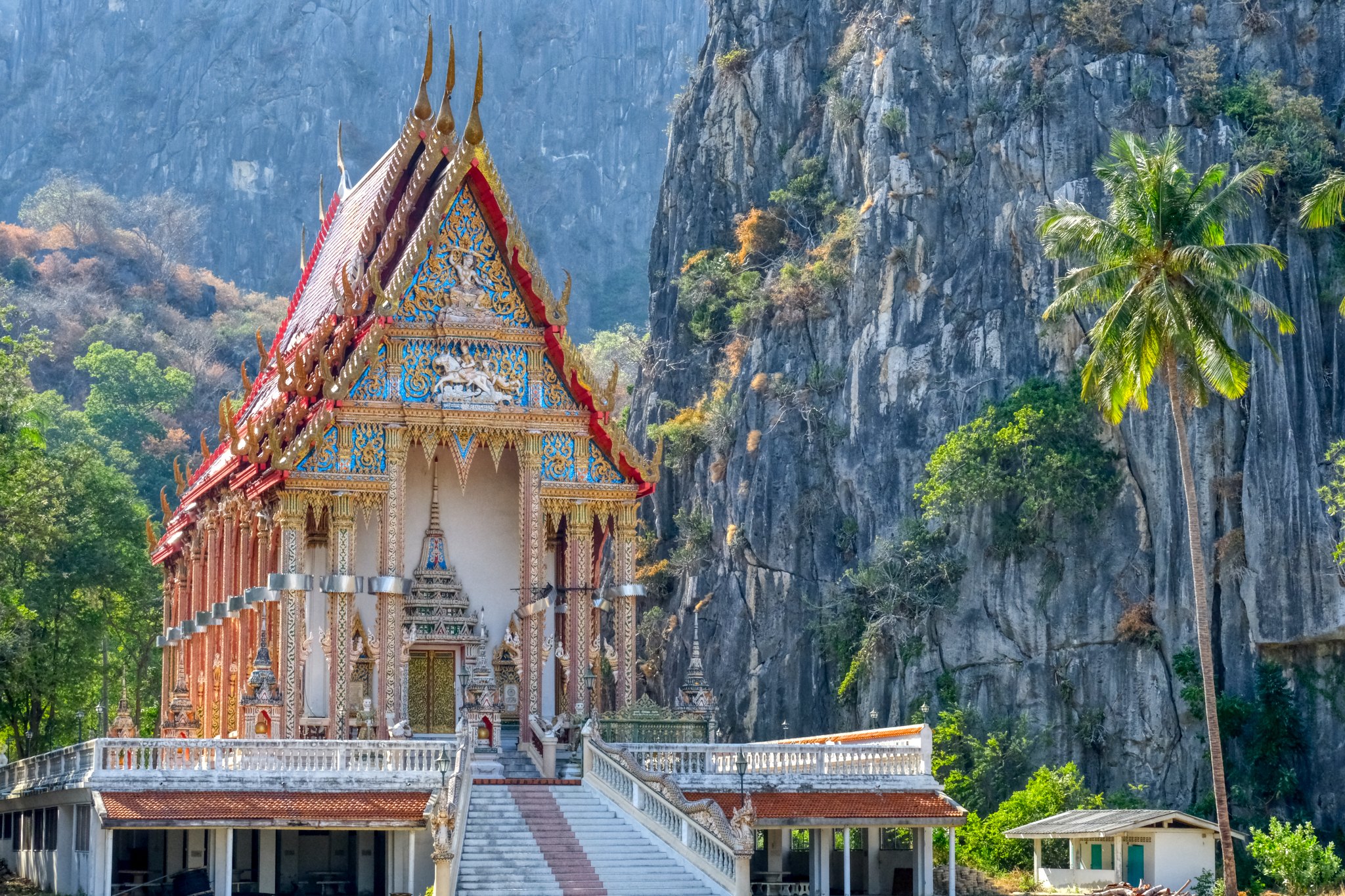 It's always great to have visitors from abroad come to Thailand . . . I get to take day trips out and about . . . usually to places I have never been, so we can explore together.
It's always great to have visitors from abroad come to Thailand . . . I get to take day trips out and about . . . usually to places I have never been, so we can explore together.
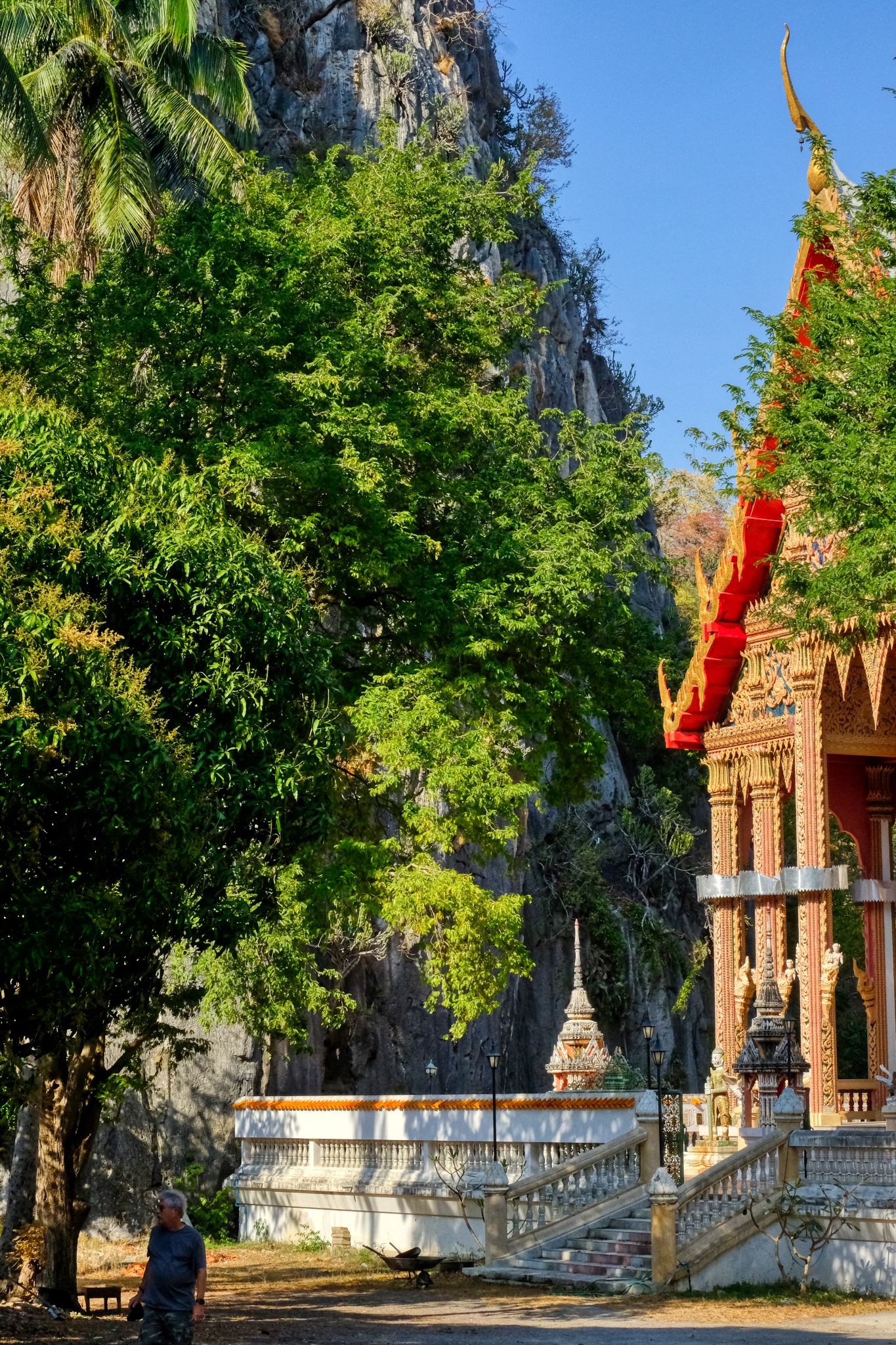 This Buddhist temple (wat) up against steep cliffs is one of my favorites. I pass it often when I am down Hua Hin way . . . but decided to stop and take a look again. Glad we did.
This Buddhist temple (wat) up against steep cliffs is one of my favorites. I pass it often when I am down Hua Hin way . . . but decided to stop and take a look again. Glad we did.

Such a lovely wat . . . looks like they are going to assemble a new giant Buddha image soon.
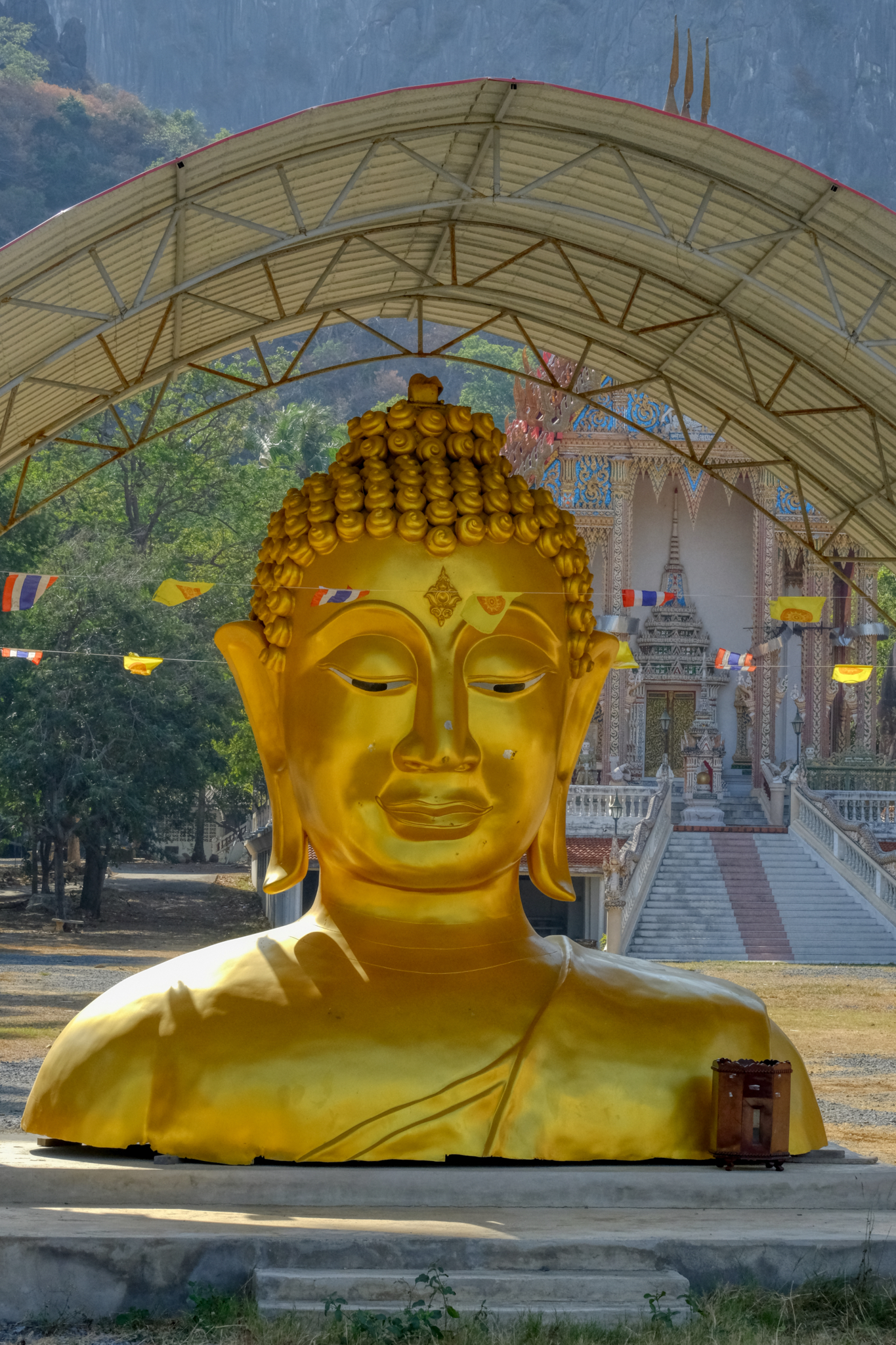
Beautiful workmanship . . . .
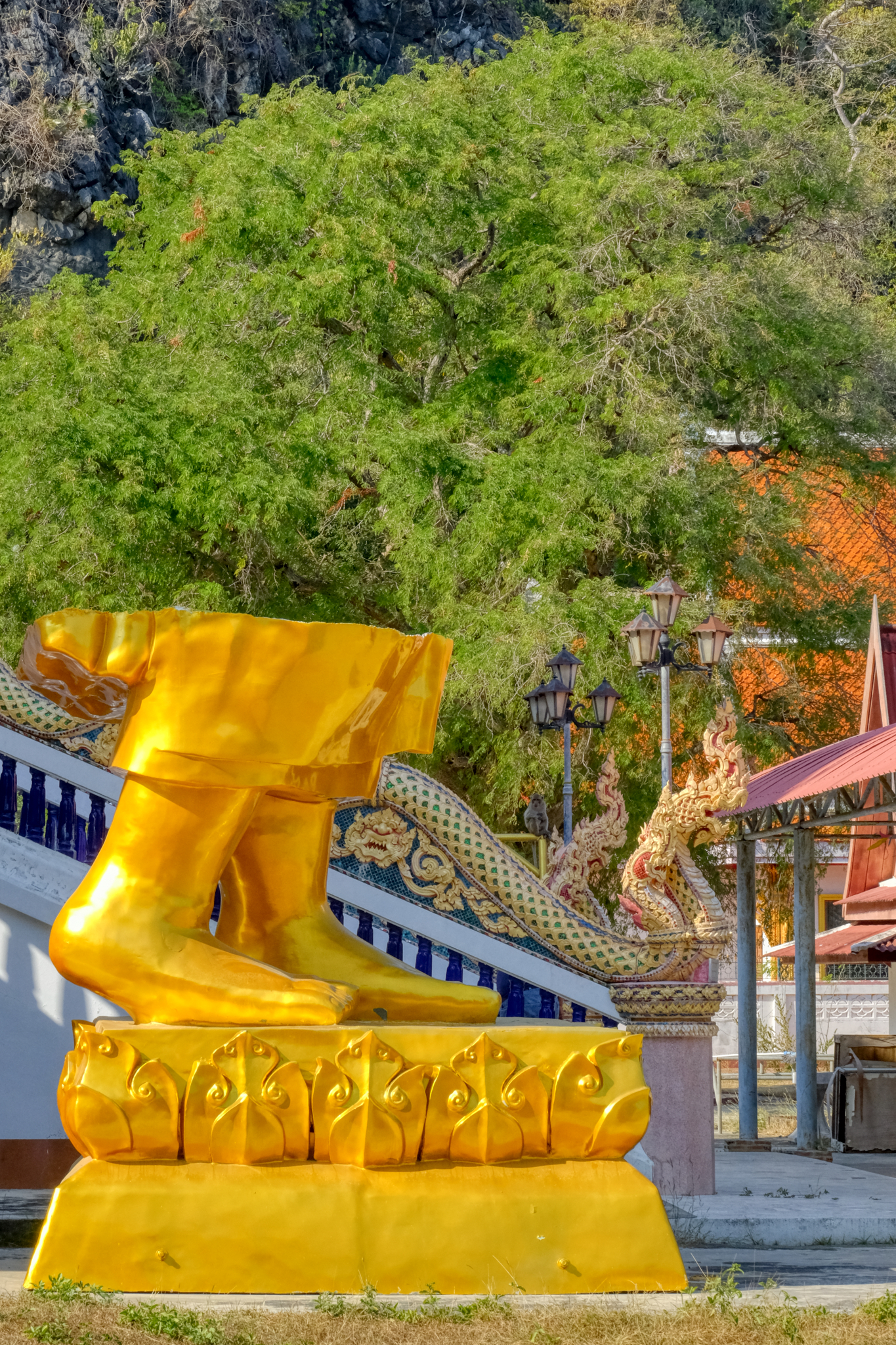
Ah! Looks like a standing Buddha image going up.
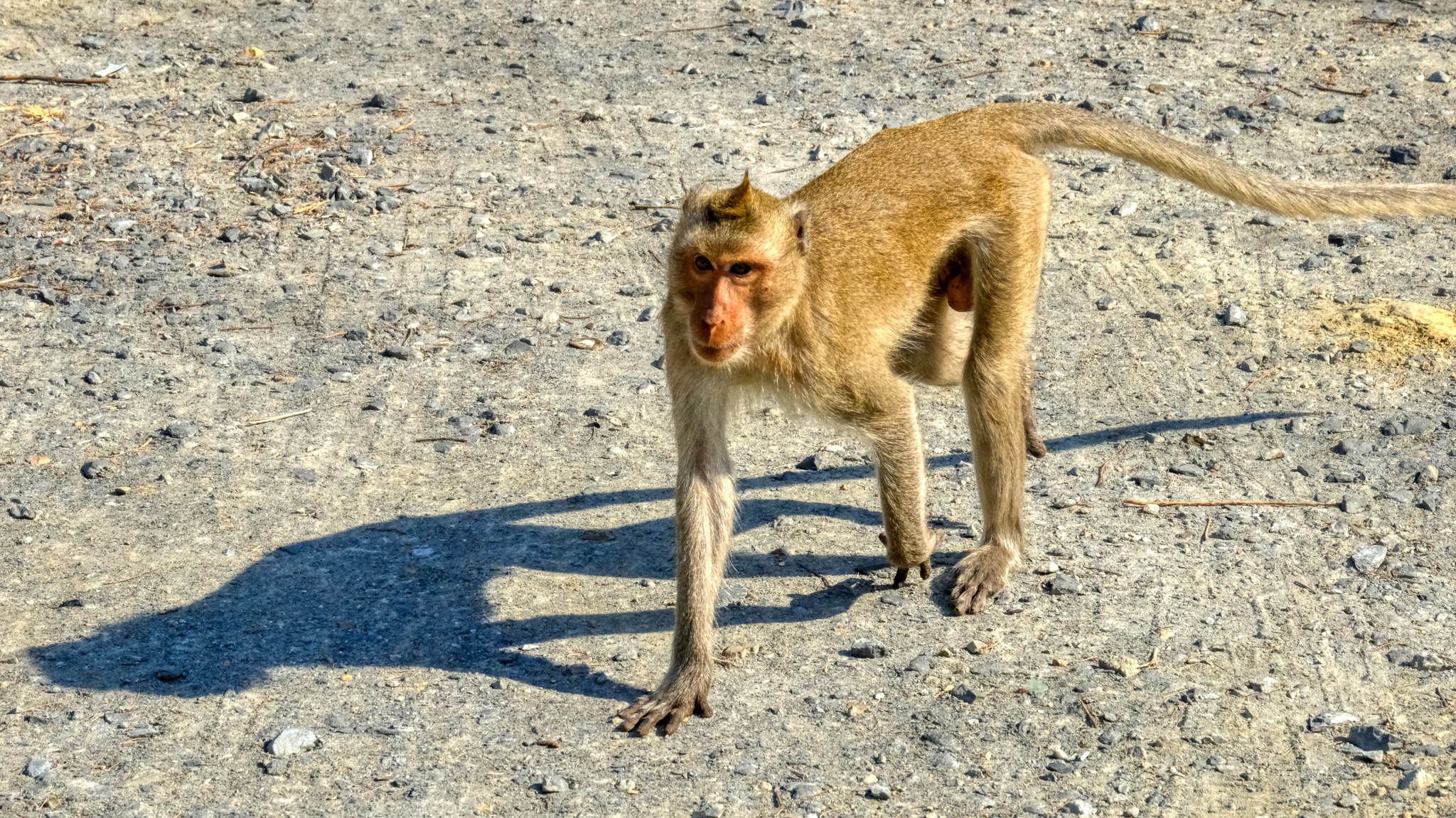 This such an interesting wat . . . lots to see here . . . including a pack of very curious monkeys.
This such an interesting wat . . . lots to see here . . . including a pack of very curious monkeys.
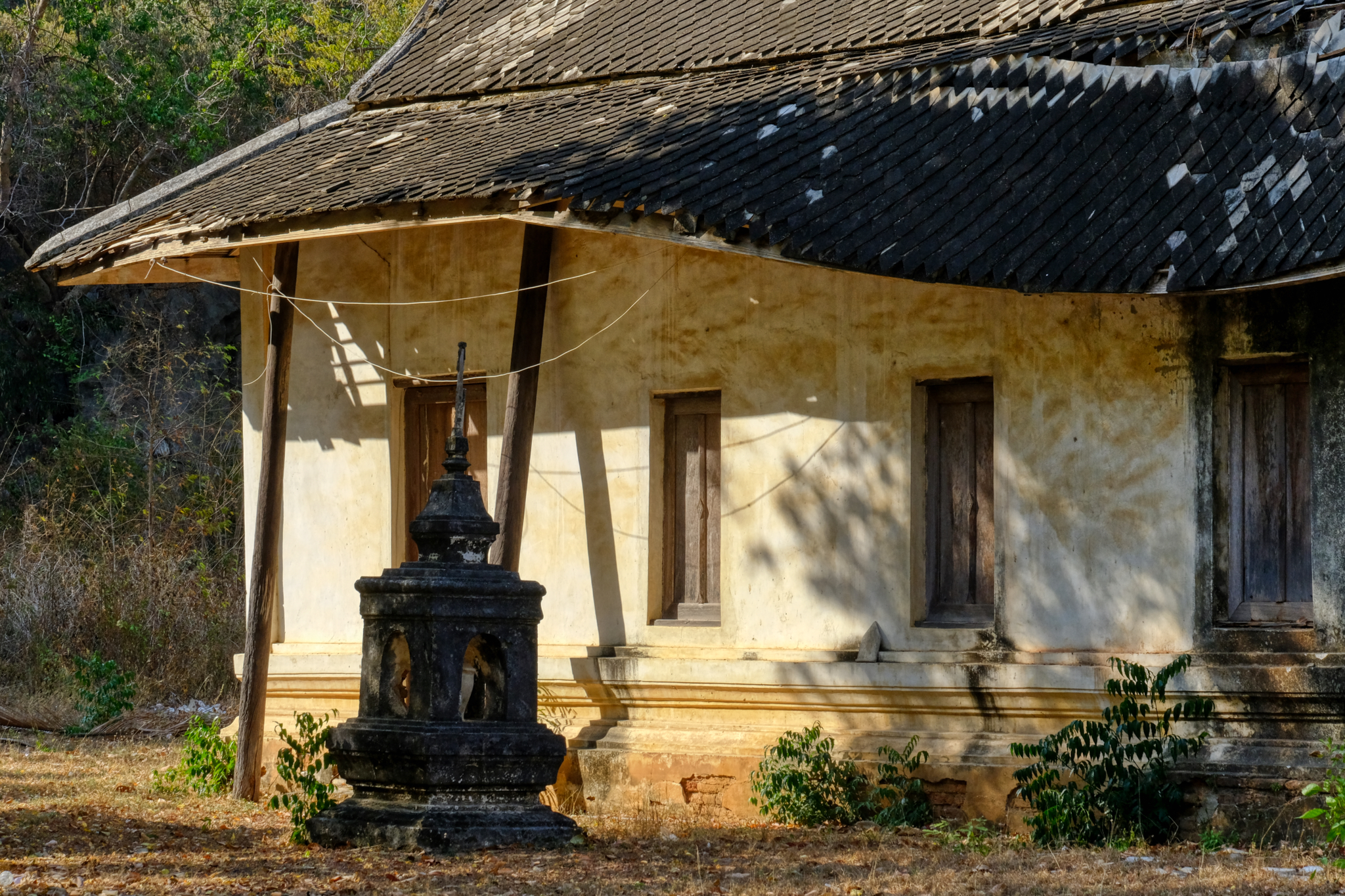 As is often the case at Thai wats, the new buildings are built in front of the older, perhaps original temple structures.
As is often the case at Thai wats, the new buildings are built in front of the older, perhaps original temple structures.
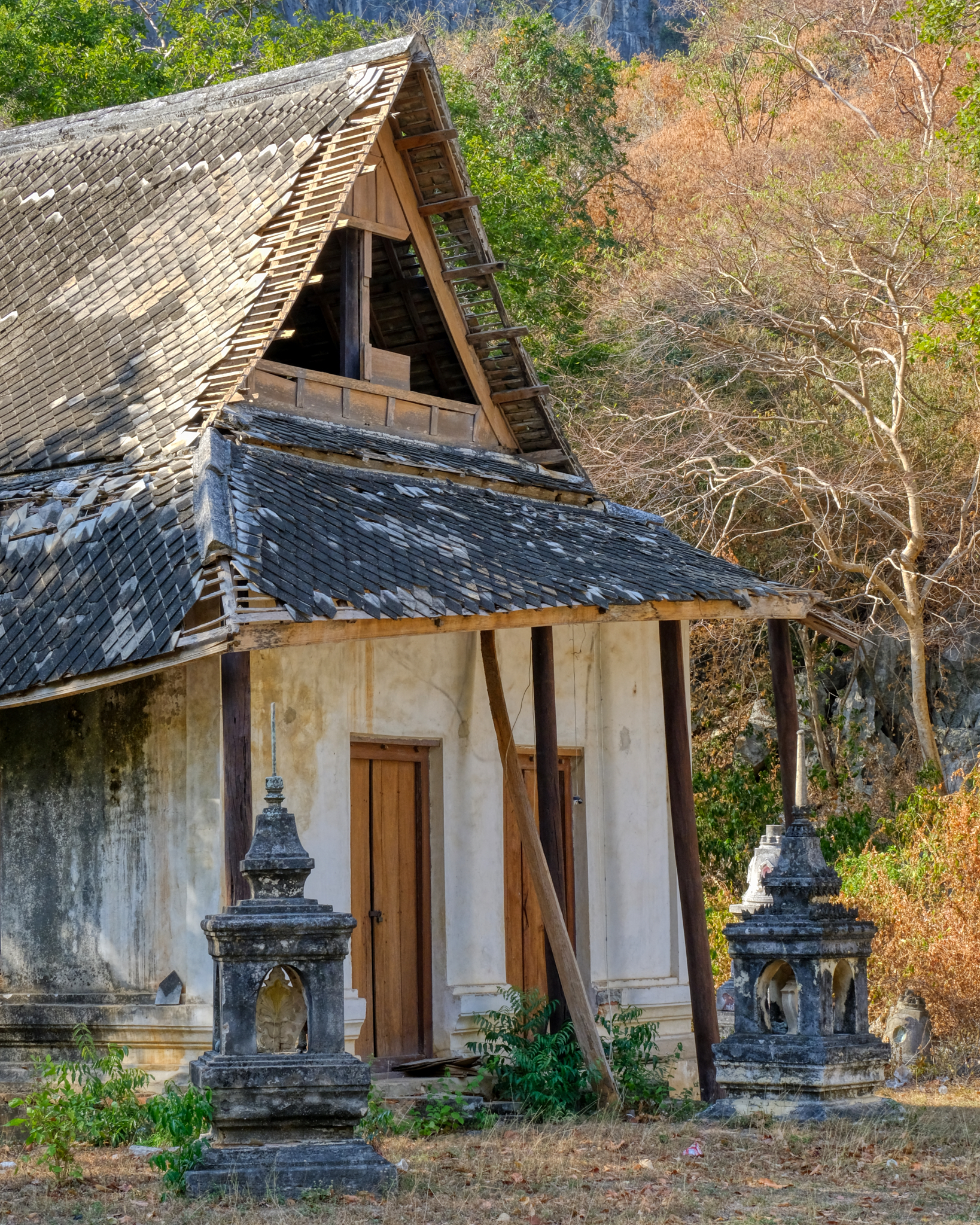 The patina!
The patina!
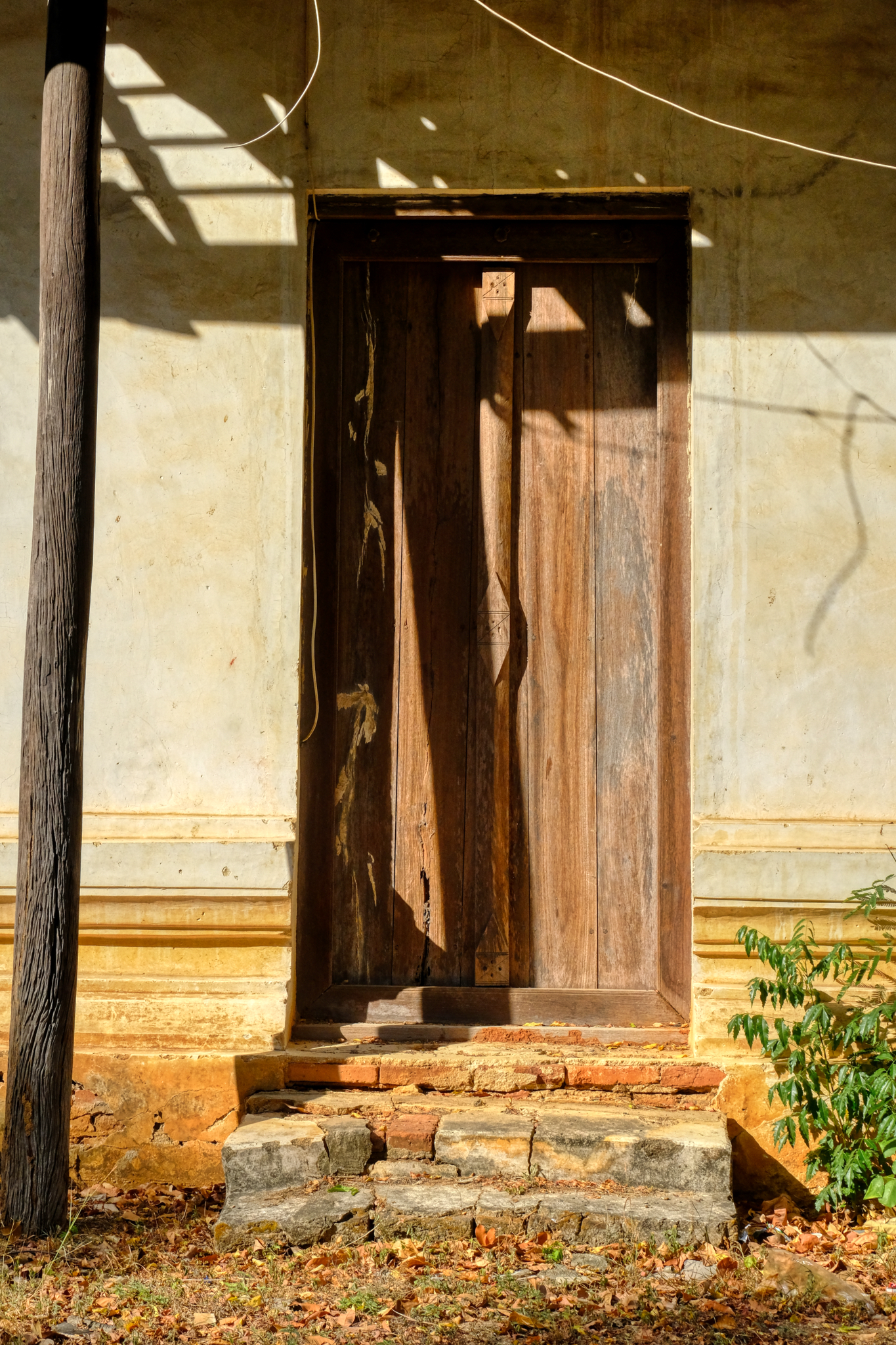 Lovely textures in the filtered afternoon light.
Lovely textures in the filtered afternoon light.
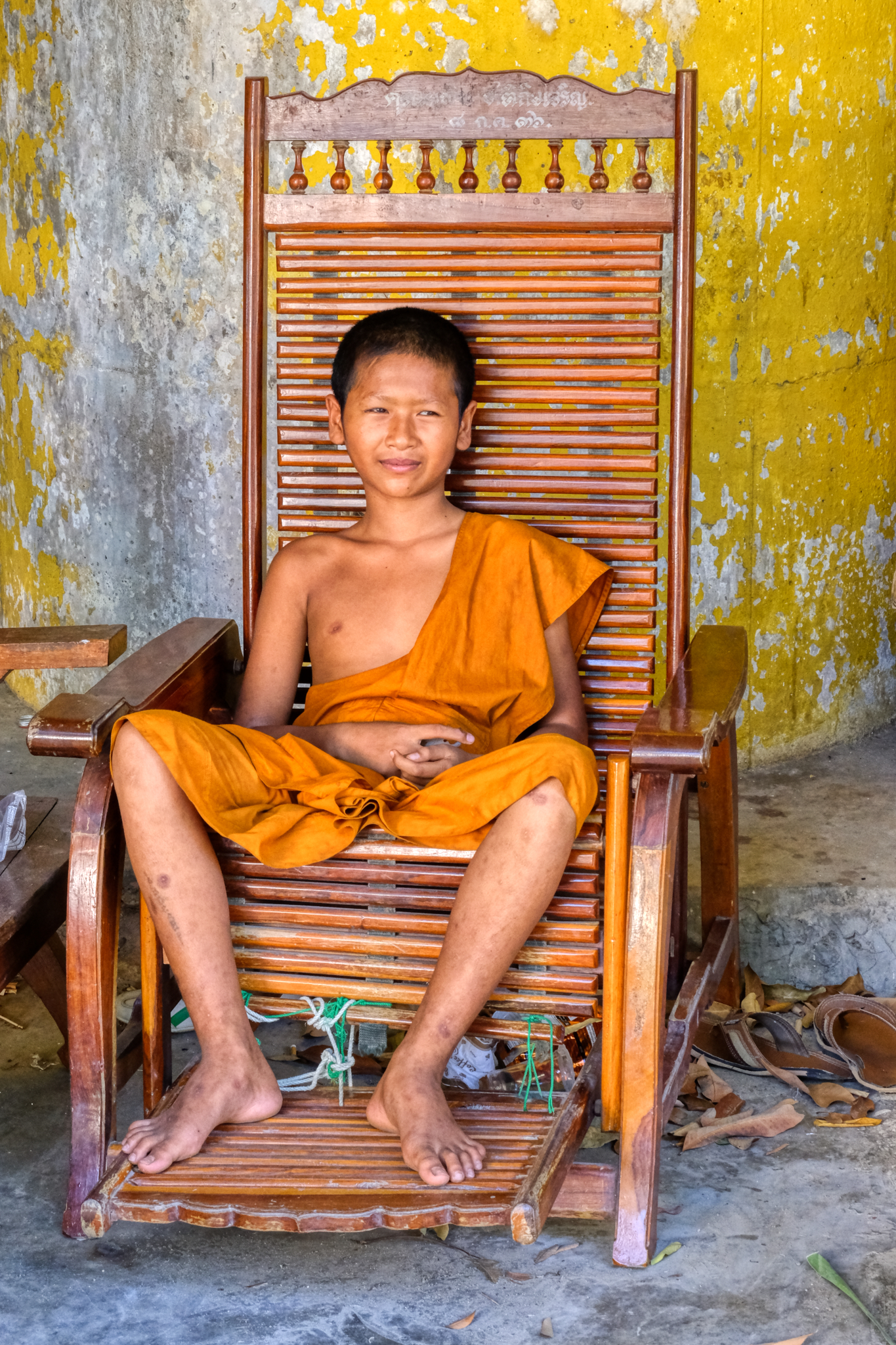 I was surprised to see this young monk! There weren't any other monks at this wat. He kindly gave me permission for so photos. I made sure he saw me put money in the donation box.
I was surprised to see this young monk! There weren't any other monks at this wat. He kindly gave me permission for so photos. I made sure he saw me put money in the donation box.
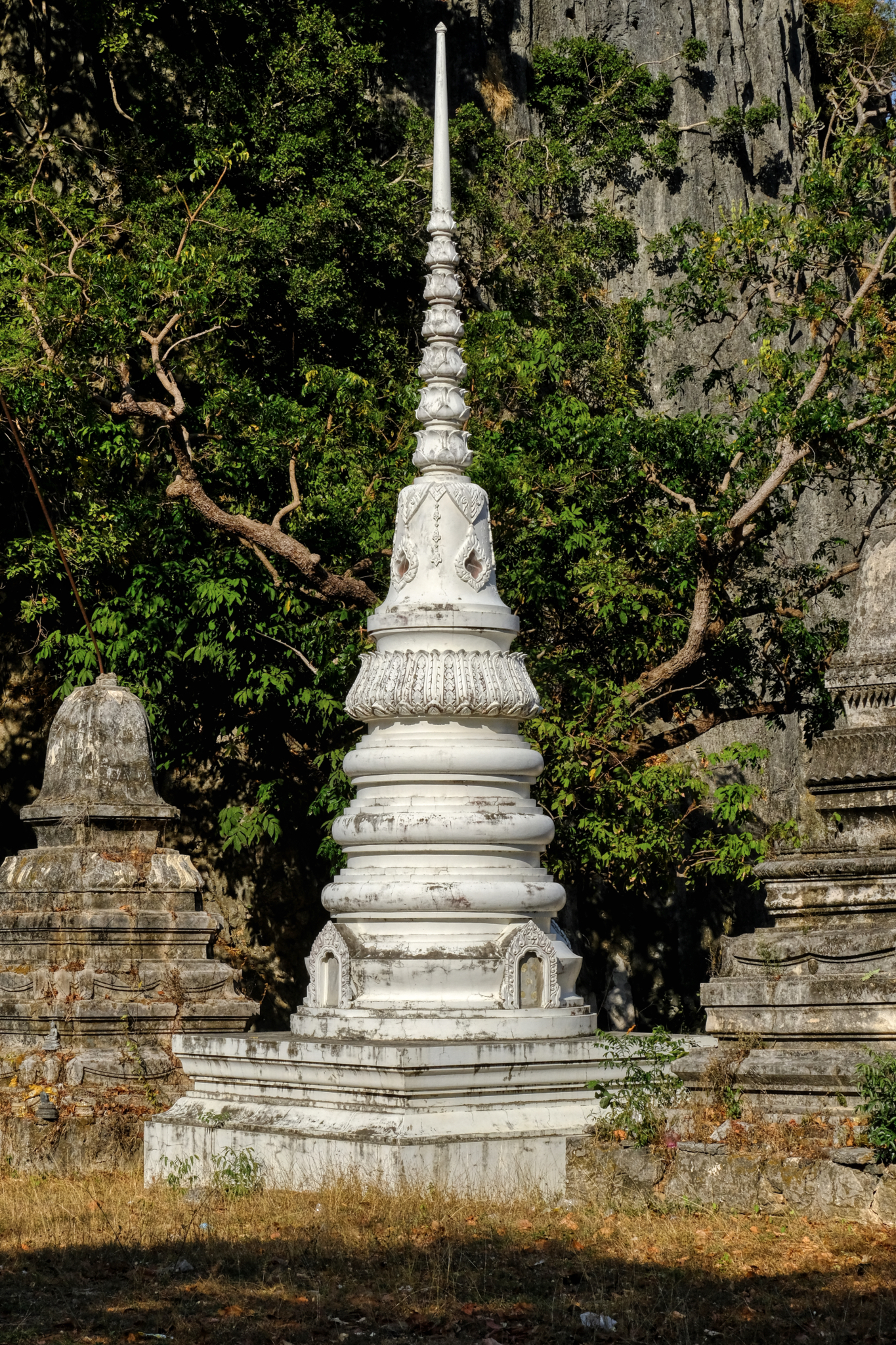 A large, old chedi on the temple grounds. Perhaps a previous revered head monk's final resting place.
A large, old chedi on the temple grounds. Perhaps a previous revered head monk's final resting place.
 One last look at this fantastic cliff side wat.
One last look at this fantastic cliff side wat.
----------------------------------------------------------------
Wat Huai Sai Tai Temple
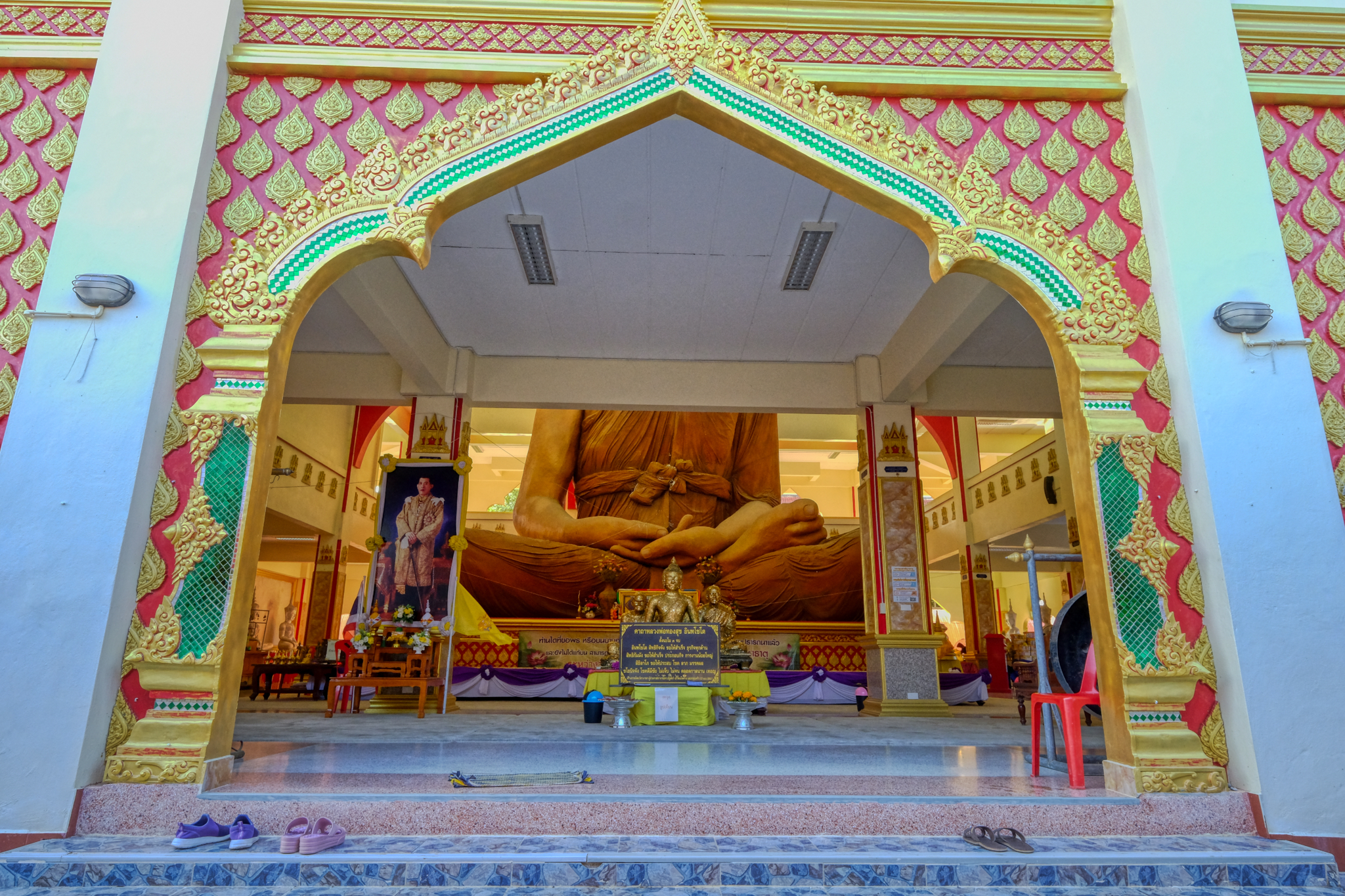 On the way back from our hilltop chedi, I wanted to stop and show my friend the Colossus of Hua Hin at Wat Hui Sai Tai!
On the way back from our hilltop chedi, I wanted to stop and show my friend the Colossus of Hua Hin at Wat Hui Sai Tai!
 Such a lovely and strange place . . .
Such a lovely and strange place . . .
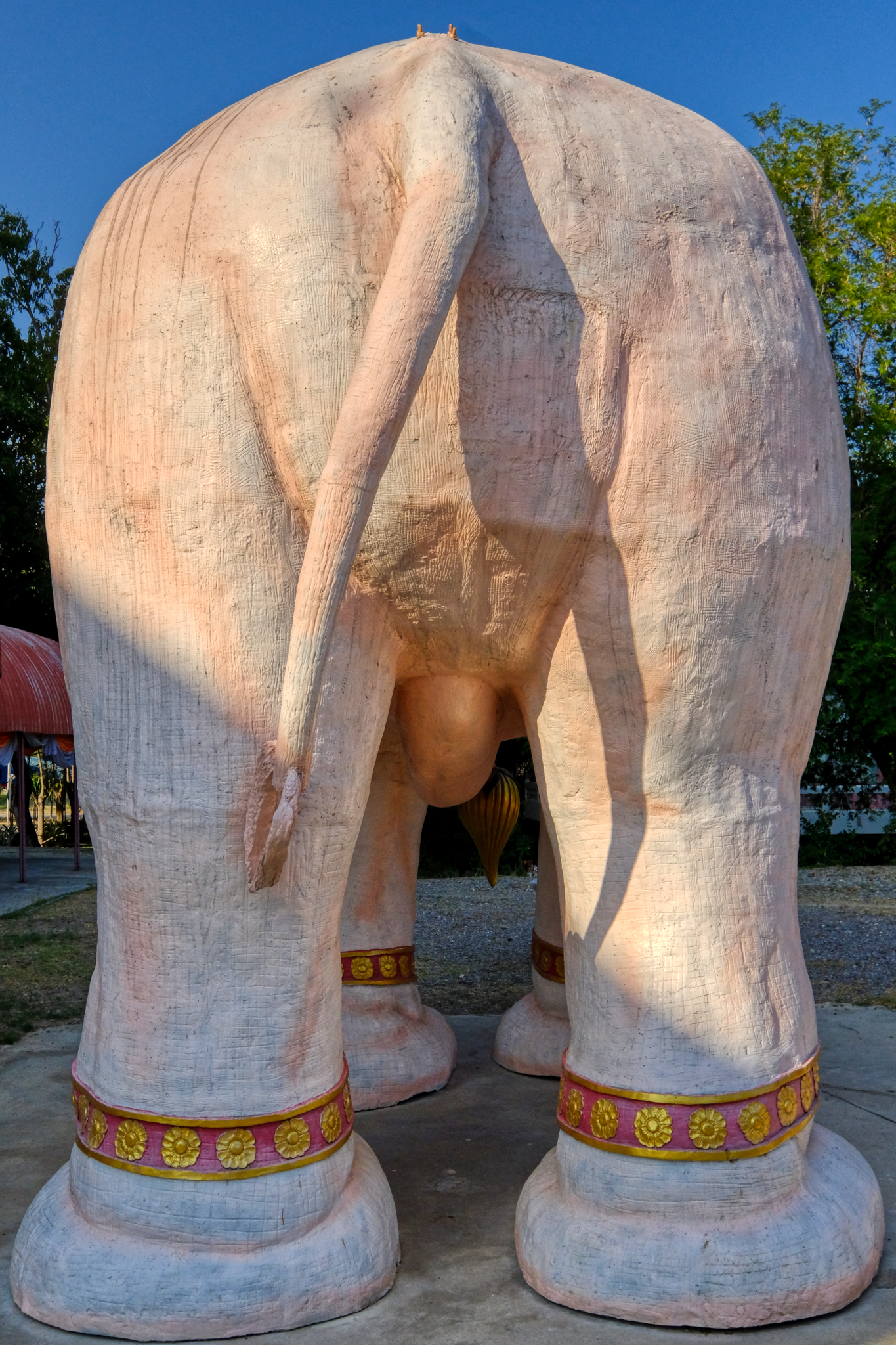 Yep . . . a cement elephant's butt.
Yep . . . a cement elephant's butt.
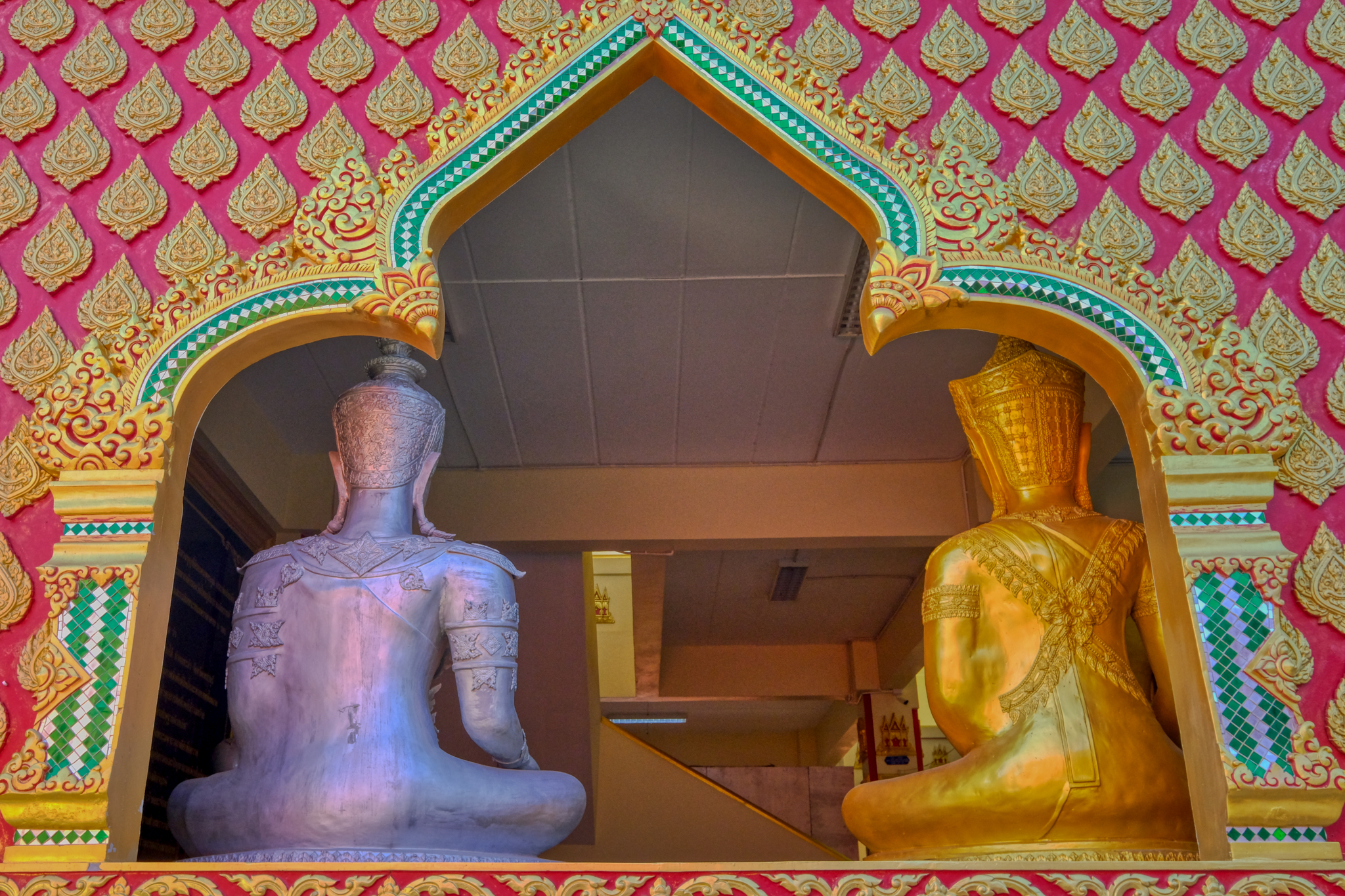 The spaces and surfaces around the outside of the temple were beautifully decorated.
The spaces and surfaces around the outside of the temple were beautifully decorated.
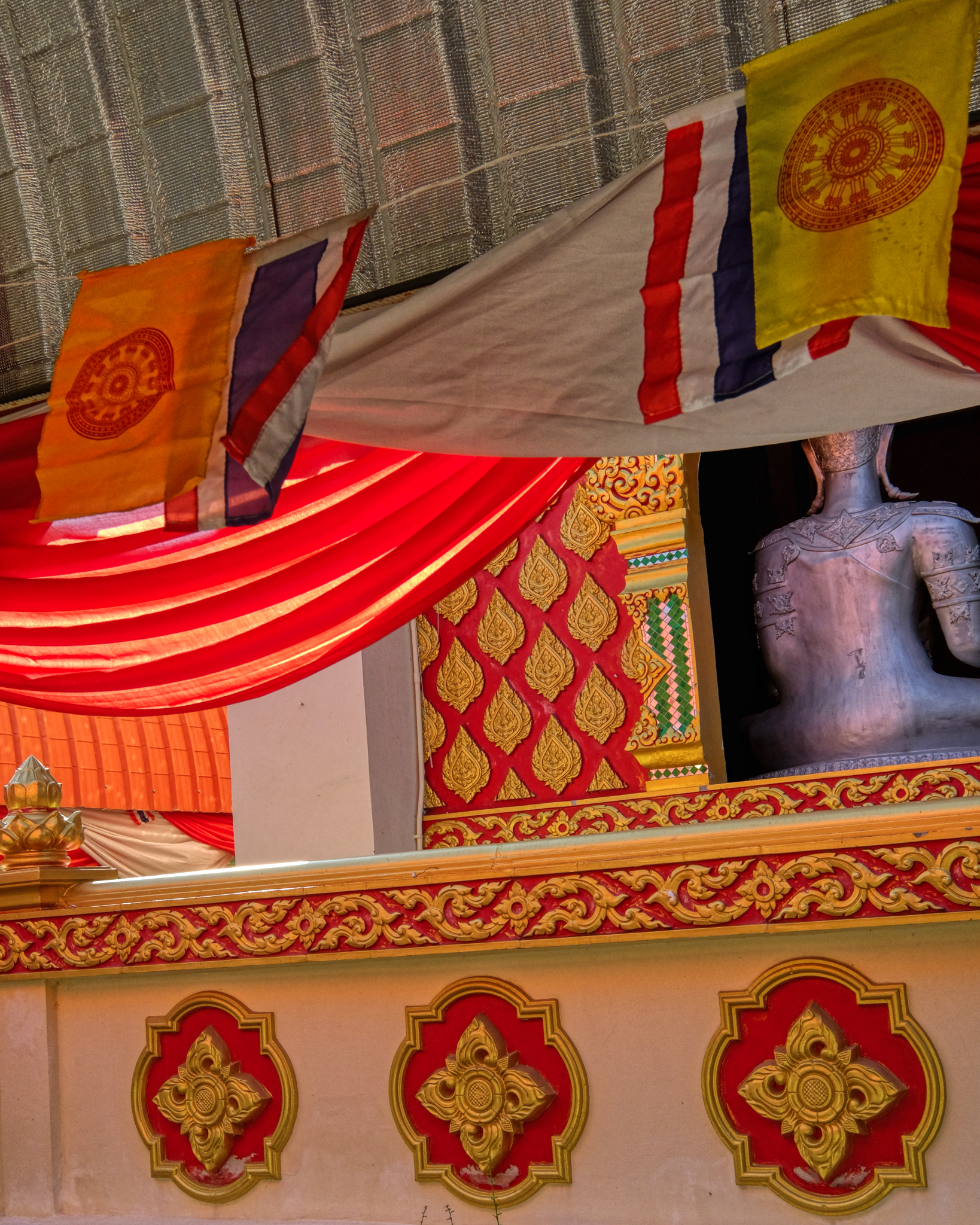 The exterior details were aesthetically very pleasing.
The exterior details were aesthetically very pleasing.
 Of course, we had not come to just admire the exterior decor . . . it was what was inside that attracted us . . .
Of course, we had not come to just admire the exterior decor . . . it was what was inside that attracted us . . .
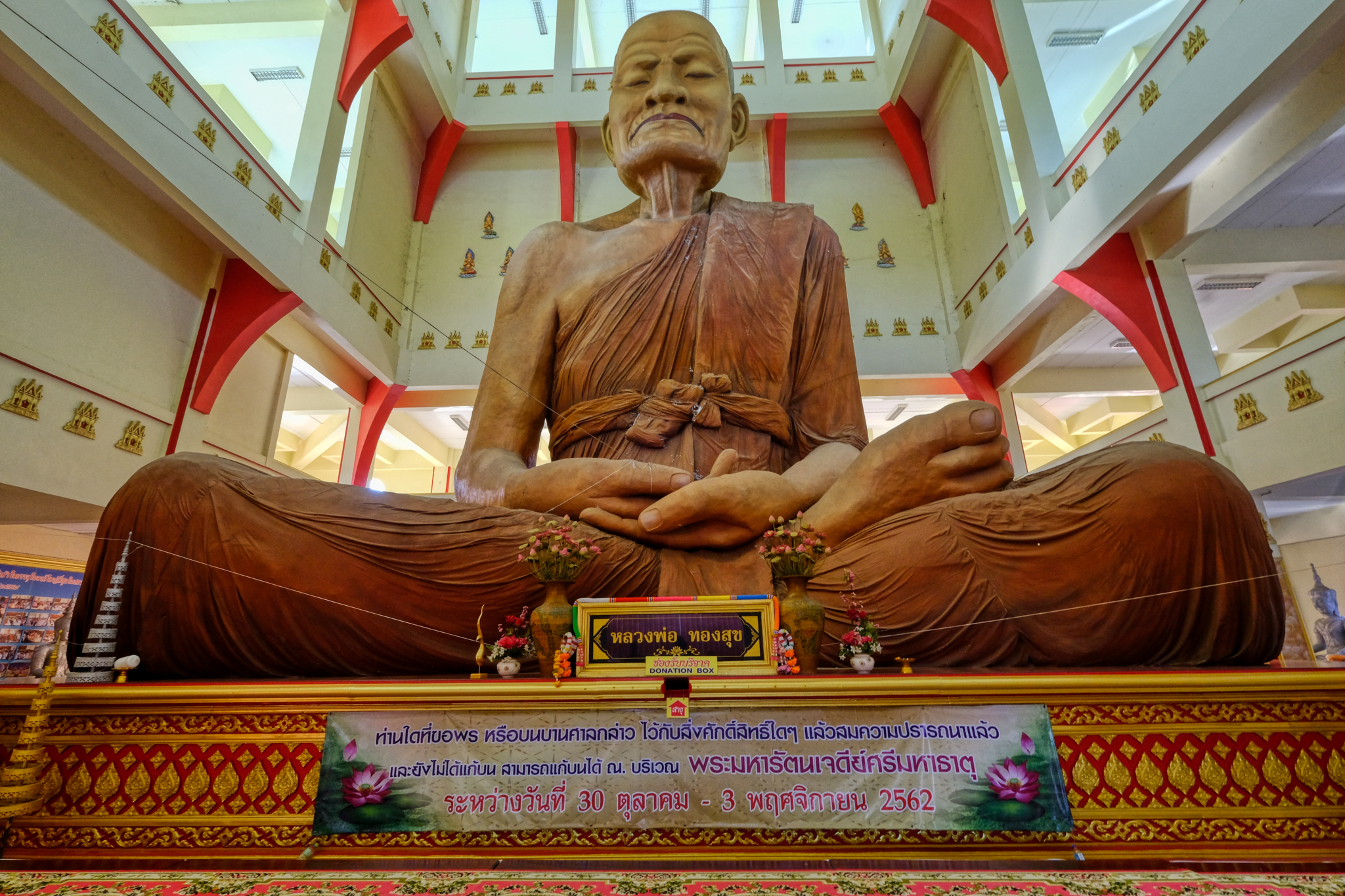 What attracted us was the colossal statue of the venerated monk, Luong Phor Thongsuk!
What attracted us was the colossal statue of the venerated monk, Luong Phor Thongsuk!
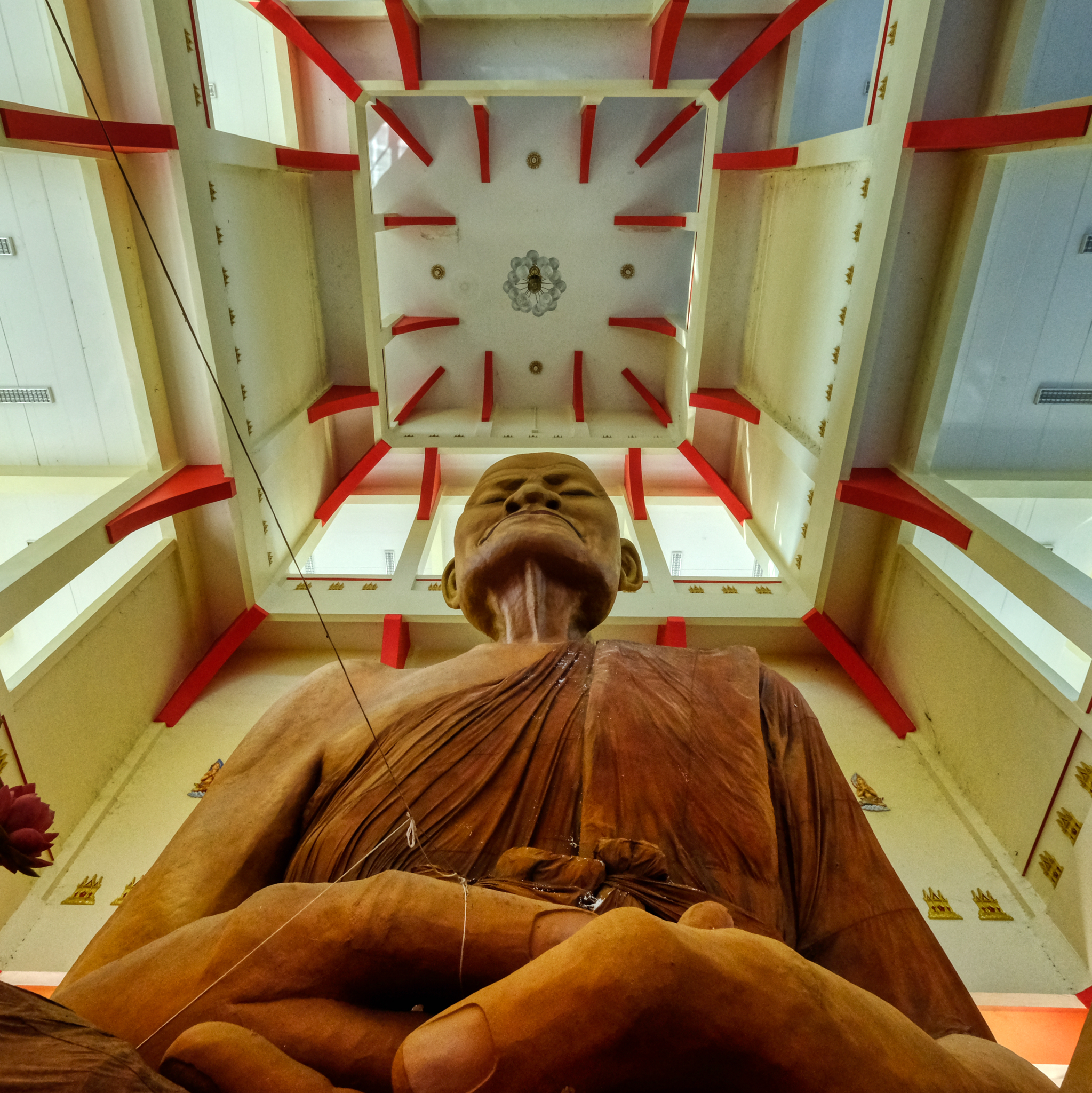 The giant Luang Phor Thongsuk in all his revered glory.
The giant Luang Phor Thongsuk in all his revered glory.
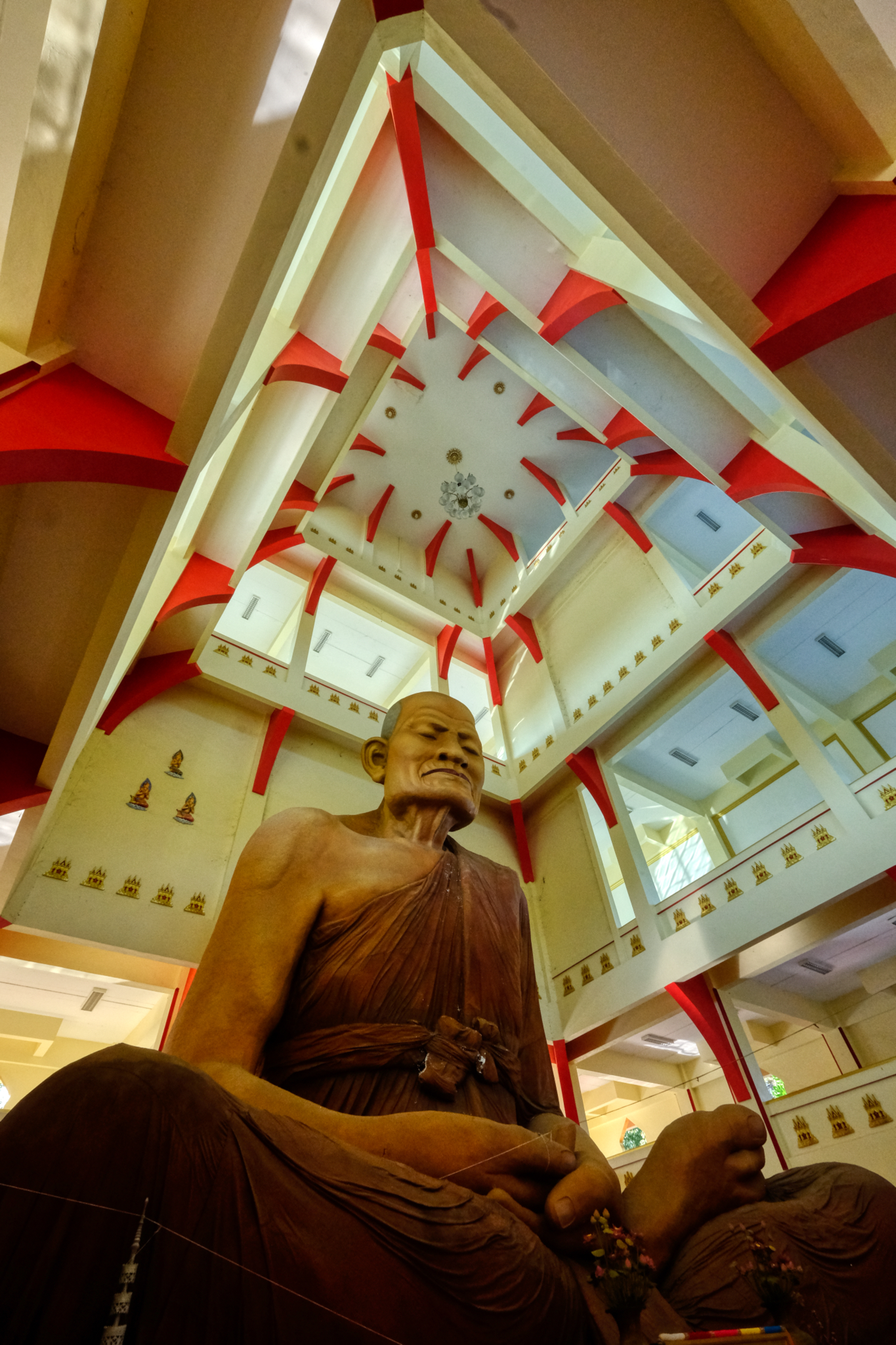 The scale of this statue is incredible!
The scale of this statue is incredible!
 During our short visit here, many people came to pay their respects.
During our short visit here, many people came to pay their respects.
 Our last look at the colossus!
Our last look at the colossus!
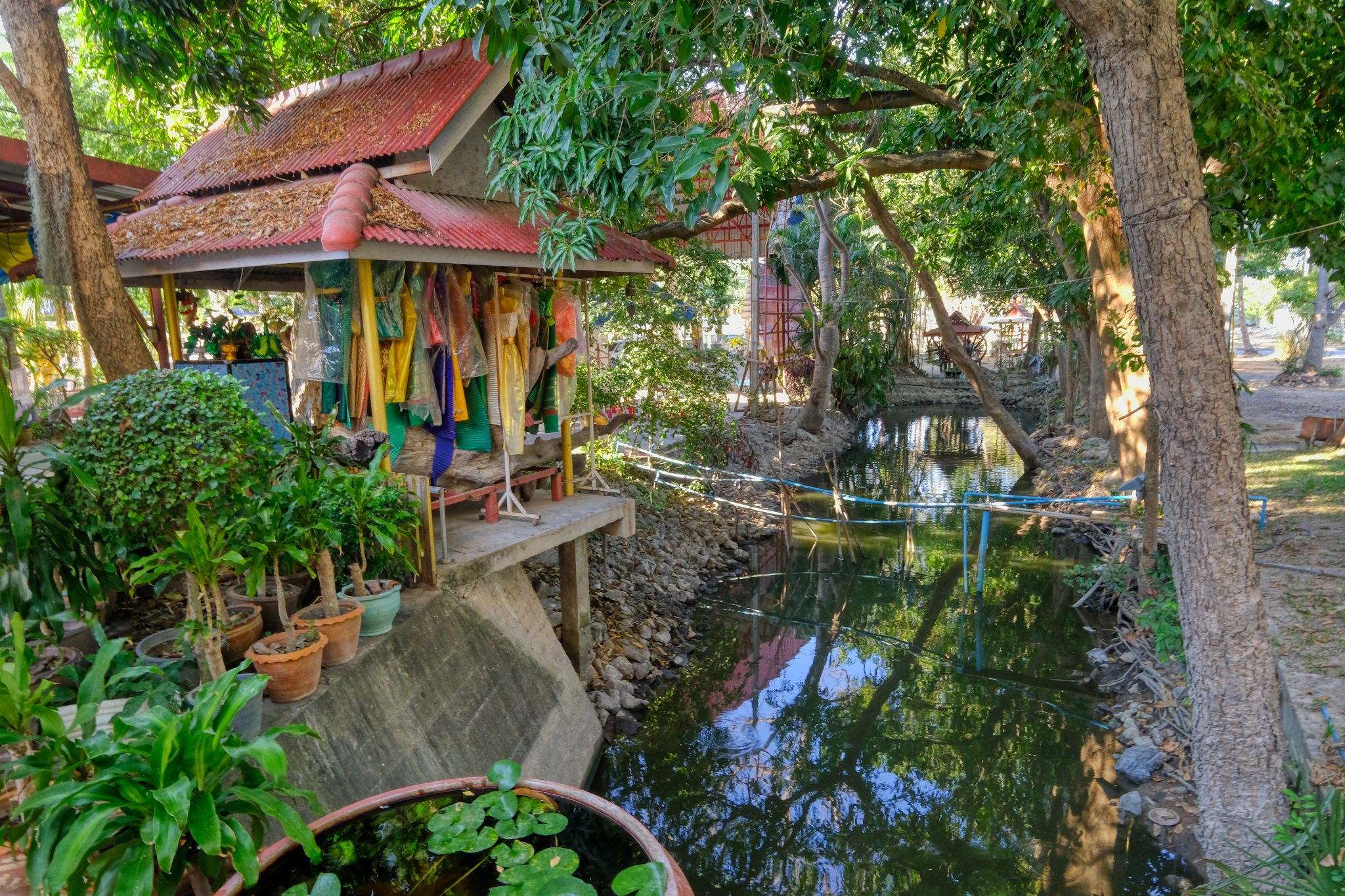 A marvelous spirit house on the grounds of Wat Hui Sai Tai.
A marvelous spirit house on the grounds of Wat Hui Sai Tai.
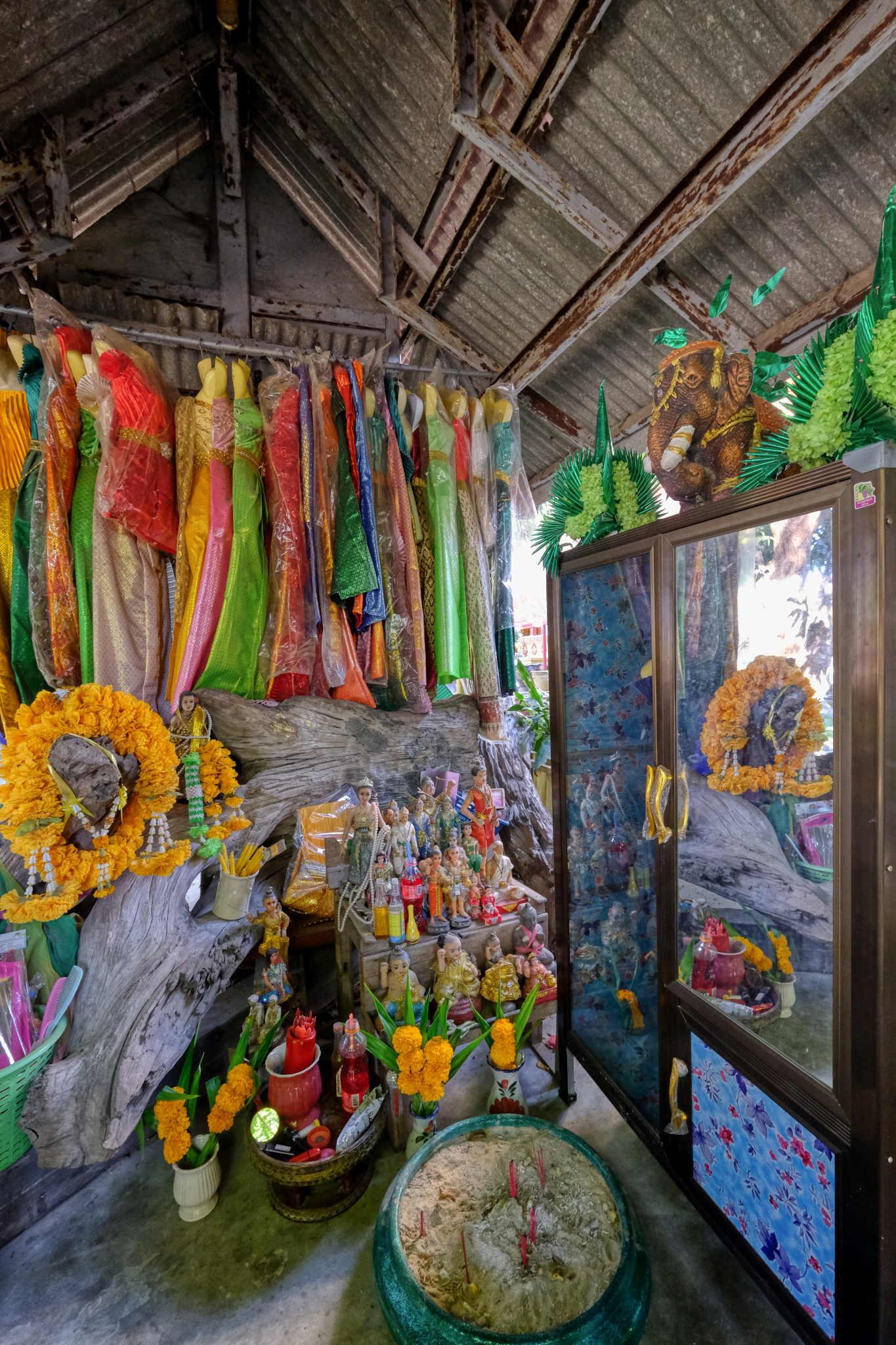 The inside of the wat spirit house . . . very well tended by the pilgrims.
The inside of the wat spirit house . . . very well tended by the pilgrims.
 Beauty everywhere we pointed our cameras . . .
Beauty everywhere we pointed our cameras . . .
-----------------------------------------------------
An Old Fishing Village
 We headed up the road to our next destination, a beach about 20km away . . . but a quick glance on the GPS map showed a small village on an inlet . . . maybe a fishing village? YES!
We headed up the road to our next destination, a beach about 20km away . . . but a quick glance on the GPS map showed a small village on an inlet . . . maybe a fishing village? YES!
 It was a very old fishing village . . . with a few very photogenic derelict old boats still dockside.
It was a very old fishing village . . . with a few very photogenic derelict old boats still dockside.
 Did I say "old boat and old pier"? I meant to say "dilapidated pier and ghost ship"!
Did I say "old boat and old pier"? I meant to say "dilapidated pier and ghost ship"!
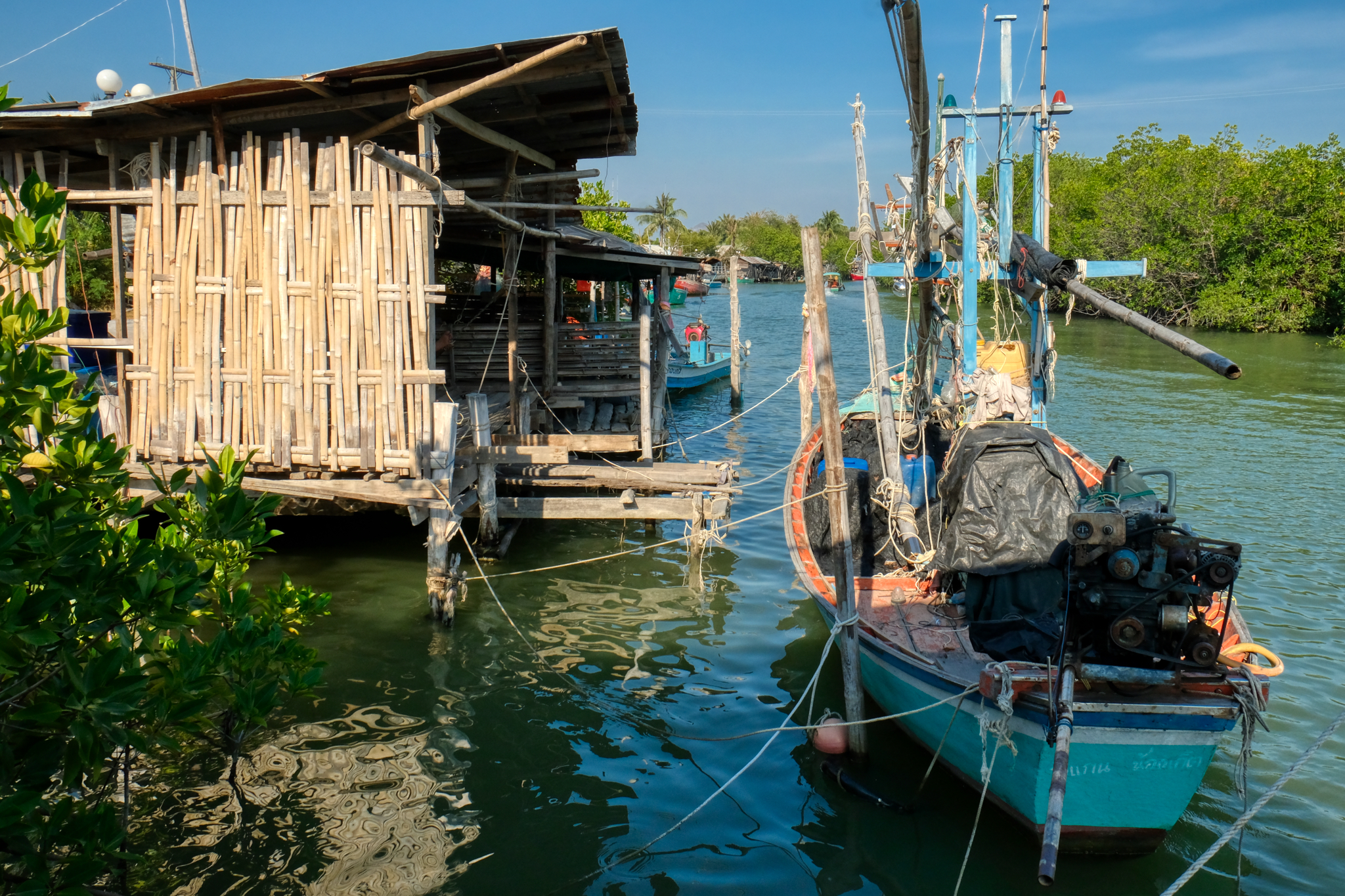 There were newer and older parts of this fishing village.
There were newer and older parts of this fishing village.
 The village was very quiet this afternoon. These boats are rigged to catch squid . . . at night.
The village was very quiet this afternoon. These boats are rigged to catch squid . . . at night.
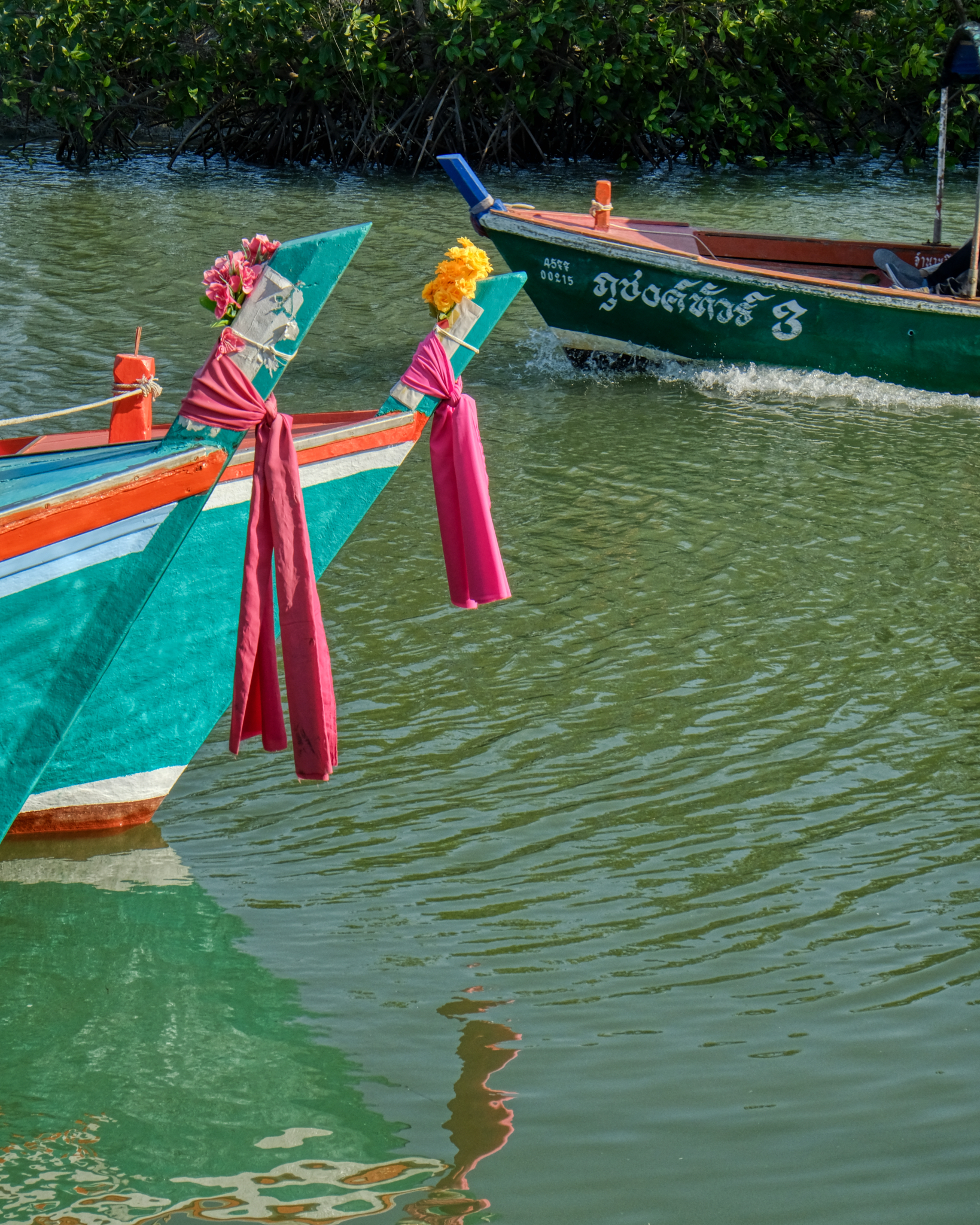 I love how the Thai fishermen decorate their boats . . . with these colorful votive blessings.
I love how the Thai fishermen decorate their boats . . . with these colorful votive blessings.
 A village restaurateur. The large pots catch and hold rainwater.
A village restaurateur. The large pots catch and hold rainwater.
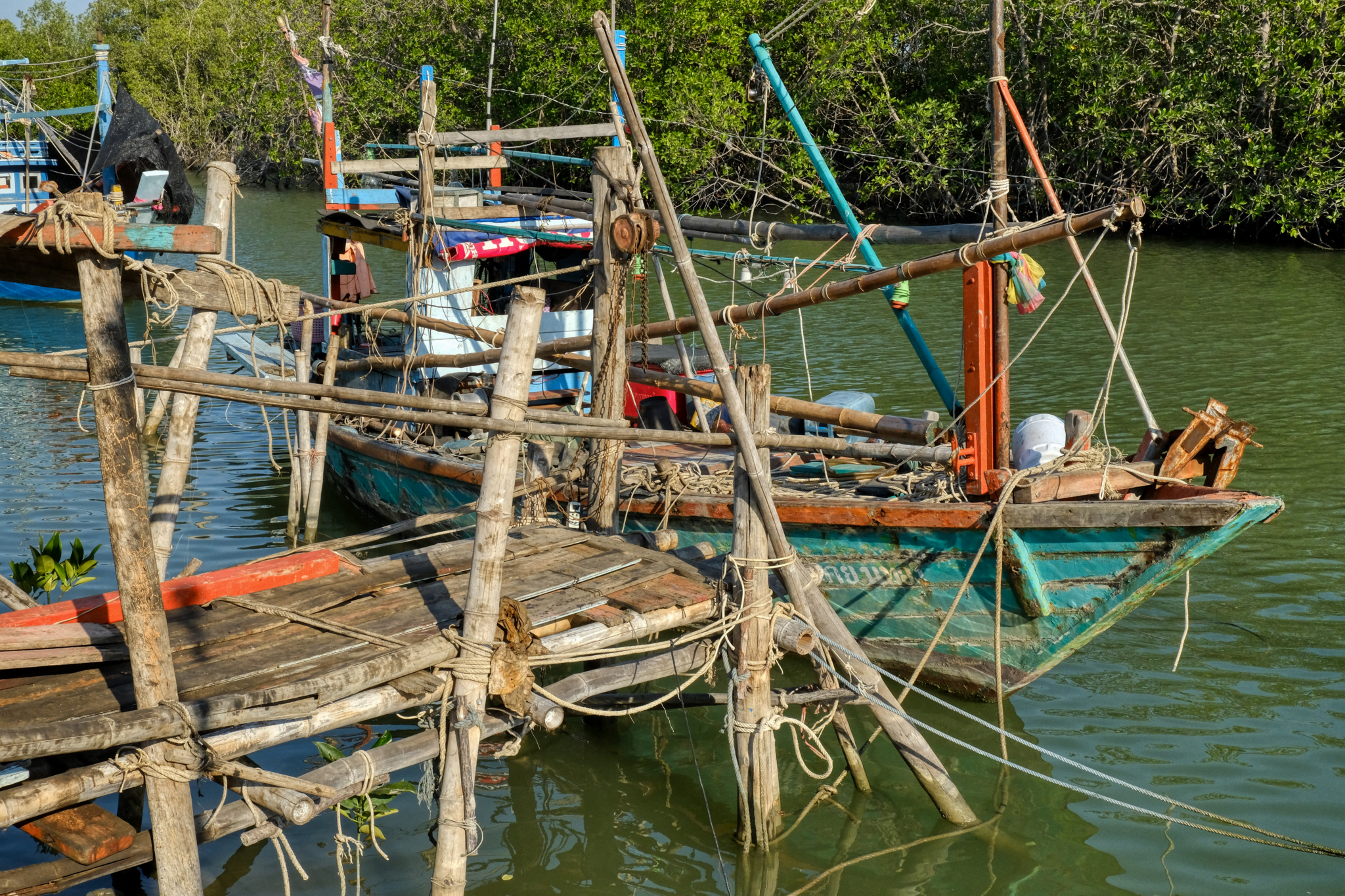 Such rich and complex images to capture here!
Such rich and complex images to capture here!
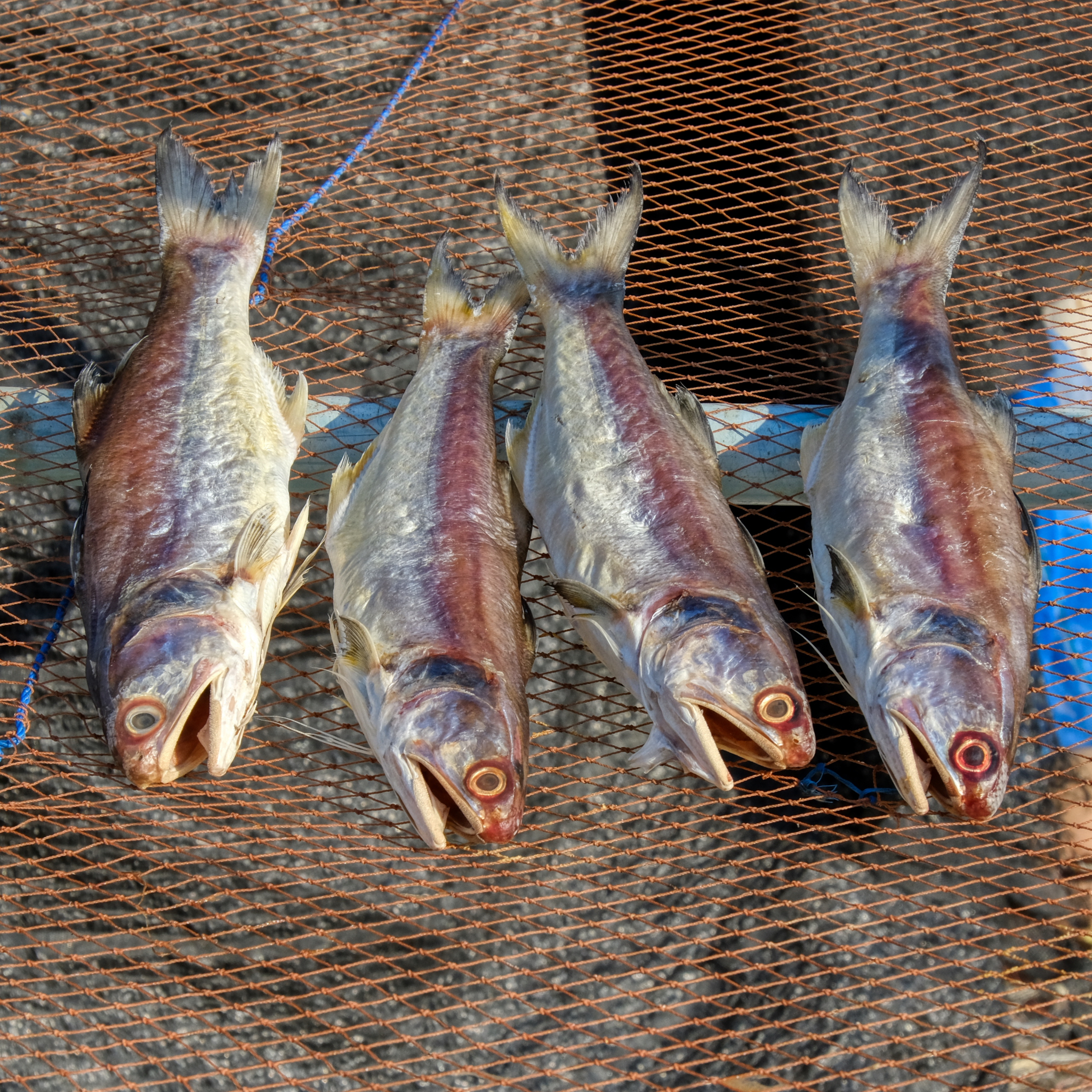 We saw this catch of the day in one of the fishermen's sheds.
We saw this catch of the day in one of the fishermen's sheds.
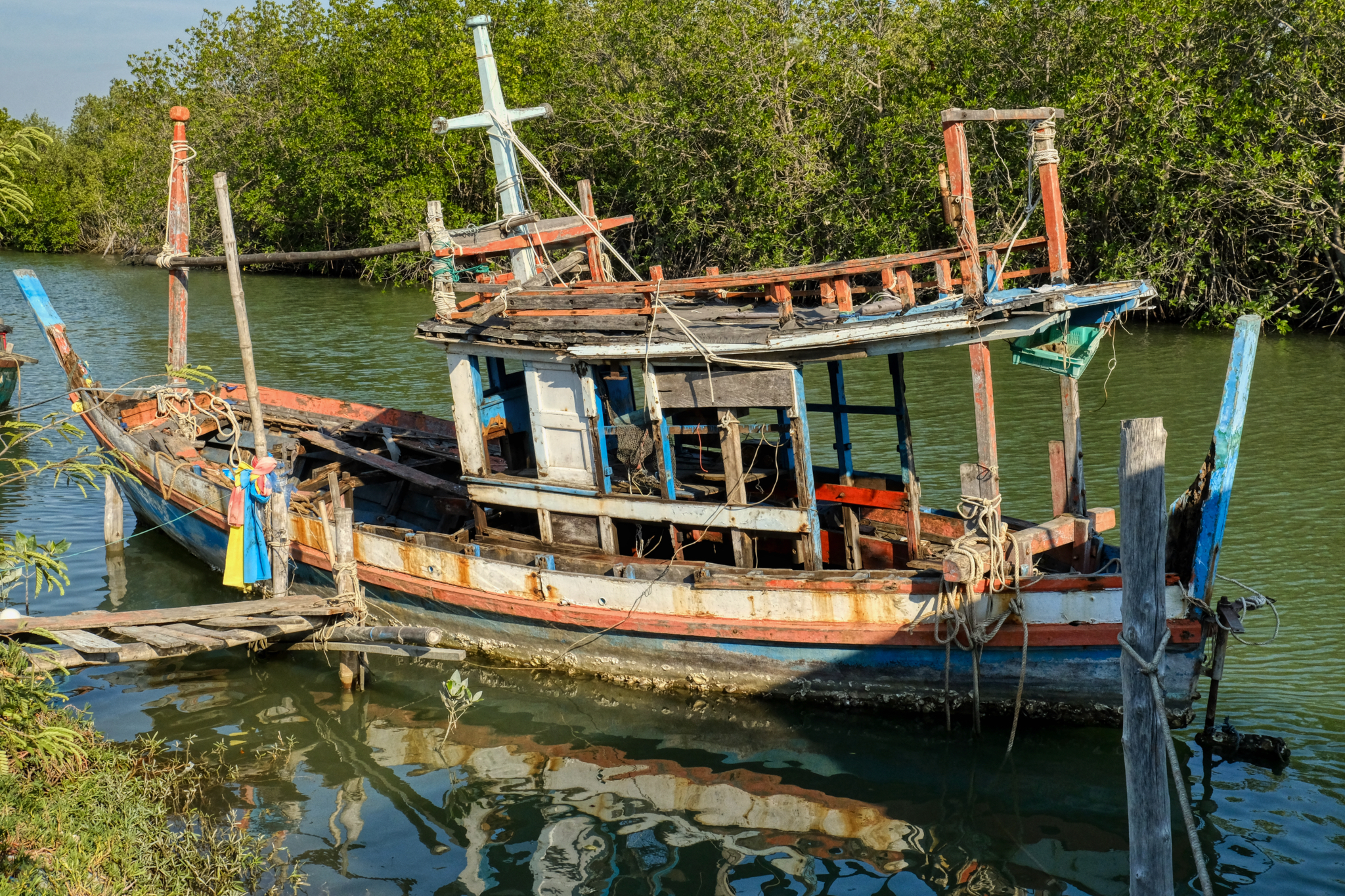 We could have stayed all day here . . . just taking photos . . . but there were other adventures in store for us on that day.
We could have stayed all day here . . . just taking photos . . . but there were other adventures in store for us on that day.
-------------------------------------------------
A Mangrove Forest Swamp Park
 Our next stop was the beautifully developed, and very educational, Pran Buri Forest Park and Nature Reserve.
Our next stop was the beautifully developed, and very educational, Pran Buri Forest Park and Nature Reserve.
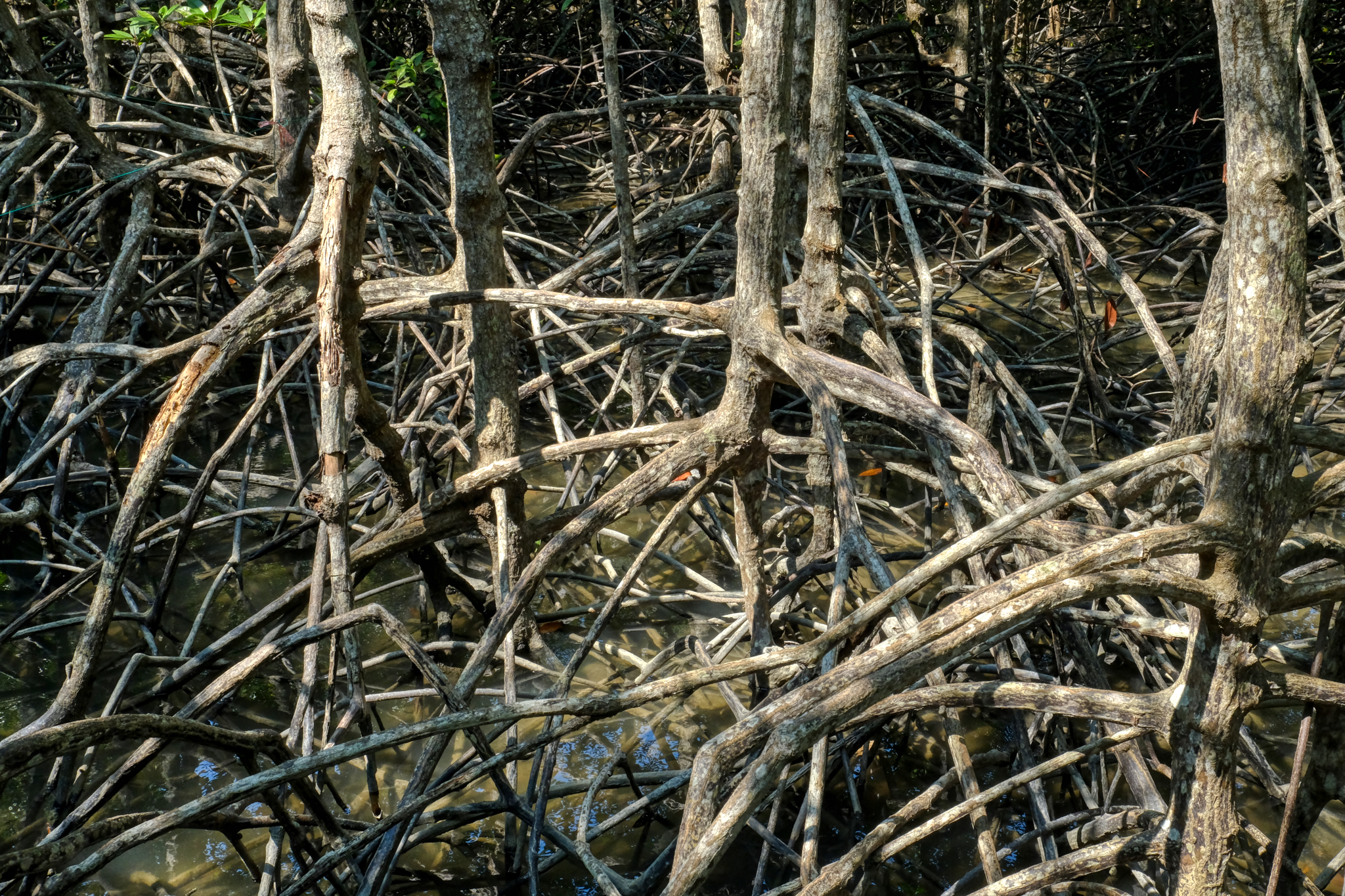 Mangrove forests are completely unique ecological environments.
Mangrove forests are completely unique ecological environments.
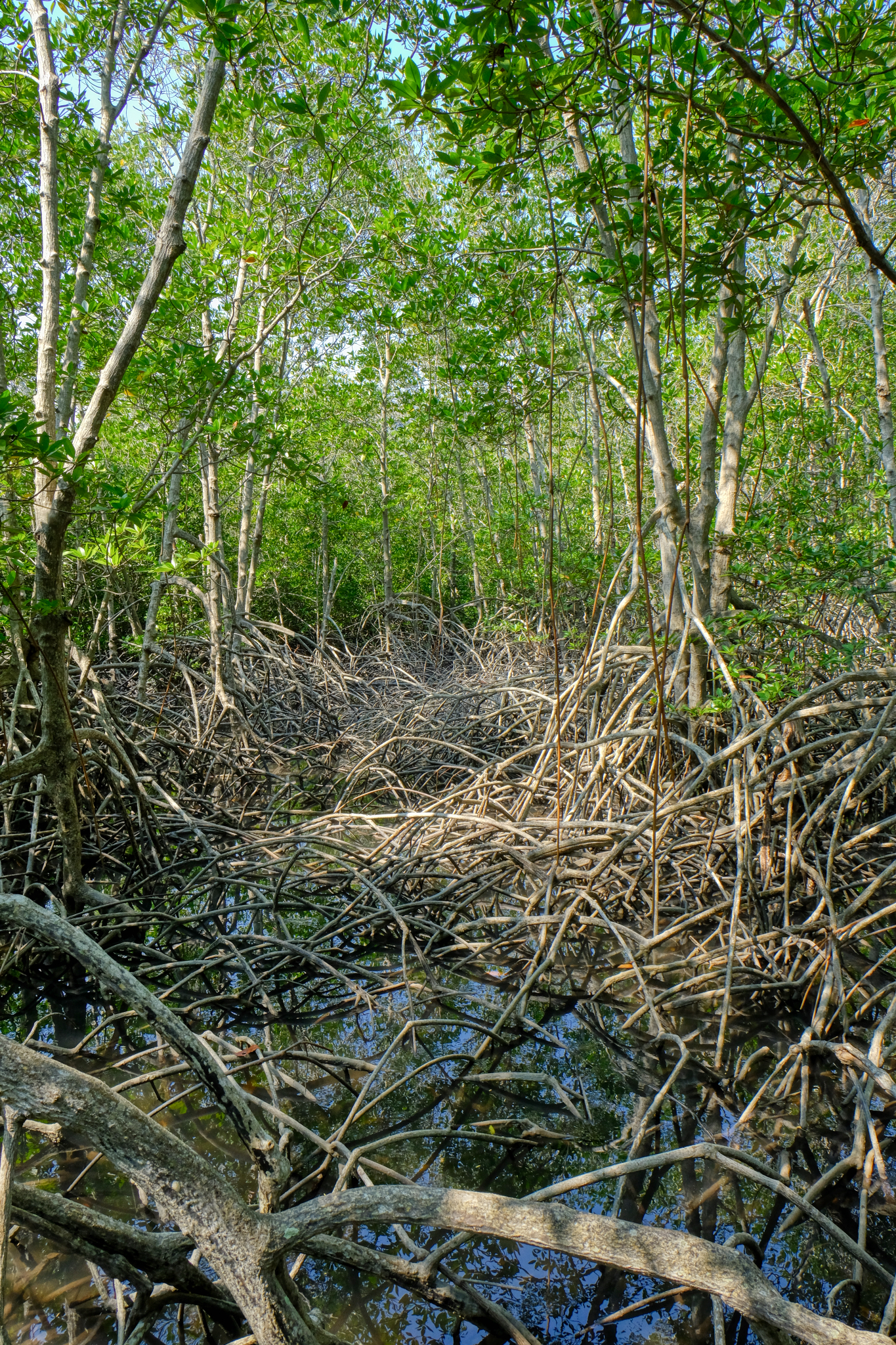 Mangroves grow in salt water estuarial swamps.
Mangroves grow in salt water estuarial swamps.
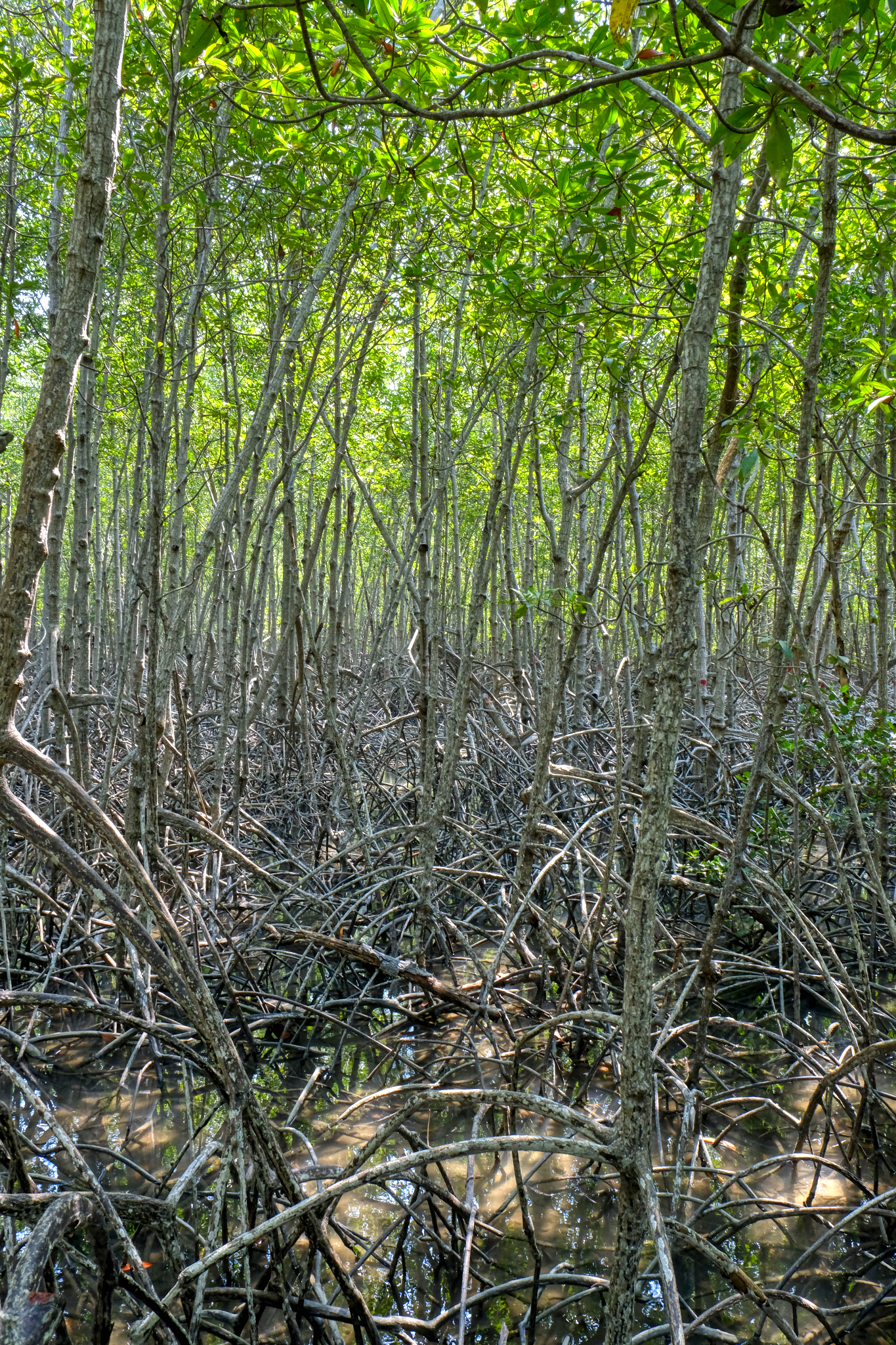 A phantasmagoria of twisted and gnarled complexity. Wonderful Nature.
A phantasmagoria of twisted and gnarled complexity. Wonderful Nature.
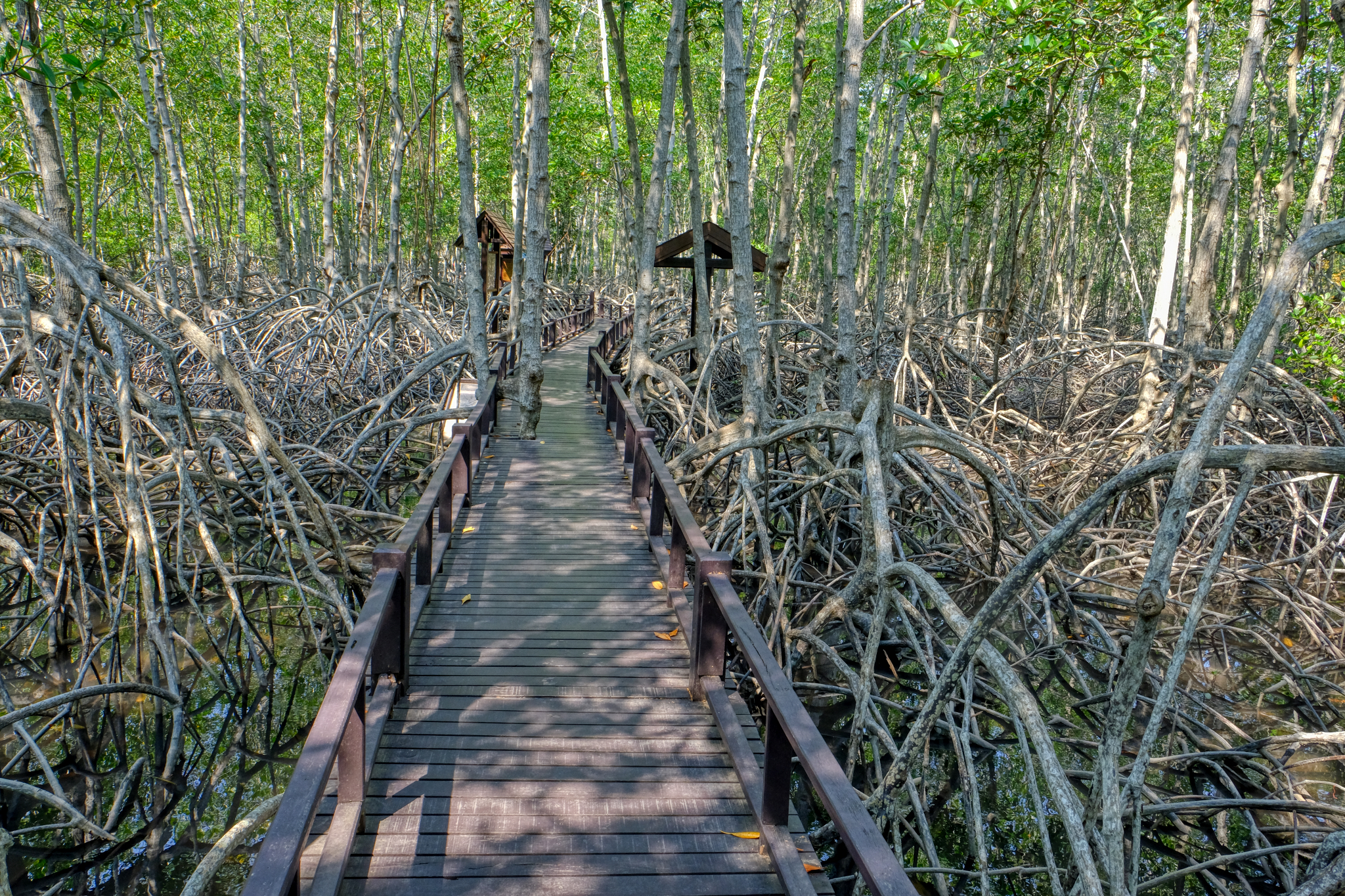 The park positioned bulletin boards (in Thai and English) along the way with informative graphics.
The park positioned bulletin boards (in Thai and English) along the way with informative graphics.
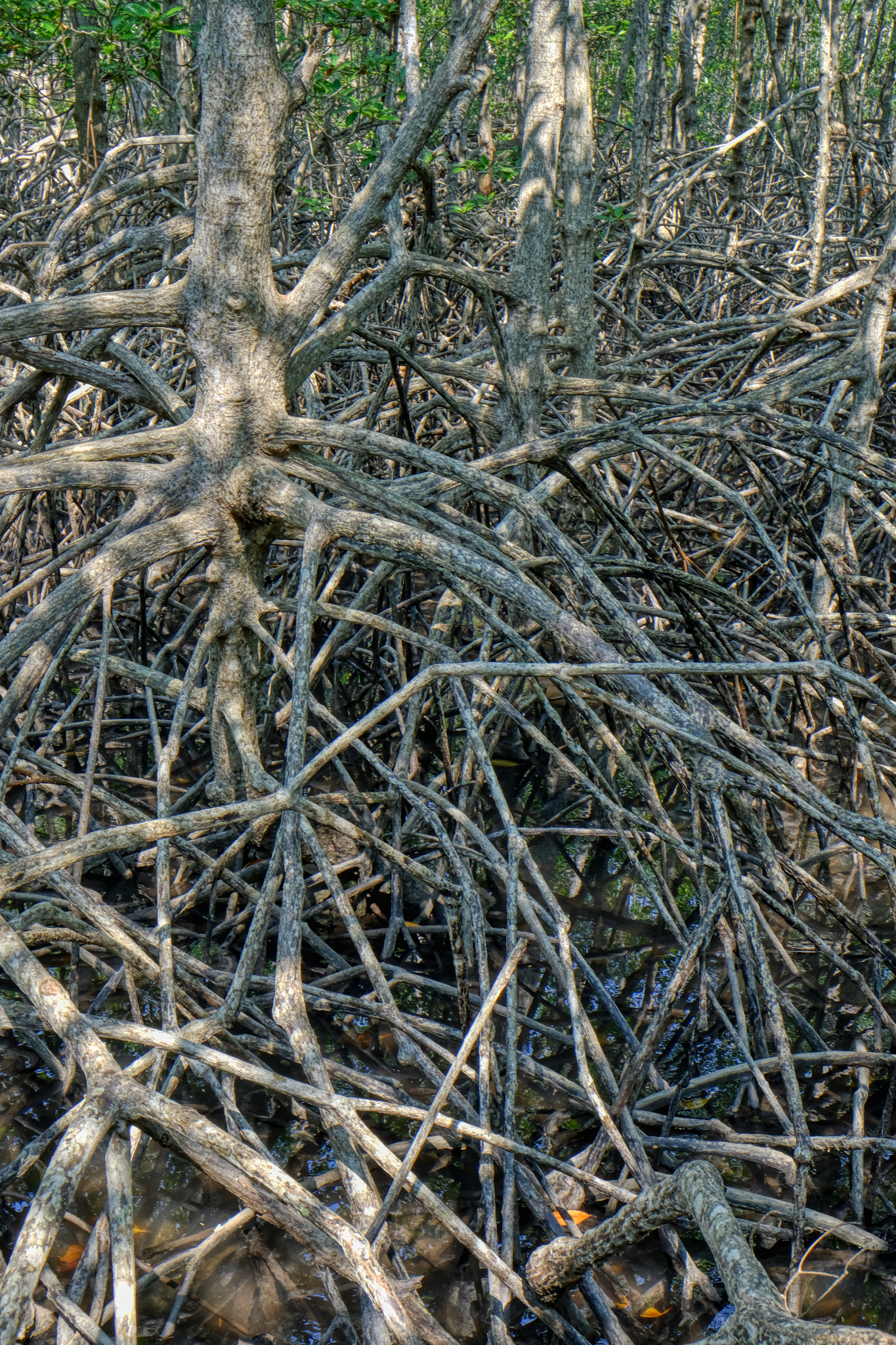 Mangrove roots grow in the transition between wet (at high tide) and exposed to the air (at low tide). The mangrove grows in salt water but has the ability to filter out the salt and deposit it on the root 'knees' to be dissolved off when the tide comes in. Amazing.
Mangrove roots grow in the transition between wet (at high tide) and exposed to the air (at low tide). The mangrove grows in salt water but has the ability to filter out the salt and deposit it on the root 'knees' to be dissolved off when the tide comes in. Amazing.
 The park managers built a tall tower so that the mangrove forest could be seen from above.
The park managers built a tall tower so that the mangrove forest could be seen from above.
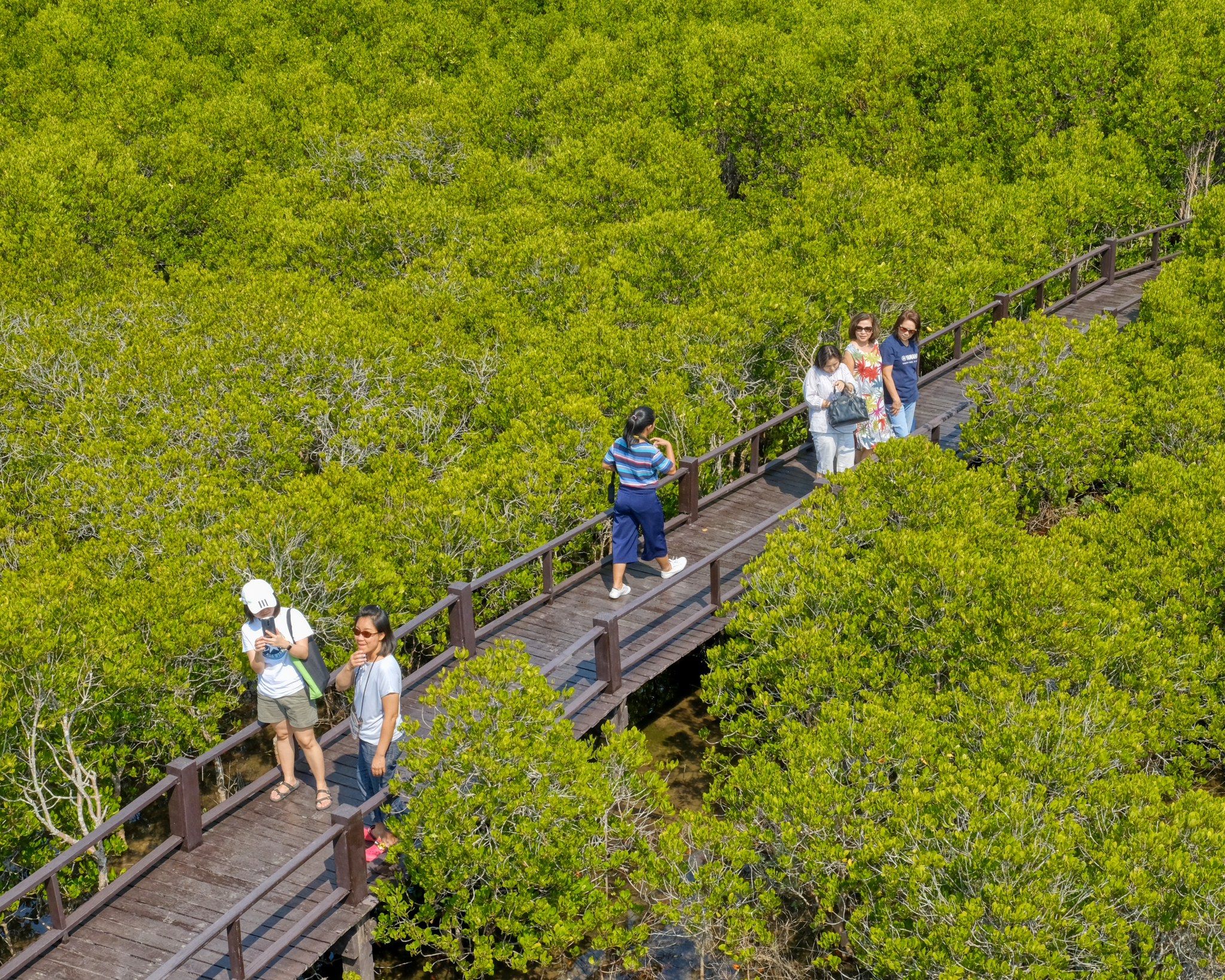 It was New Years' Eve, so there were quite a few day trippers from nearby Hua Hin.
It was New Years' Eve, so there were quite a few day trippers from nearby Hua Hin.
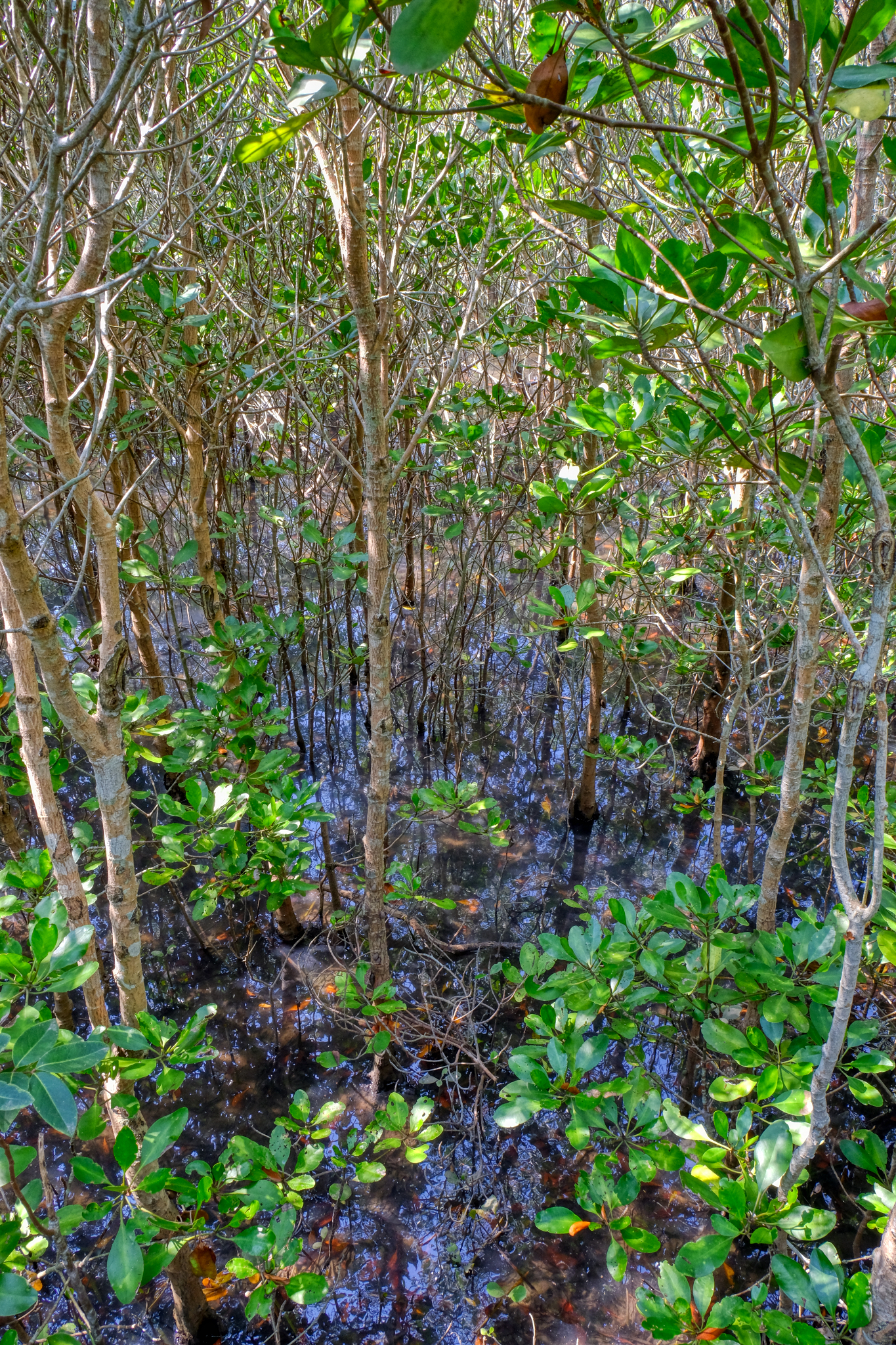 We wandered on along the elevated walkway. There seemed to be a change in the nature of the trees in the swamp.
We wandered on along the elevated walkway. There seemed to be a change in the nature of the trees in the swamp.
 "Autumn" colors in the swamp. A blue sky reflected in the brackish waters.
"Autumn" colors in the swamp. A blue sky reflected in the brackish waters.
 Beautiful complicated light on the complicated forest . . . truly marvelous.
Beautiful complicated light on the complicated forest . . . truly marvelous.
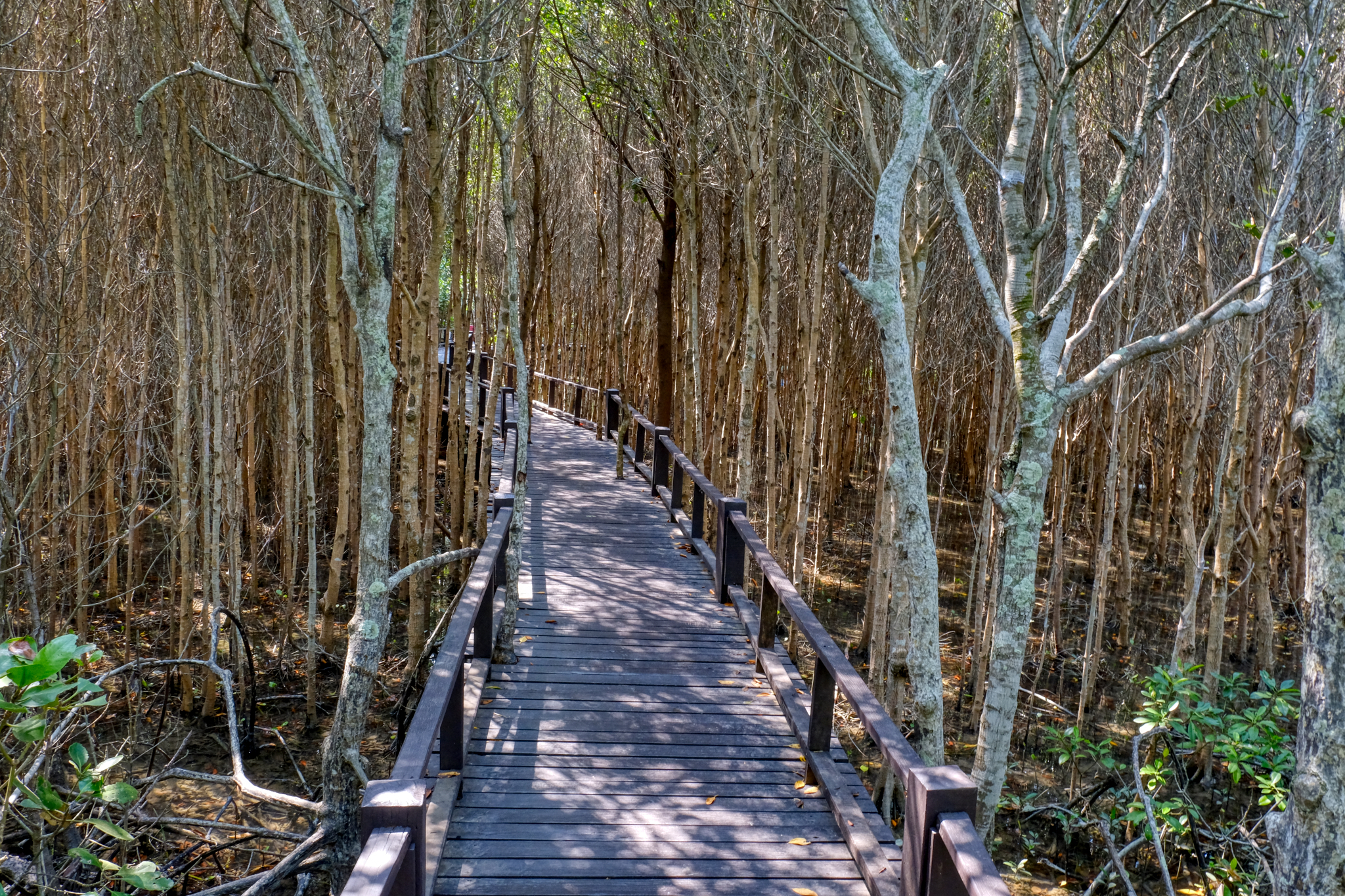 We walked on into a stand of densely packed trees . . . not mangrove, but growing in the salty water.
We walked on into a stand of densely packed trees . . . not mangrove, but growing in the salty water.
 Ever-changing scenes . . .
Ever-changing scenes . . .
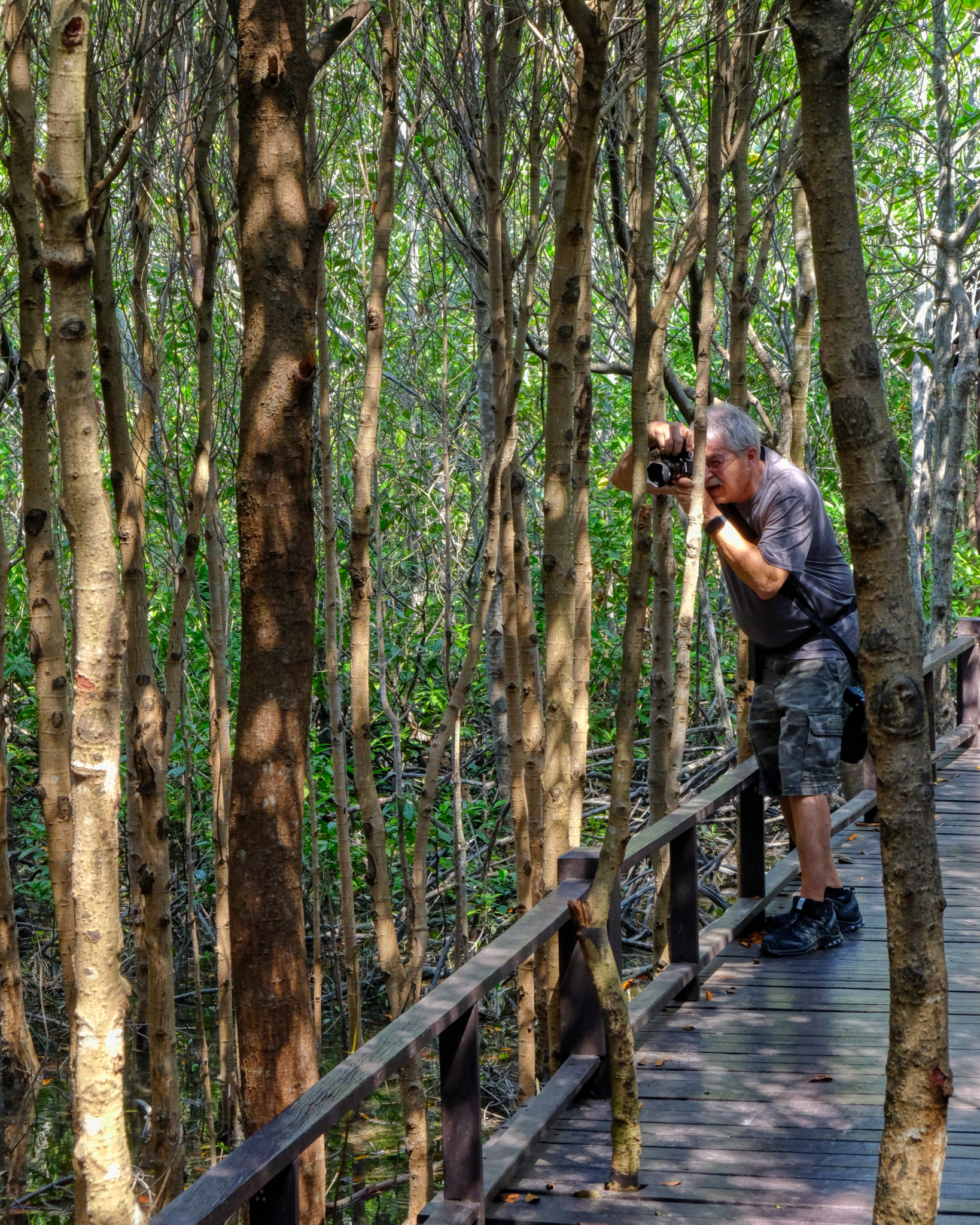 My friend enjoying the photographic opportunities.
My friend enjoying the photographic opportunities.
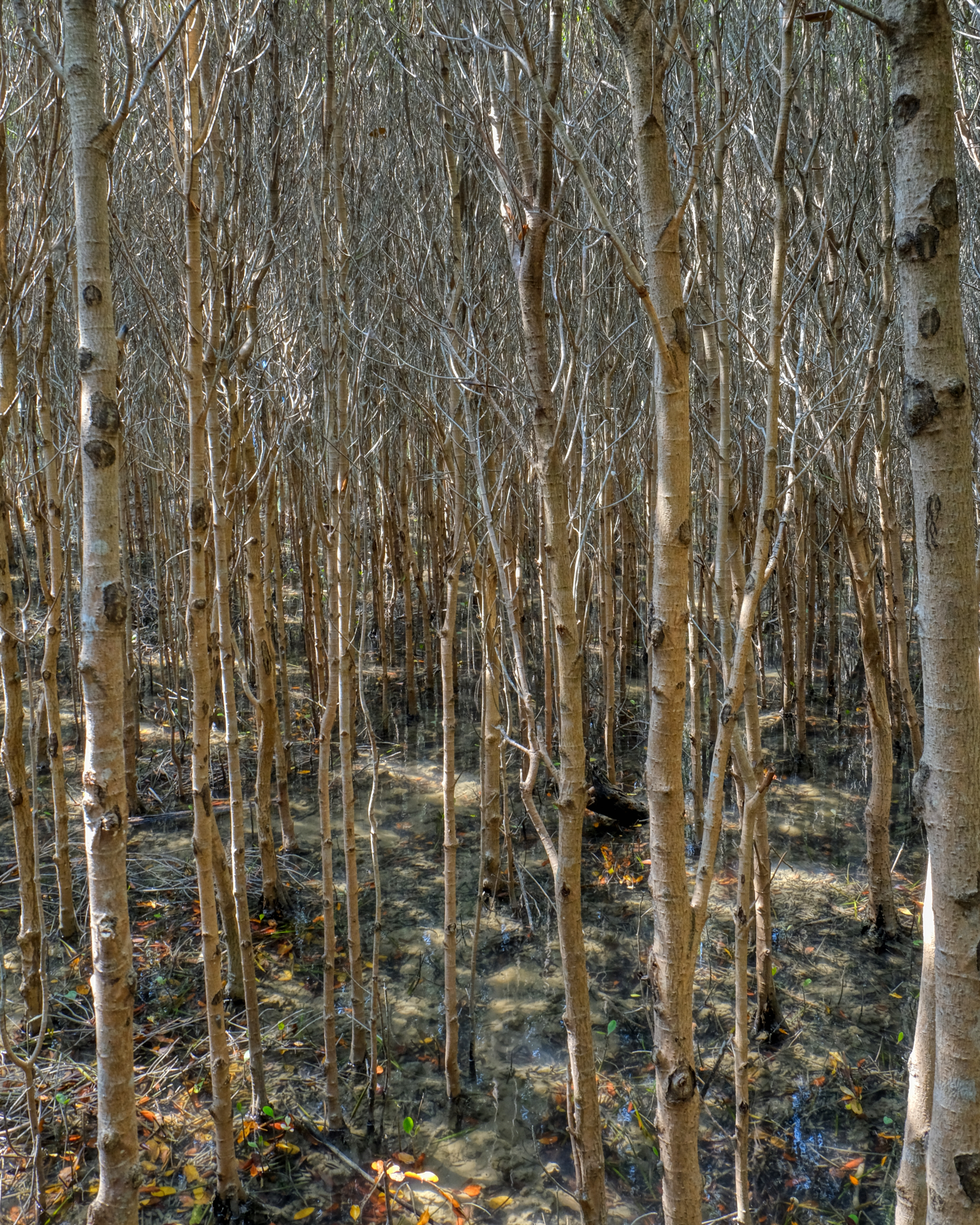 I do not know how these particular trees shed the salt.
I do not know how these particular trees shed the salt.
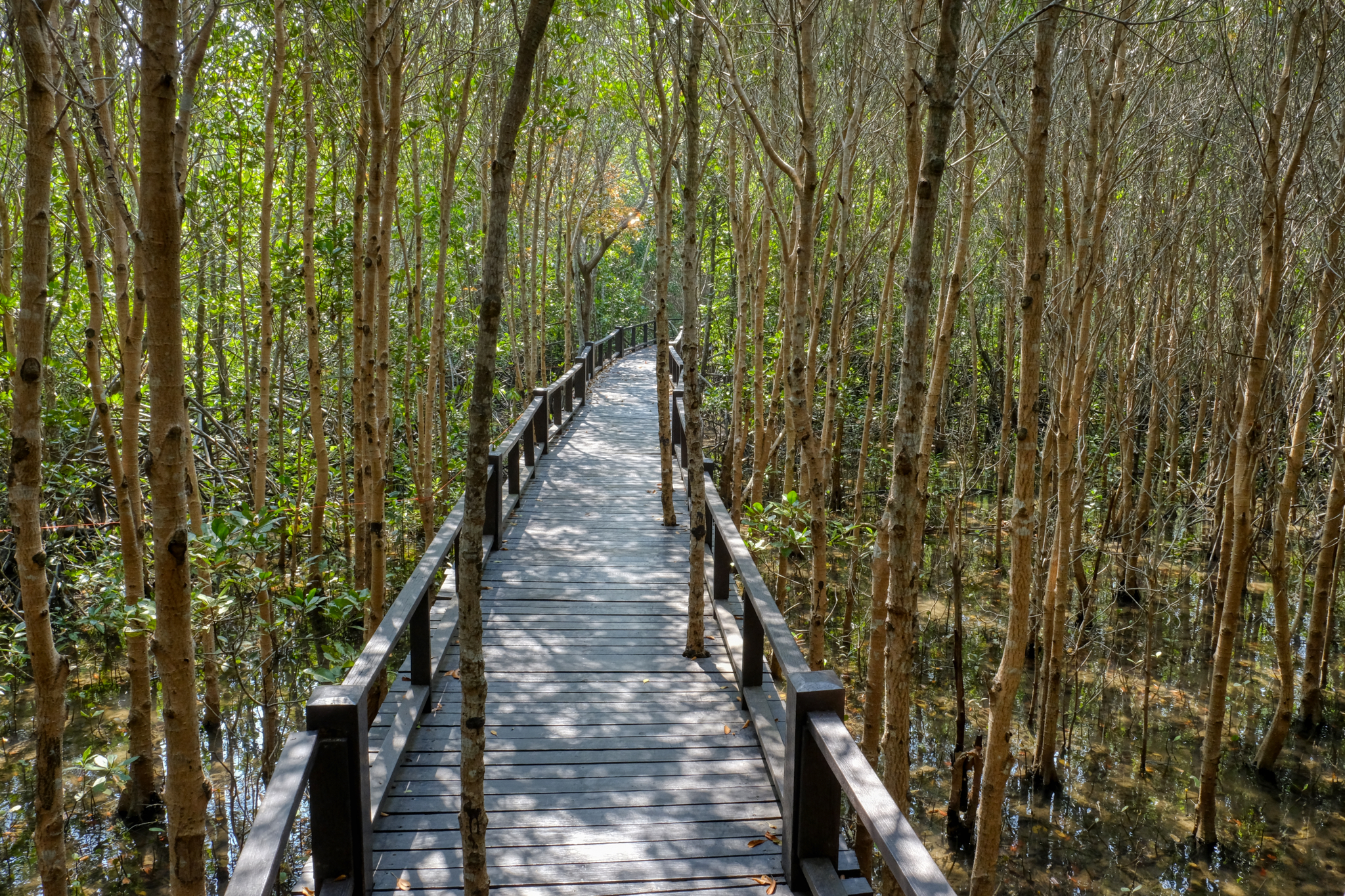 On we walked through a forest of thin trees growing in the saltwater marsh.
On we walked through a forest of thin trees growing in the saltwater marsh.
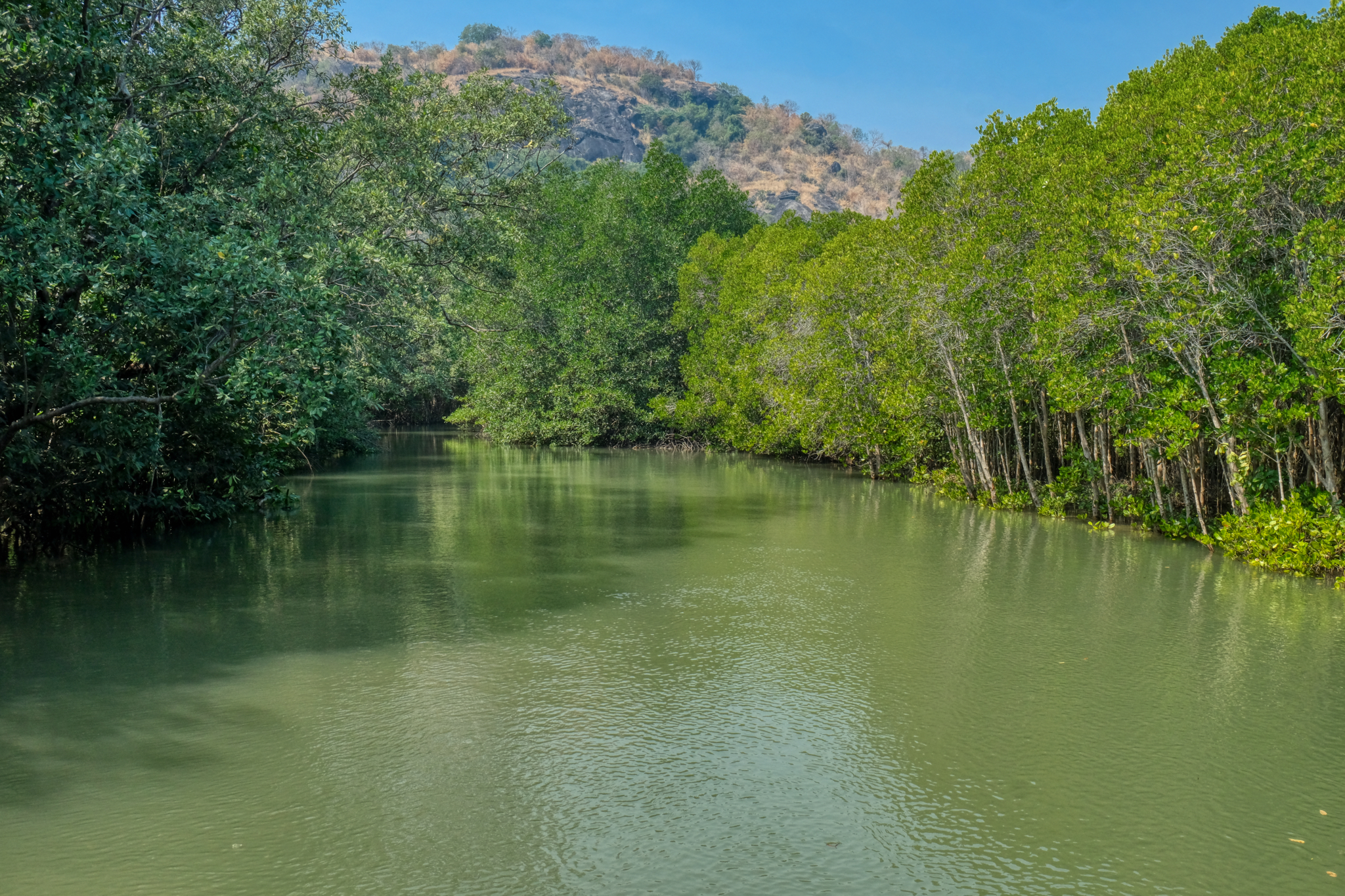 We came to a saltwater inlet. There was a pier offering boat rides, but there was a line of people waiting. We walked on . . . more [visual] adventures in store.
We came to a saltwater inlet. There was a pier offering boat rides, but there was a line of people waiting. We walked on . . . more [visual] adventures in store.
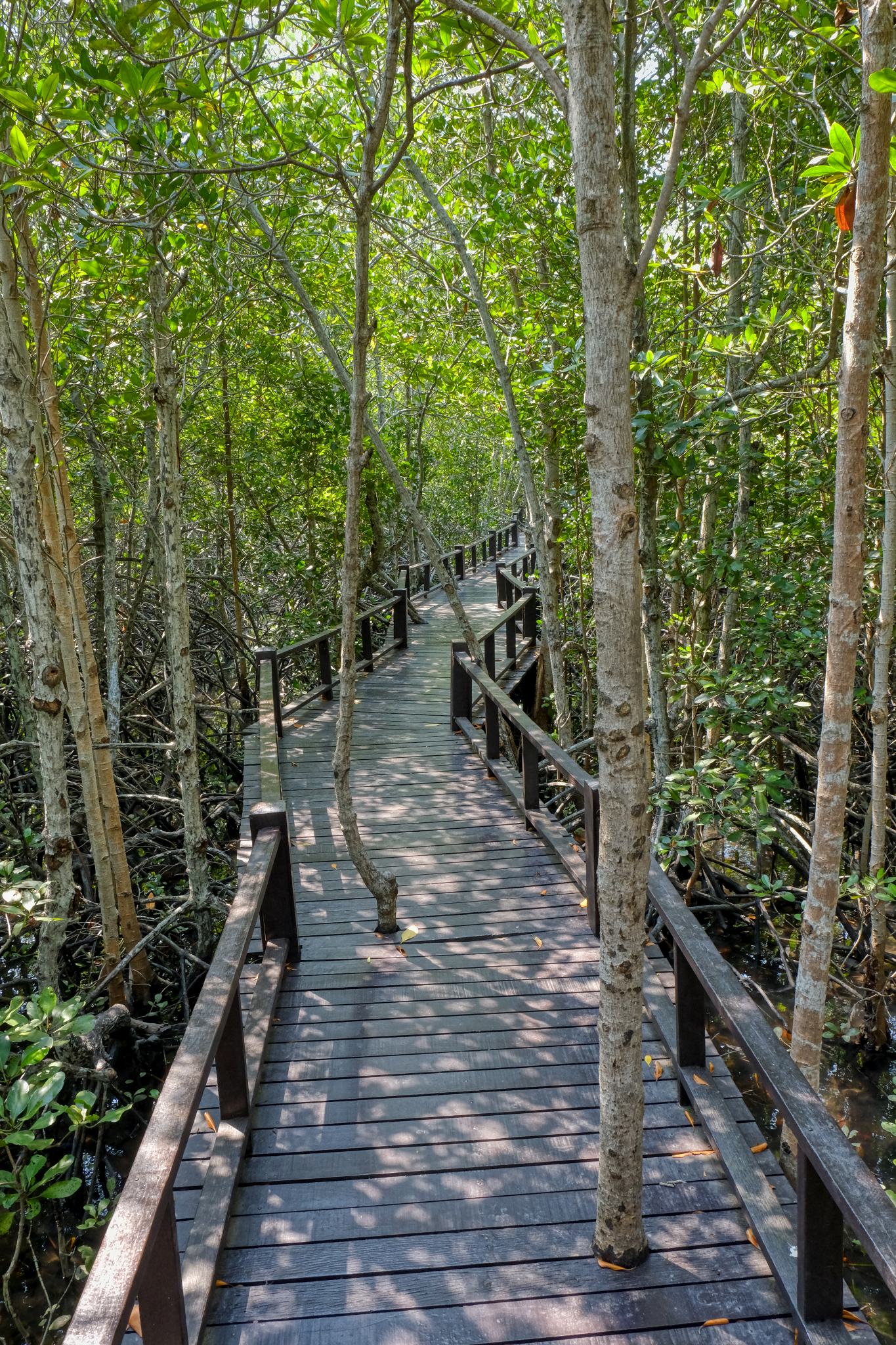 We walked the rest of the 2km walkway loop to the car . . .
We walked the rest of the 2km walkway loop to the car . . .
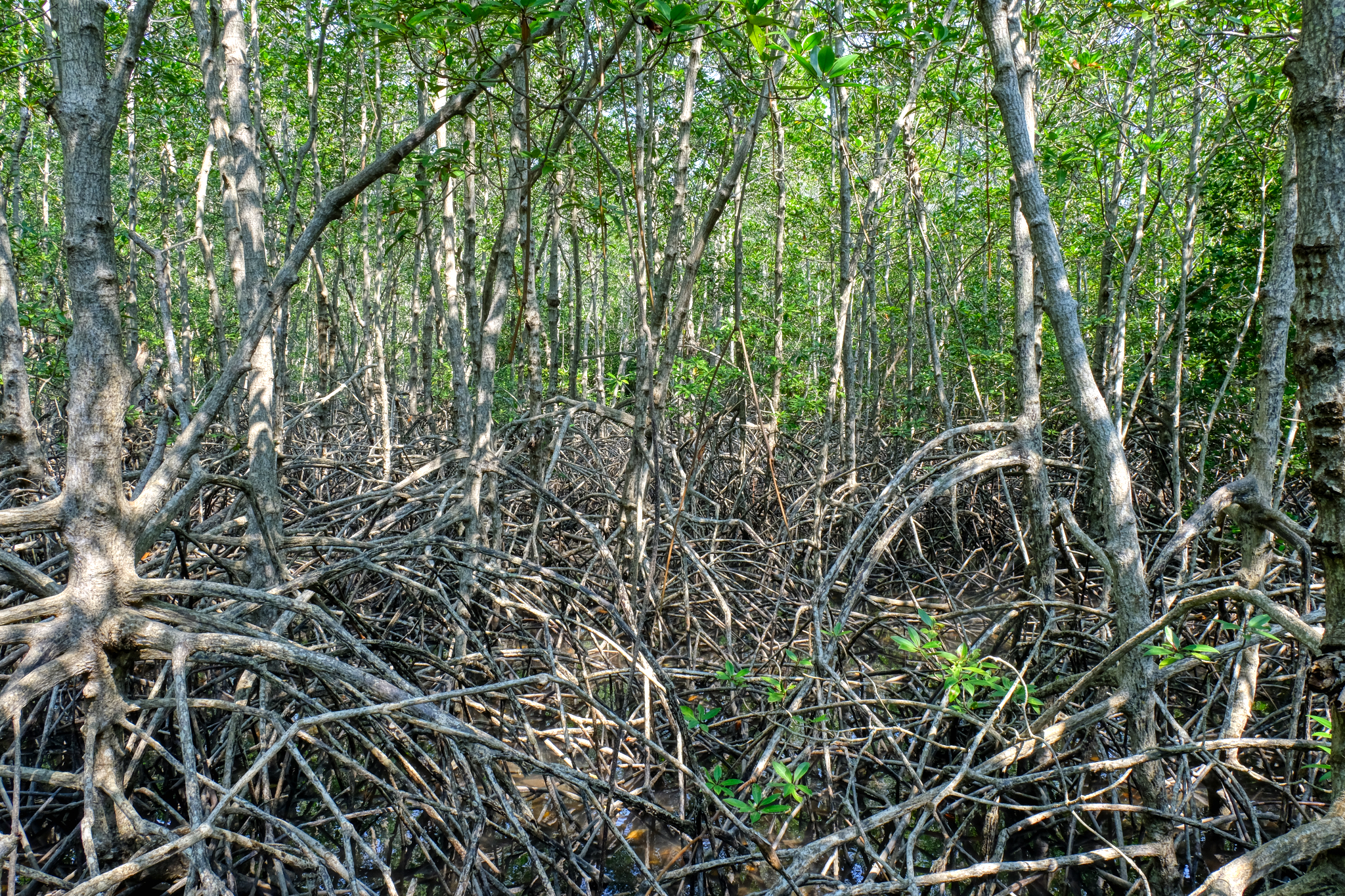 . . . and back through the tangled web of the mangrove knees.
. . . and back through the tangled web of the mangrove knees.
 We spent a wonderful couple of hours being amazed by this fantastic environment . . and taking photographs to our hearts content.
We spent a wonderful couple of hours being amazed by this fantastic environment . . and taking photographs to our hearts content.
-----------------------------------------------------
A Fishing Port Village
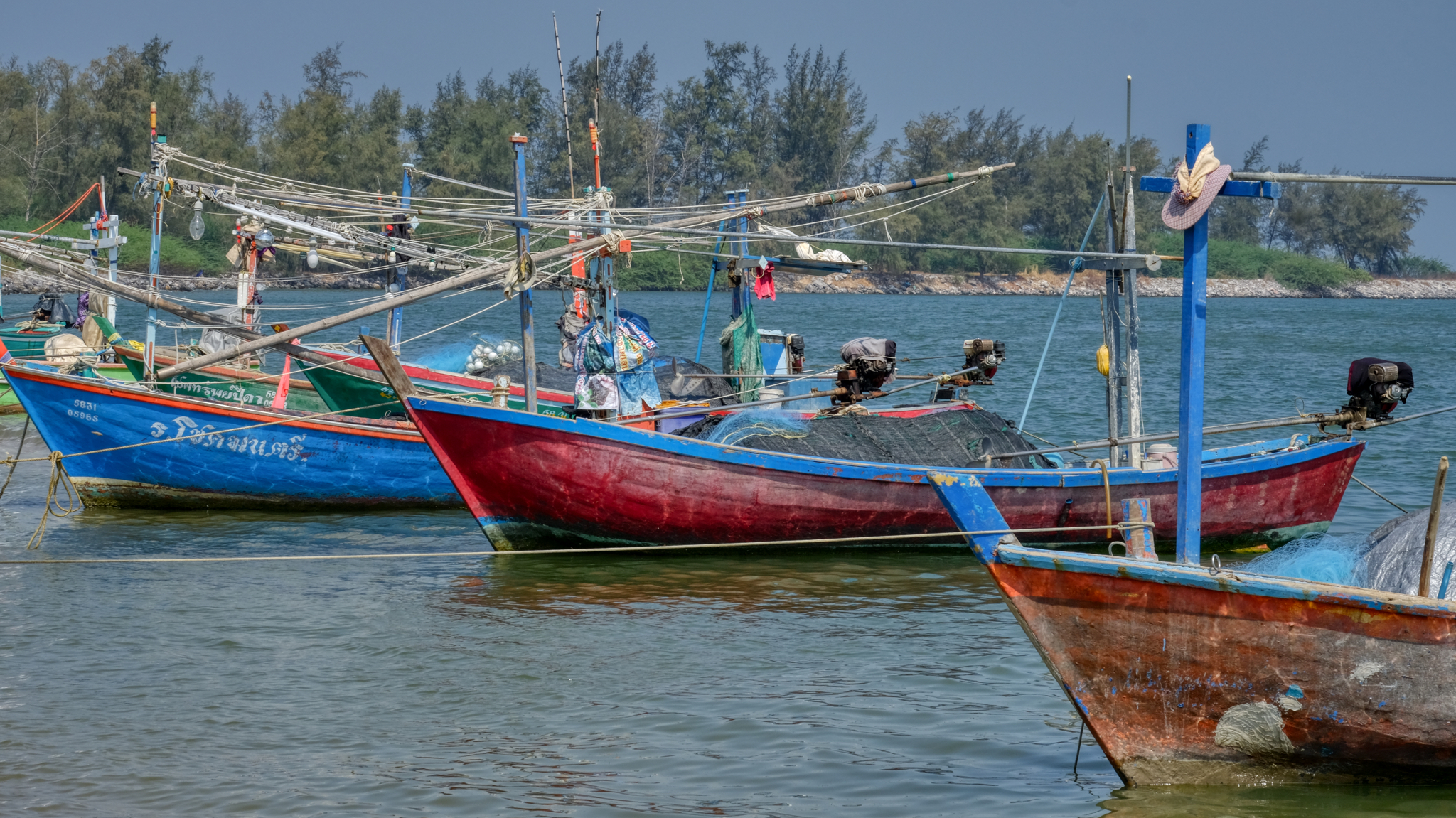 About a mile away from the mangrove forest park was another small fishing port.
About a mile away from the mangrove forest park was another small fishing port.
 A beautiful day with colorful boats . . . what's not to like?
A beautiful day with colorful boats . . . what's not to like?
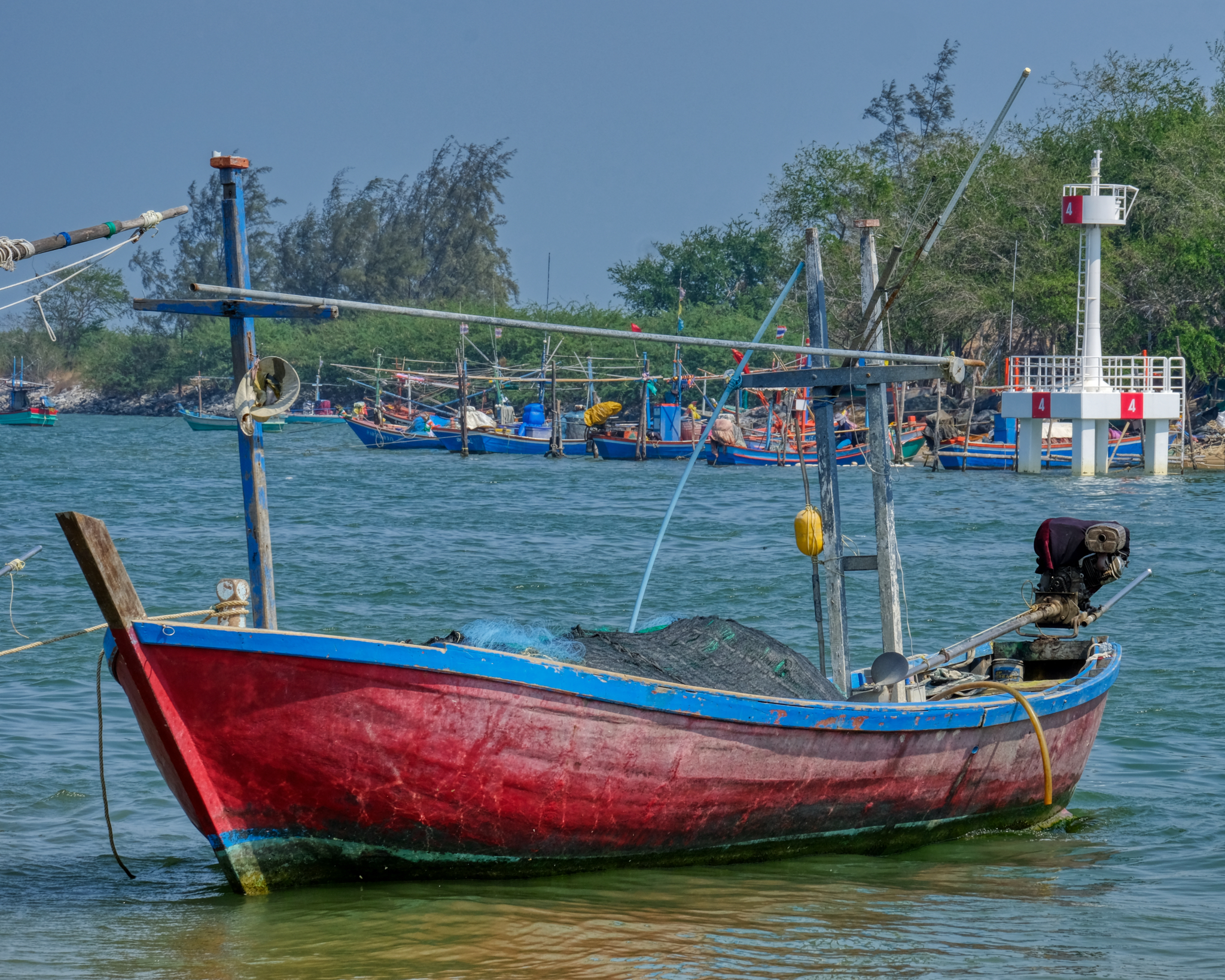 Small squid boats and large 'company boats" . . .
Small squid boats and large 'company boats" . . .
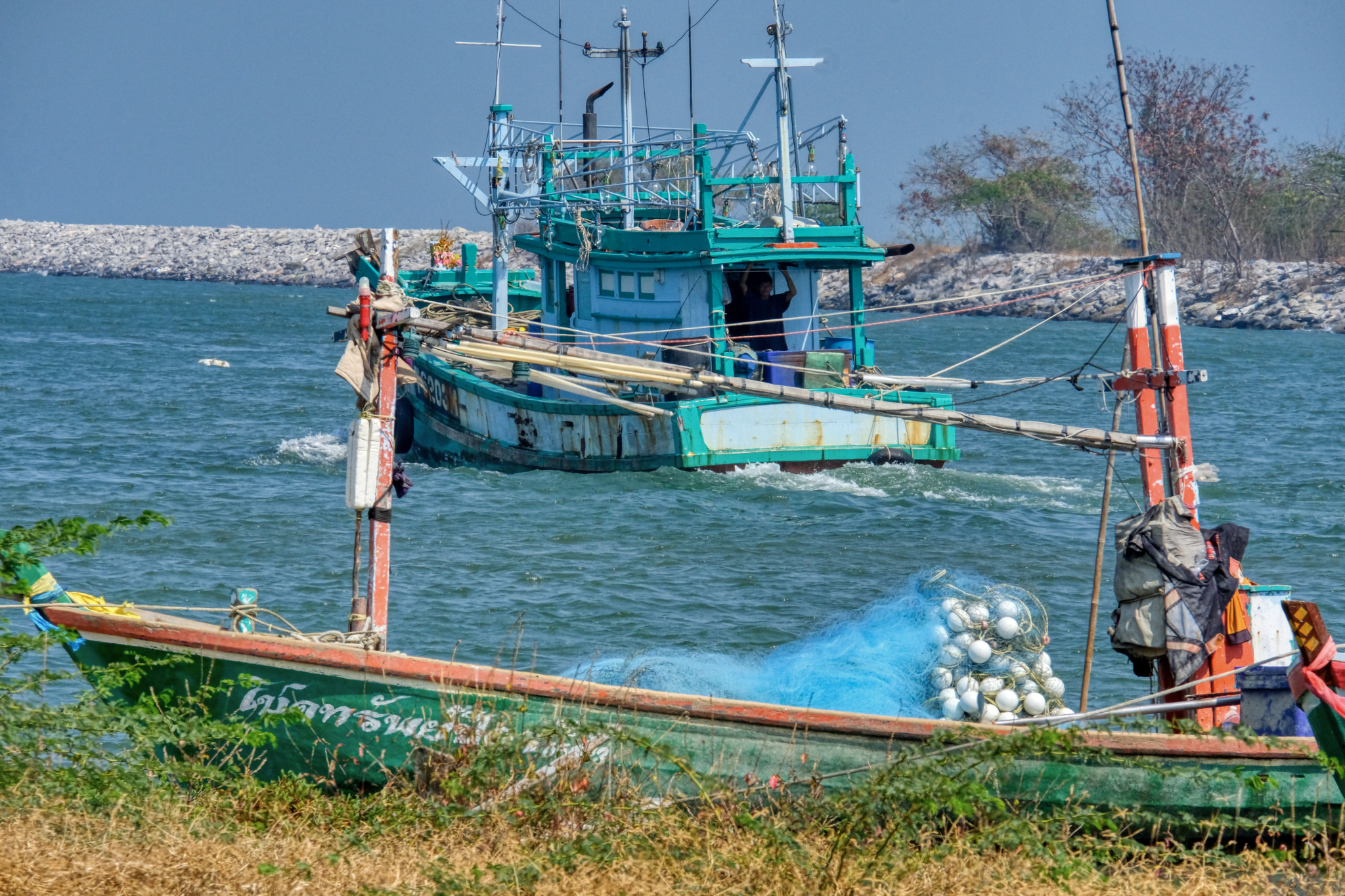 A 'company boat' heading out early for night squidding . . . they must be going far out into the Gulf of Thailand.
A 'company boat' heading out early for night squidding . . . they must be going far out into the Gulf of Thailand.
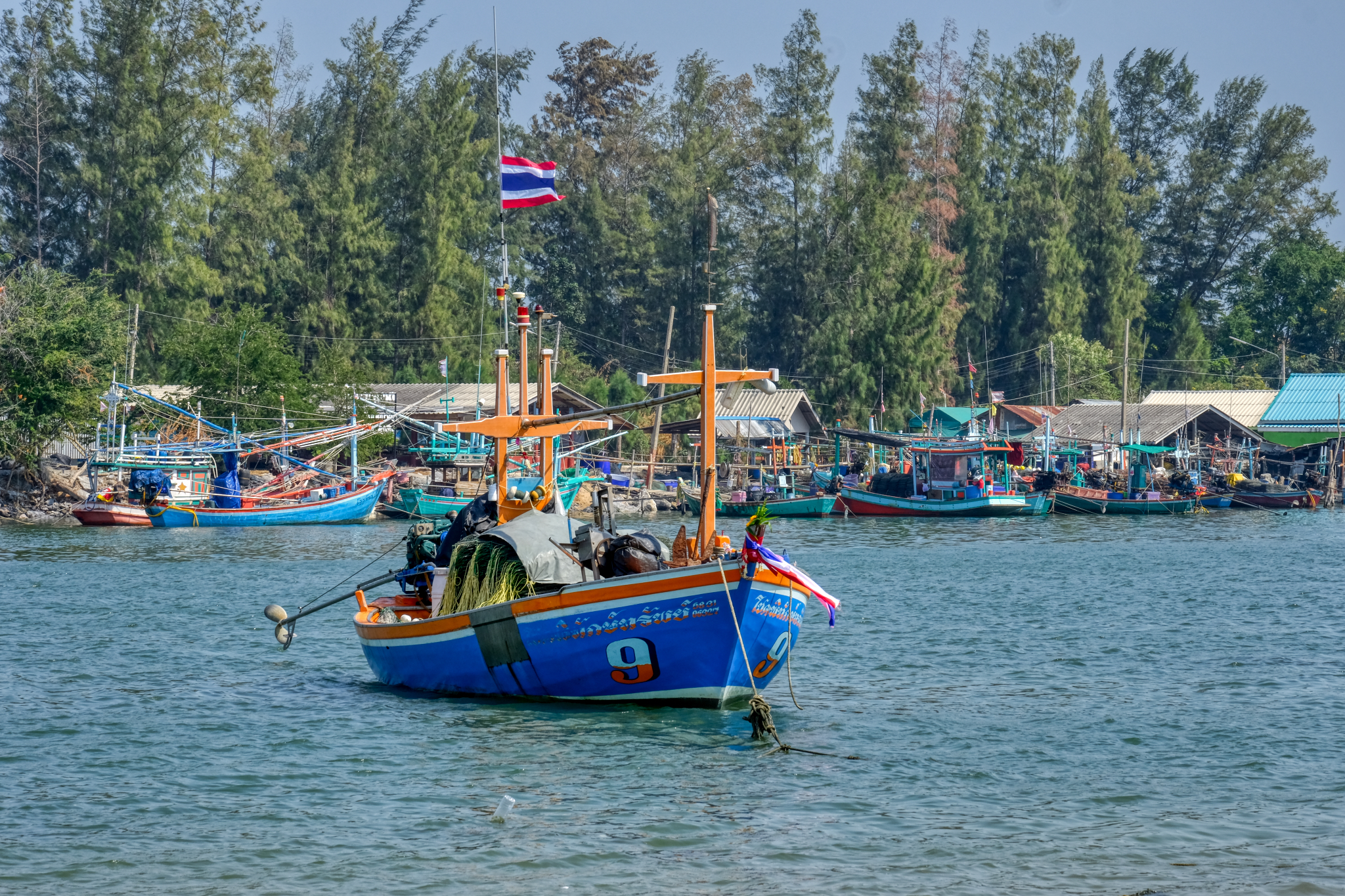 A busy Thai commercial fishing port.
A busy Thai commercial fishing port.
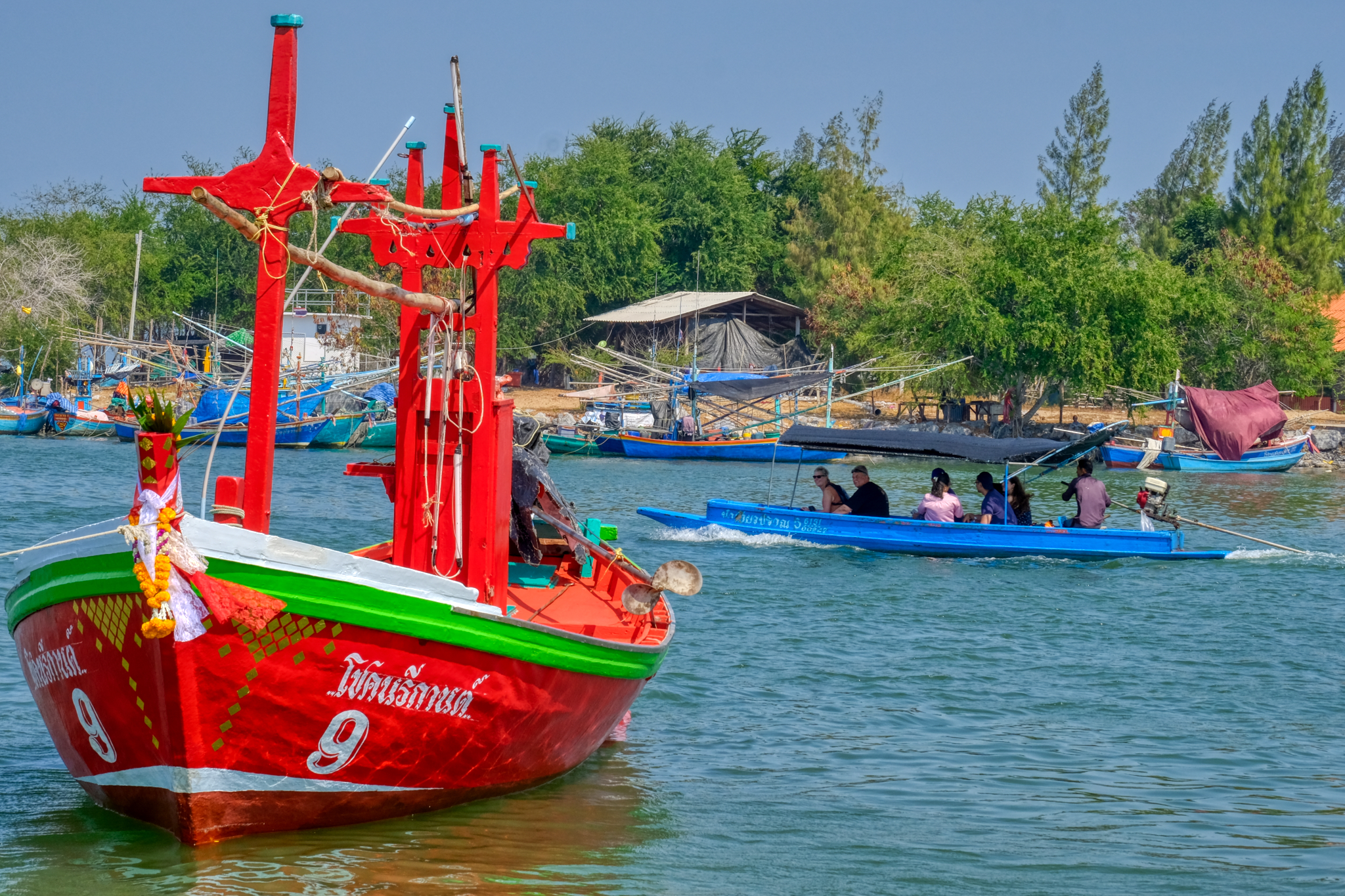 Yep . . . a tourist tour boat! This is actually the tourist boat from the mangrove forest park nearby . . . we all waved at each other.
Yep . . . a tourist tour boat! This is actually the tourist boat from the mangrove forest park nearby . . . we all waved at each other.
 We walked along the road near the fishing port and came across a picturesque little slough.
We walked along the road near the fishing port and came across a picturesque little slough.
 Life along the slough.
Life along the slough.
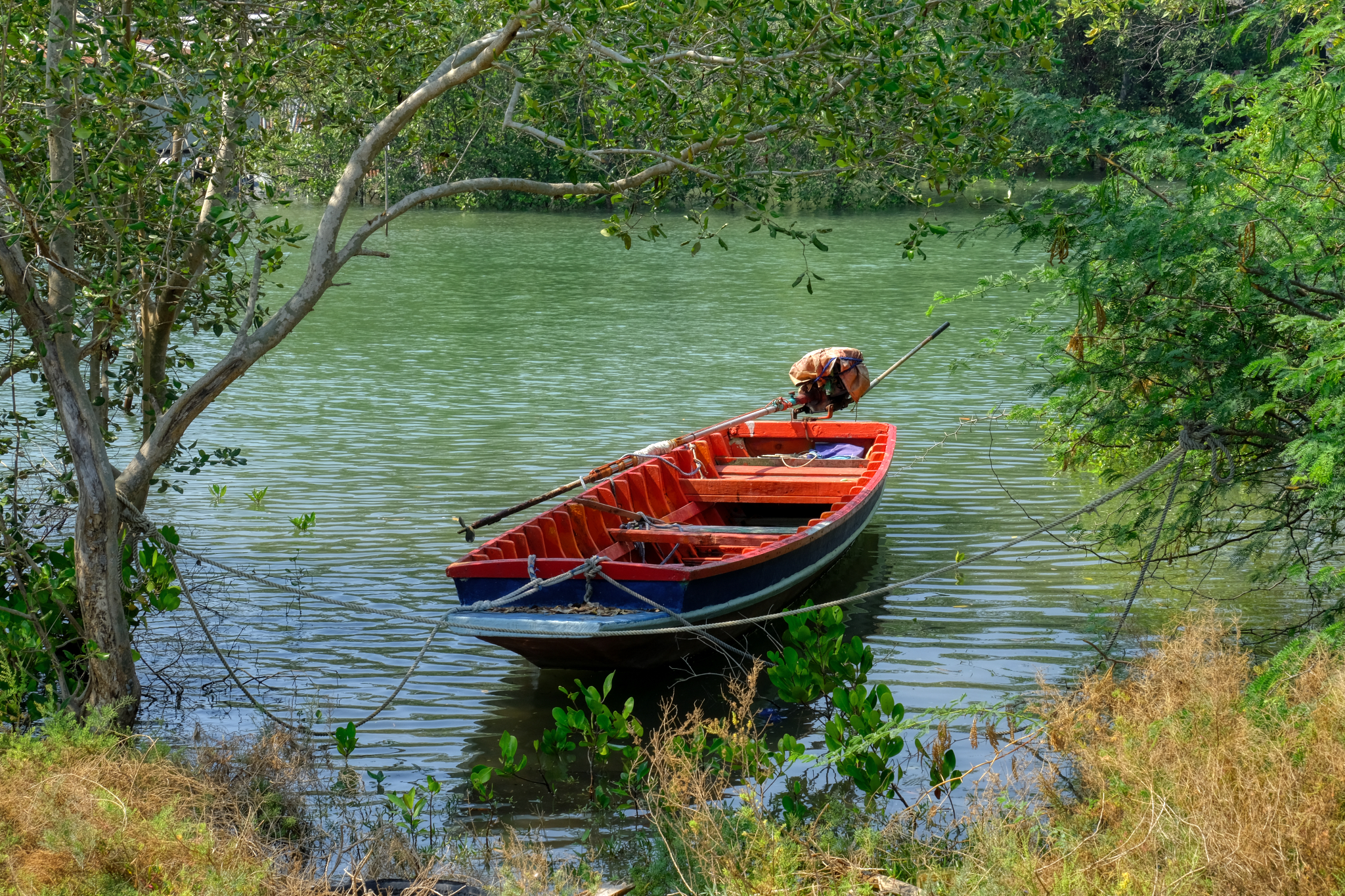 Picturesque . . . indeed!
Picturesque . . . indeed!
---------------------------------------------------------
Happy New Year 2020 From Hua Hin Thailand!!!
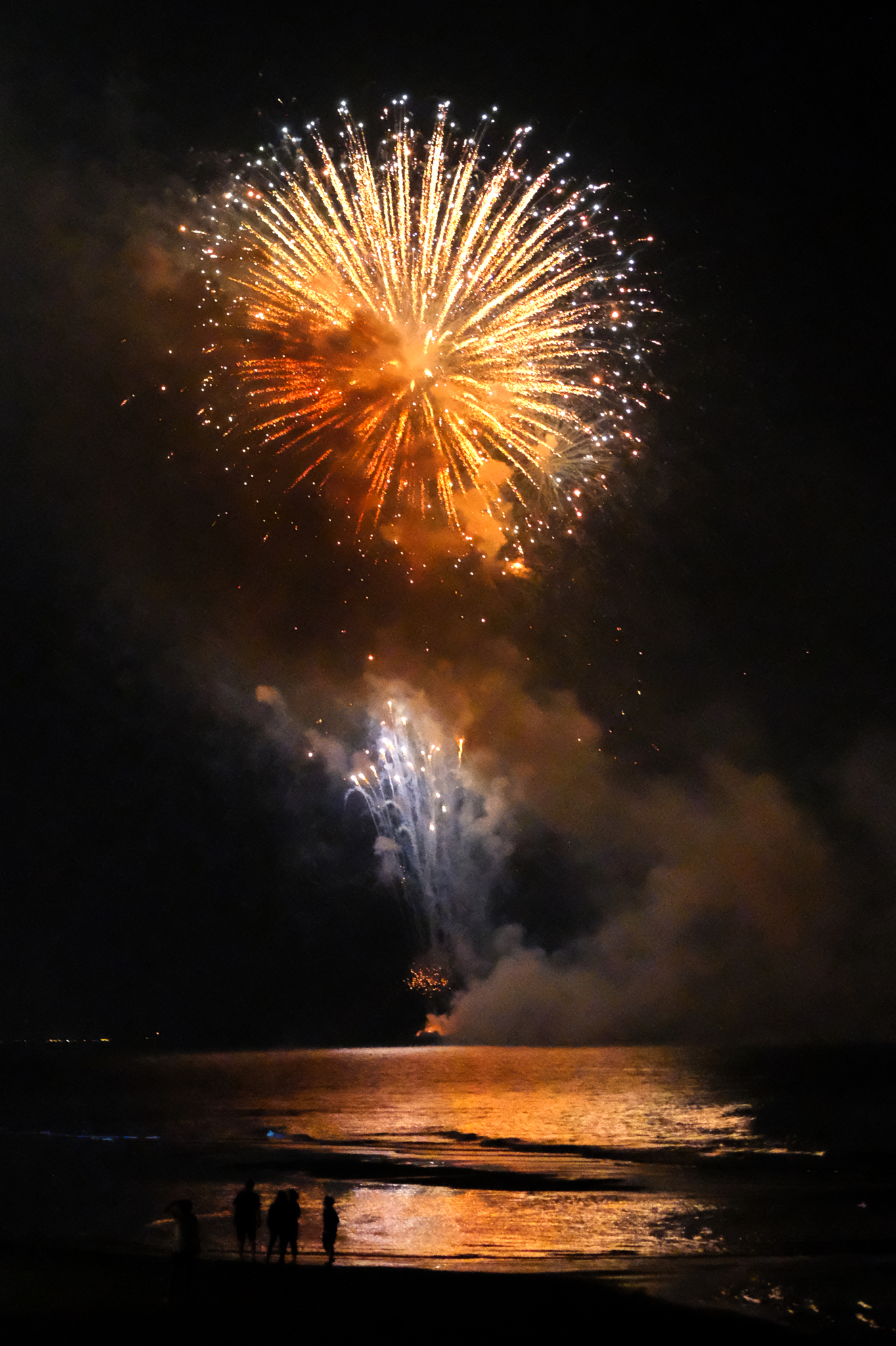 We went out to dinner at our usual favorite restaurant . . . . but we were not satisfied with the meal . . . it was a buffet, not the usual excellent food from the menu. Afterward we went to a friend's beach house . . . then out on to the beach for the BIG fireworks display.
We went out to dinner at our usual favorite restaurant . . . . but we were not satisfied with the meal . . . it was a buffet, not the usual excellent food from the menu. Afterward we went to a friend's beach house . . . then out on to the beach for the BIG fireworks display.
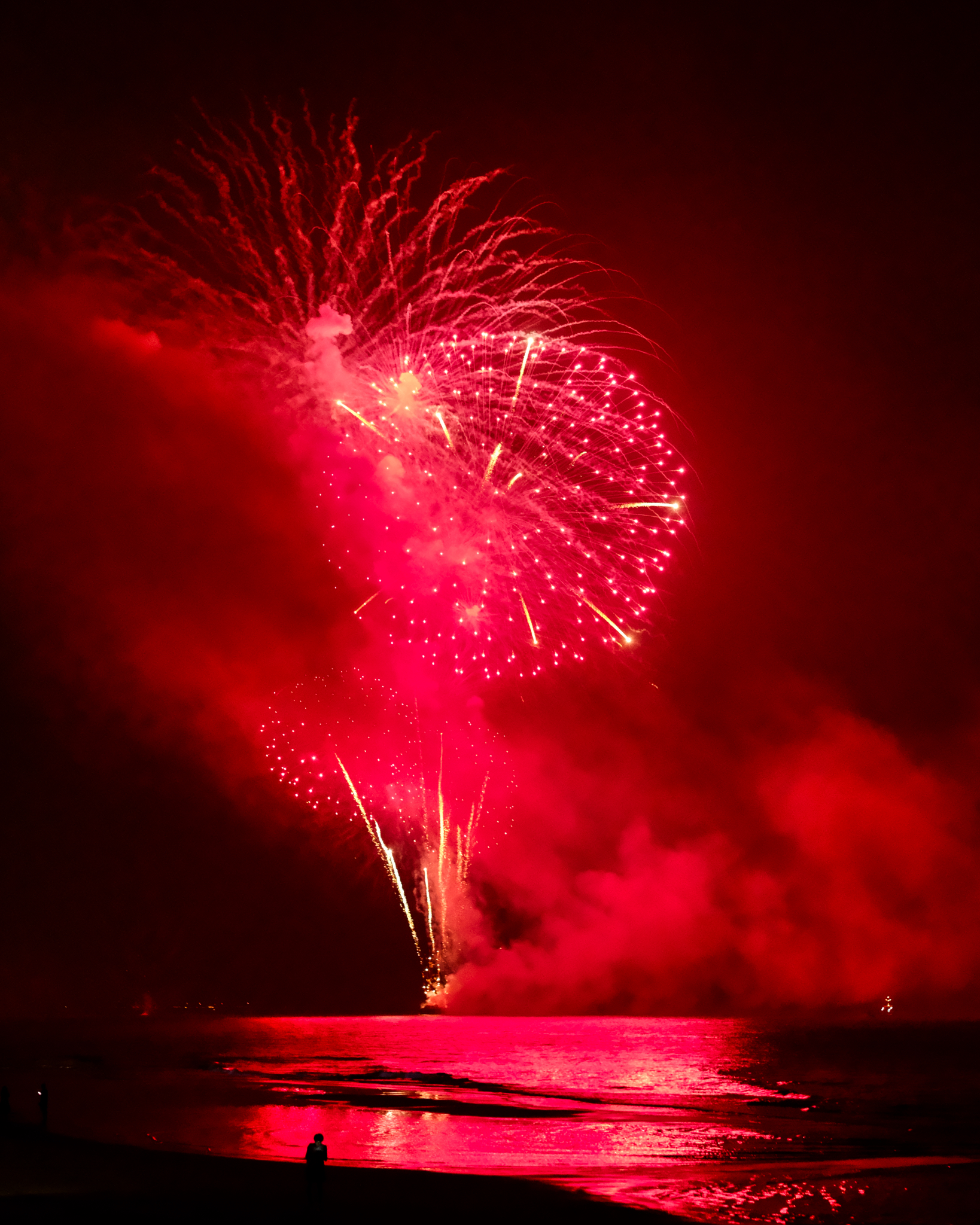 Down along the beach . . . fantastic fireworks display for 20-25 minutes.
Down along the beach . . . fantastic fireworks display for 20-25 minutes.
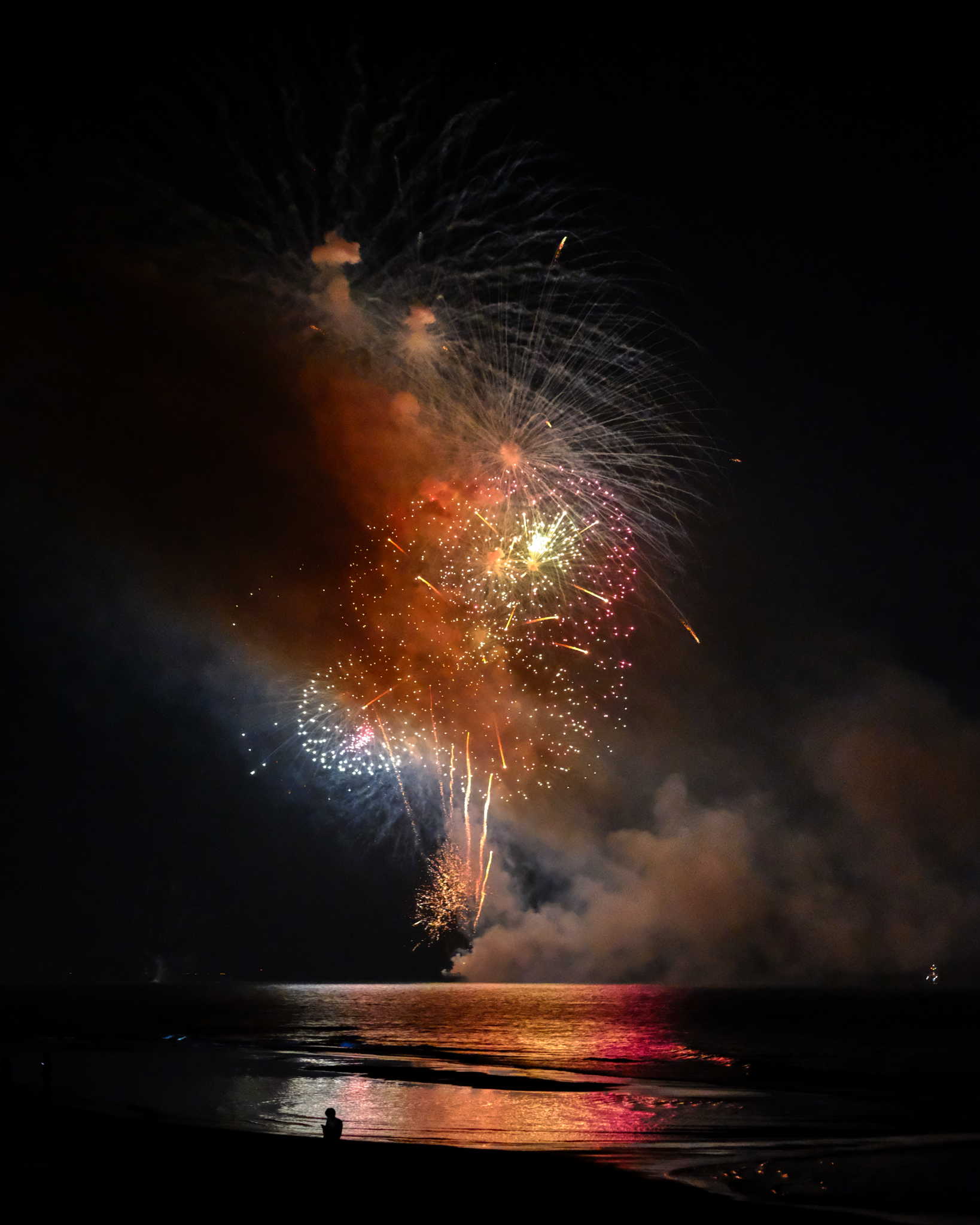 Fireworks across the bay . . .
Fireworks across the bay . . .
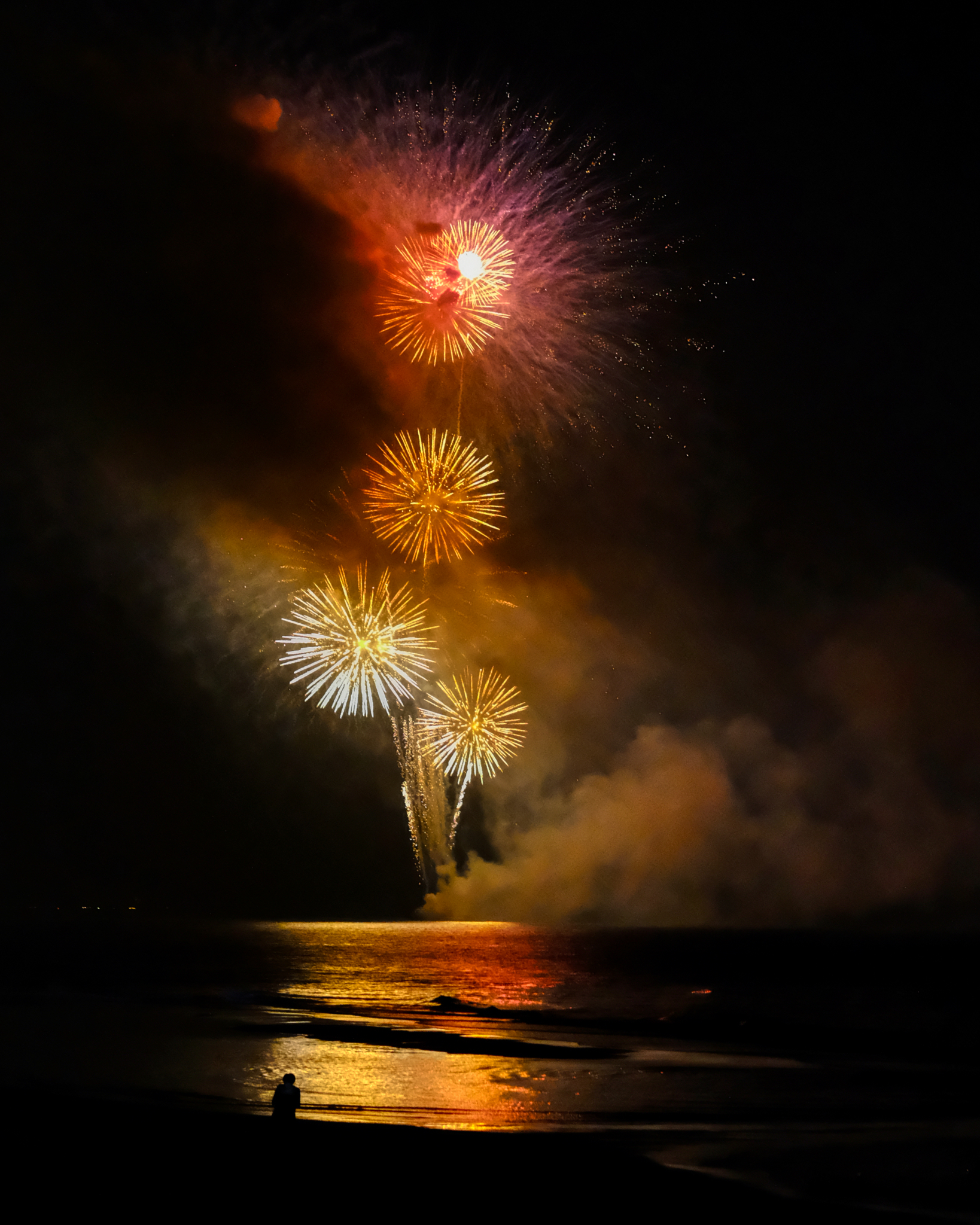 Once I figured out my camera settings . . .
Once I figured out my camera settings . . .
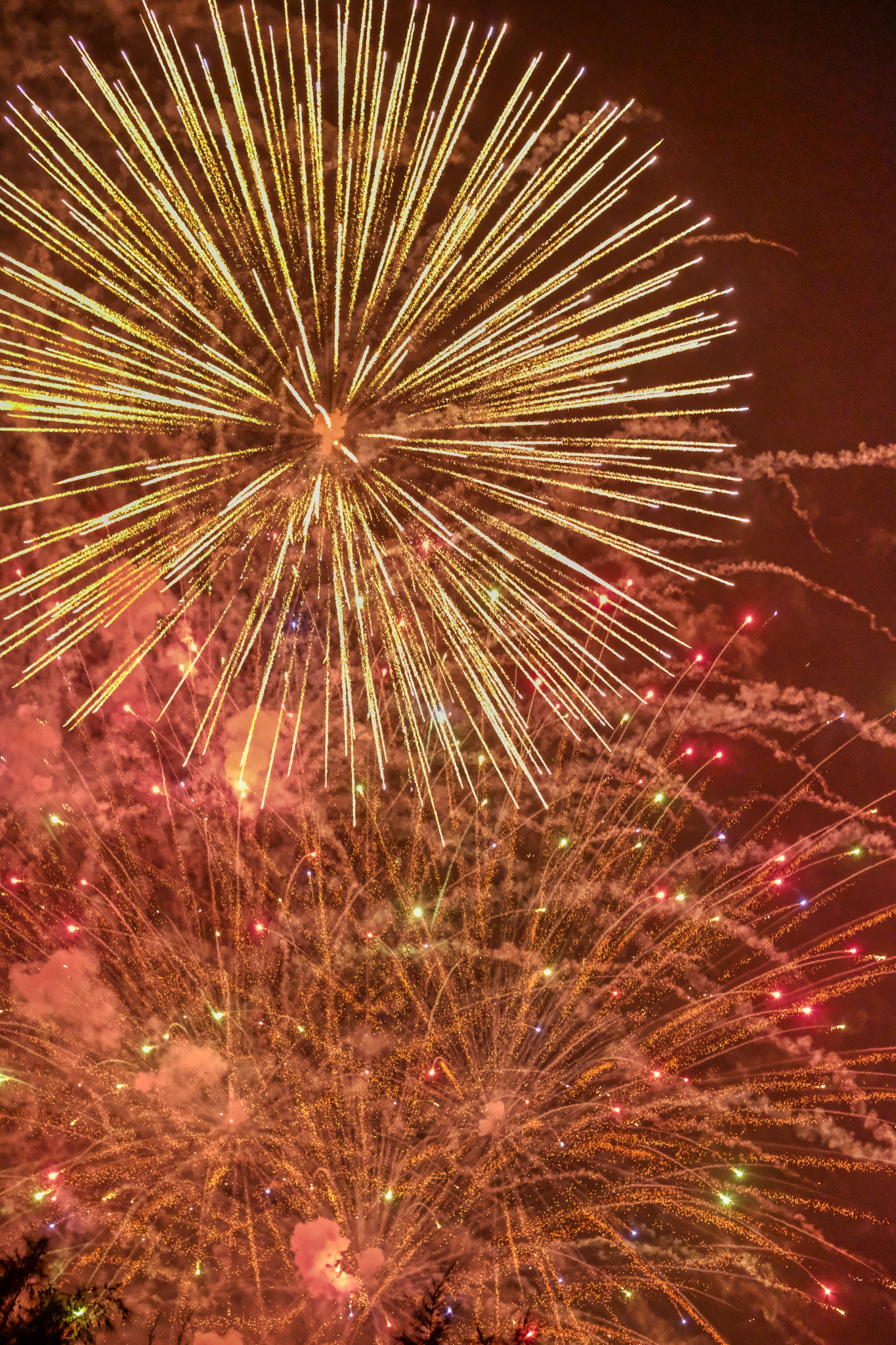 Right overhead!
Right overhead!
 I hope you all had a New Years' Eve as colorful and interesting as I did!
I hope you all had a New Years' Eve as colorful and interesting as I did!
YES! All in a day! All within 20 miles!
Working From Home . . . Missing My River Commute
 Saturday, March 21, 2020 at 6:46PM
Saturday, March 21, 2020 at 6:46PM I work as a director and professor at a Thai public university. On most days I take an express boat 40 minutes to and from my office on the Chao Phraya River . . . but due to the COVID-19 virus, I am now working from home as my university has closed the campus.
 After a short public bus ride, I catch this Chao Phraya River Express Boat (green flag) for the 40 minute ride down the fascinating and picturesque river to my office.
After a short public bus ride, I catch this Chao Phraya River Express Boat (green flag) for the 40 minute ride down the fascinating and picturesque river to my office.
 These are the docks where I catch my commuter boat. Pakkret Pier.
These are the docks where I catch my commuter boat. Pakkret Pier.
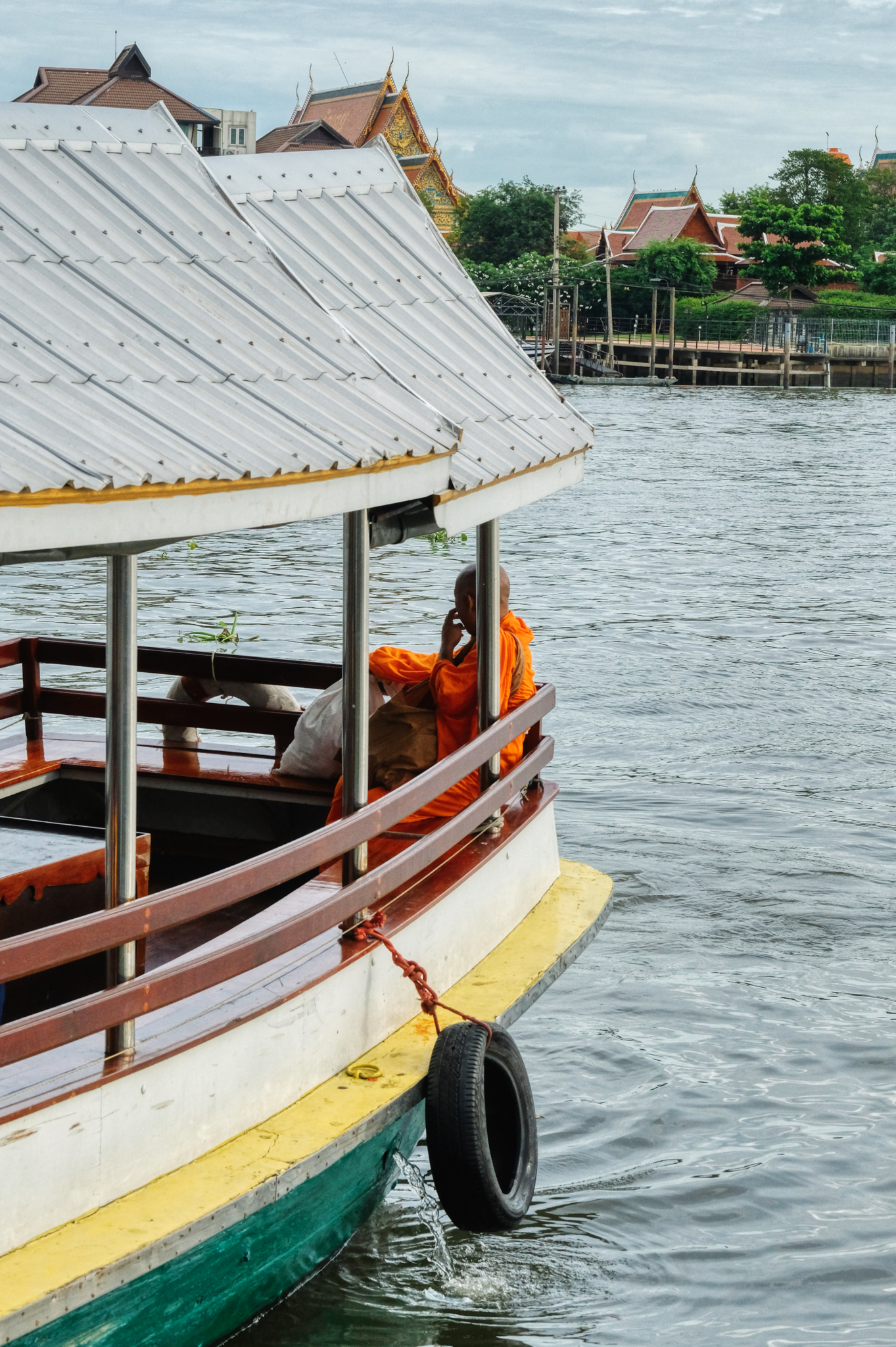 I am not the only person out on my morning commute and rounds . . . .
I am not the only person out on my morning commute and rounds . . . .
 Many long-tail river taxi boats lined up taking merchants back to their small businesses after visiting the morning wet market.
Many long-tail river taxi boats lined up taking merchants back to their small businesses after visiting the morning wet market.
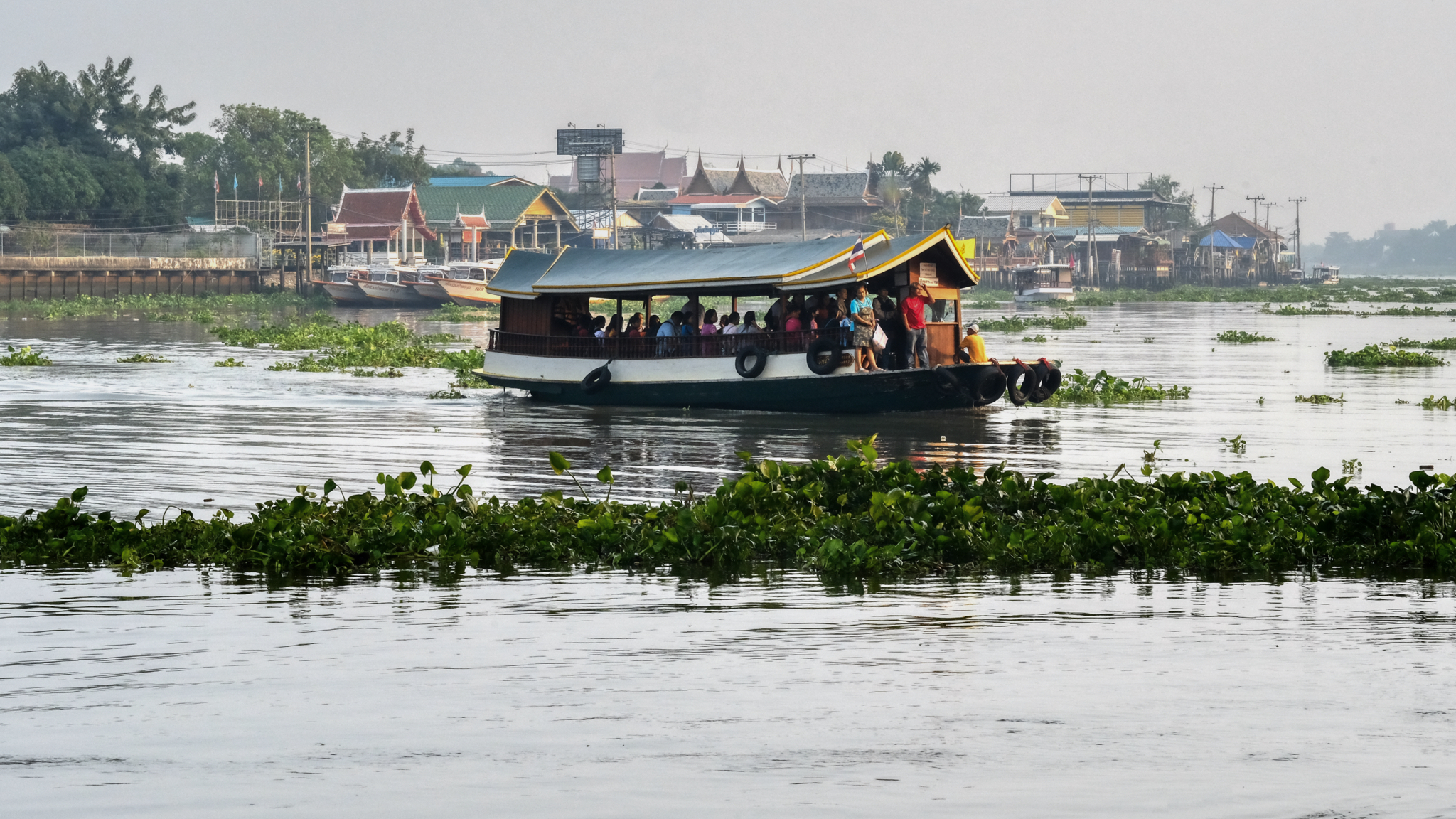 I join in a mass movement of people on their way to work along, on, and across the Chao Phraya River. Here a 3 baht ferry.
I join in a mass movement of people on their way to work along, on, and across the Chao Phraya River. Here a 3 baht ferry.
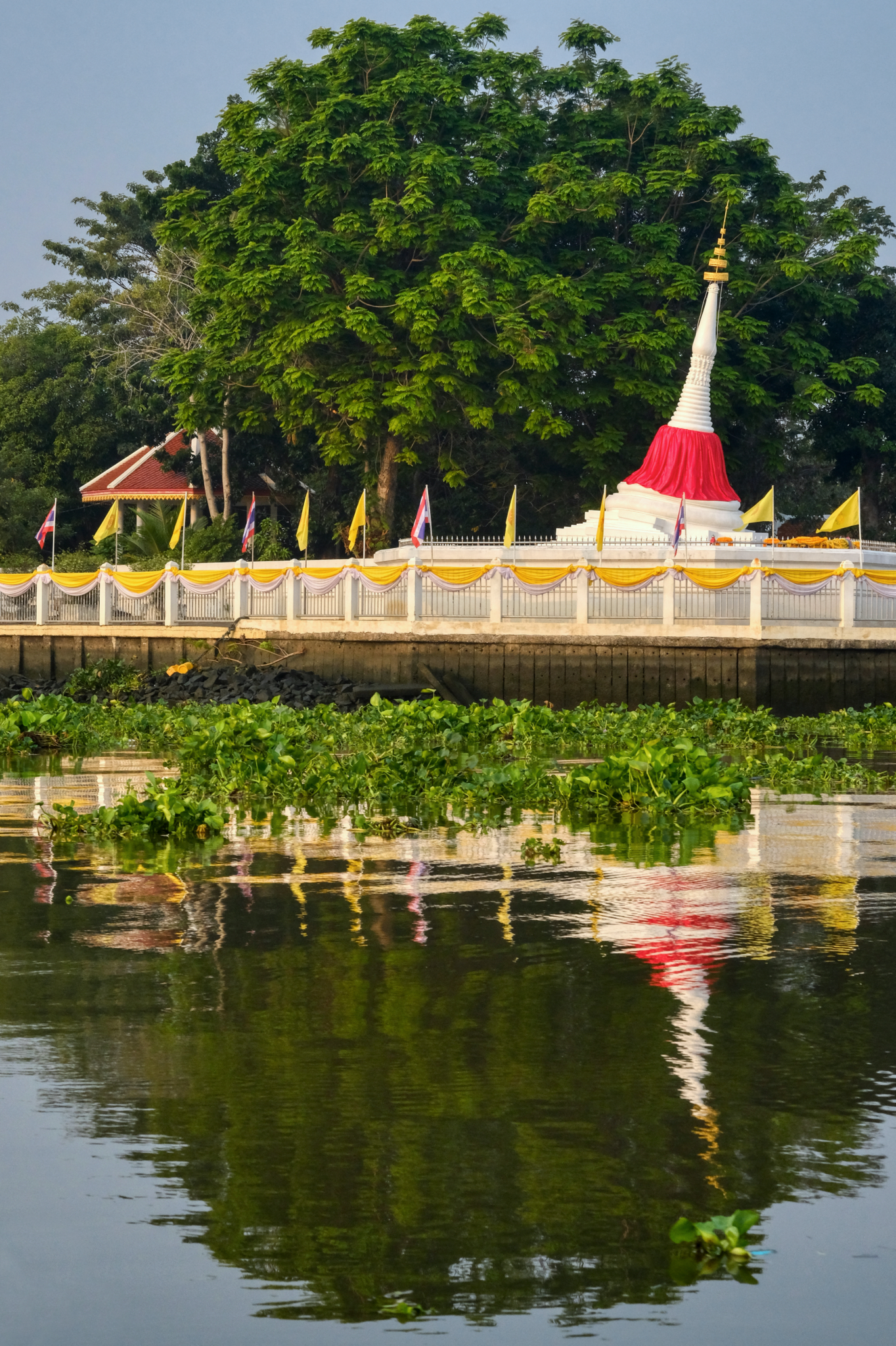 The journey down river begins by passing through a narrow 'cut' canal in the river that passes a beautiful, and sacred, tilted chedi on the point of Koh Kret (island) at Wat Poramai Yikawat.
The journey down river begins by passing through a narrow 'cut' canal in the river that passes a beautiful, and sacred, tilted chedi on the point of Koh Kret (island) at Wat Poramai Yikawat.
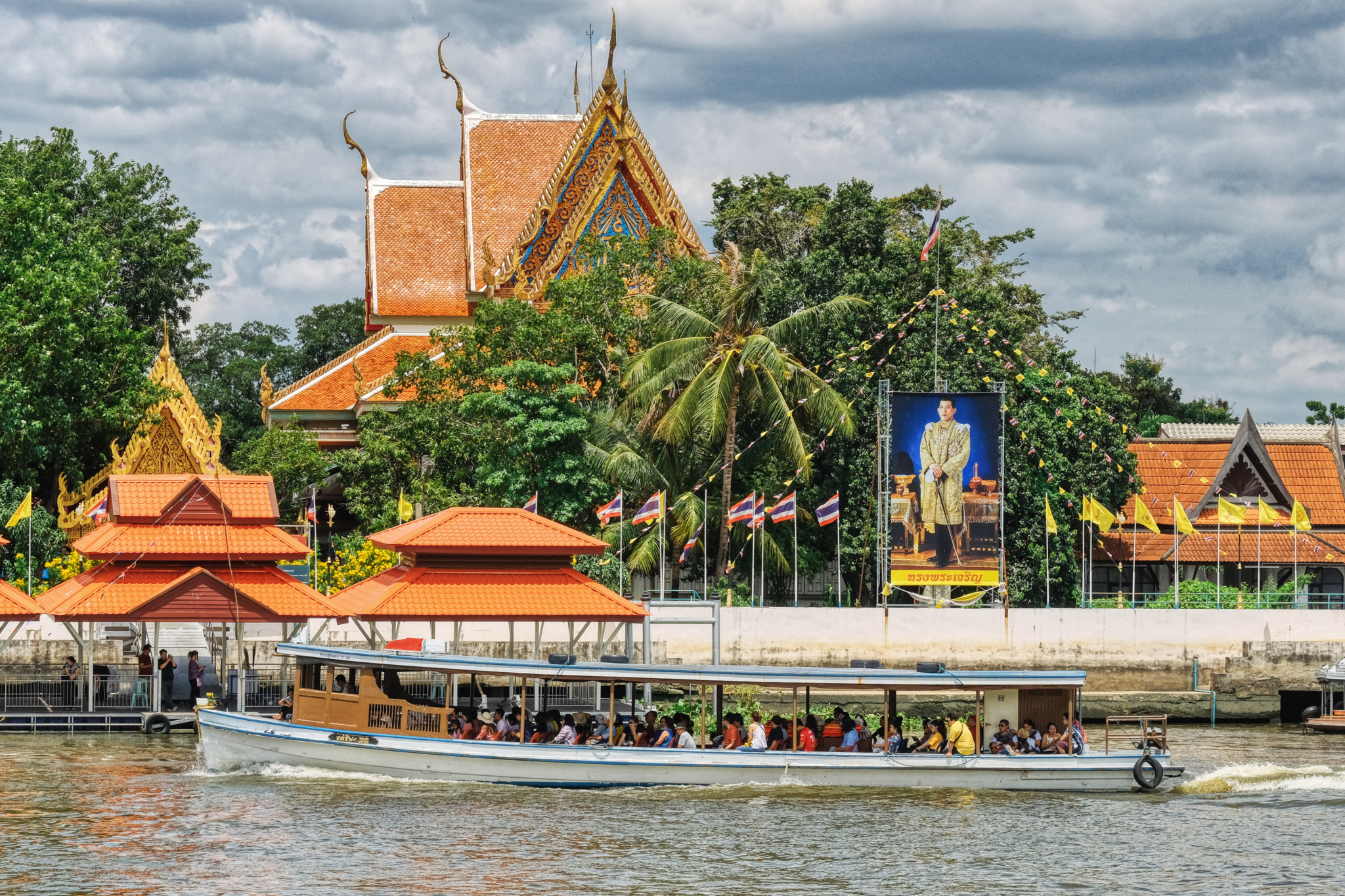 Facing Koh Kret is the magnificent Wat Sanam Nuea and a ferry terminal . . . the main way to get to the island.
Facing Koh Kret is the magnificent Wat Sanam Nuea and a ferry terminal . . . the main way to get to the island.
 There is a continuous line of houses up on stilts along the Koh Kret cut. This is what my daily mundane life looks like . . . my supramundane.
There is a continuous line of houses up on stilts along the Koh Kret cut. This is what my daily mundane life looks like . . . my supramundane.

I know these houses by heart . . . I 'study' them every morning in the calm serenity and languid humidity of the tropical morning.
 My express boat rattles some, and its old diesel engine chugs along in a rhythmic manner . . . but it's cadences are broken when a long-tail boat, a kind of hot rod river taxi, roars past. What a way to get to school or market!
My express boat rattles some, and its old diesel engine chugs along in a rhythmic manner . . . but it's cadences are broken when a long-tail boat, a kind of hot rod river taxi, roars past. What a way to get to school or market!
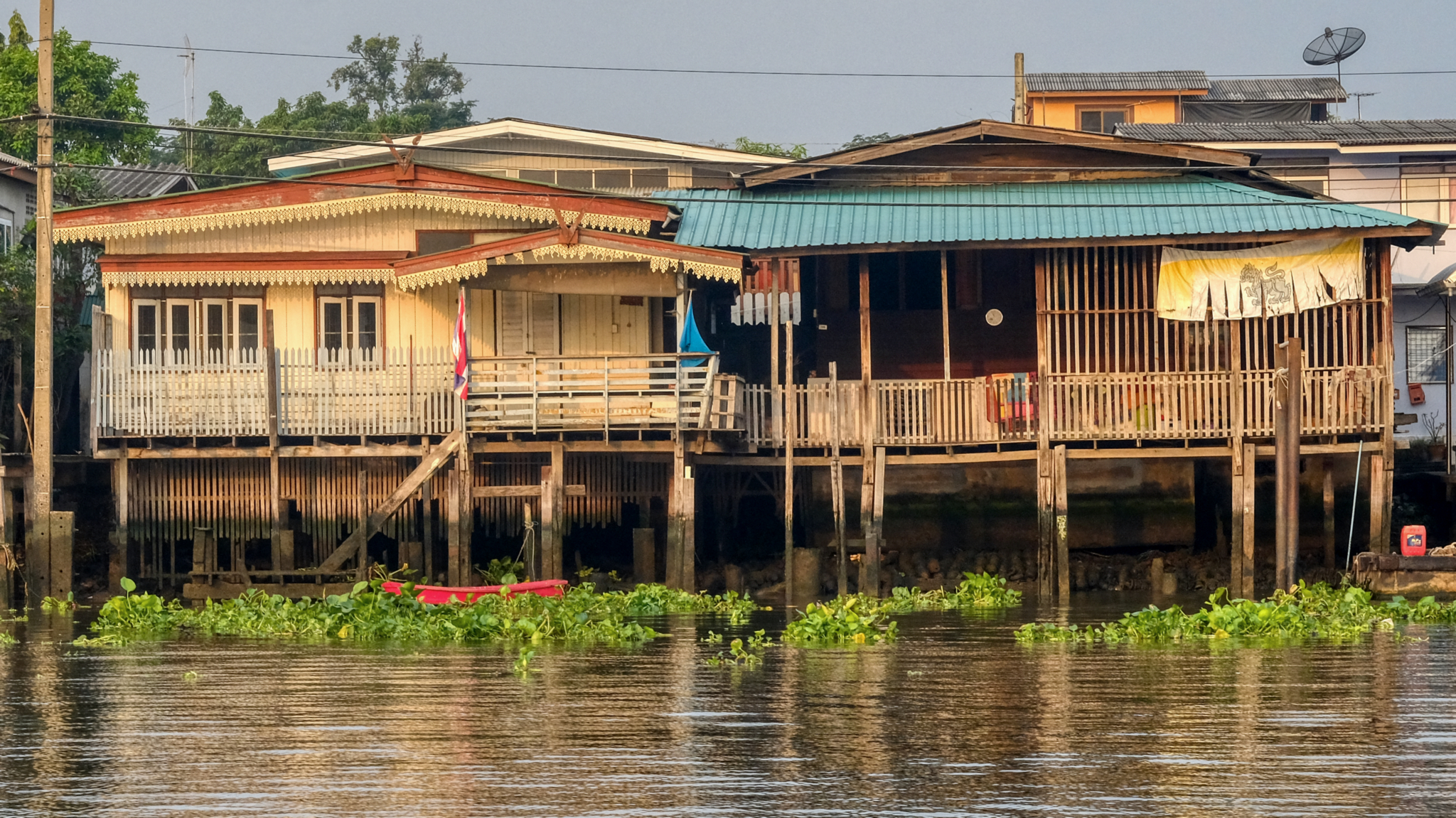
When I moved to Thailand 23 years ago I spent a good deal of time for two years trying to find one of these river houses to rent . . . and never could find one.
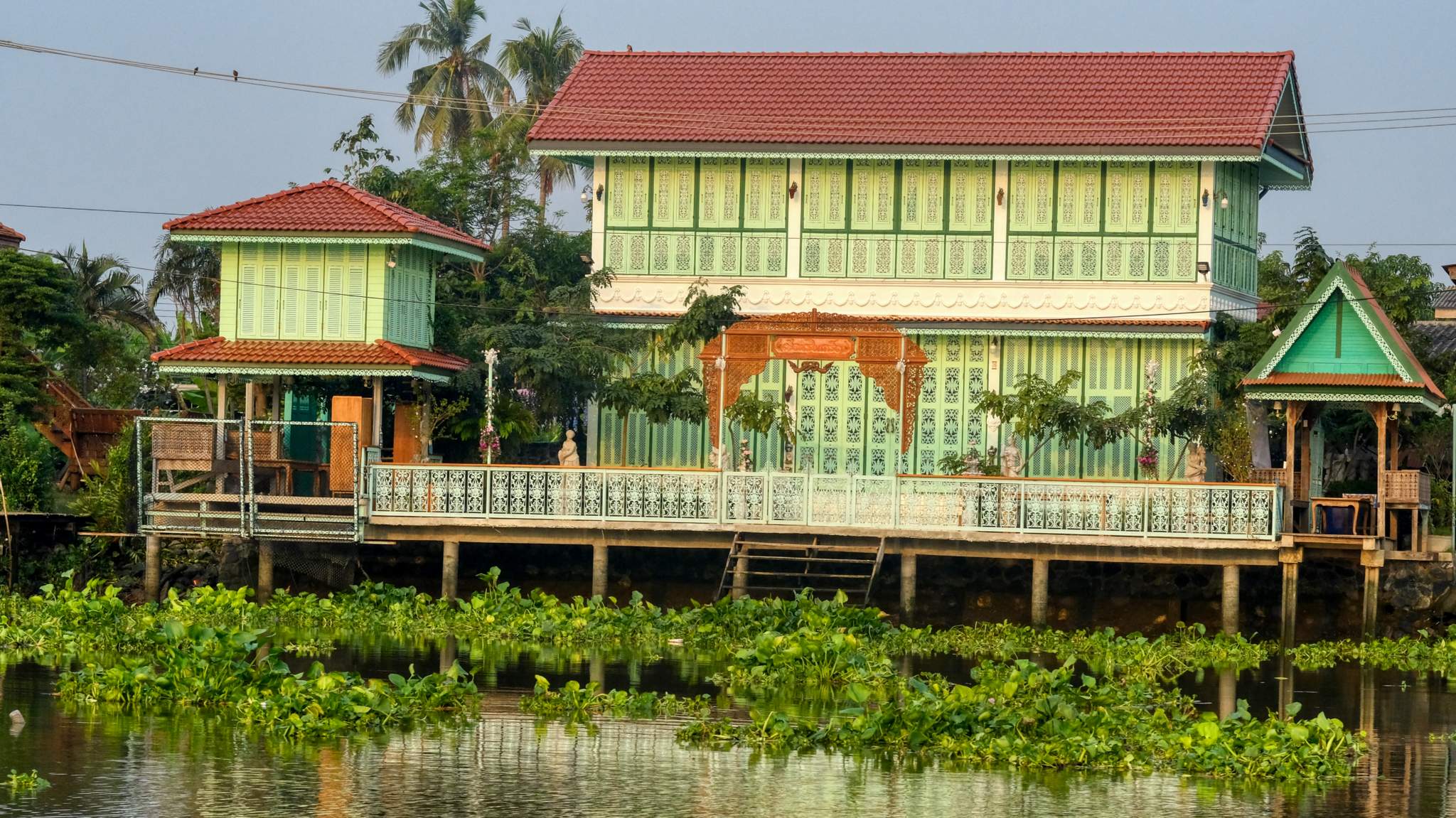 Every morning I have been watching this new construction of a traditional Thai-style house going up on the island side of the canal. Beautiful. I want to live here.
Every morning I have been watching this new construction of a traditional Thai-style house going up on the island side of the canal. Beautiful. I want to live here.
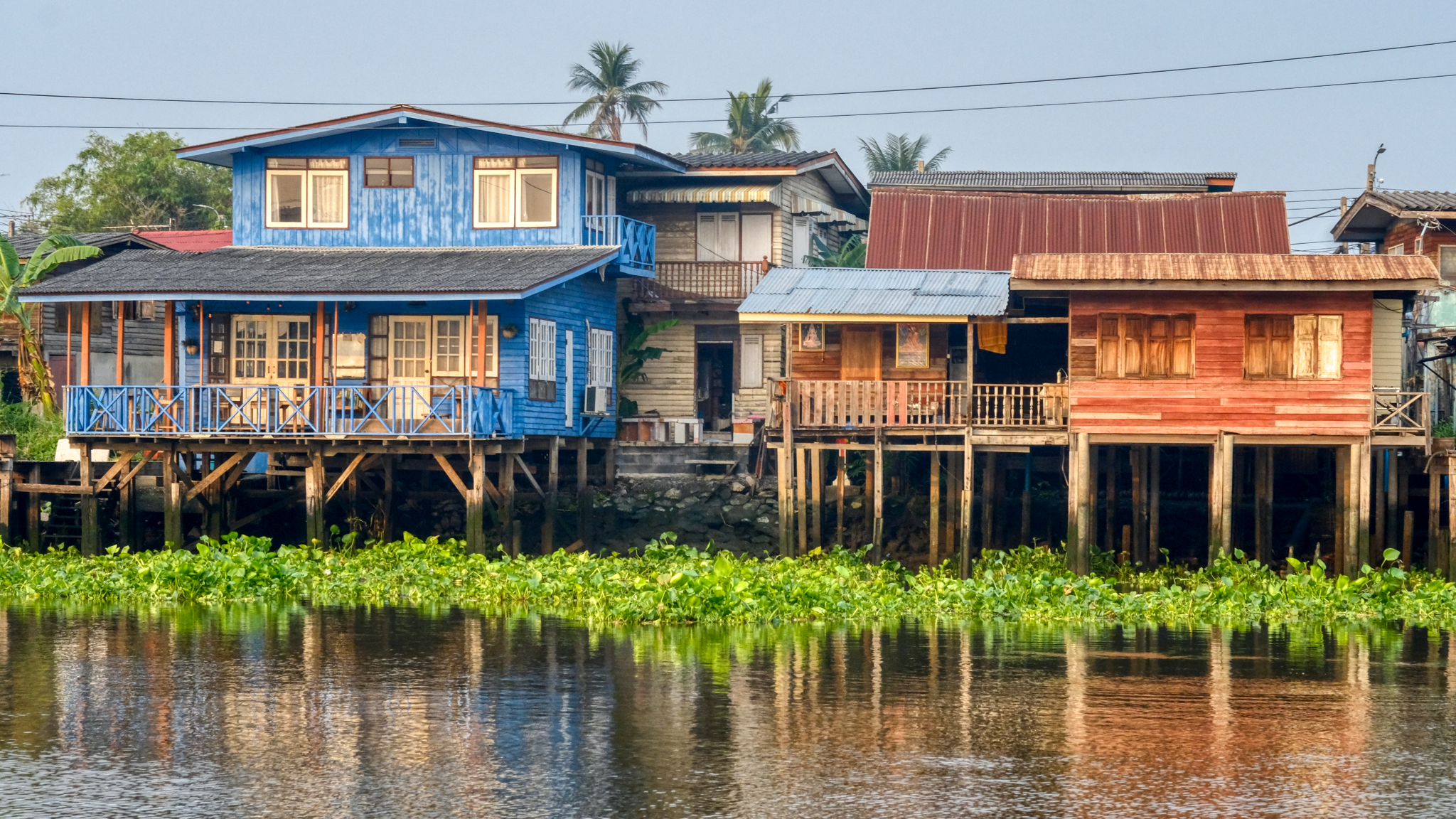 I can see myself sitting on one of these porches watching the boats go by . . . but this dream is not to be.
I can see myself sitting on one of these porches watching the boats go by . . . but this dream is not to be.
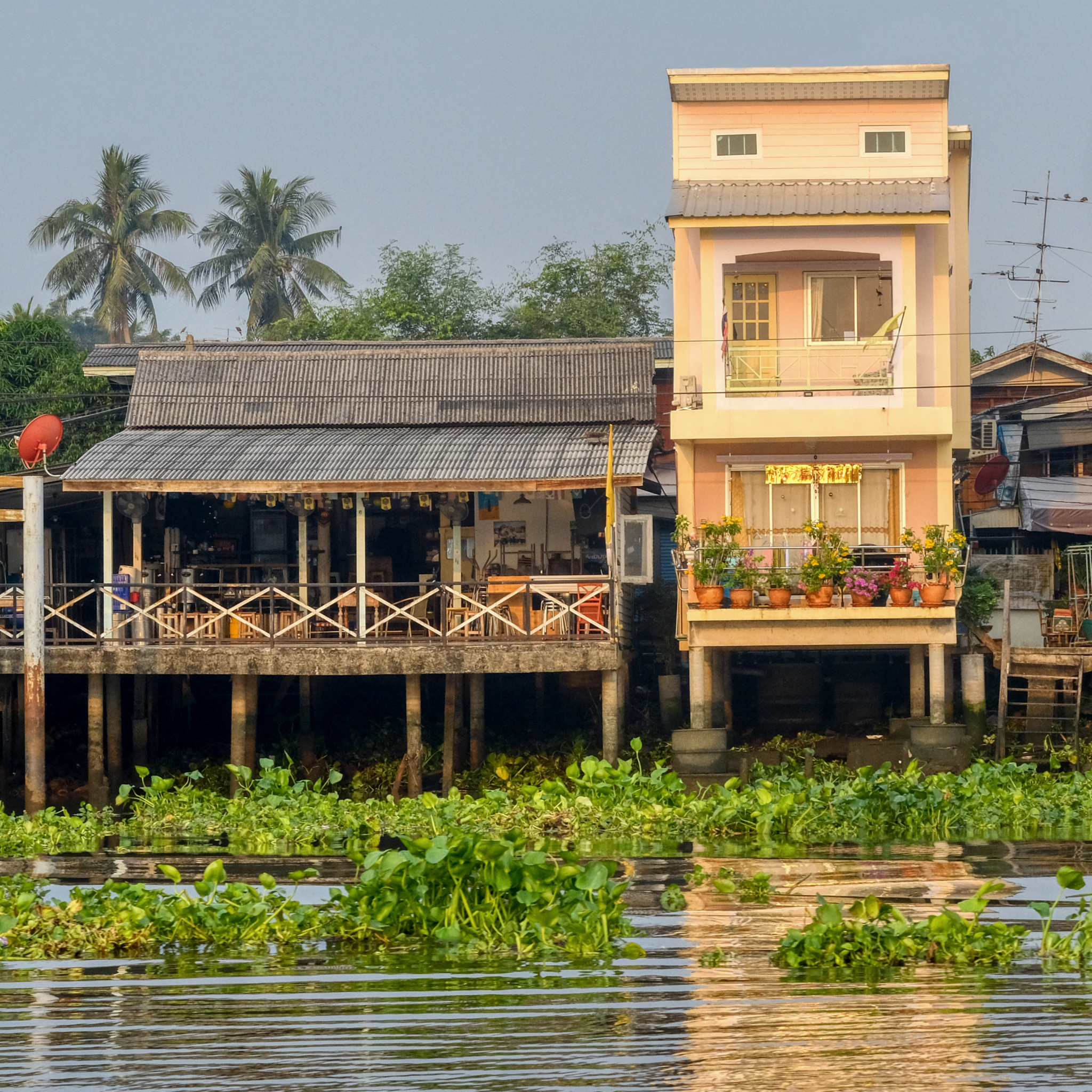 There is a charming mixture of houses along the canal: a traditional restaurent beside a stick and stucco modern house.
There is a charming mixture of houses along the canal: a traditional restaurent beside a stick and stucco modern house.
 All along the canal small ferries offer a 'short cut' off the island.
All along the canal small ferries offer a 'short cut' off the island.
 On most mornings these small ferries are full of school children on their way to school.
On most mornings these small ferries are full of school children on their way to school.
 The river is itself a busy part of the city in places. Here a collection of work boats busily raising the banks of the river.
The river is itself a busy part of the city in places. Here a collection of work boats busily raising the banks of the river.
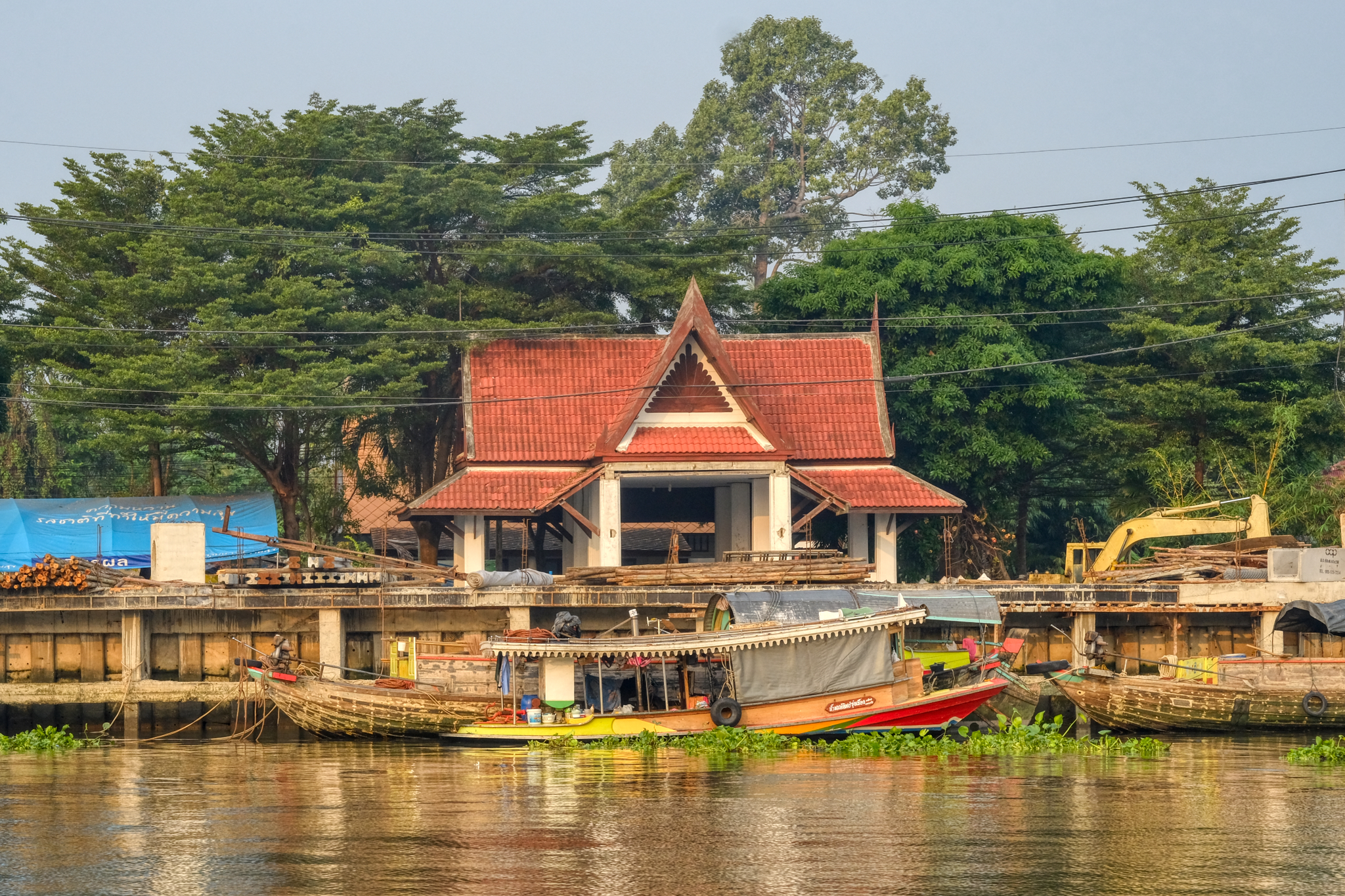 The river, even here at 75 miles from the ocean (Gulf of Thailand), is estuarial. As such, it is subject to the effects of climate change and sea level rise. The city and national government are making a huge effort to raise the banks along many, many miles of the river.
The river, even here at 75 miles from the ocean (Gulf of Thailand), is estuarial. As such, it is subject to the effects of climate change and sea level rise. The city and national government are making a huge effort to raise the banks along many, many miles of the river.
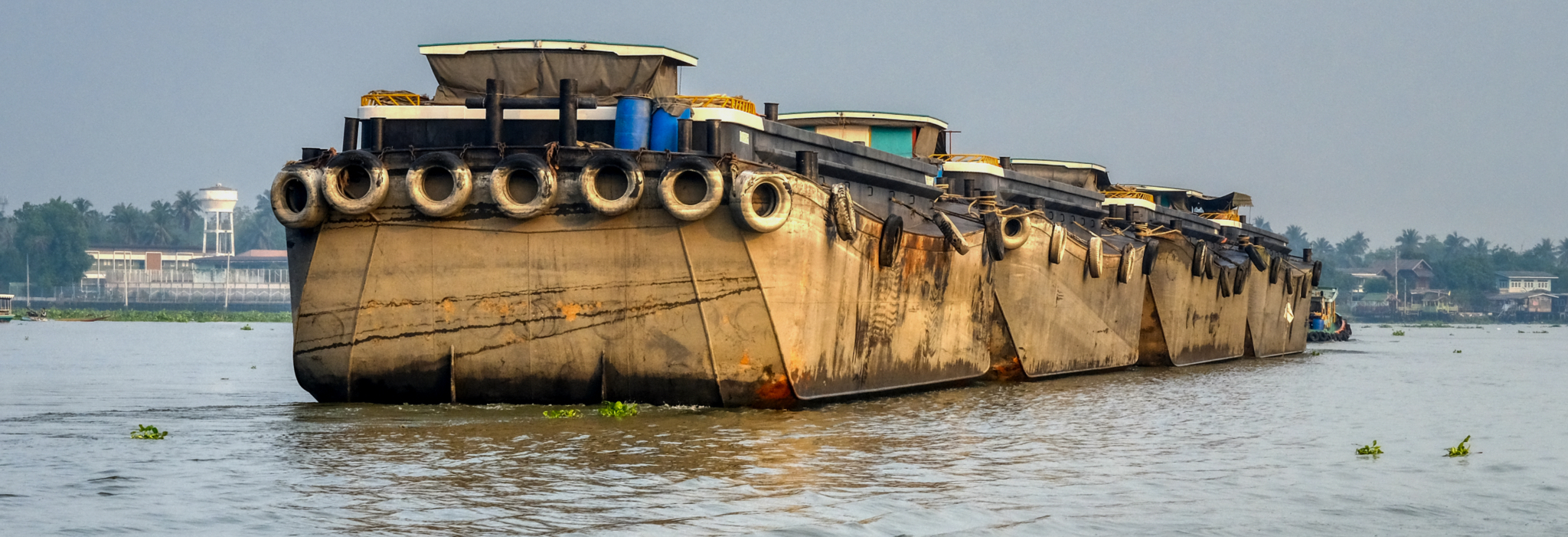 One of the great sights on the river each morning are the coming and goings of the barge trains, always four barges long. These barges are empty and sitting high in the water . . . easily managed by a single tug boat on the ebb tide.
One of the great sights on the river each morning are the coming and goings of the barge trains, always four barges long. These barges are empty and sitting high in the water . . . easily managed by a single tug boat on the ebb tide.
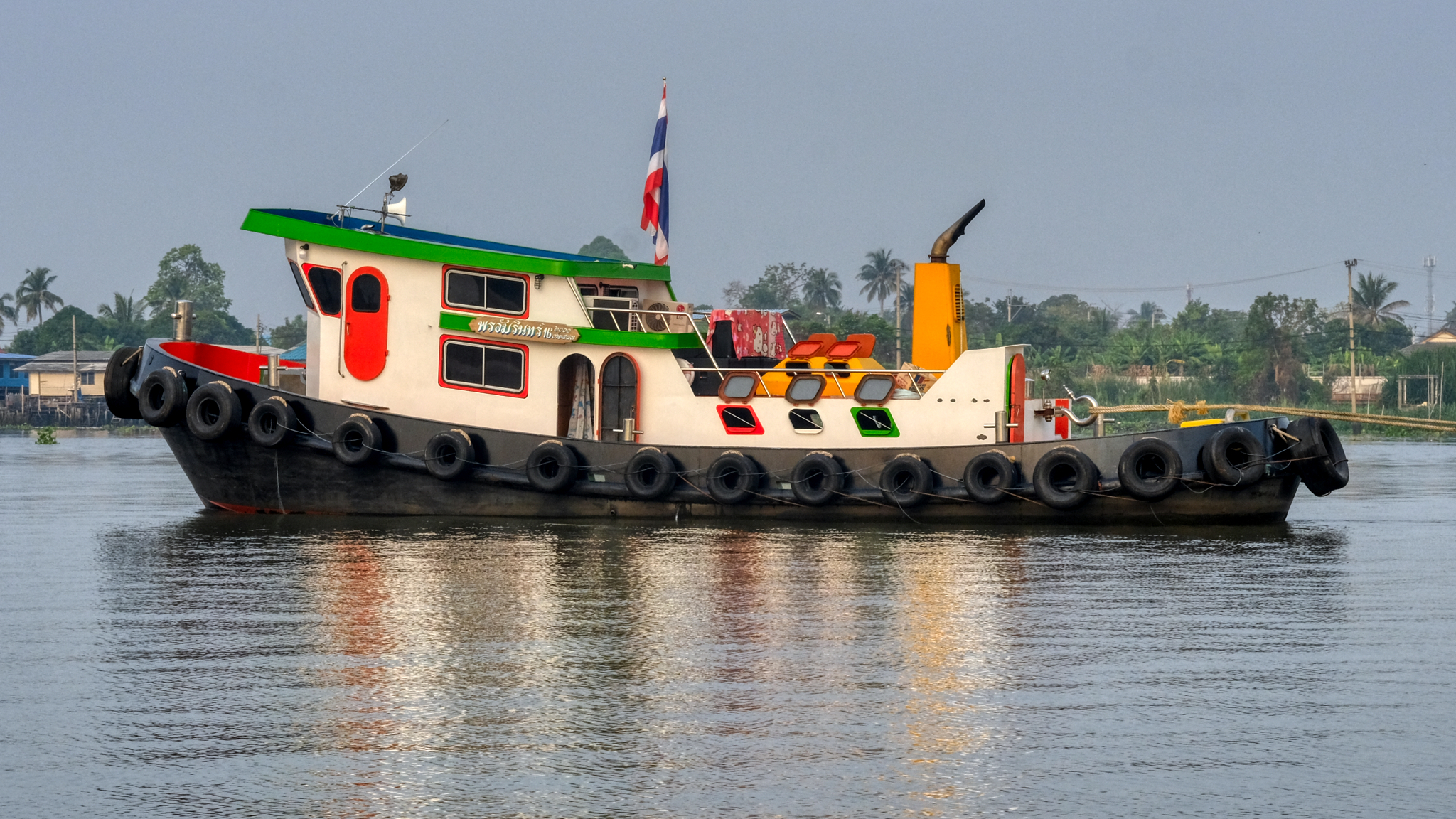 Magnificent and powerful: a Chao Phraya River tug boat.
Magnificent and powerful: a Chao Phraya River tug boat.
 Many fabulous Buddhist wats can be seen on my morning journey.
Many fabulous Buddhist wats can be seen on my morning journey.
 A loaded barge train passes a giant Buddha statue. I watched this colossal Buddha being built over the last three years from my seat on the express boat. It is now finished. I must make a pilgrimage to this wat soon to pay my respects and make a donation in thanks for the wonderful reminder it provides every morning to make something of my consciousness.
A loaded barge train passes a giant Buddha statue. I watched this colossal Buddha being built over the last three years from my seat on the express boat. It is now finished. I must make a pilgrimage to this wat soon to pay my respects and make a donation in thanks for the wonderful reminder it provides every morning to make something of my consciousness.
 Traditional Thai architecture, old and new.
Traditional Thai architecture, old and new.
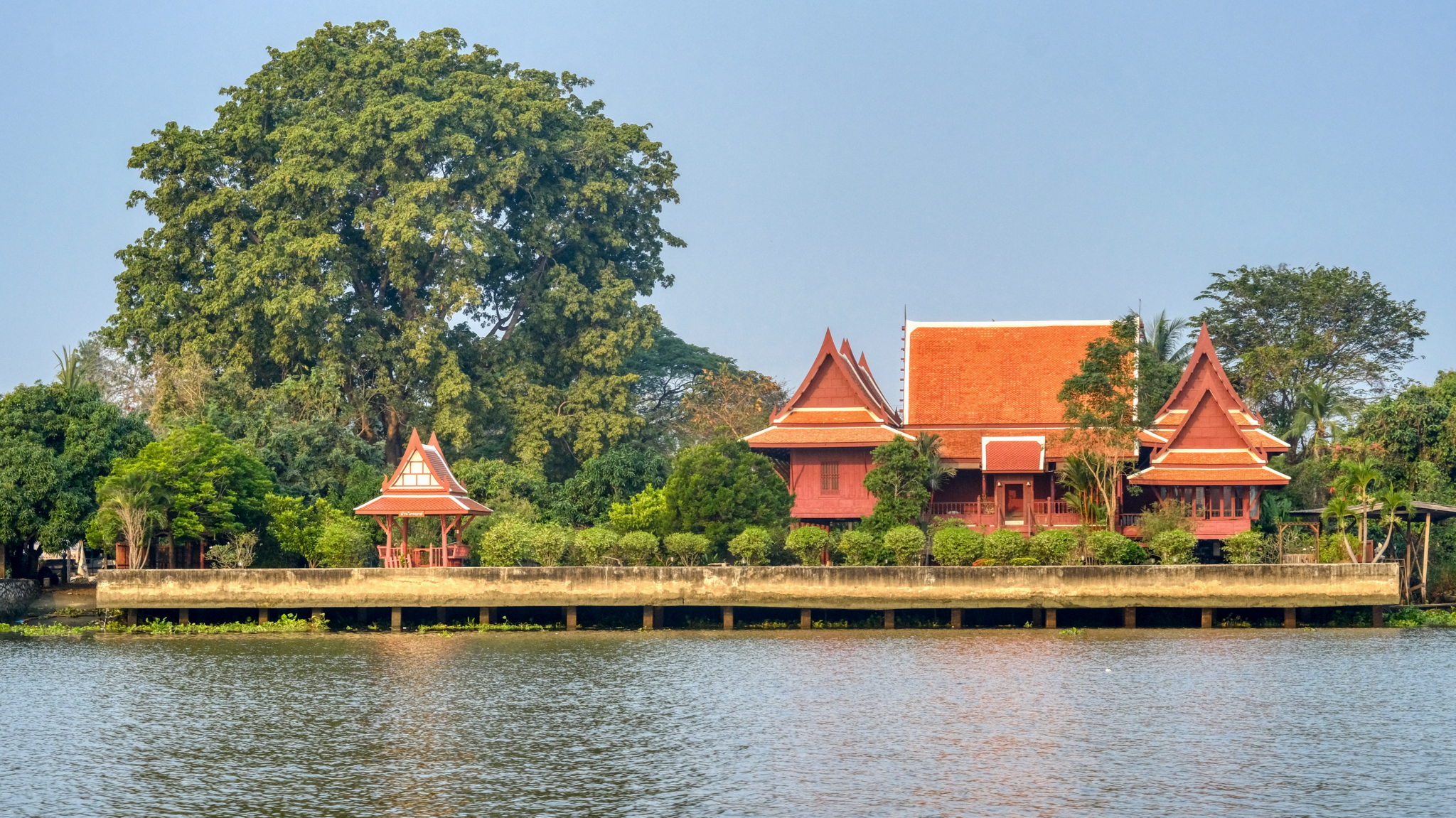 Another of my dream houses. I've been following its renovation from afar for quite some time.
Another of my dream houses. I've been following its renovation from afar for quite some time.
 I pass under four bridges on my way to work.
I pass under four bridges on my way to work.
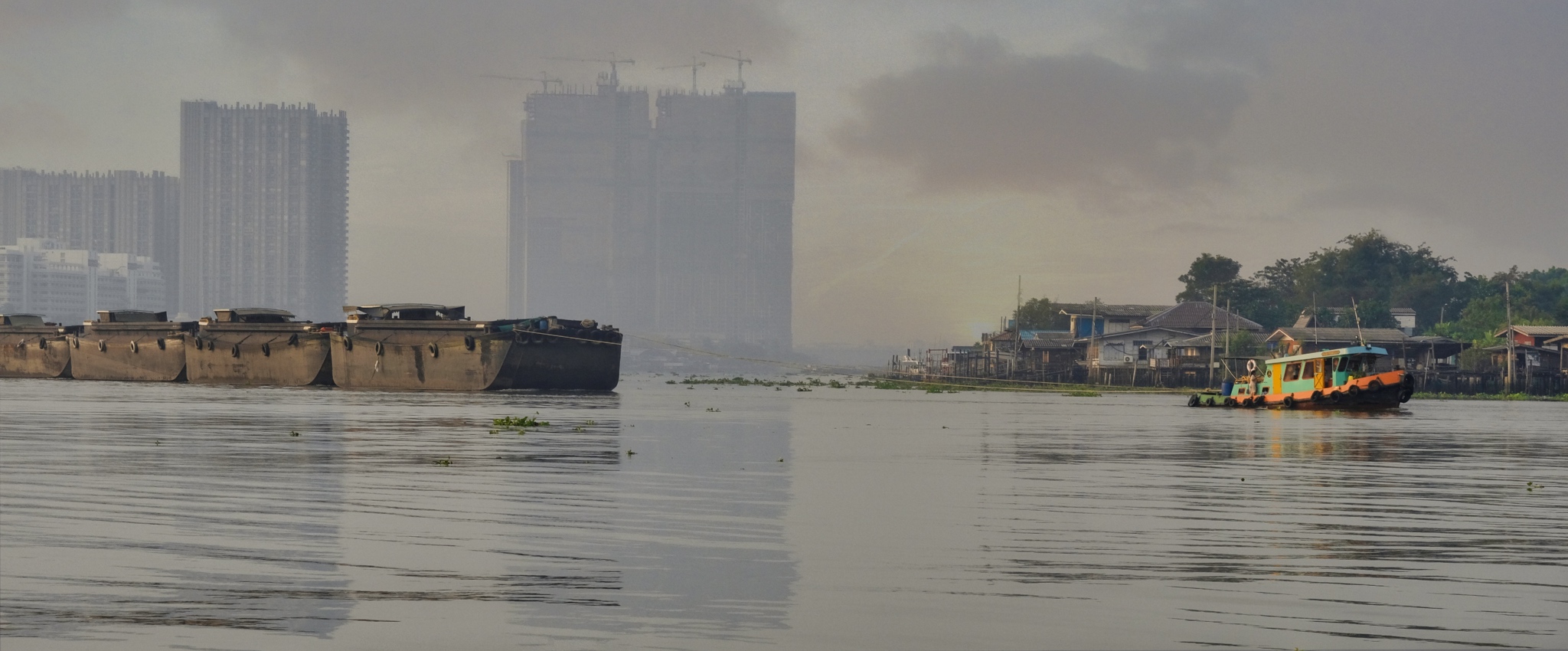 Further down the river and into fast growing Bangkok, a city of 14 million people . . . and the dusty, smoky air that it creates.
Further down the river and into fast growing Bangkok, a city of 14 million people . . . and the dusty, smoky air that it creates.
 The river tug boats come in many sizes and colors.
The river tug boats come in many sizes and colors.
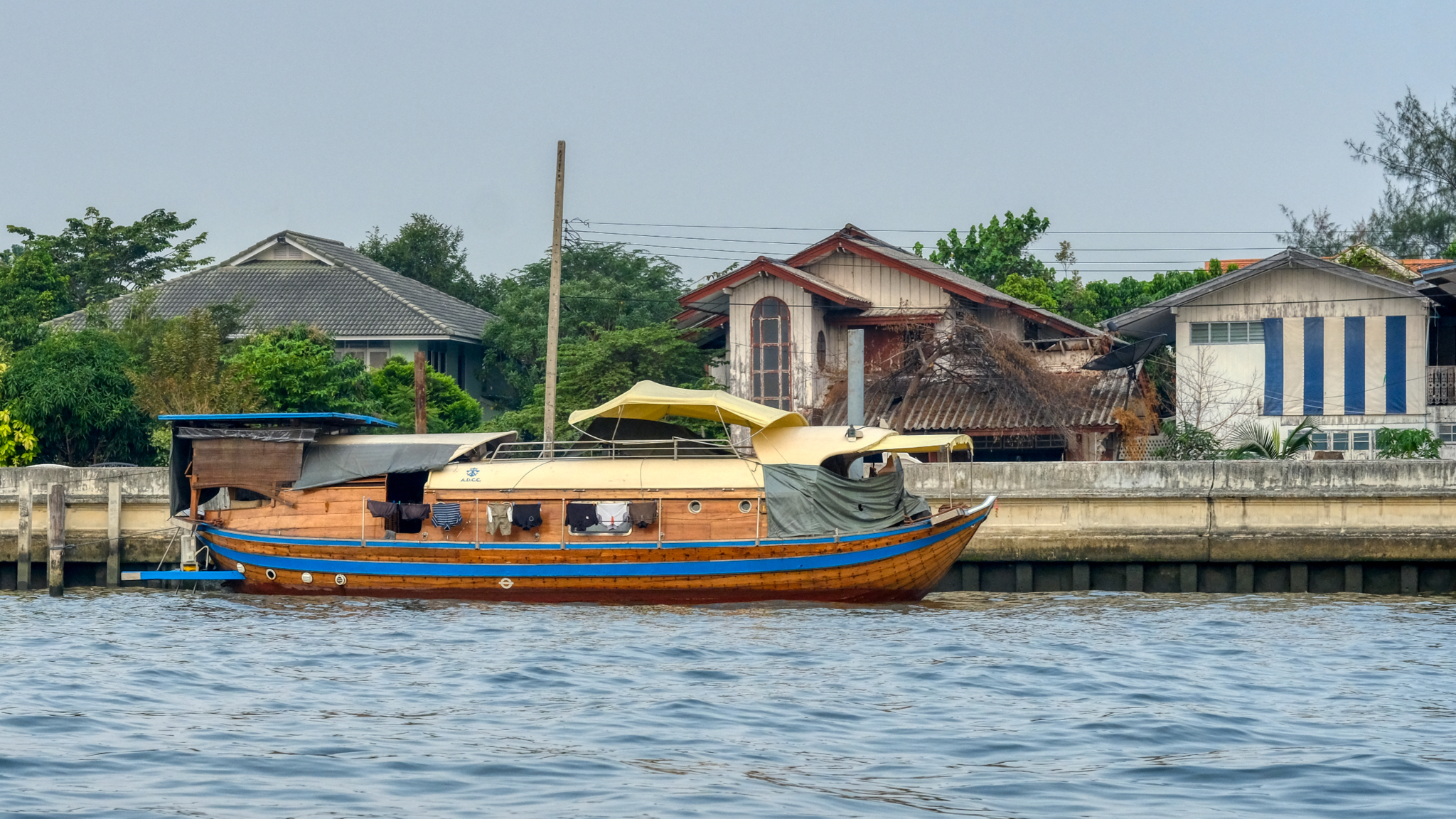 These barges, known as rice barges, were made of teak wood in former days. They are often now converted to self-propelled cabin boats for the tourist trade.
These barges, known as rice barges, were made of teak wood in former days. They are often now converted to self-propelled cabin boats for the tourist trade.
 Whenever I see this particular Buddha image I wai and get up and walk to the disembarkation deck of the express boat; my stop is next.
Whenever I see this particular Buddha image I wai and get up and walk to the disembarkation deck of the express boat; my stop is next.
 This is where I would normally get off the express boat, at the Rama VII Bridge, and walk the remaining one kilometer to my university job . . . but I am travelling on into the city this morning with a friend to see the Pak Khlong Flower Market.
This is where I would normally get off the express boat, at the Rama VII Bridge, and walk the remaining one kilometer to my university job . . . but I am travelling on into the city this morning with a friend to see the Pak Khlong Flower Market.
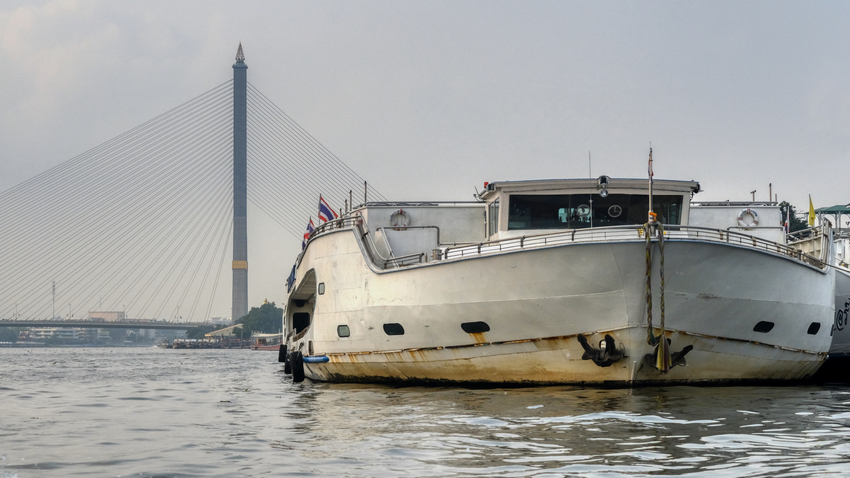 Down near the touristy part of the city are parked the large restaurant barges that specialize in night dining cruises through the lit city. I've done it.
Down near the touristy part of the city are parked the large restaurant barges that specialize in night dining cruises through the lit city. I've done it.
 Many tourist boats on the lower river . . . but almost no tourists in Thailand today. I worry for the Thai people who depend on tourist-related income.
Many tourist boats on the lower river . . . but almost no tourists in Thailand today. I worry for the Thai people who depend on tourist-related income.
 We got off the green flag Chao Phraya Express boat near here. The long-tail boat jockeys maneuvering for a fare.
We got off the green flag Chao Phraya Express boat near here. The long-tail boat jockeys maneuvering for a fare.
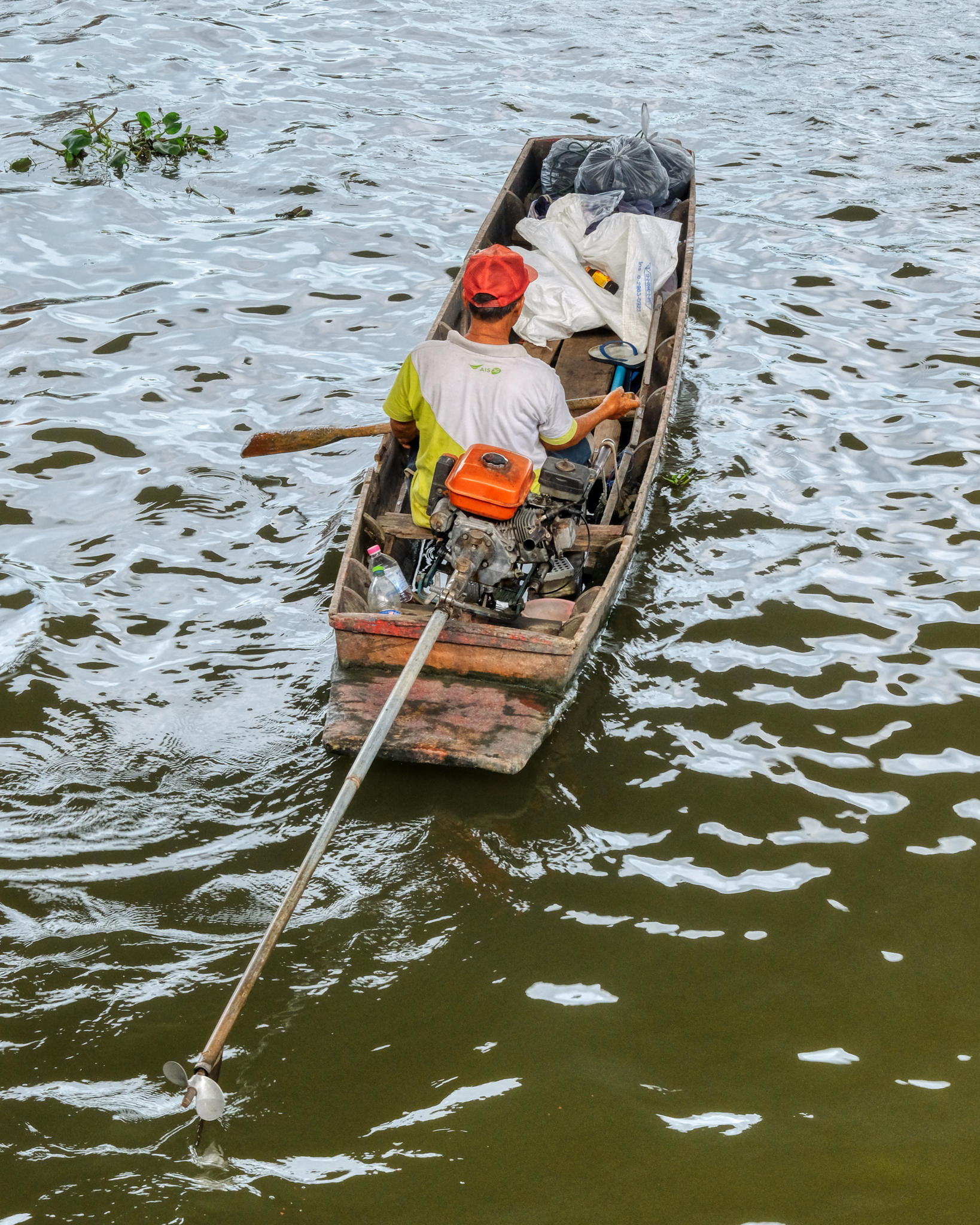
I miss all of this. This is my normal . . .
A New Years Eve Ramble Near Hua Hin, Thailand
 Friday, March 20, 2020 at 2:05PM
Friday, March 20, 2020 at 2:05PM 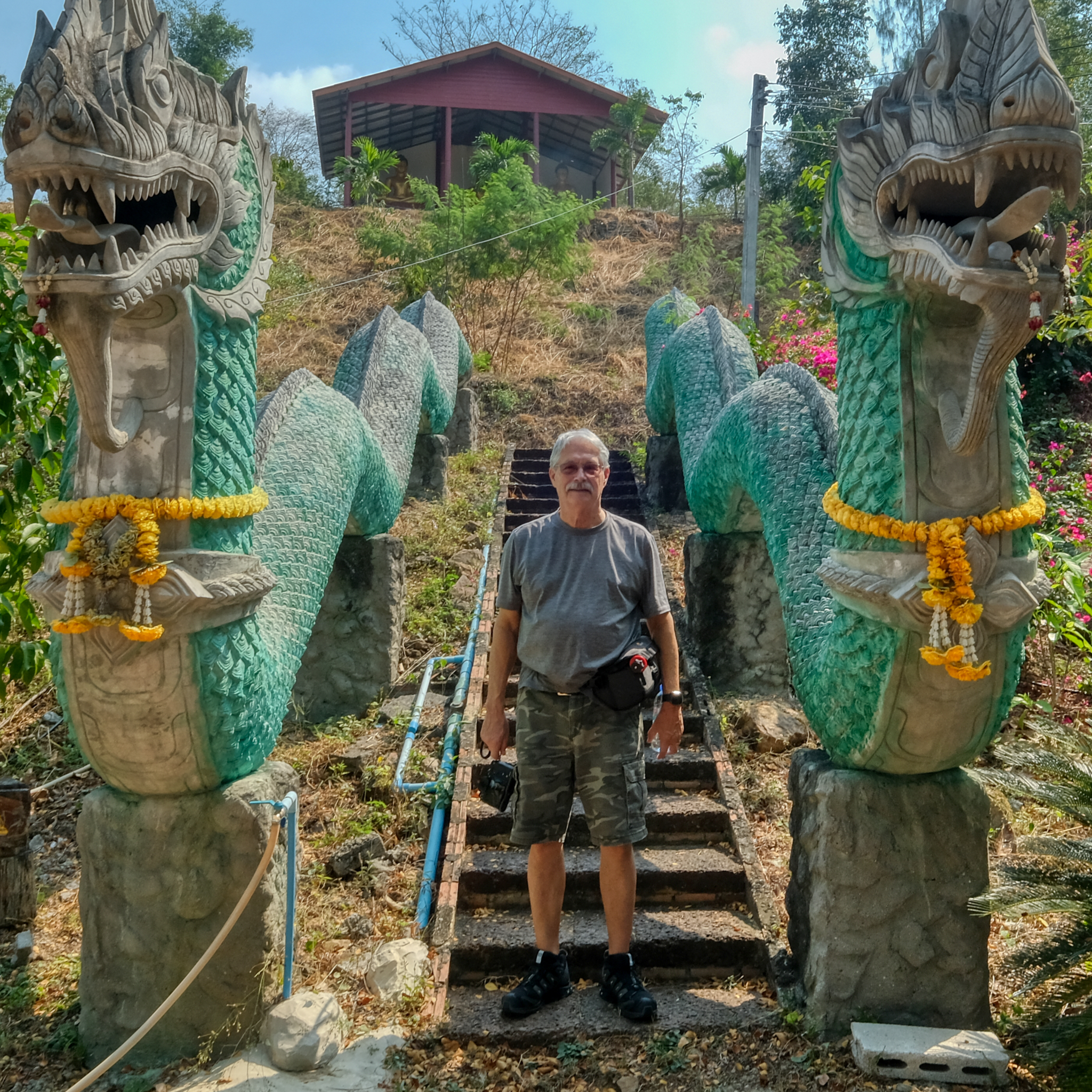 My visiting friend (of 45 years) on the verge of a long climb!
My visiting friend (of 45 years) on the verge of a long climb! A long way up to the chedi.
A long way up to the chedi. 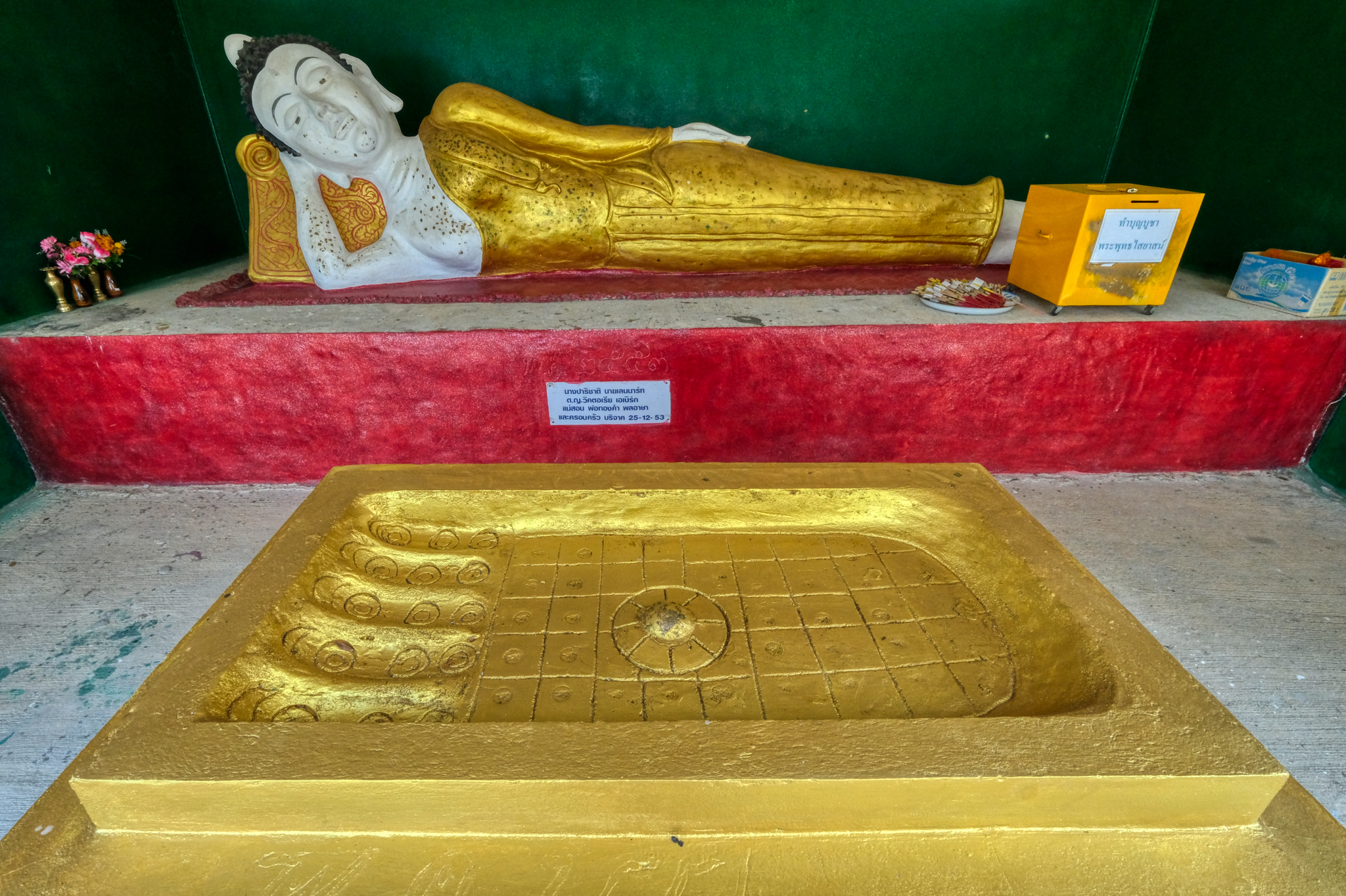 A beautiful shrine with a reclining Buddha on the way up . . .
A beautiful shrine with a reclining Buddha on the way up . . .  This 'naive art' Buddha image was very heartwarming.
This 'naive art' Buddha image was very heartwarming.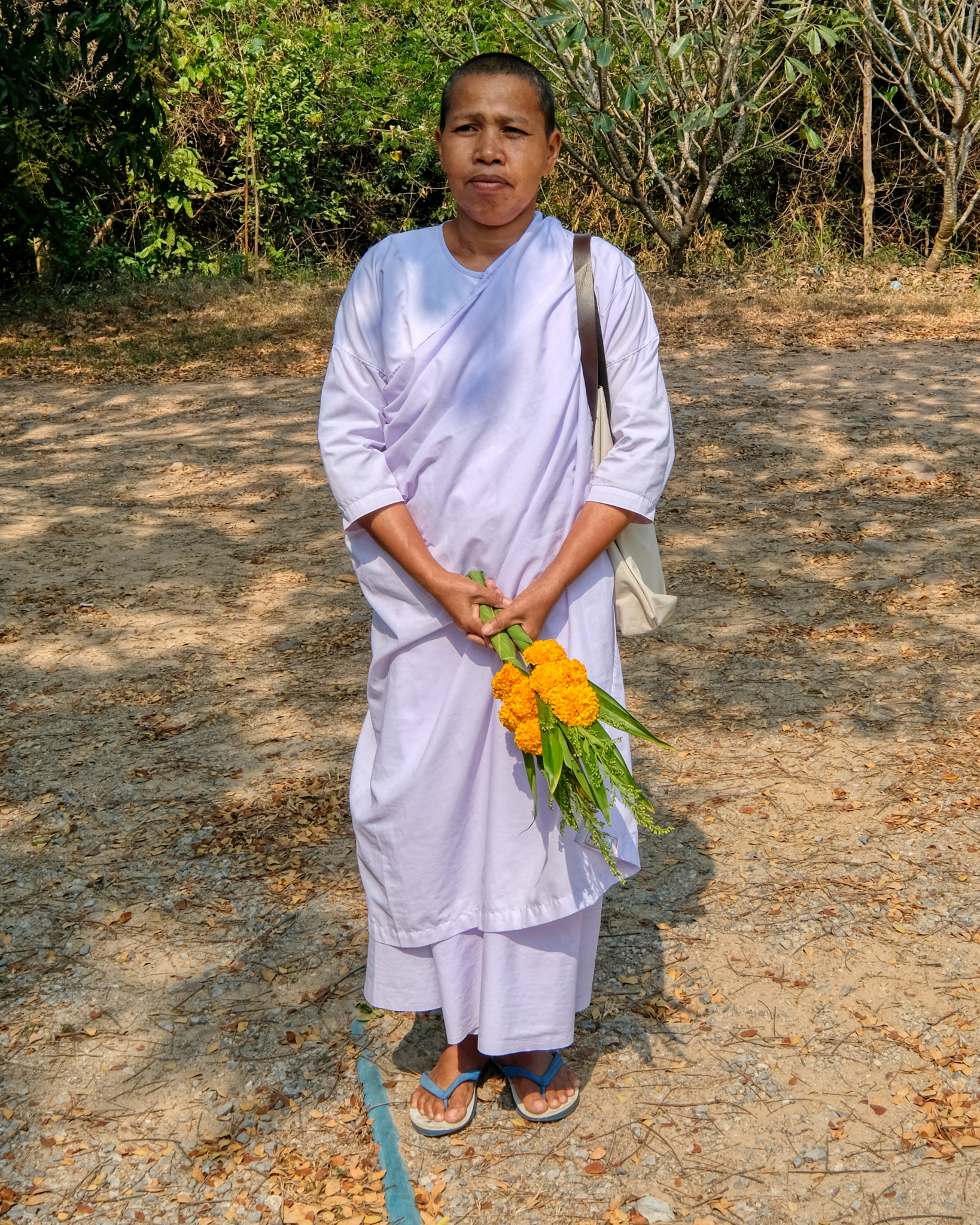 This Buddhist 'nun' followed us around for the afternoon. She is a kind of security guard. Good idea . . . there are some very beautiful and rare Buddha statues in the golden chedi (known as a 'stupa' in other Buddhist trditions and countries).
This Buddhist 'nun' followed us around for the afternoon. She is a kind of security guard. Good idea . . . there are some very beautiful and rare Buddha statues in the golden chedi (known as a 'stupa' in other Buddhist trditions and countries).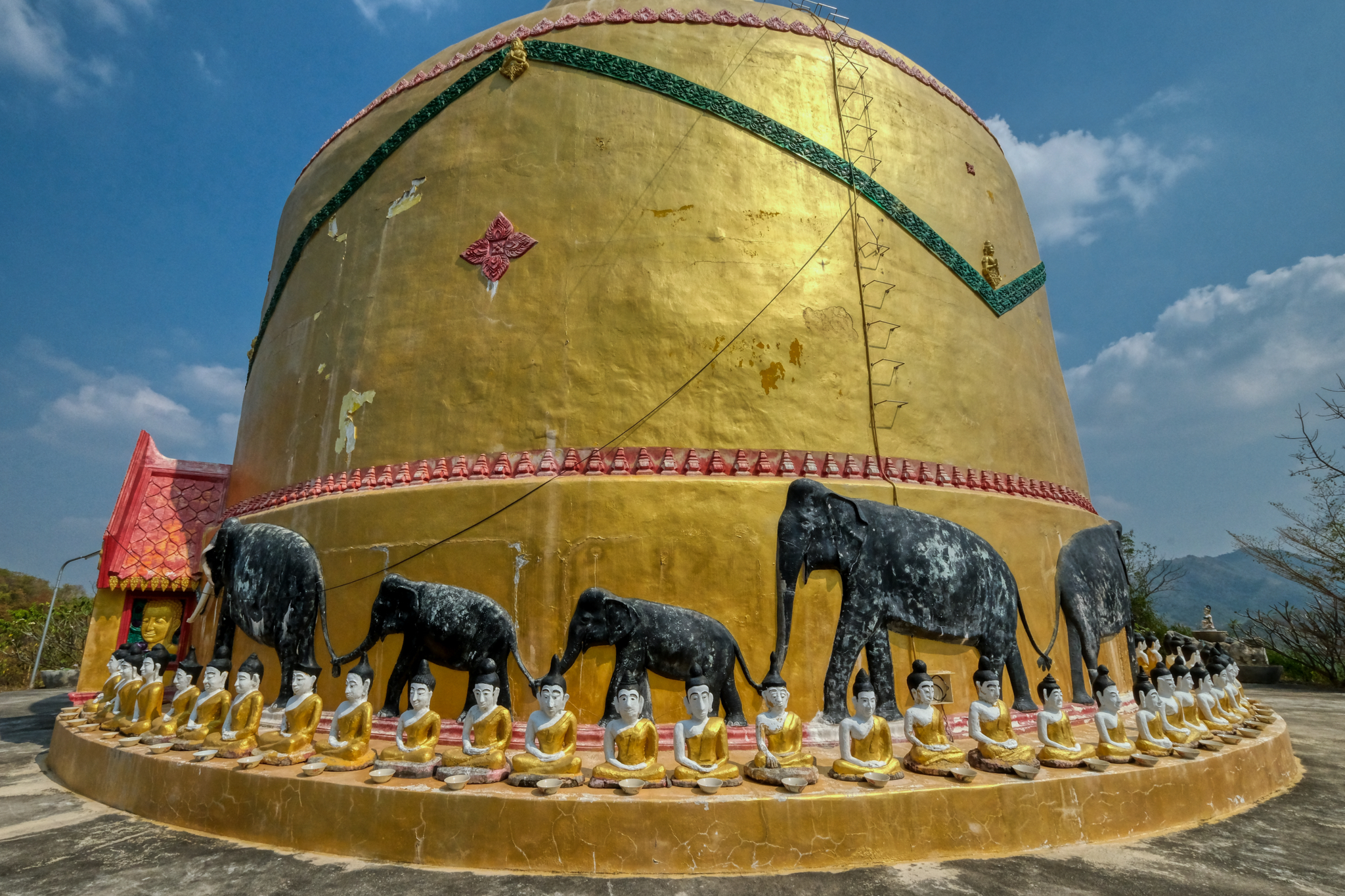 This is what I had taken my friend to see . . . and for me, to see again.
This is what I had taken my friend to see . . . and for me, to see again.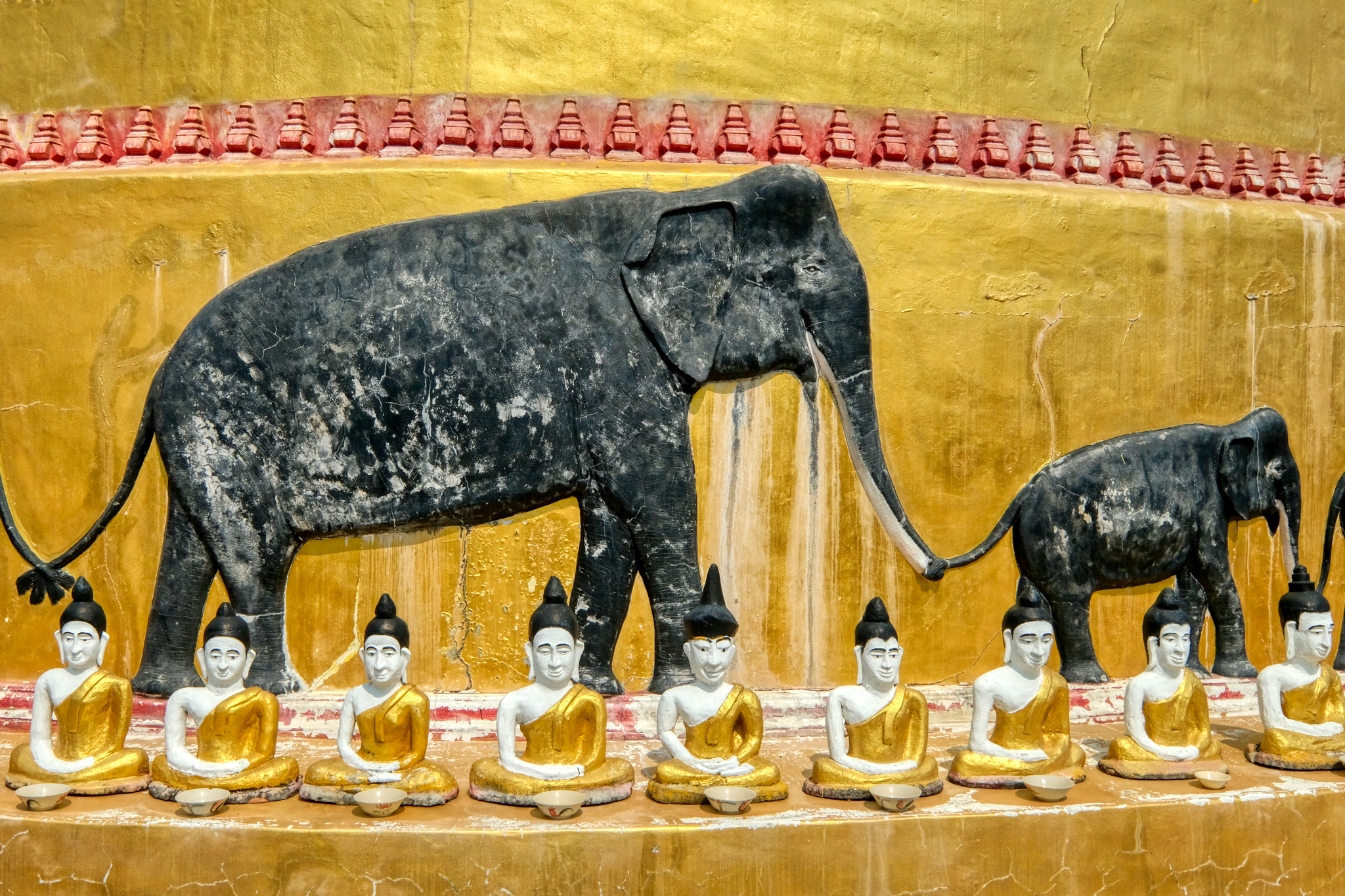 More fascinating, and individualistic, naive art Buddha images. As interesting as the outside of the chedi was, it is the inside that brought me back!
More fascinating, and individualistic, naive art Buddha images. As interesting as the outside of the chedi was, it is the inside that brought me back! Looking into the chedi interior from the front door. WOW!
Looking into the chedi interior from the front door. WOW!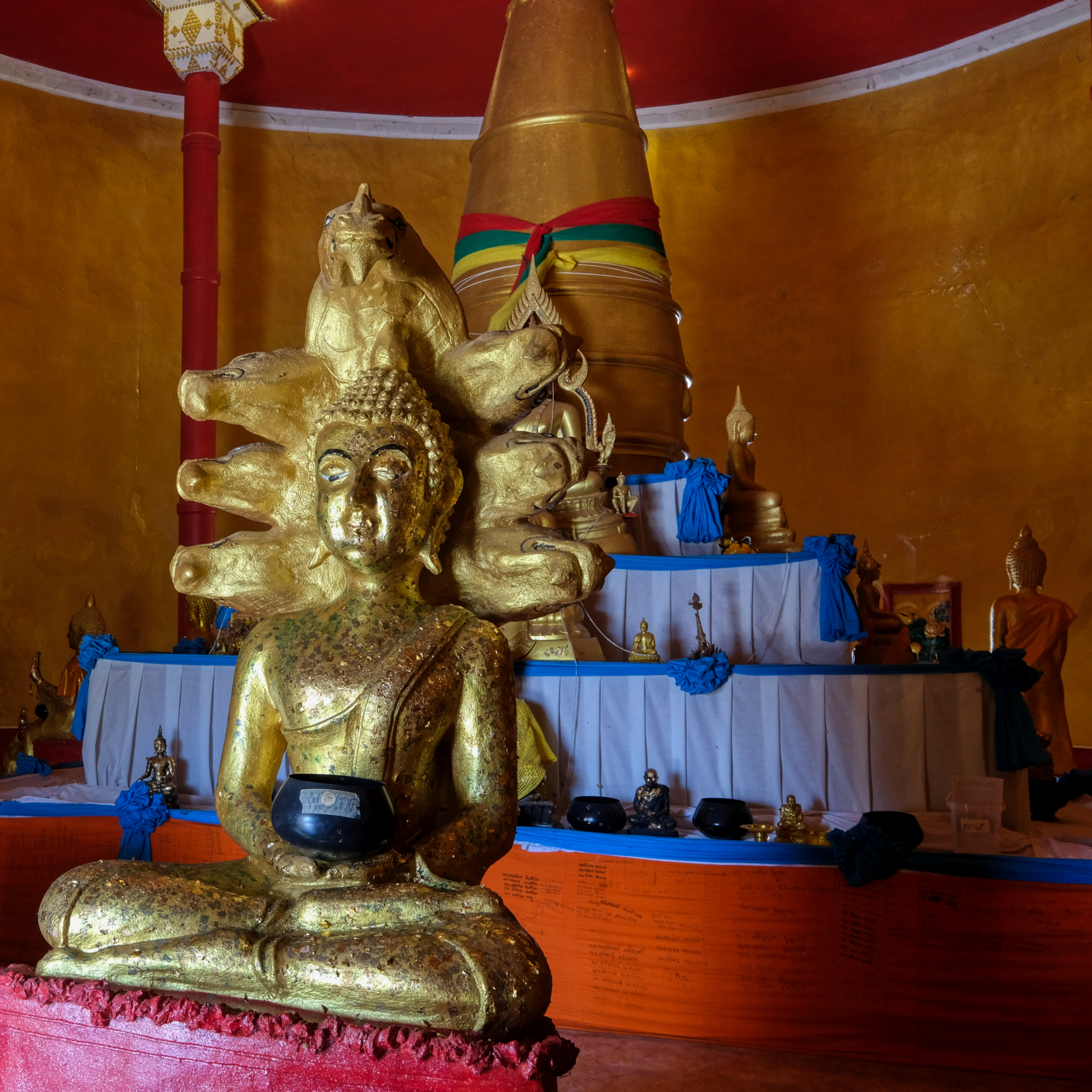 The light was so scrumptious, the images so serene . . .
The light was so scrumptious, the images so serene . . . The front of the entry altar. The big interior in its marvelously bright colors.
The front of the entry altar. The big interior in its marvelously bright colors.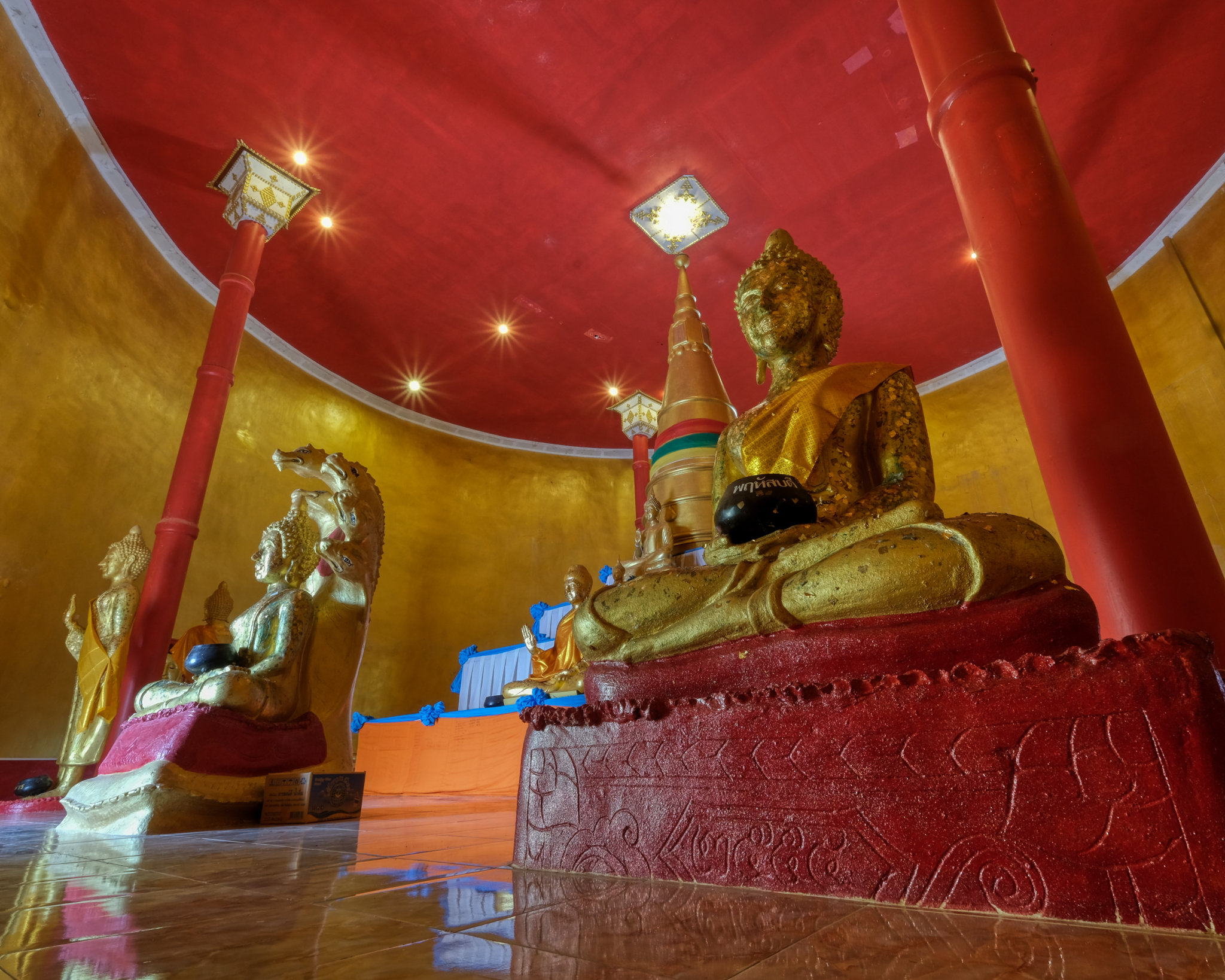 My camera on a small tripod . . . so many superb images to capture.
My camera on a small tripod . . . so many superb images to capture.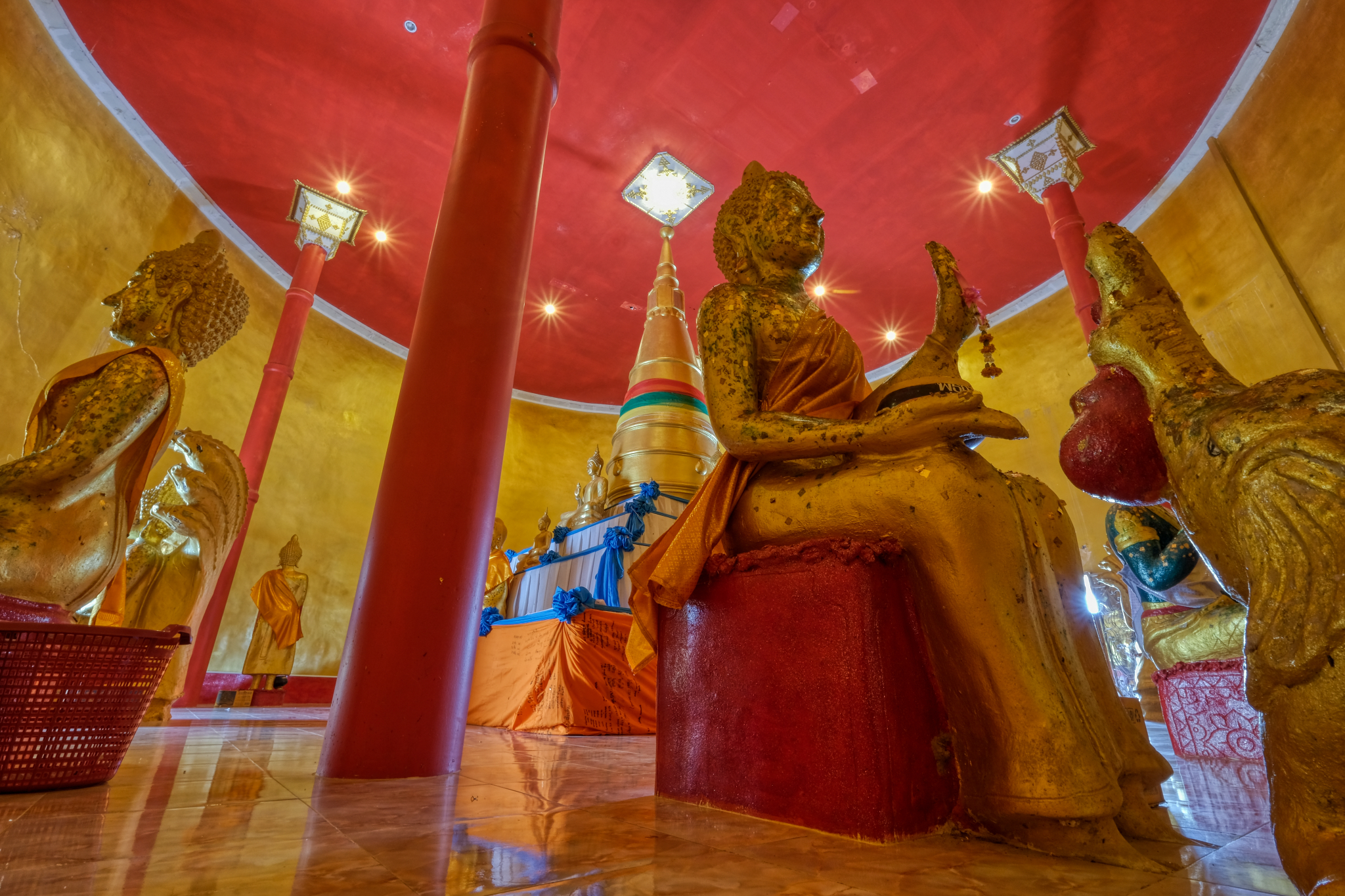
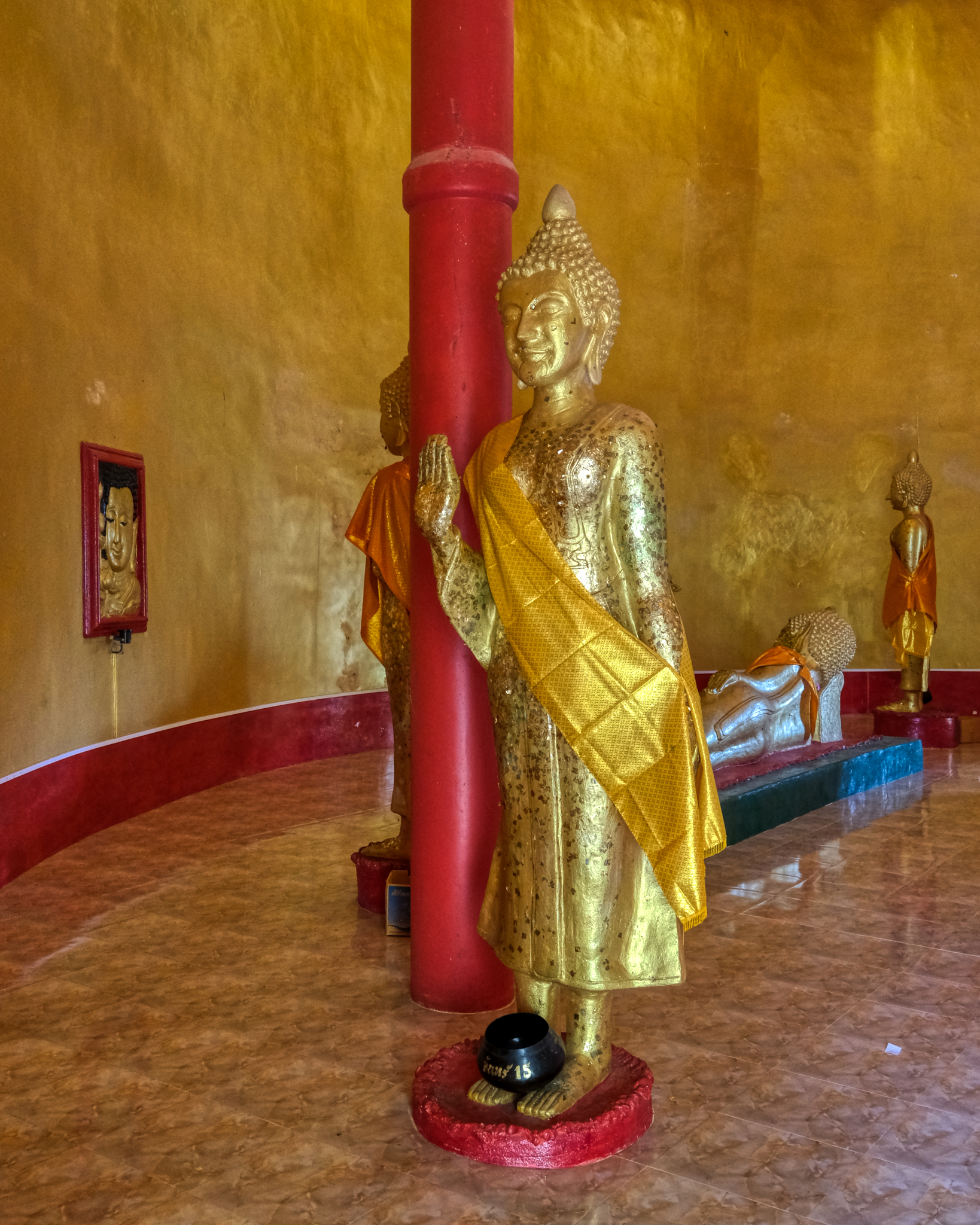 Holding Back The River of samsaric temptation.
Holding Back The River of samsaric temptation.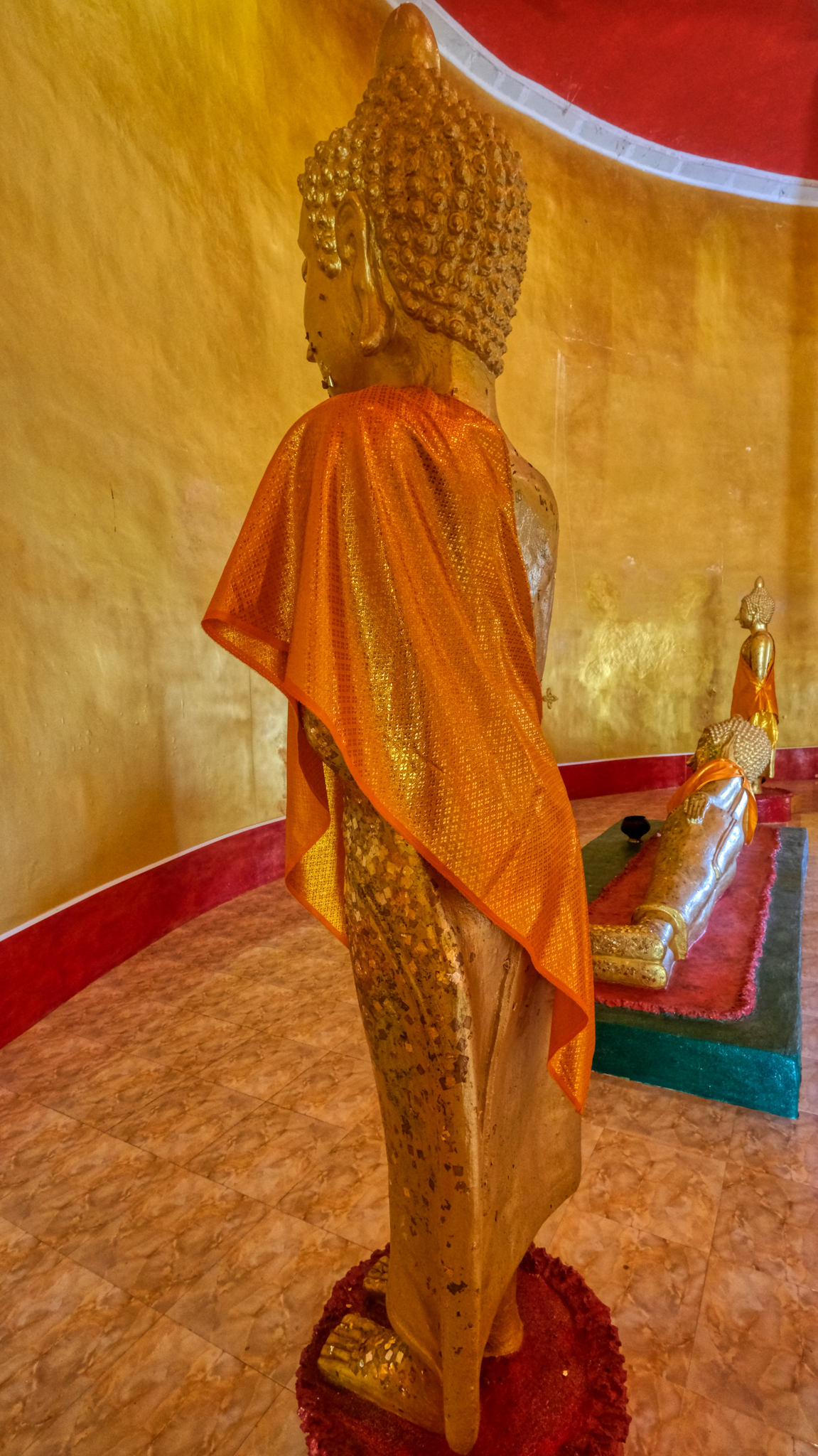 Beautiful spiritual space of Buddhanature.
Beautiful spiritual space of Buddhanature.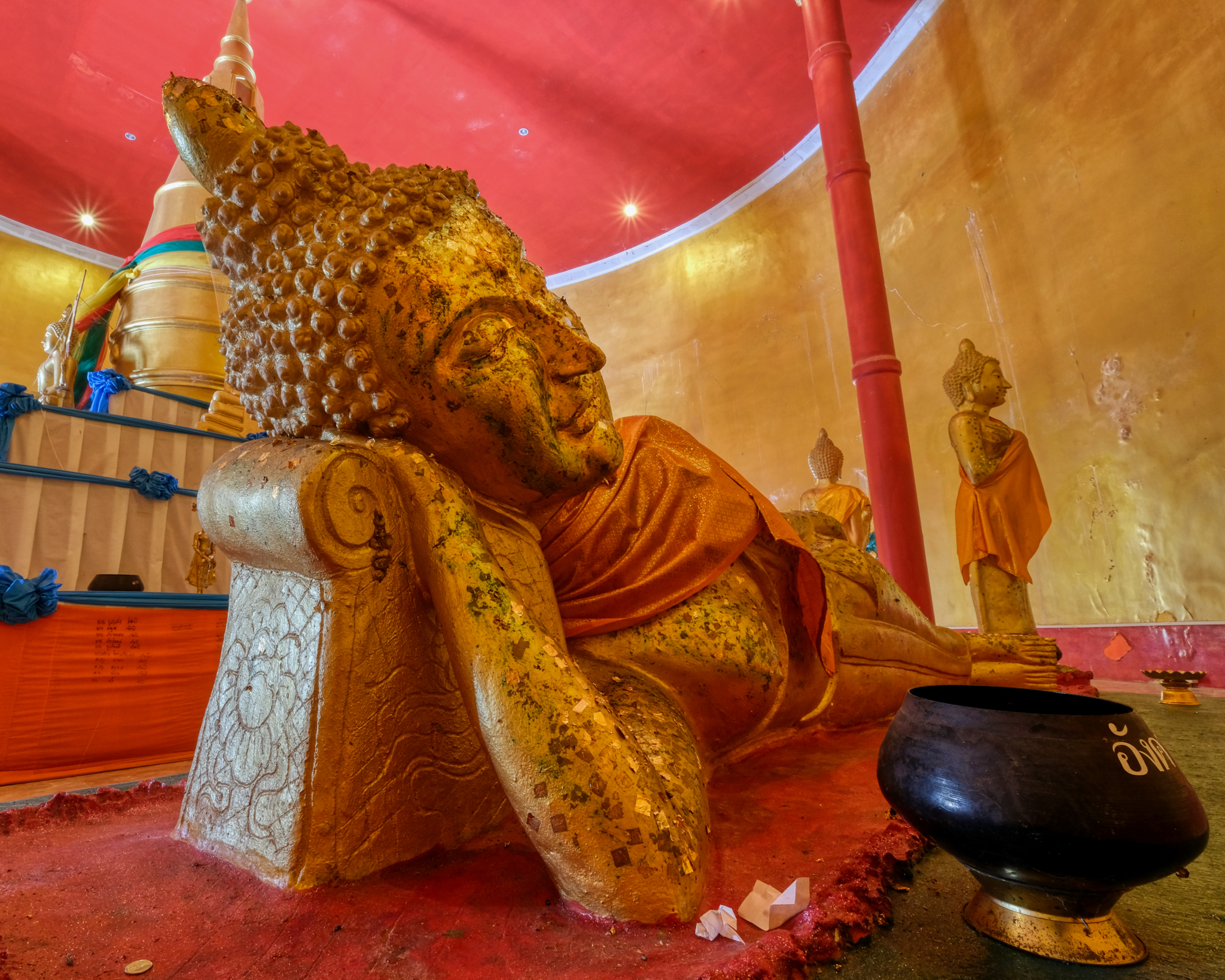 A Reclining Buddha . . . this posture represents the mahāparinabbāna: the Buddha's final state of enlightenment before his death!
A Reclining Buddha . . . this posture represents the mahāparinabbāna: the Buddha's final state of enlightenment before his death! The last time I was in this chedi I did not have a lens wide enough to take this photo. I'm very glad I came back, and would have come back even without a camera. This chedi has become a favorite spiritual pilgrimage site for me.
The last time I was in this chedi I did not have a lens wide enough to take this photo. I'm very glad I came back, and would have come back even without a camera. This chedi has become a favorite spiritual pilgrimage site for me. Each side of the central interior chedi presents a different compositional arrangement. Notice our nun and another pilgrim on the right.
Each side of the central interior chedi presents a different compositional arrangement. Notice our nun and another pilgrim on the right.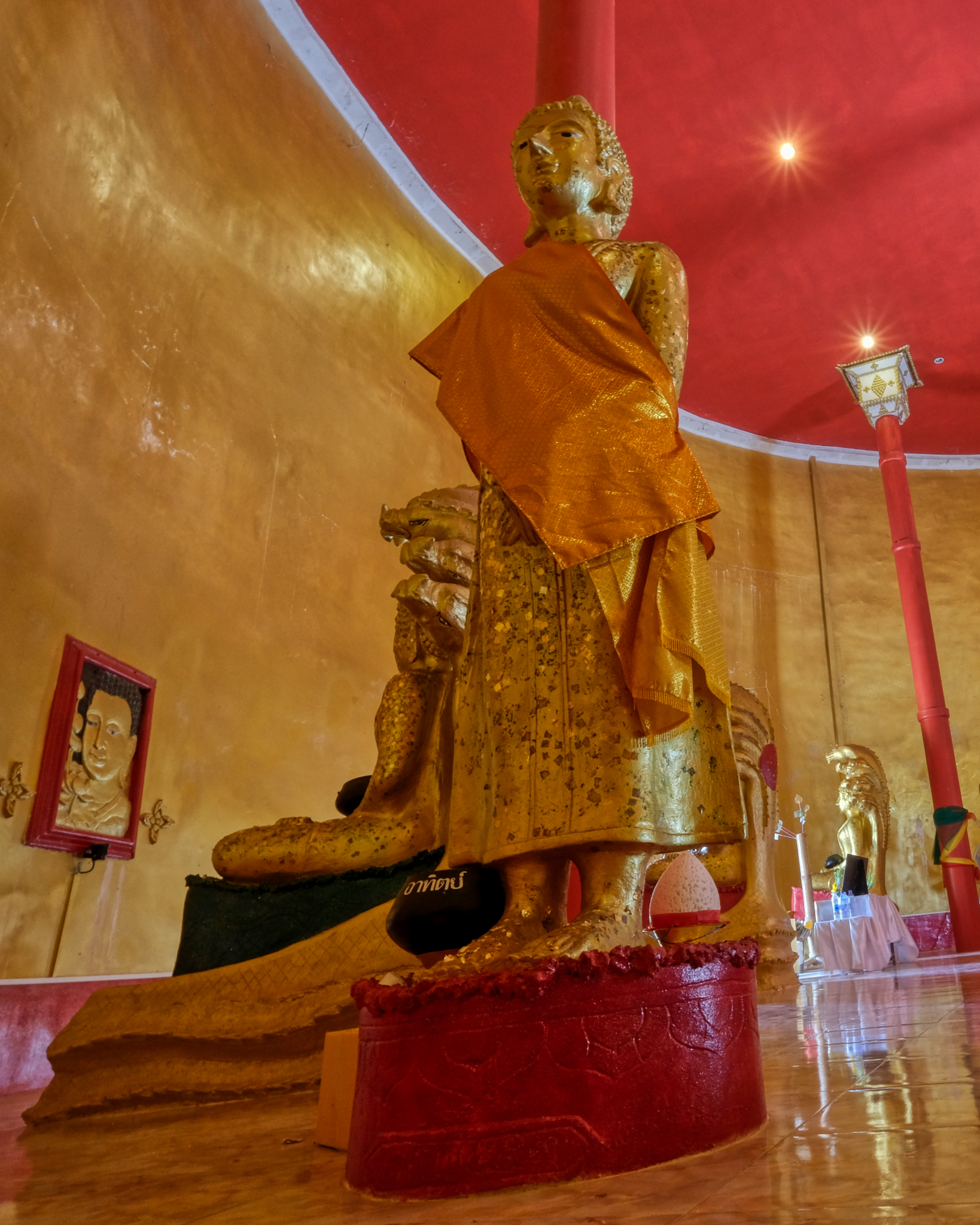 Move a few feet and see another striking composition . . .
Move a few feet and see another striking composition . . .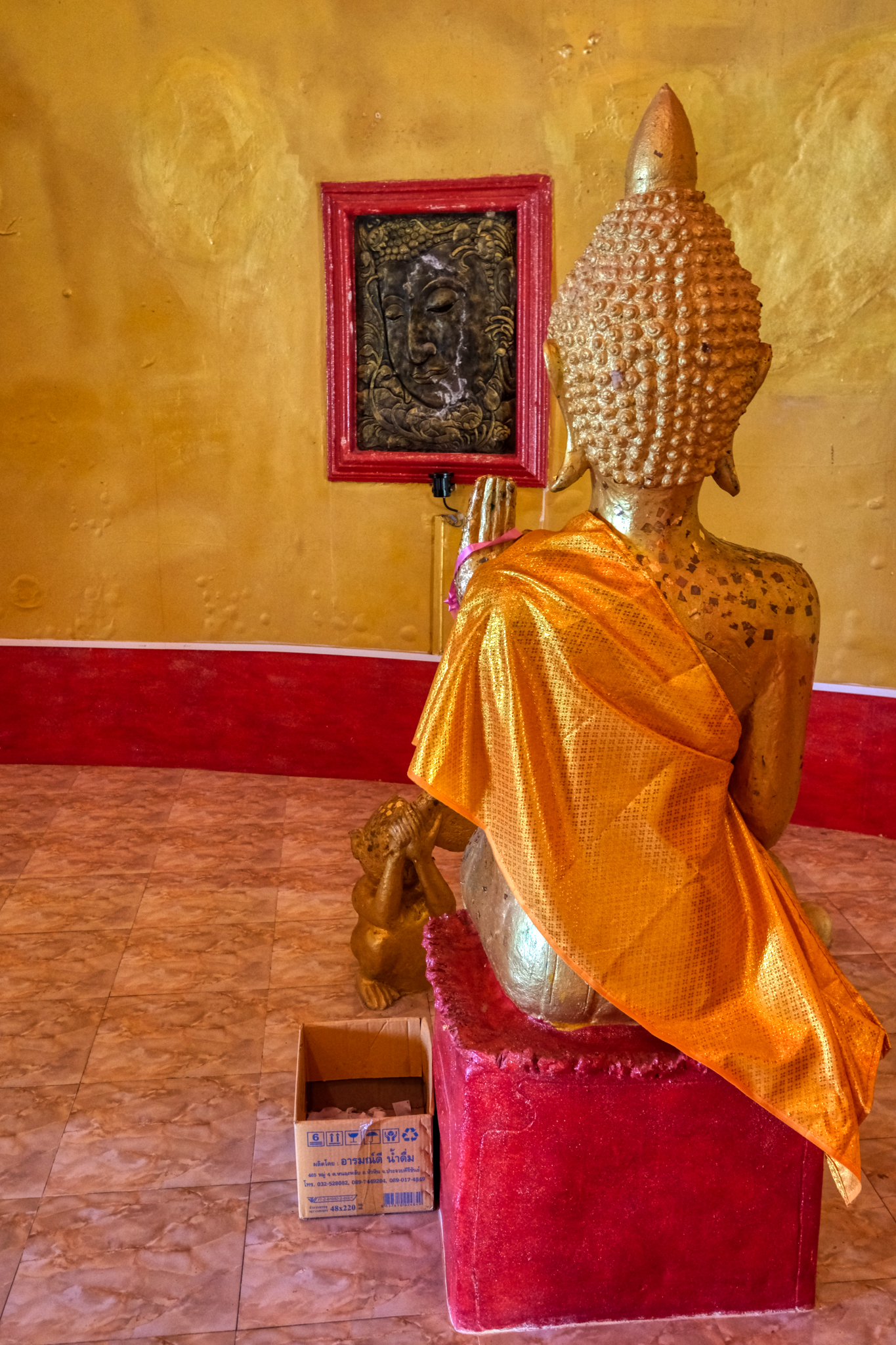 Not all of the statuary represents the Buddha. Some, like this one, are of bikkus, followers of the Buddha captured in a moment of listening to the dharma.
Not all of the statuary represents the Buddha. Some, like this one, are of bikkus, followers of the Buddha captured in a moment of listening to the dharma.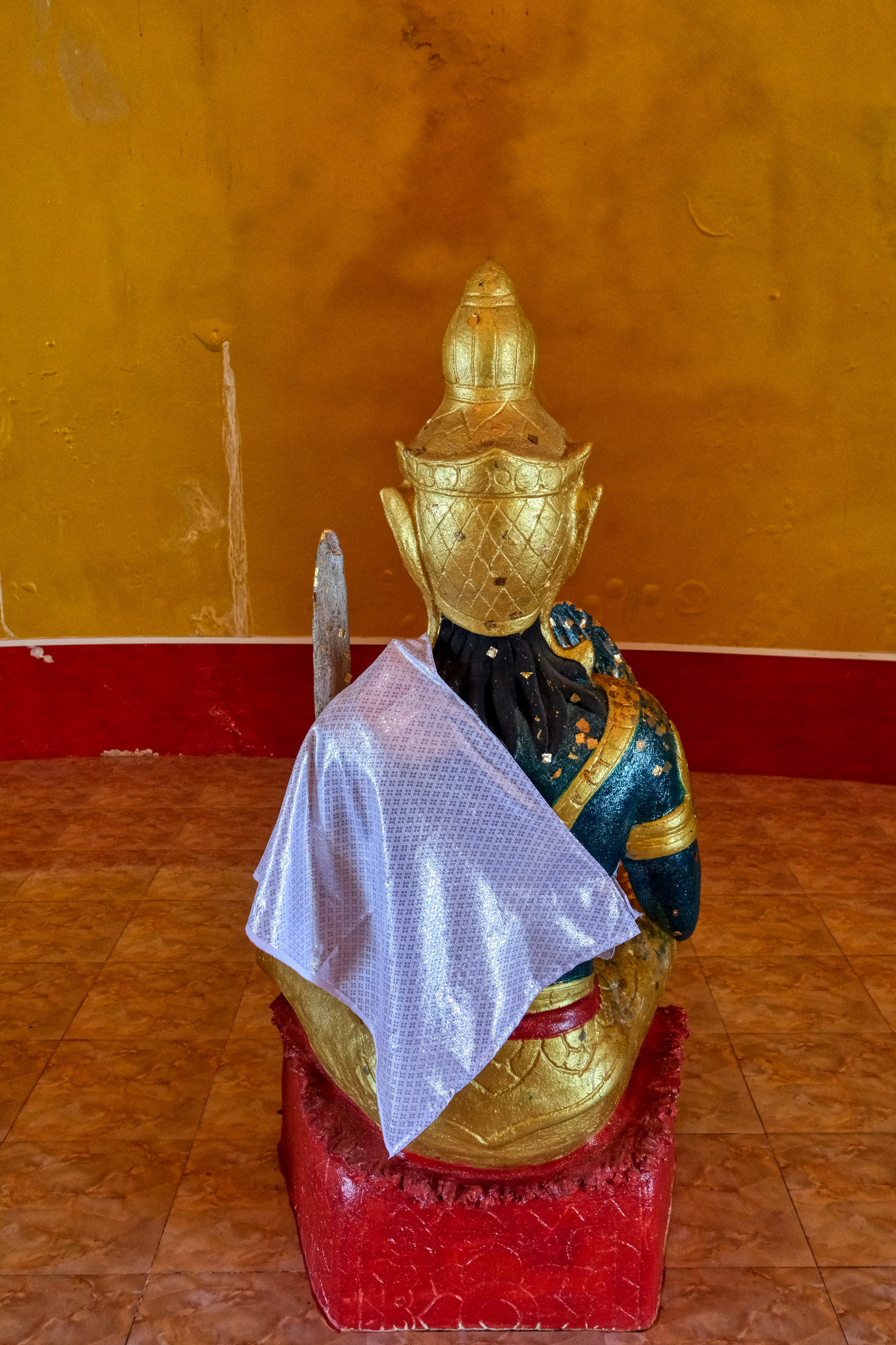 A bikku.
A bikku. A bikku. The cardboard box is for the paper fold left over after a visitor has laid a piece of gold leaf on the statue in reverence.
A bikku. The cardboard box is for the paper fold left over after a visitor has laid a piece of gold leaf on the statue in reverence. There is something so compelling about these dressed statues.
There is something so compelling about these dressed statues.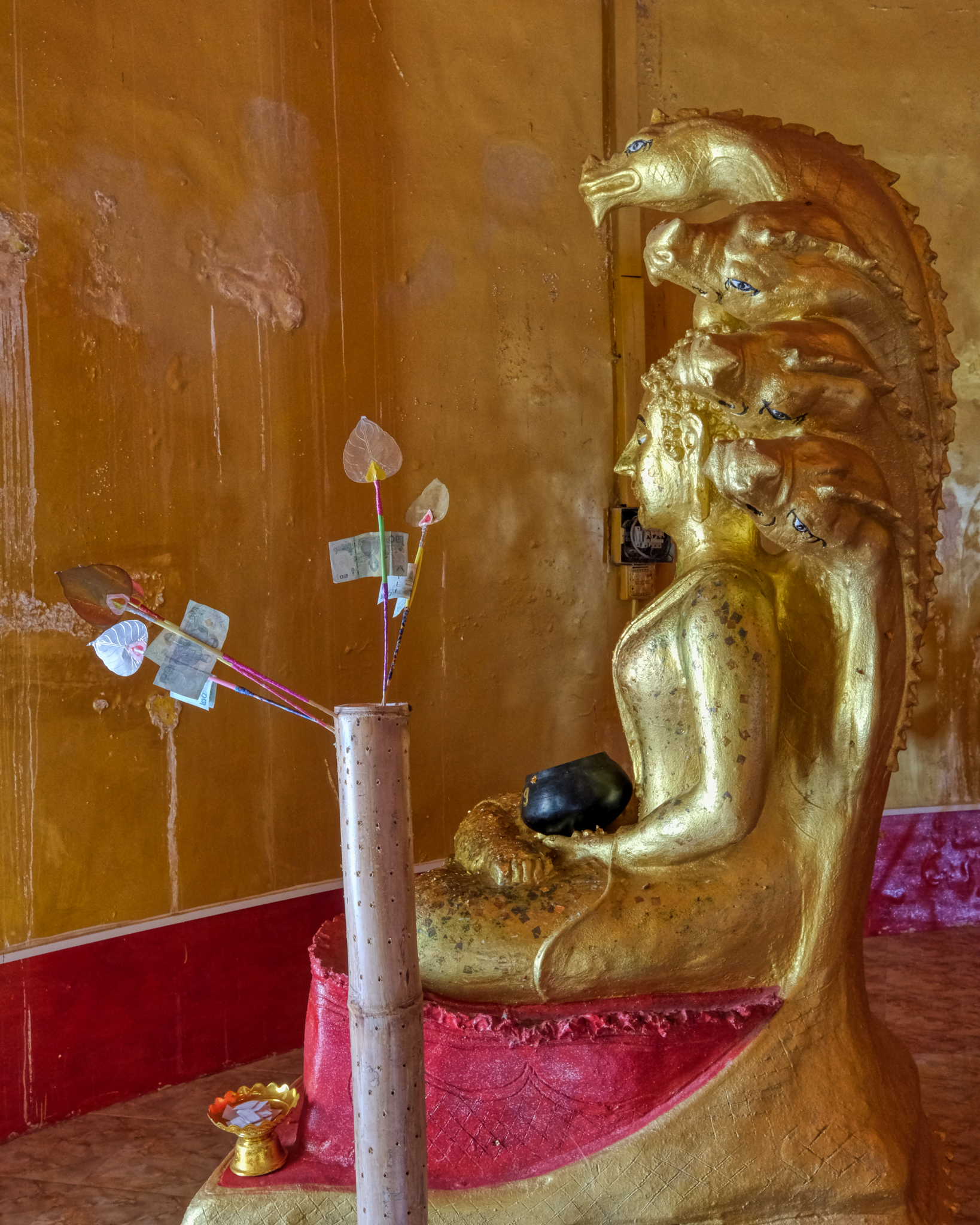 Every few feet . . . another image to never forget . . .
Every few feet . . . another image to never forget . . . The walls themselves were a thing of wonder.
The walls themselves were a thing of wonder. I am very nearly moved to tears by these walls . . . the color, the play of light, the human touch, the honesty.
I am very nearly moved to tears by these walls . . . the color, the play of light, the human touch, the honesty.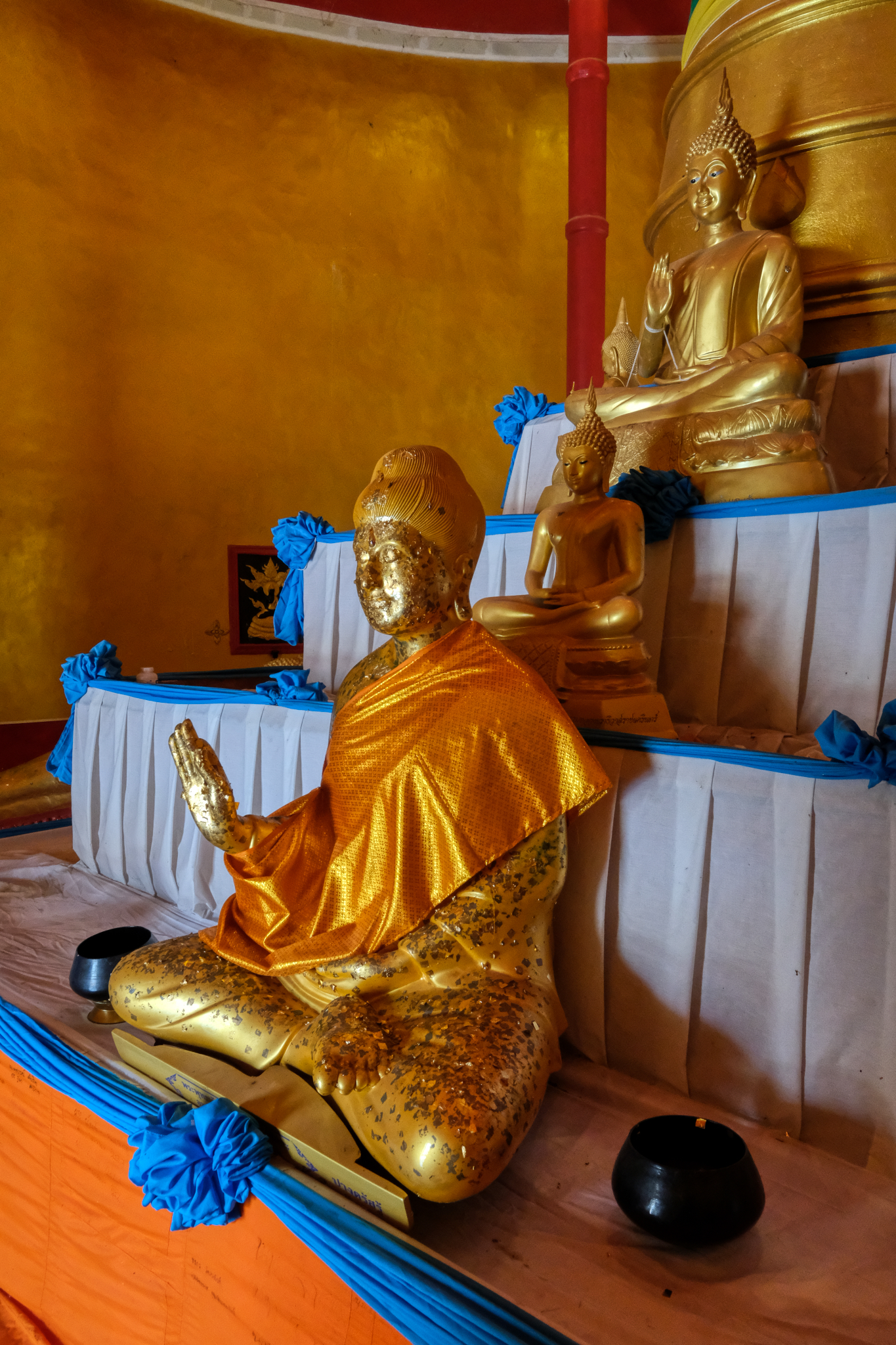 An altar facing an opposite door and sunlight.
An altar facing an opposite door and sunlight.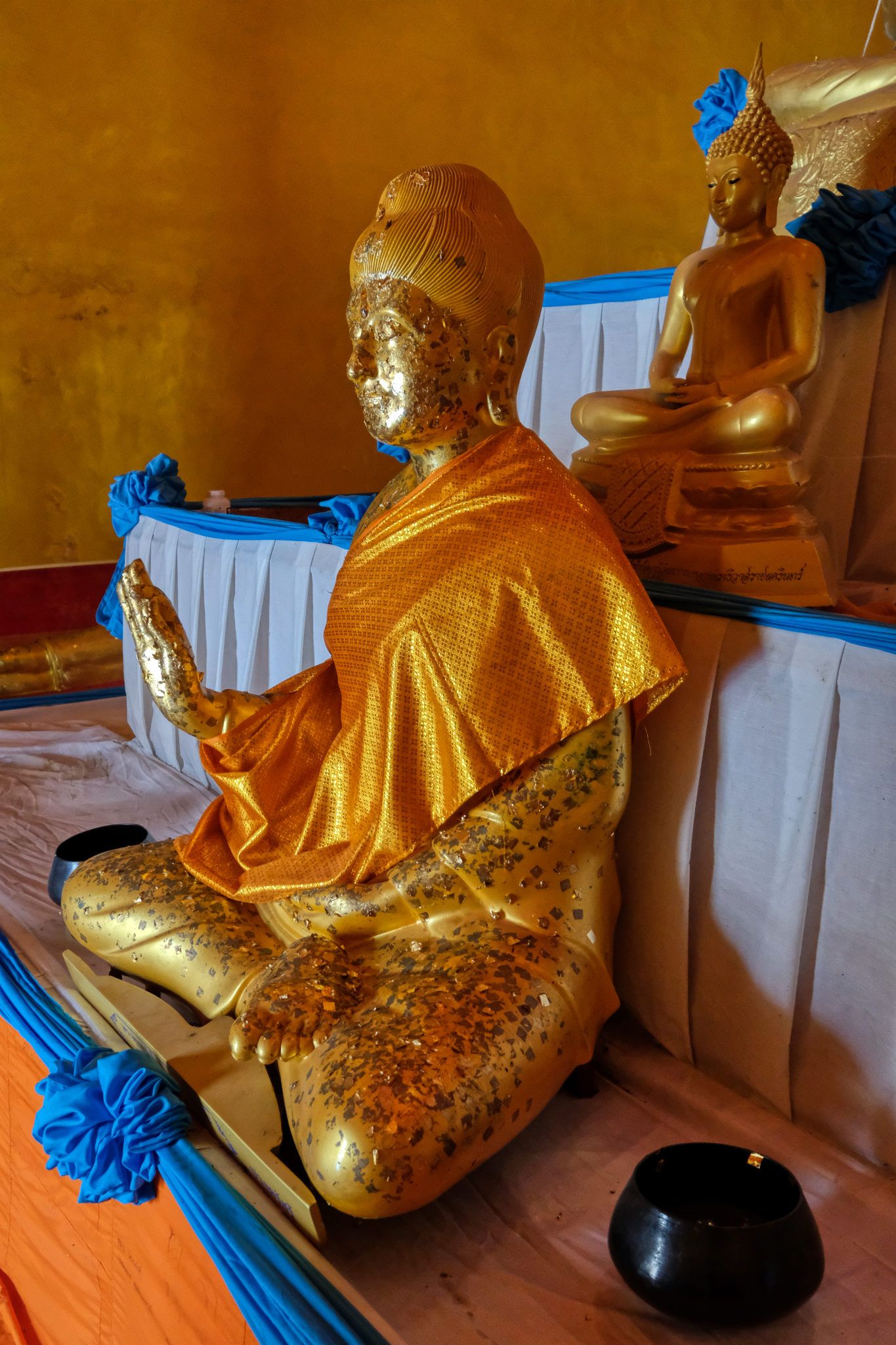 This Buddha statue in the Fearlessness (Abhāya mudrā) pose.
This Buddha statue in the Fearlessness (Abhāya mudrā) pose.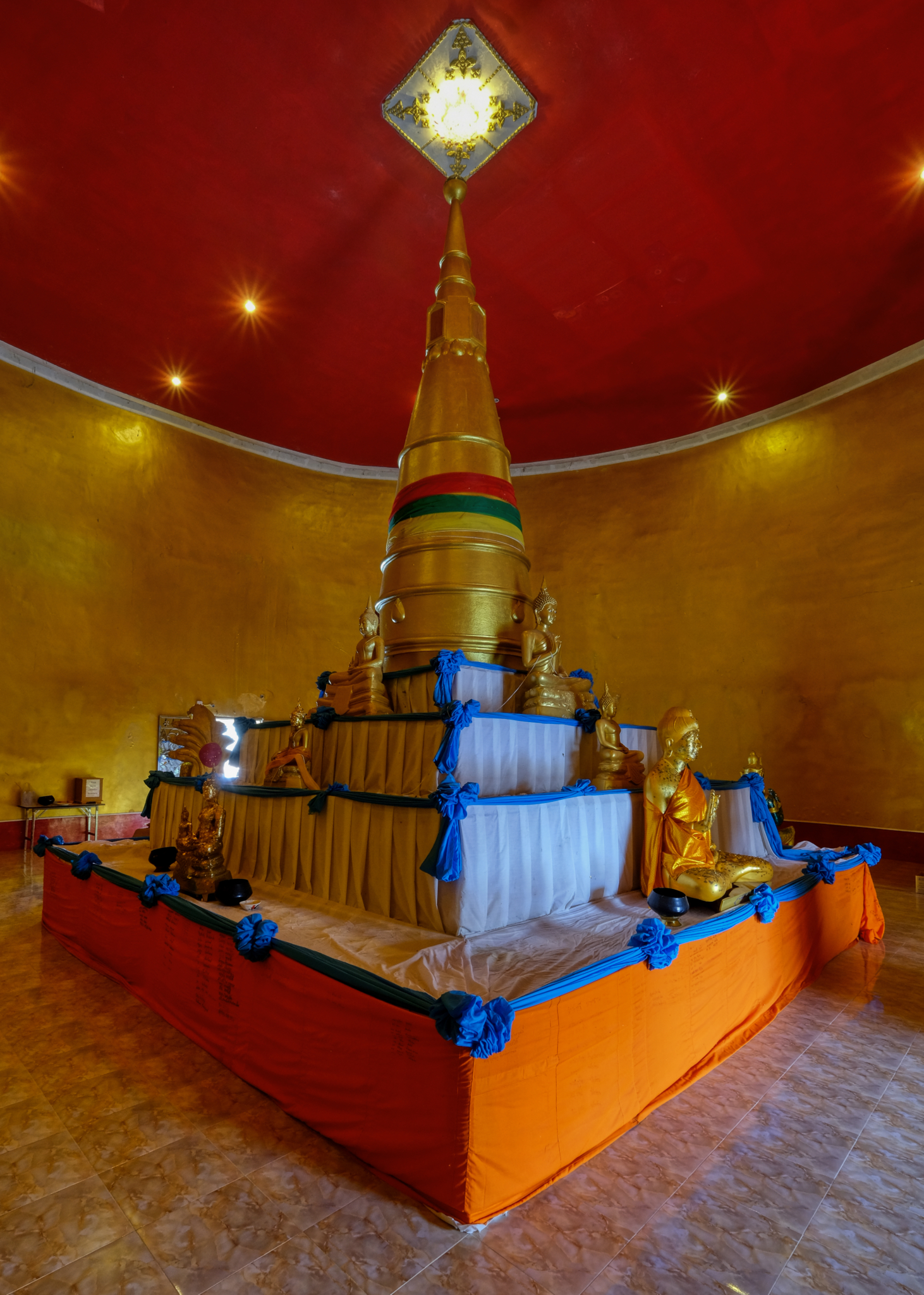 The chedi within the larger chedi.
The chedi within the larger chedi.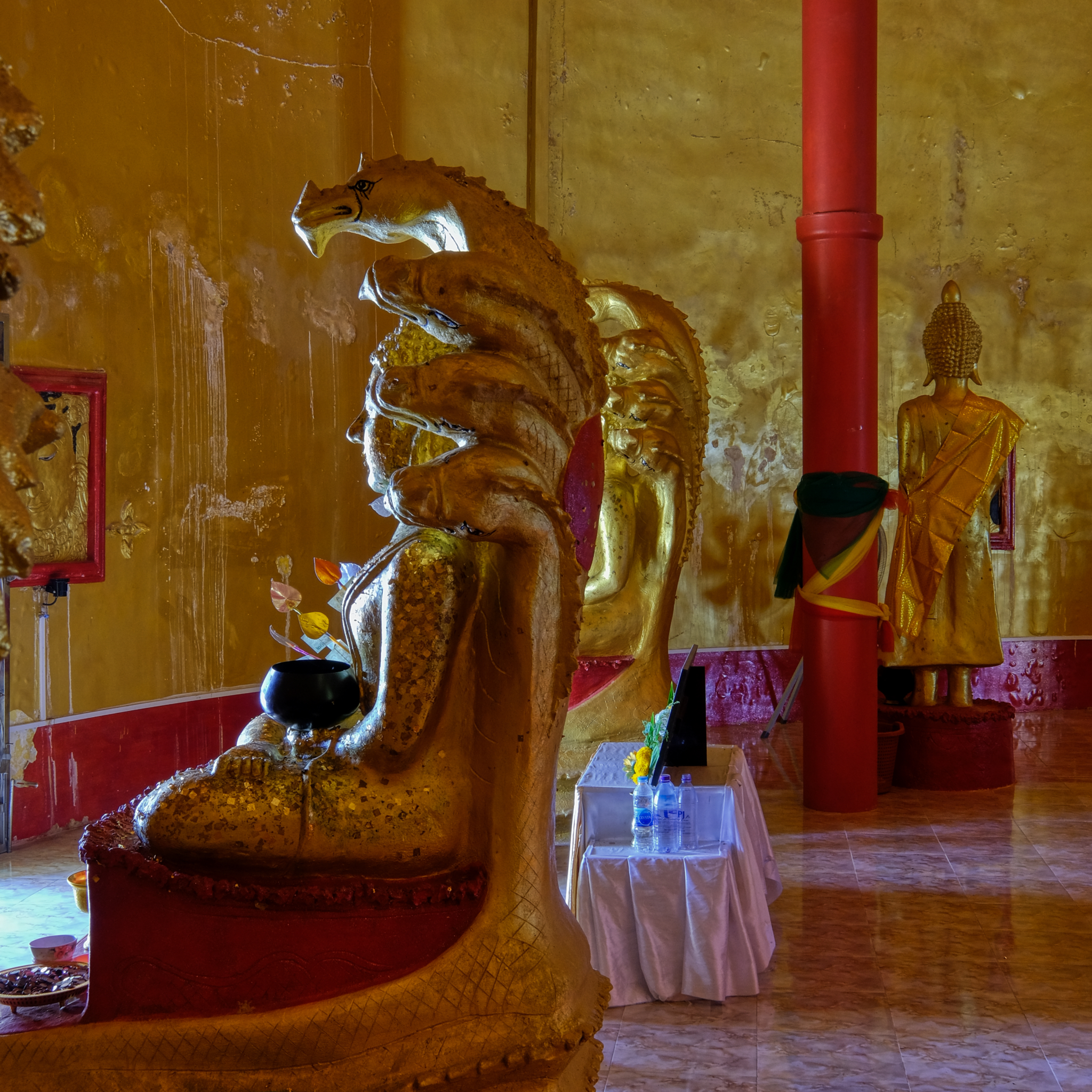 In some locations the light on the figures and on the wall came together in fantastic ways!
In some locations the light on the figures and on the wall came together in fantastic ways!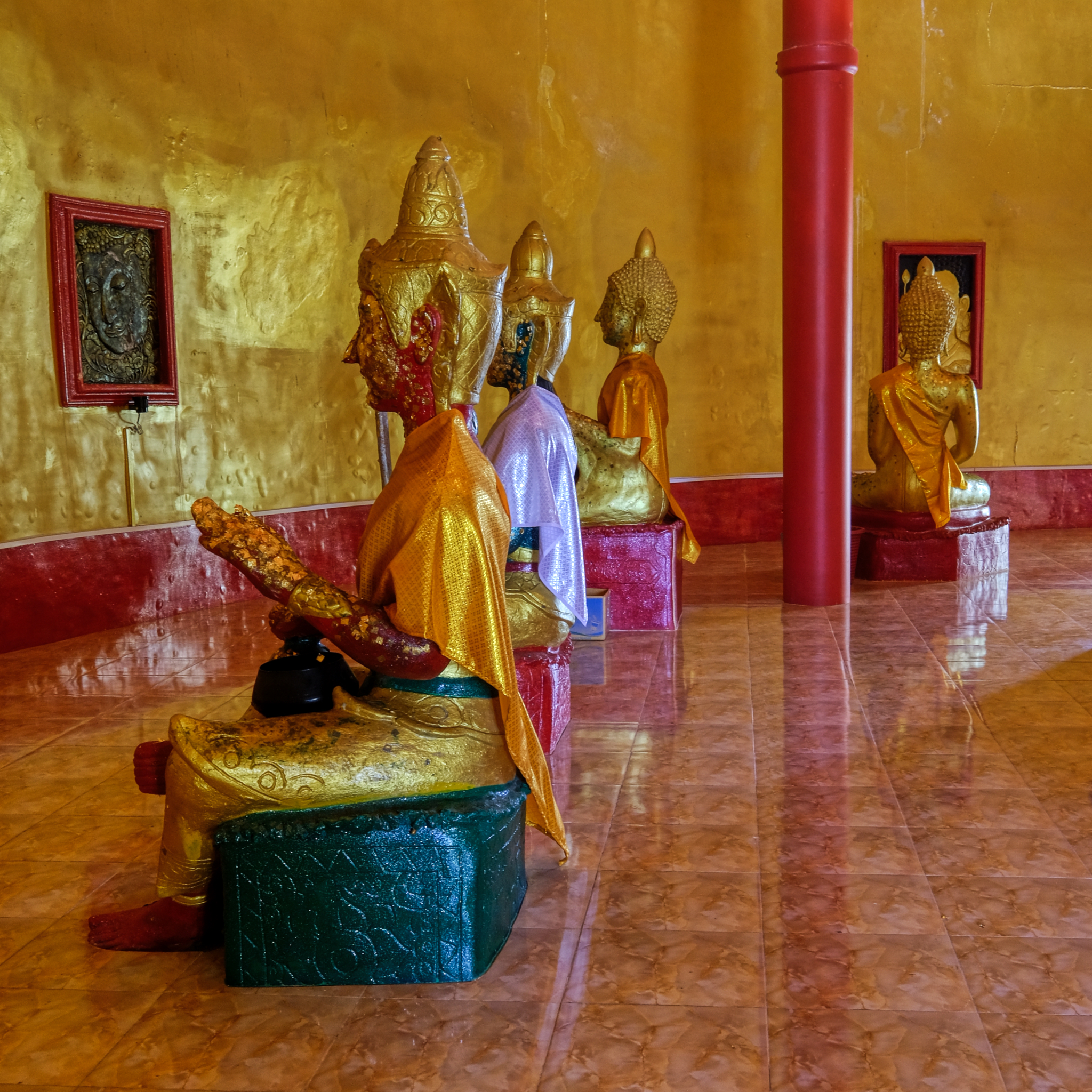 Phenomenal light and color and shapes . . . .
Phenomenal light and color and shapes . . . .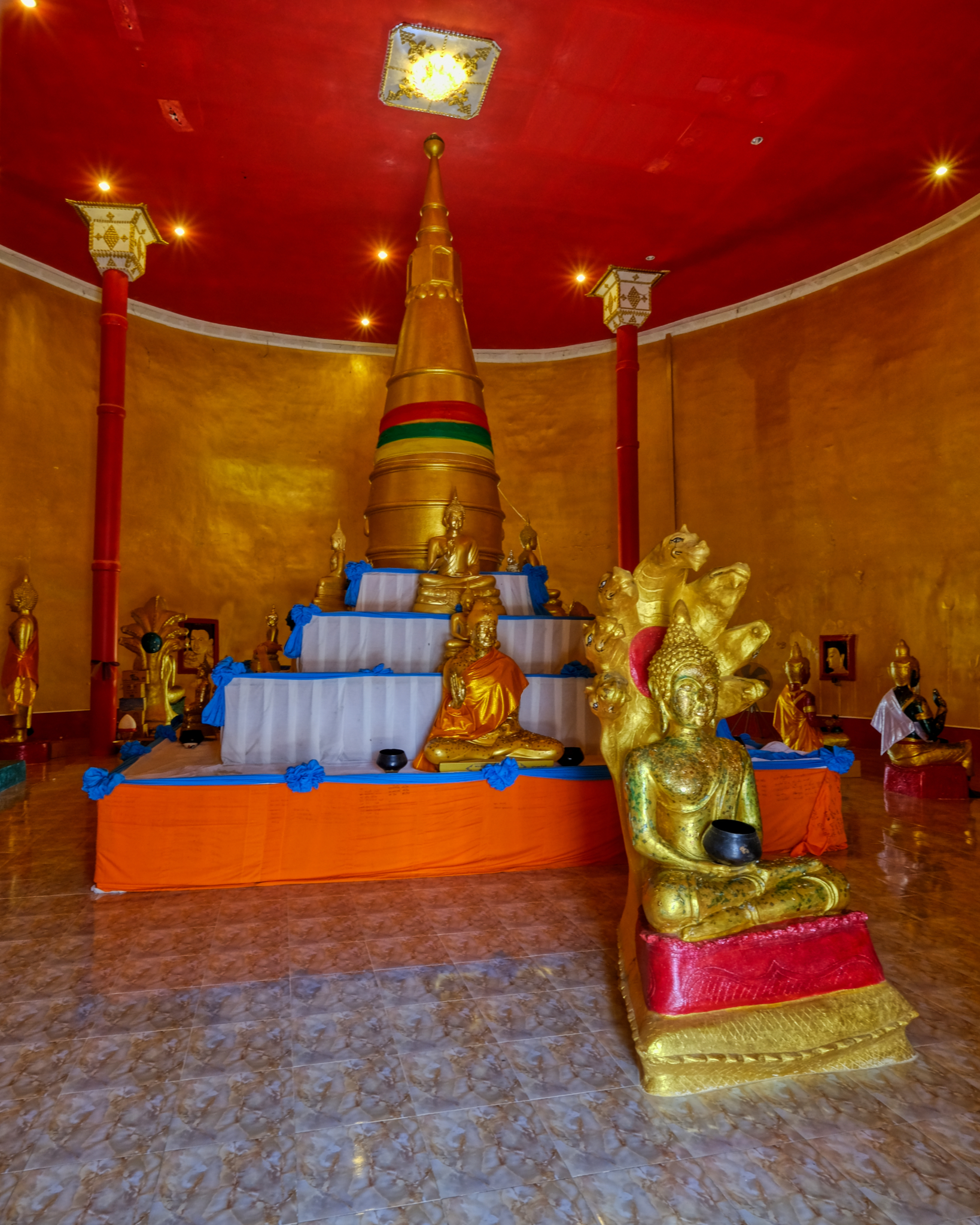 Although the Buddha figures seem sparse in this photo it seemed FULL of them.
Although the Buddha figures seem sparse in this photo it seemed FULL of them. I did not know when to stop taking photos. I took a break and made merit at each Buddha image with gold leaf and reverent wais.
I did not know when to stop taking photos. I took a break and made merit at each Buddha image with gold leaf and reverent wais.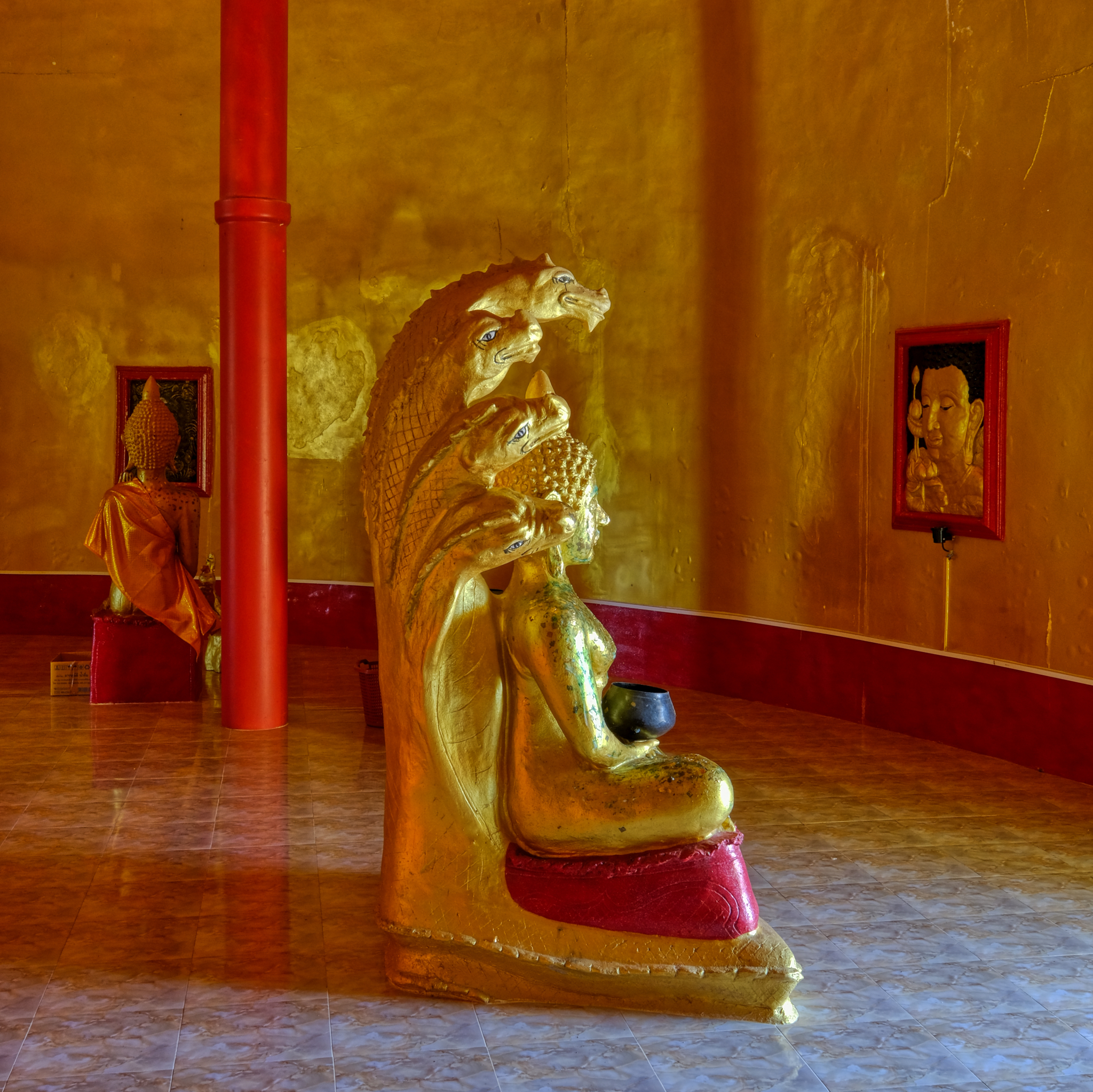 I became aware that as the sun outside brightened and dimmed, so did the lighting effects in the interior. Fantastic!
I became aware that as the sun outside brightened and dimmed, so did the lighting effects in the interior. Fantastic! We spent several hours inside this remarkable chedi. So captivated by everything . . . standing staring at the walls in absolute wonder.
We spent several hours inside this remarkable chedi. So captivated by everything . . . standing staring at the walls in absolute wonder. We had to leave . . . reluctantly. We had a whole day ahead of us and many adventures to have.
We had to leave . . . reluctantly. We had a whole day ahead of us and many adventures to have.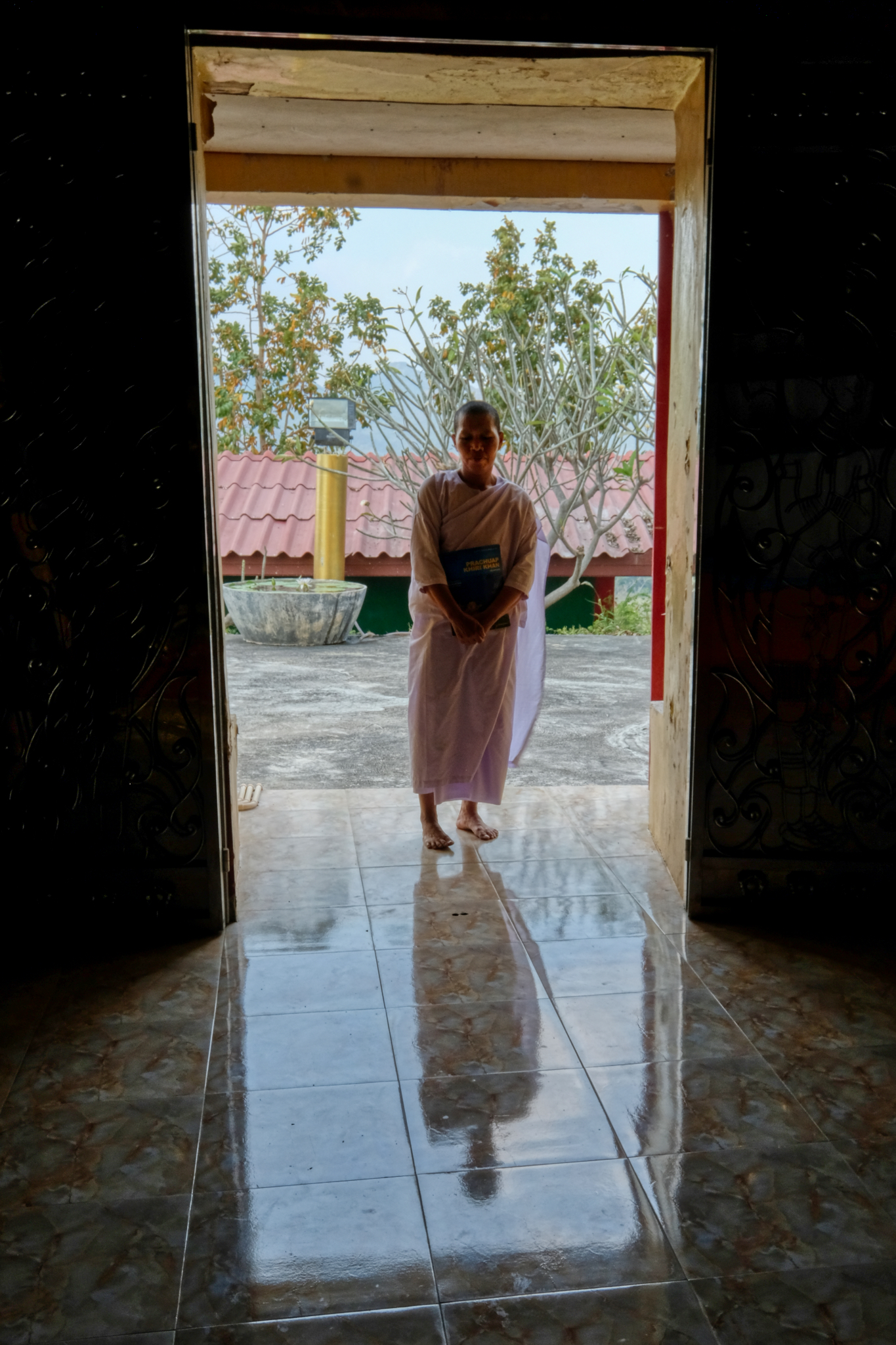 We at last left the chedi to the nun to have on her own in solitude.
We at last left the chedi to the nun to have on her own in solitude.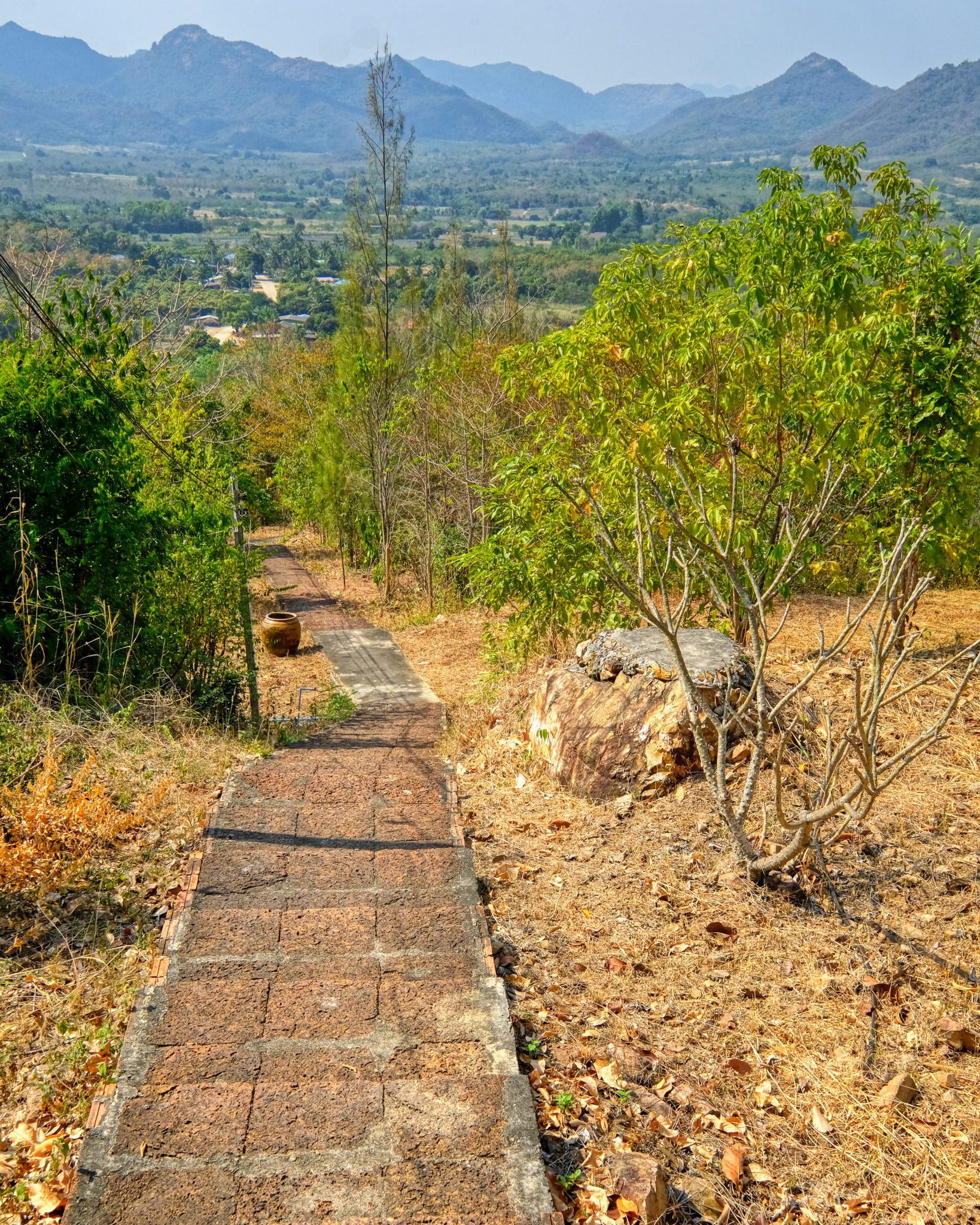 The chedi sits high on a hilltop with a wide view. This is a very rural location west of Hua Hin.
The chedi sits high on a hilltop with a wide view. This is a very rural location west of Hua Hin.Phenomenal Angkor Wat, Cambodia
 Thursday, March 5, 2020 at 3:05PM
Thursday, March 5, 2020 at 3:05PM  First light at Angkor Wat main complex.
First light at Angkor Wat main complex. 6:00am and already there were thousands of tourists to catch the temples in the magic light. Most of the tourists were either French or Chinese, although I doubt there are many Chinese now that the COVD-9 virus has almost completely halted Chinese tourism.
6:00am and already there were thousands of tourists to catch the temples in the magic light. Most of the tourists were either French or Chinese, although I doubt there are many Chinese now that the COVD-9 virus has almost completely halted Chinese tourism.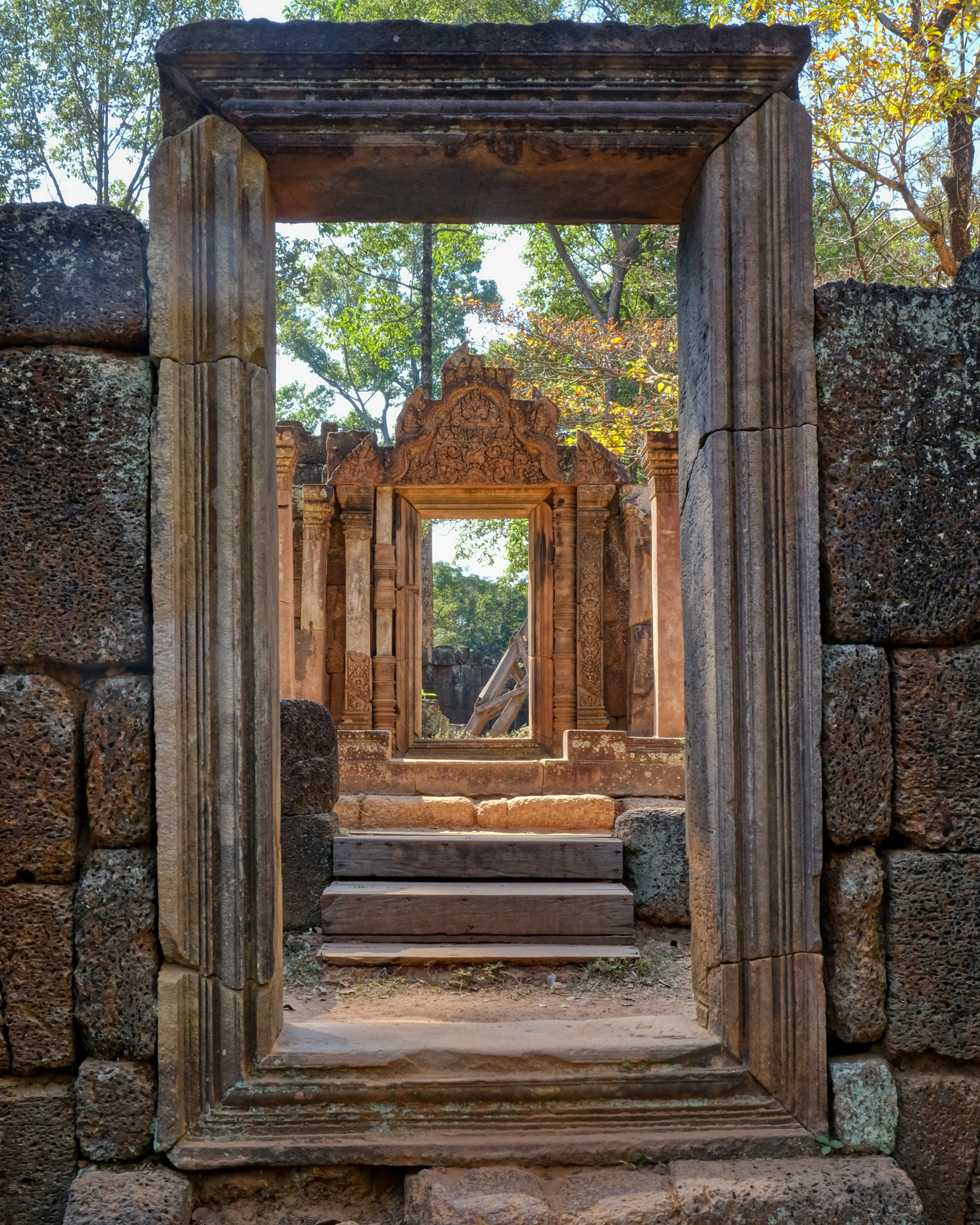 Built 1000 years ago . . . still amazing.
Built 1000 years ago . . . still amazing. The sheer expanse of temple ruins at Angkor, and the great variety of temple materials and decoration make it well worth spending many days there, as I did in January 2020.
The sheer expanse of temple ruins at Angkor, and the great variety of temple materials and decoration make it well worth spending many days there, as I did in January 2020.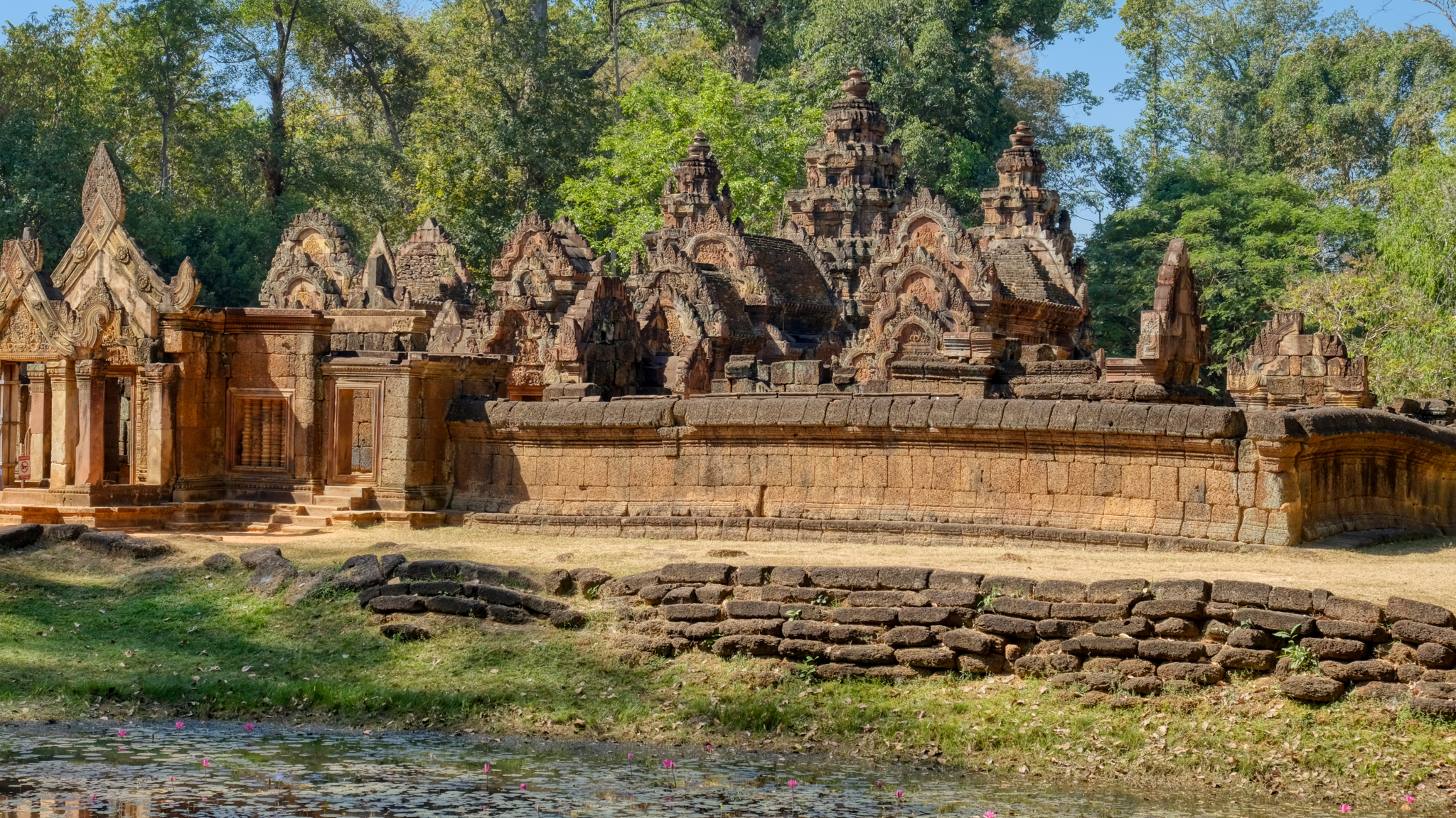 There is so much to see in the Angkor Wat complex - many ancient sites. spread out around many square miles. Here is a small slide show sampling of the sights before we begin.
There is so much to see in the Angkor Wat complex - many ancient sites. spread out around many square miles. Here is a small slide show sampling of the sights before we begin. There is a main Angkor Wat temple with a grand entry across a beautiful pond.
There is a main Angkor Wat temple with a grand entry across a beautiful pond.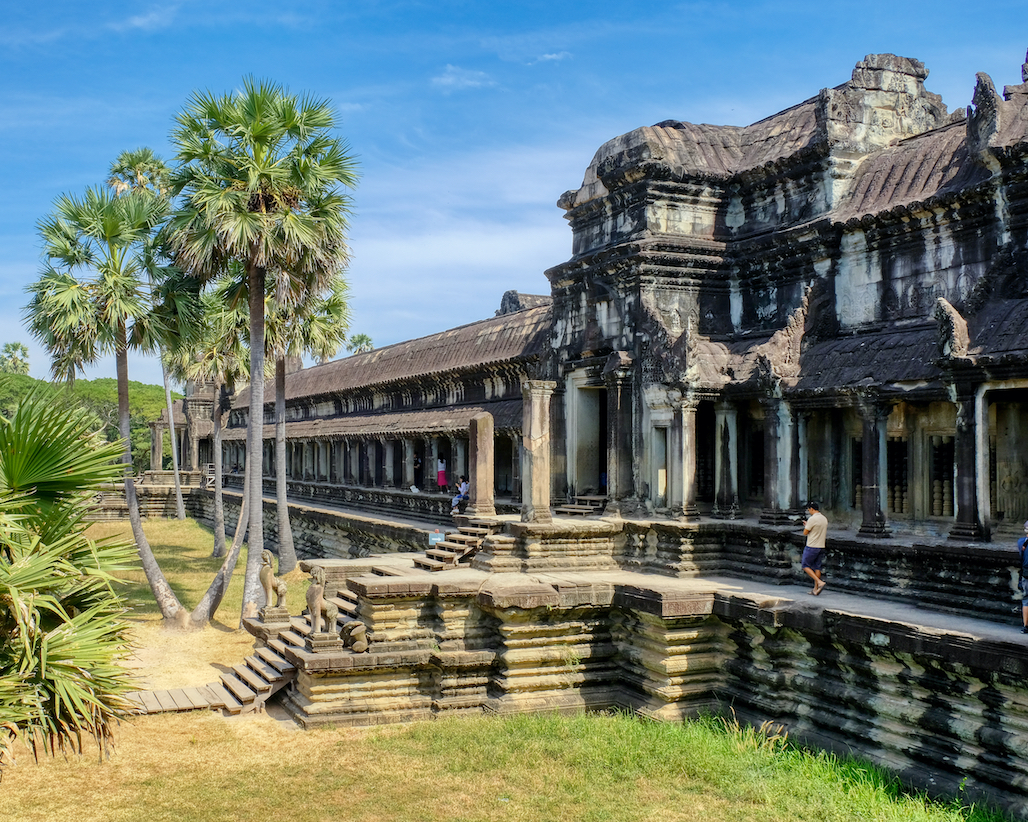 Just inside the "entry" gate.
Just inside the "entry" gate. The interior and exterior surfaces are all nearly completely carved in panels of patterns and figures.
The interior and exterior surfaces are all nearly completely carved in panels of patterns and figures.
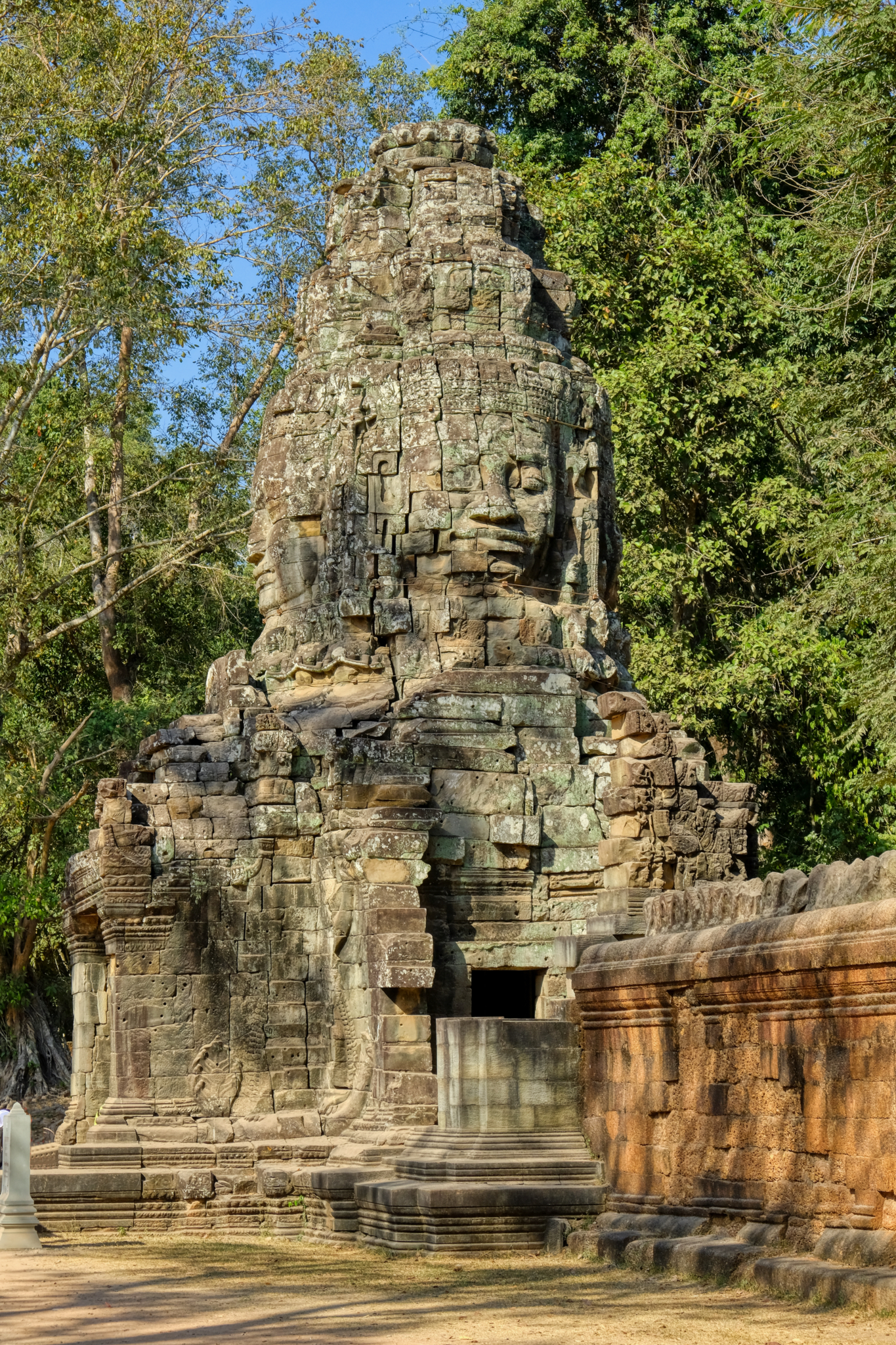 The many temple complexes are surrounded by high walls and often moats. All have four gates; one each facing north, south, east, and west.
The many temple complexes are surrounded by high walls and often moats. All have four gates; one each facing north, south, east, and west.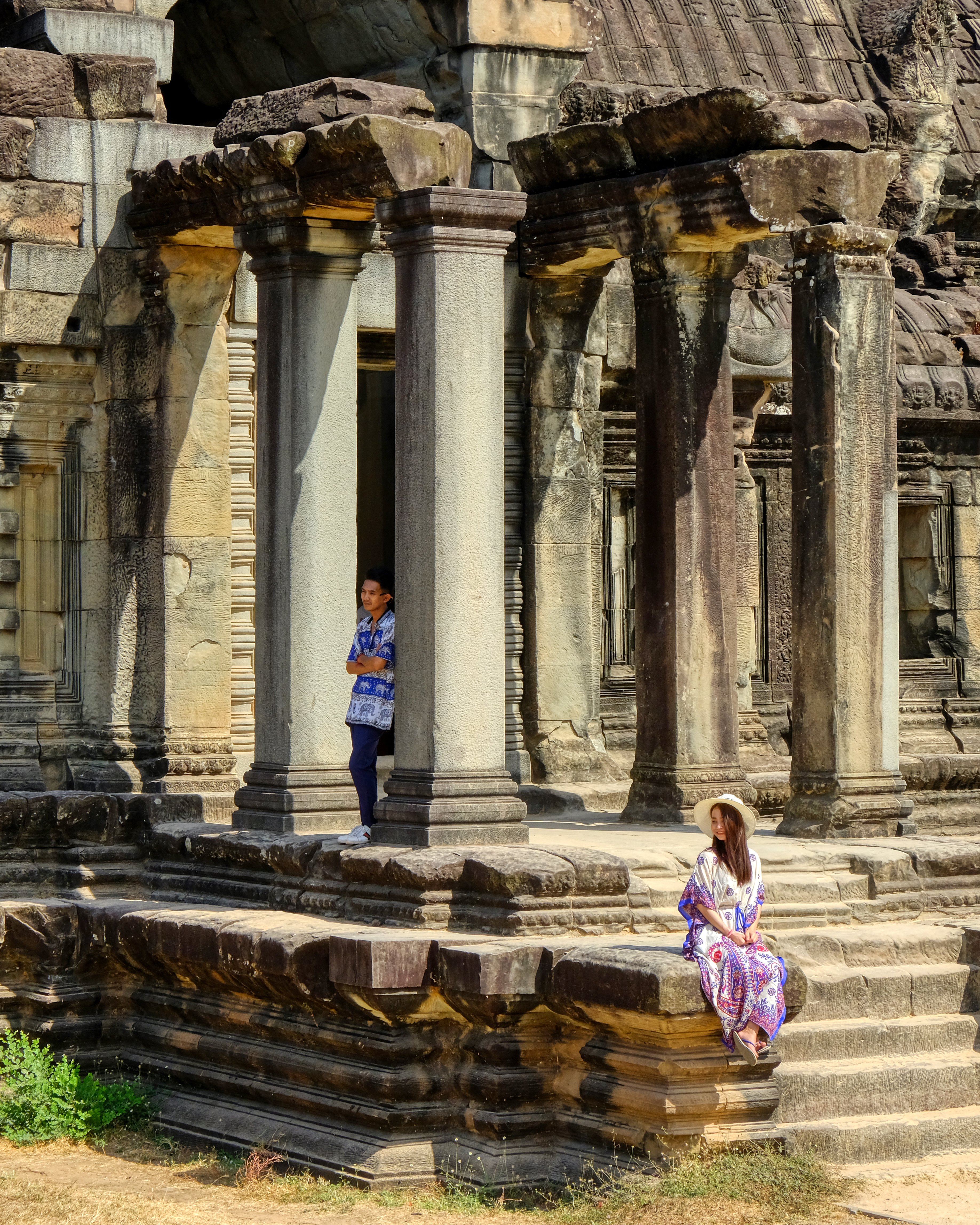 Inside the the main temple grounds, tourists stop to pose among the ruins. Thank you.
Inside the the main temple grounds, tourists stop to pose among the ruins. Thank you. Curious vendors here and there. Yes, I bought the t-shirt. Of course I did
Curious vendors here and there. Yes, I bought the t-shirt. Of course I did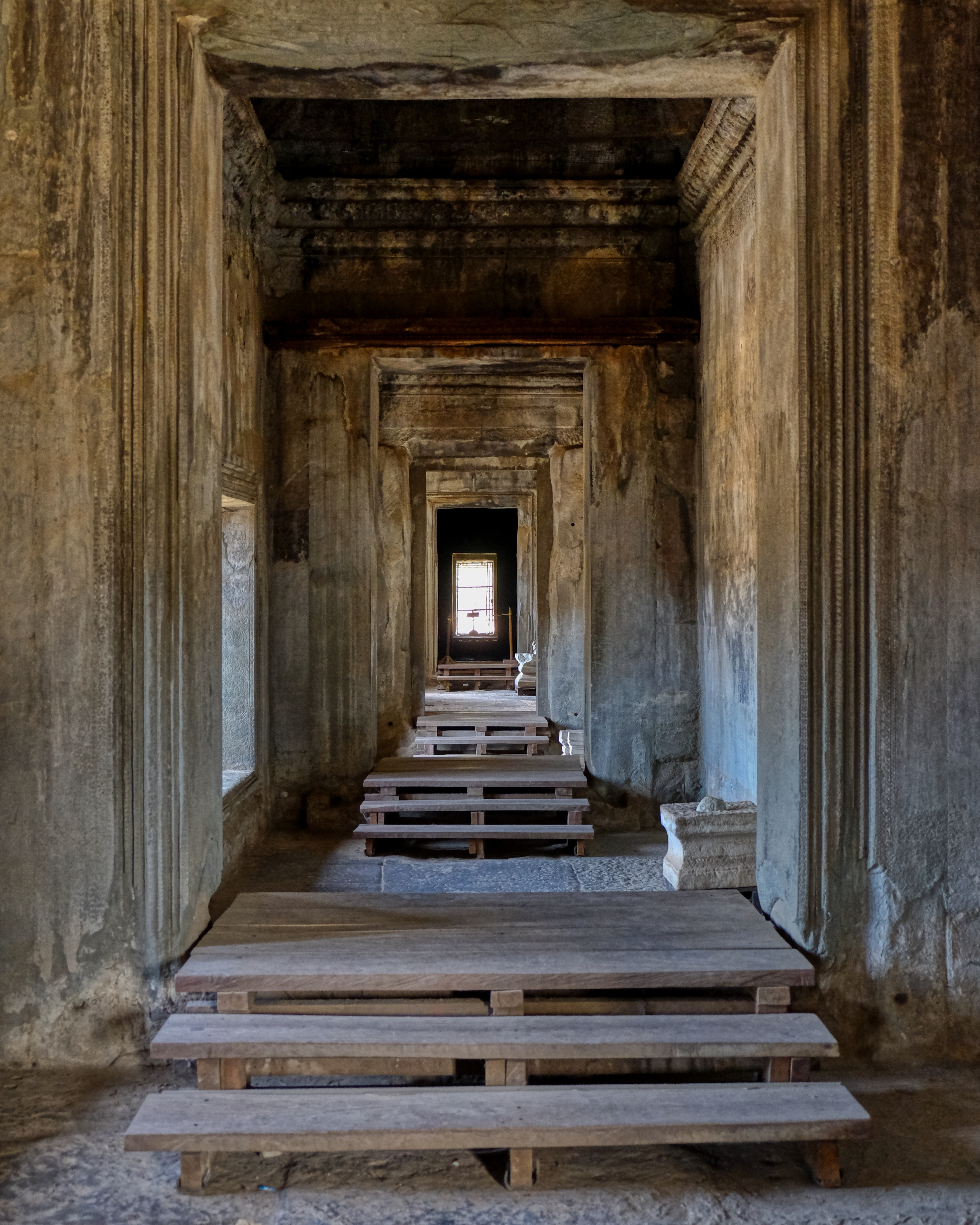 Through and into a temple gatehouse structure.
Through and into a temple gatehouse structure.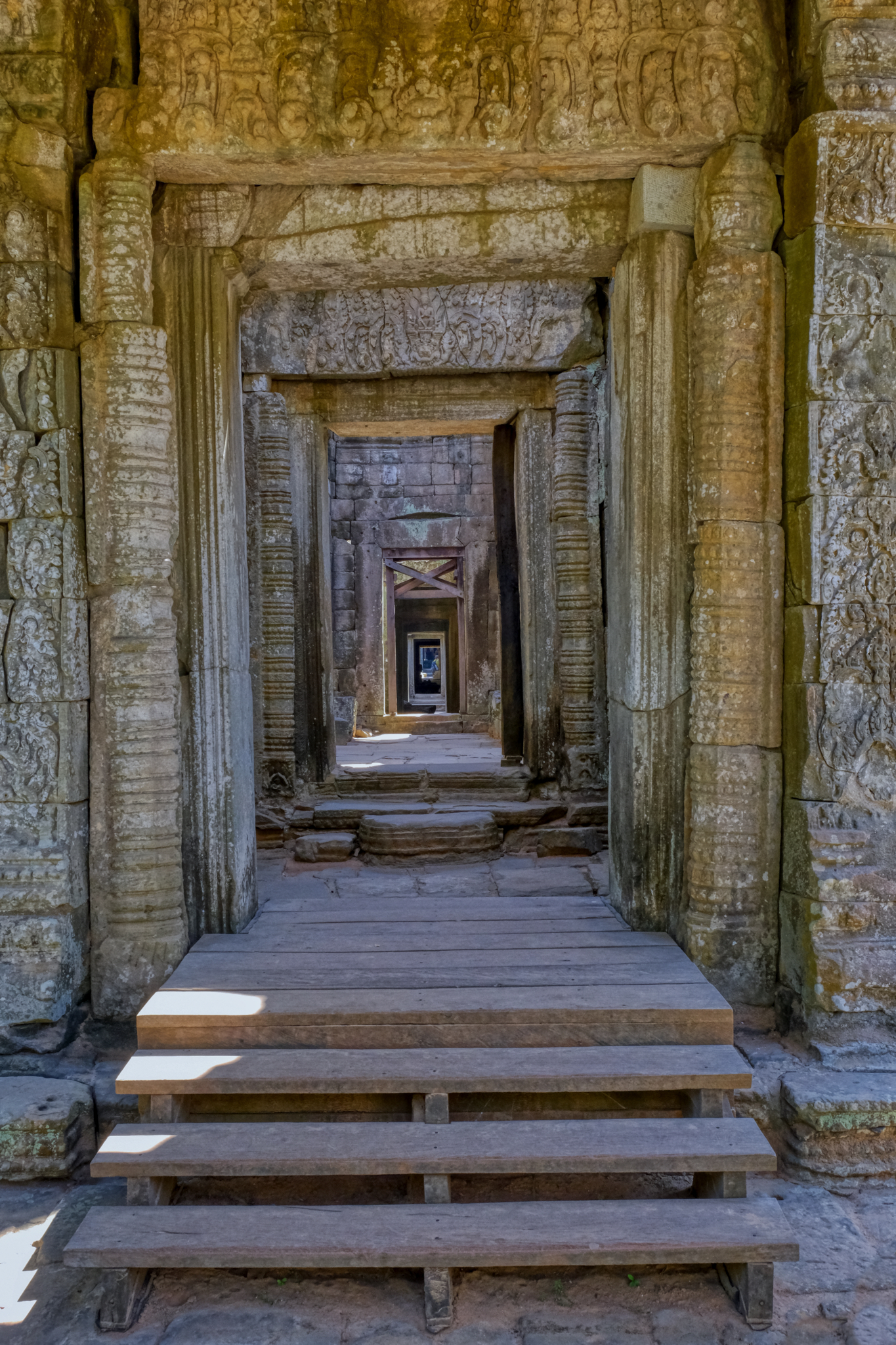 Inside the temples there are inviting and mysterious passages everywhere.
Inside the temples there are inviting and mysterious passages everywhere.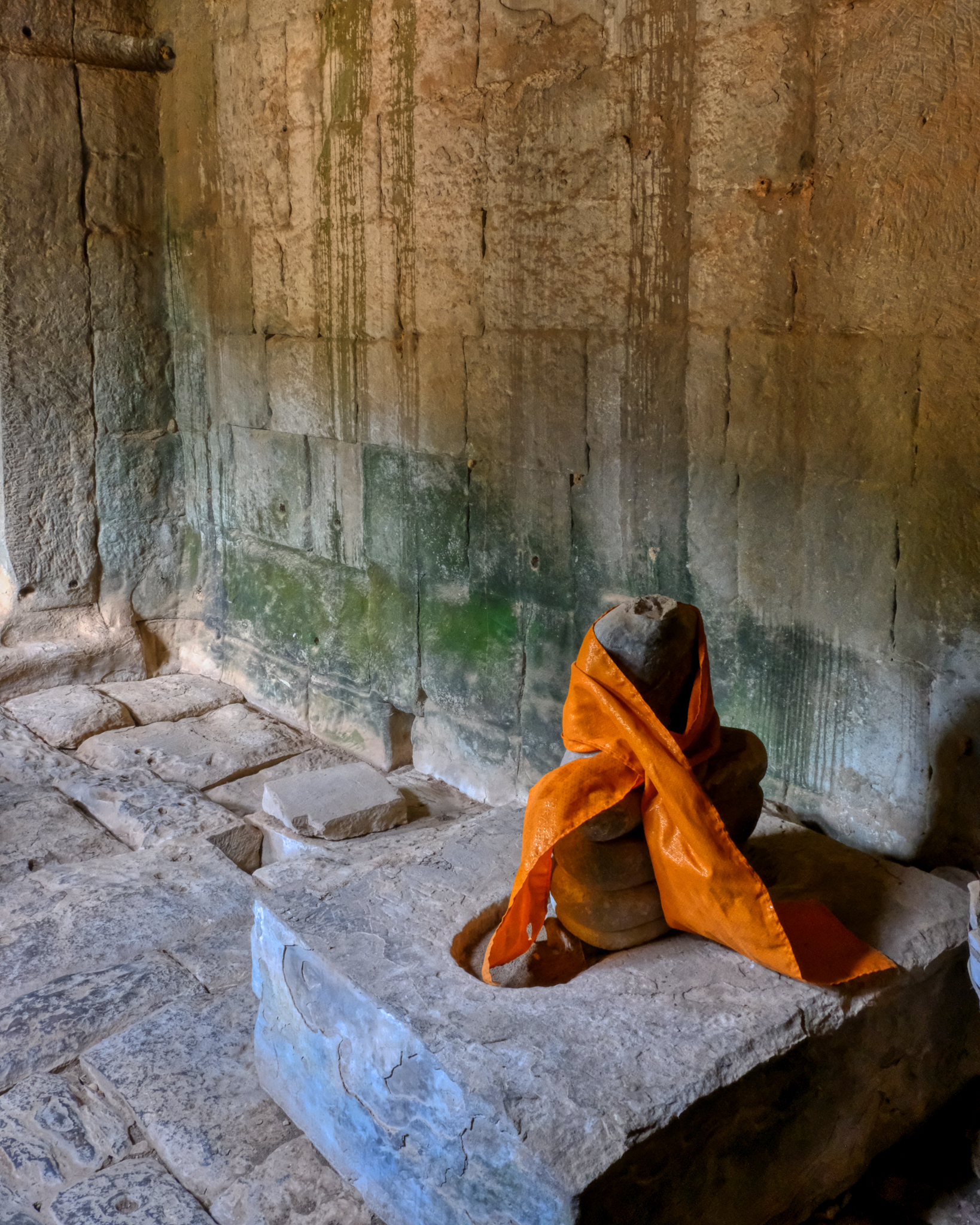 Although headless, many of the ancient Buddha relics are still tended by local followers.
Although headless, many of the ancient Buddha relics are still tended by local followers.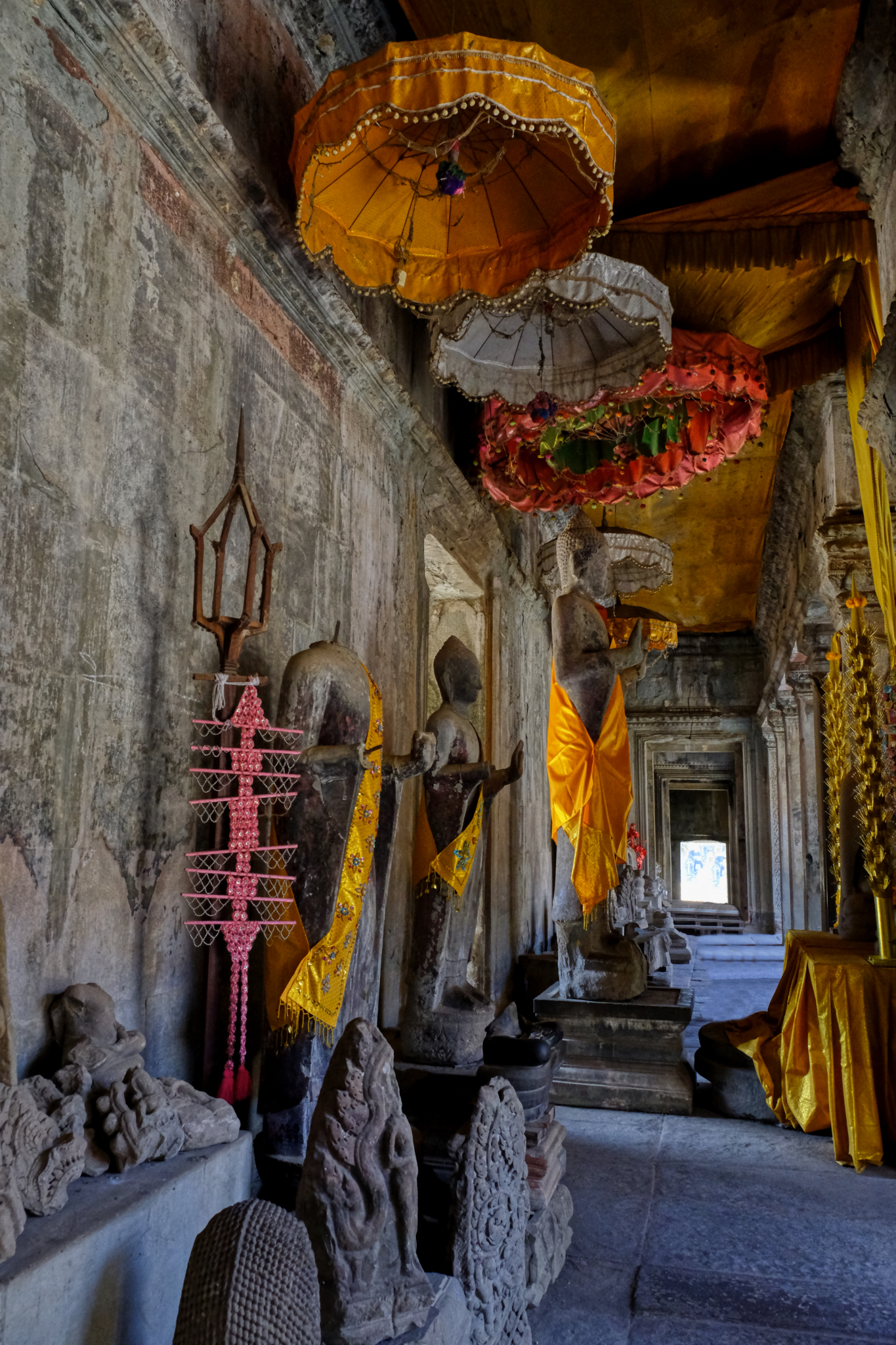 A fascinating hall of revered Buddha relics.
A fascinating hall of revered Buddha relics. Interior courtyard within the temple structures.
Interior courtyard within the temple structures.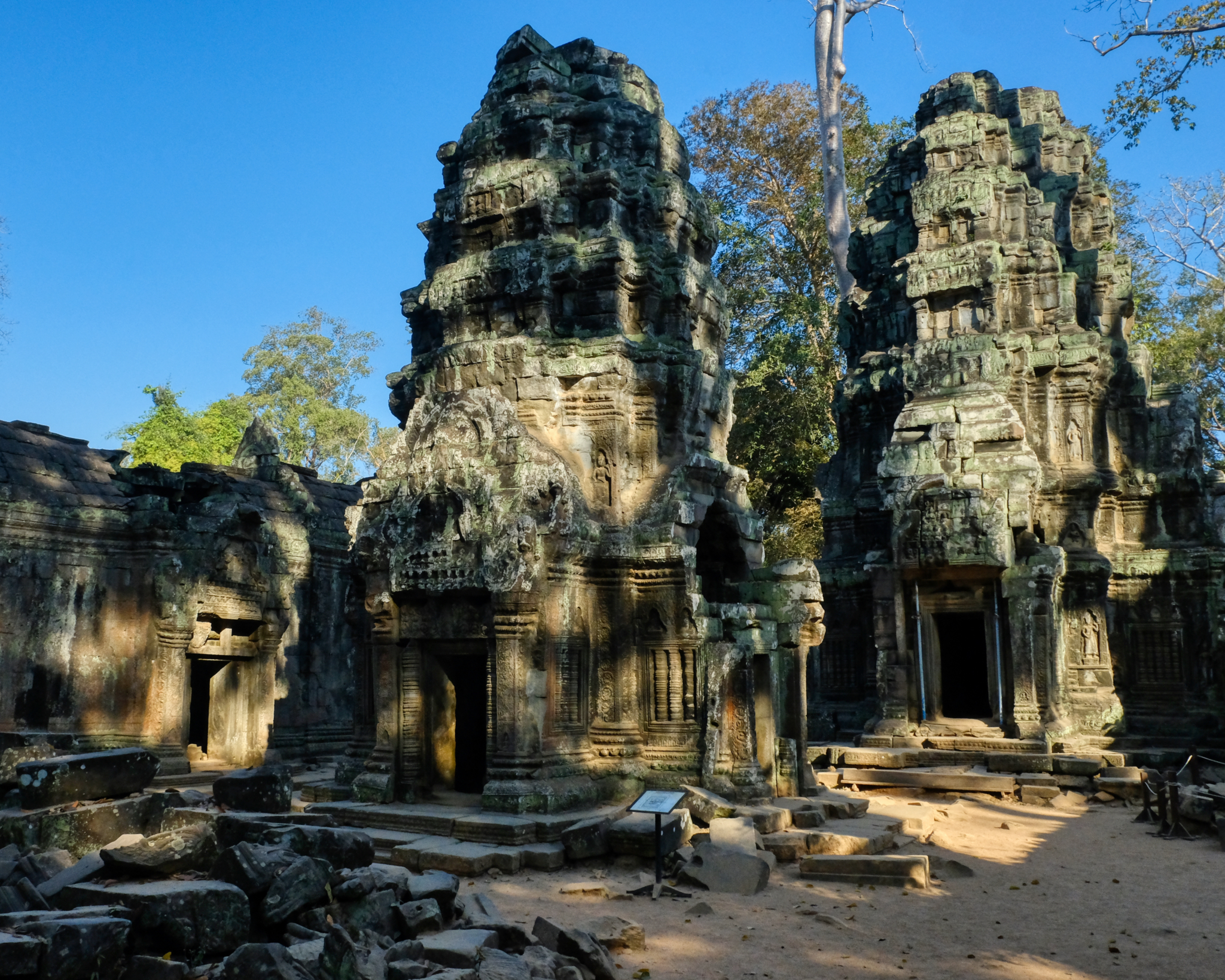 Ruins of Angkor Wat chedis. Incredible and unique architectural style.
Ruins of Angkor Wat chedis. Incredible and unique architectural style.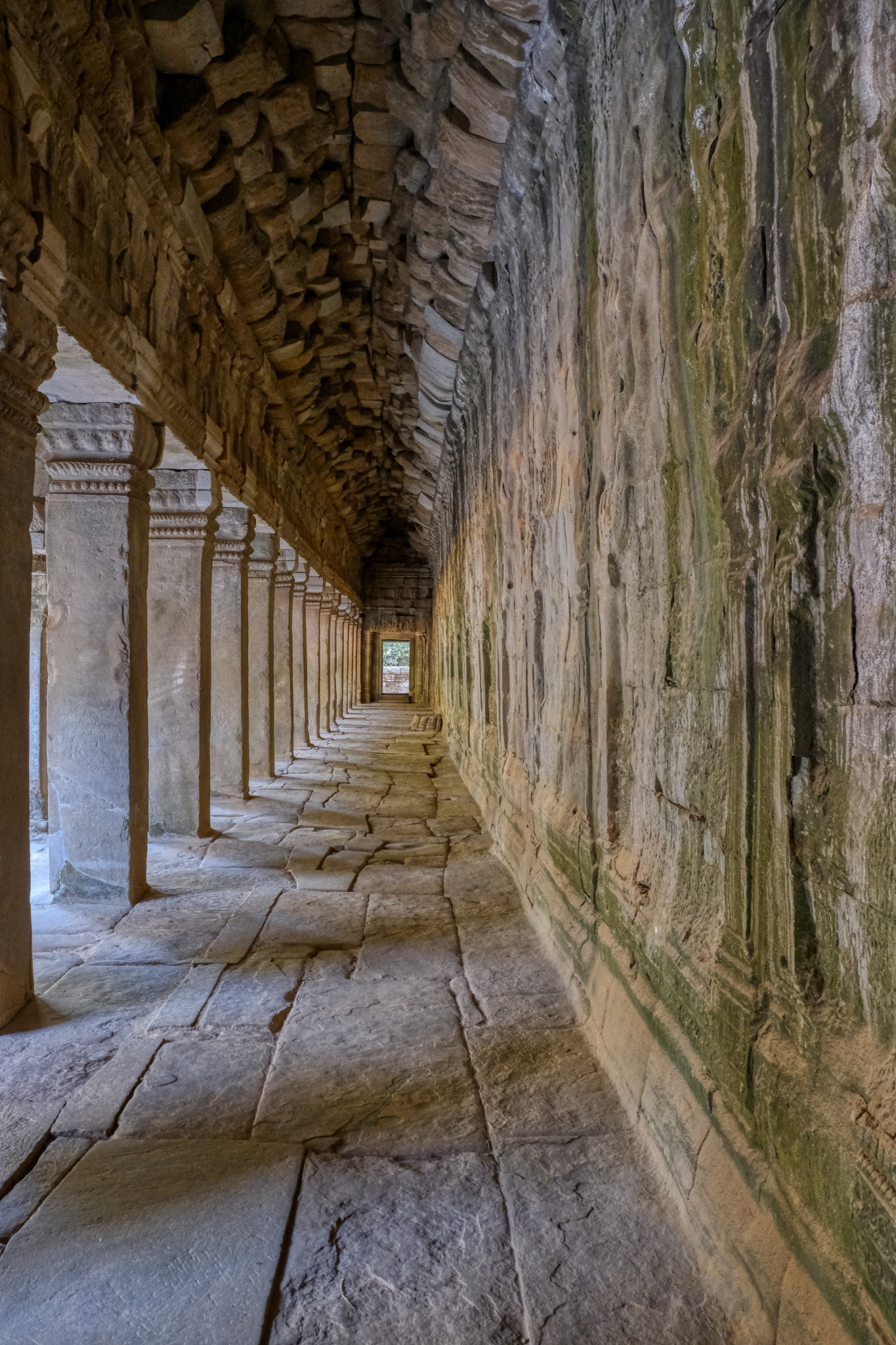 Interior halls and colonnades everywhere invite exploration.
Interior halls and colonnades everywhere invite exploration.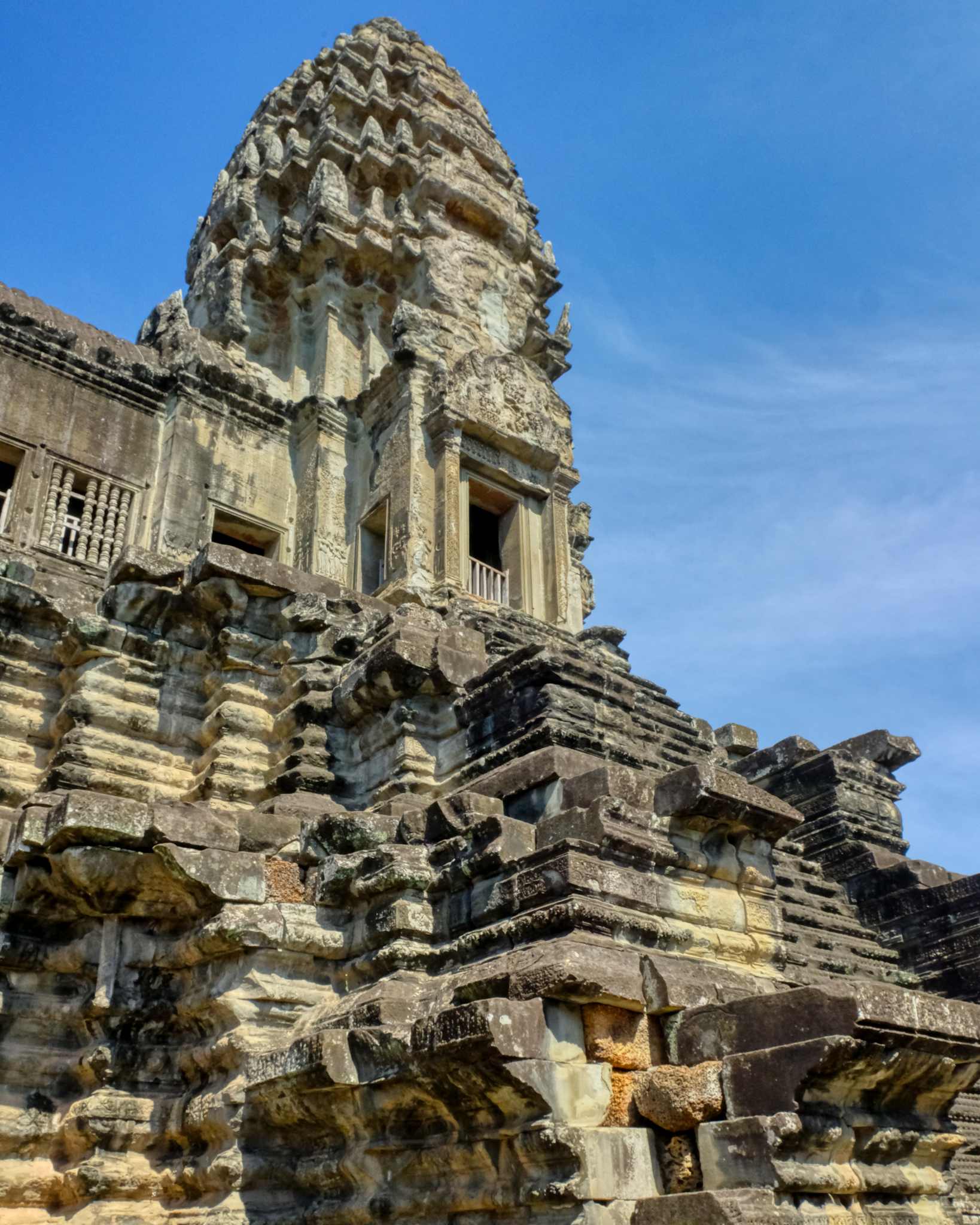 Stone spires carved with elaborate patterns of adornment.
Stone spires carved with elaborate patterns of adornment. Reclaimed from the jungle that reclaimed the temple centuries ago.
Reclaimed from the jungle that reclaimed the temple centuries ago. A temple spire. Fascinating.
A temple spire. Fascinating.
 Endless passages, rooms, doors, and b locked exits. It was incredibly interesting to just wander around in this ancient place.
Endless passages, rooms, doors, and b locked exits. It was incredibly interesting to just wander around in this ancient place.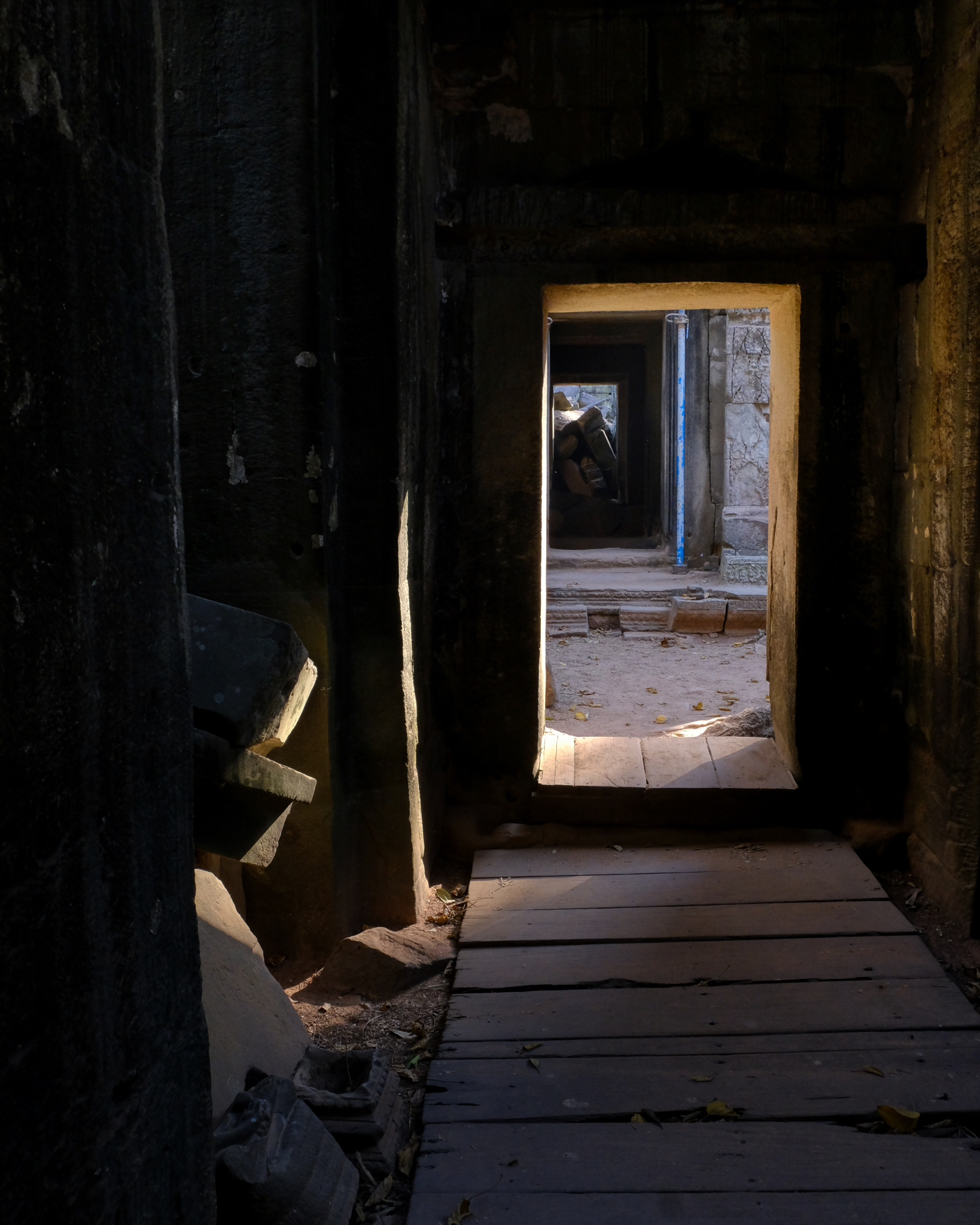 A space of wonder.
A space of wonder.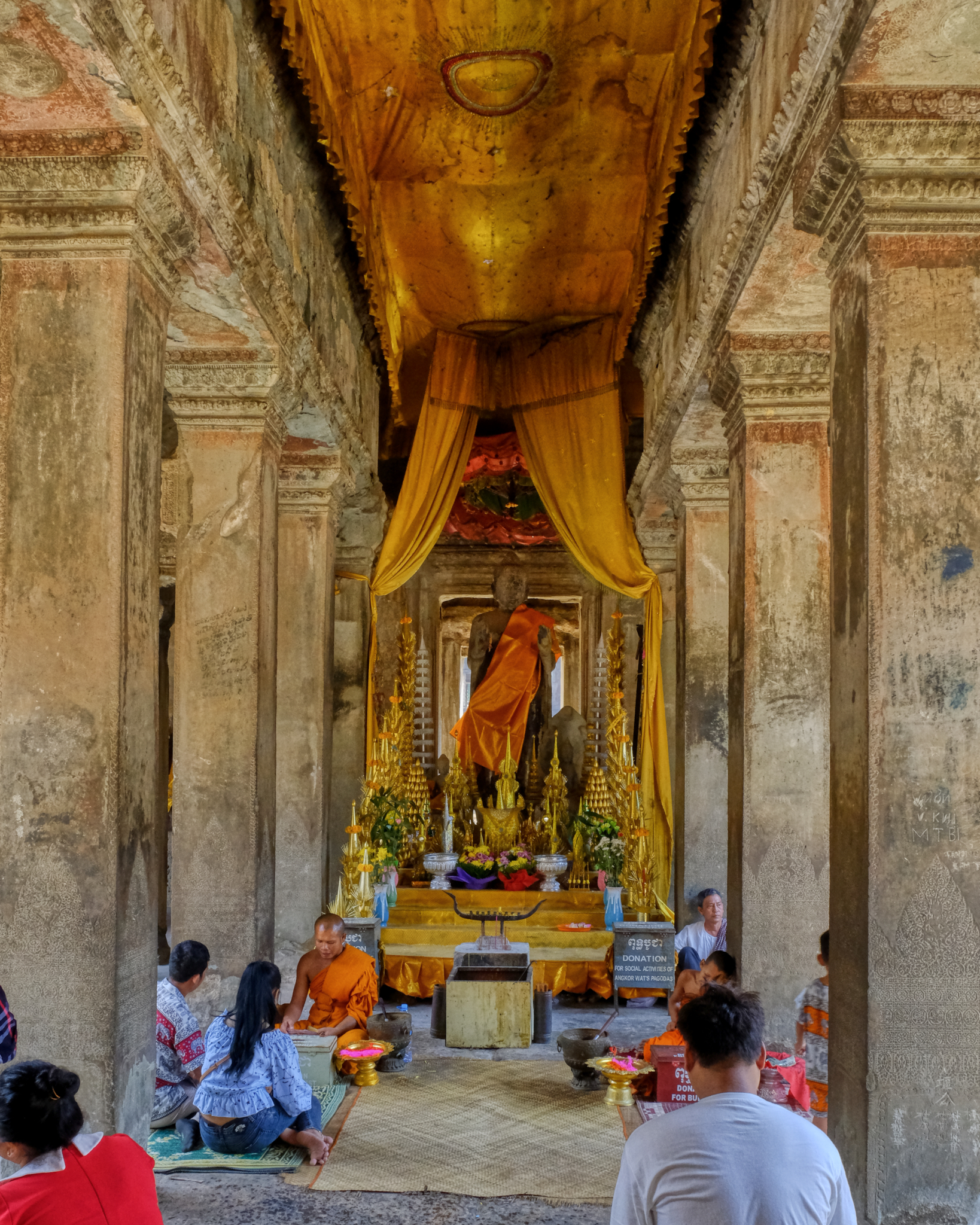 Rounding a corner inside the temple I came across Buddhist monks blessing devotees: Ankor Wat is still a living spiritual center.
Rounding a corner inside the temple I came across Buddhist monks blessing devotees: Ankor Wat is still a living spiritual center.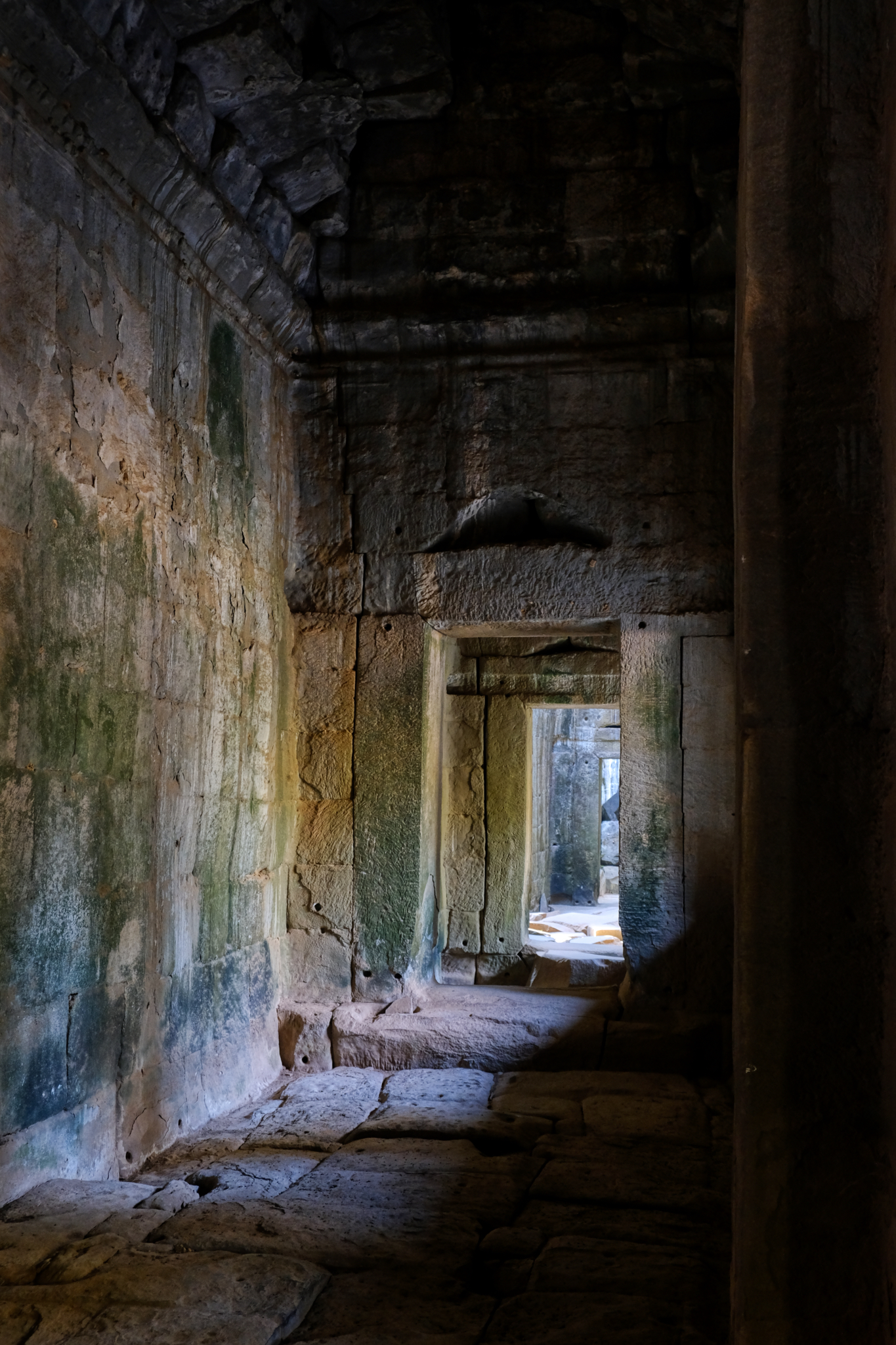 After the blessing monks . . . back into the labyrinth of passages . . .
After the blessing monks . . . back into the labyrinth of passages . . .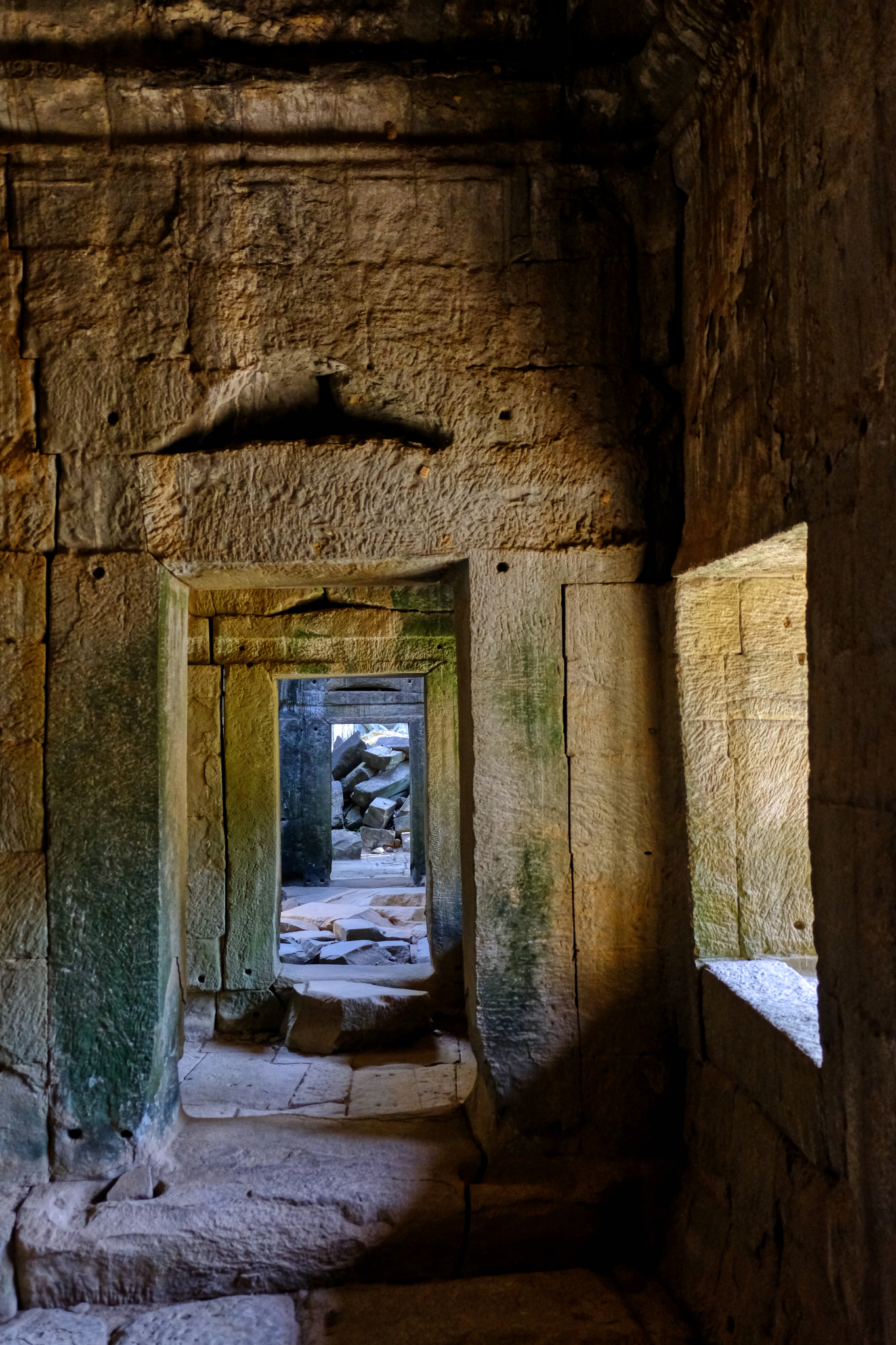 On and on . . . imagining the people who occupied these spaces when it was an active and populated city.
On and on . . . imagining the people who occupied these spaces when it was an active and populated city. The jungle is still trying to interpose itself on the ancient temple structures.
The jungle is still trying to interpose itself on the ancient temple structures.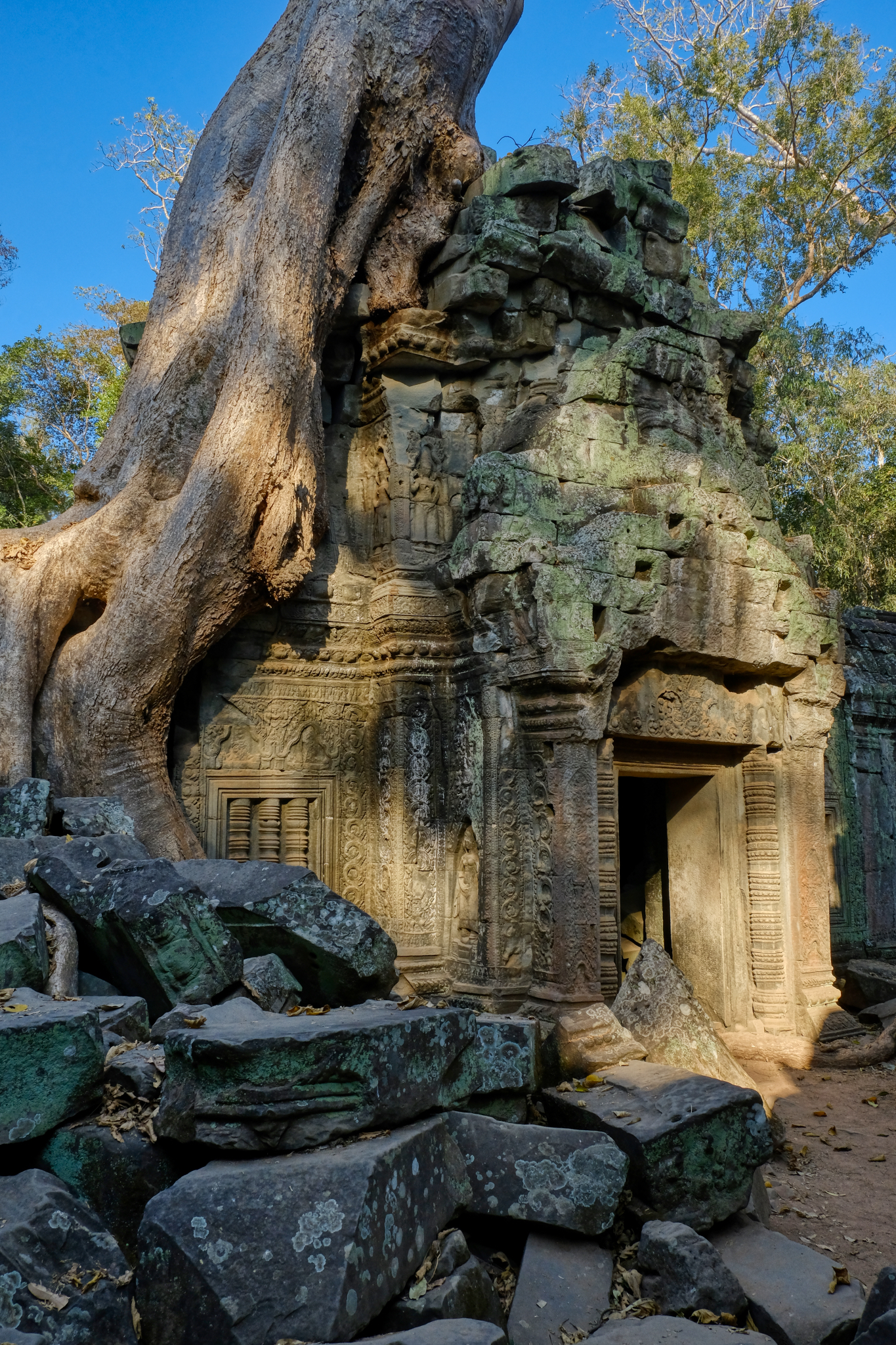 The iconic image of Angkor Wat is the giant tree roots embracing the temple stones.
The iconic image of Angkor Wat is the giant tree roots embracing the temple stones.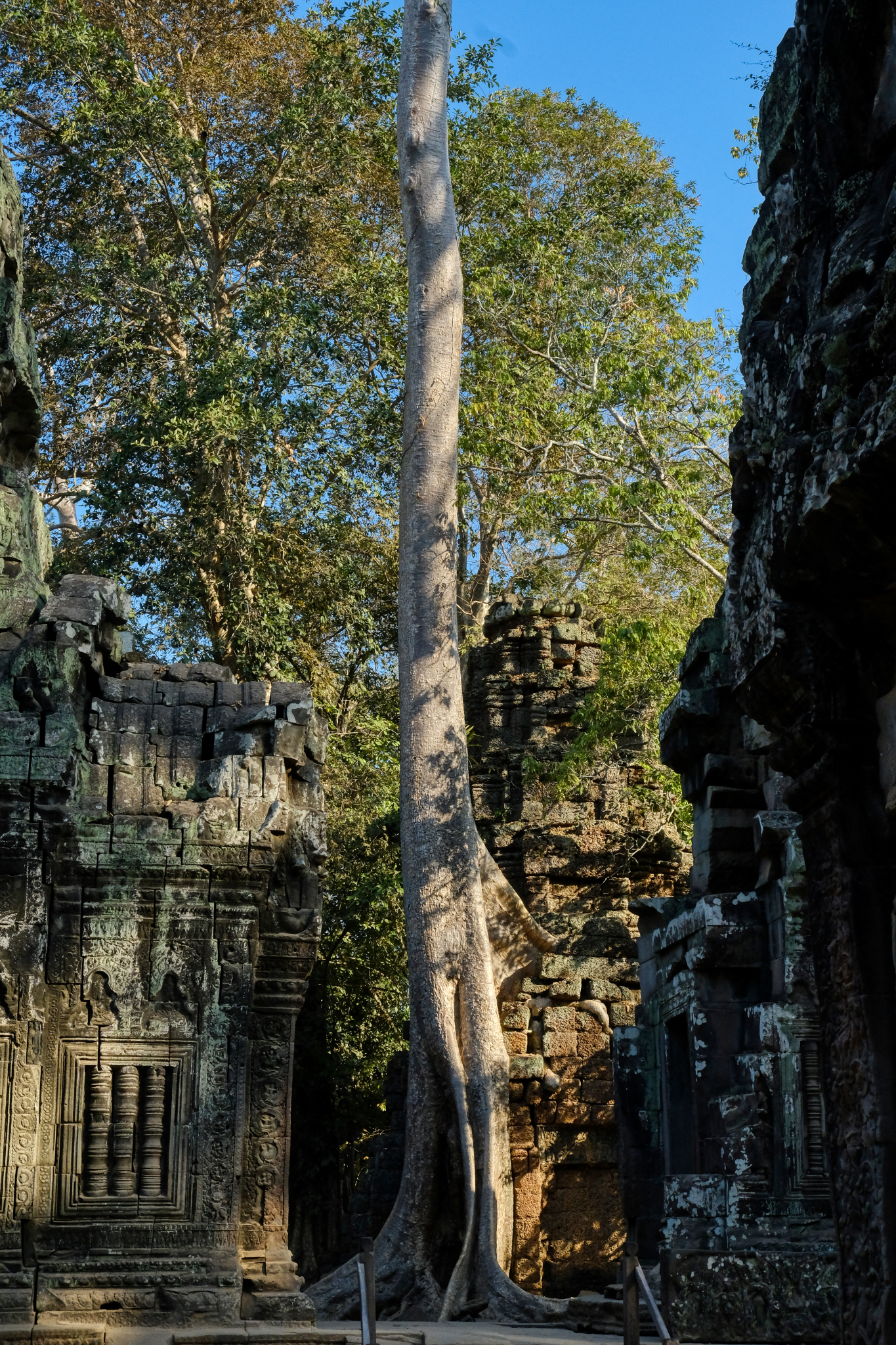 A mutual embrace . . . this tower looks as if it would fall without the support of the tree.
A mutual embrace . . . this tower looks as if it would fall without the support of the tree. A wall with cascading roots. Truly awesome.
A wall with cascading roots. Truly awesome. Like a limb from a giant alien animal . . . these roots are massive!
Like a limb from a giant alien animal . . . these roots are massive!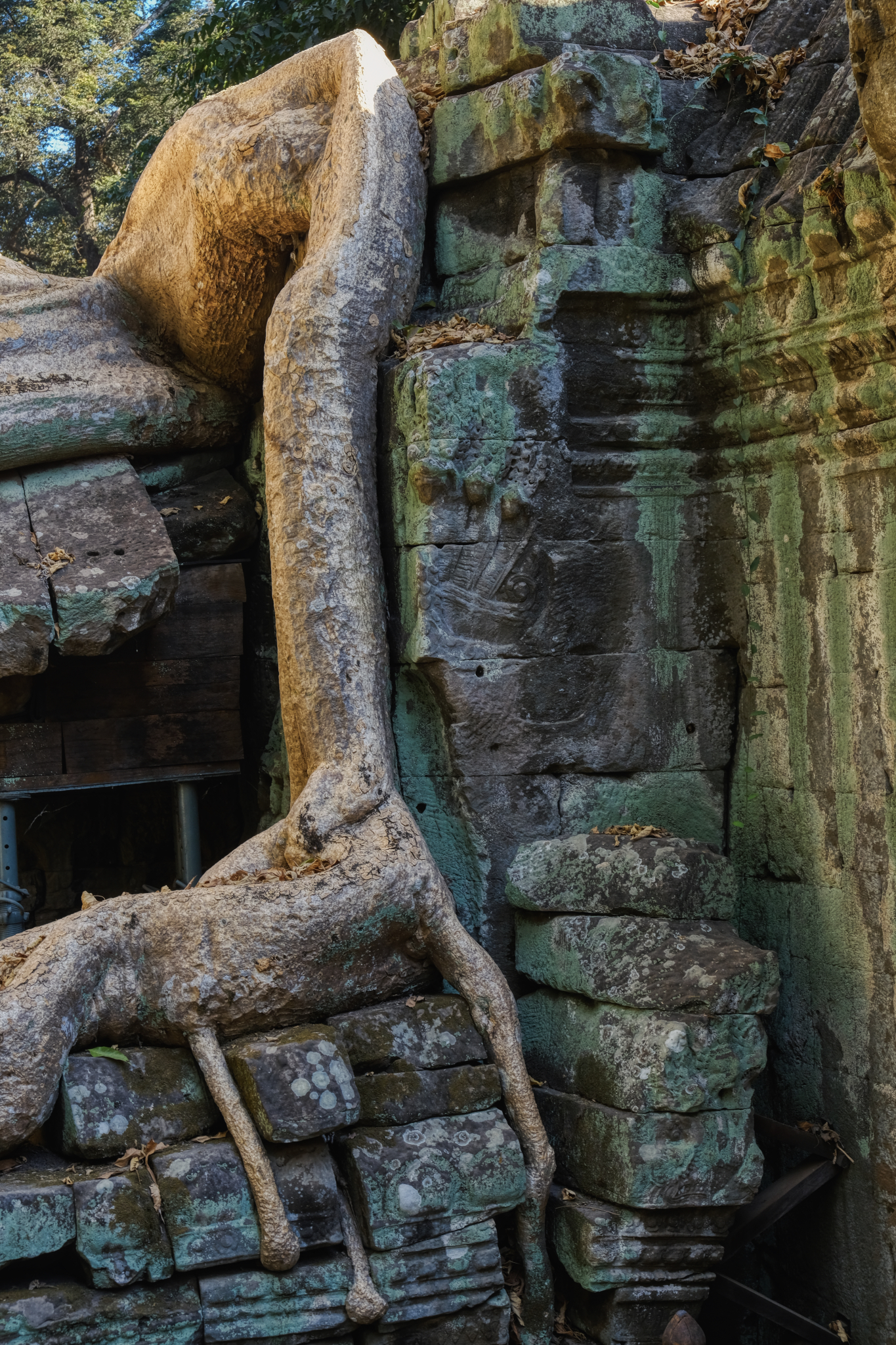 The temple in the grip of its alien overlord!
The temple in the grip of its alien overlord!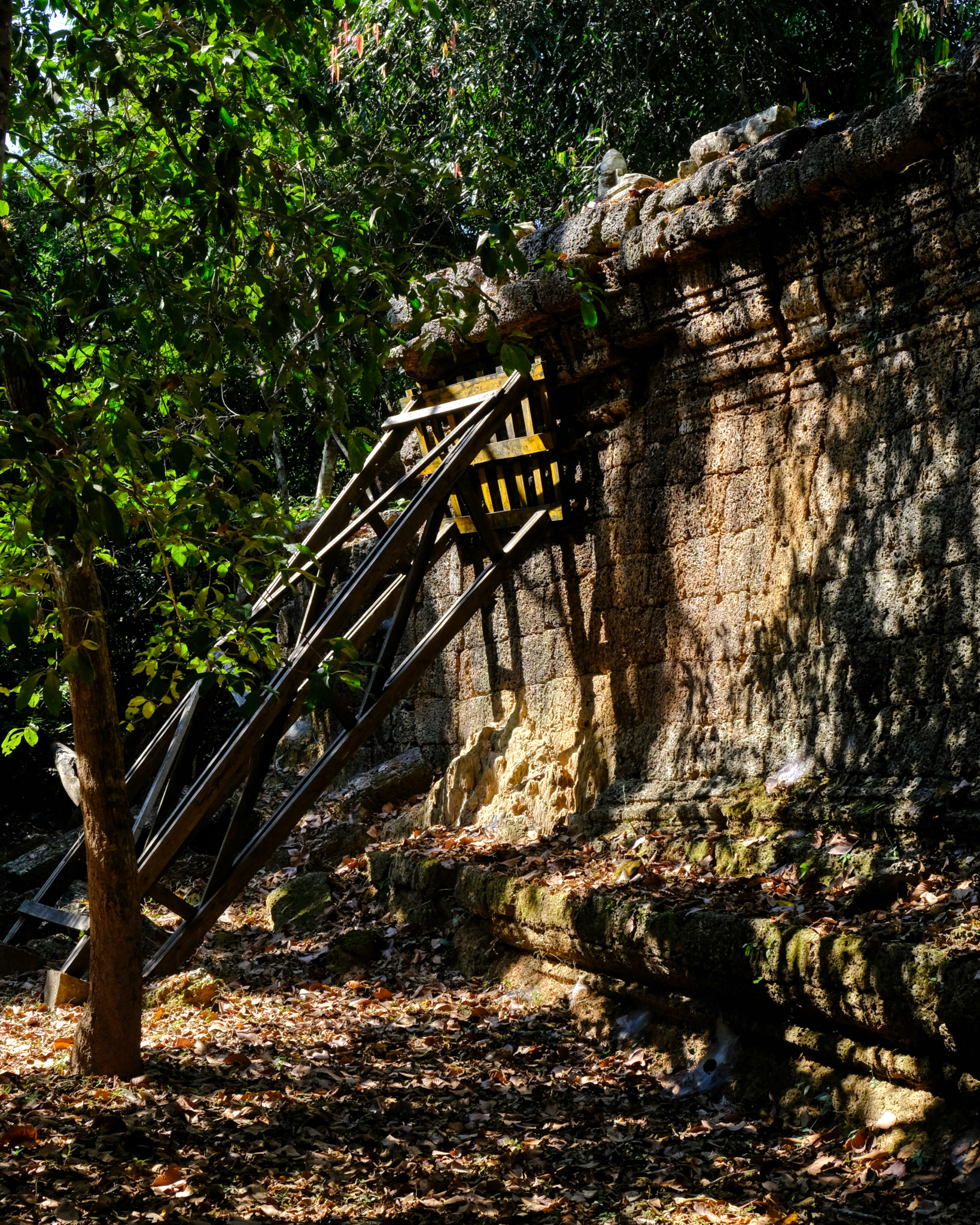 The aging walls supported. Most of the restoration work on Angkor Wat has been carries out by French and Cambodian archaeologists.
The aging walls supported. Most of the restoration work on Angkor Wat has been carries out by French and Cambodian archaeologists. Much of the various sites remain unreconstructed.
Much of the various sites remain unreconstructed.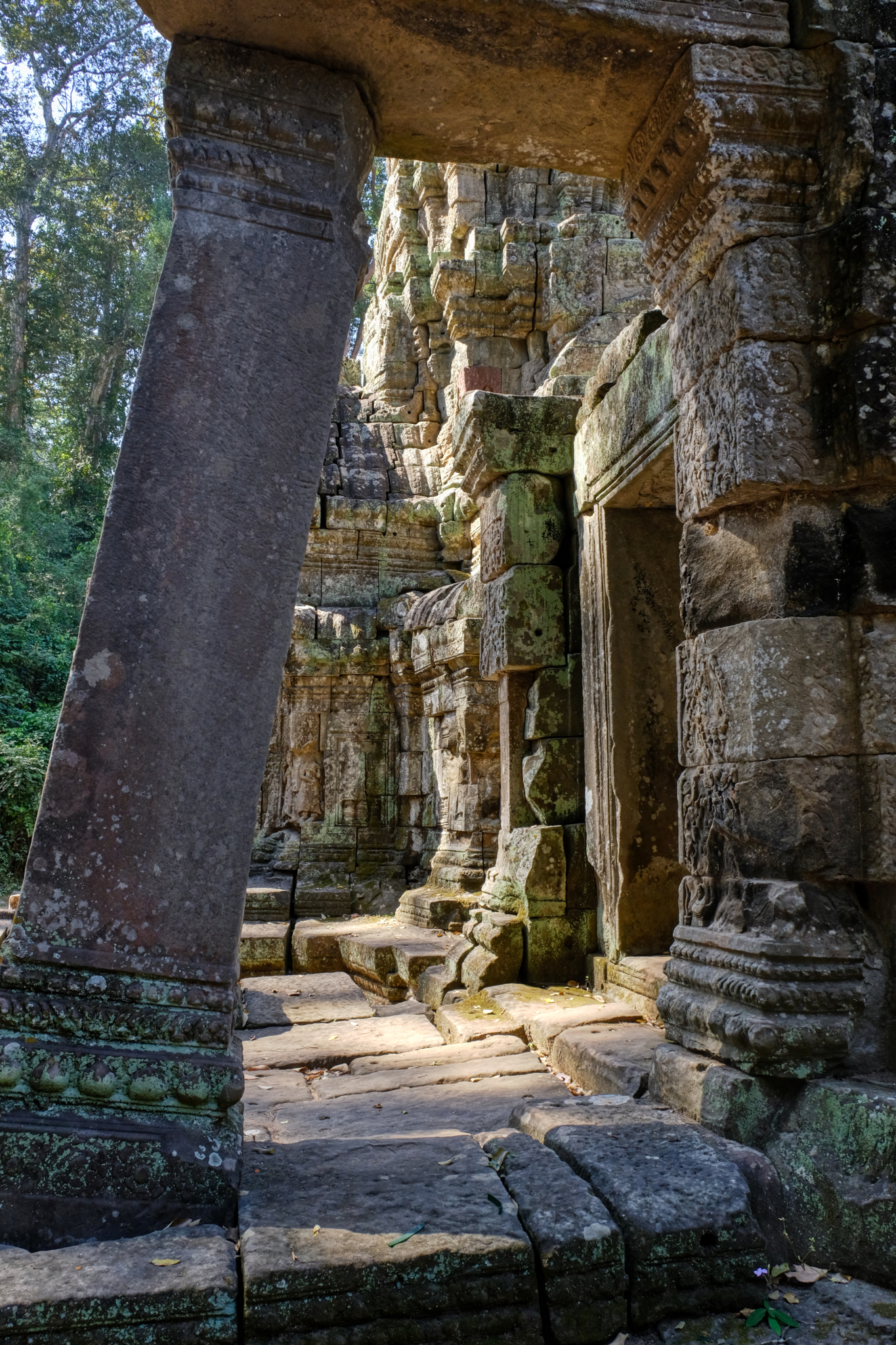 The state of deterioration is surprisingly less than one would have thought after 1000 years . . . but they build out of stone!
The state of deterioration is surprisingly less than one would have thought after 1000 years . . . but they build out of stone! My friend and I wandered for many hours through these narrow mysterious passages, always surprised with some amazing scene around every corner . . .
My friend and I wandered for many hours through these narrow mysterious passages, always surprised with some amazing scene around every corner . . . . . . always another scene of doors and passages . . . gorgeous . . .
. . . always another scene of doors and passages . . . gorgeous . . .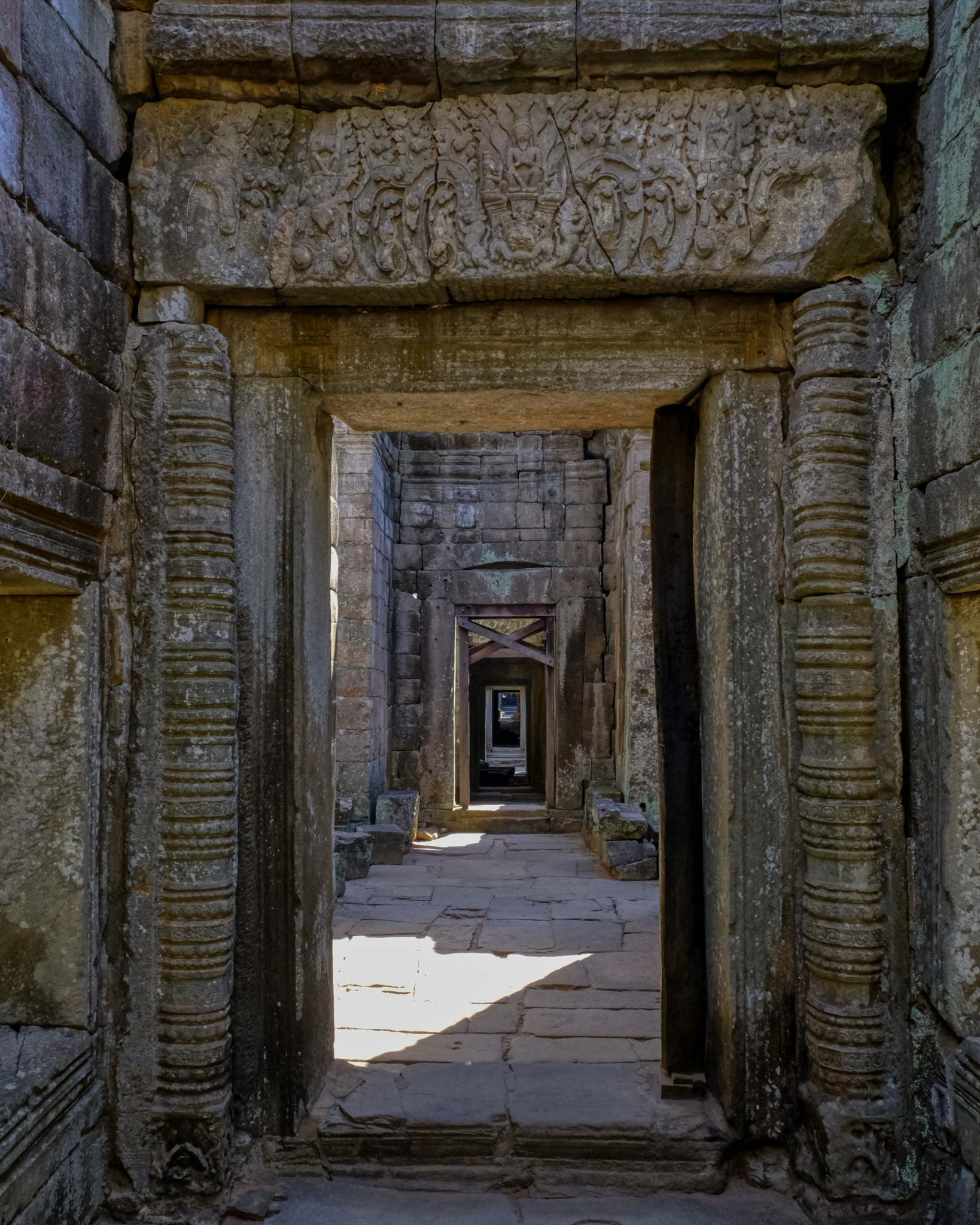 . . . on and on we walked, our mouths open in amazement all the while!
. . . on and on we walked, our mouths open in amazement all the while!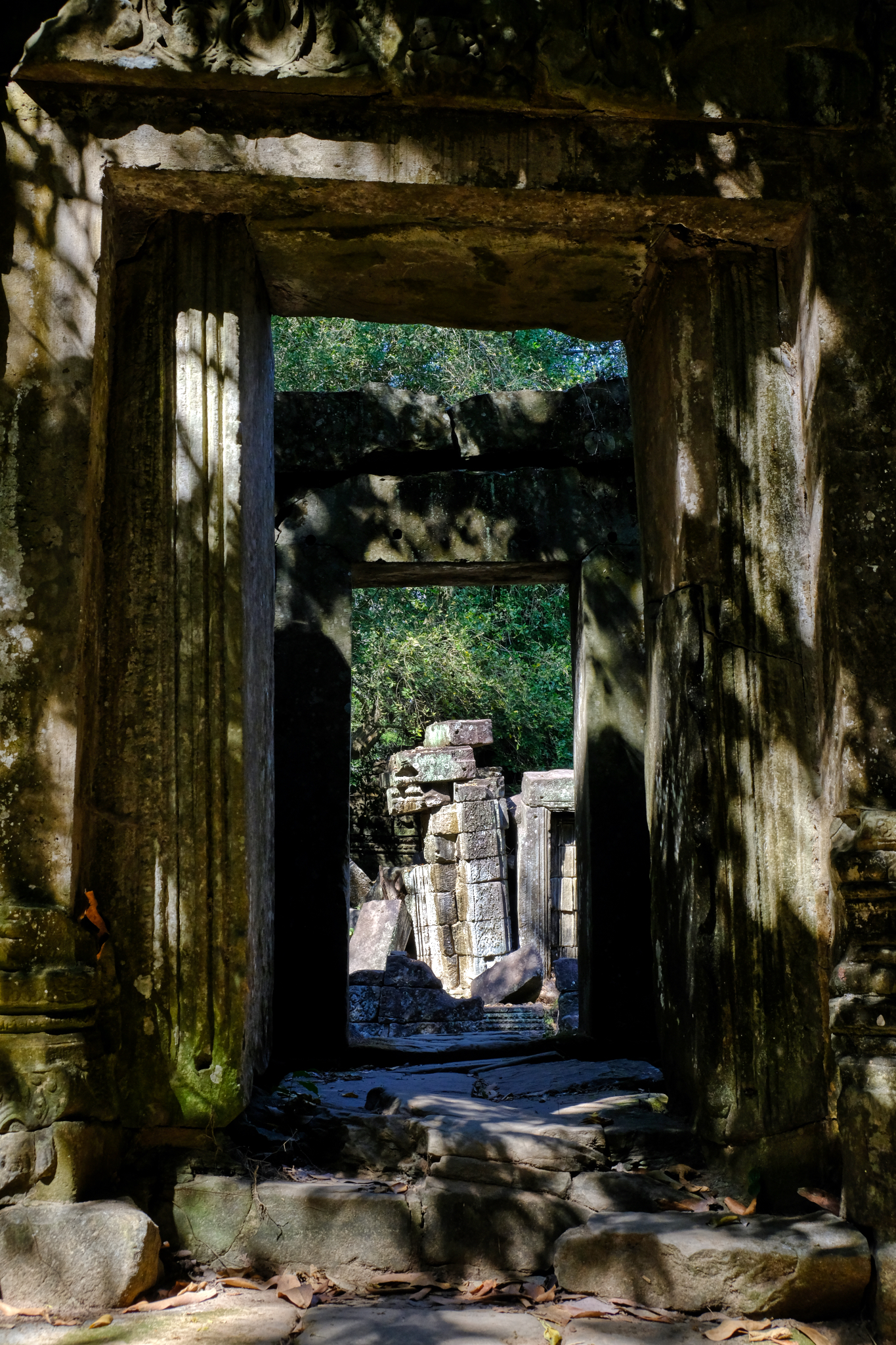 Our long walks through the interior passages would occasionally lead us back outdoors.
Our long walks through the interior passages would occasionally lead us back outdoors. And back outside we were greeted with more amazing ancient monumental temple structures.
And back outside we were greeted with more amazing ancient monumental temple structures.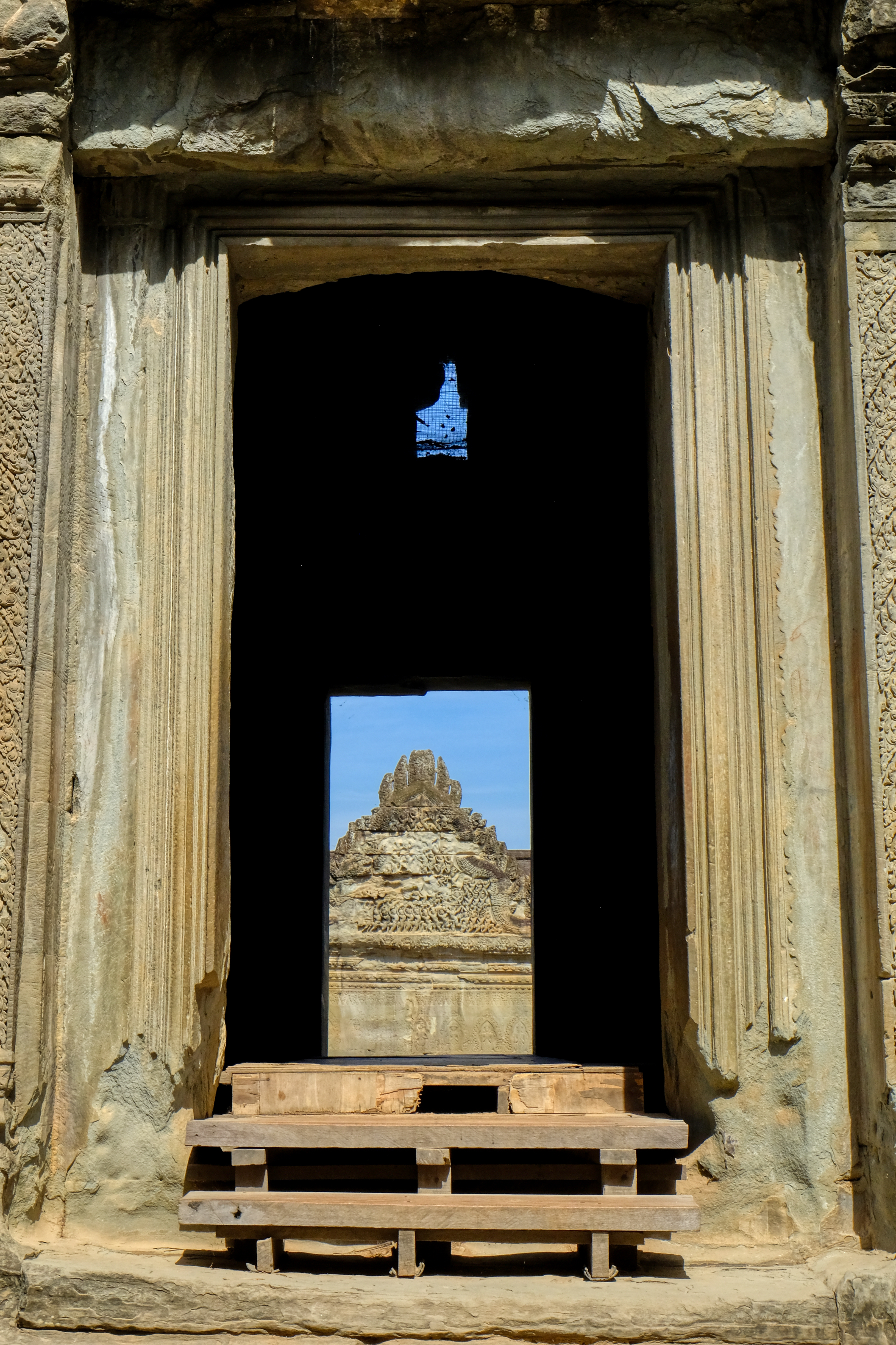 Always tempted to explore in another courtyard . . . endless curiosity.
Always tempted to explore in another courtyard . . . endless curiosity.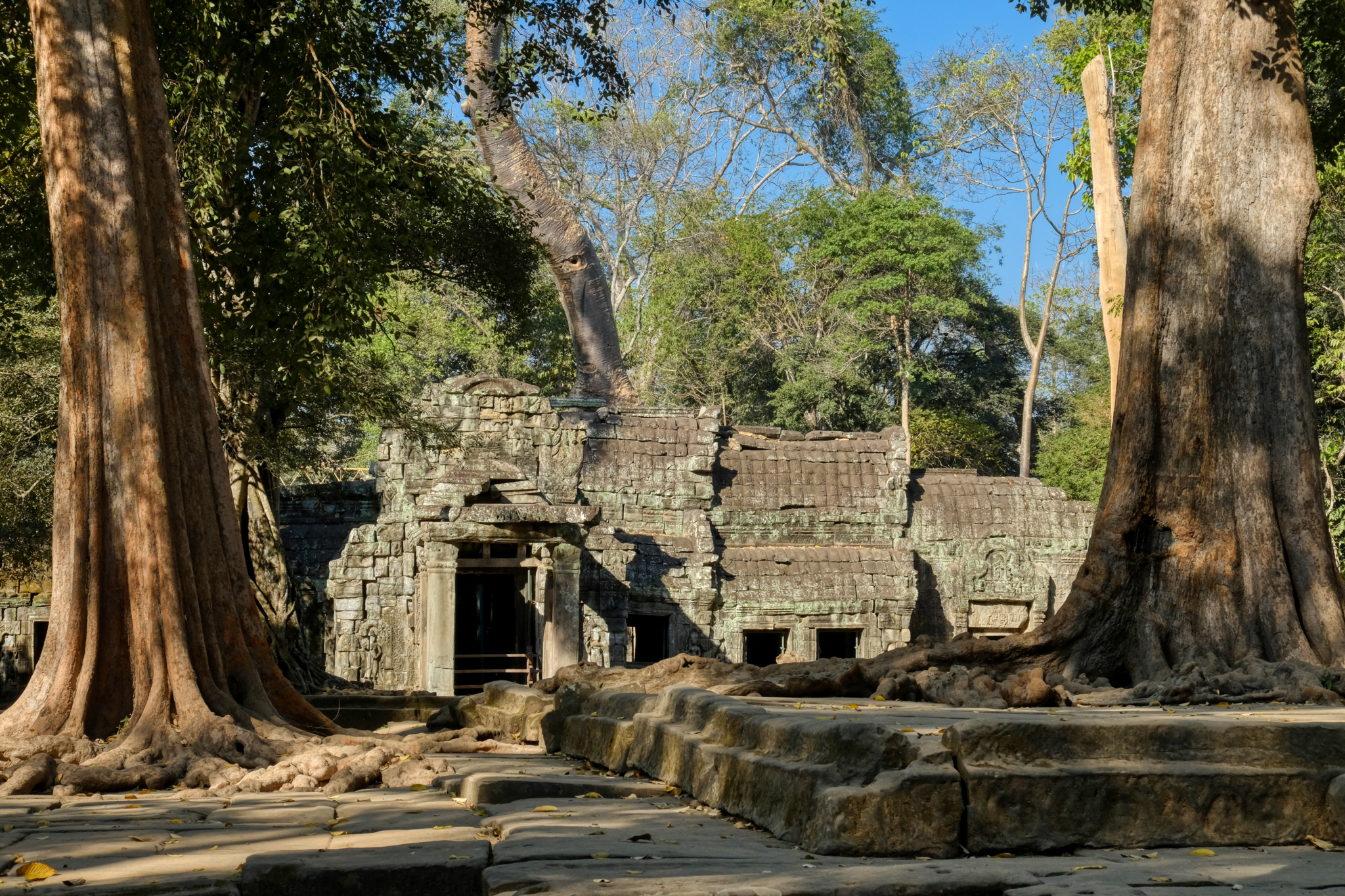 We had a car and driver each day who knew all the temples and would drive us between them. A new temple.
We had a car and driver each day who knew all the temples and would drive us between them. A new temple.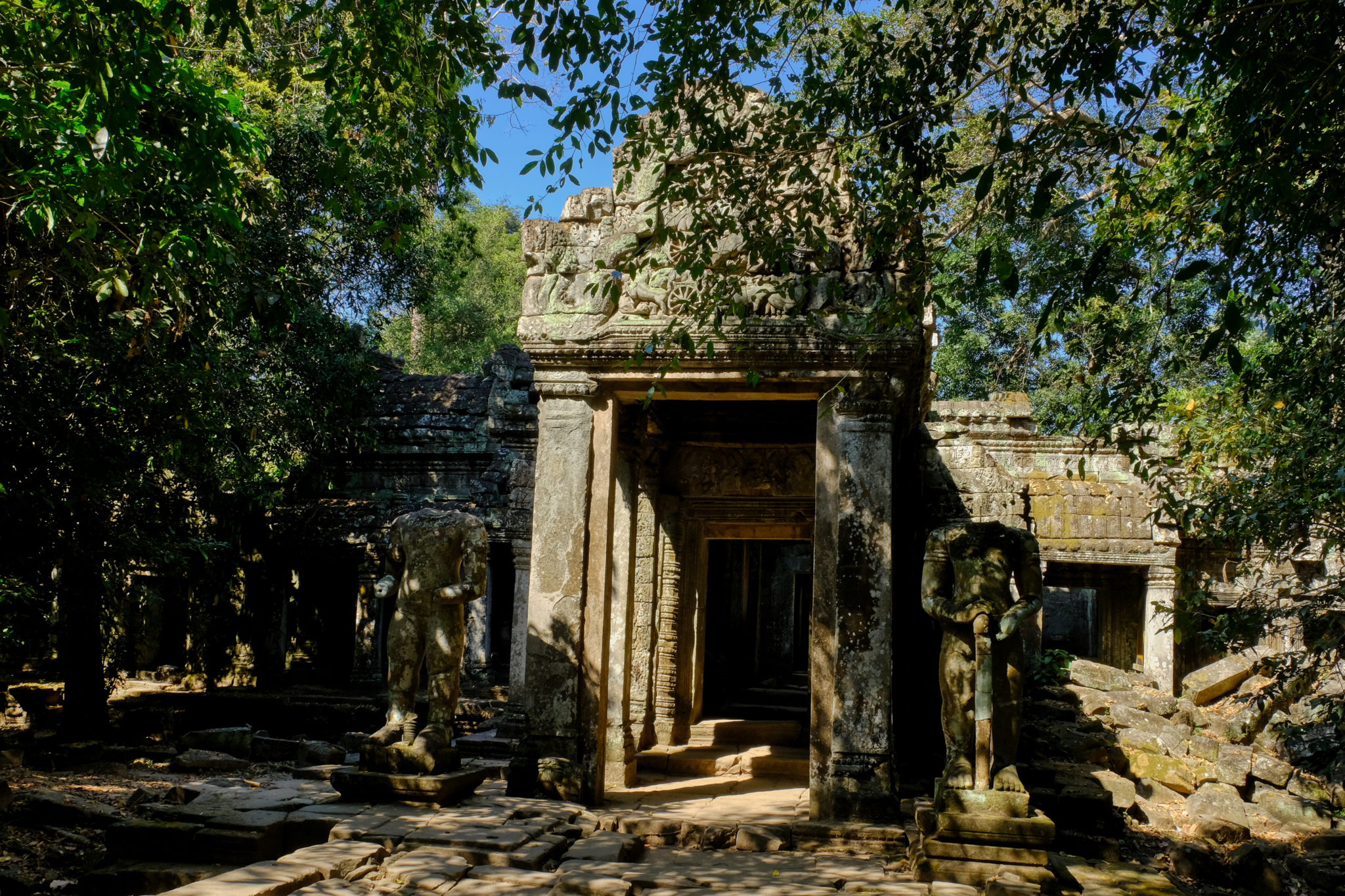 There were signs of vandalism and pilfering of stone figure heads.
There were signs of vandalism and pilfering of stone figure heads. A sweet temple sala.
A sweet temple sala.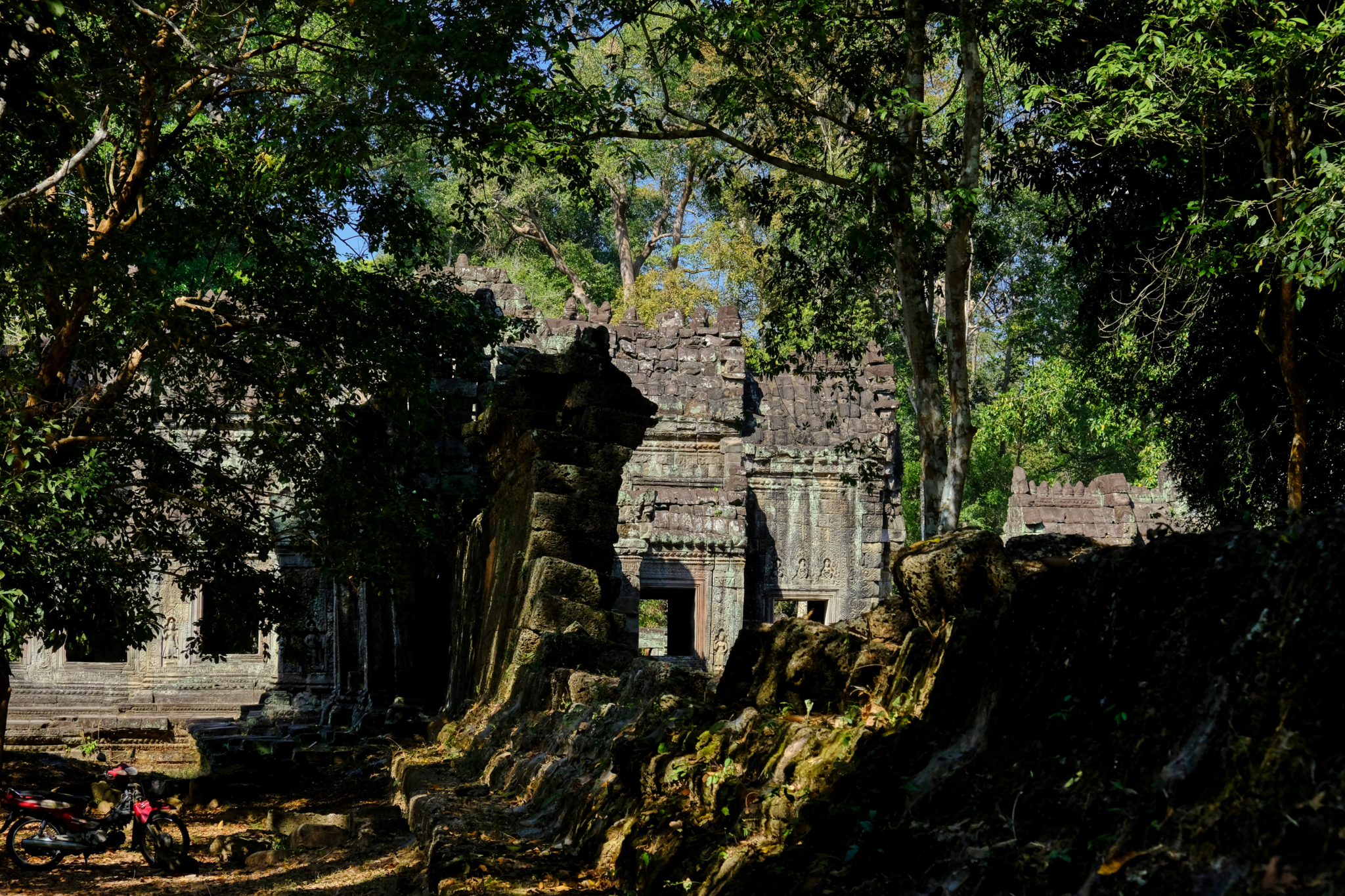 In deep shade or in bright sun, the temples are a marvel of detail . . .
In deep shade or in bright sun, the temples are a marvel of detail . . . 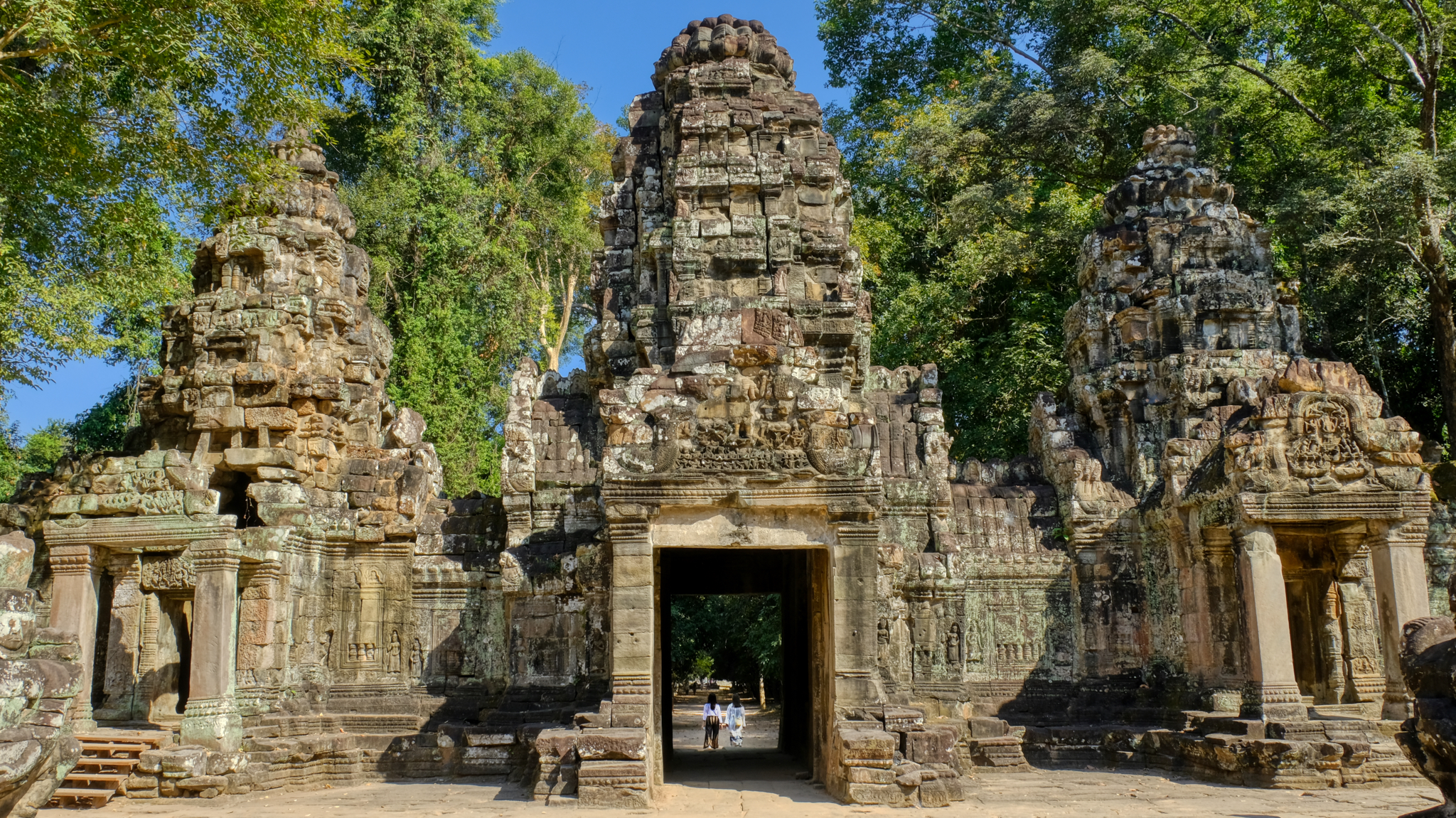 One of the many extraordinary gates.
One of the many extraordinary gates.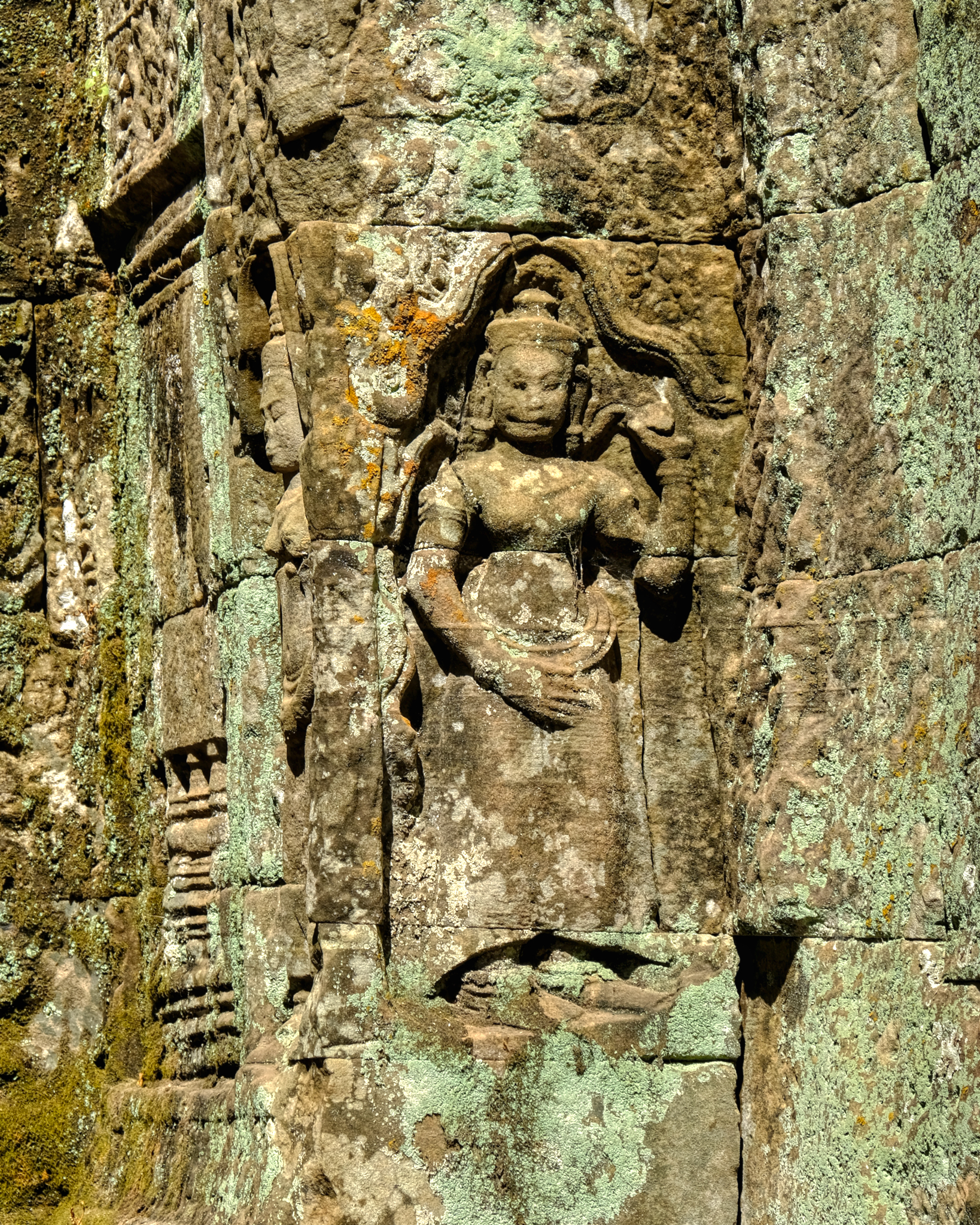 These gates were carved in exquisite detail. Cambodia is a tropical country with a considerable wet season each year, as evidenced by the moss and mold that often covered the monuments.
These gates were carved in exquisite detail. Cambodia is a tropical country with a considerable wet season each year, as evidenced by the moss and mold that often covered the monuments.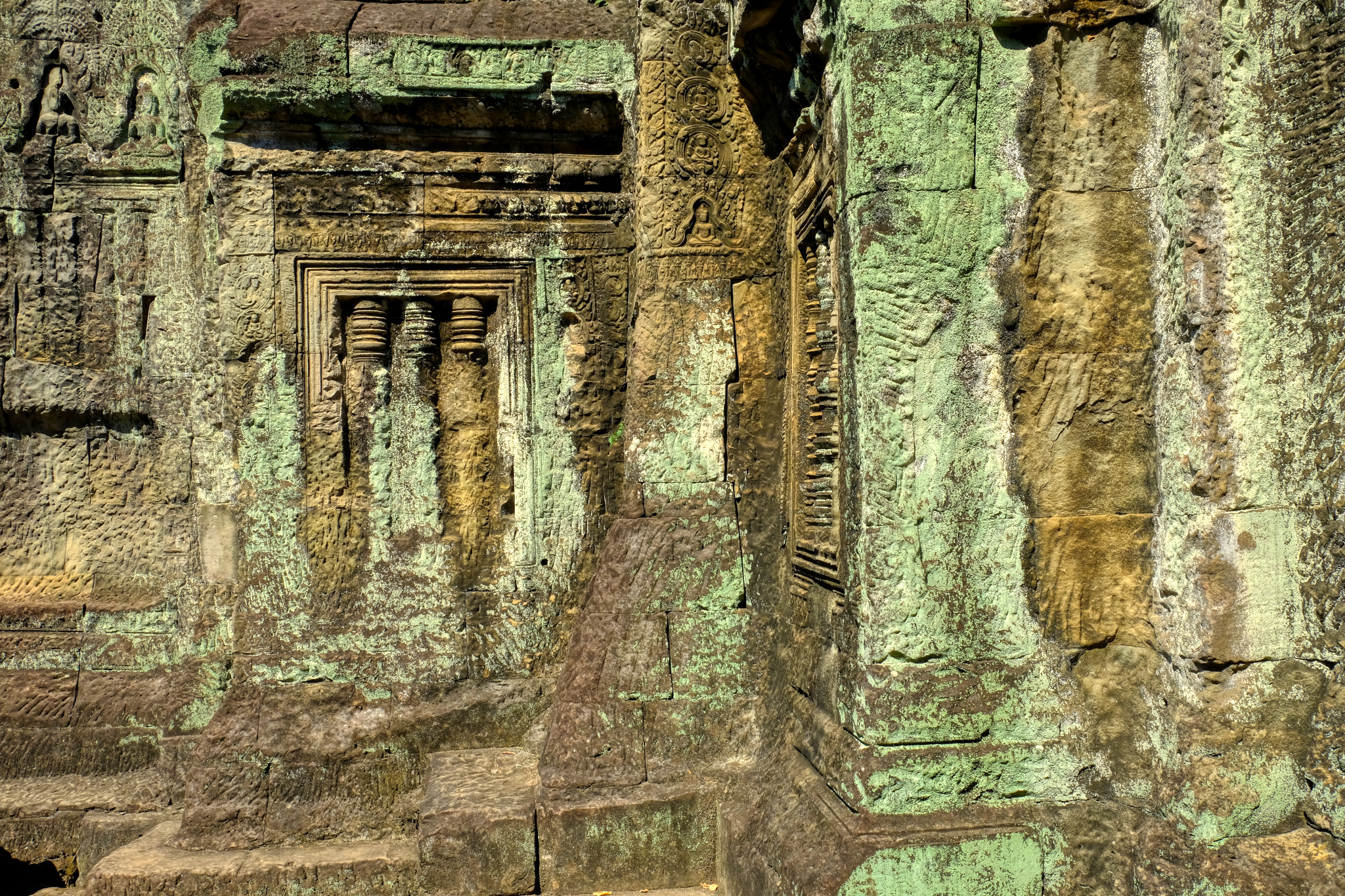 The harsh, almost clinical, light actually helps in these photos of the tropical encrusting of the ruins.
The harsh, almost clinical, light actually helps in these photos of the tropical encrusting of the ruins.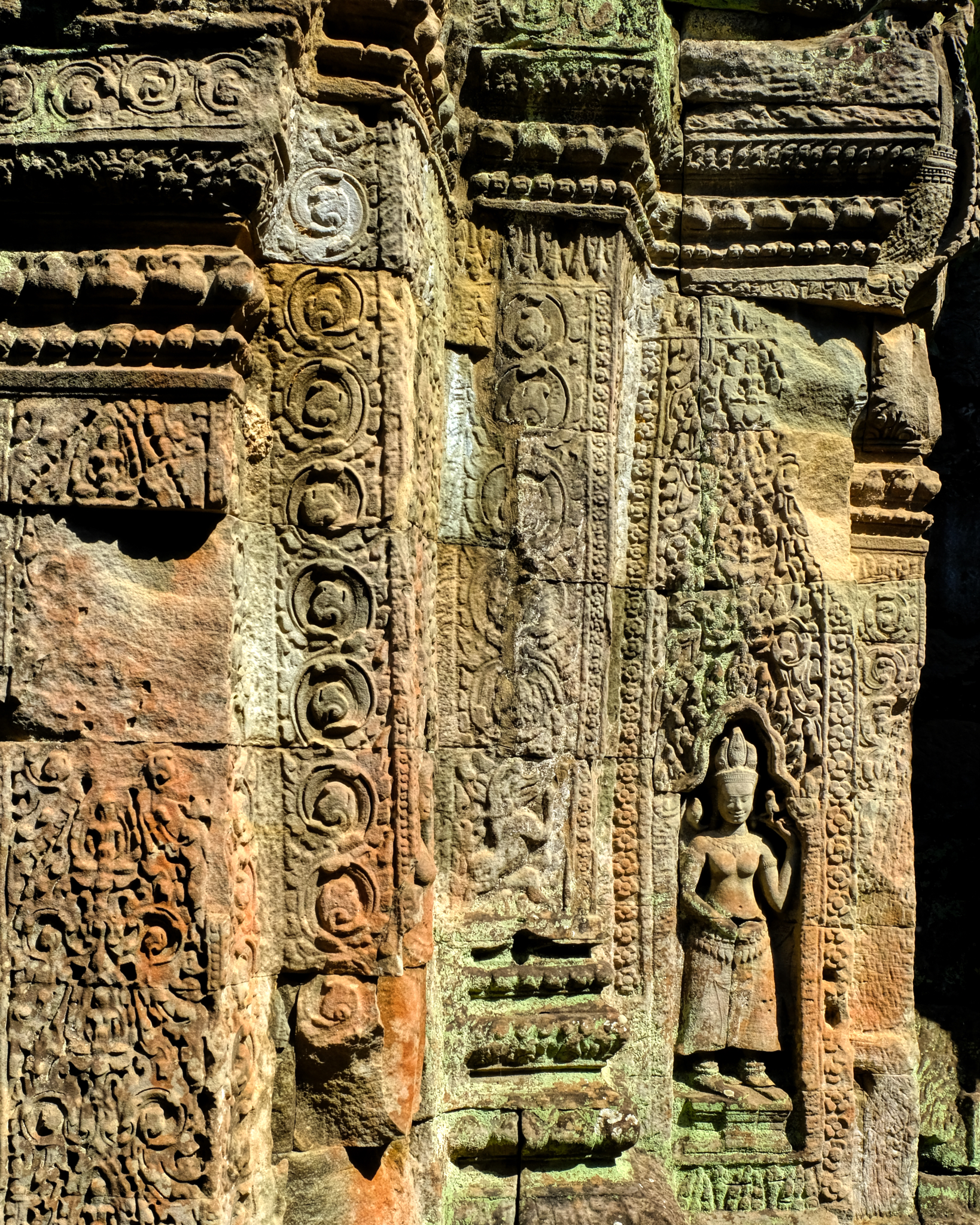 Such beautifully carved figures and patterns everywhere.
Such beautifully carved figures and patterns everywhere. I loved these gates . . .
I loved these gates . . .  After walking through the gates, it was sometimes a kilometer or more until you arrived at the temple complex. Sometimes there would be traditional Khmer musicians along the walk.
After walking through the gates, it was sometimes a kilometer or more until you arrived at the temple complex. Sometimes there would be traditional Khmer musicians along the walk.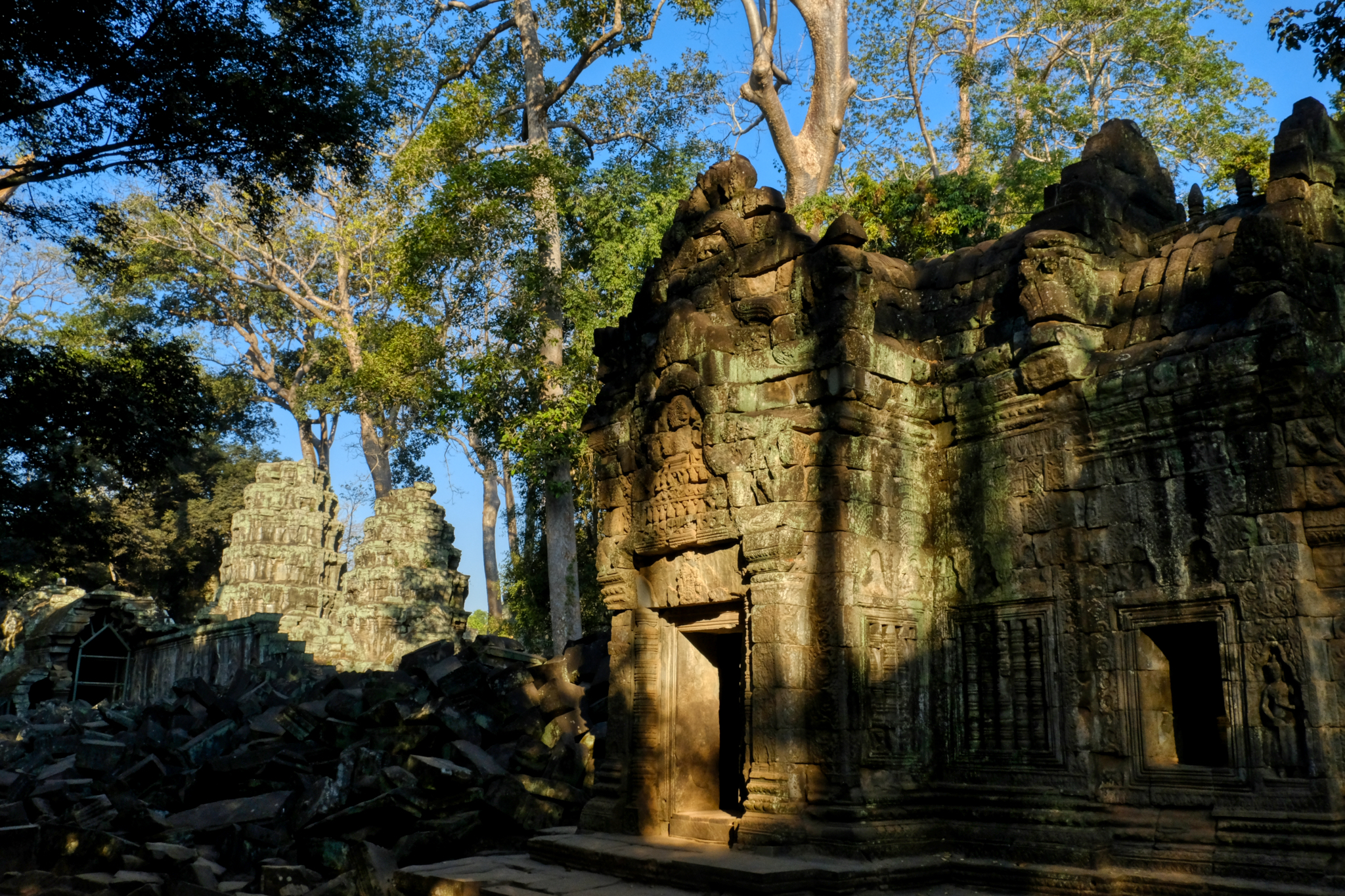 We spent two full days, starting before sunrise and ending after sunset, among the Angkor ruin.
We spent two full days, starting before sunrise and ending after sunset, among the Angkor ruin. The late, angled light made for some fantastic conditions for photography.
The late, angled light made for some fantastic conditions for photography. Late light and shadow on the Angkor Wat ruins.
Late light and shadow on the Angkor Wat ruins.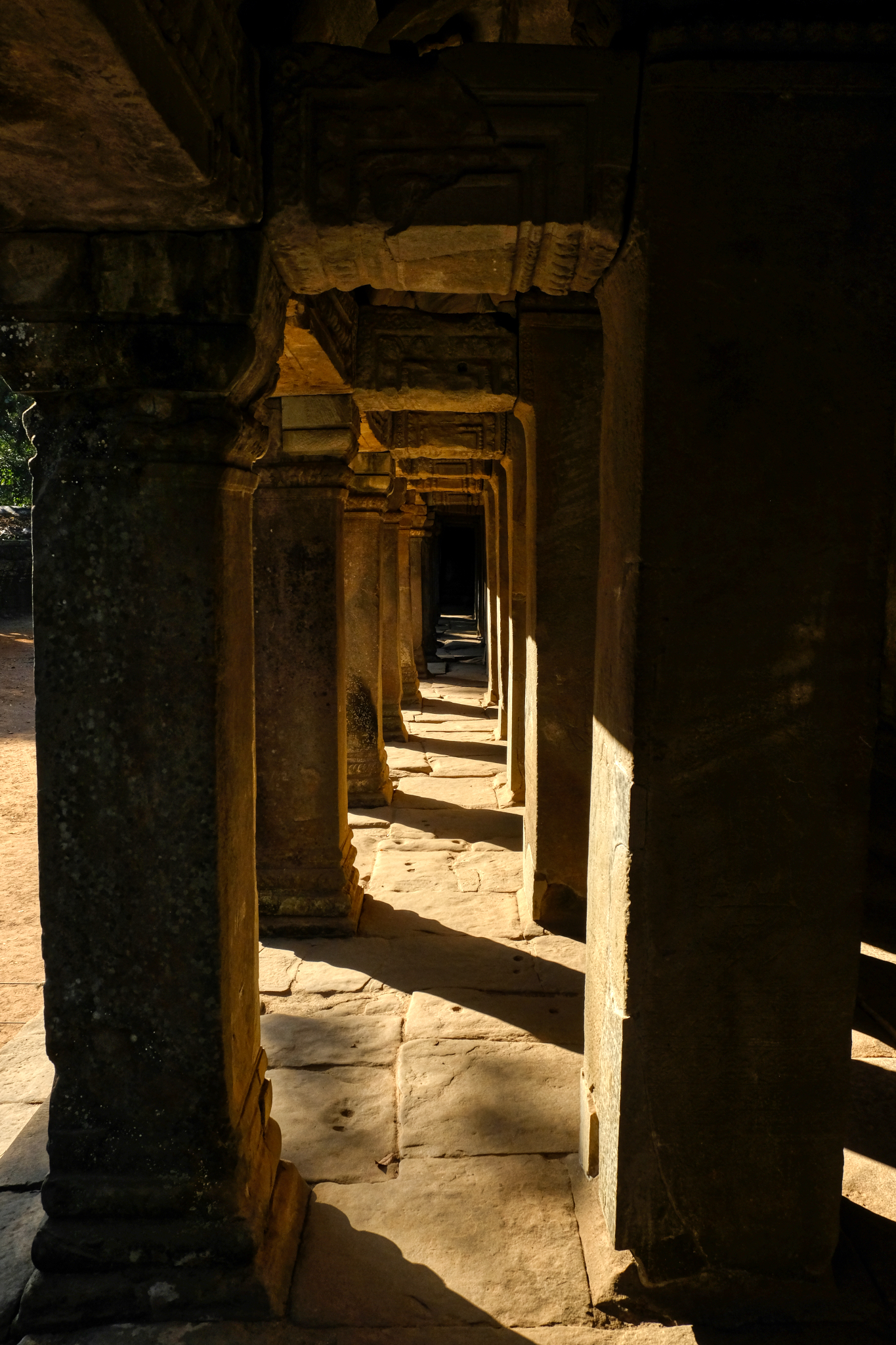 Sharp shadow in the Angkor Wat colonnades.
Sharp shadow in the Angkor Wat colonnades.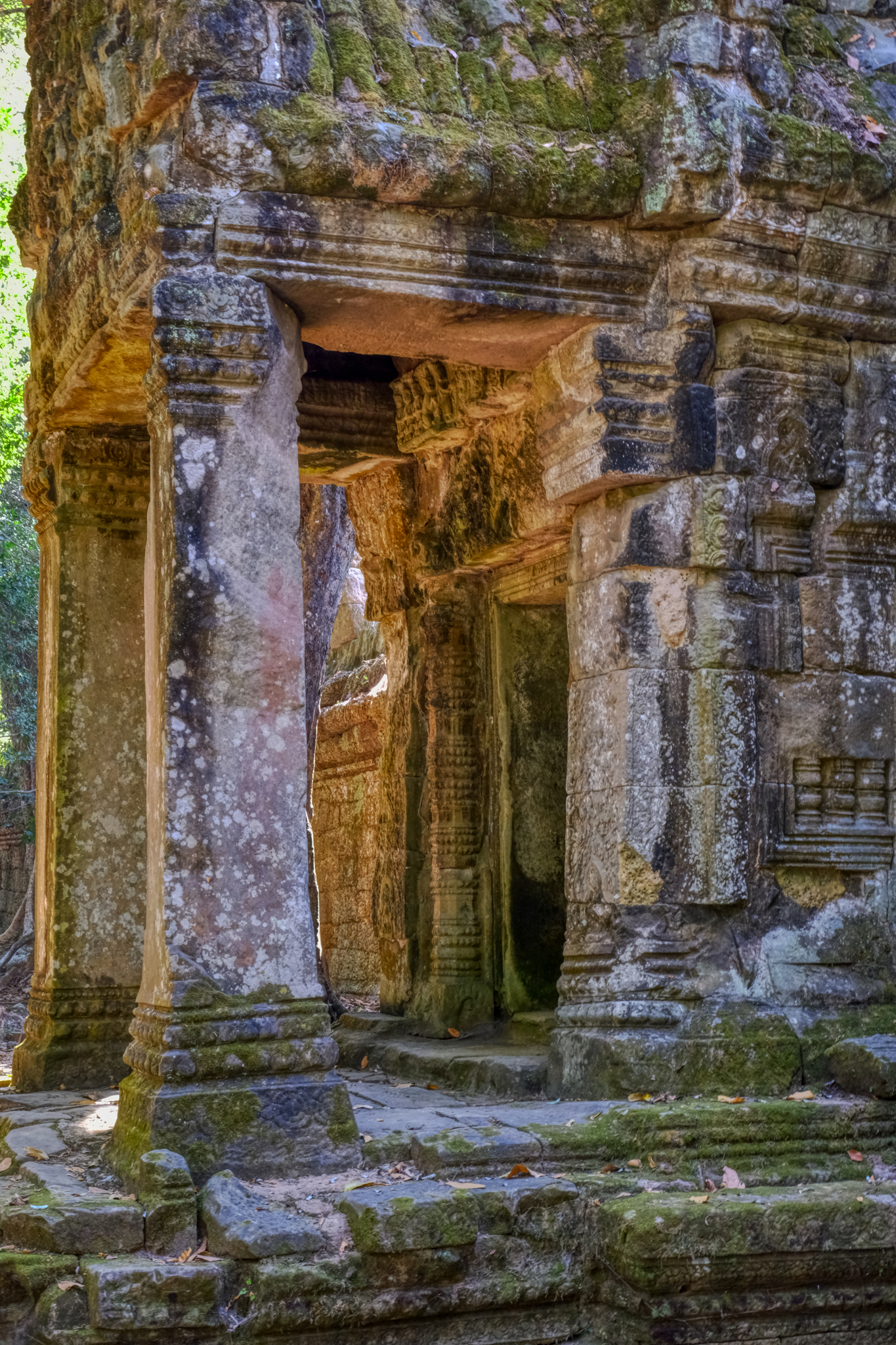 Ah! The light!
Ah! The light!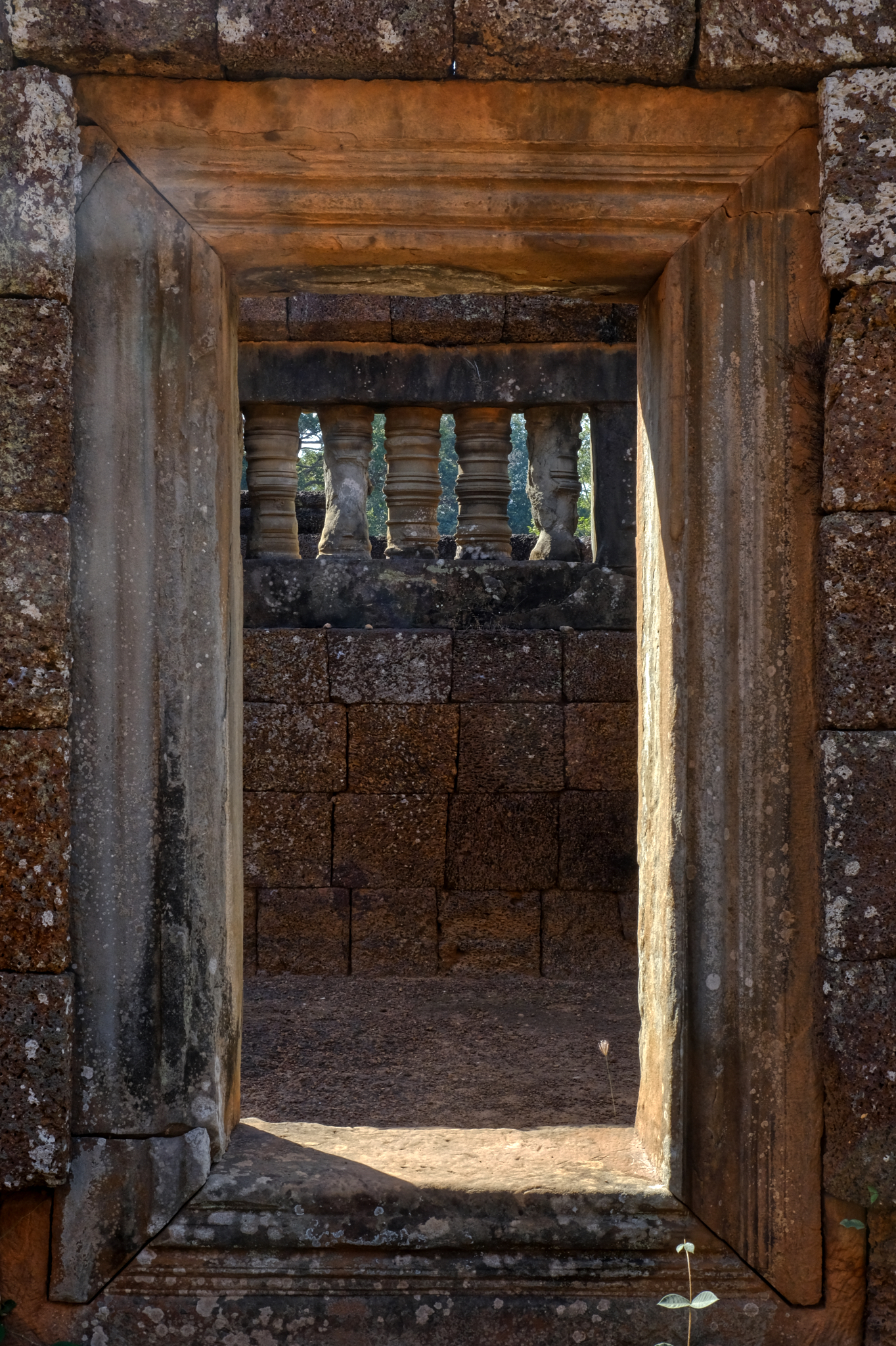 Shadows framed.
Shadows framed. Smoky ruins in the late light.
Smoky ruins in the late light. These interiors were full of an almost magical spiritual moodiness.
These interiors were full of an almost magical spiritual moodiness.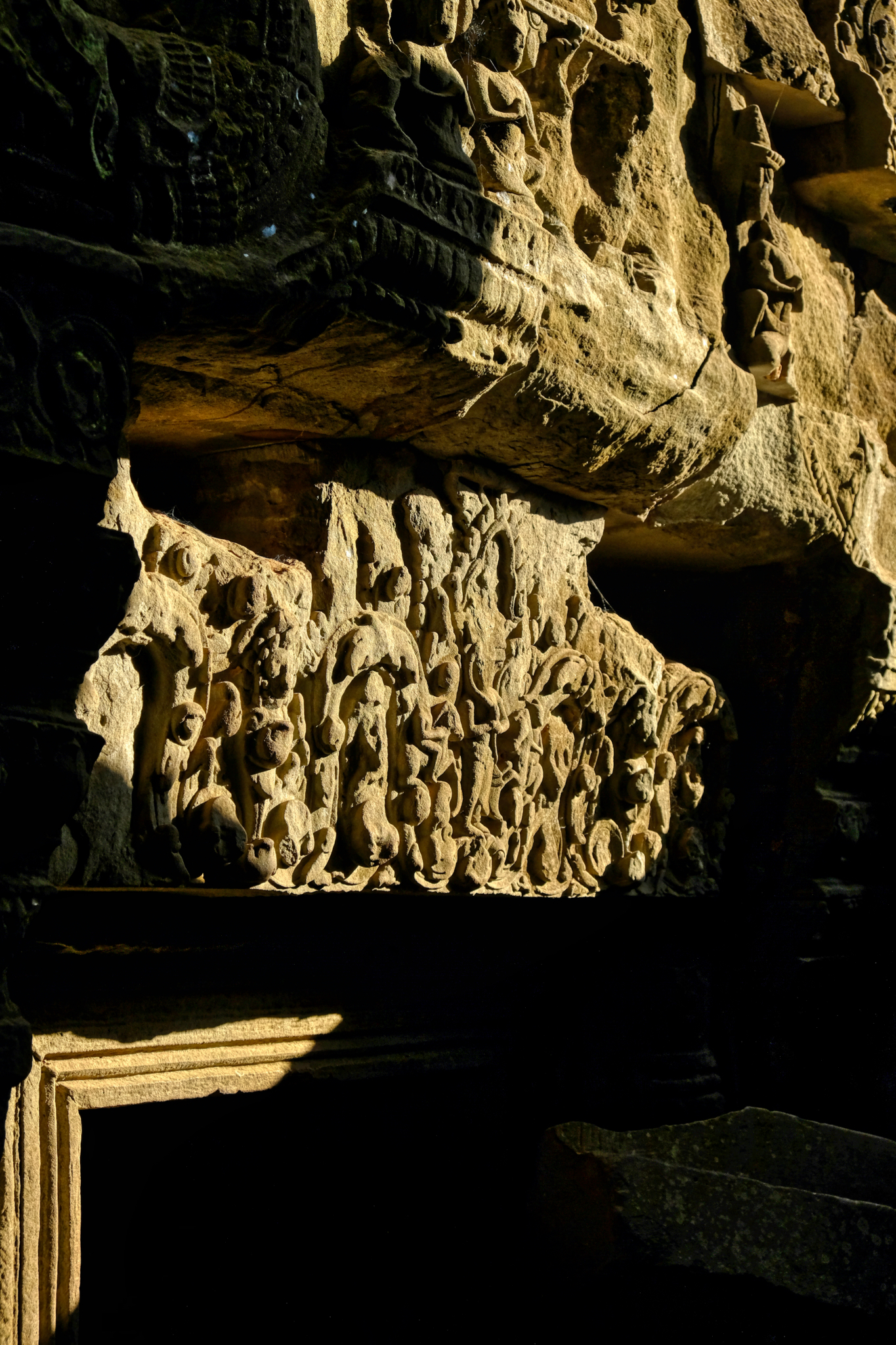 Long shadows accentuated the fine detail. Almost every surface of the temples was carved.
Long shadows accentuated the fine detail. Almost every surface of the temples was carved. As you might imagine, I was in photographers' heaven walking the halls and passages of Angkor Wat . . . something amazing to shoot at every turn.
As you might imagine, I was in photographers' heaven walking the halls and passages of Angkor Wat . . . something amazing to shoot at every turn.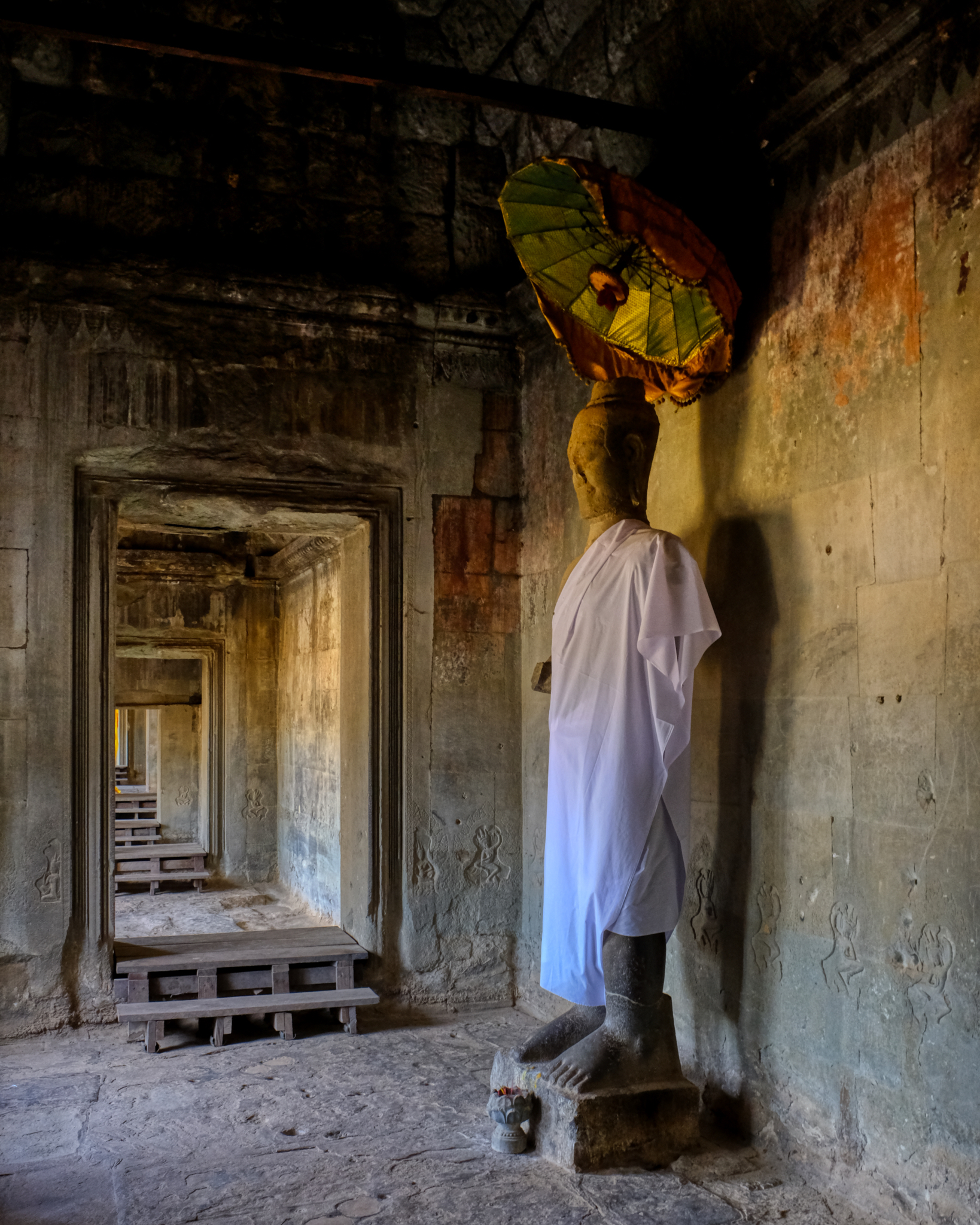 A new image at each turn, at each new chamber, at each door.
A new image at each turn, at each new chamber, at each door.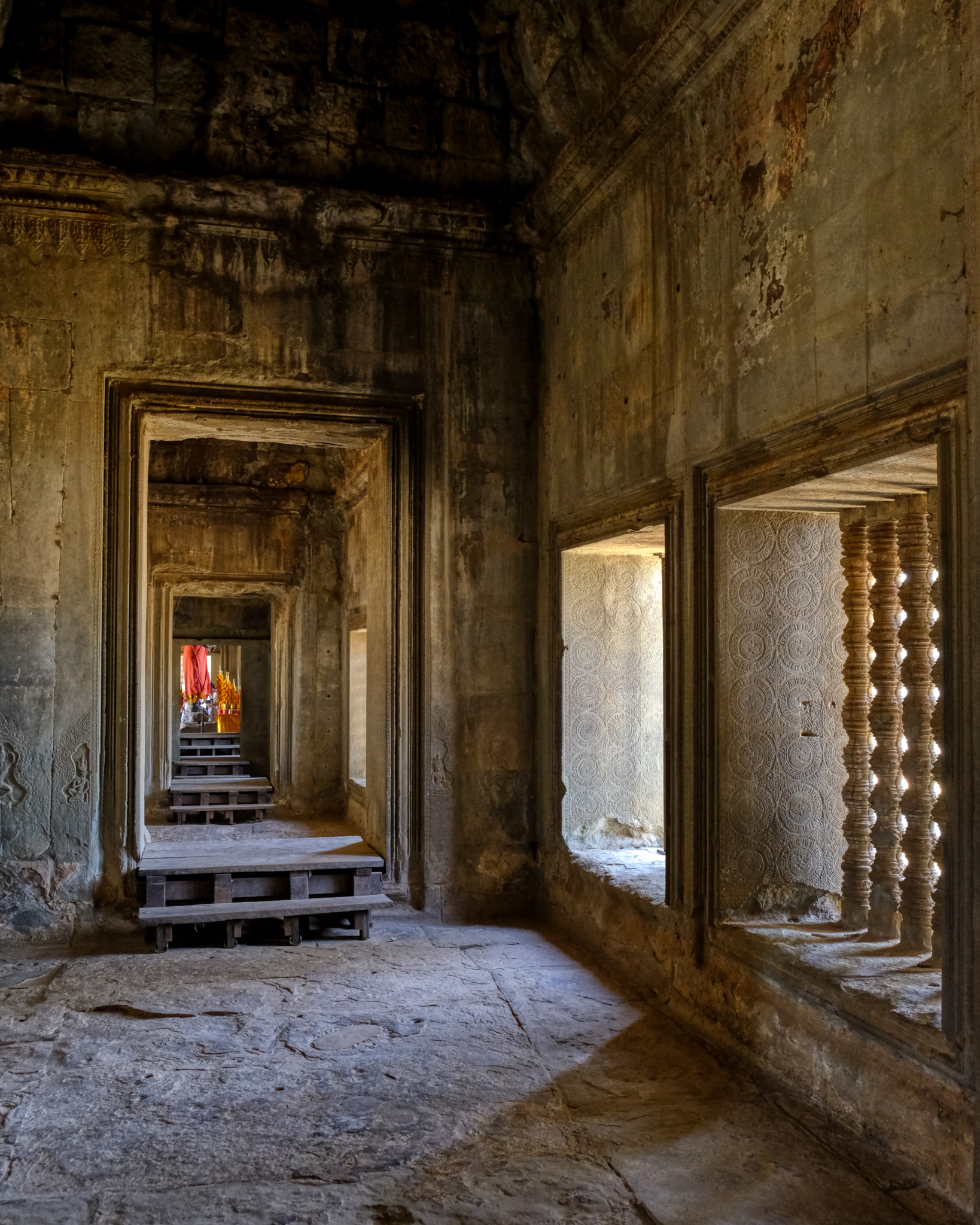 A surprise ahead!
A surprise ahead!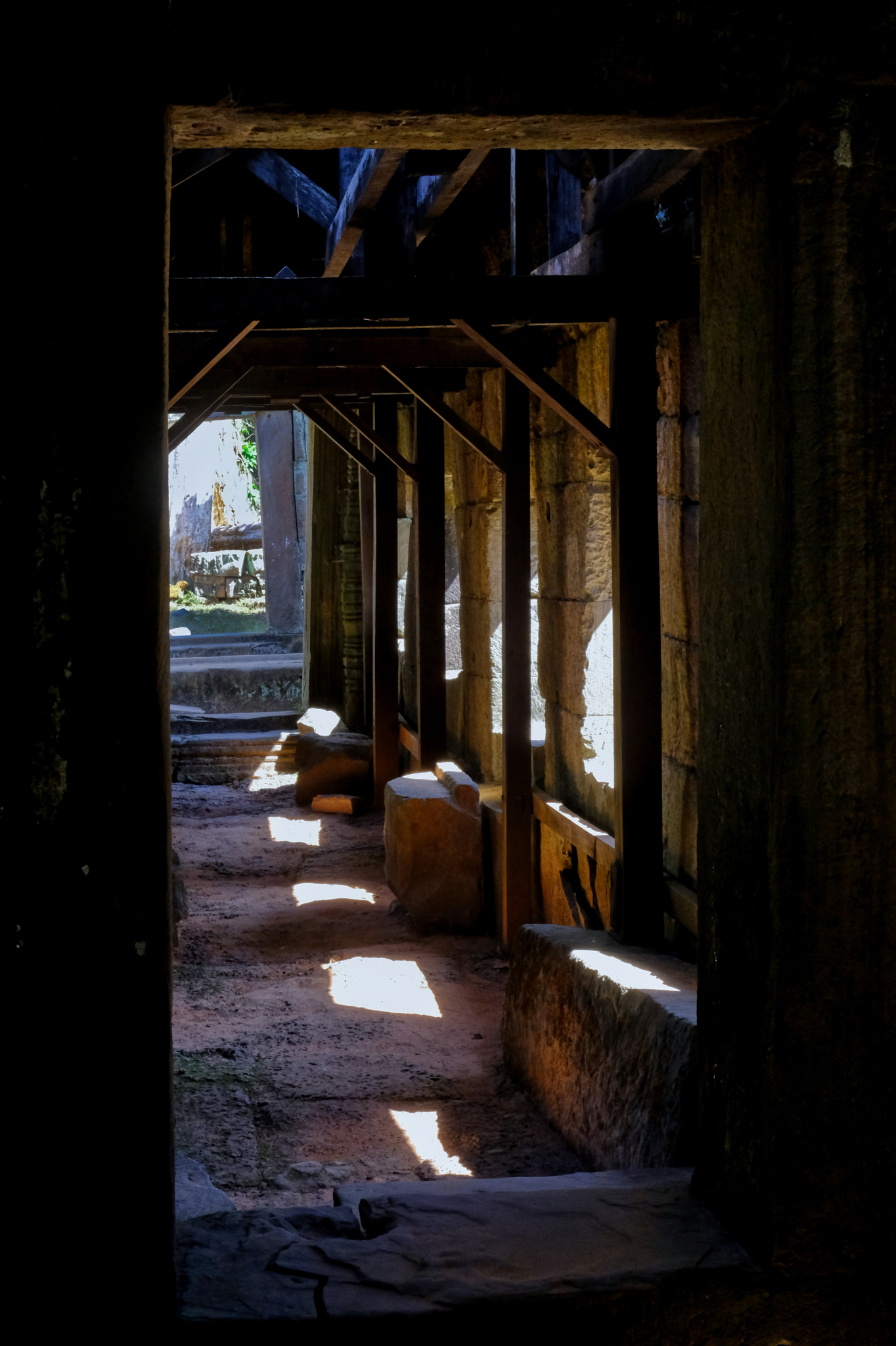 Gorgeous light along the galleries.
Gorgeous light along the galleries. The aesthetics of these stone passages with their relics evokes a calm amazement.
The aesthetics of these stone passages with their relics evokes a calm amazement.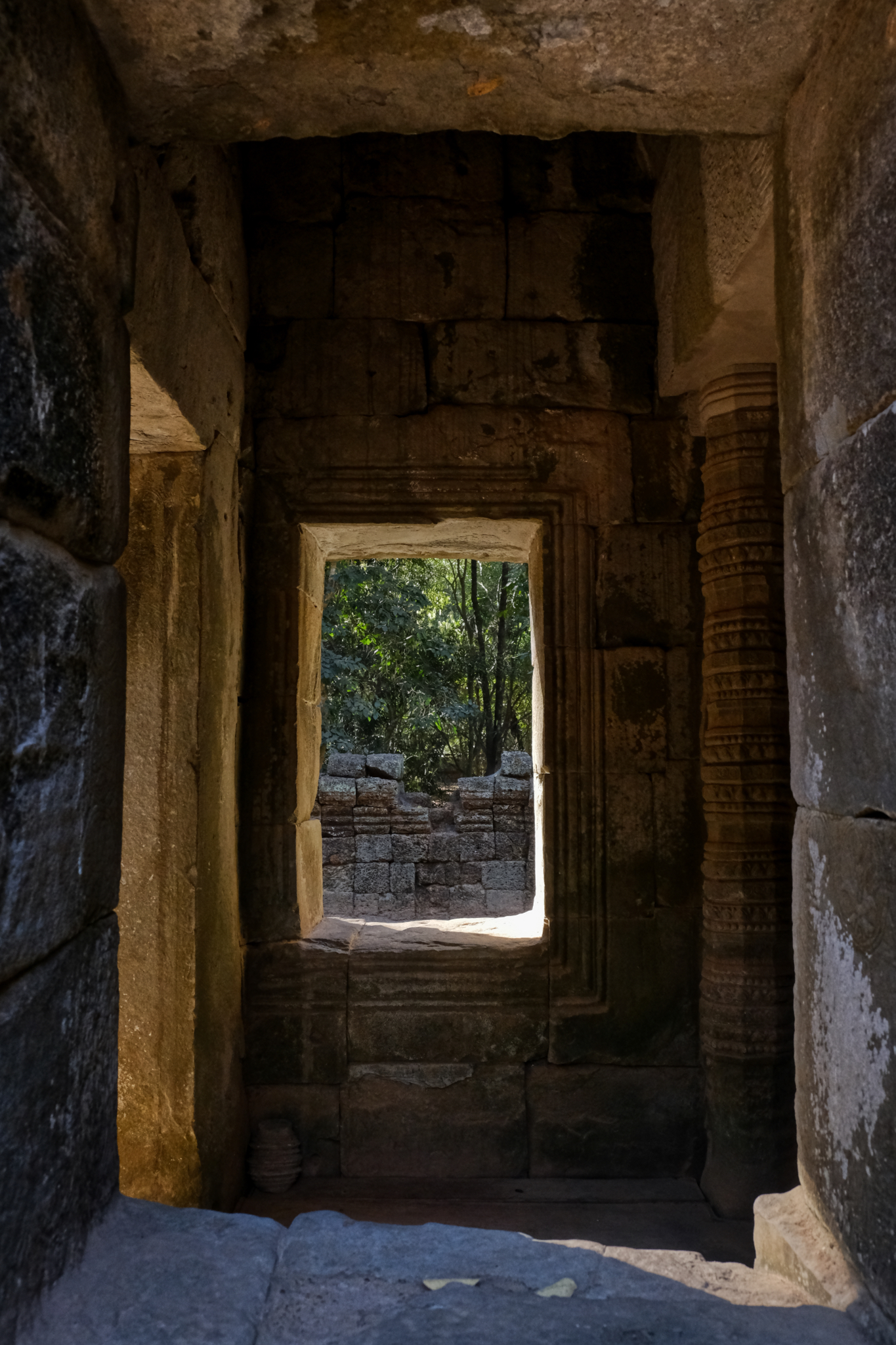 I have always been drawn to these kinds of scenes for photography . . . there seems to be some elemental symbolics involved here . . .
I have always been drawn to these kinds of scenes for photography . . . there seems to be some elemental symbolics involved here . . . 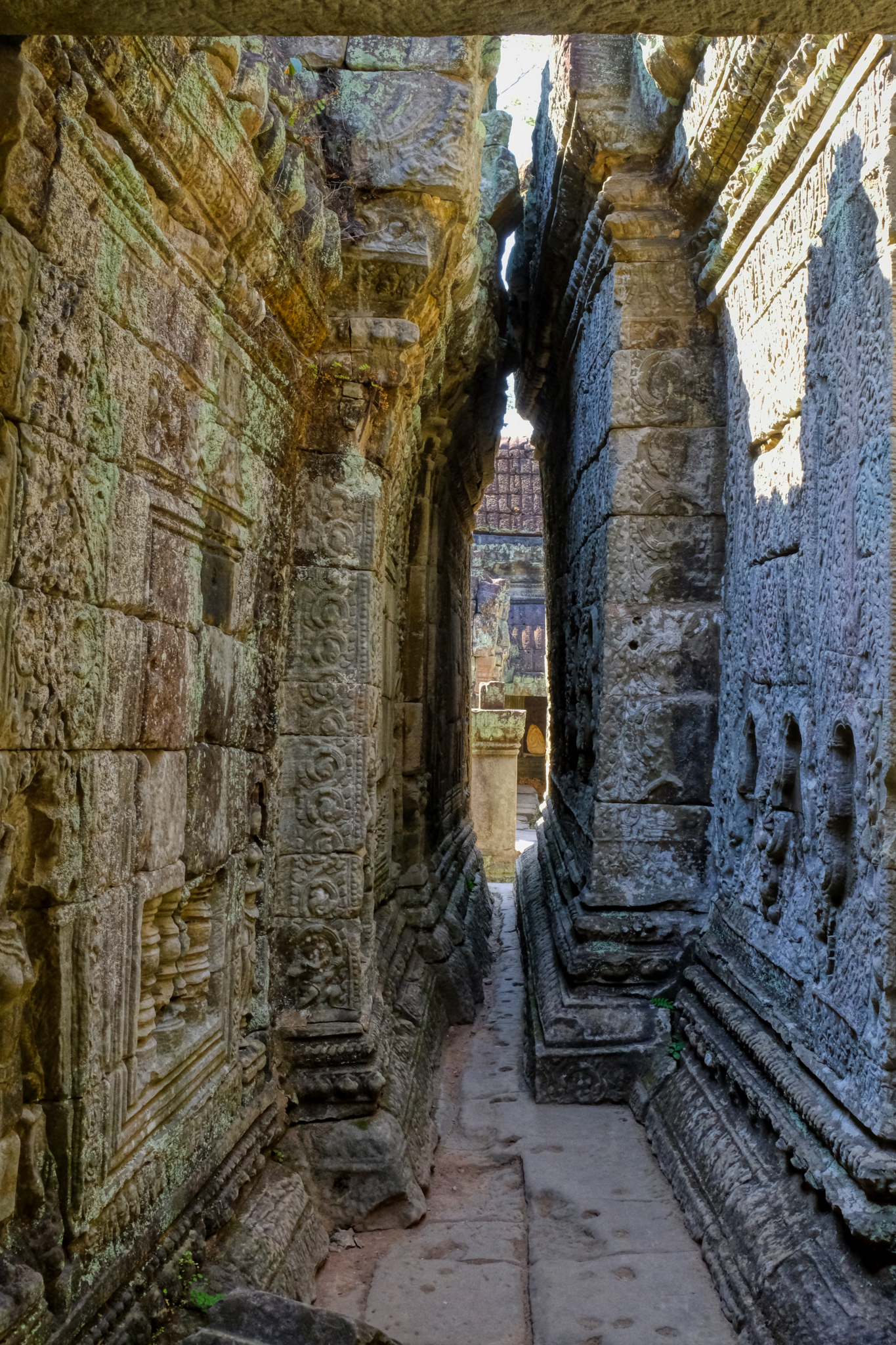 Endless stone doors and windows, light and shadow . . .
Endless stone doors and windows, light and shadow . . .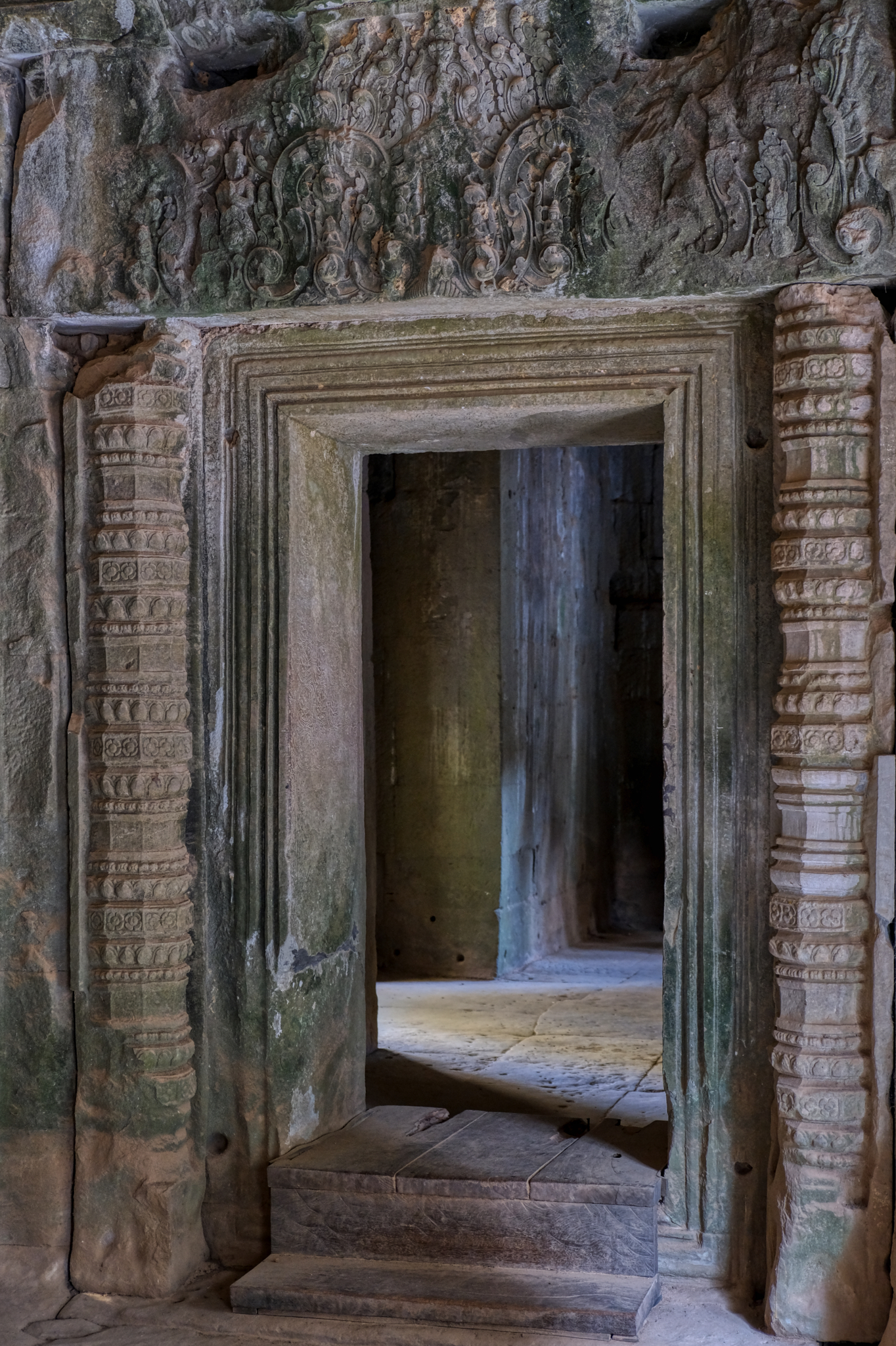 Interior doors. The Light! The shadows!
Interior doors. The Light! The shadows!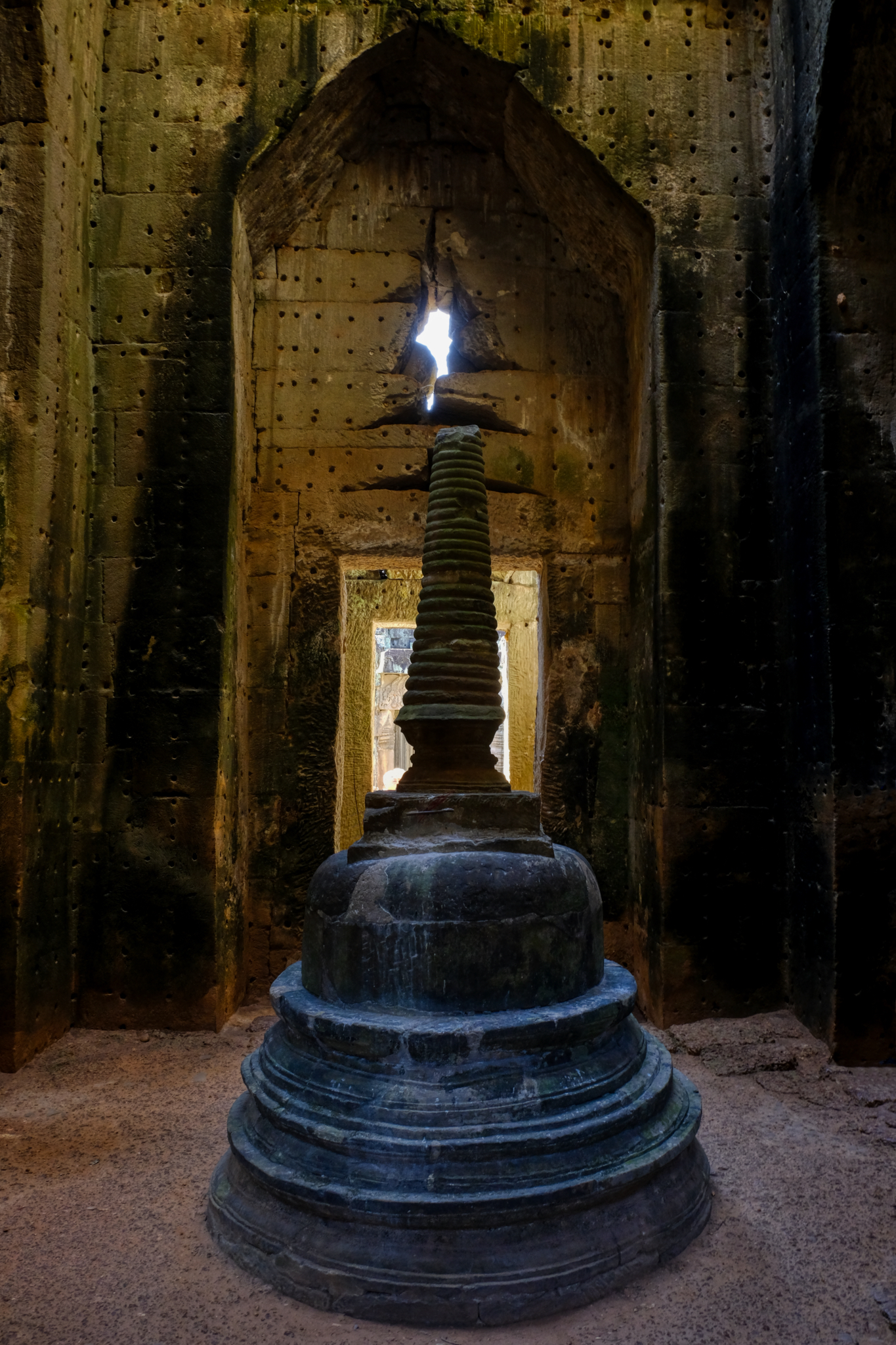 Astonishing chedi in the intersection of two long halls! The many holes in the stone walls indicate they were covered with carvings in stone or wood.
Astonishing chedi in the intersection of two long halls! The many holes in the stone walls indicate they were covered with carvings in stone or wood.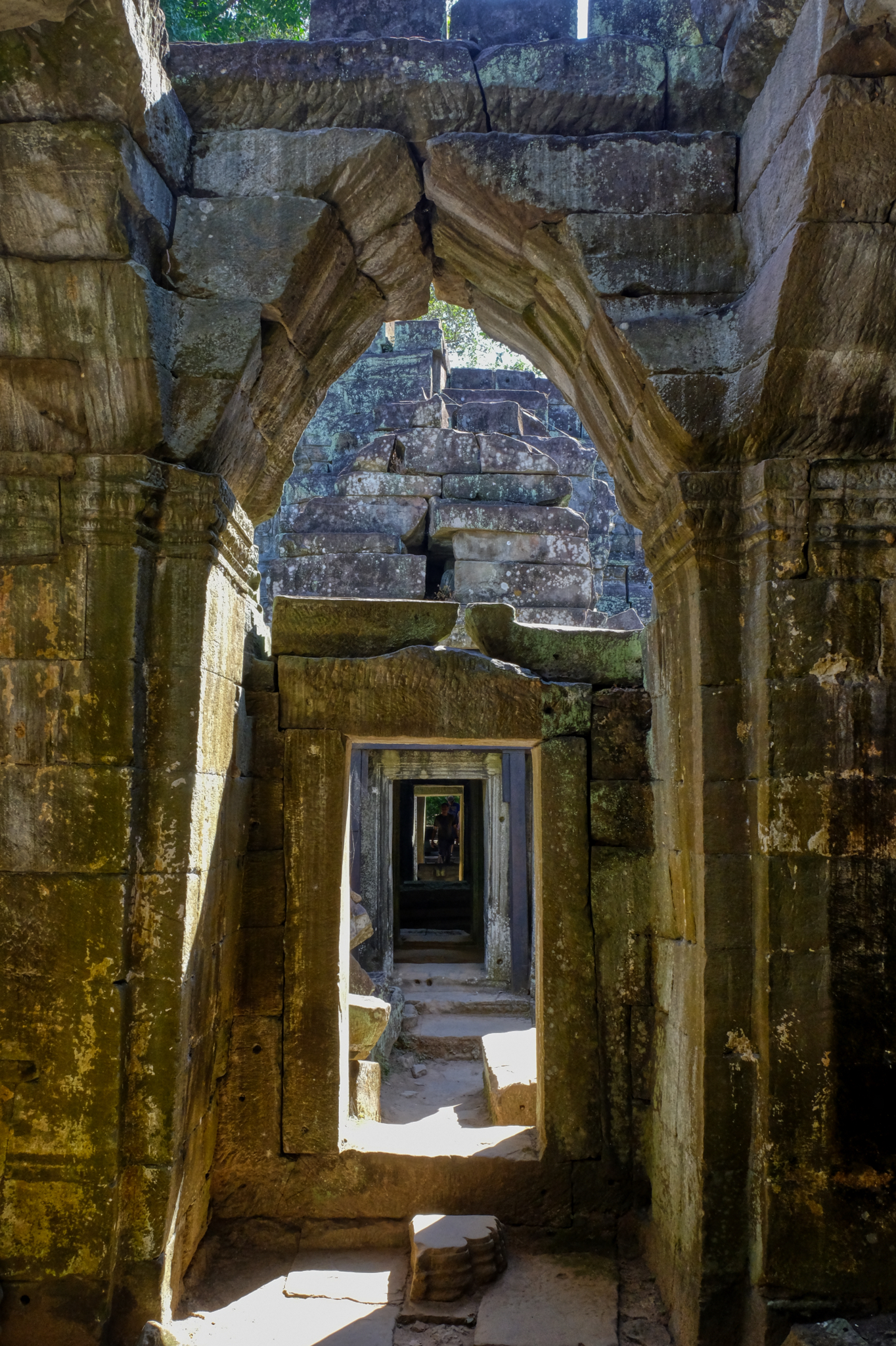 Endless curiosity . . .
Endless curiosity . . .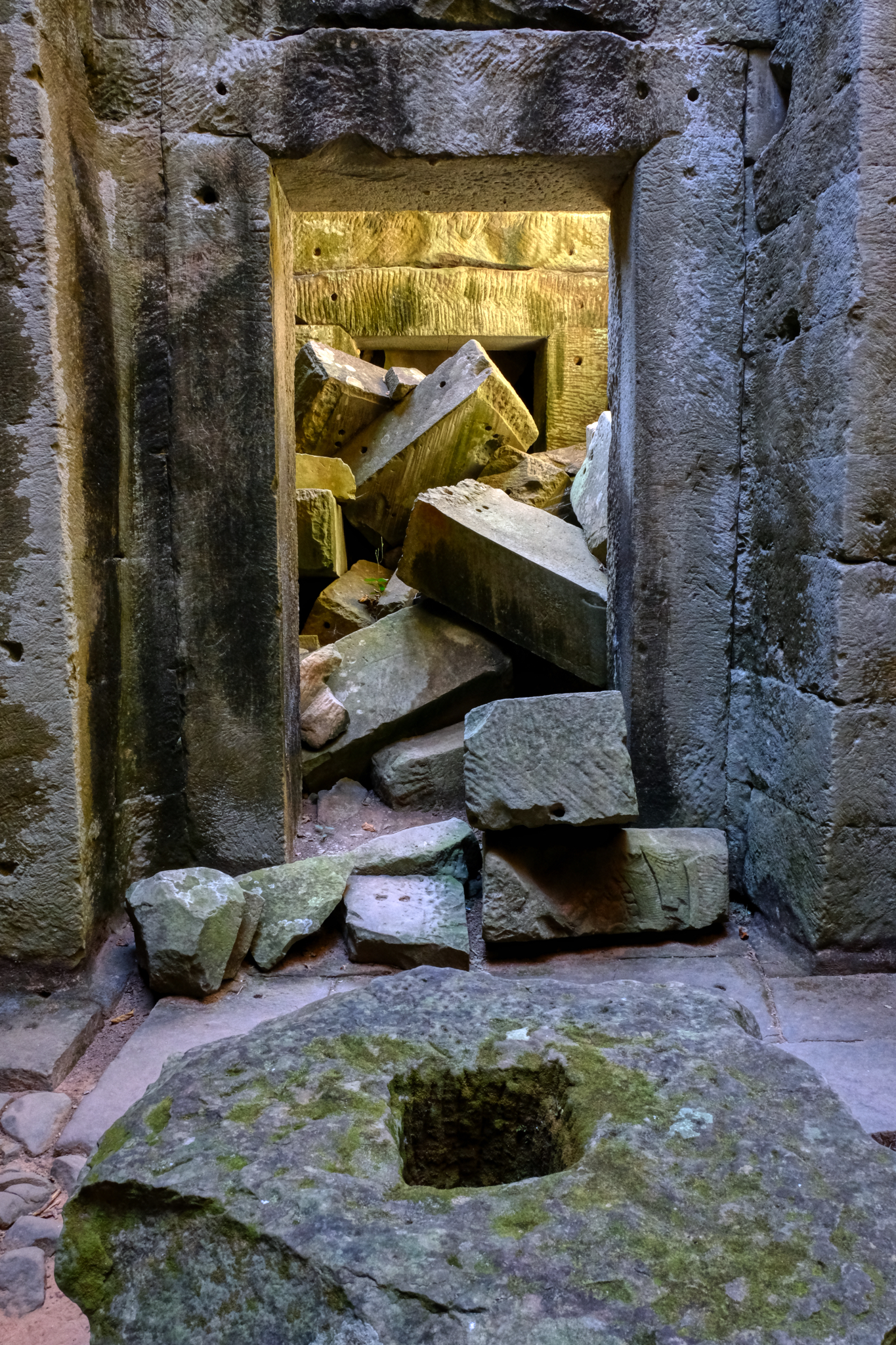 Wandering the halls and passages and finding an outlet into the honey light . . . what's out there?
Wandering the halls and passages and finding an outlet into the honey light . . . what's out there?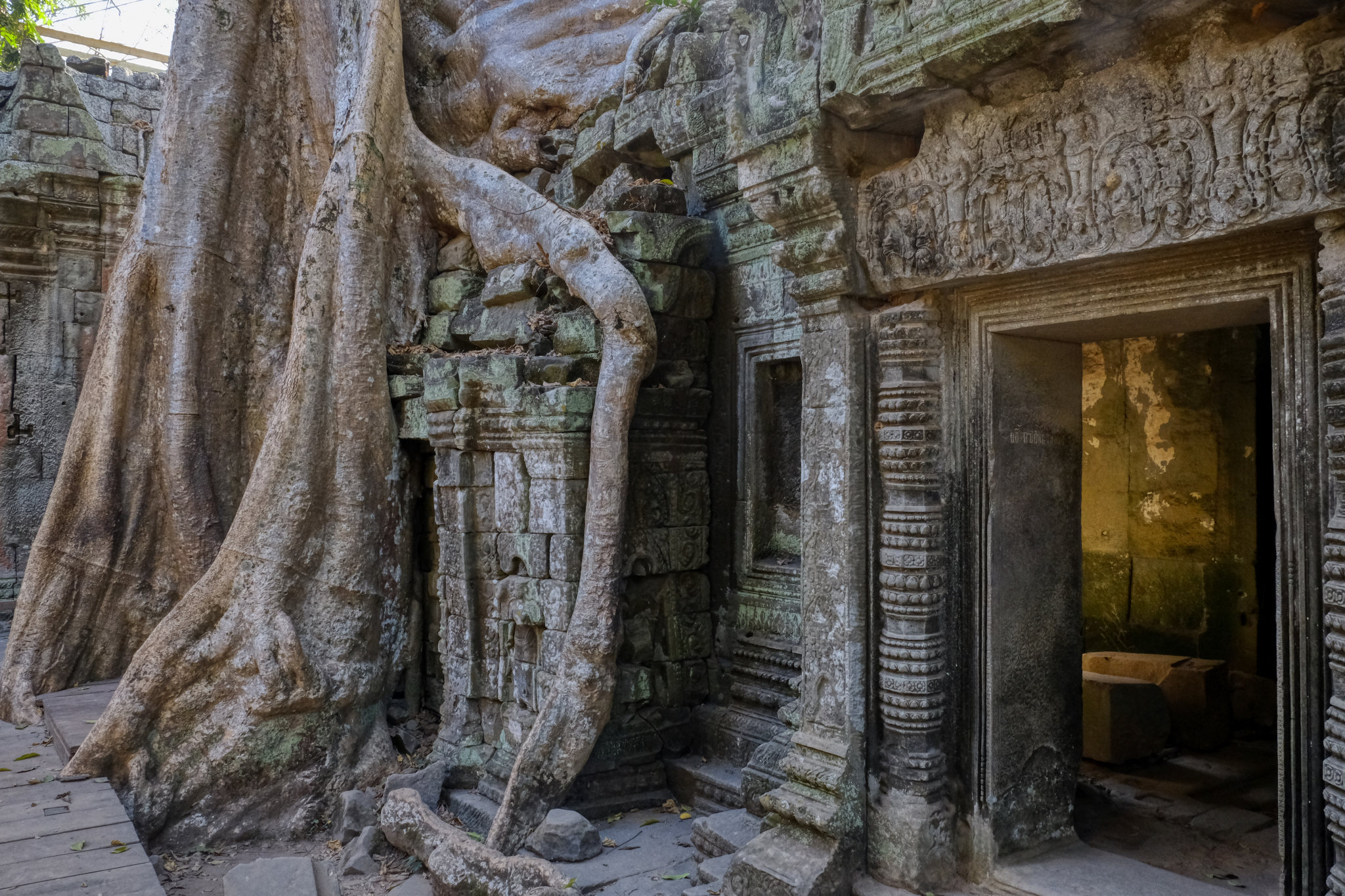 . . . and THIS is what was on the outside of these long stone passages!
. . . and THIS is what was on the outside of these long stone passages! The classic 'Jungle Reclaiming the Lost Temple' photo. Still wonderful!
The classic 'Jungle Reclaiming the Lost Temple' photo. Still wonderful!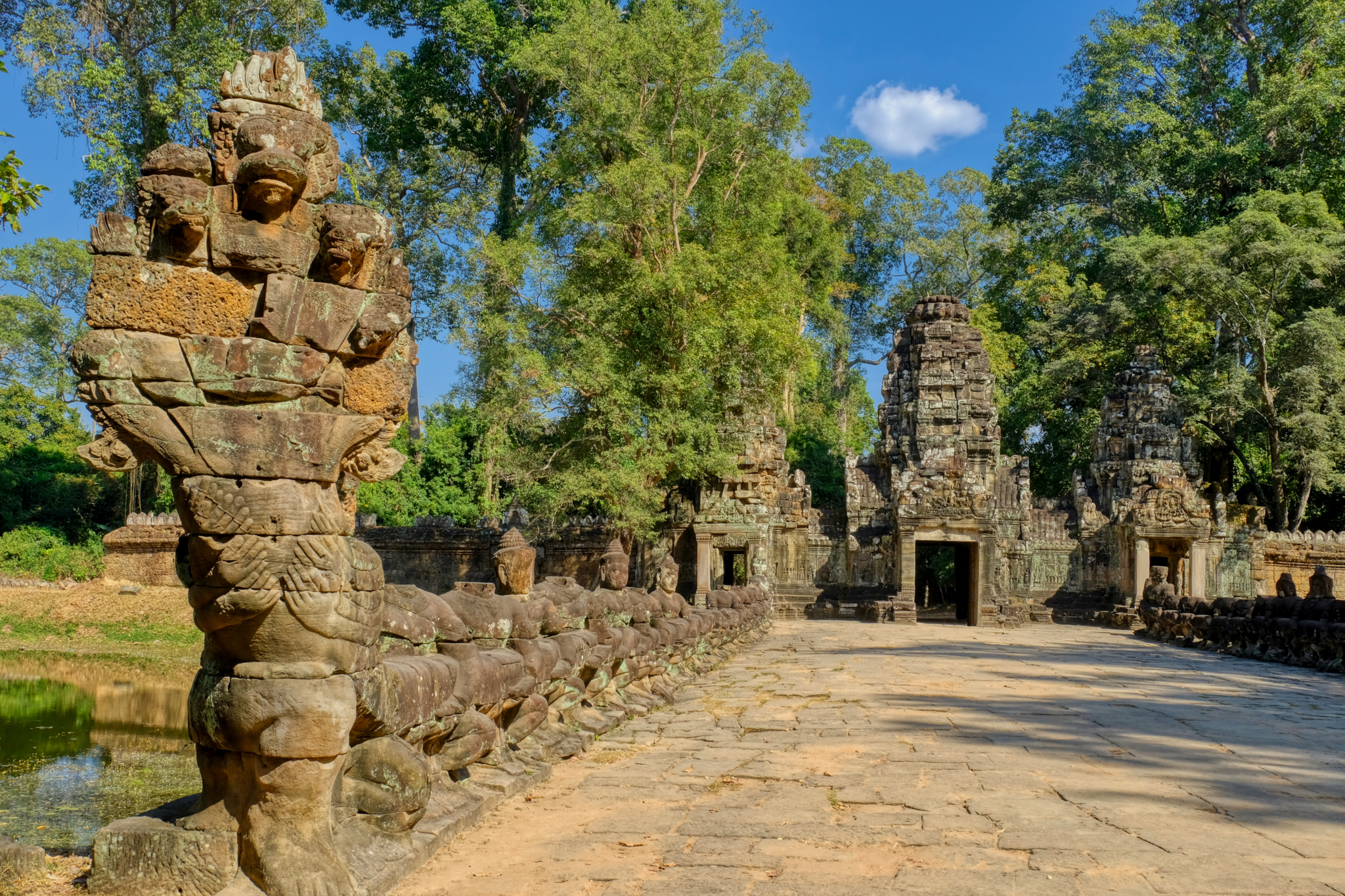 Our driver brought us to another temple site, this one had an entrance guarded by a bridge guarded by stone cobras!
Our driver brought us to another temple site, this one had an entrance guarded by a bridge guarded by stone cobras! Frightening to peoples of that time, I would imaging.
Frightening to peoples of that time, I would imaging.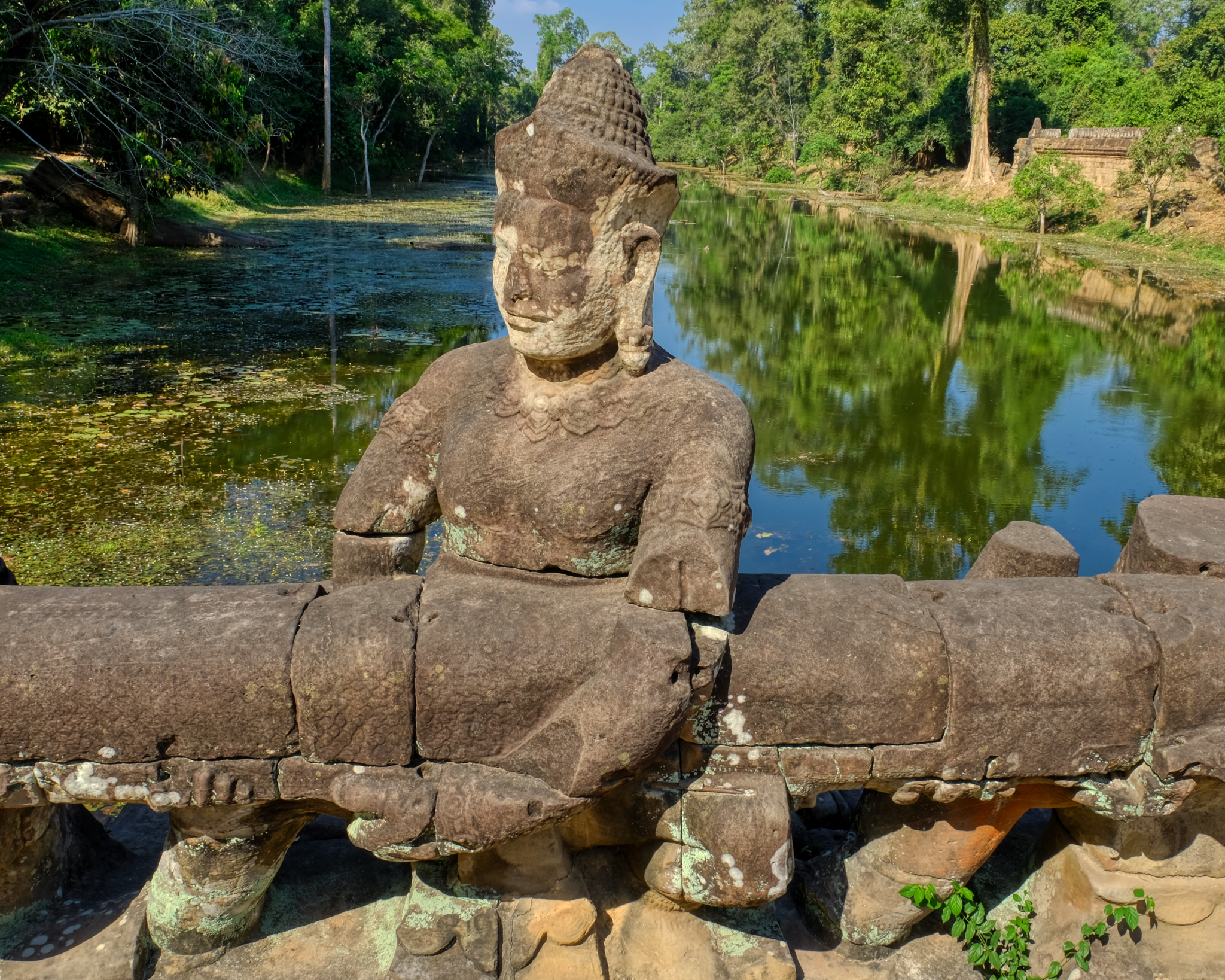 The body of the giant stone cobra was held by a row stone statues that made up the bridge guardrail.
The body of the giant stone cobra was held by a row stone statues that made up the bridge guardrail. The heads on all of the stone bridge statues have been stolen over the years . . . they end up in museums, private collections, and "art" shops in Bangkok. Despicable.
The heads on all of the stone bridge statues have been stolen over the years . . . they end up in museums, private collections, and "art" shops in Bangkok. Despicable.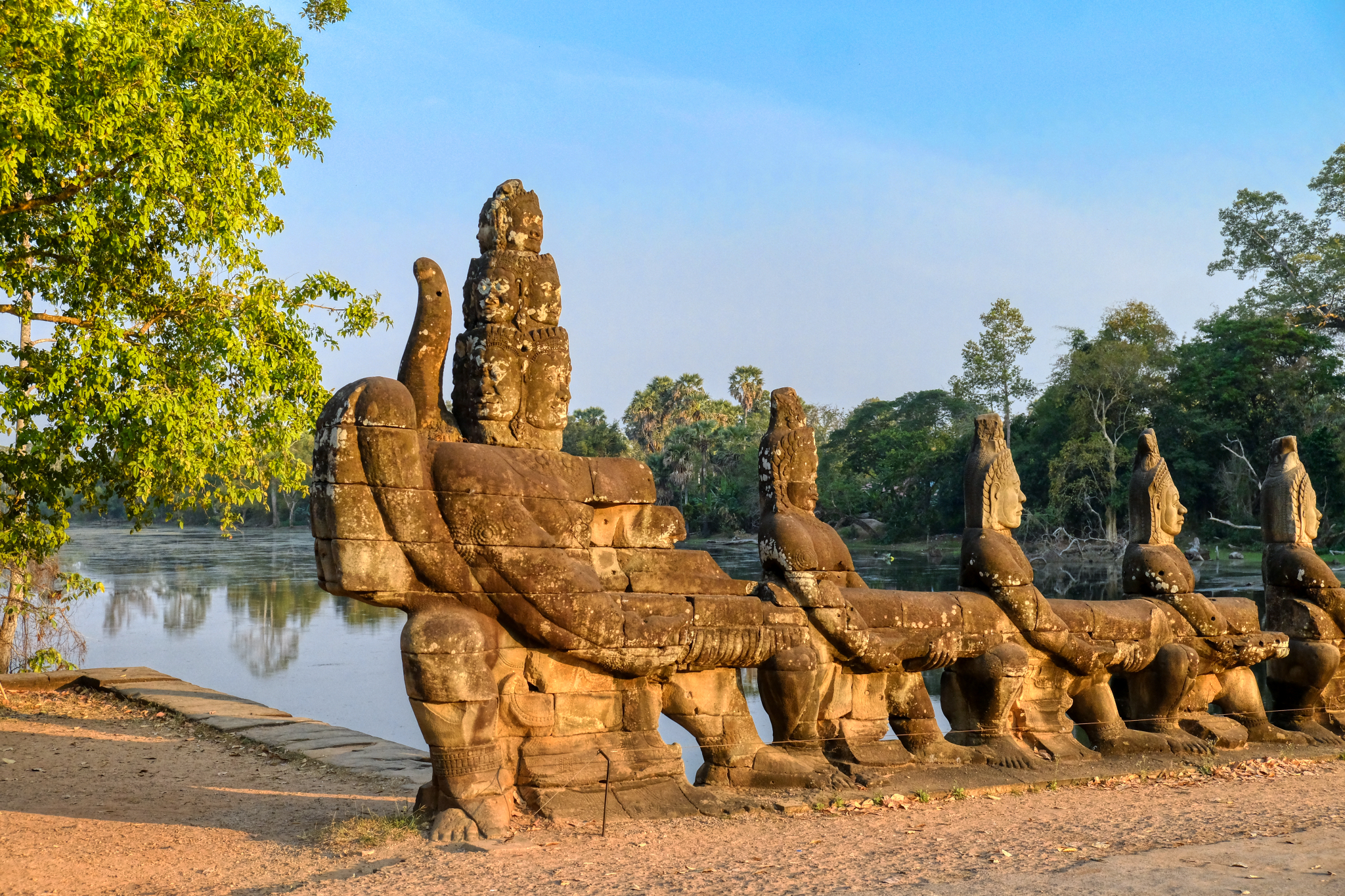 Many of the temple complexes still have their moats.
Many of the temple complexes still have their moats.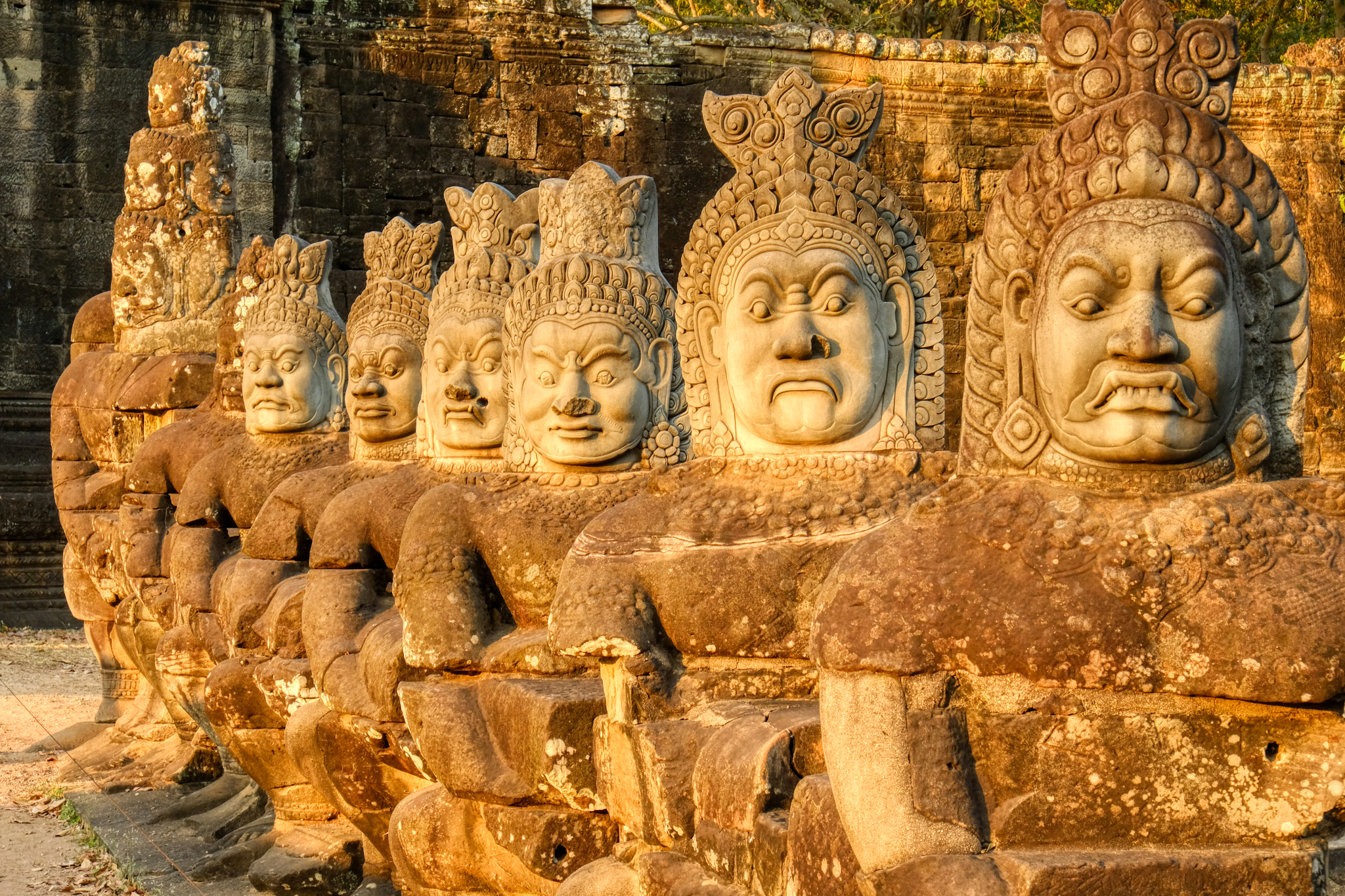 We found only one bridge with the full compliment of guarding figures . . . and they were wonderful!
We found only one bridge with the full compliment of guarding figures . . . and they were wonderful!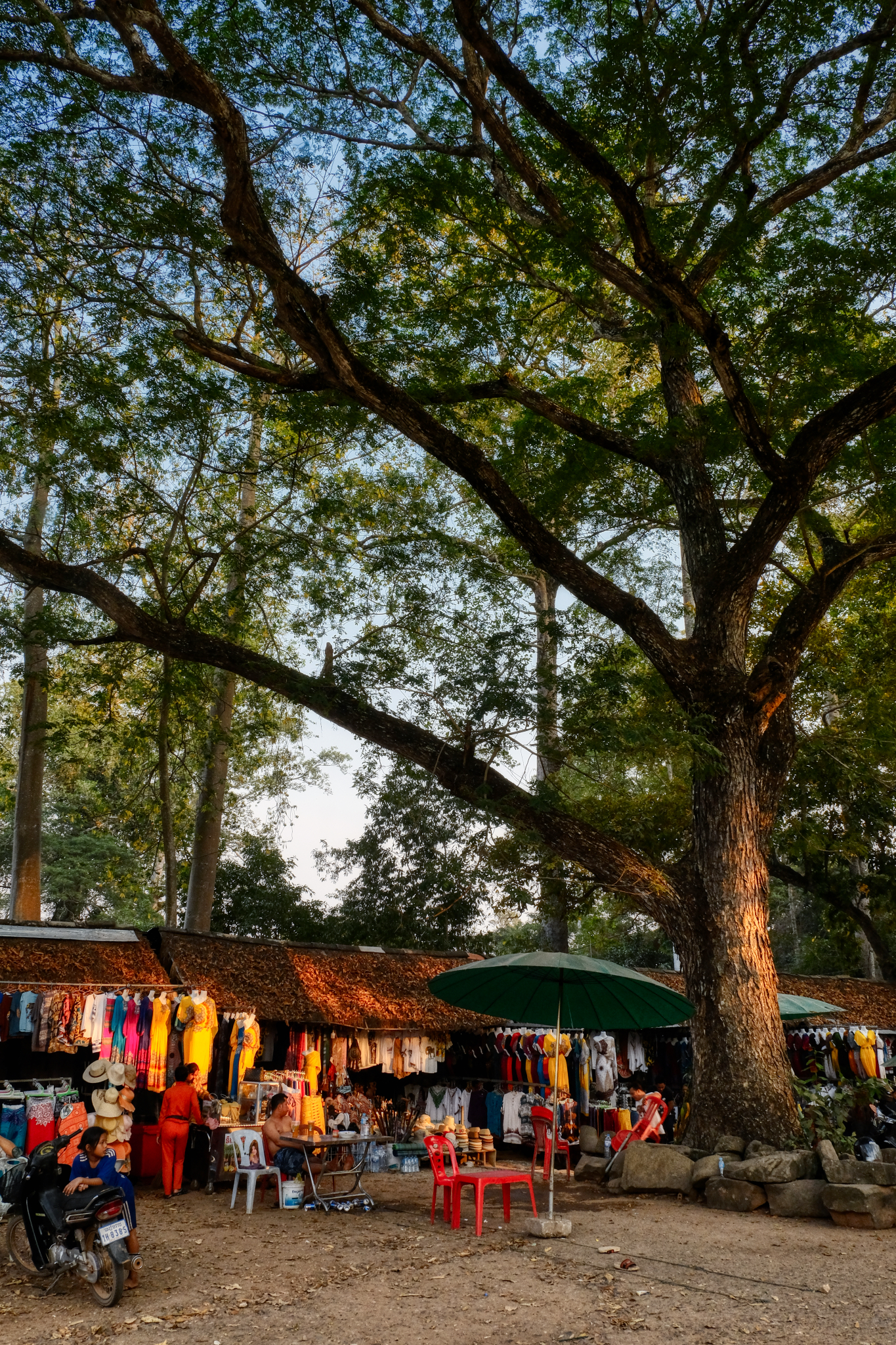 Here and there we saw small encampments of curios hawkers.
Here and there we saw small encampments of curios hawkers.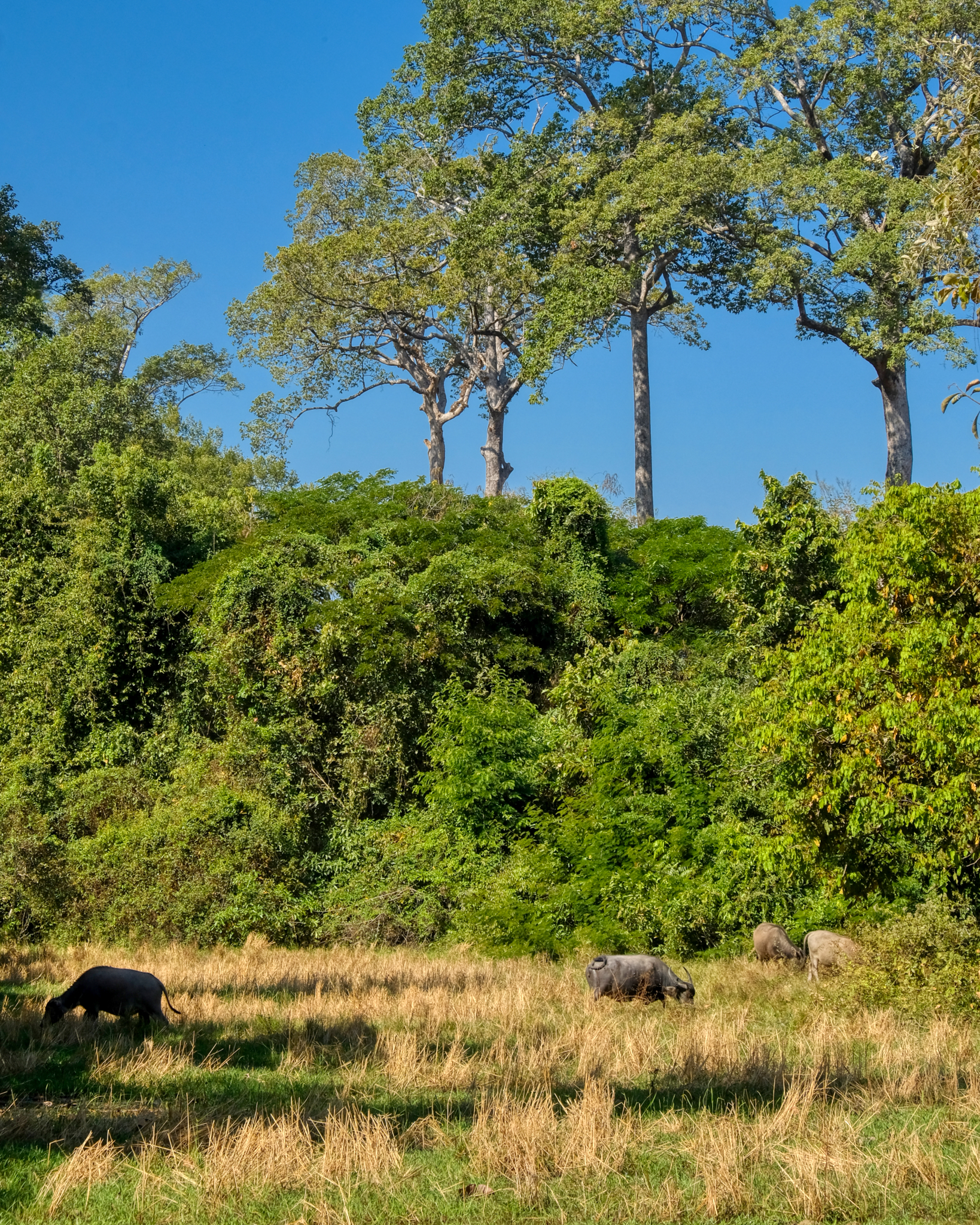 Our drive between temple sited took us through some beautiful and peaceful countryside. Some of the temples were 8-10 miles apart.
Our drive between temple sited took us through some beautiful and peaceful countryside. Some of the temples were 8-10 miles apart.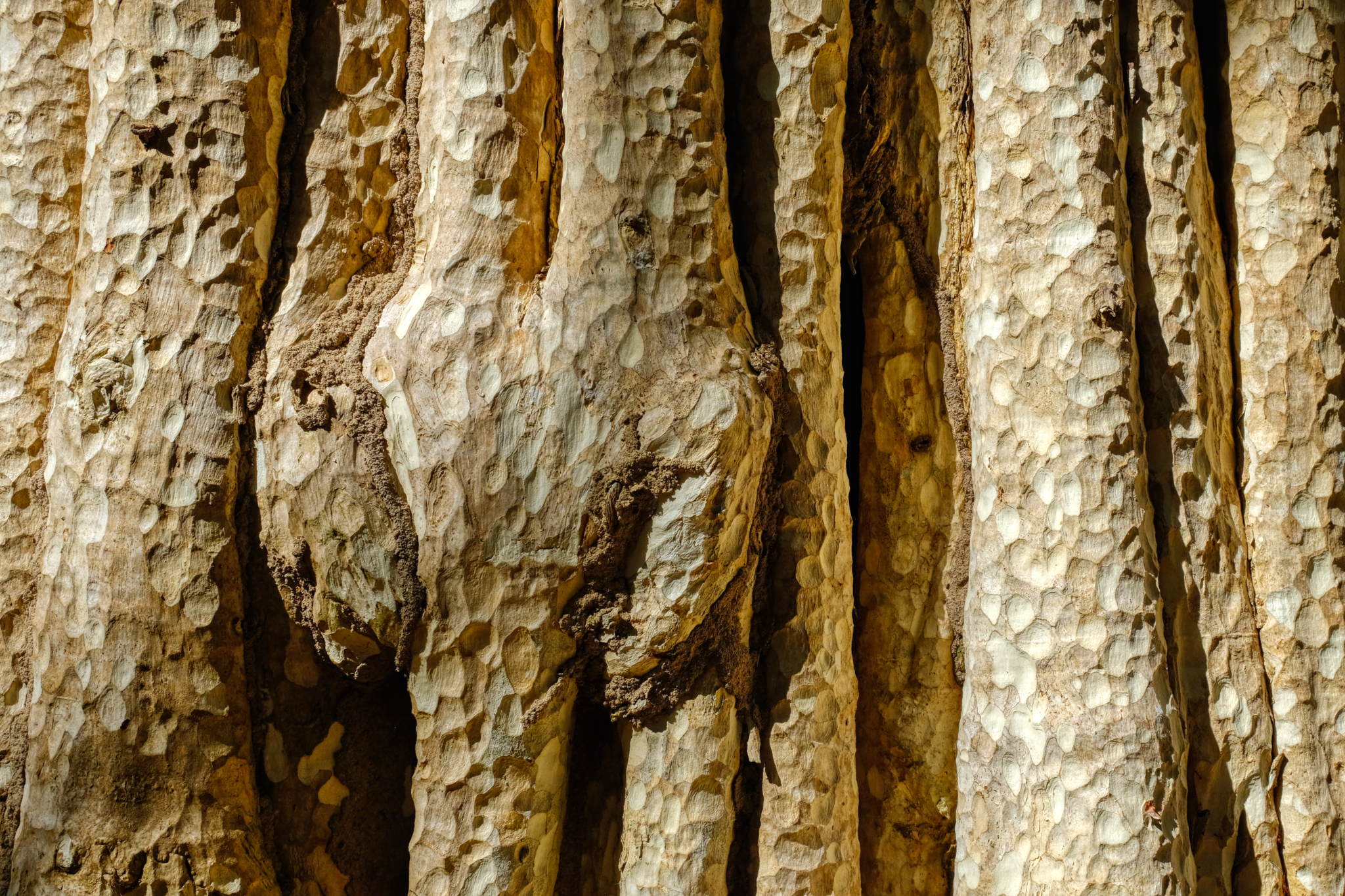 Nature here held some big surprises . . . like this complex tree bark.
Nature here held some big surprises . . . like this complex tree bark. Here and there, as we neared a new temple site, the road would be lined with these markers.
Here and there, as we neared a new temple site, the road would be lined with these markers.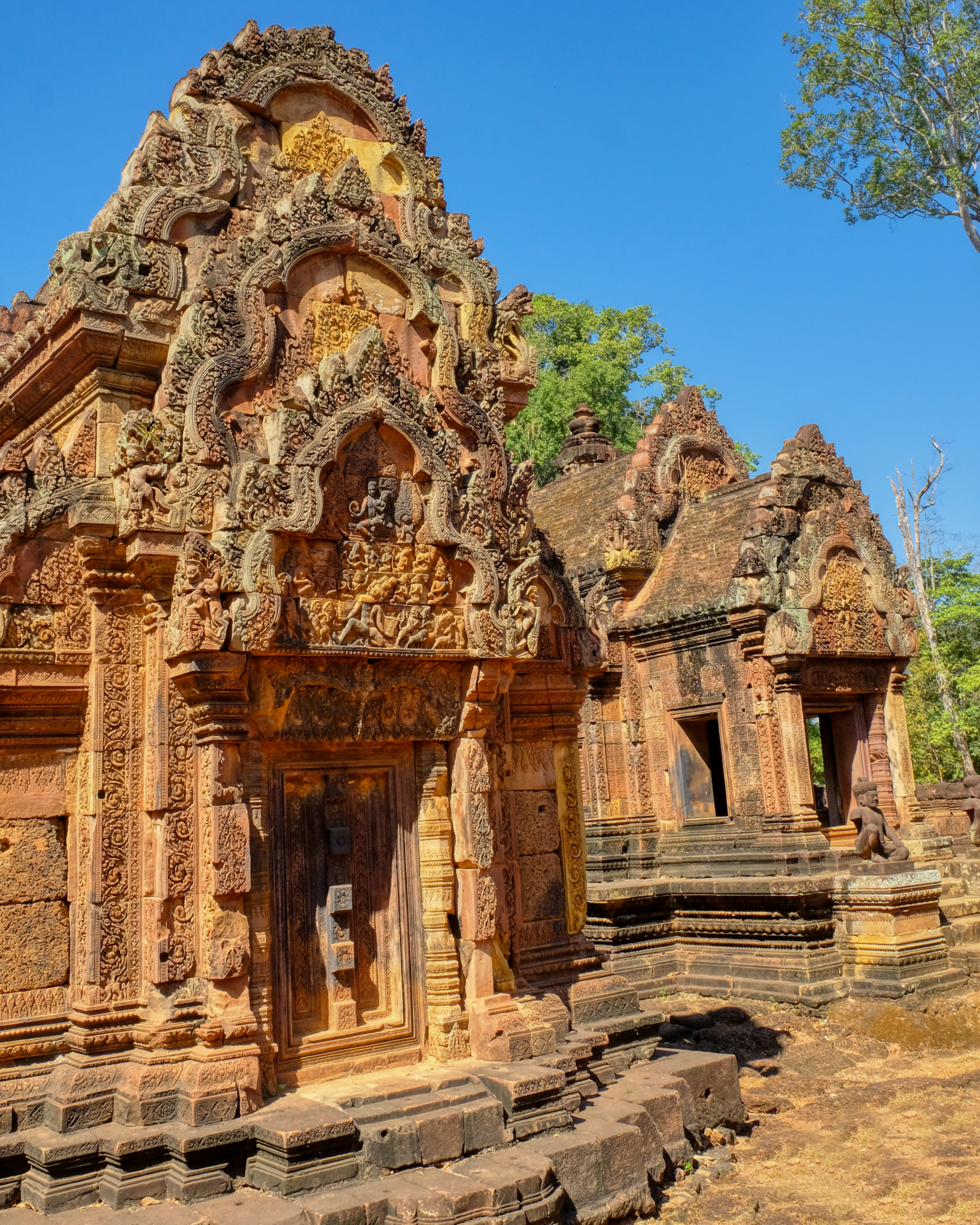 One of the last sites we visited had the temple structures made of a reddish stone with black volcanic rock accents. All carved, of course.
One of the last sites we visited had the temple structures made of a reddish stone with black volcanic rock accents. All carved, of course.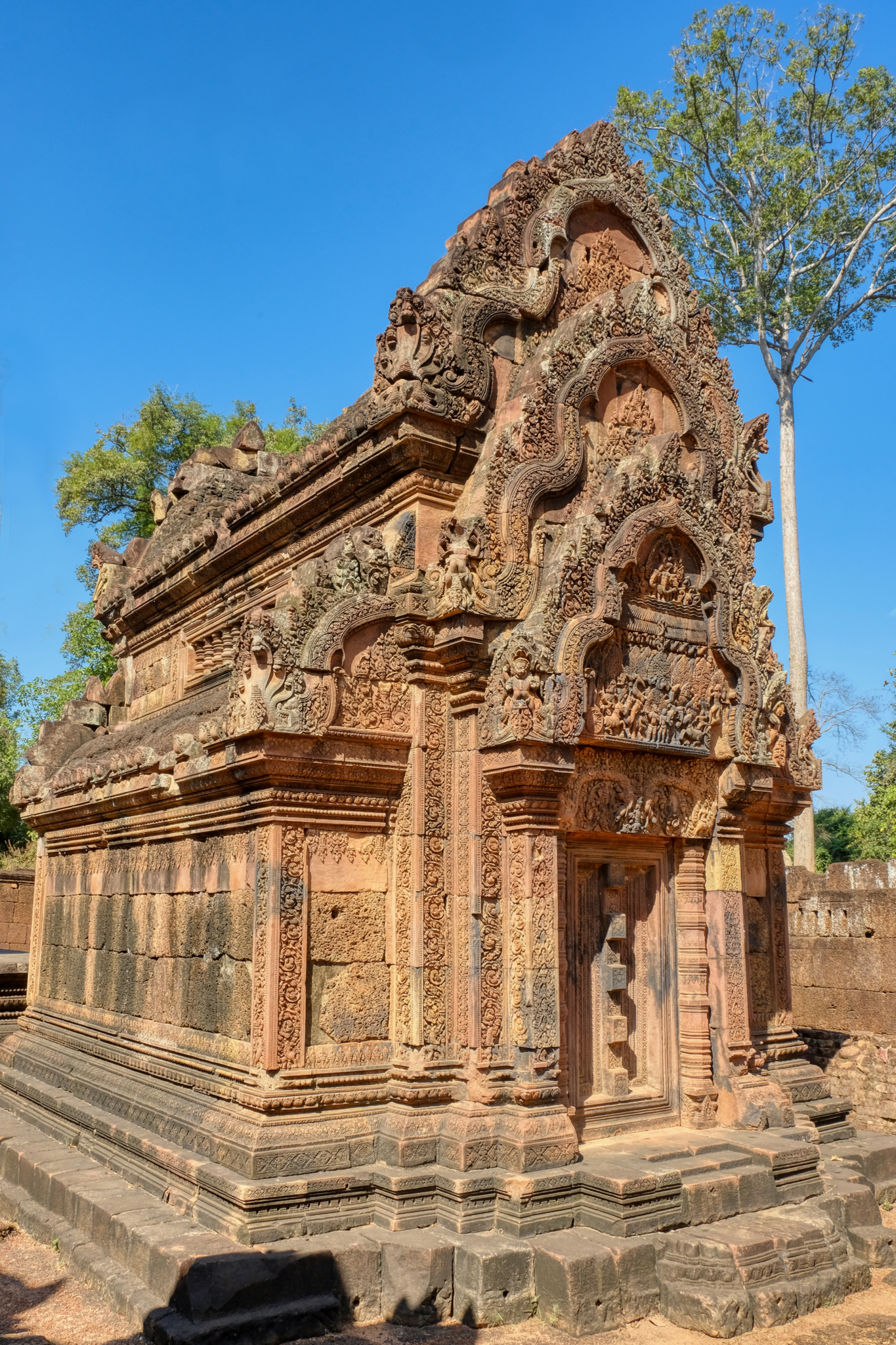 The carved details were very detailed and refined.
The carved details were very detailed and refined. Upon closer inspection, I could not tell if these were fired red clay ceramics or a red sandstone . . . .
Upon closer inspection, I could not tell if these were fired red clay ceramics or a red sandstone . . . .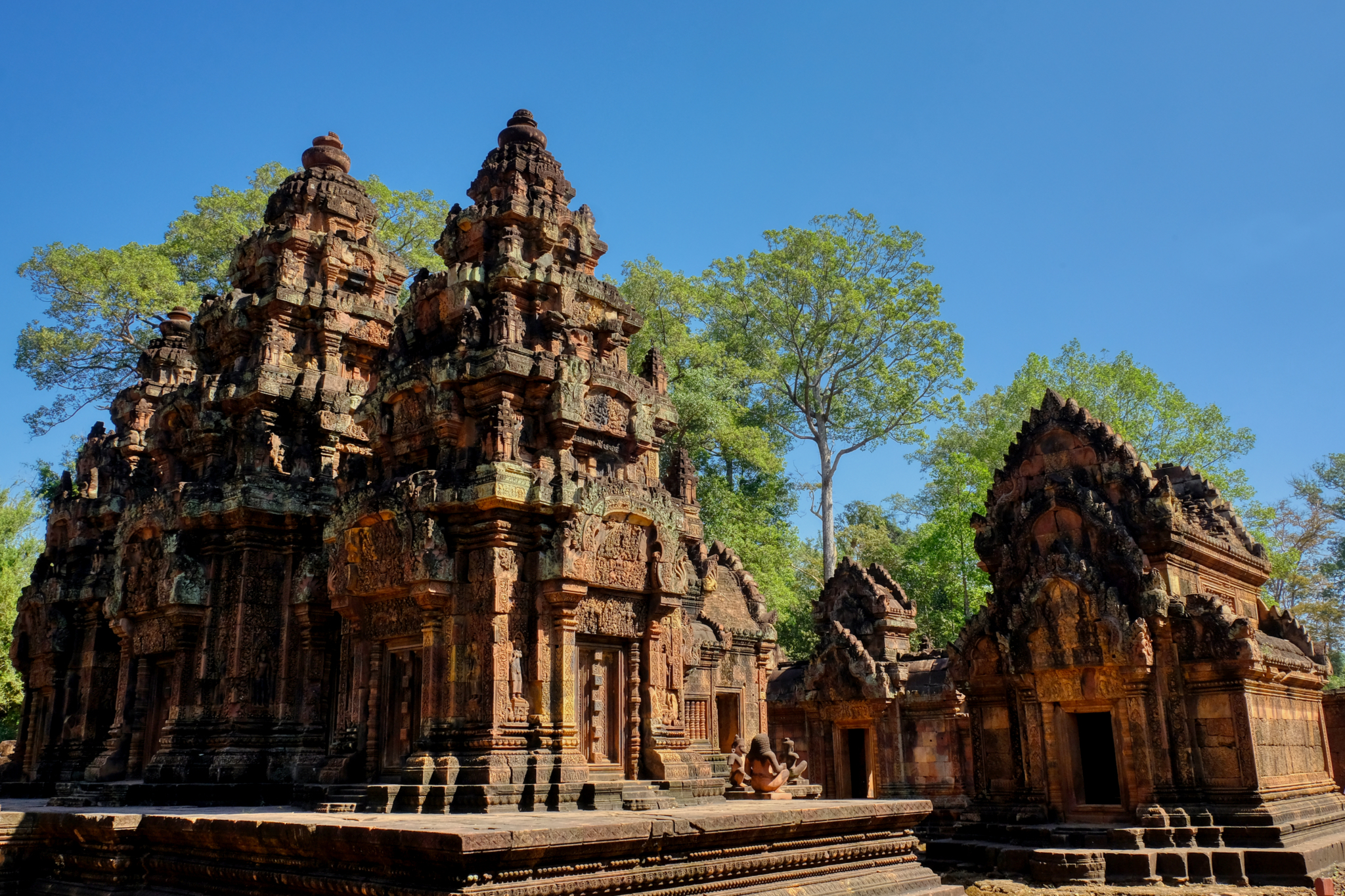 Late afternoon deep shadows on the red temple.
Late afternoon deep shadows on the red temple.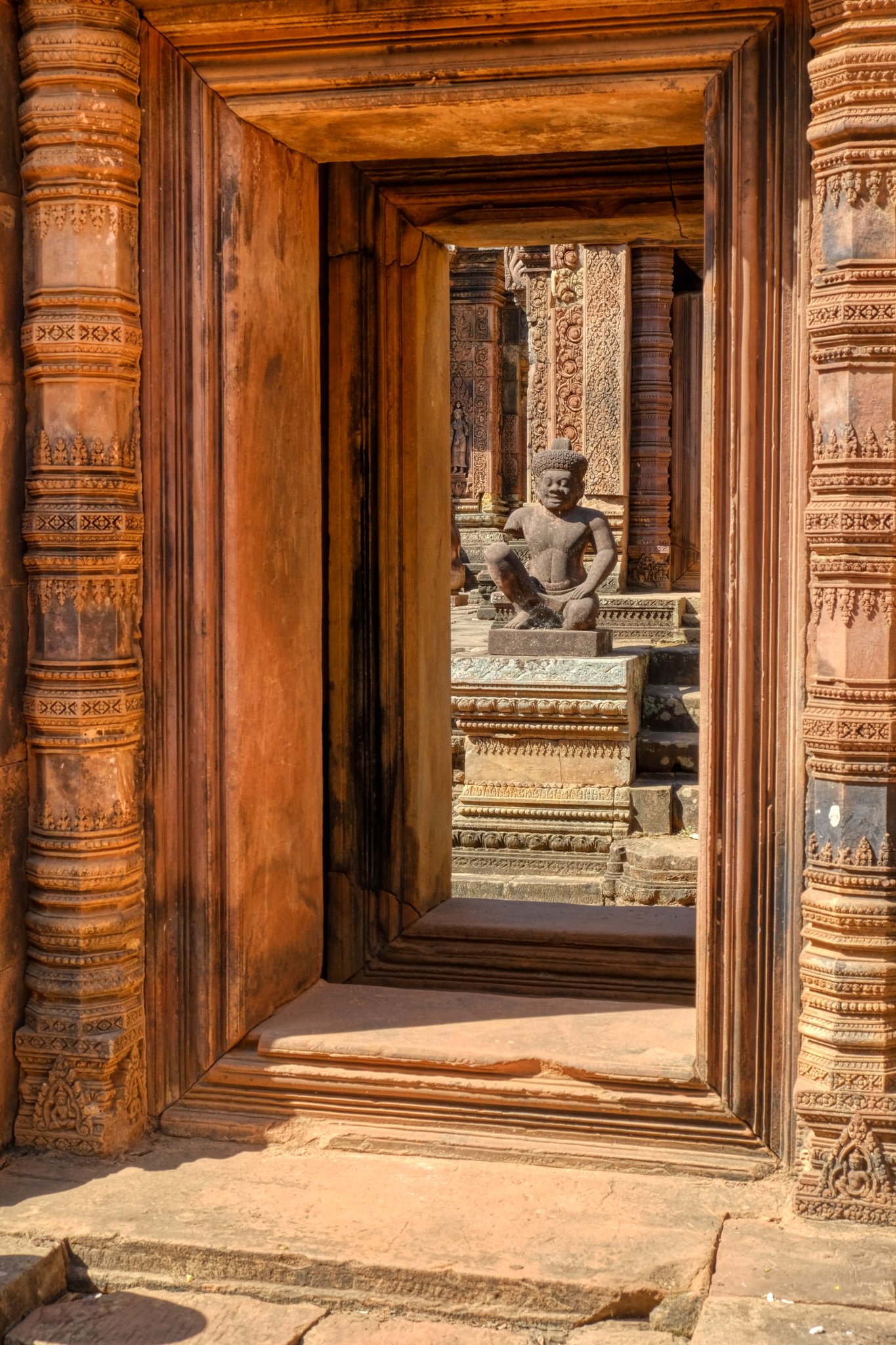 Many of these images, especially this one, lend themselves to printing and framing.
Many of these images, especially this one, lend themselves to printing and framing.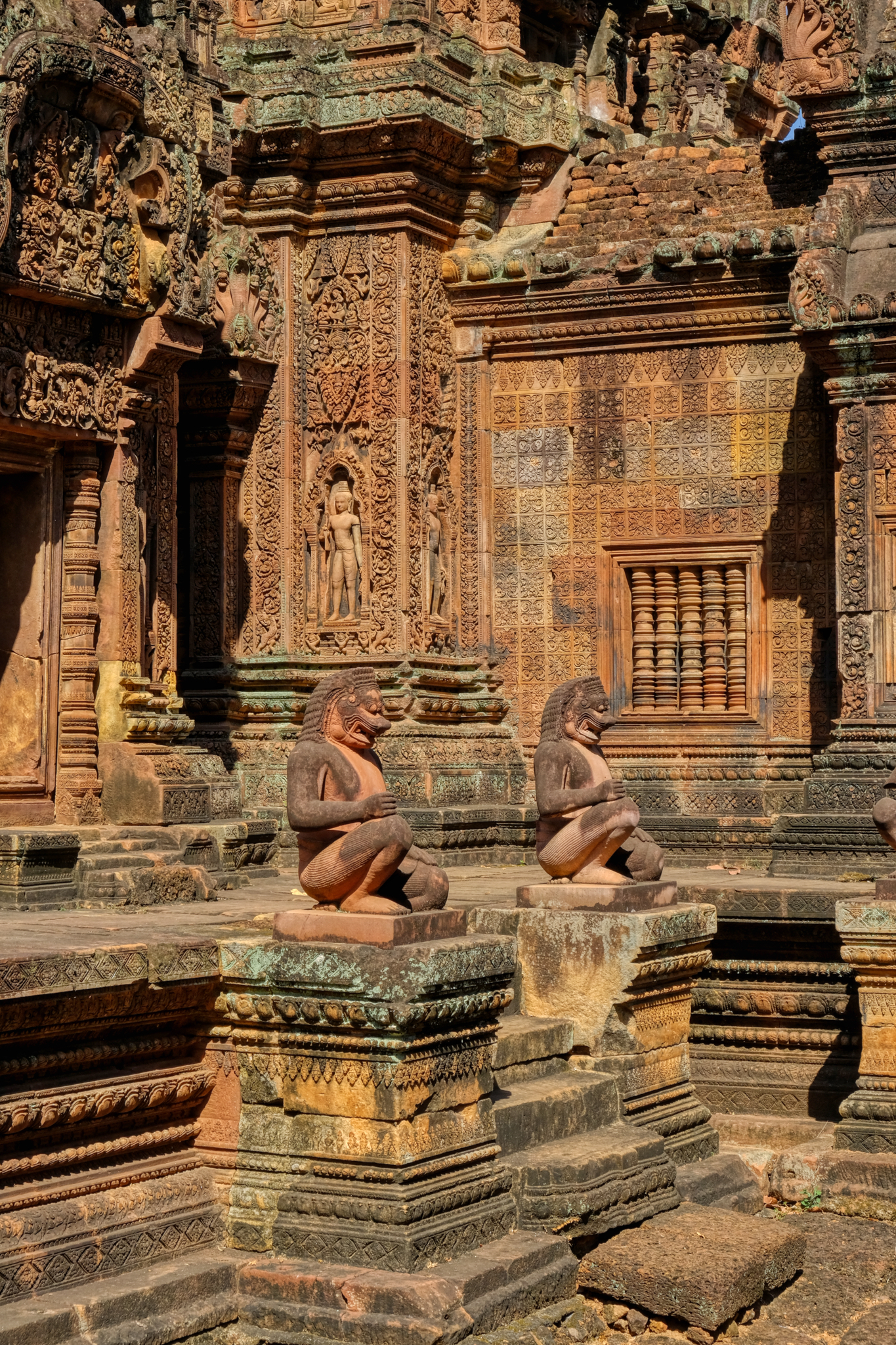 This temple had nearly no evidence of vandalism. Phenomenal beauty.
This temple had nearly no evidence of vandalism. Phenomenal beauty.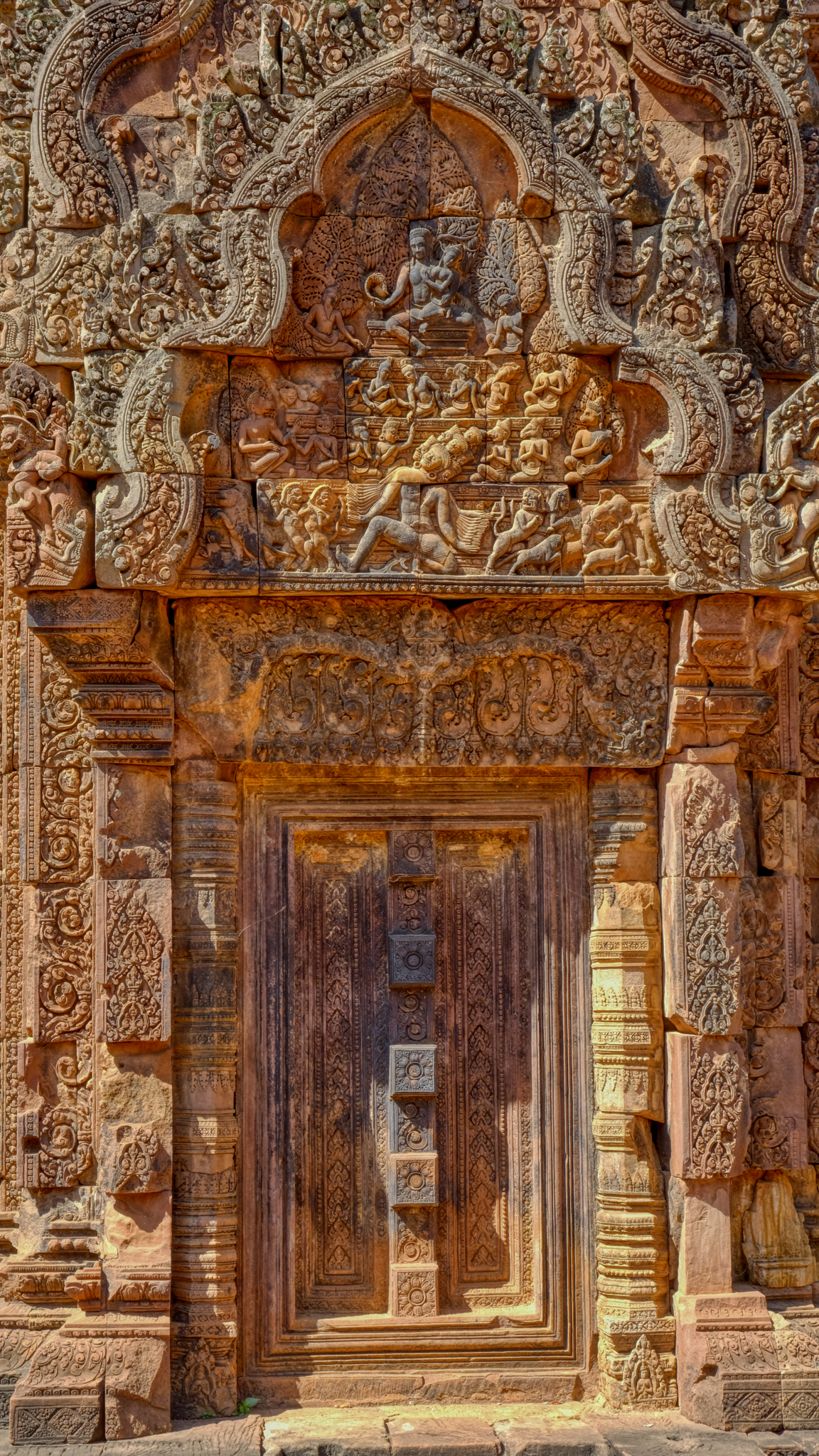 A magnificently carved stone door.
A magnificently carved stone door.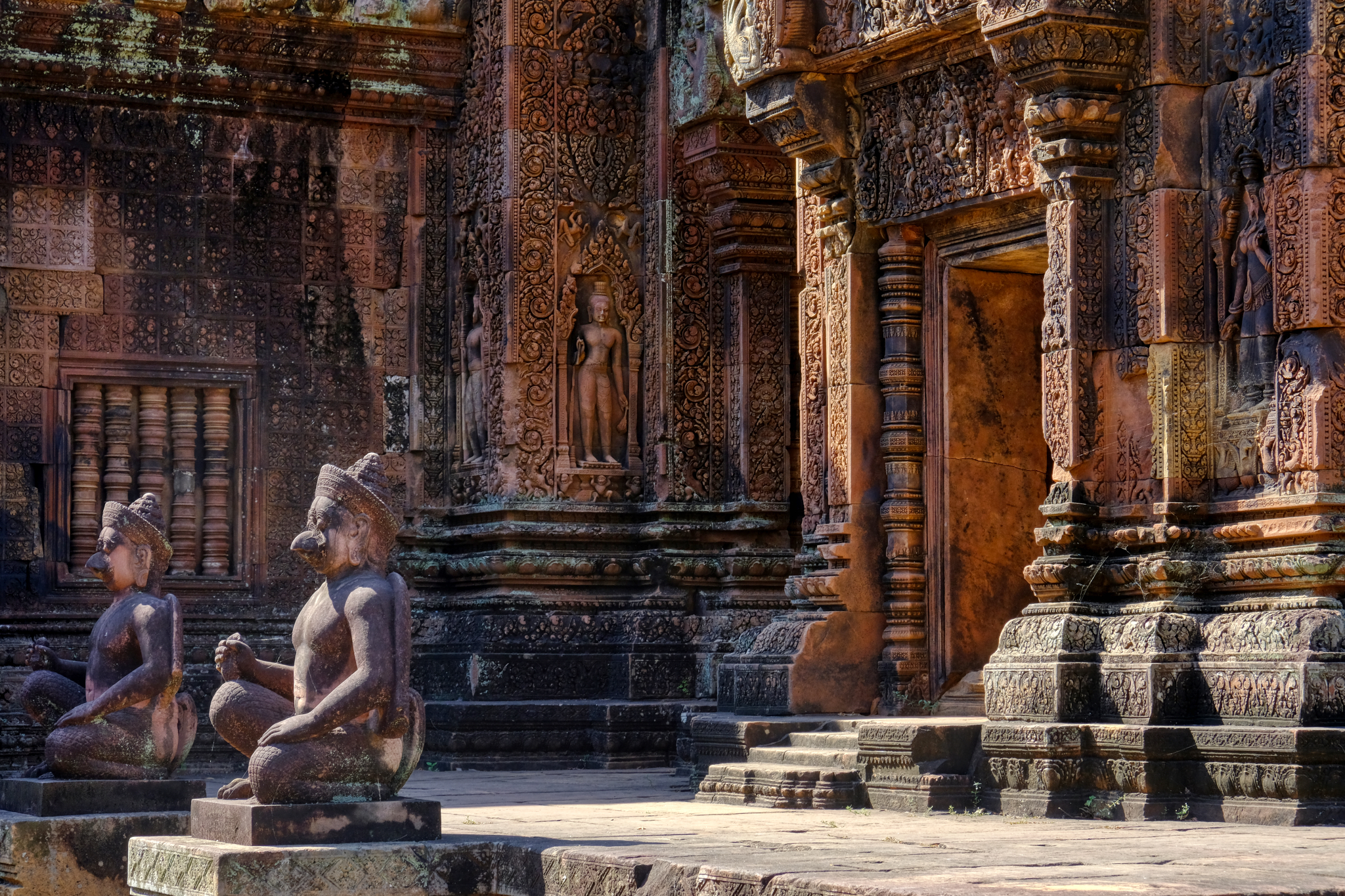 In the deep afternoon shadows, these statues in front of the carved temple presented an ancient, mystical image I will never forget.
In the deep afternoon shadows, these statues in front of the carved temple presented an ancient, mystical image I will never forget.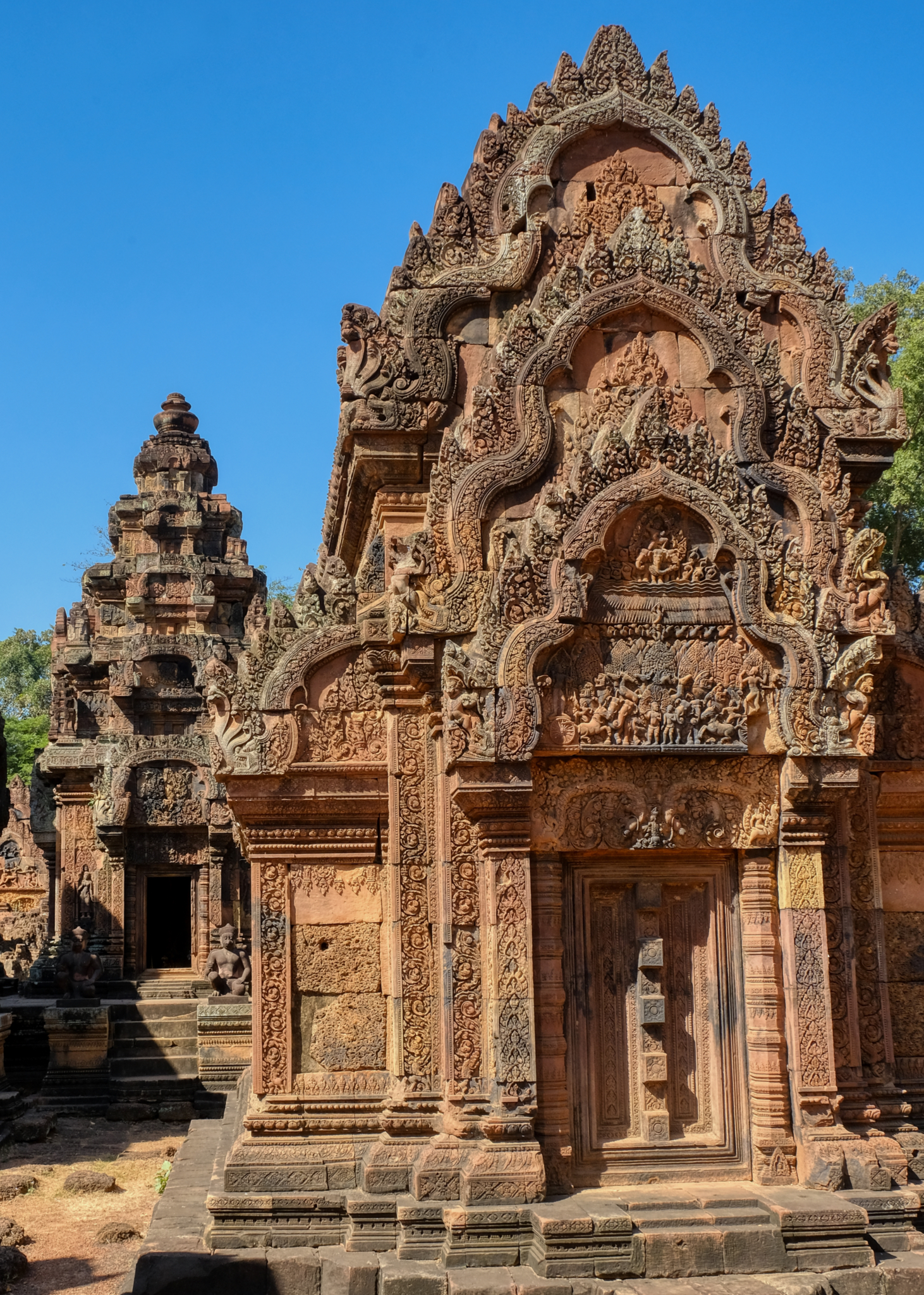 Many small temple structures filled the walled enclosure surrounded by a moat.
Many small temple structures filled the walled enclosure surrounded by a moat. After exploring the red temple, and taking 30-40 photographs of windows and doors, we headed down the road again.
After exploring the red temple, and taking 30-40 photographs of windows and doors, we headed down the road again.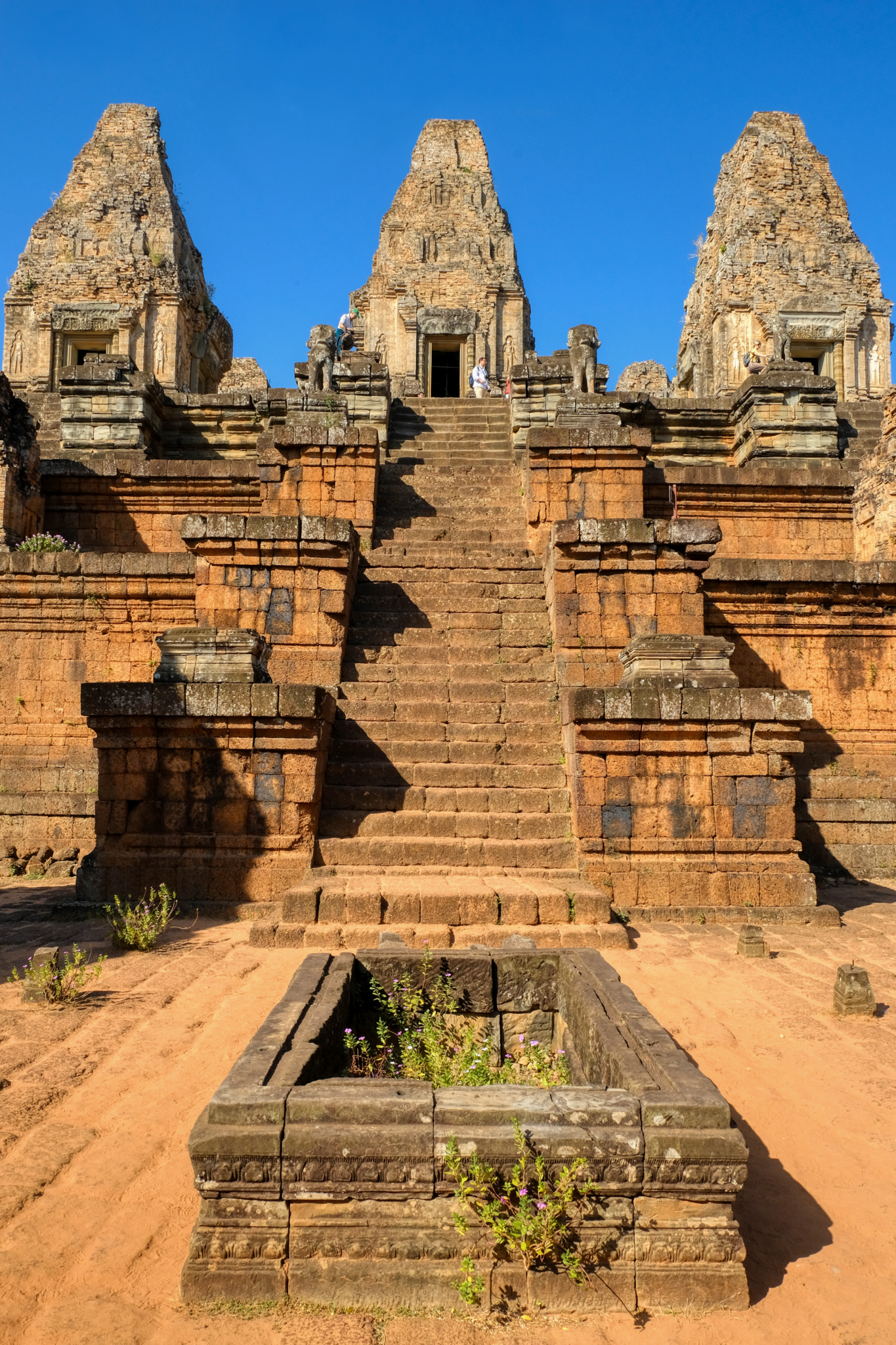 While speeding along a rural road, we yelled to the driver to stop when we saw this small temple alongside the road . . . .
While speeding along a rural road, we yelled to the driver to stop when we saw this small temple alongside the road . . . .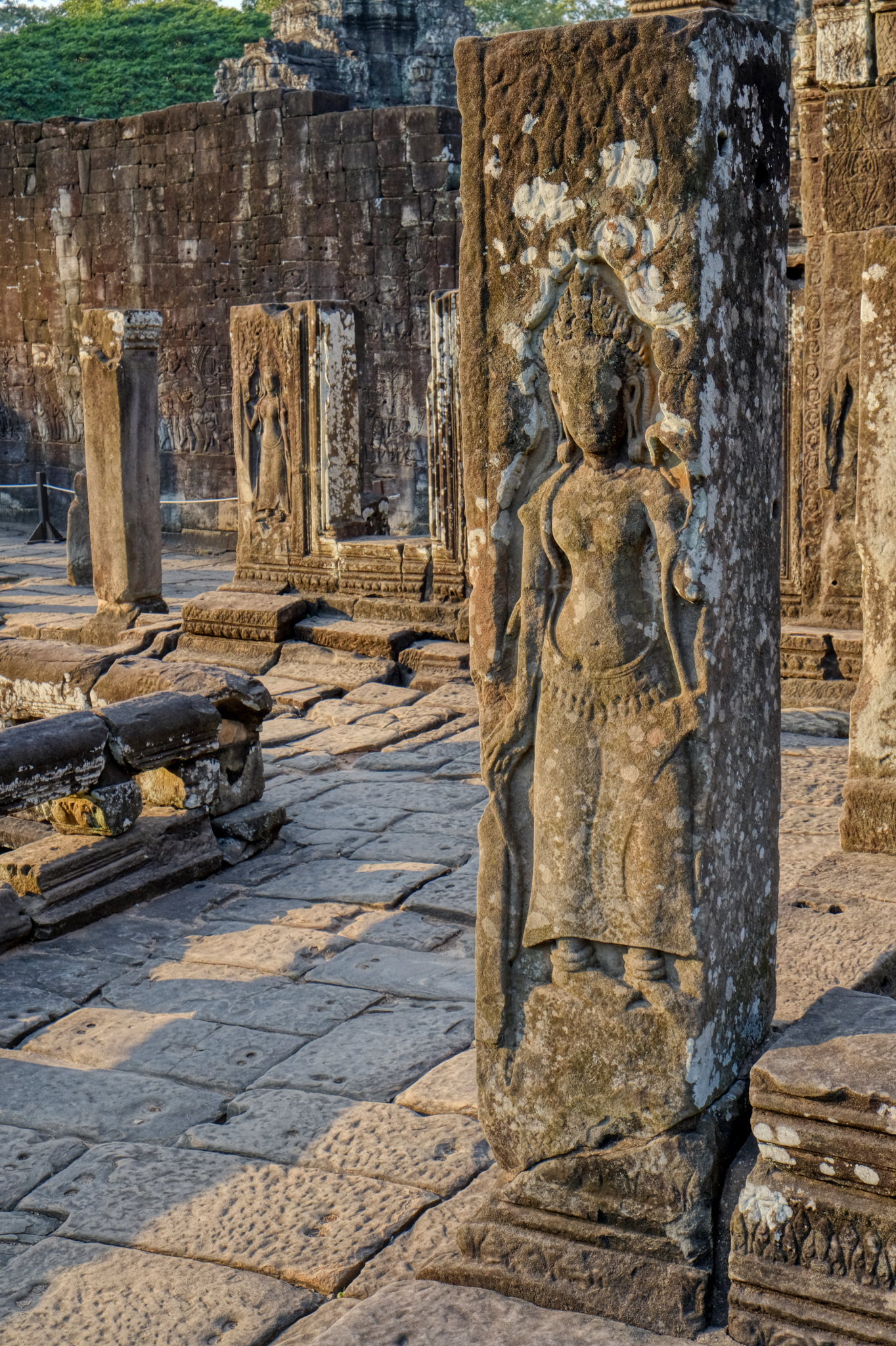 A remarkable temple in the late magic light.
A remarkable temple in the late magic light. Stunning bas reliefs on the columns.
Stunning bas reliefs on the columns.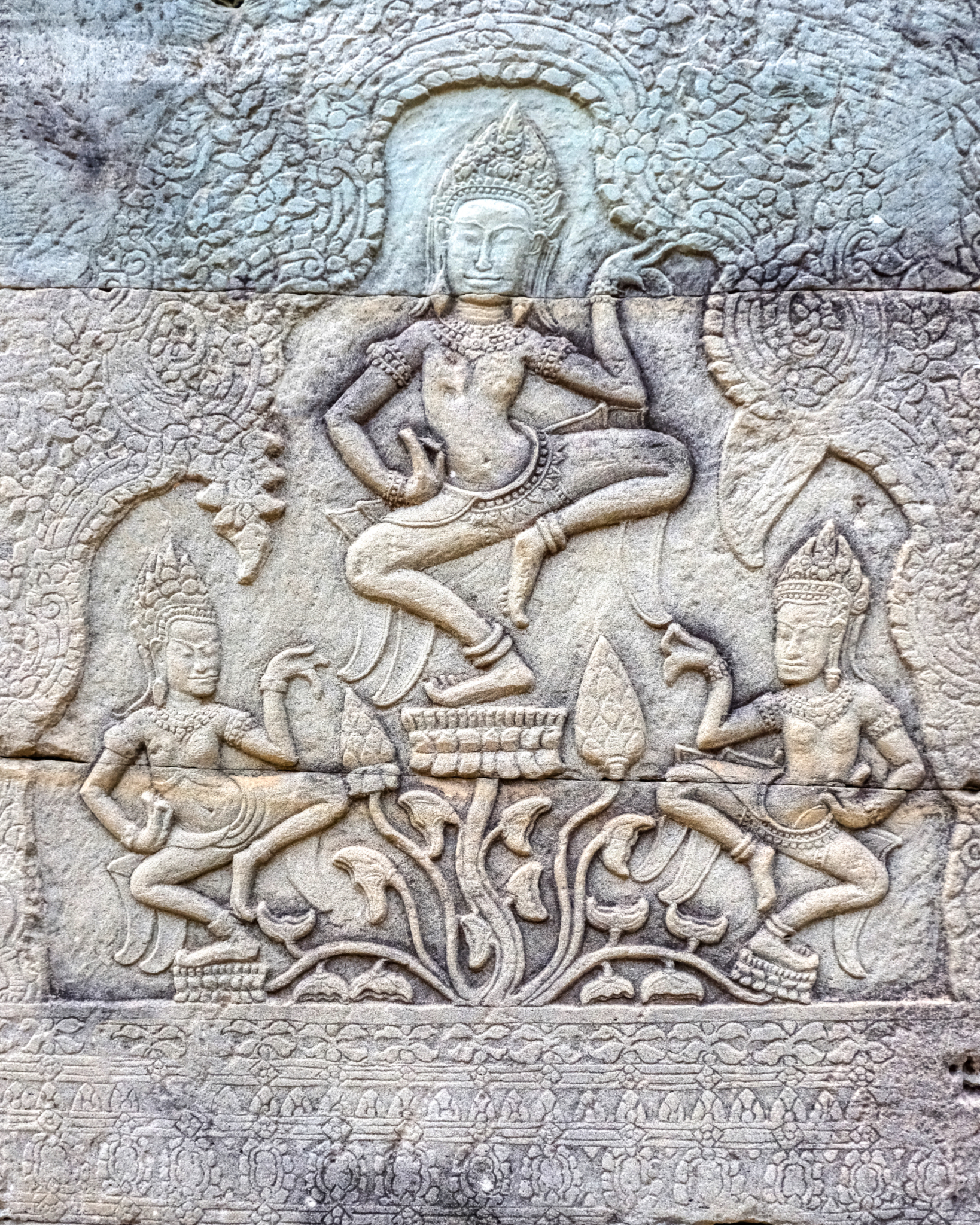 One of the columns' bas relief of a dancer.
One of the columns' bas relief of a dancer.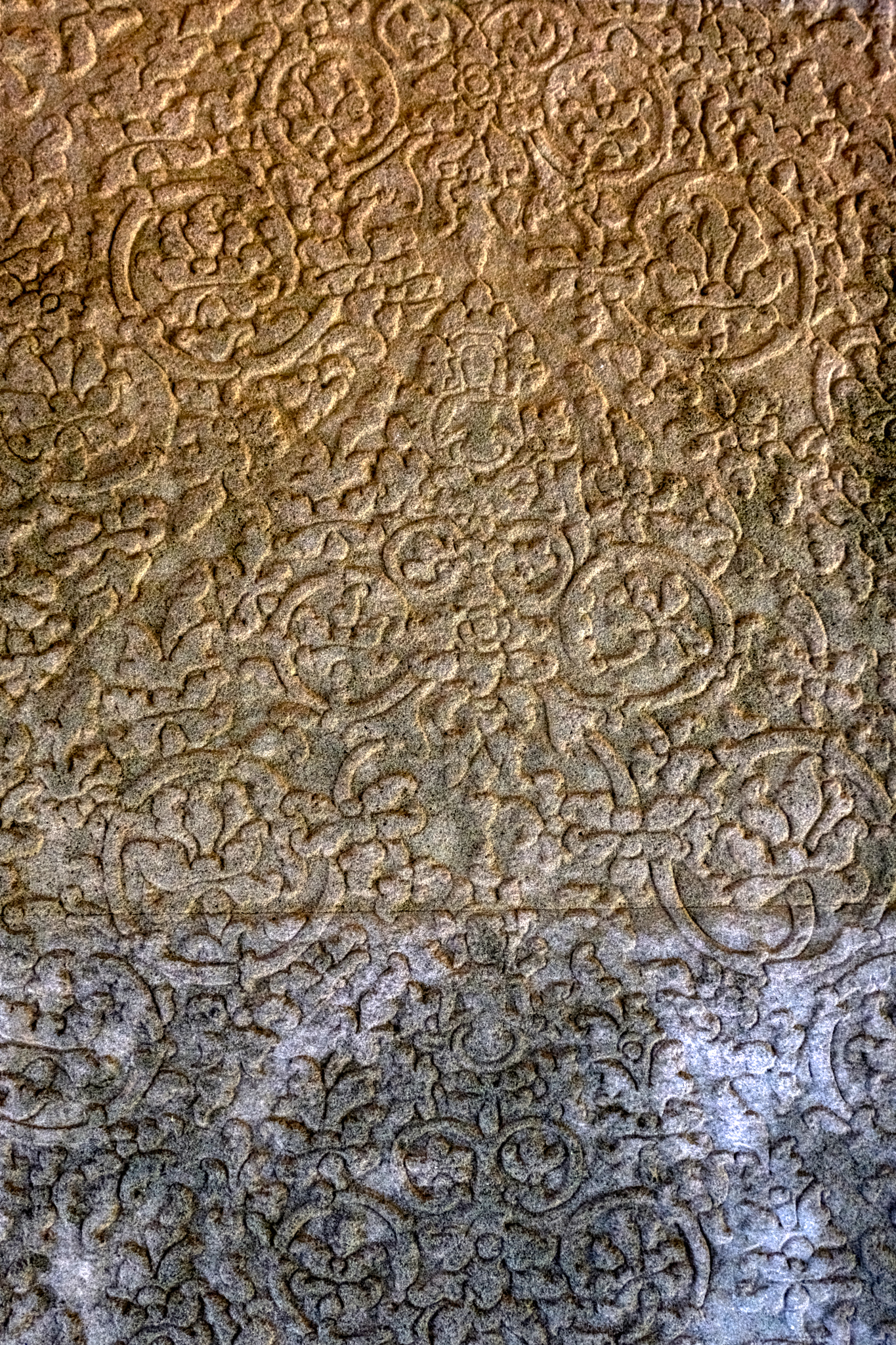 Almost every surface of this temple was incised with these marvelous patterns.
Almost every surface of this temple was incised with these marvelous patterns.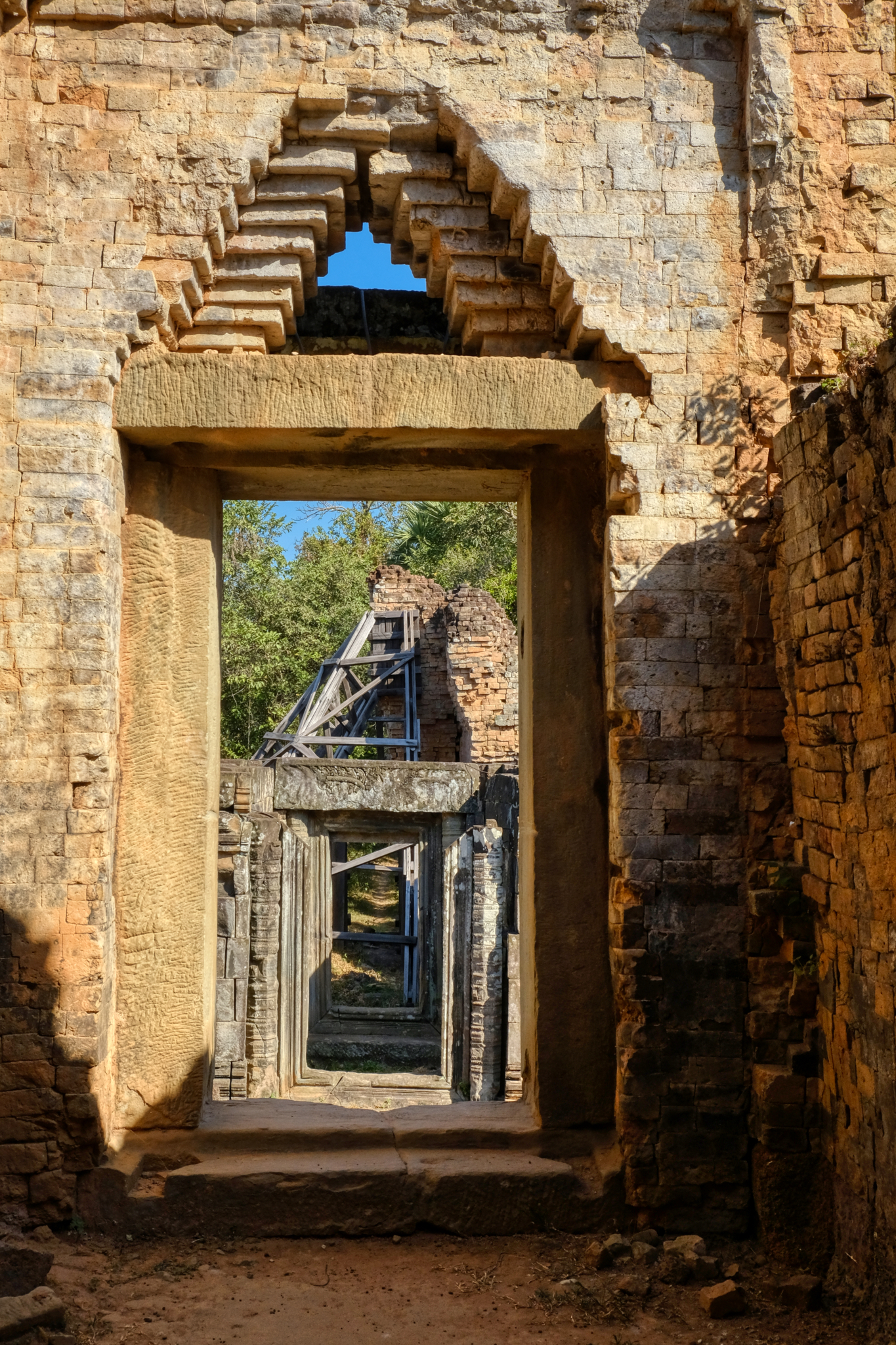 We wandered around this small temple for only 15 minutes before heading out with the driver again. I must go back!!!
We wandered around this small temple for only 15 minutes before heading out with the driver again. I must go back!!!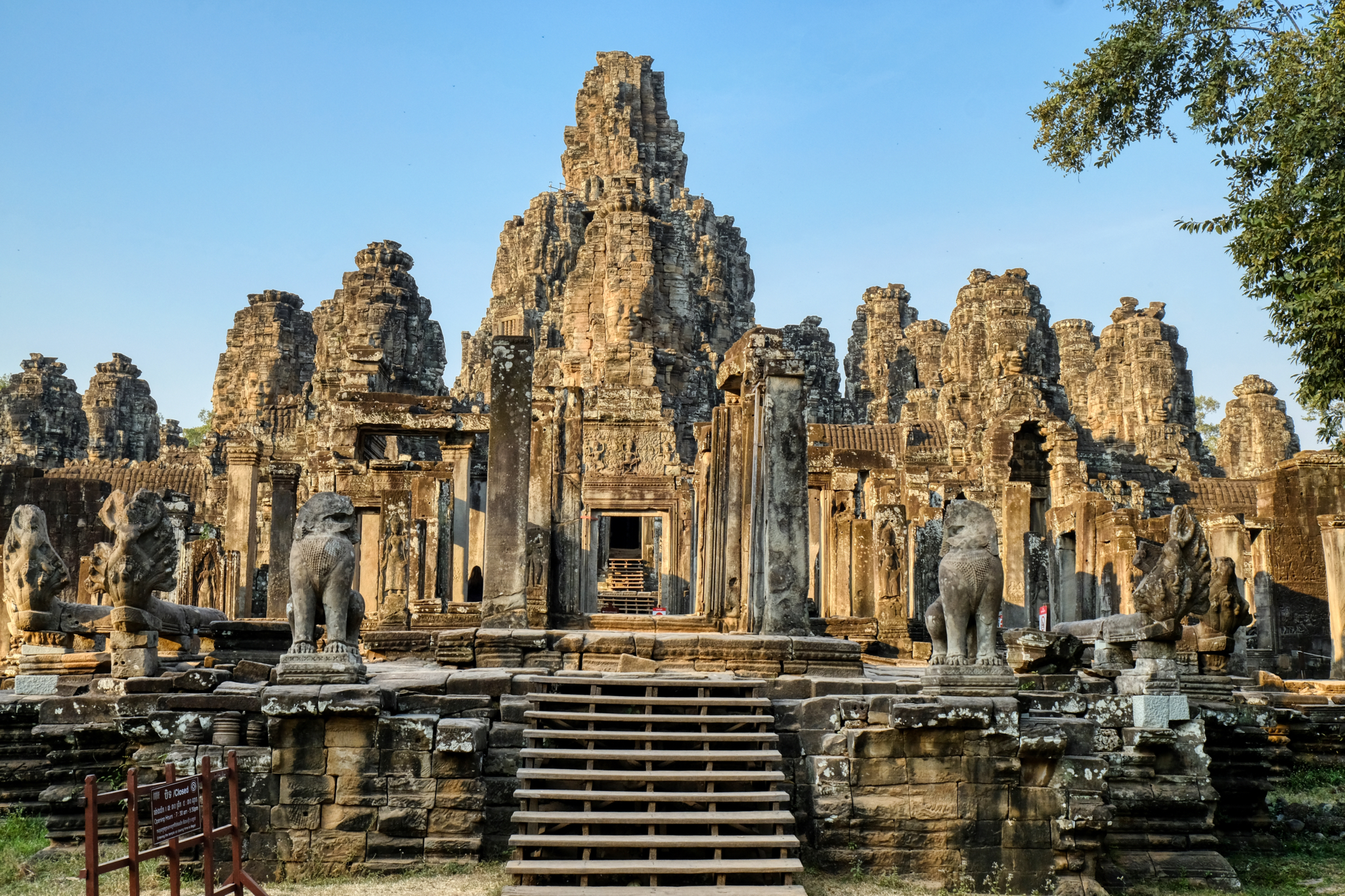 Another roadside temple . . . this photograph taken out of the window of the car. No time to explore it.
Another roadside temple . . . this photograph taken out of the window of the car. No time to explore it.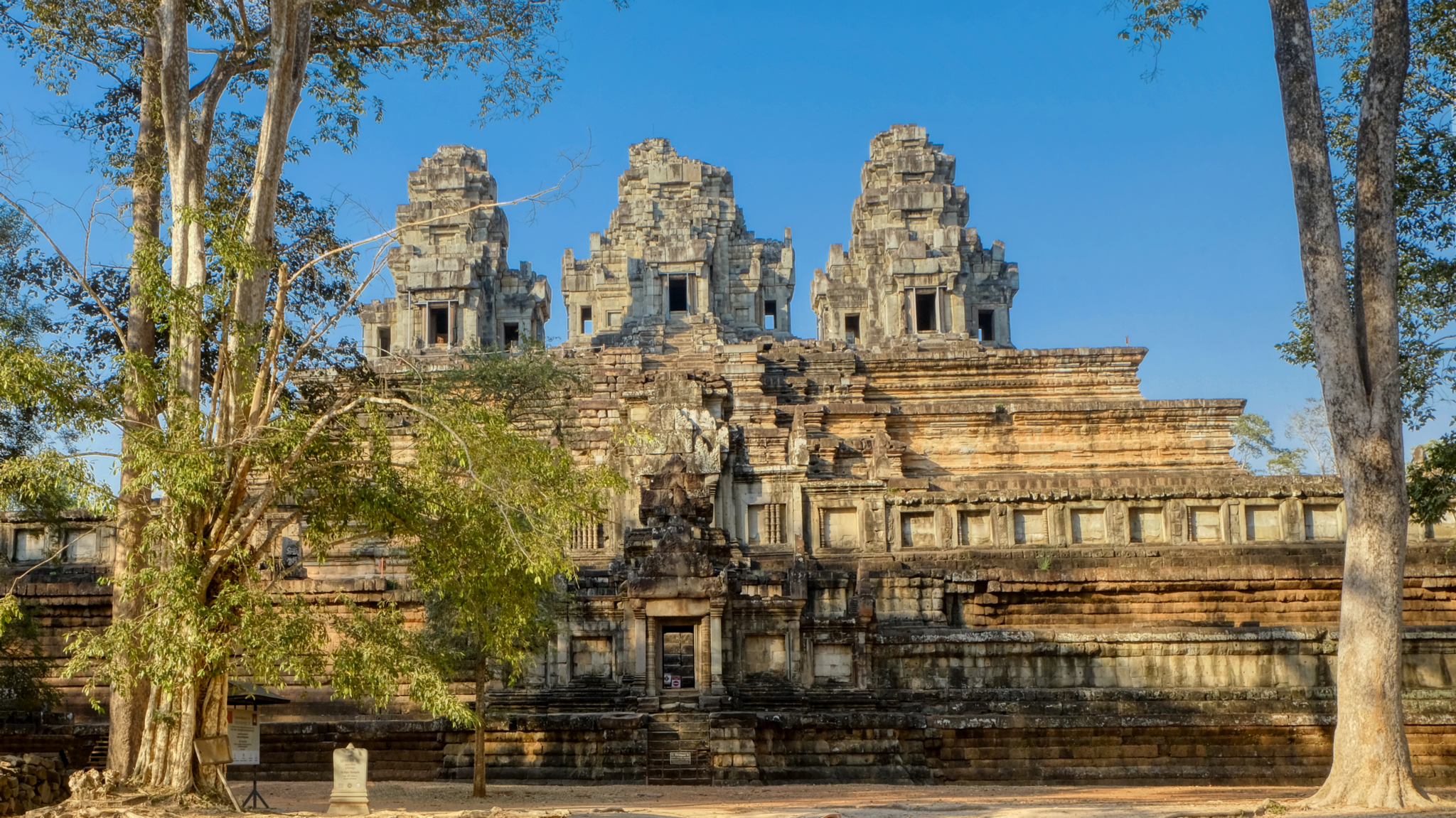 Yet another photo taken from the car of a temple not explored . . . I MUST come back!
Yet another photo taken from the car of a temple not explored . . . I MUST come back! A highlight of the day was the 'discovery' of the halls of carved stone concubines at a place called the elephant race track.
A highlight of the day was the 'discovery' of the halls of carved stone concubines at a place called the elephant race track. Hundreds and hundreds of individuals represented in stone.
Hundreds and hundreds of individuals represented in stone.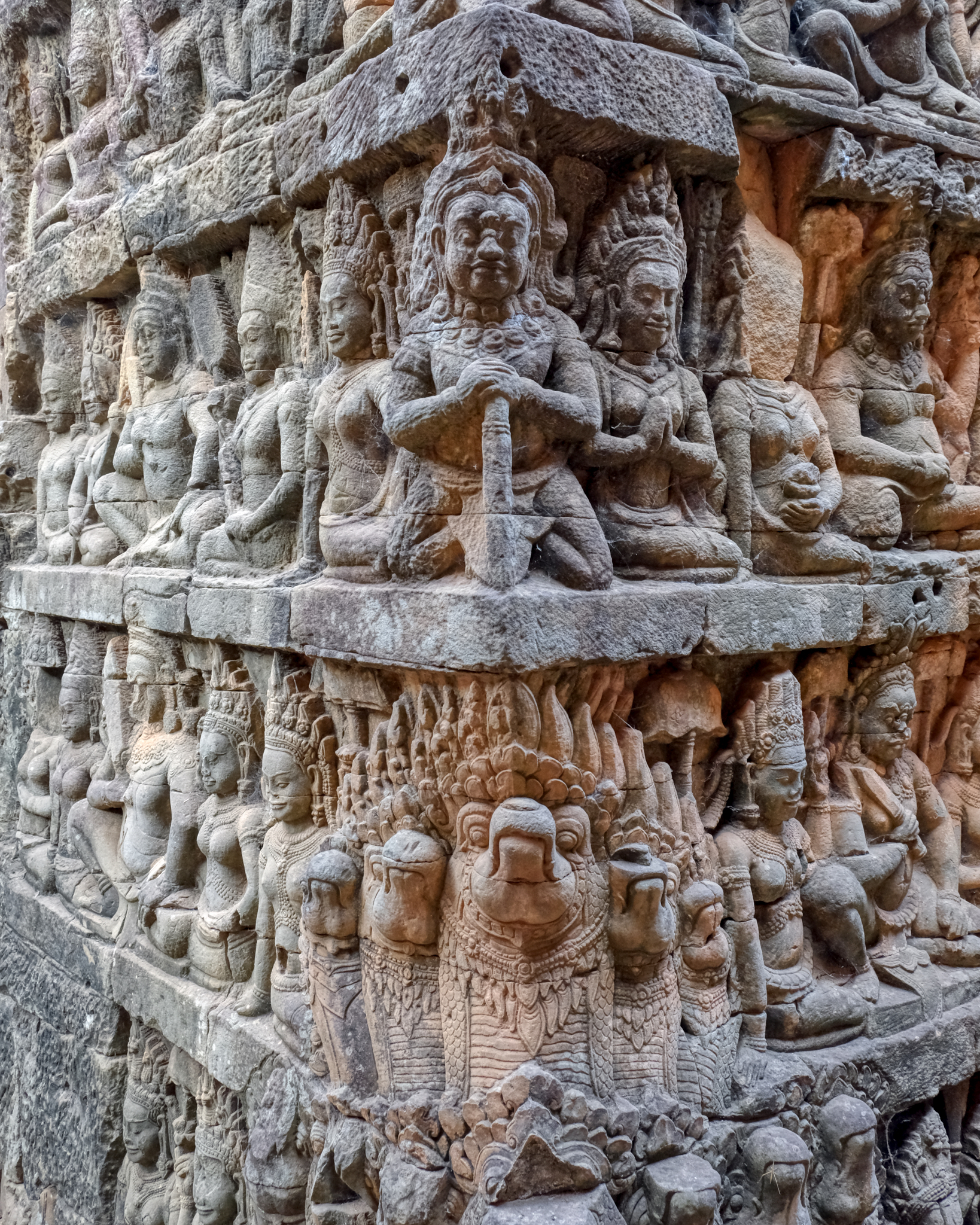 An incredible archeological find.
An incredible archeological find.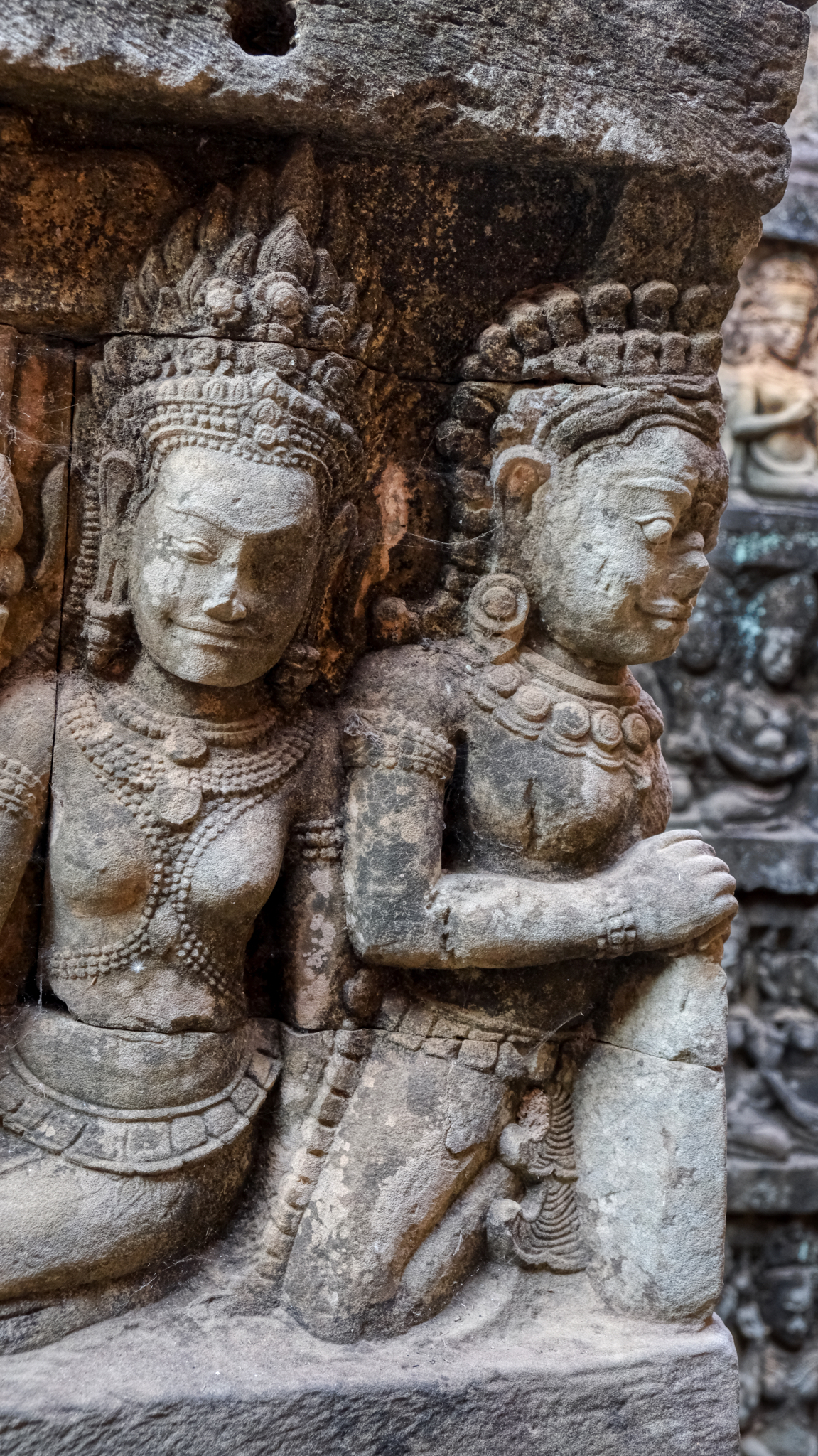 Great detail.
Great detail. Another wall of concubines in the late sunlight.
Another wall of concubines in the late sunlight.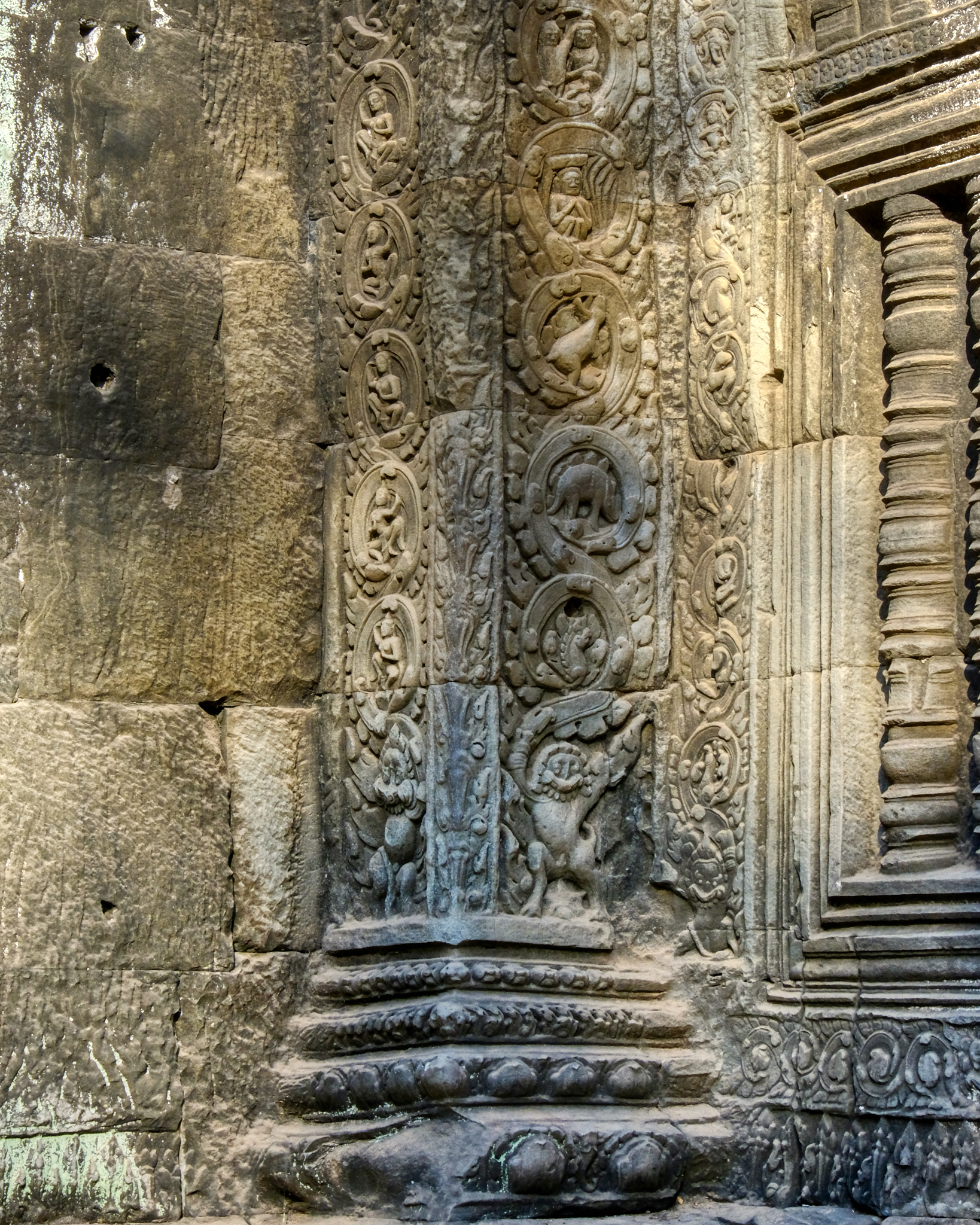 This corner panel has stumped archaeologists for a hundred years. See if you can spot the carved stegosaurus (3rd one up from the bottom on right). . . . they didn't know about the dinosaurs at that time!
This corner panel has stumped archaeologists for a hundred years. See if you can spot the carved stegosaurus (3rd one up from the bottom on right). . . . they didn't know about the dinosaurs at that time! We stayed at the nearby town of Siem Reap. Although it was filling up with tourists (before the Covid-19 scare), it was a pleasant and vibrant little place with good restaurants and good shopping.
We stayed at the nearby town of Siem Reap. Although it was filling up with tourists (before the Covid-19 scare), it was a pleasant and vibrant little place with good restaurants and good shopping. There was an extensive 'night market' stuffed with tourist curios . . . and some very nice things too.
There was an extensive 'night market' stuffed with tourist curios . . . and some very nice things too.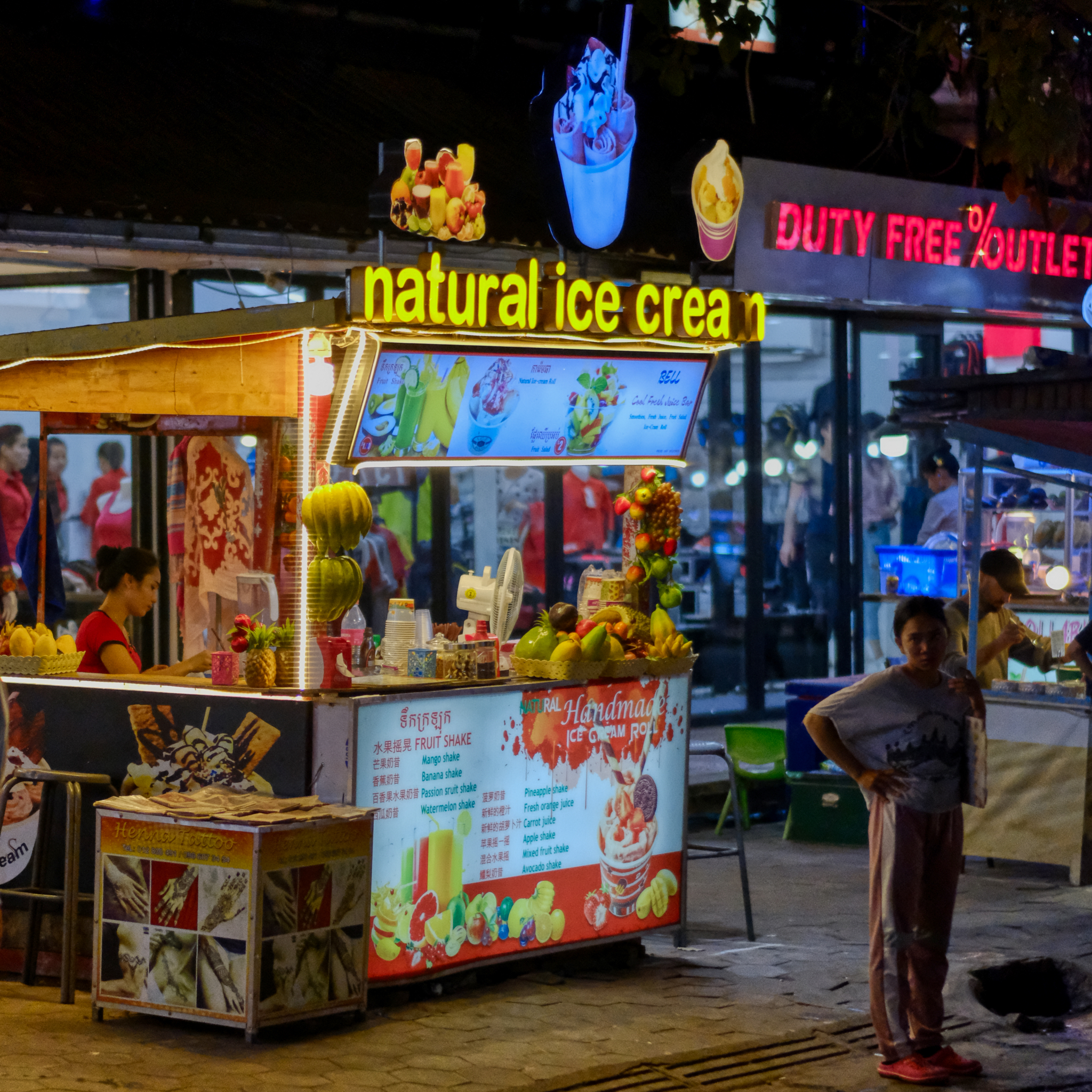 Yes, everything an international tourist might want on a hot Cambodian night.
Yes, everything an international tourist might want on a hot Cambodian night. I bought some bracelets from this hard working guy.
I bought some bracelets from this hard working guy.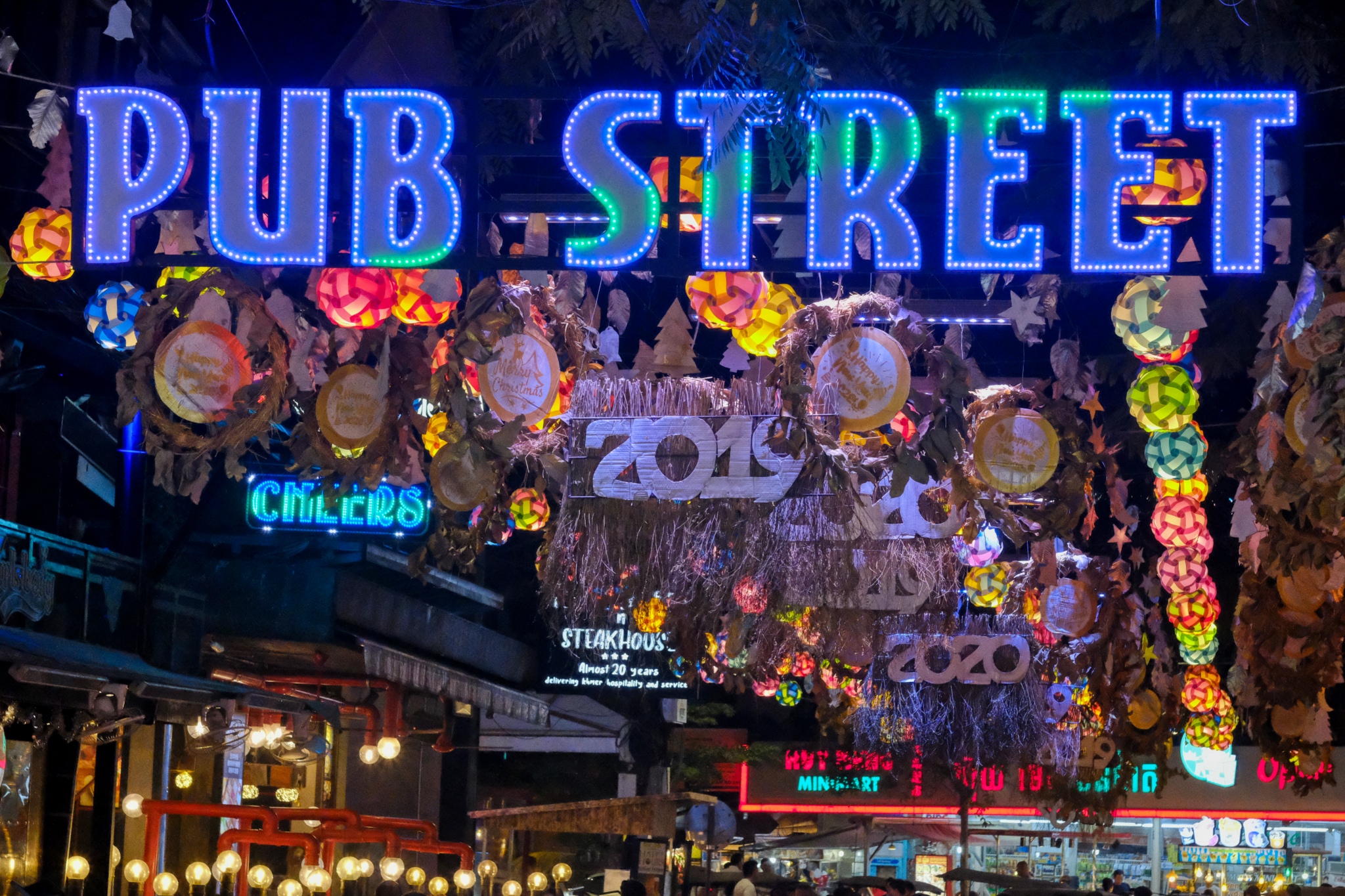 We had a feeling we were not the first tourists to have visited Siem Reap. Pub Street was a lively place.
We had a feeling we were not the first tourists to have visited Siem Reap. Pub Street was a lively place.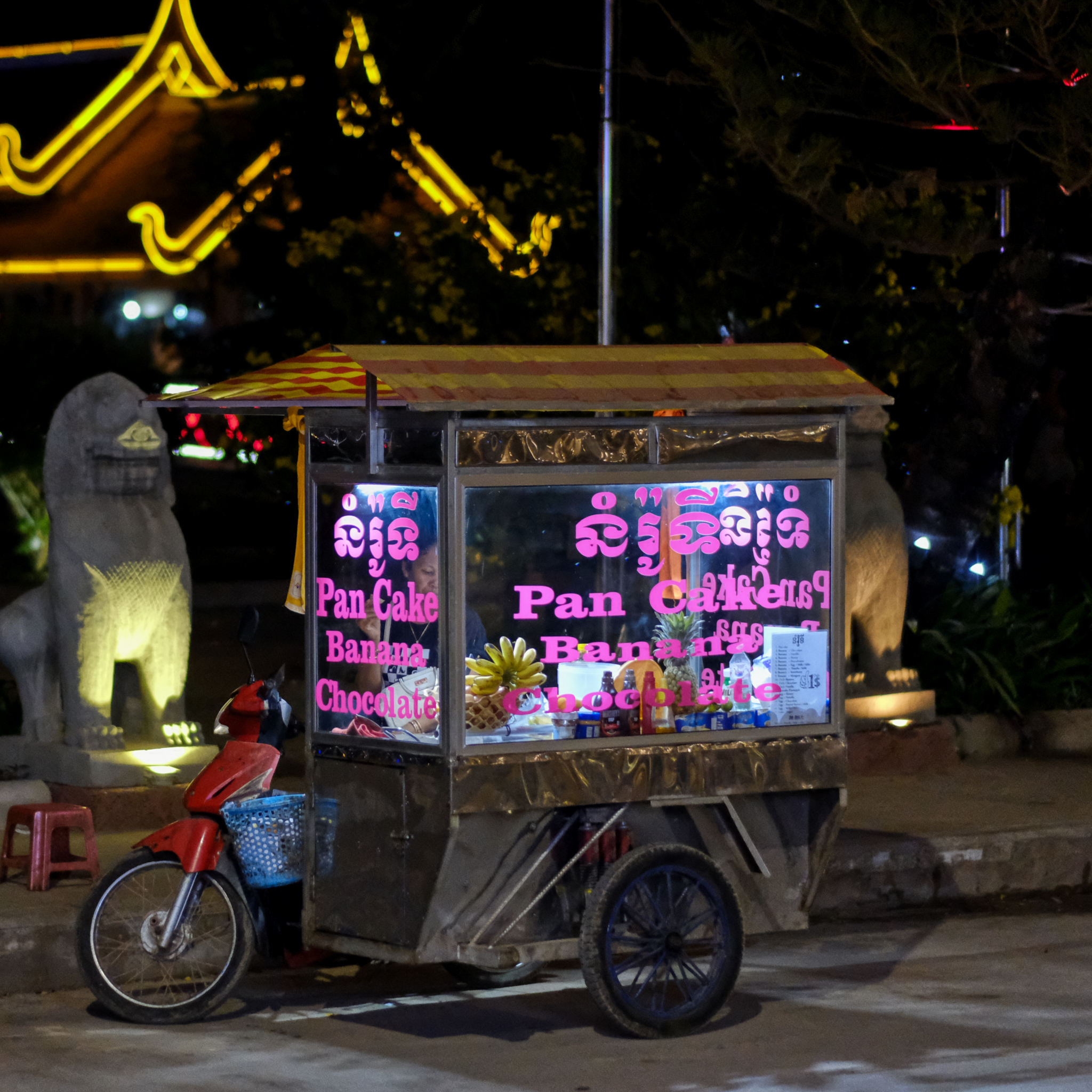 This cart reminded me of the movie Groundhog Day . . . "Hey, who wants some flapjacks?"
This cart reminded me of the movie Groundhog Day . . . "Hey, who wants some flapjacks?" Lots of small street eateries. This was in the middle of the tourist season, mid-January, and it was not as crowded as I would have thought.
Lots of small street eateries. This was in the middle of the tourist season, mid-January, and it was not as crowded as I would have thought. The modern tuk-tuk driver is hooked into the world and its events.
The modern tuk-tuk driver is hooked into the world and its events.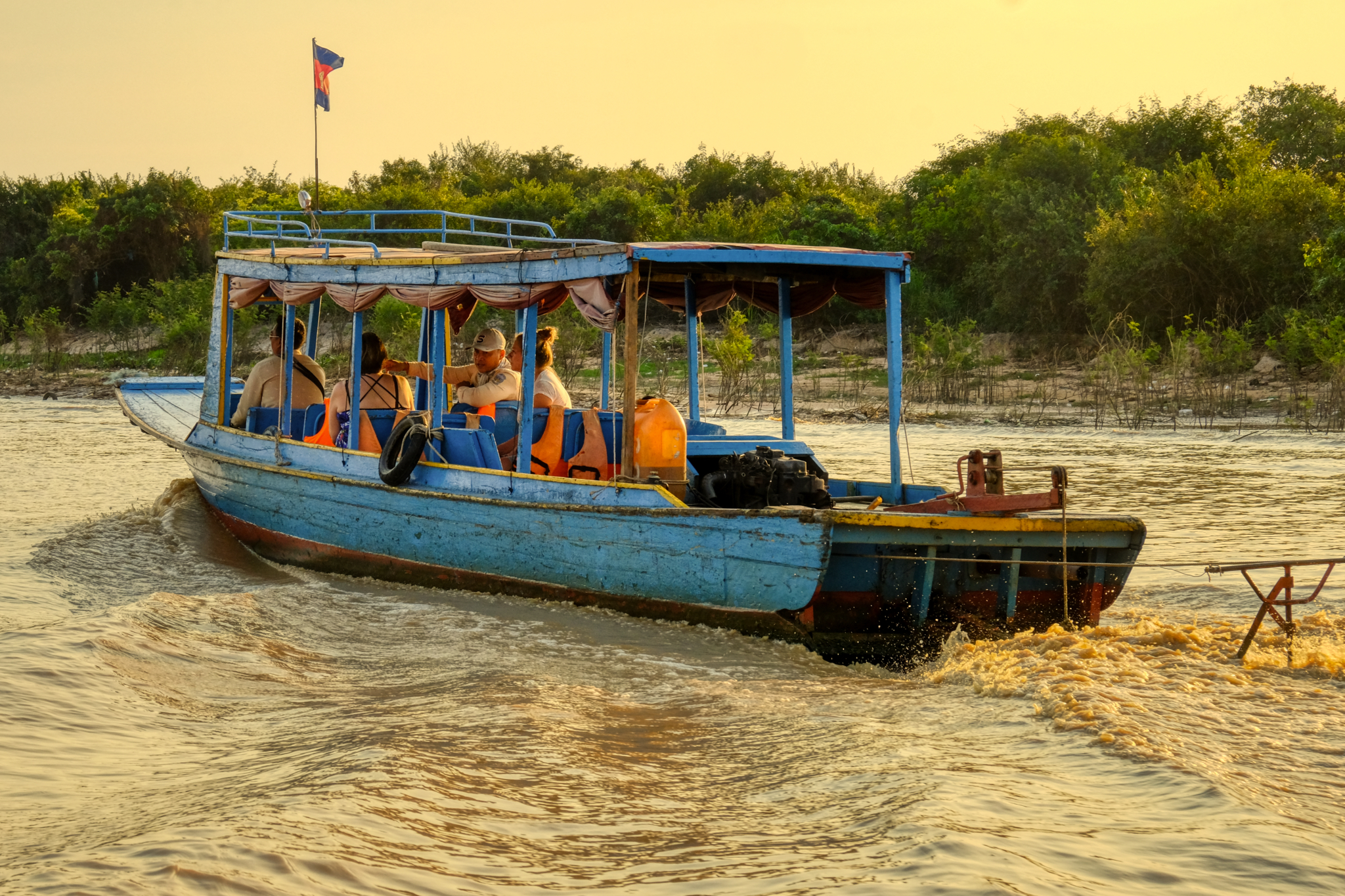 Our driver insisted that we all go out to the lake and take a boat on the water to see the sunset. We were sure it was just a tourist trap, but we relented. There were hundreds of small boats full of tourists. We got one and headed out.
Our driver insisted that we all go out to the lake and take a boat on the water to see the sunset. We were sure it was just a tourist trap, but we relented. There were hundreds of small boats full of tourists. We got one and headed out.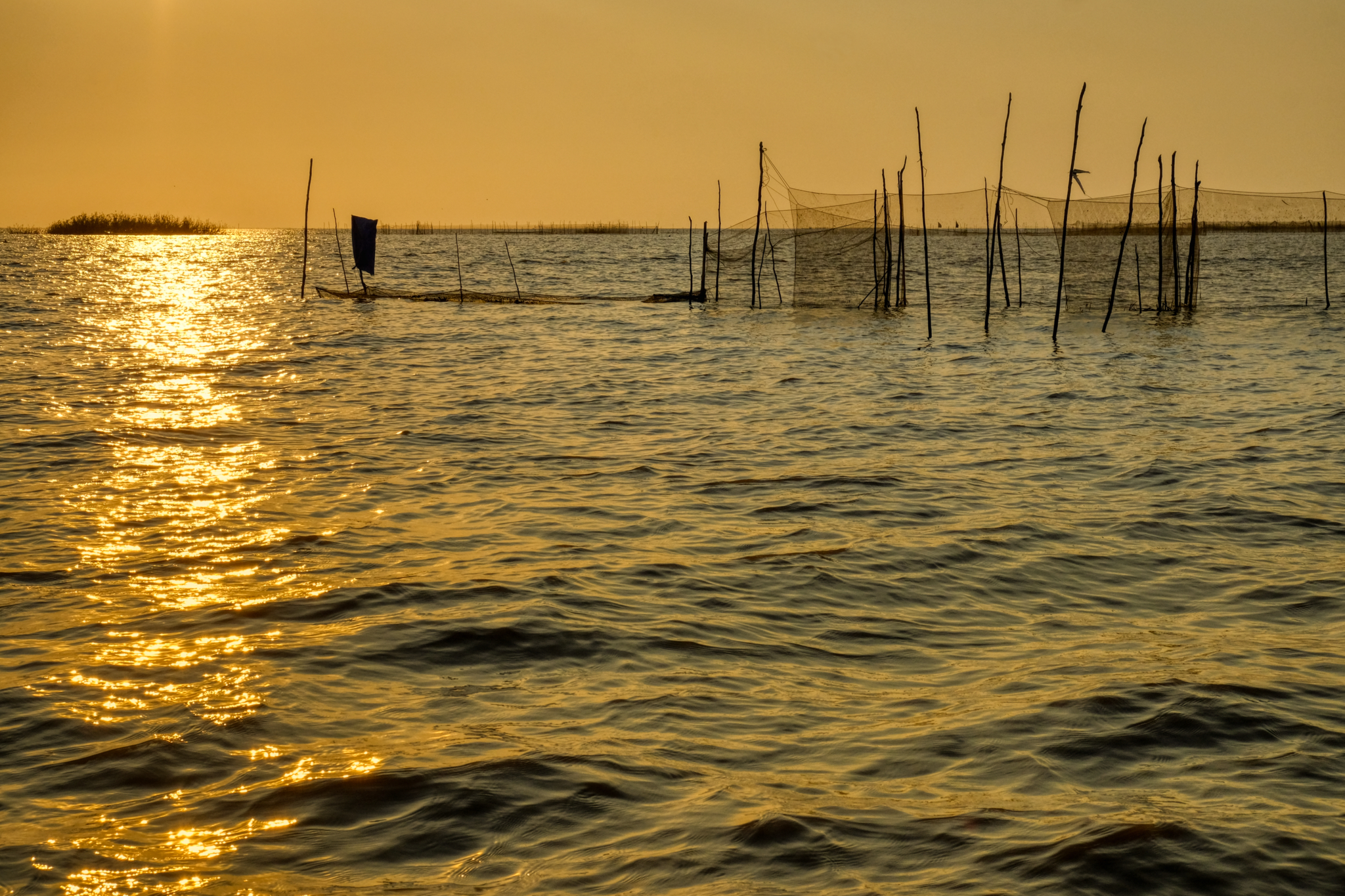 The ride out to the lake was spectacular. We were very happy we had taken the trip.
The ride out to the lake was spectacular. We were very happy we had taken the trip.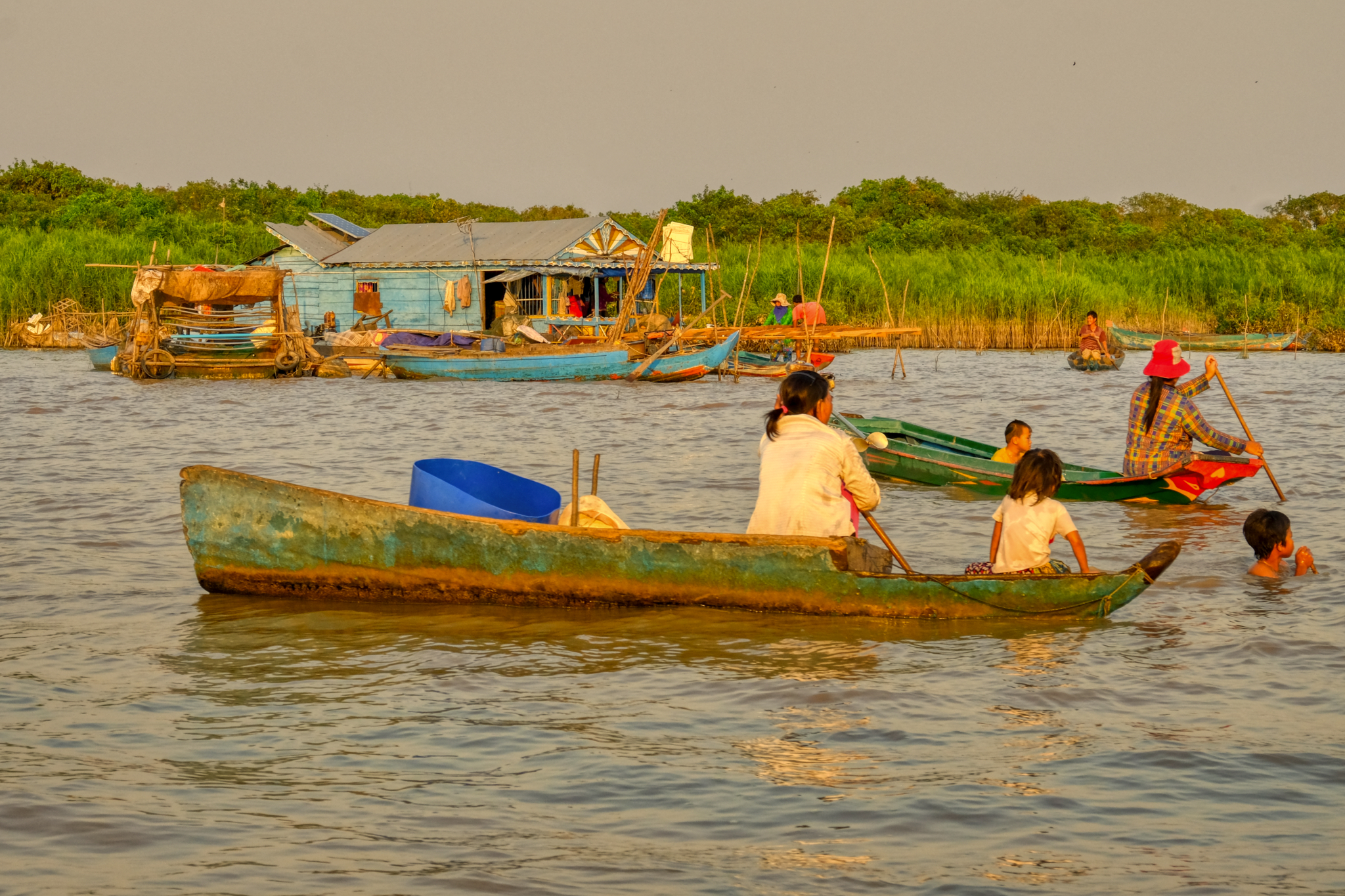 We passed through a floating village along the way. The boatman told us that this village moves with the rising and falling of the lake.
We passed through a floating village along the way. The boatman told us that this village moves with the rising and falling of the lake.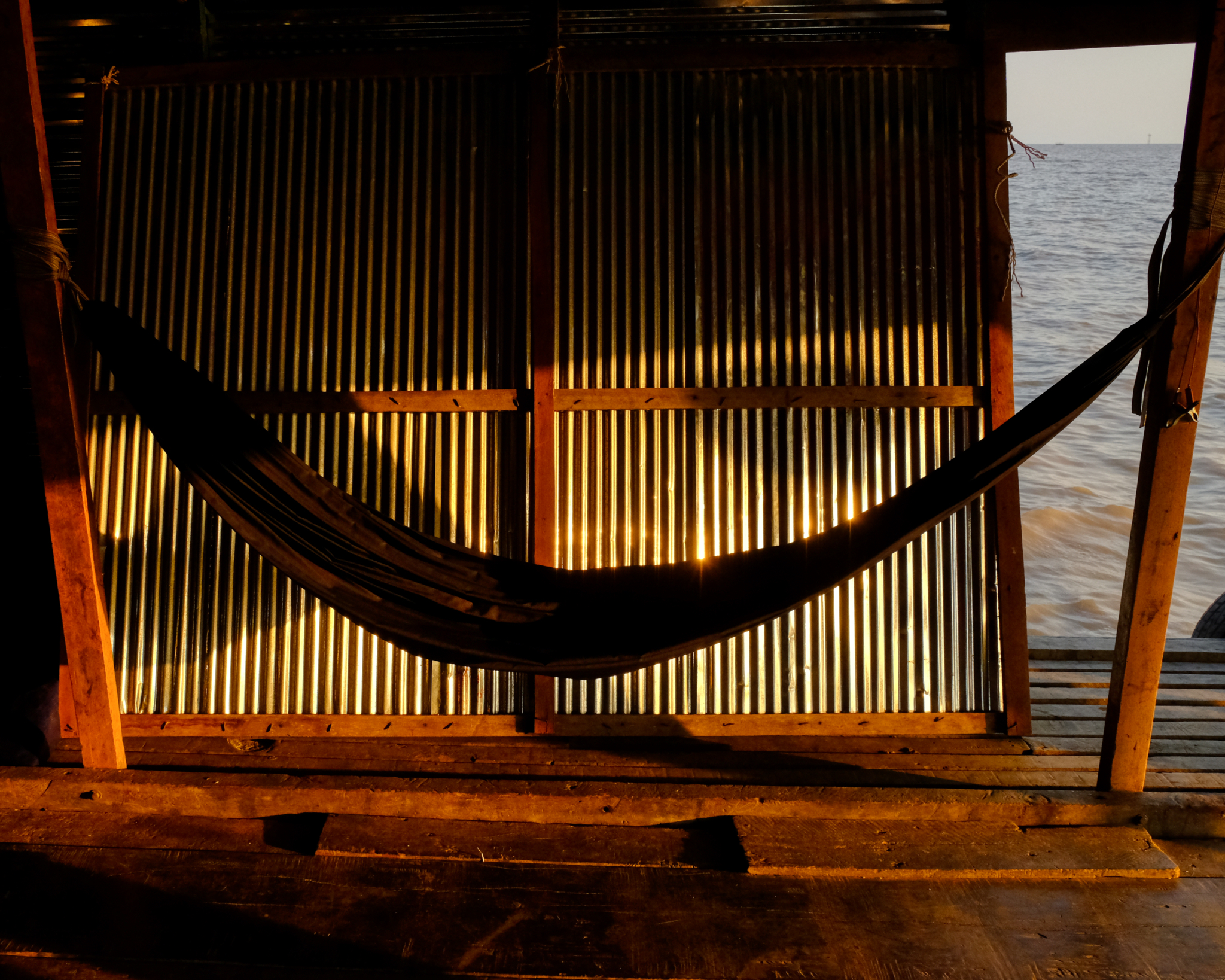 We stopped off at one of the floating shacks.
We stopped off at one of the floating shacks.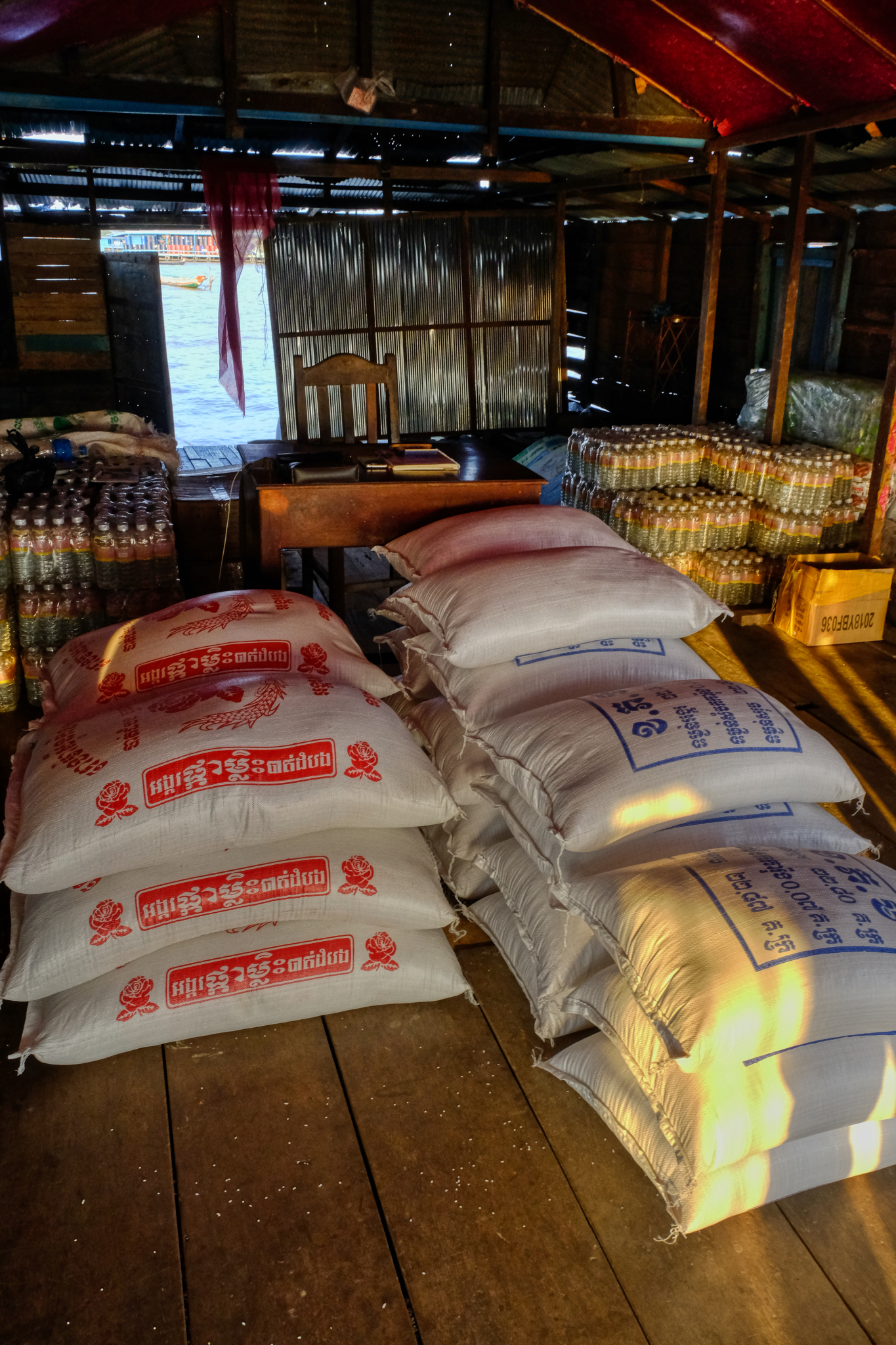 The boatman said these villagers were very poor. He asked if we would like to make a donation of rice to the local floating school. We were happy to help. For a few dollars we bought four sacks of rice and delivered them to this school:
The boatman said these villagers were very poor. He asked if we would like to make a donation of rice to the local floating school. We were happy to help. For a few dollars we bought four sacks of rice and delivered them to this school: This is the floating school. We stopped here to unload the rice.
This is the floating school. We stopped here to unload the rice.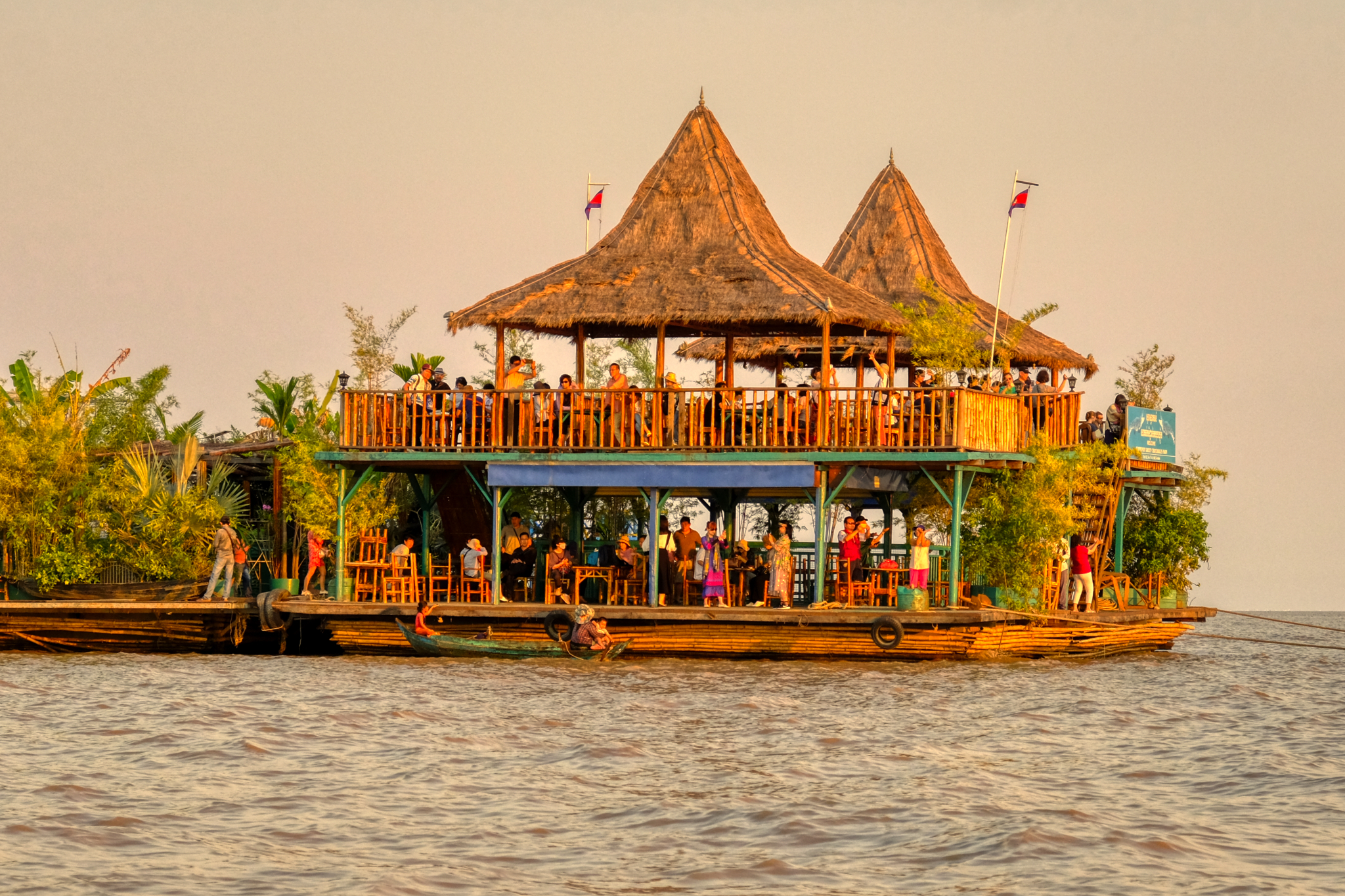 There were several of these large sunset viewing rafts out a mile or so from the shore of the lake . . . full of tourists like us.
There were several of these large sunset viewing rafts out a mile or so from the shore of the lake . . . full of tourists like us.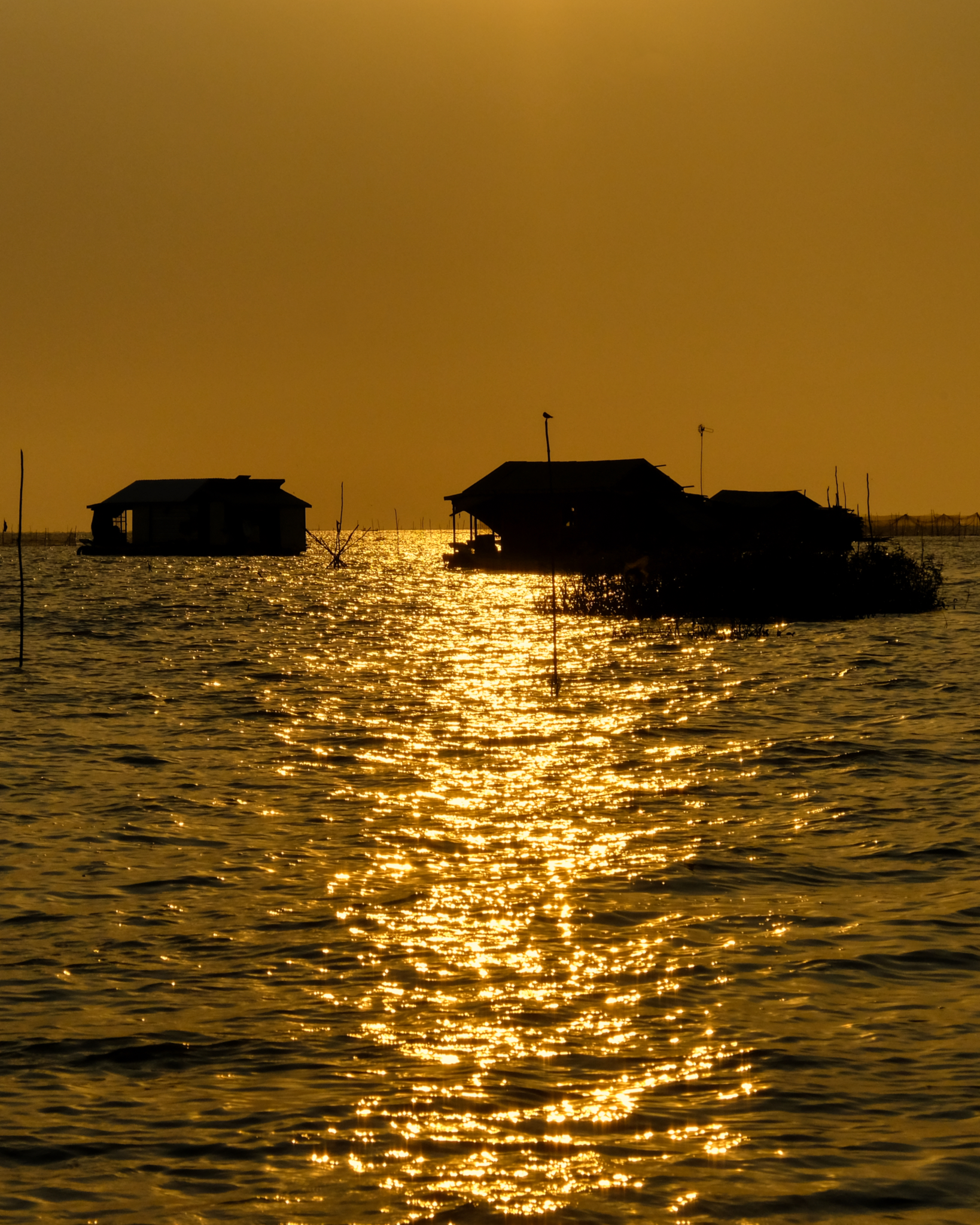 A beautiful trip out into the inland sea.
A beautiful trip out into the inland sea. The villagers made their living fishing from their floating platforms.
The villagers made their living fishing from their floating platforms.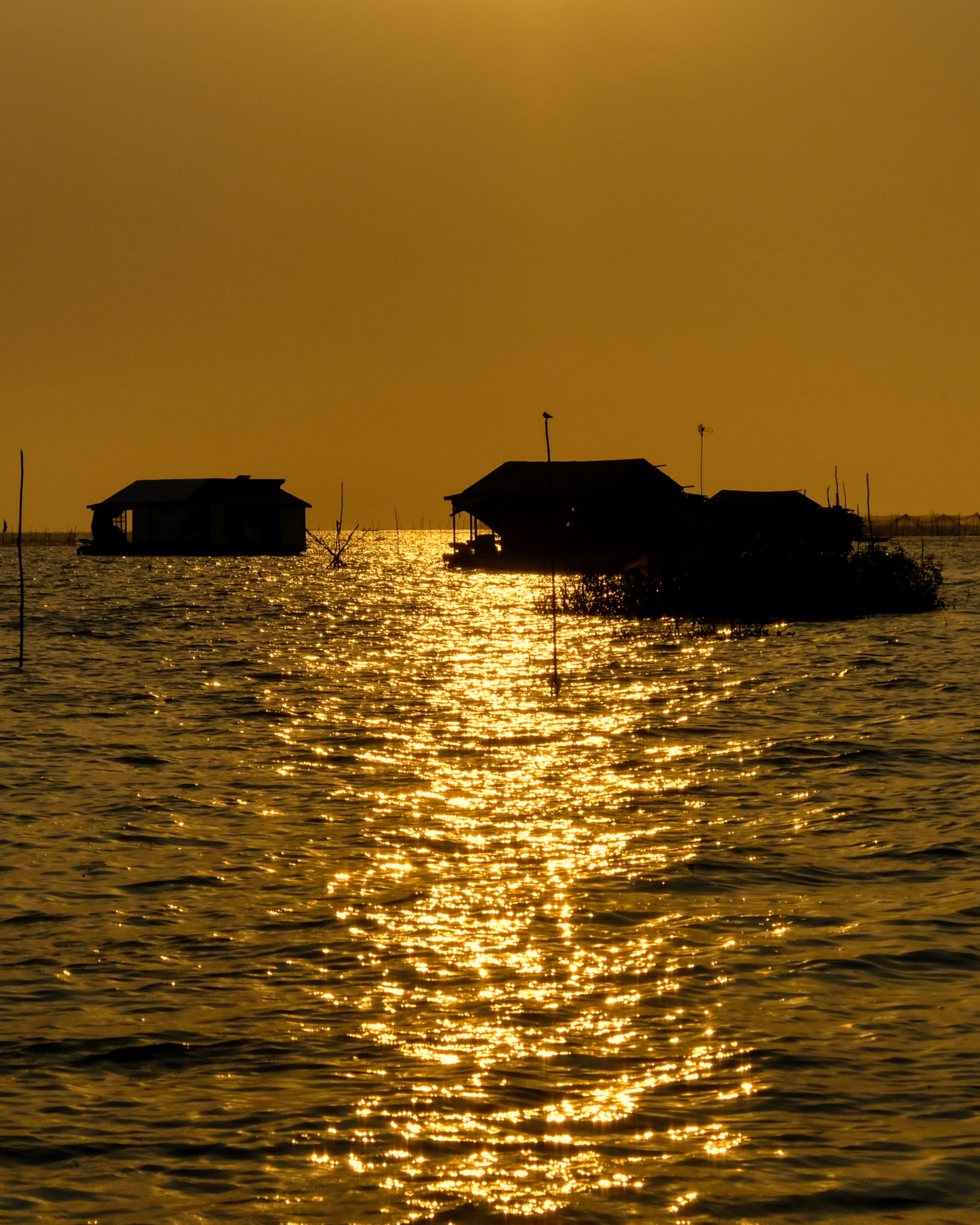 Village shacks in the amber sunset light.
Village shacks in the amber sunset light.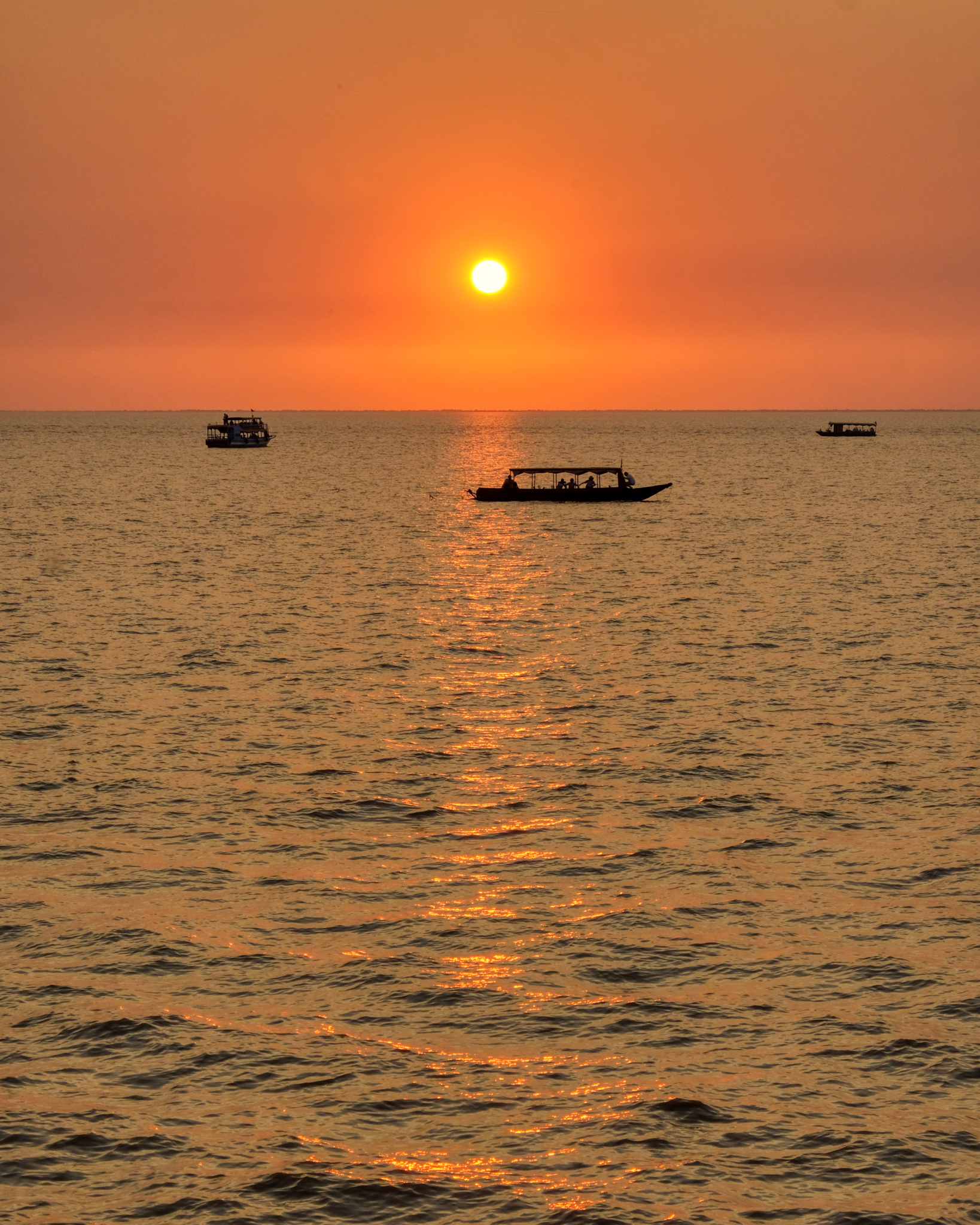 The view from our observation deck . . . boats in the setting sun.
The view from our observation deck . . . boats in the setting sun. And the sun set over our Angkor Wat vacation. A wonderful four days. If you go to see Angkor Wat, I highly recommend the sunset boat trip . . . .
And the sun set over our Angkor Wat vacation. A wonderful four days. If you go to see Angkor Wat, I highly recommend the sunset boat trip . . . .A Long Week-End in Maçau, China
 Sunday, February 2, 2020 at 3:57PM
Sunday, February 2, 2020 at 3:57PM 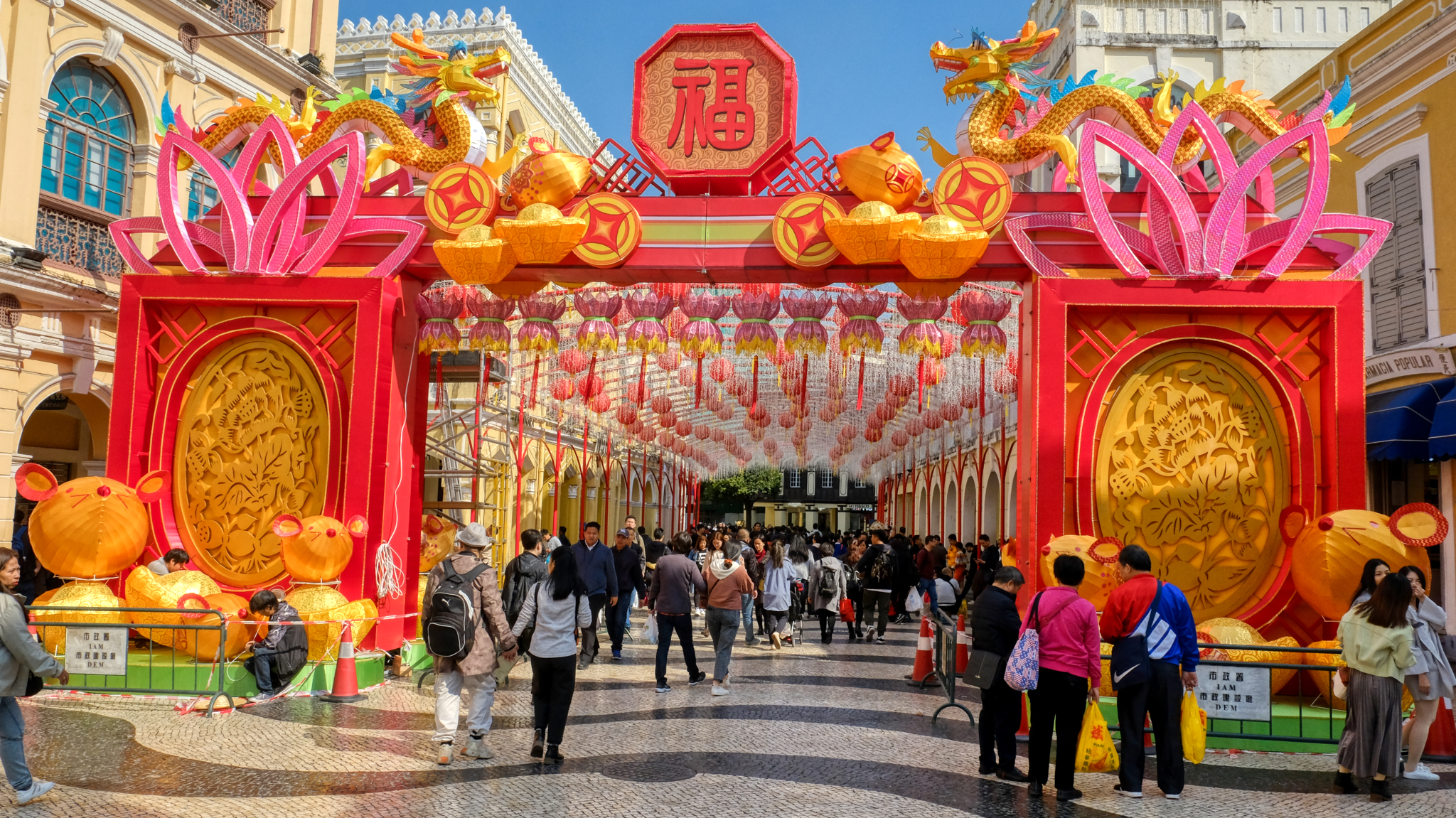 On the week-end that the corona virus was announced, we happened to be in Maçau . . . it was beautiful in the old part of the city as they were erecting decorations for the upcoming Chinese New Year festivities.
On the week-end that the corona virus was announced, we happened to be in Maçau . . . it was beautiful in the old part of the city as they were erecting decorations for the upcoming Chinese New Year festivities.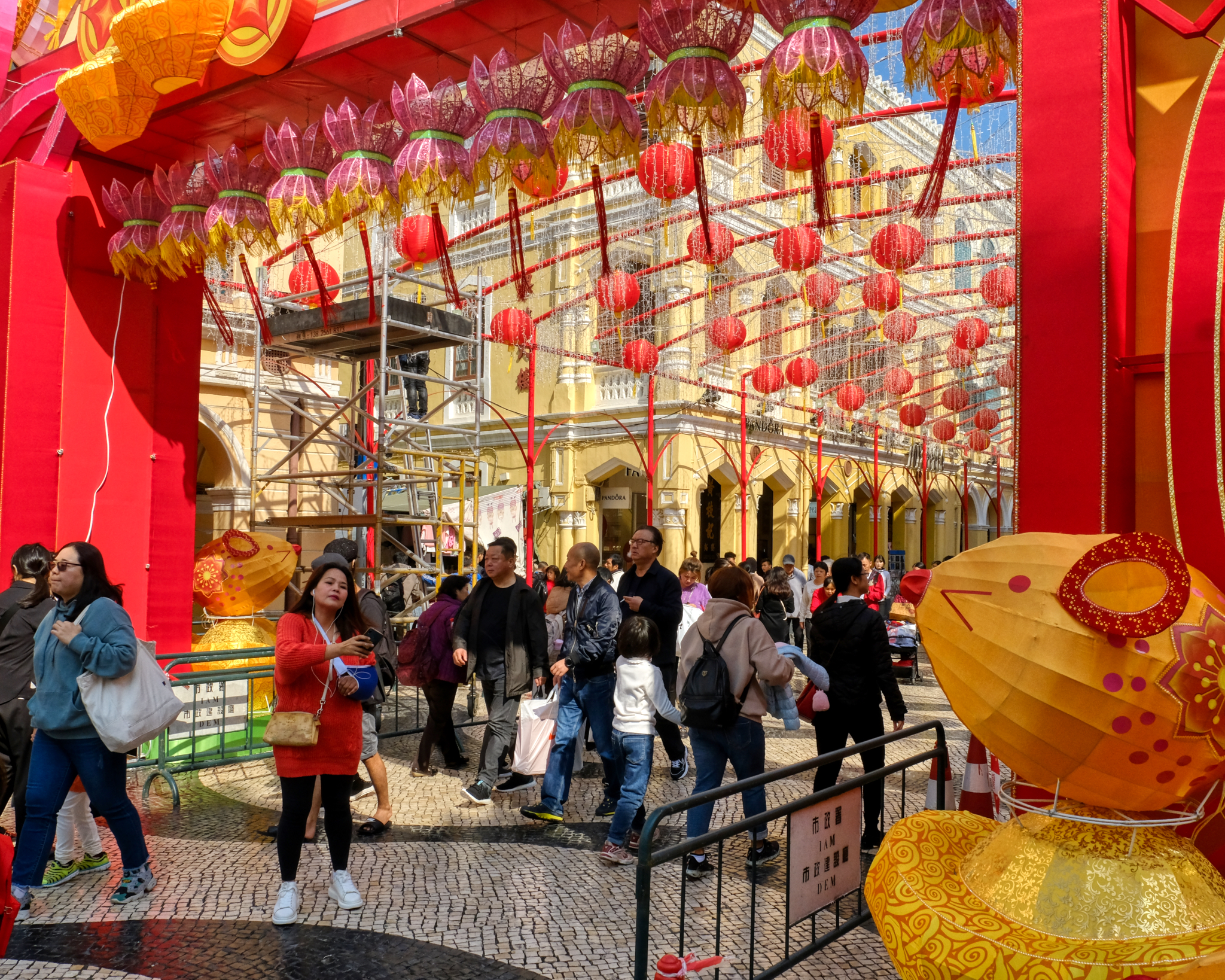 Big crowds on a beautiful February day.
Big crowds on a beautiful February day. Gold for good luck . . . Year of the Rat (but only mice depicted!!!). . .
Gold for good luck . . . Year of the Rat (but only mice depicted!!!). . .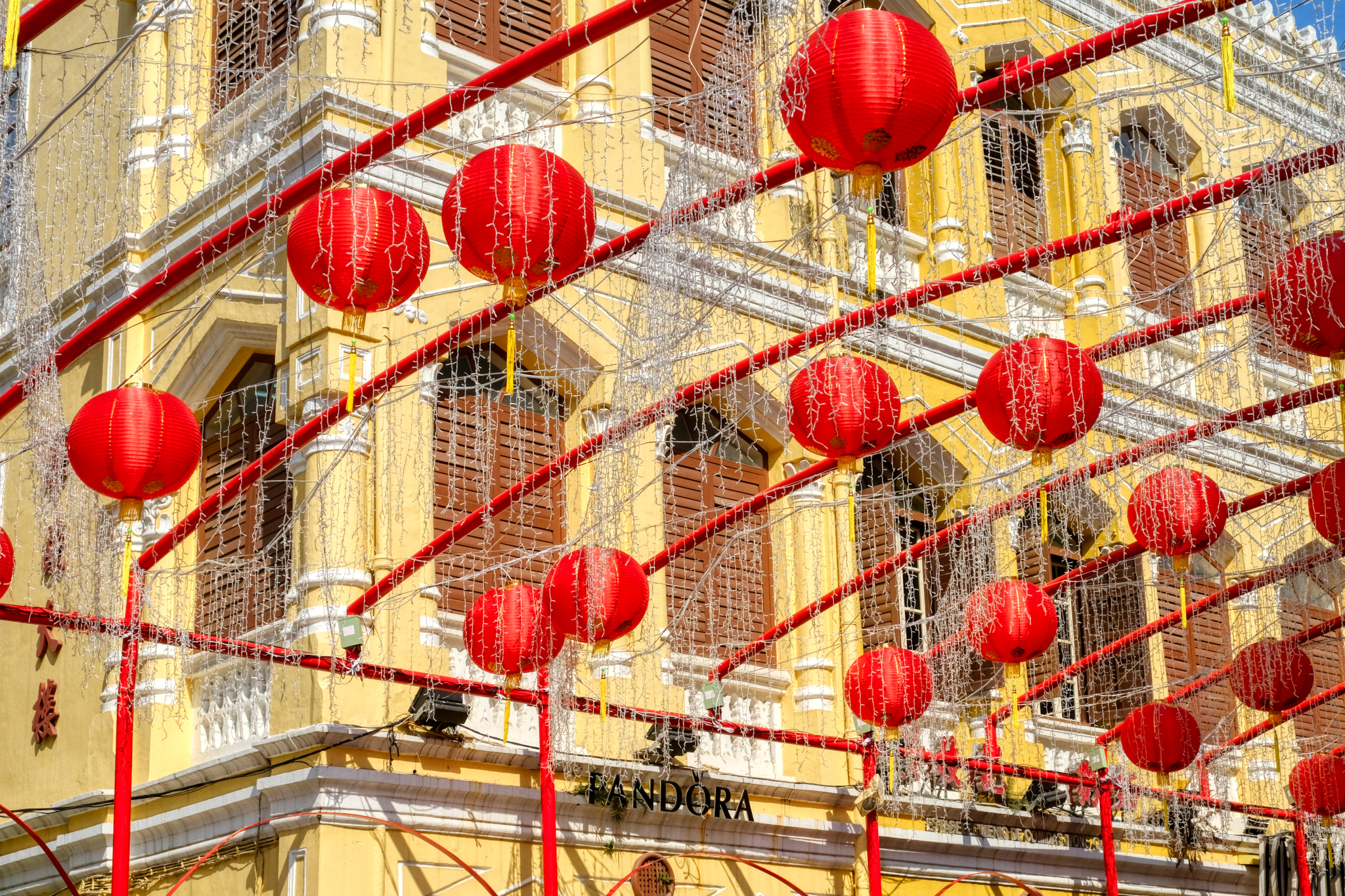 There were crews putting up the elaborate Chinese New Years decorations along the famous walking streets.
There were crews putting up the elaborate Chinese New Years decorations along the famous walking streets.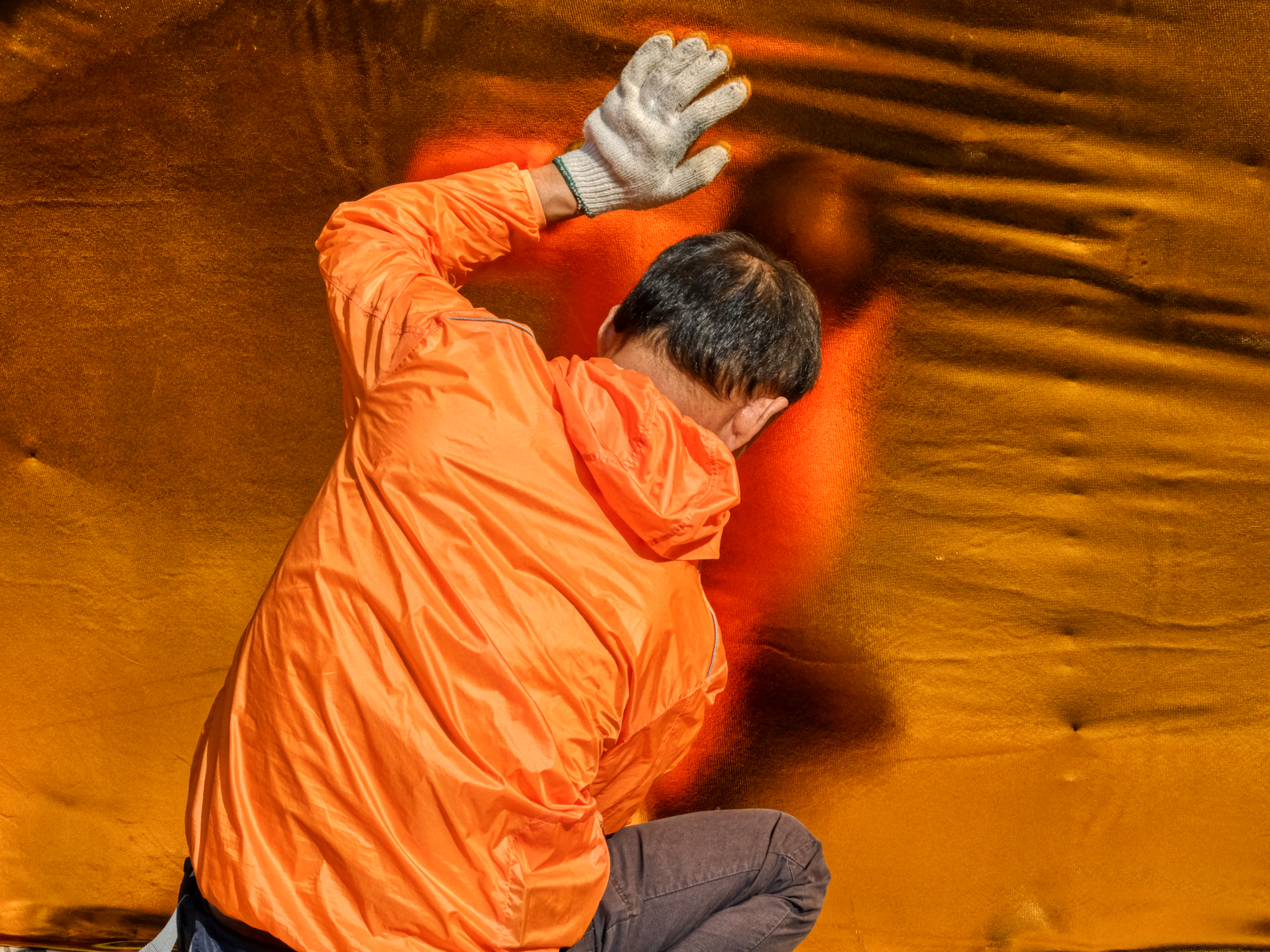 Maçau is a photographers dream come true . . . especially at this time of year. A worker putting up decorative gold bunting.
Maçau is a photographers dream come true . . . especially at this time of year. A worker putting up decorative gold bunting. This was my third time in Maçau. The historic center of Maçau is a UNESCO World Heritage Site and is popular from people from all over the world . . . before the virus, that is.
This was my third time in Maçau. The historic center of Maçau is a UNESCO World Heritage Site and is popular from people from all over the world . . . before the virus, that is. The walking streets were packed with tourists, mostly from mainland China.
The walking streets were packed with tourists, mostly from mainland China. The door of the old Portuguese church.
The door of the old Portuguese church. Yes. A photographer's dream come true.
Yes. A photographer's dream come true. Did I mention there were large crowds from mainland China . . . .
Did I mention there were large crowds from mainland China . . . . The mainland Chinese like to come to Maçau and nearby Hong Kong for shopping. We talked to a shopkeeper who said that for items like cosmetics and medicines, the Chinese preferred shopping here because they did not trust the quality back home . . . and they didn't want their neighbors see them buying expensive things!!!
The mainland Chinese like to come to Maçau and nearby Hong Kong for shopping. We talked to a shopkeeper who said that for items like cosmetics and medicines, the Chinese preferred shopping here because they did not trust the quality back home . . . and they didn't want their neighbors see them buying expensive things!!!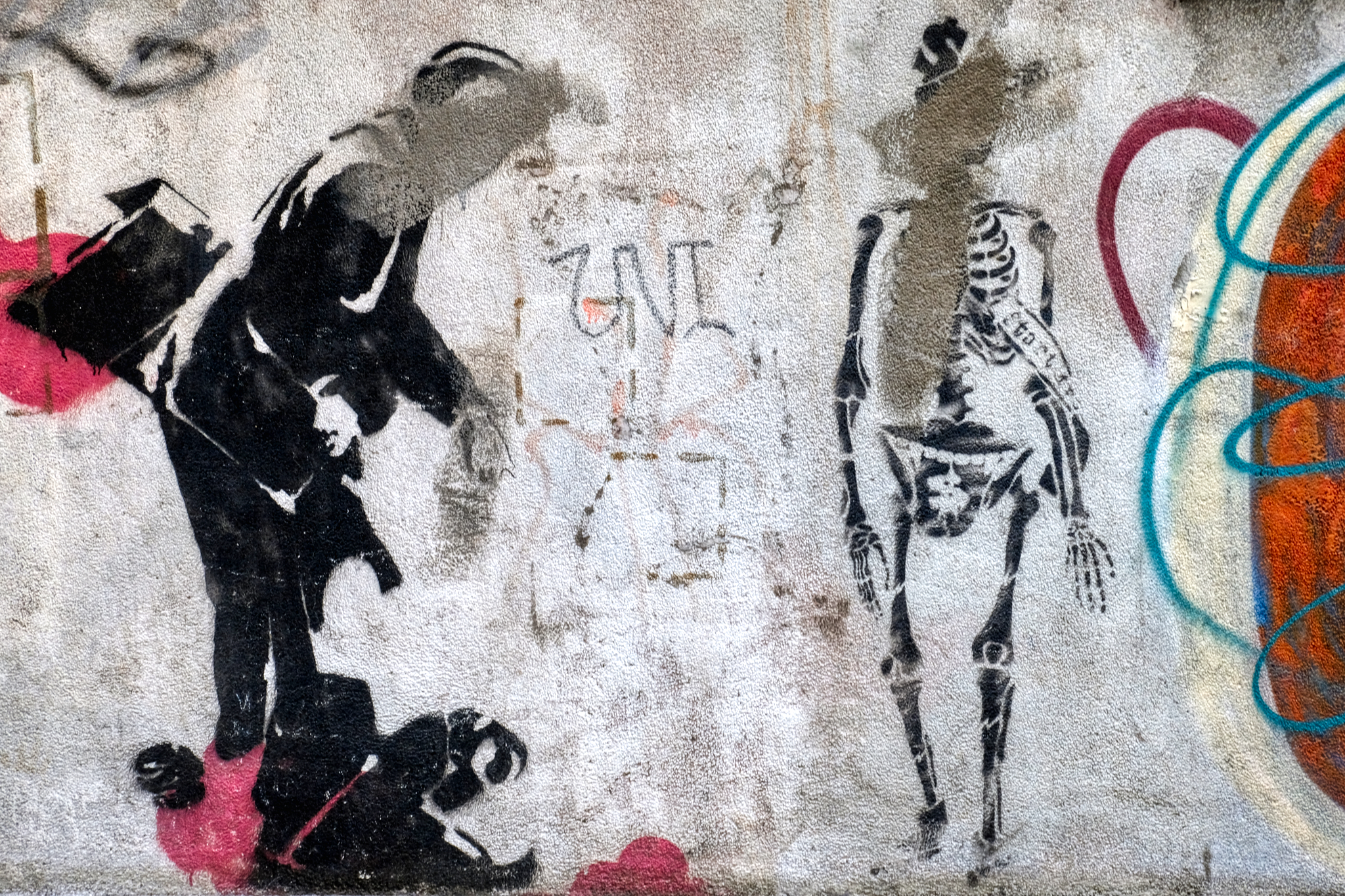 Some VERY interesting graffiti in the alleys of Maçau!
Some VERY interesting graffiti in the alleys of Maçau!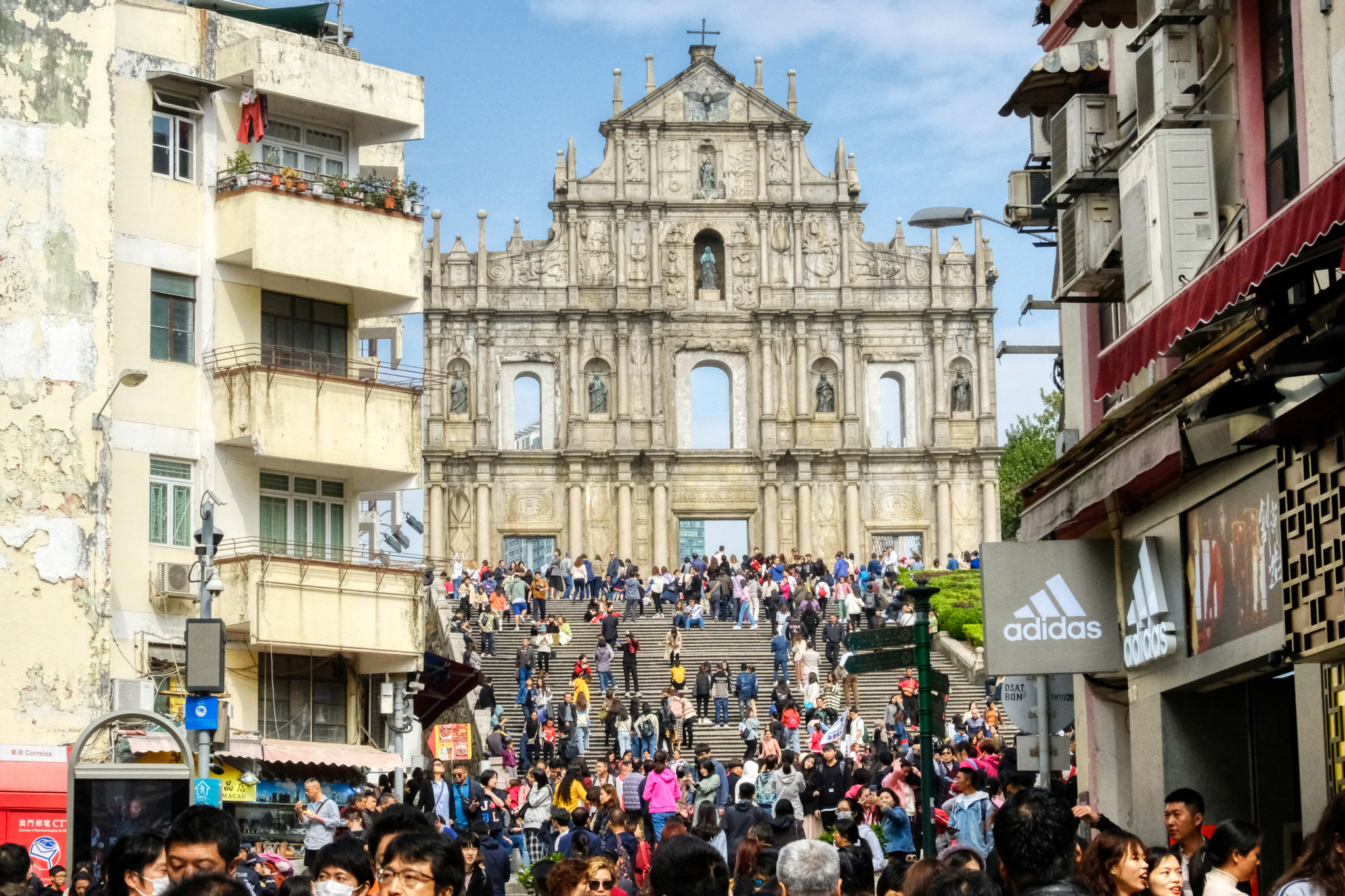 Most tourists spend a day in the walking streets and narrow streets by walking all the way up to the ruins of St. Paul's Cathedral.
Most tourists spend a day in the walking streets and narrow streets by walking all the way up to the ruins of St. Paul's Cathedral.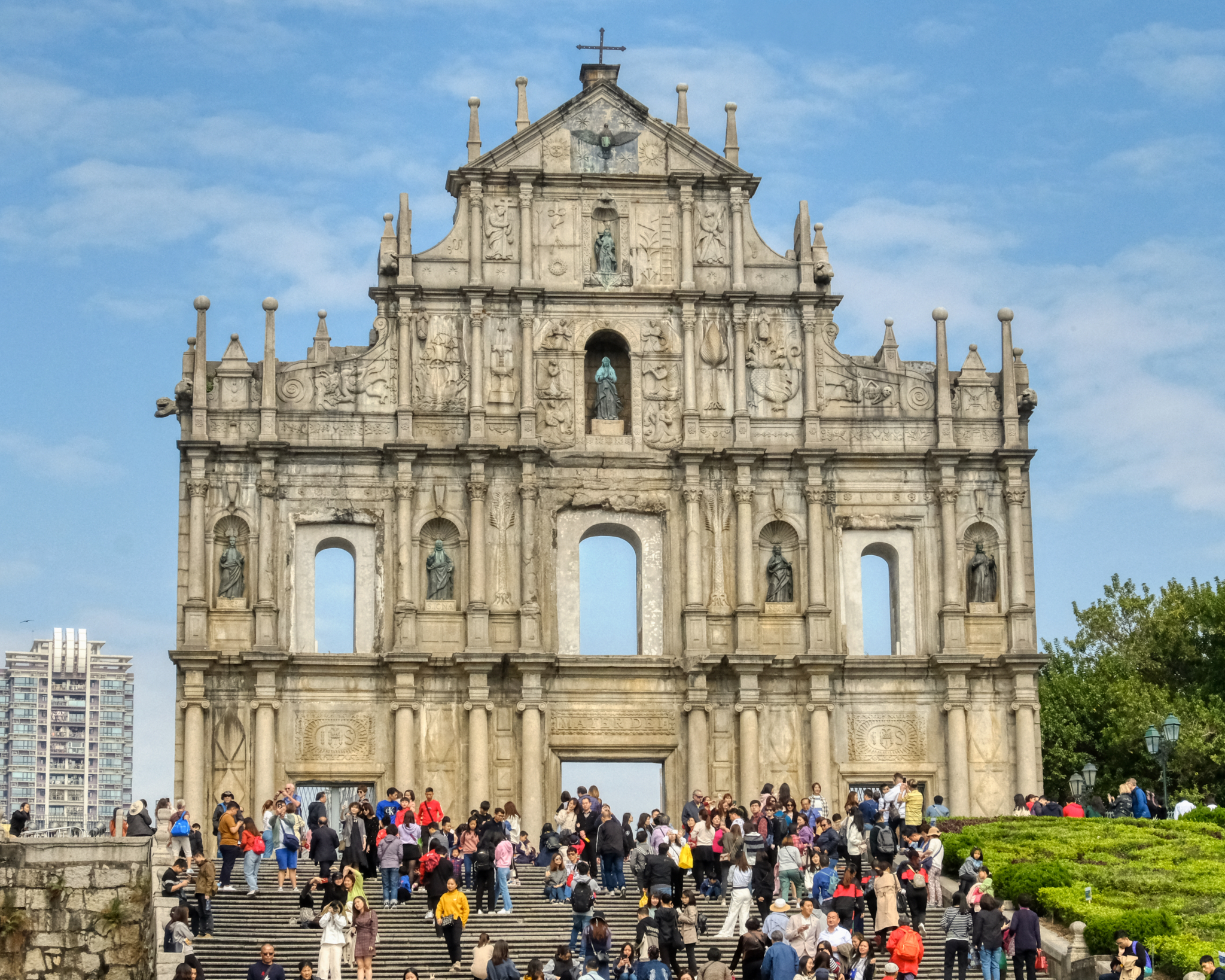 The old St. Paul's ruins are lovely. Built in 1602 and burned down during a typhoon in 1835.
The old St. Paul's ruins are lovely. Built in 1602 and burned down during a typhoon in 1835. One of my favorite subjects for photography are old wall textures. Maçhau plenty!
One of my favorite subjects for photography are old wall textures. Maçhau plenty! Understandably a major tourist destination. Beautiful.
Understandably a major tourist destination. Beautiful.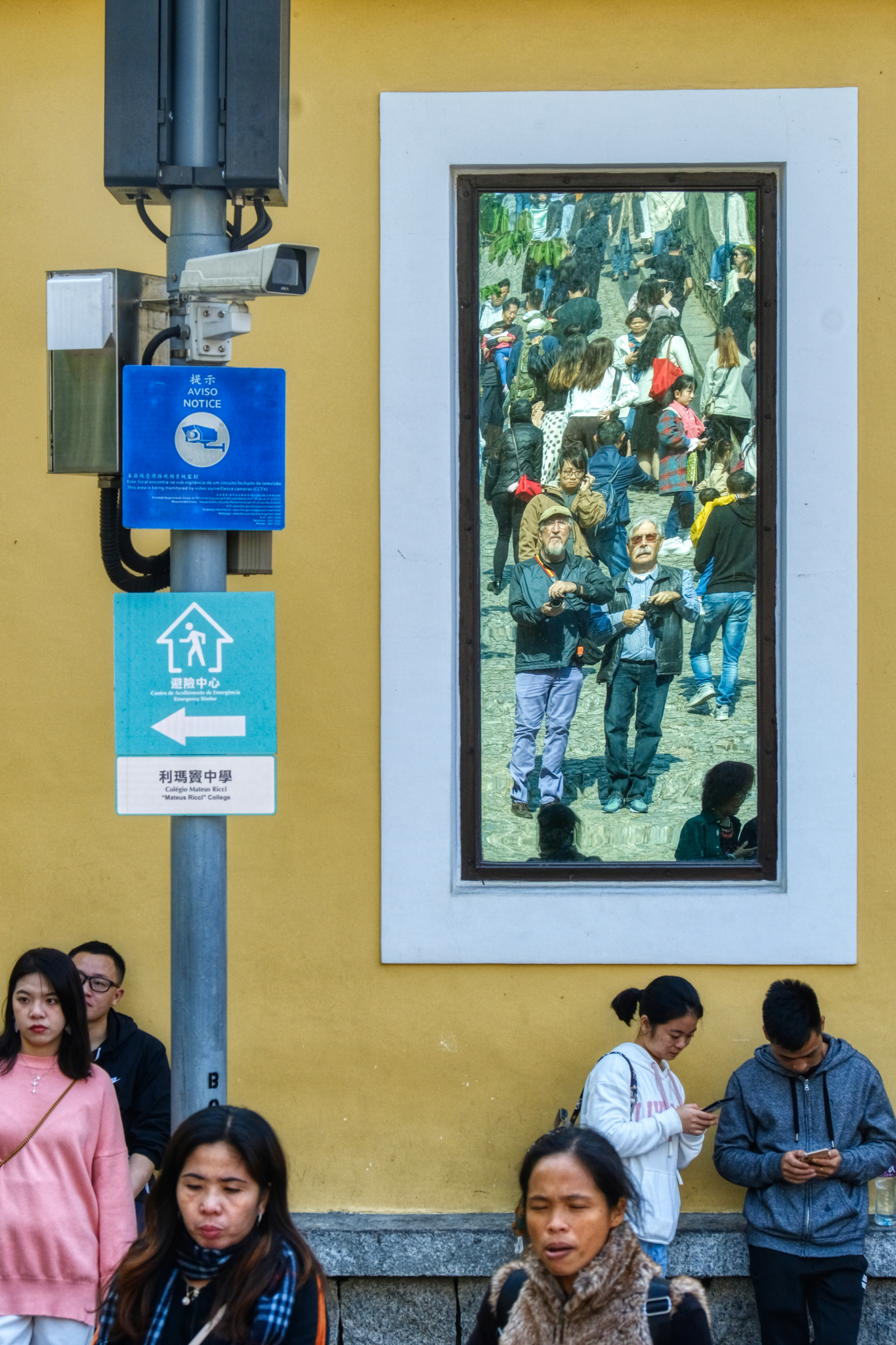 There are a lot of CCTV around Maçau . . . cameras everywhere. We spotted these two western tourists looking lost . . .
There are a lot of CCTV around Maçau . . . cameras everywhere. We spotted these two western tourists looking lost . . .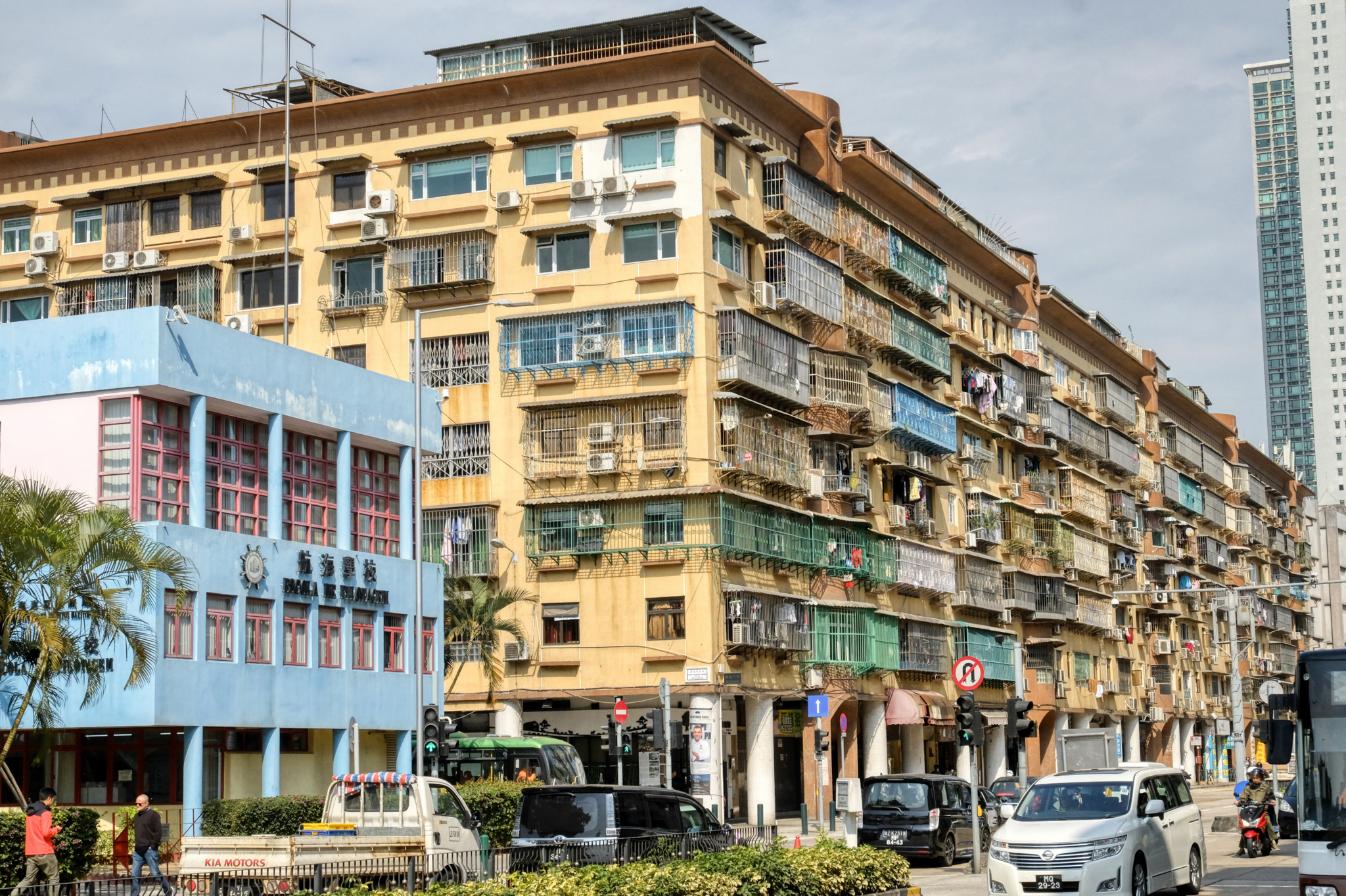 We took taxis around town to many sites of interest. This is how most working people in Maçau live.
We took taxis around town to many sites of interest. This is how most working people in Maçau live. One stop was at the old Portuguese Governors Office. Portugal acquired a leas on Maçau in 1557 and ceded it back to China in 1999.
One stop was at the old Portuguese Governors Office. Portugal acquired a leas on Maçau in 1557 and ceded it back to China in 1999. Next to the Portuguese Governors Office was a lovely old hillside Chinese Temple, the oldest in Maçau we were told.
Next to the Portuguese Governors Office was a lovely old hillside Chinese Temple, the oldest in Maçau we were told.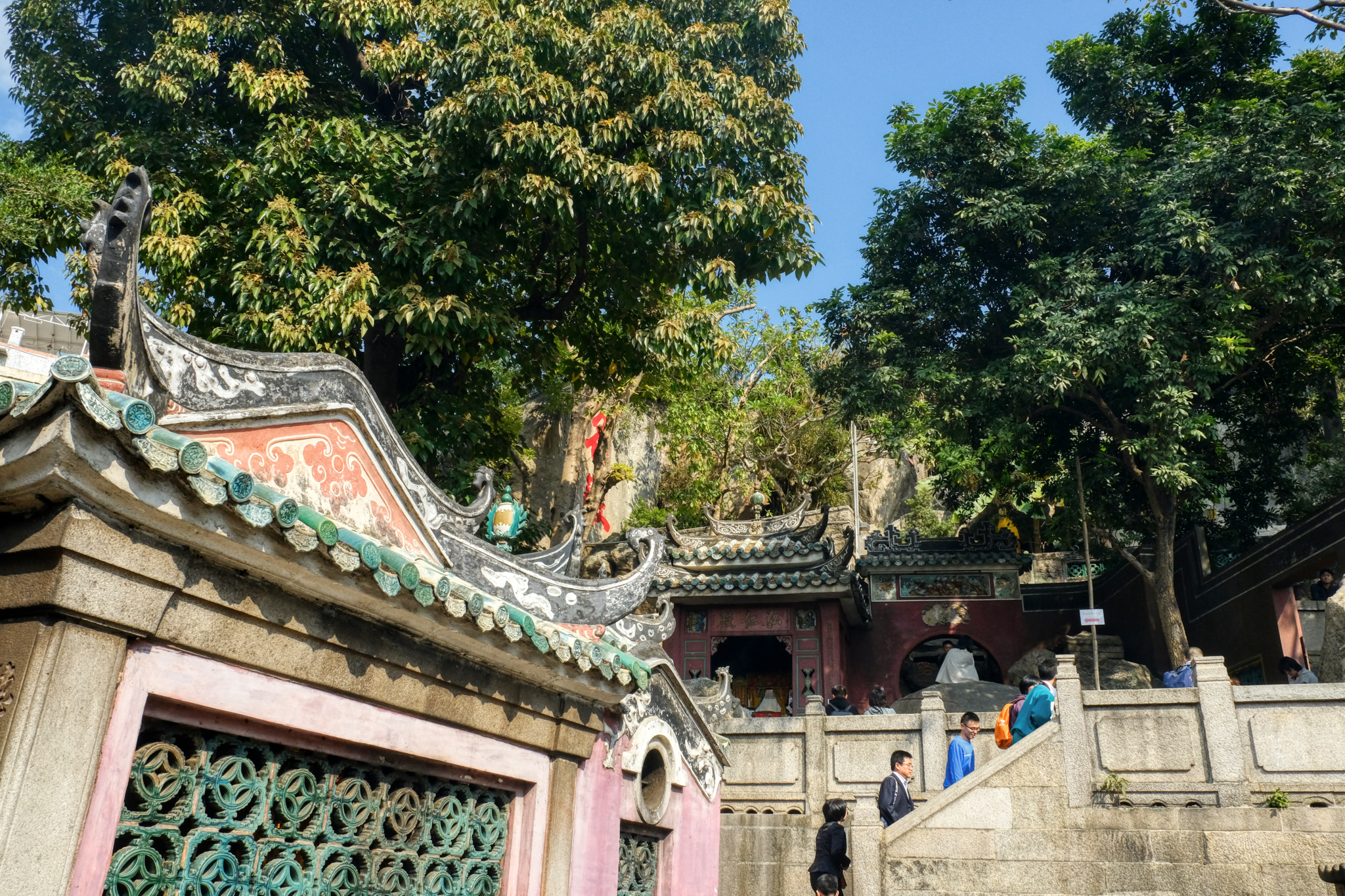 We walked to the top of the temple compound along narrow and steep steps.
We walked to the top of the temple compound along narrow and steep steps.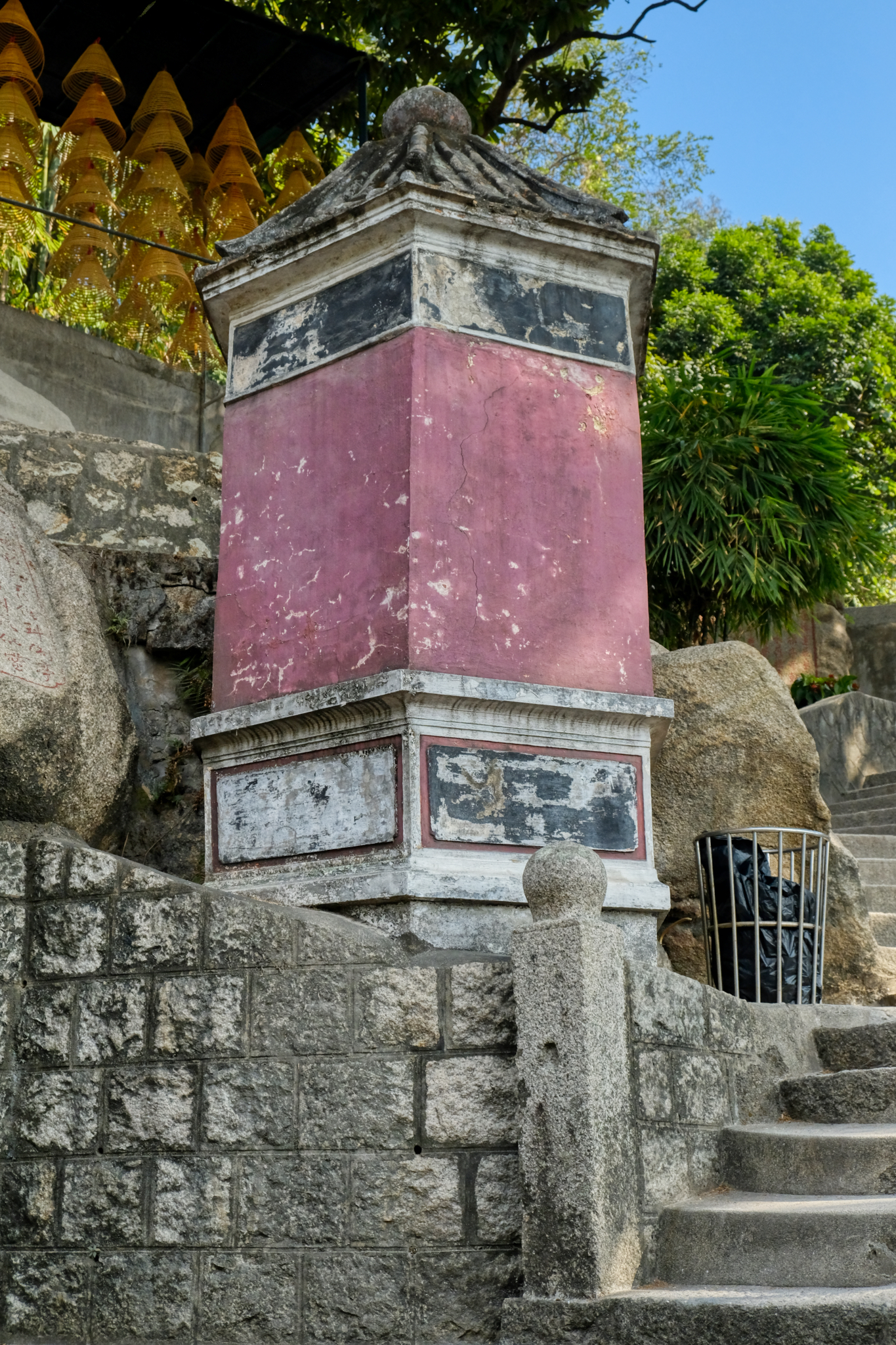 Something interesting around every corner . . .
Something interesting around every corner . . .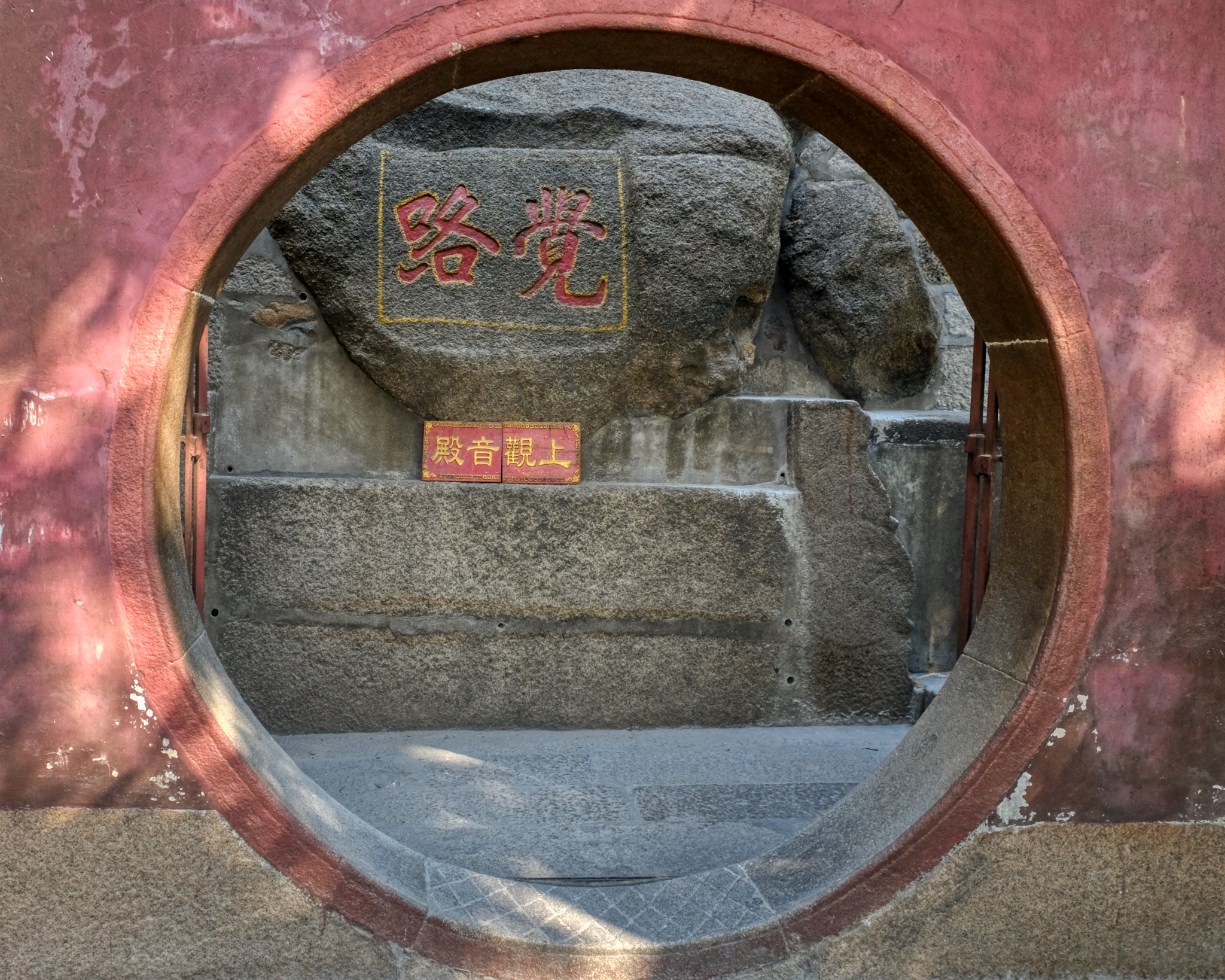 The way up led went through this lovely circular passageway.
The way up led went through this lovely circular passageway.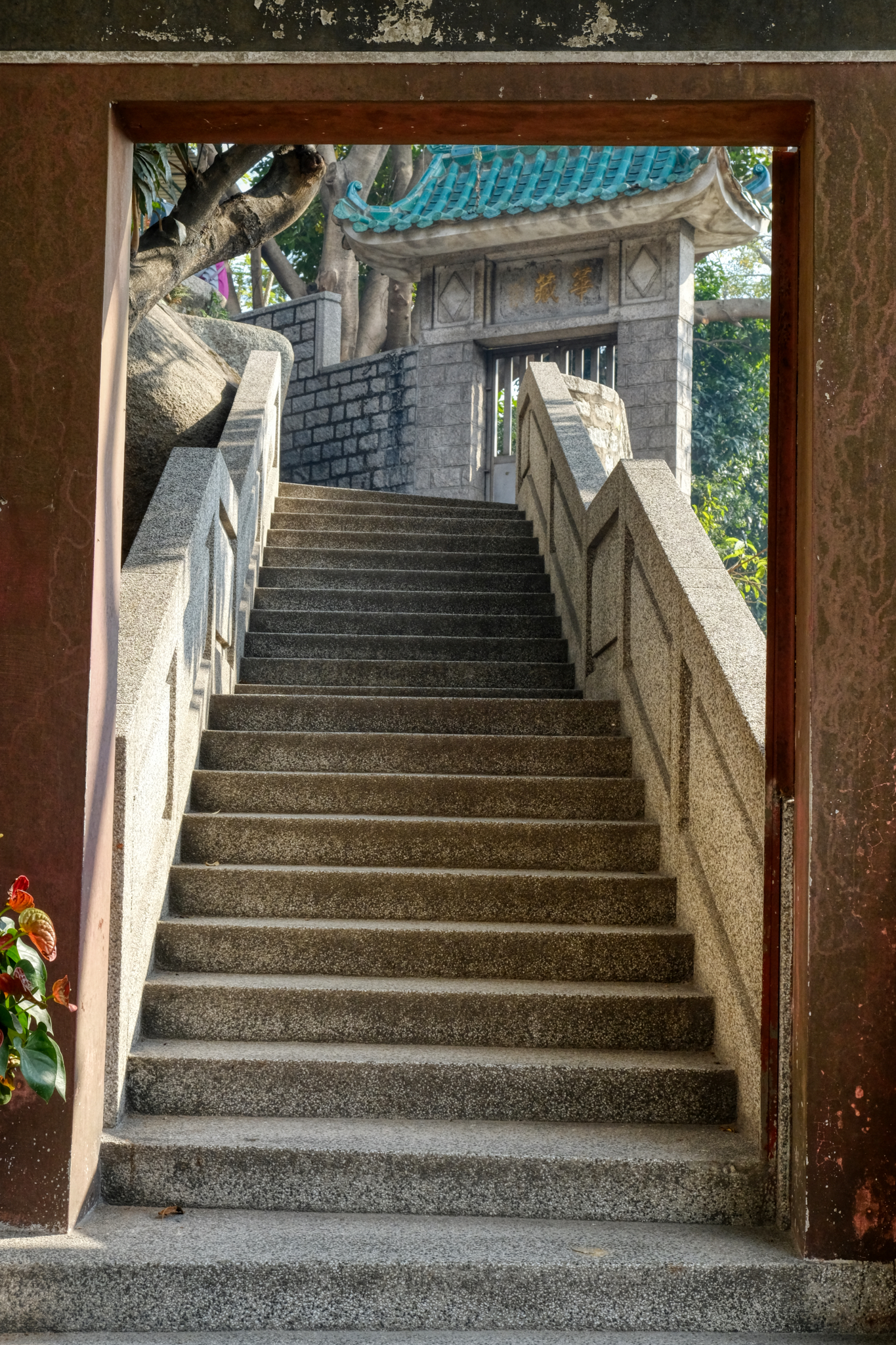 Up and up we went!
Up and up we went! Small shrines were found all along the way up.
Small shrines were found all along the way up.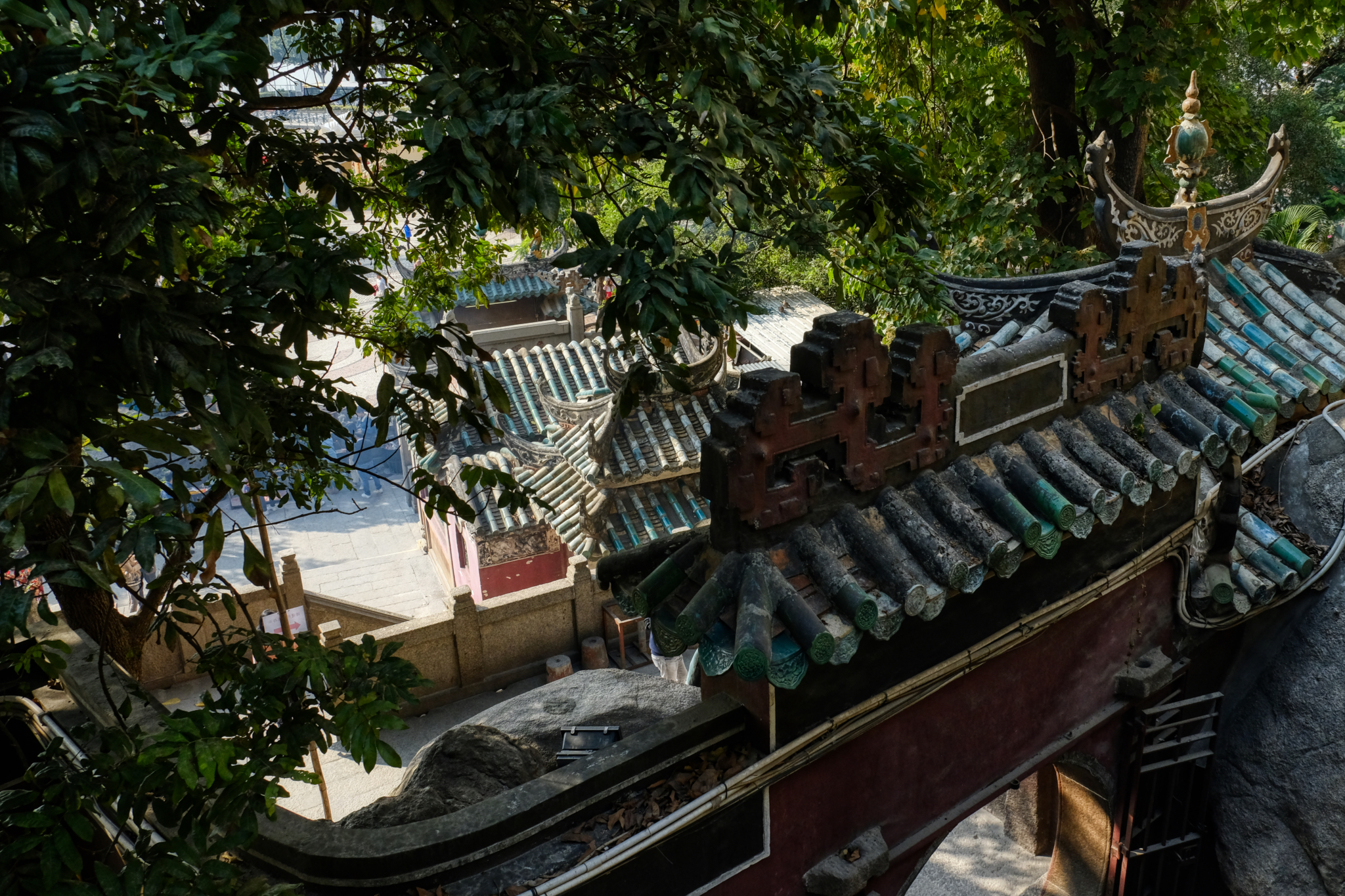 The views back down over the temple roofs.
The views back down over the temple roofs.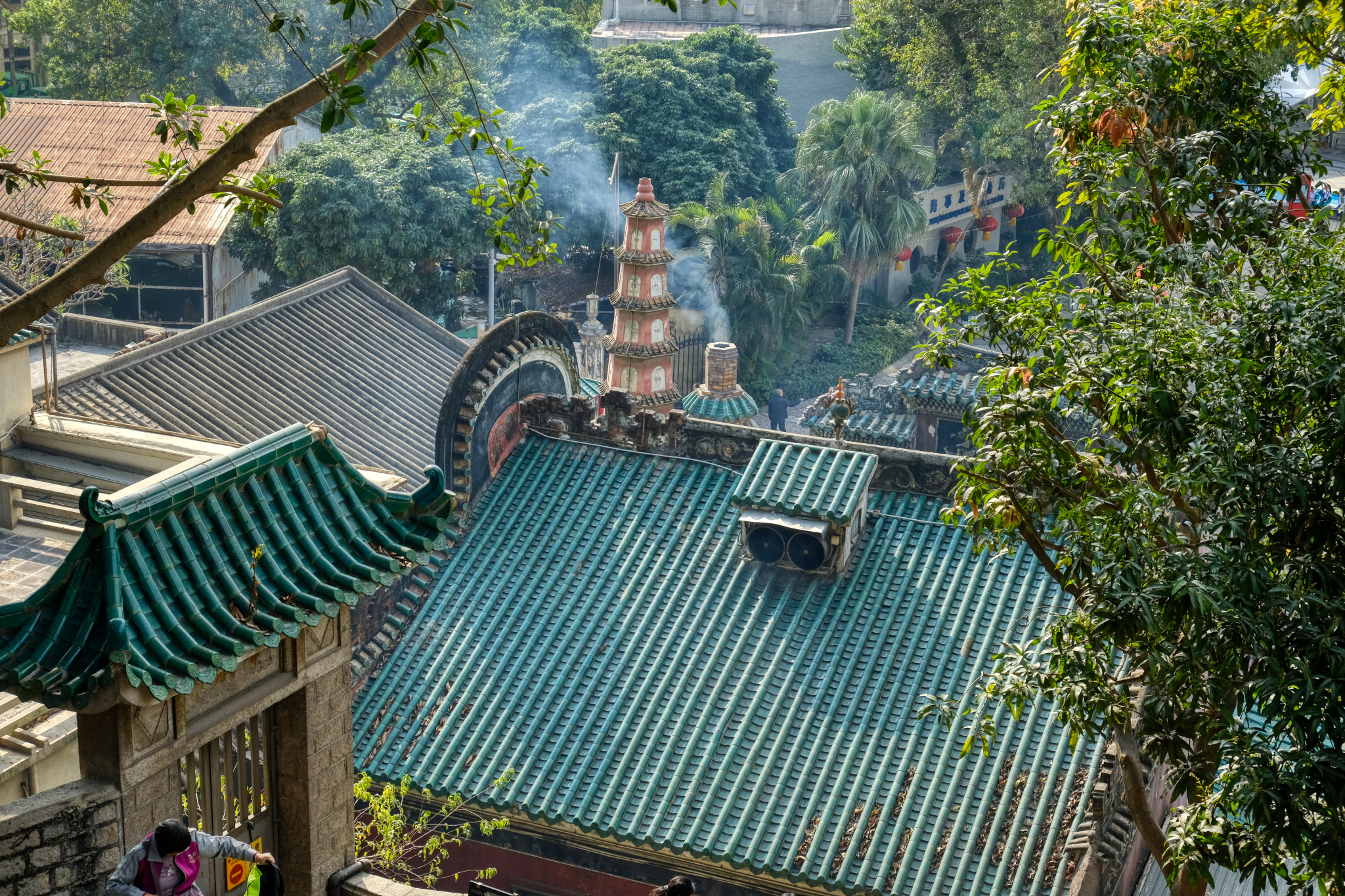 The temple complex from above.
The temple complex from above.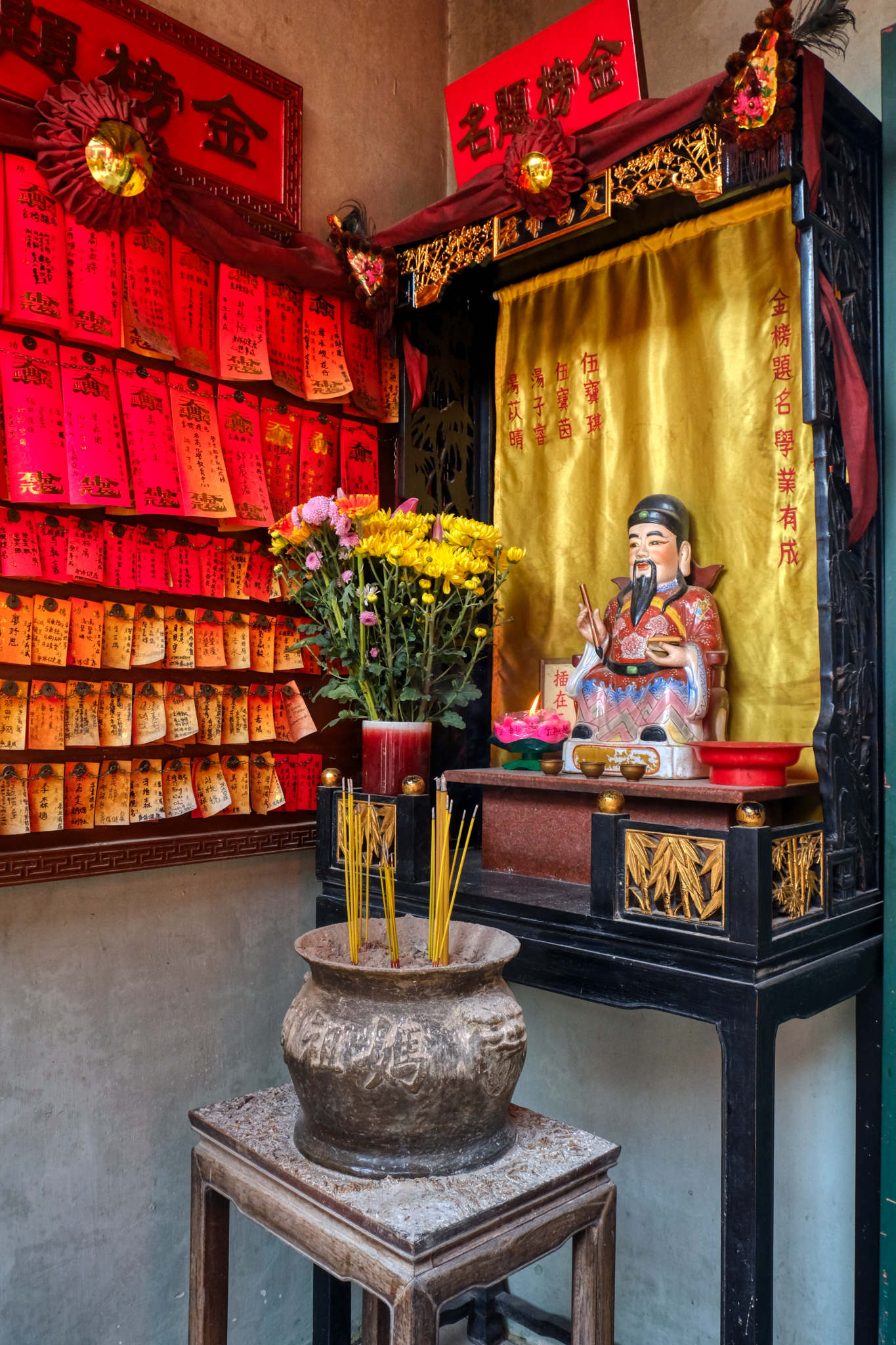 Small buildings along the way held fascinating altars.
Small buildings along the way held fascinating altars.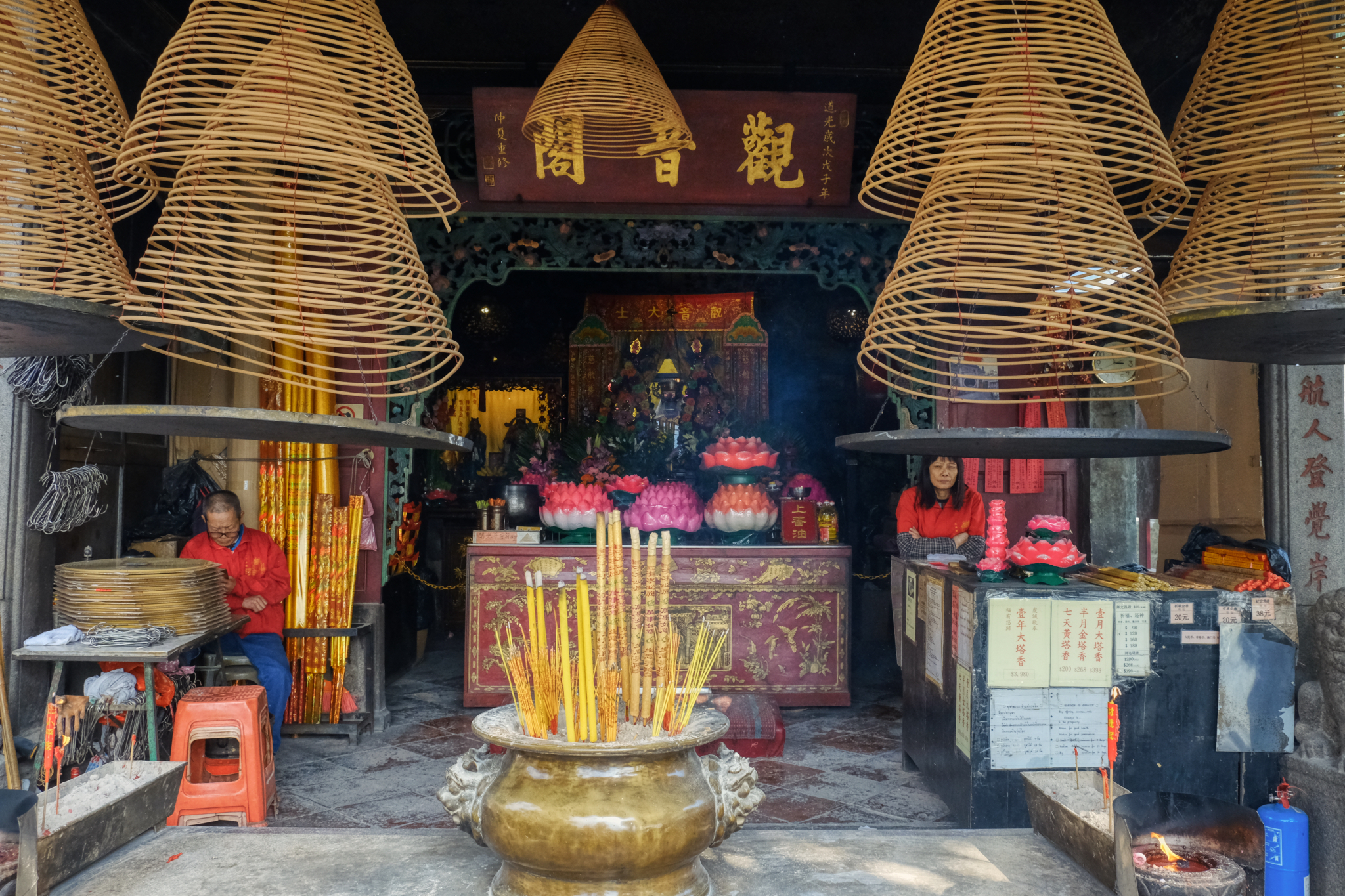 Among the most interesting altars I have ever seen . . .
Among the most interesting altars I have ever seen . . .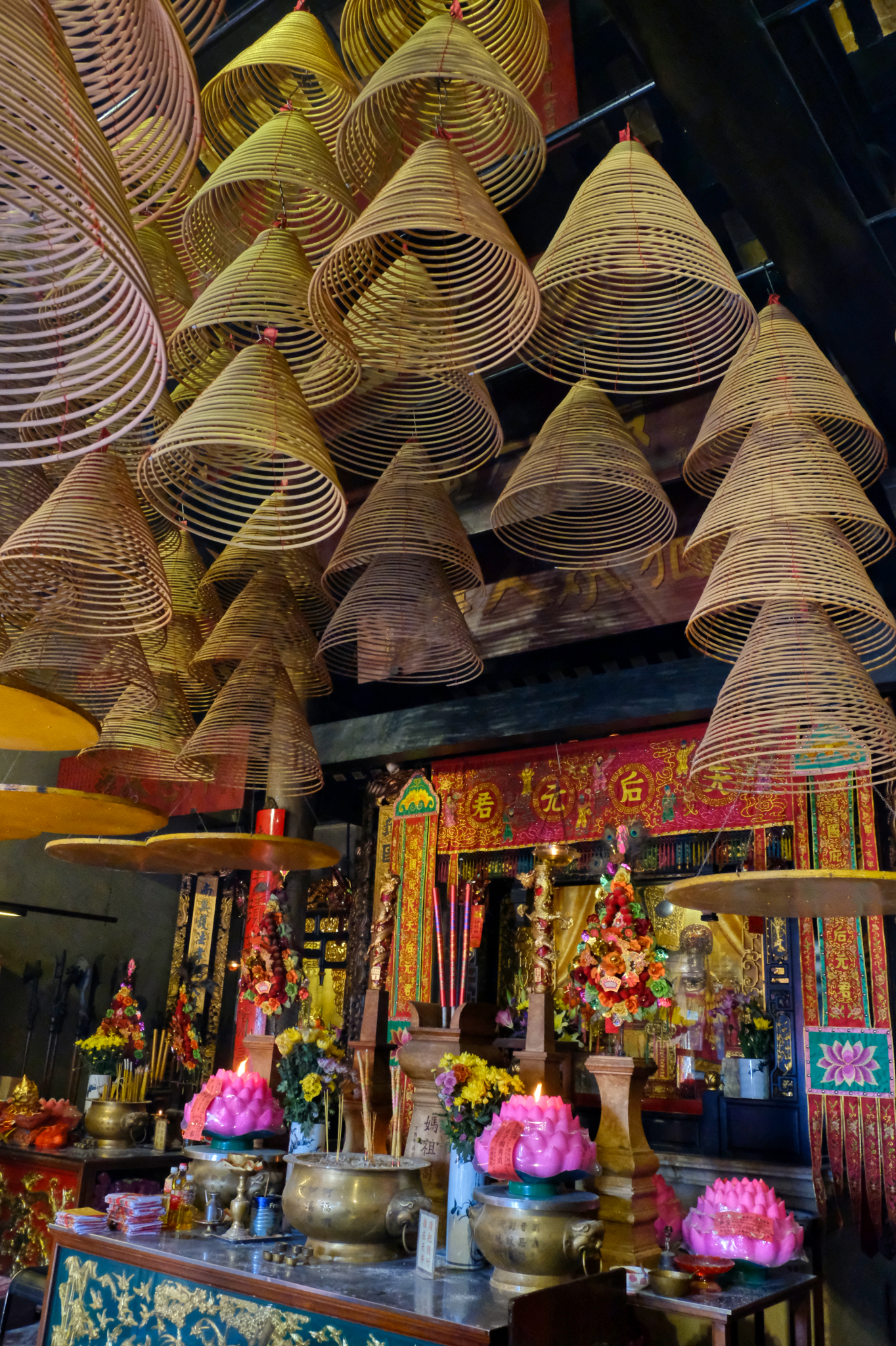 Large conical incense hanging from the rafters.
Large conical incense hanging from the rafters.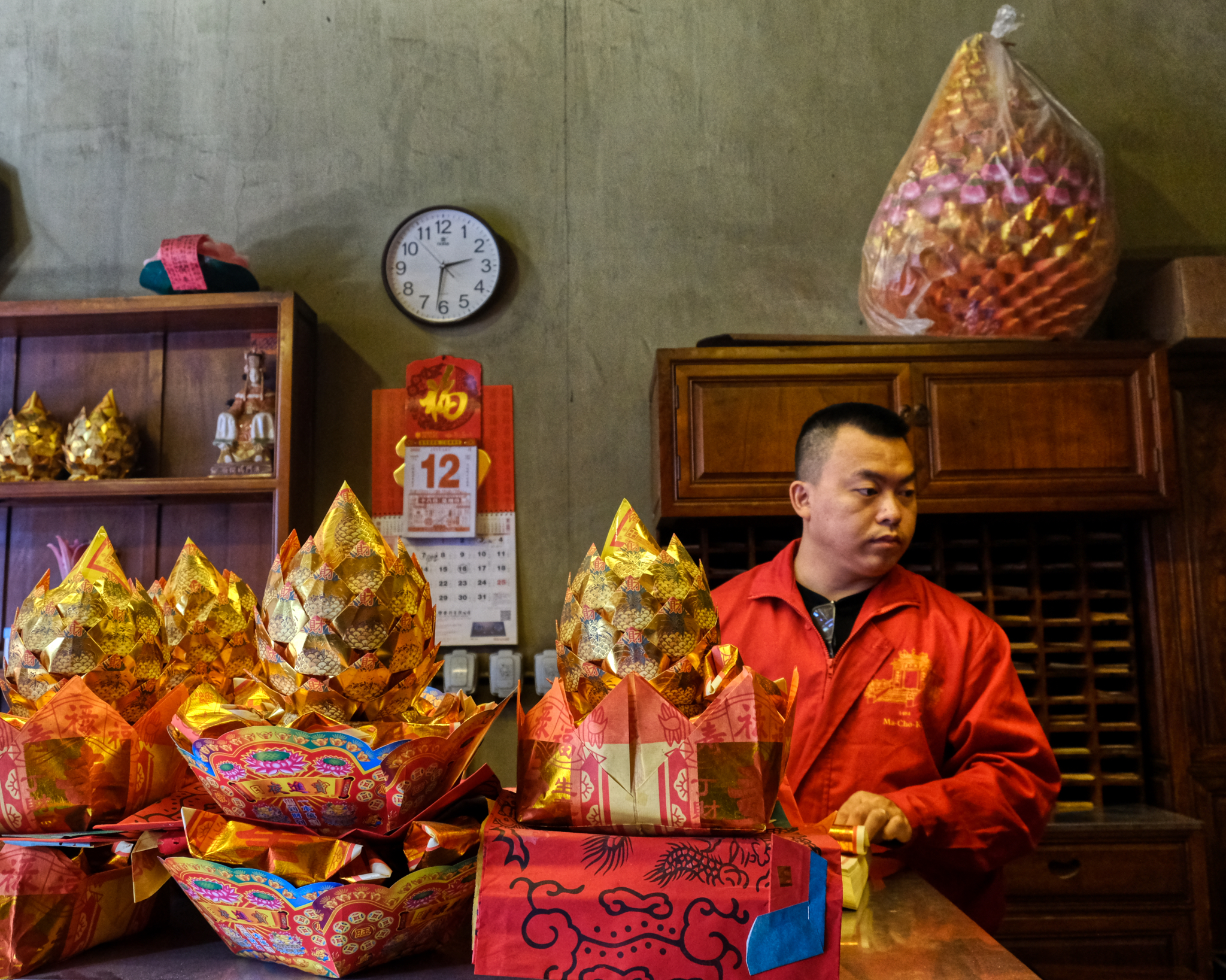 Each altar has their own tender.
Each altar has their own tender.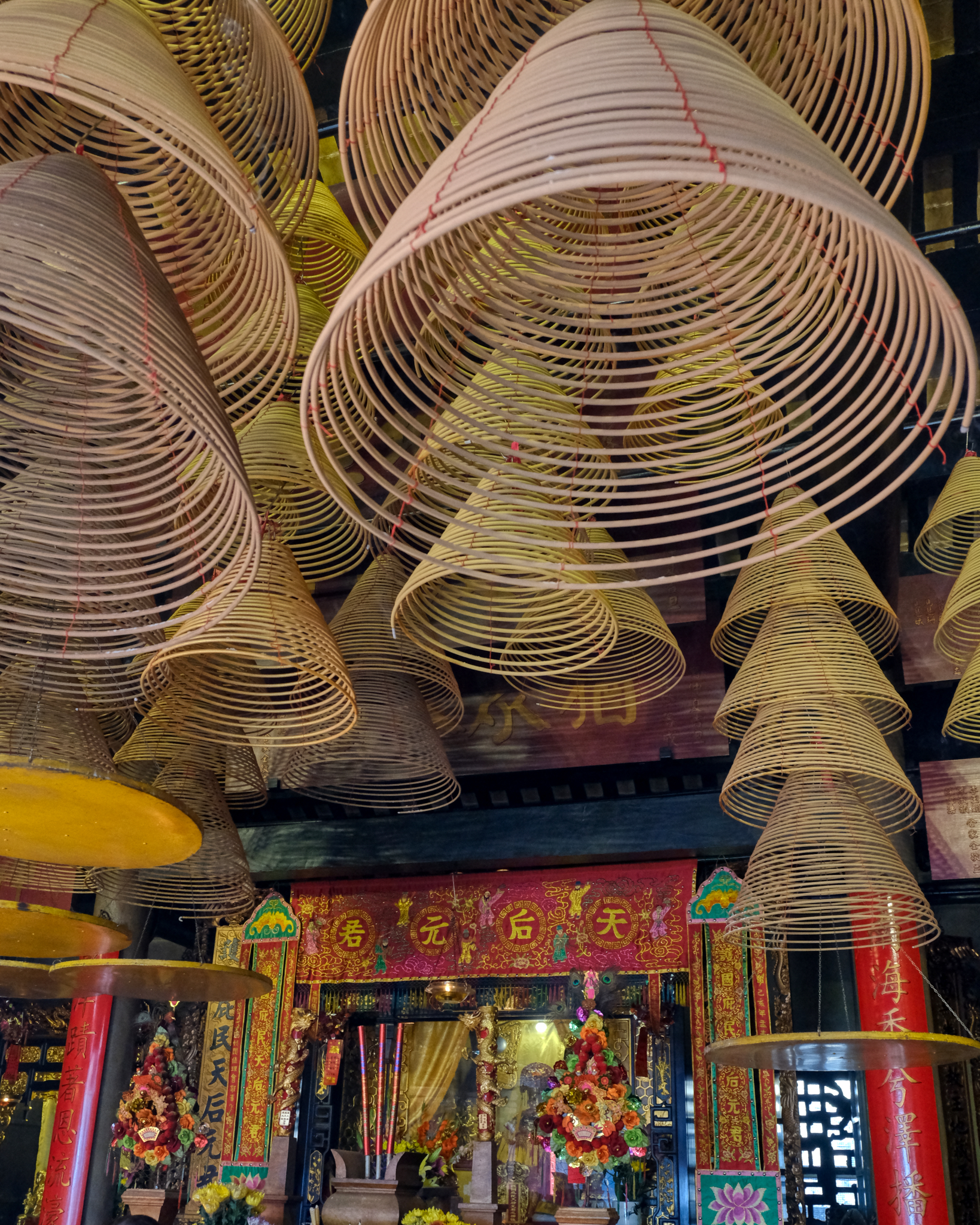 The coils made for some amazing patterns.
The coils made for some amazing patterns. The votive incense cones were really interesting.
The votive incense cones were really interesting.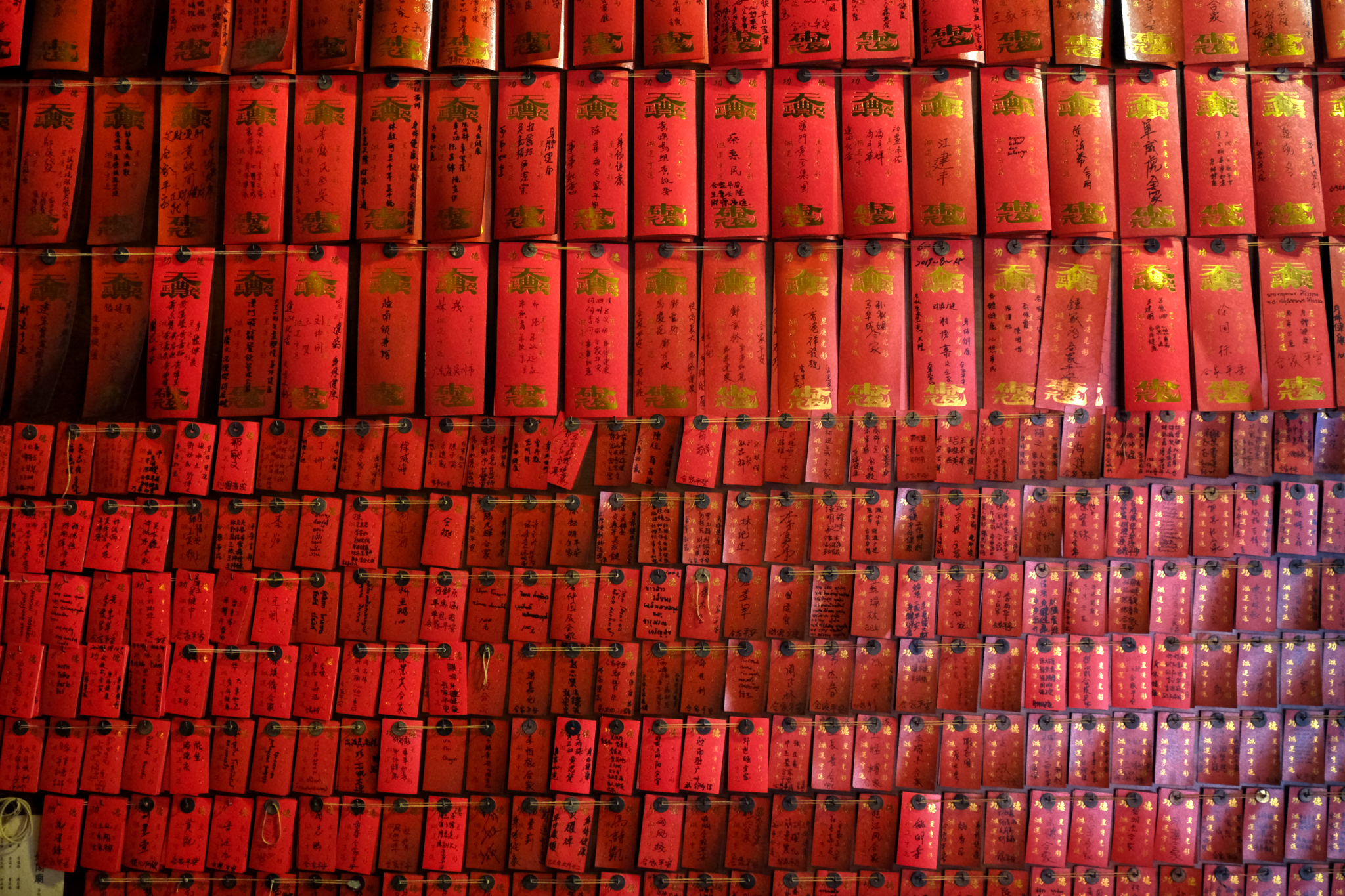 Fortune cards . . .
Fortune cards . . . Another of the many temple shrines at the hillside temple.
Another of the many temple shrines at the hillside temple. A small and seemingly ancient altar.
A small and seemingly ancient altar.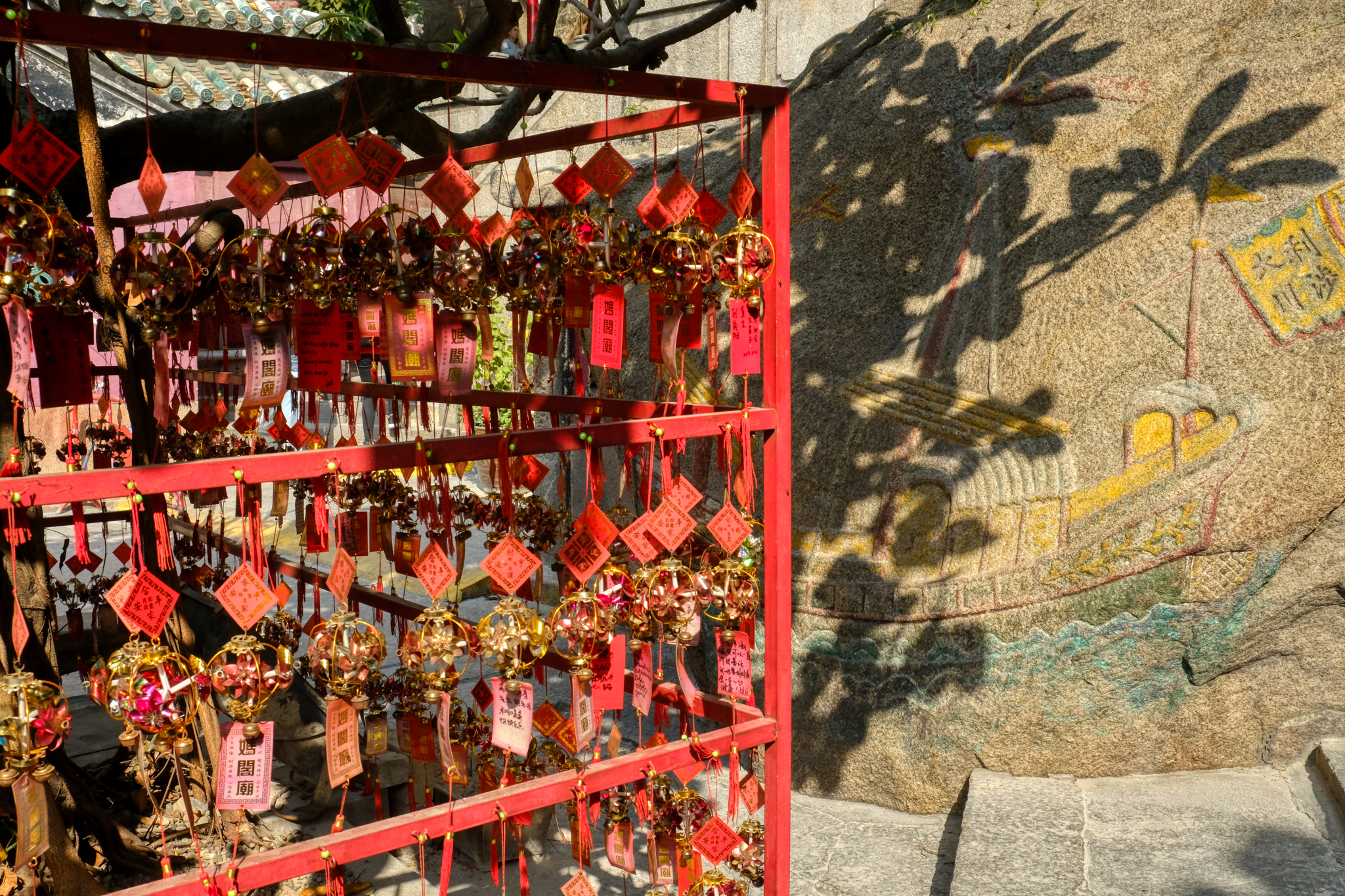 Wishes set into the wind . . .
Wishes set into the wind . . .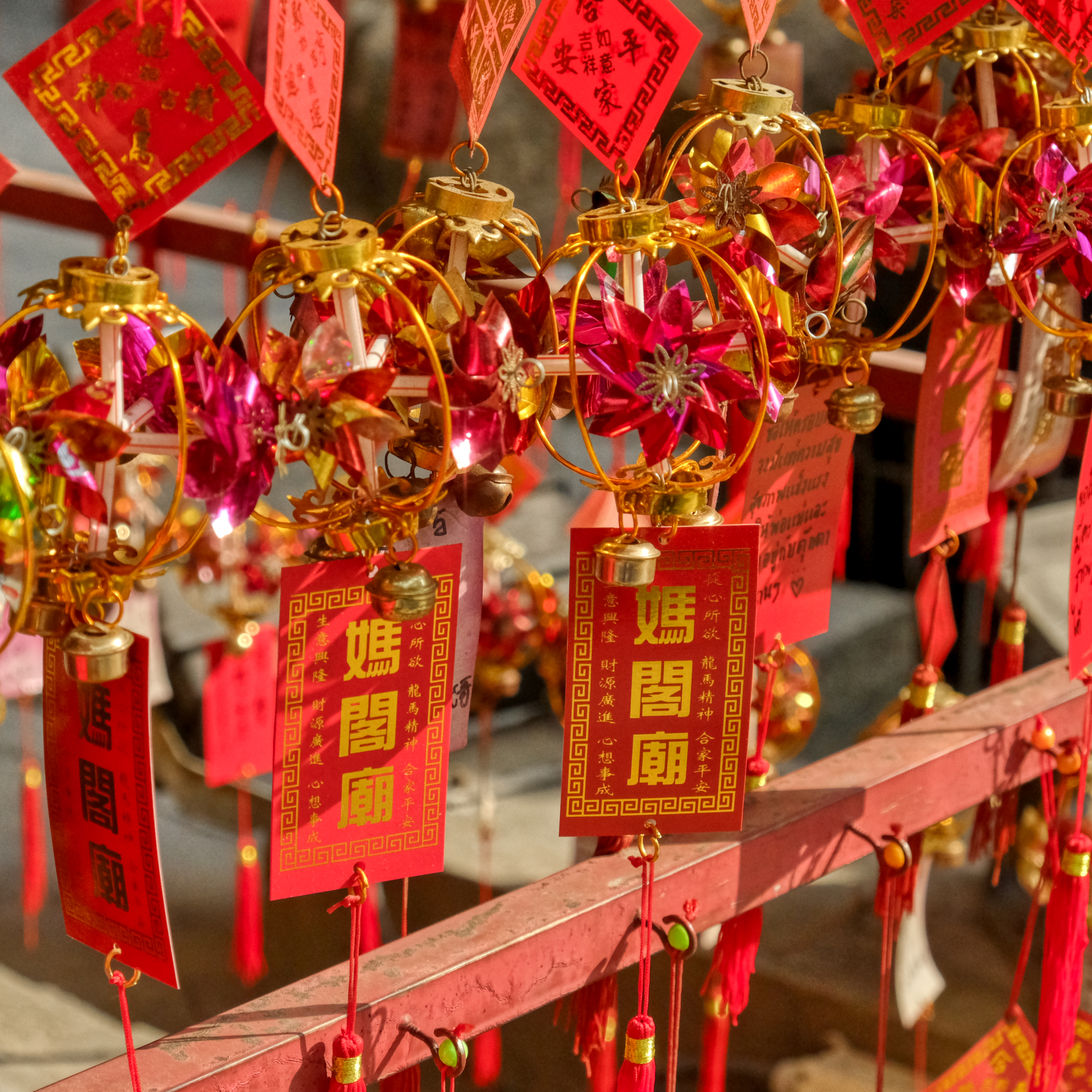 These were so sweet . . . casting your wishes to the wind.
These were so sweet . . . casting your wishes to the wind.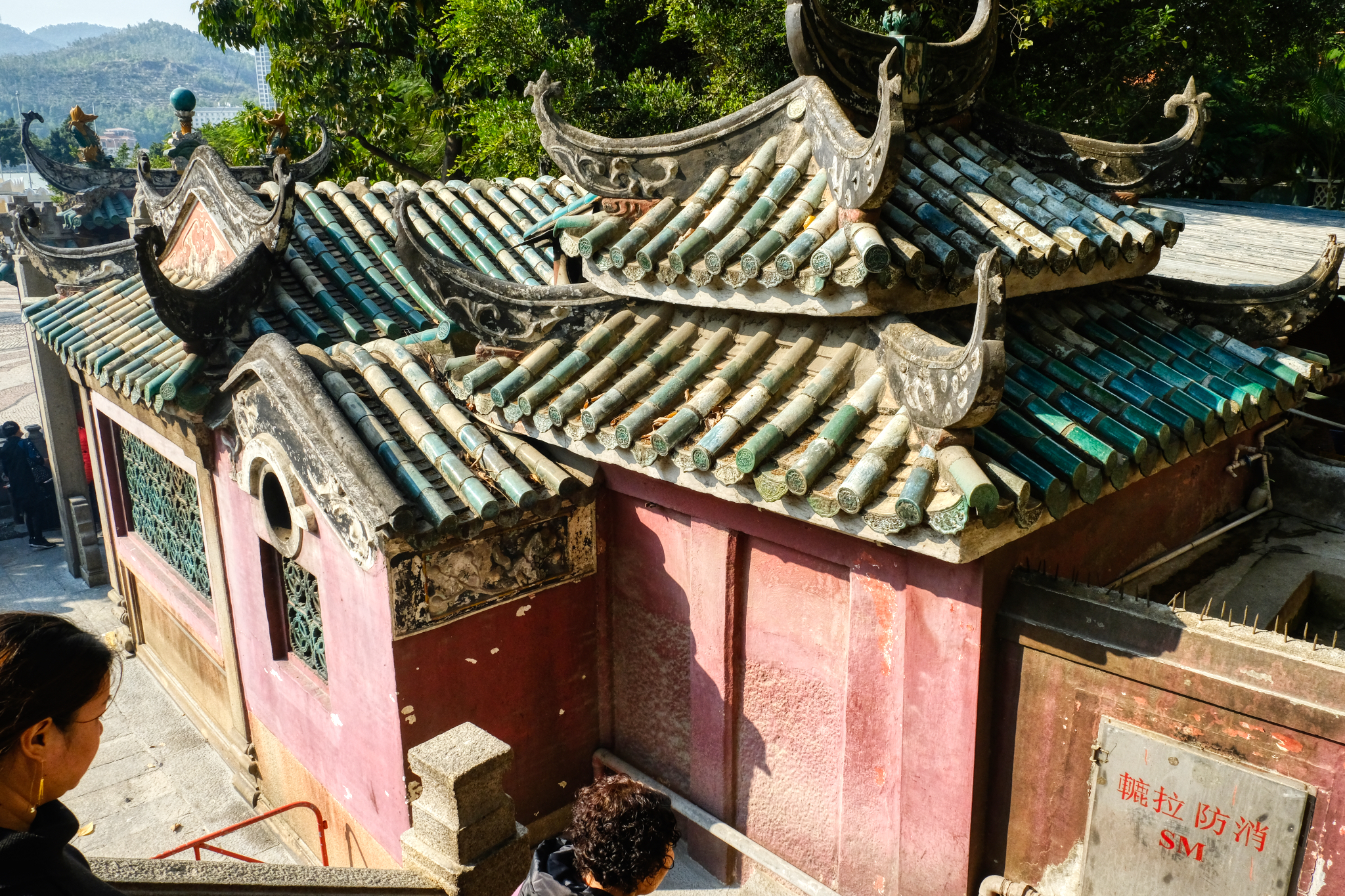 The walk back down was also beautiful.
The walk back down was also beautiful. The view down through the incense coils.
The view down through the incense coils.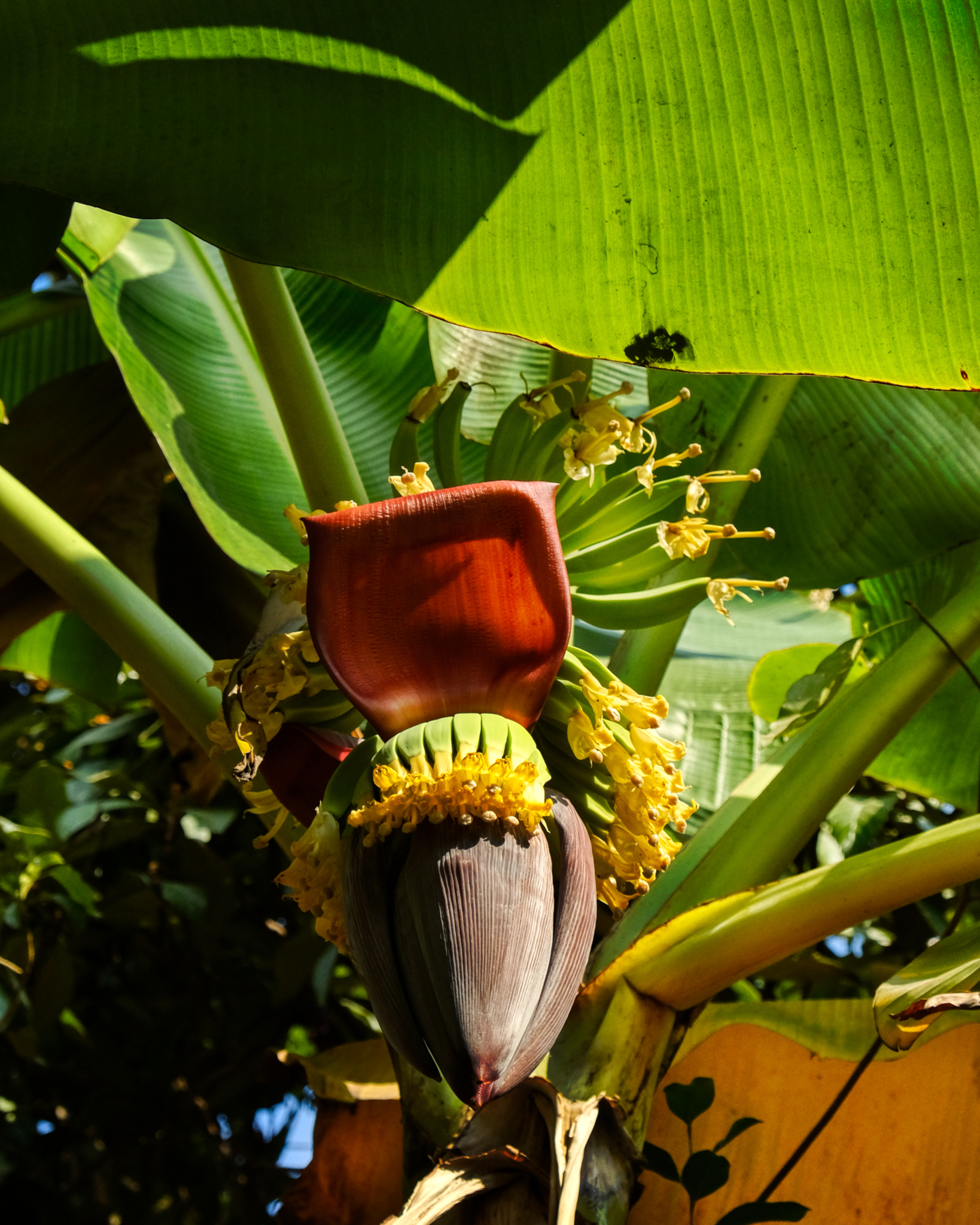 A Maçau banana flower.
A Maçau banana flower.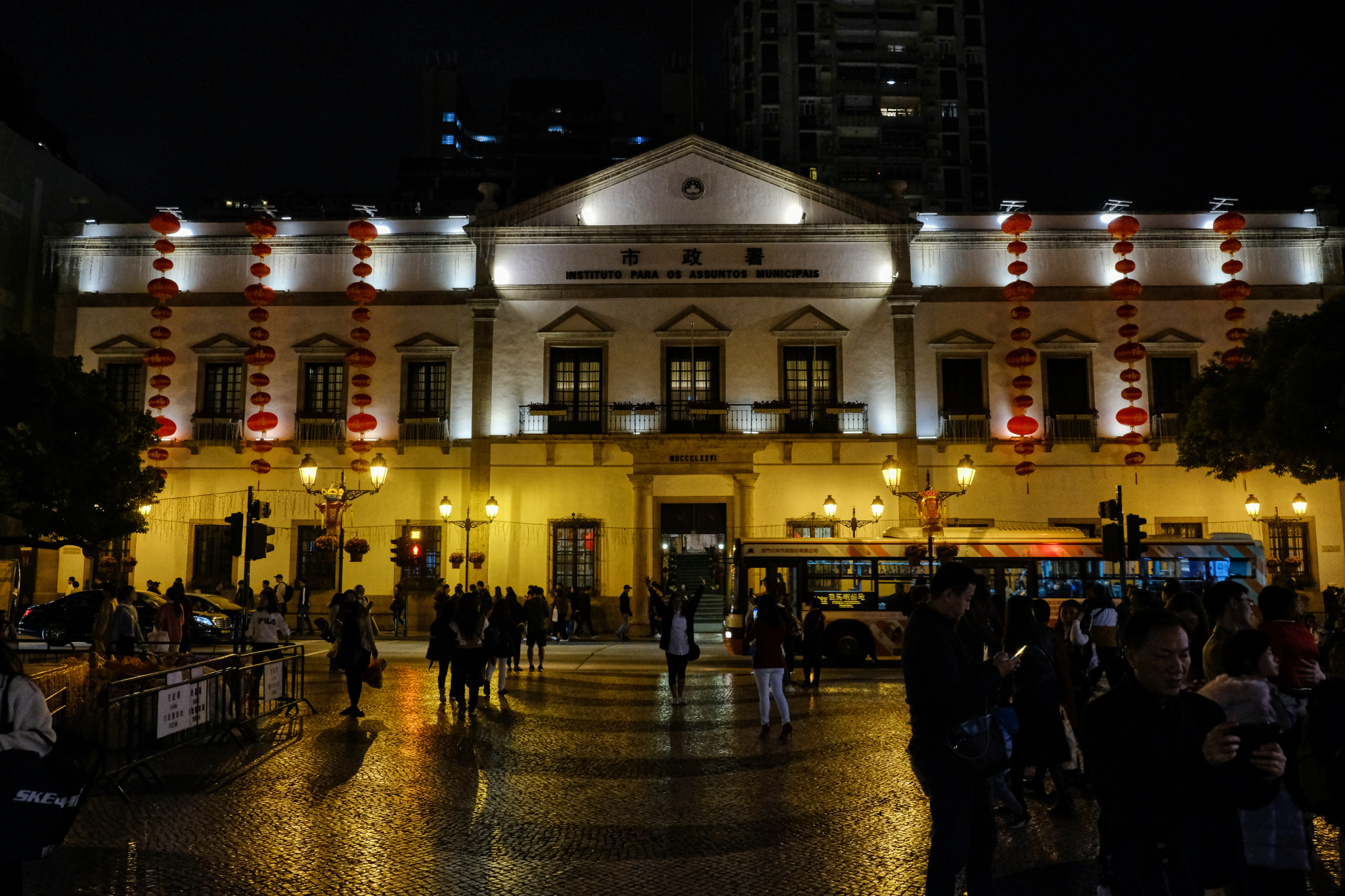 Maçau Municipal Building.
Maçau Municipal Building. The historic town center at night was really beautiful.
The historic town center at night was really beautiful. The Chinese New Years decorations were mostly installed, but it was too early in the season to see them all lit up. Drat.
The Chinese New Years decorations were mostly installed, but it was too early in the season to see them all lit up. Drat.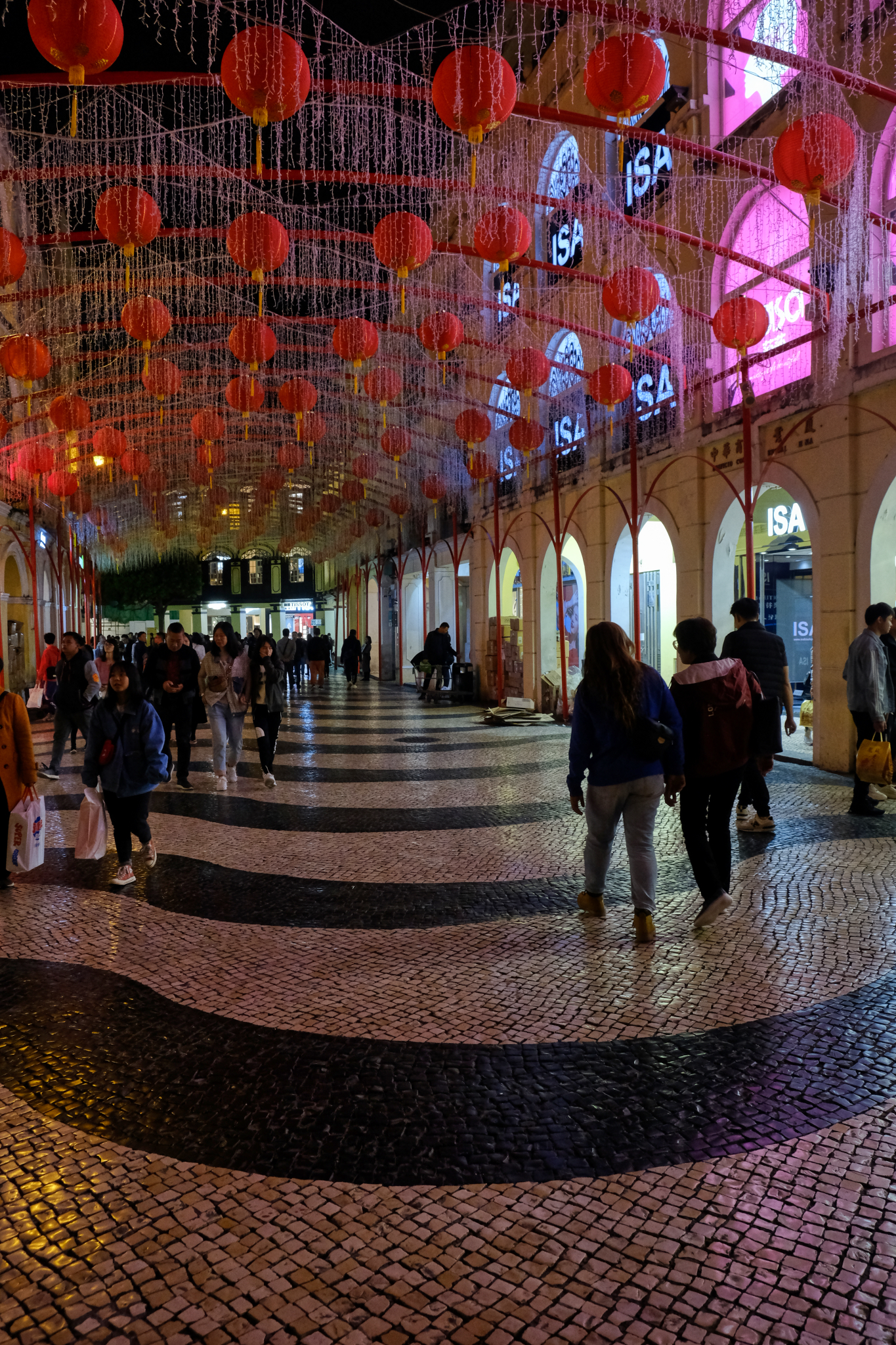 The famous ripple pattern tiled streets with lights above.
The famous ripple pattern tiled streets with lights above.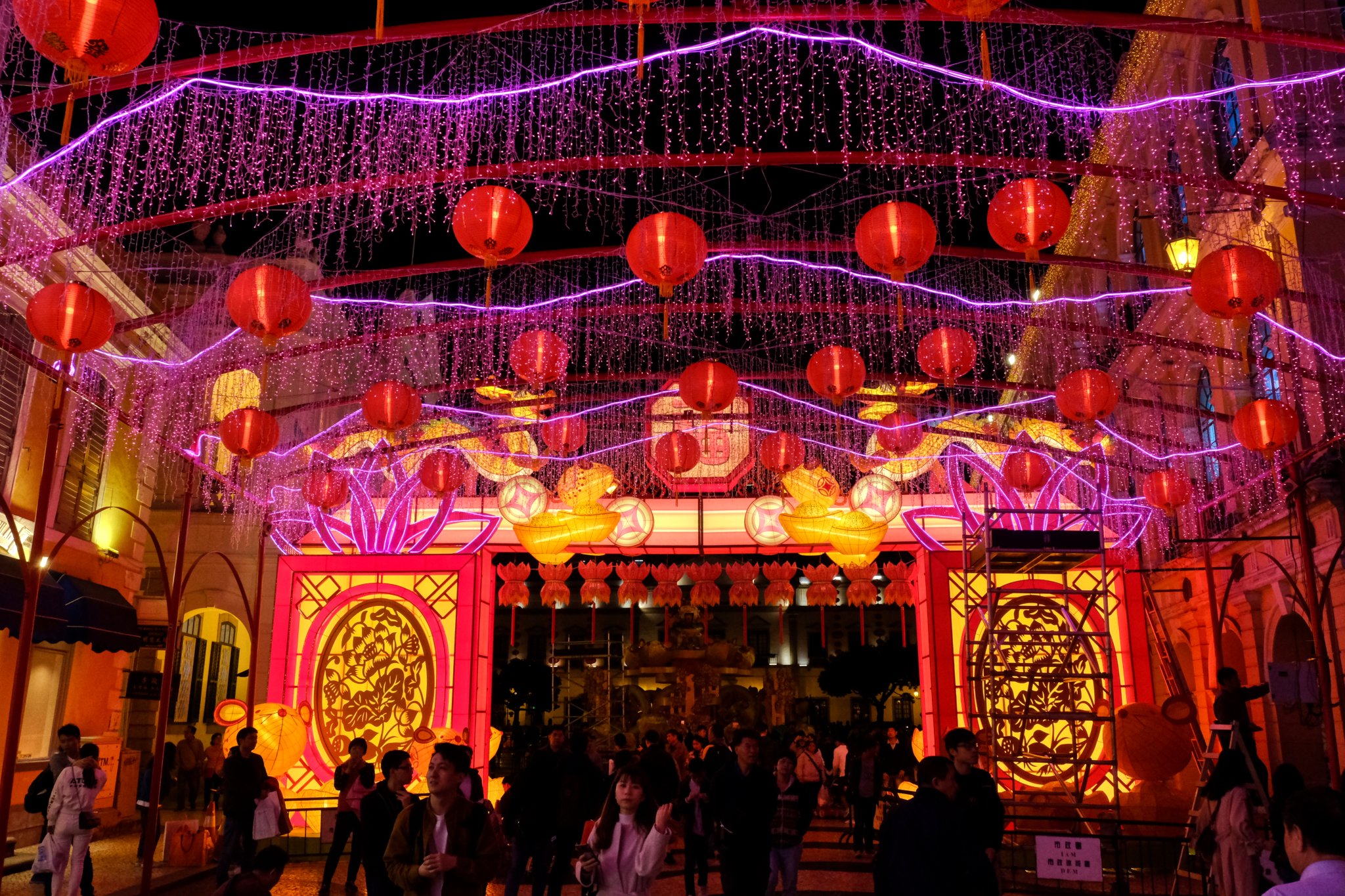 Just as we were saying how great it would be to see the decorations all lit up . . . they all lit up! If you look to the right side of this photo you see a guy on a ladder and a fuse box . . . he was testing the lights! What good luck! We were in the right place at the right time.
Just as we were saying how great it would be to see the decorations all lit up . . . they all lit up! If you look to the right side of this photo you see a guy on a ladder and a fuse box . . . he was testing the lights! What good luck! We were in the right place at the right time.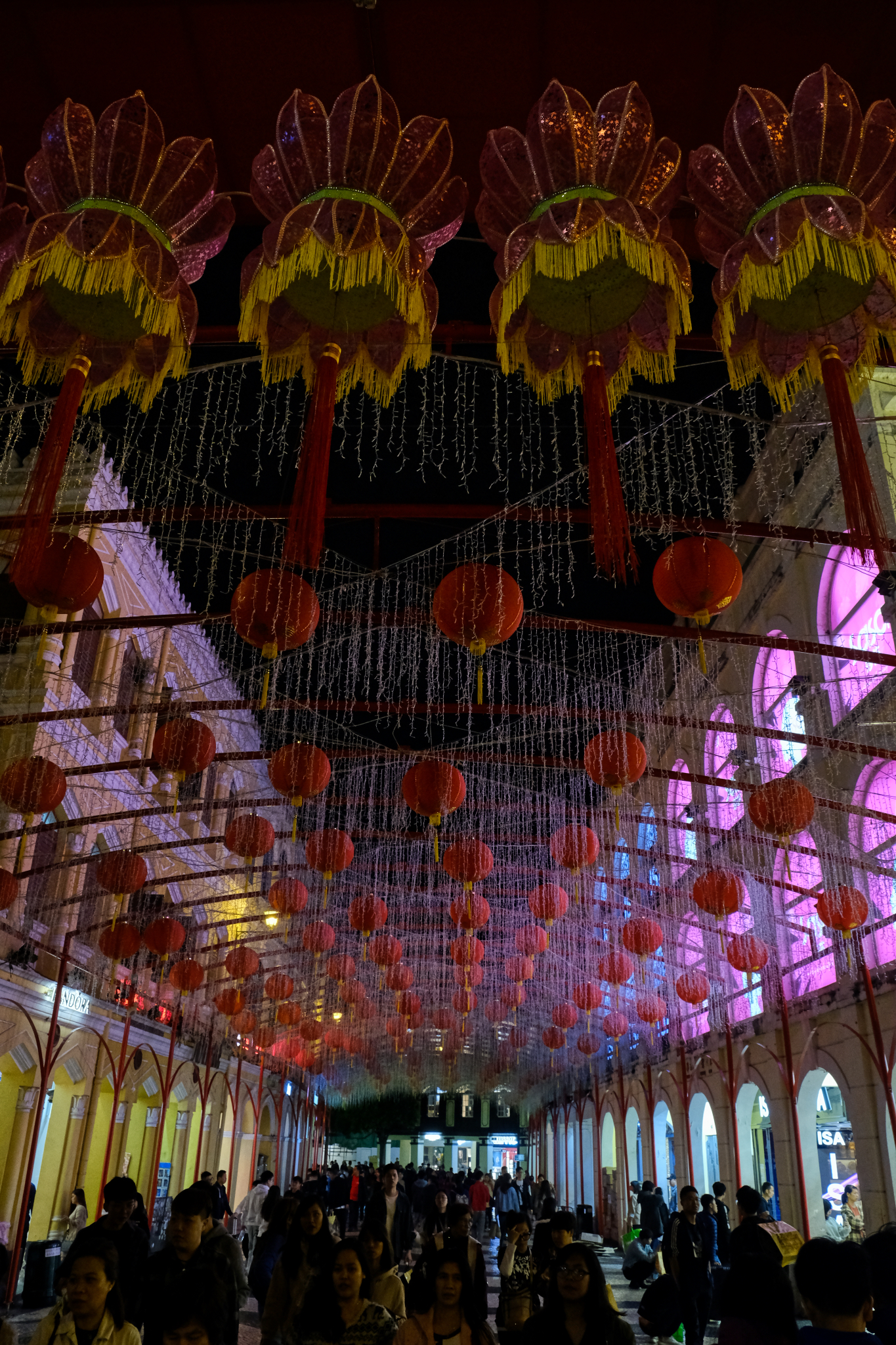 So, of course, I turned around to get a photo of the FULL decorations all lit up . . . and the lights went off!
So, of course, I turned around to get a photo of the FULL decorations all lit up . . . and the lights went off!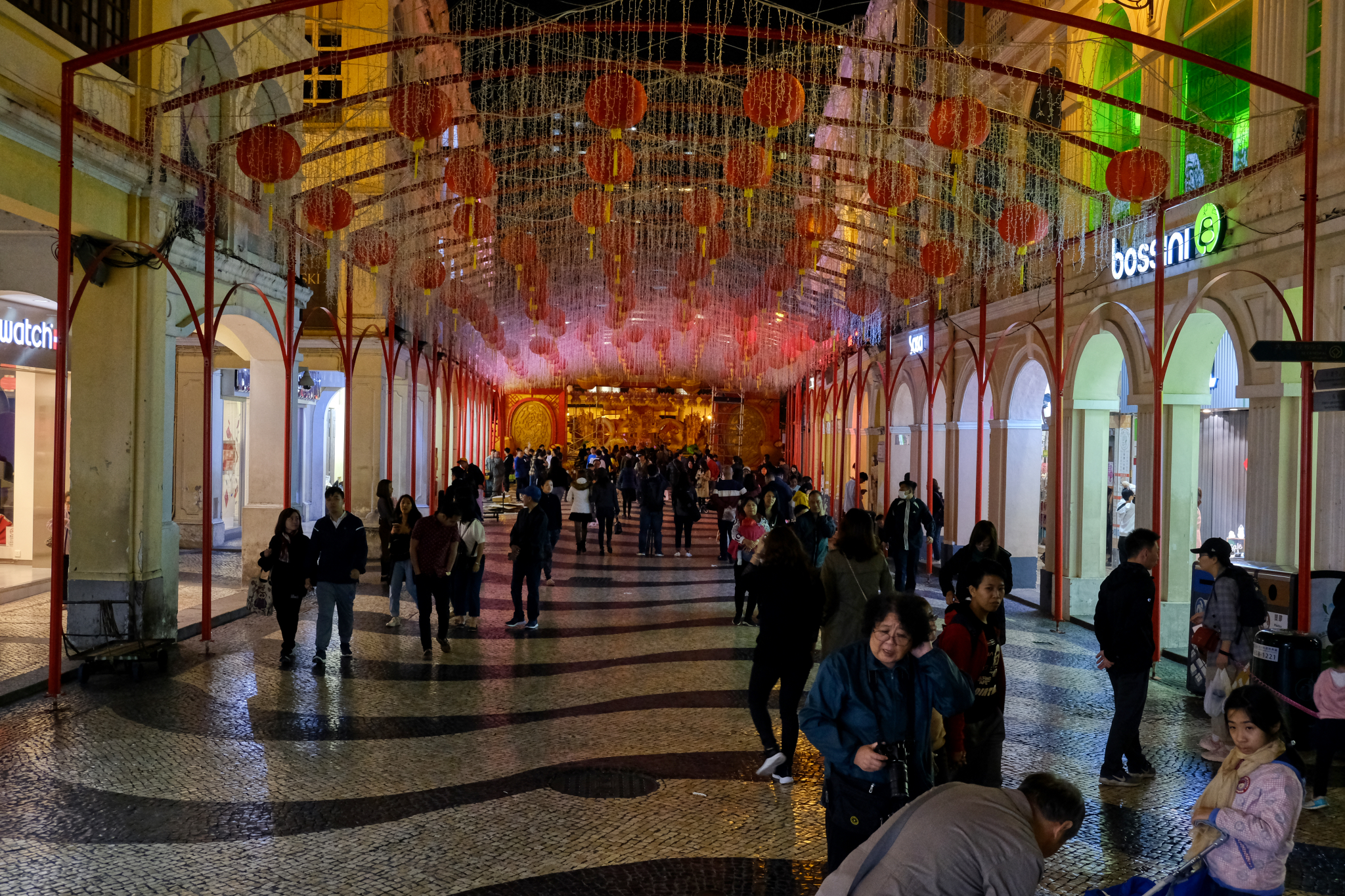 Oh well. It was still a very beautiful place to be at night. We walked in . . .
Oh well. It was still a very beautiful place to be at night. We walked in . . . 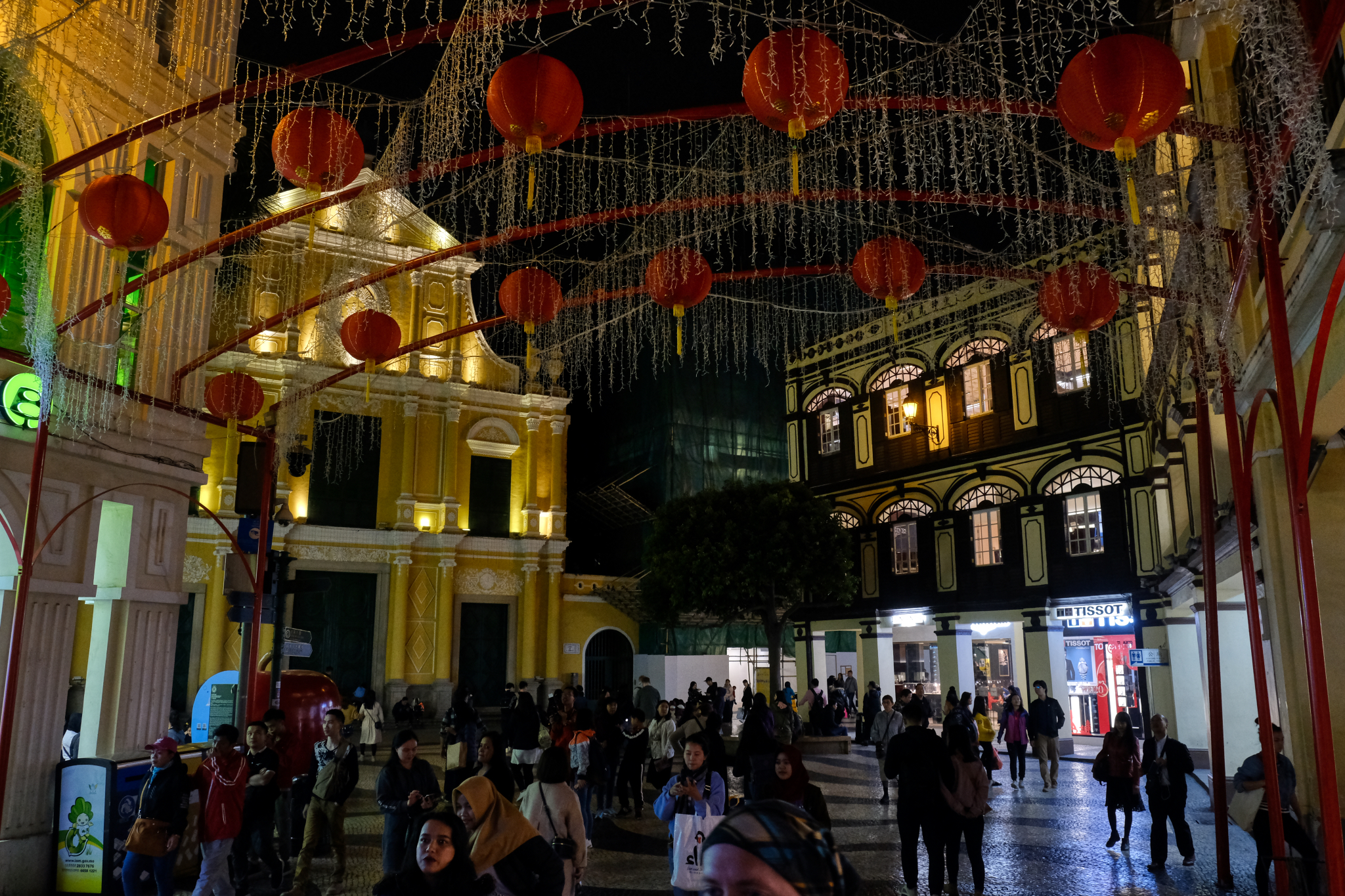 The old church square at night.
The old church square at night.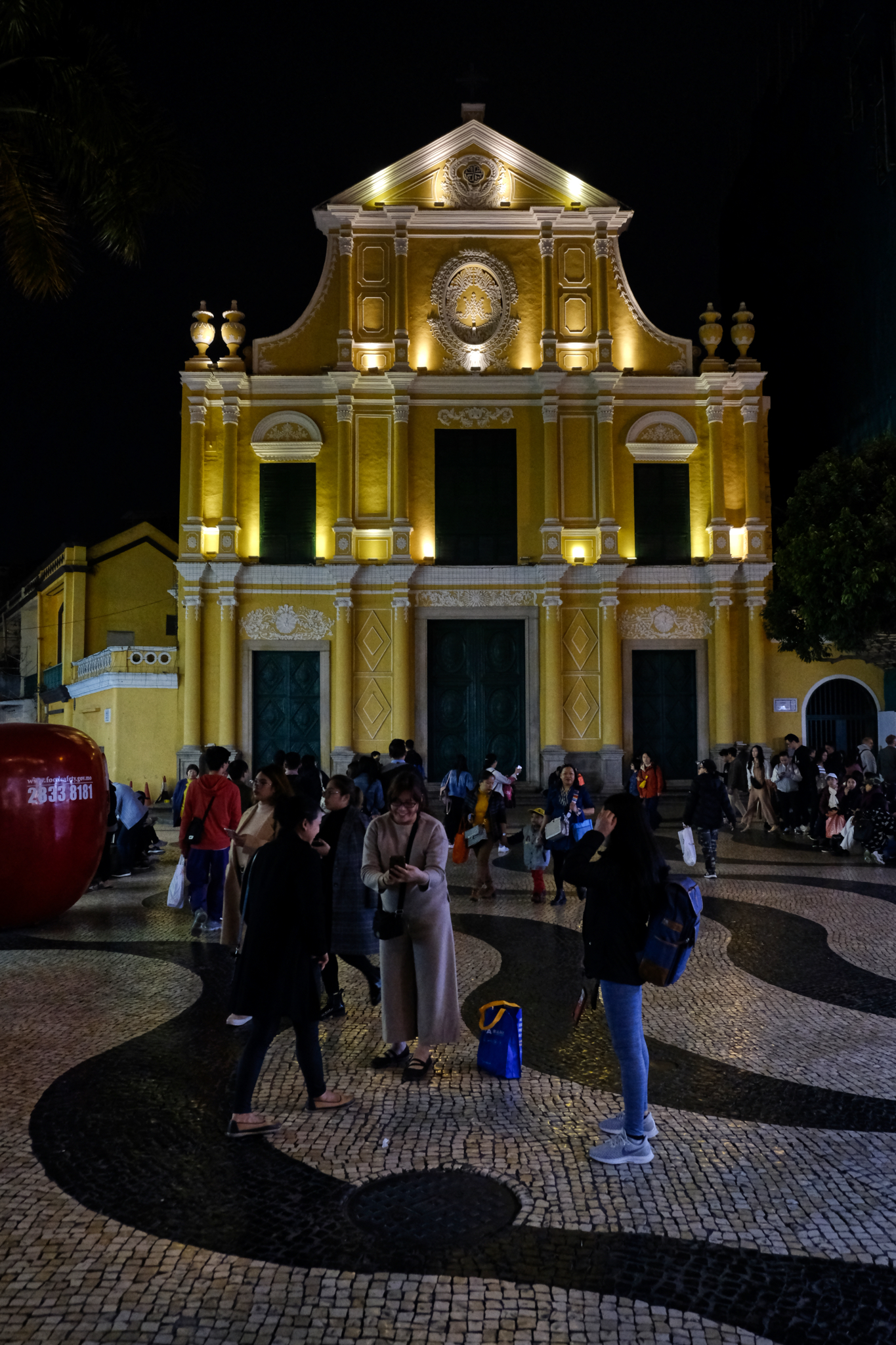 The old yellow church at night . . . still lots of tourists out and about.
The old yellow church at night . . . still lots of tourists out and about.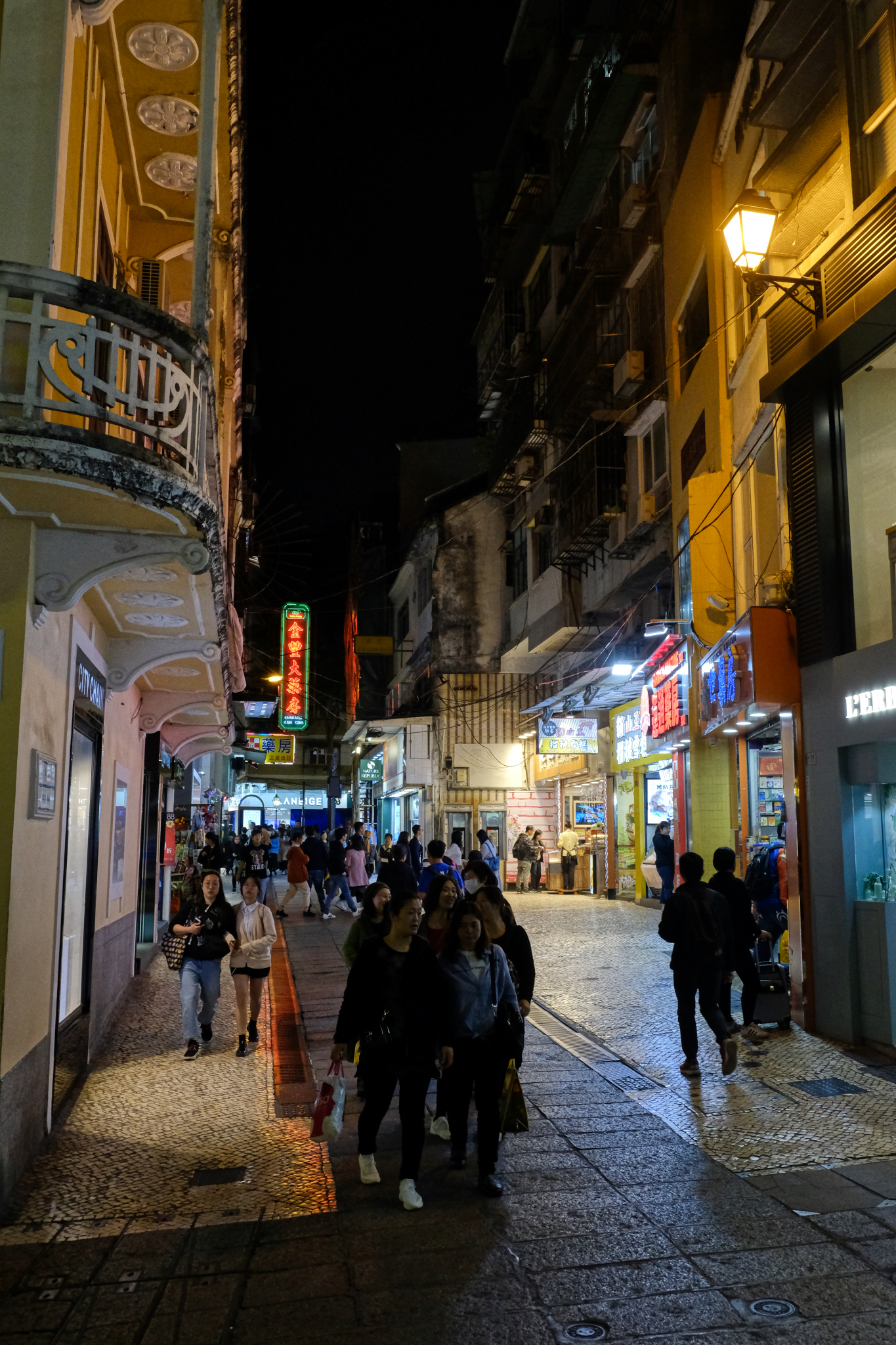 And so we walked on into the side streets towards the St. Paul's Cathedral ruins.
And so we walked on into the side streets towards the St. Paul's Cathedral ruins.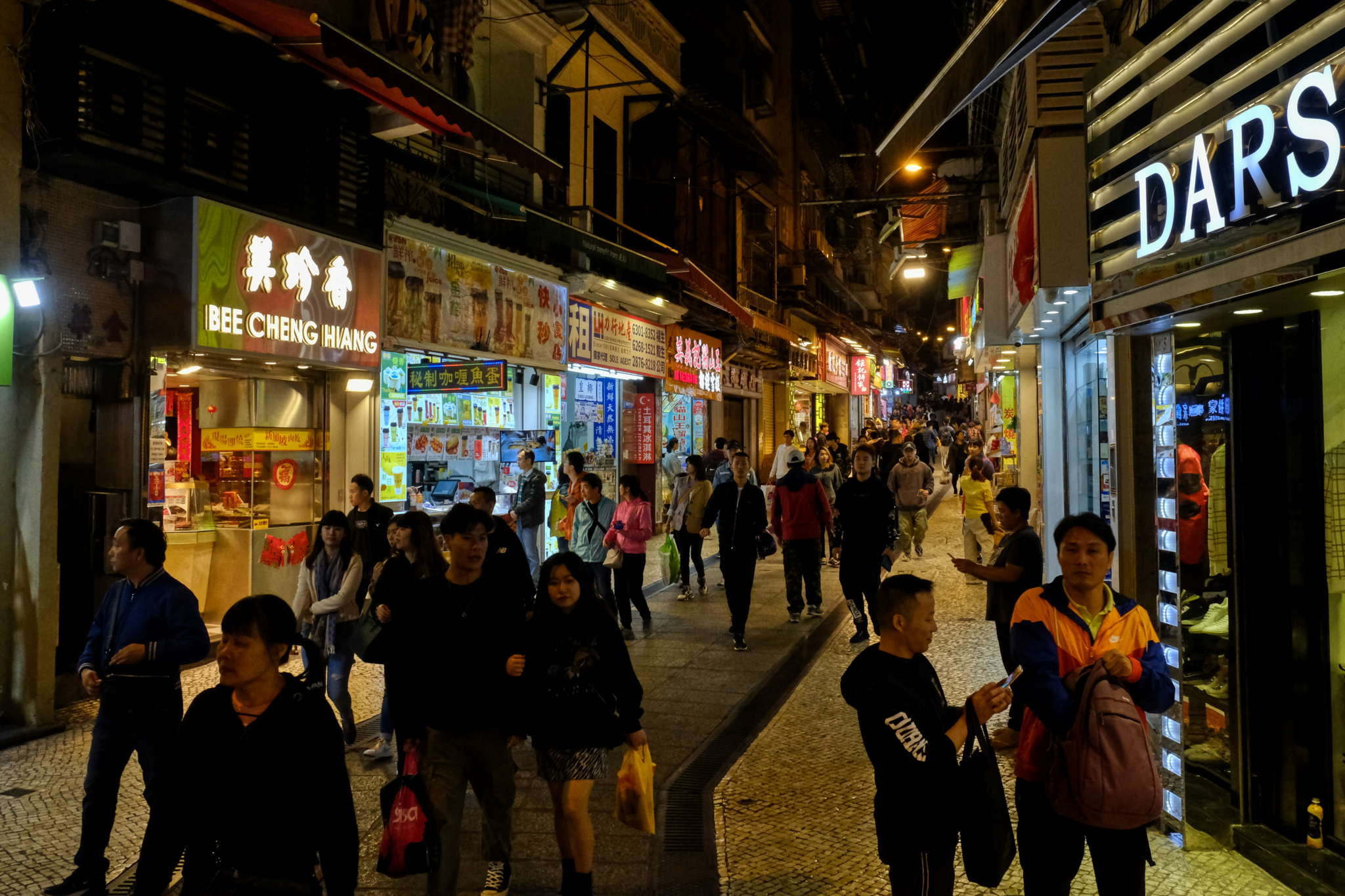 Crowds of mainland Chinese shoppers . . .
Crowds of mainland Chinese shoppers . . . 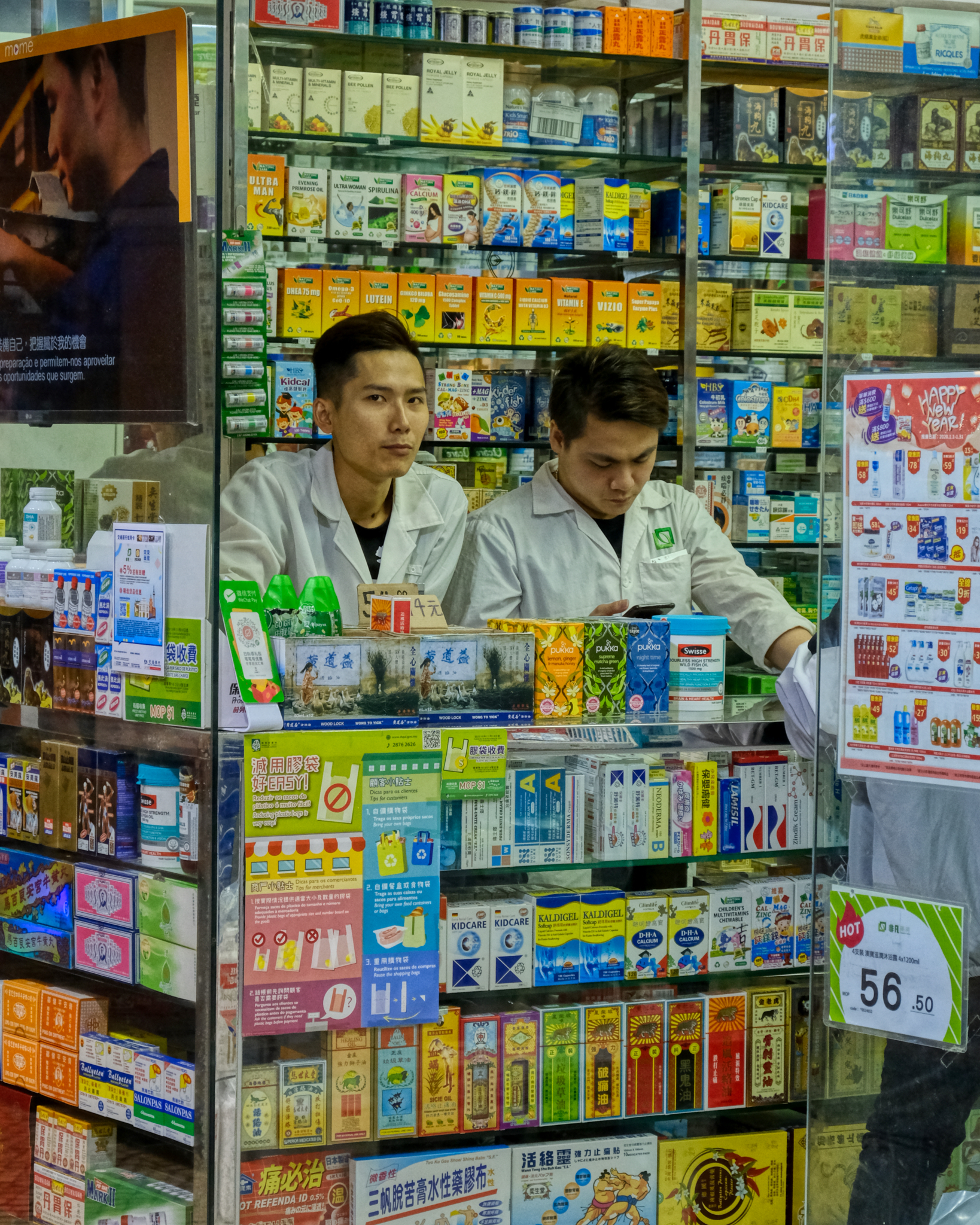 The strange lighting in some of the shops made for some interesting people photos.
The strange lighting in some of the shops made for some interesting people photos.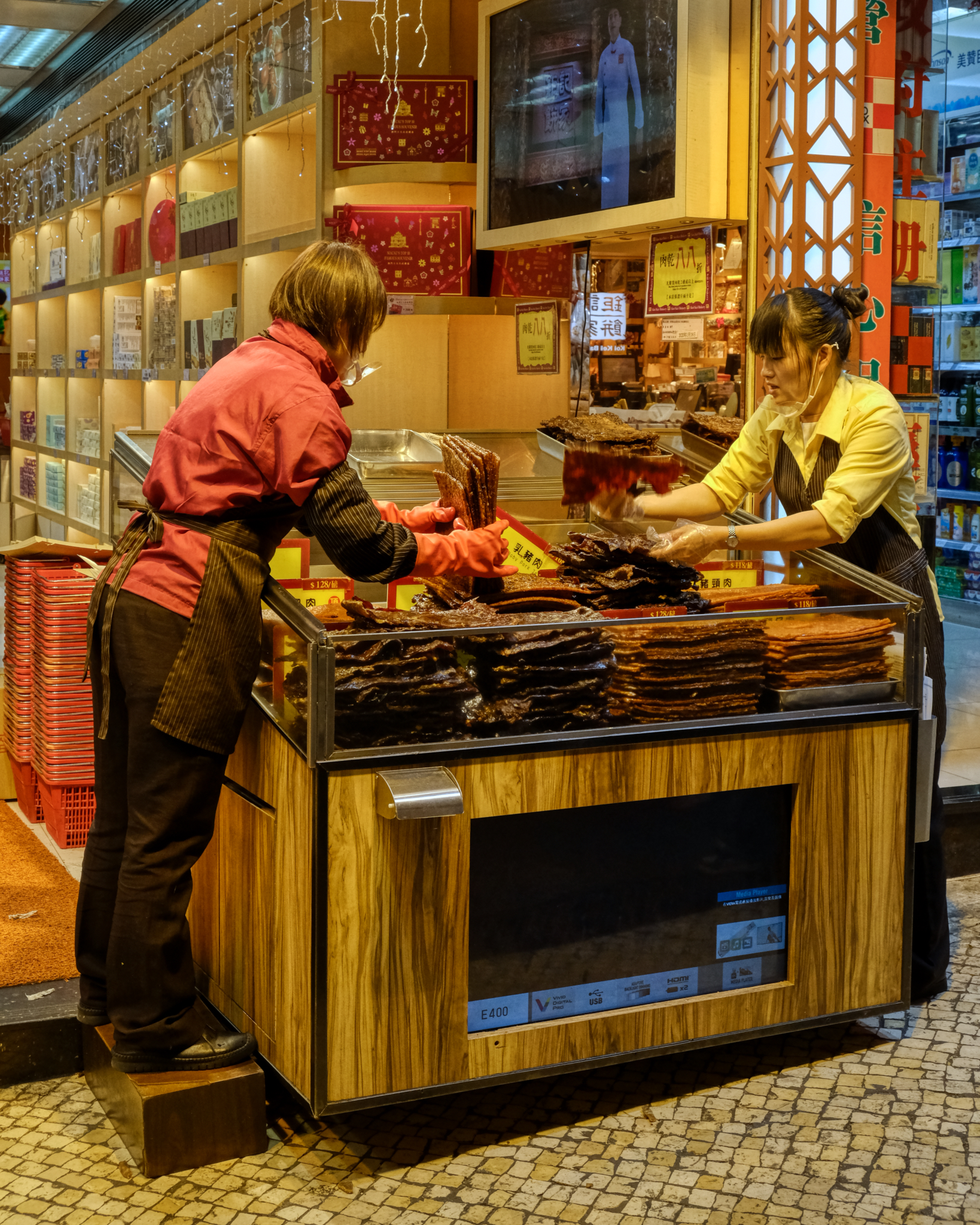 Press dried meat stackers. Very popular with the tourists . . . free samples every few blocks. Very tasty.
Press dried meat stackers. Very popular with the tourists . . . free samples every few blocks. Very tasty.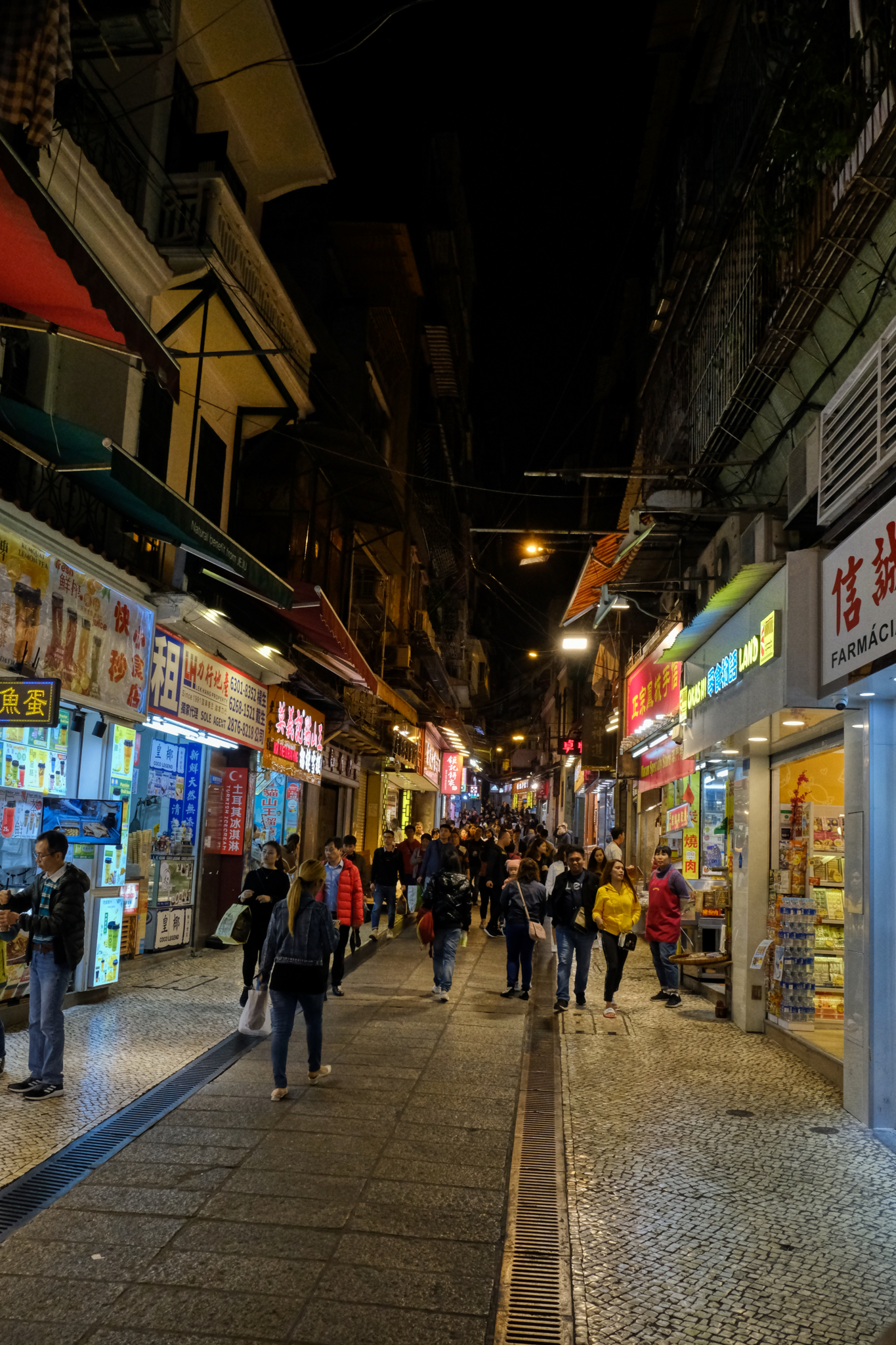 Crowds in the narrow streets of historic Maçau at night.
Crowds in the narrow streets of historic Maçau at night.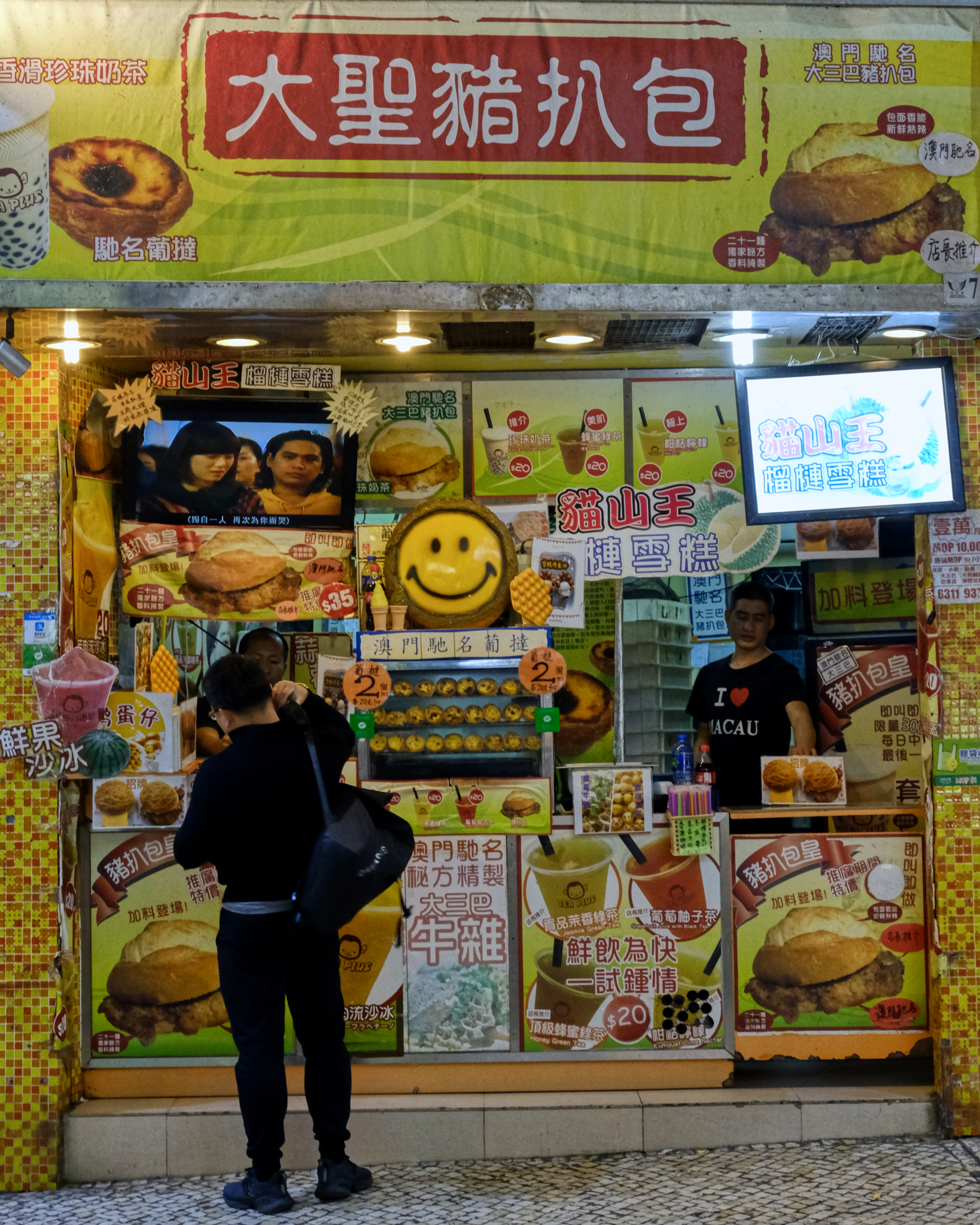 These little egg custard pies were absolutely delicious!!!
These little egg custard pies were absolutely delicious!!! It seemed like there was a pharmacy on every corner. Lots of mainland Chinese buy their pharmaceutical products abroad . . . for safety.
It seemed like there was a pharmacy on every corner. Lots of mainland Chinese buy their pharmaceutical products abroad . . . for safety.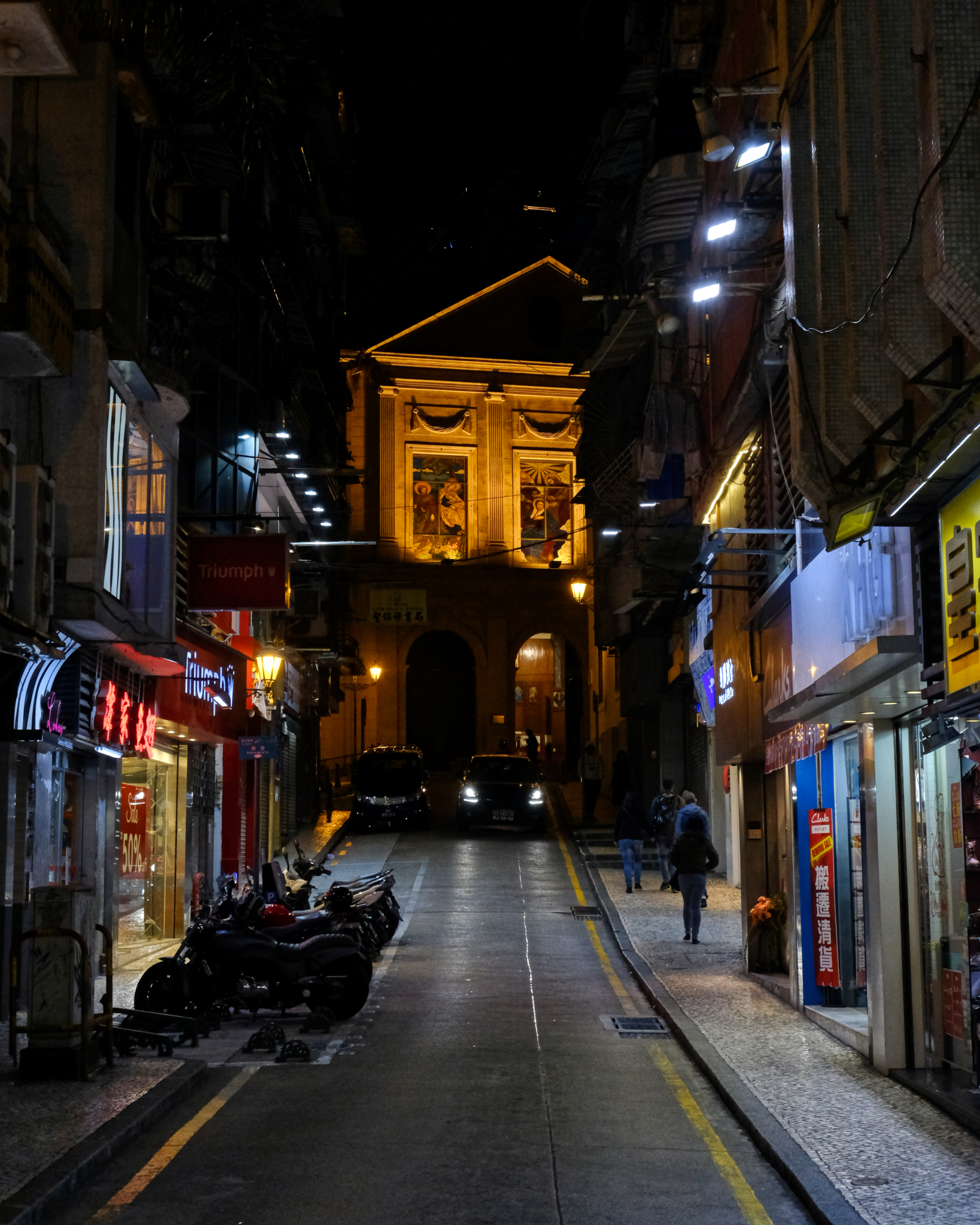 Interesting architectural find up a side street . . . the Portuguese influence everywhere.
Interesting architectural find up a side street . . . the Portuguese influence everywhere.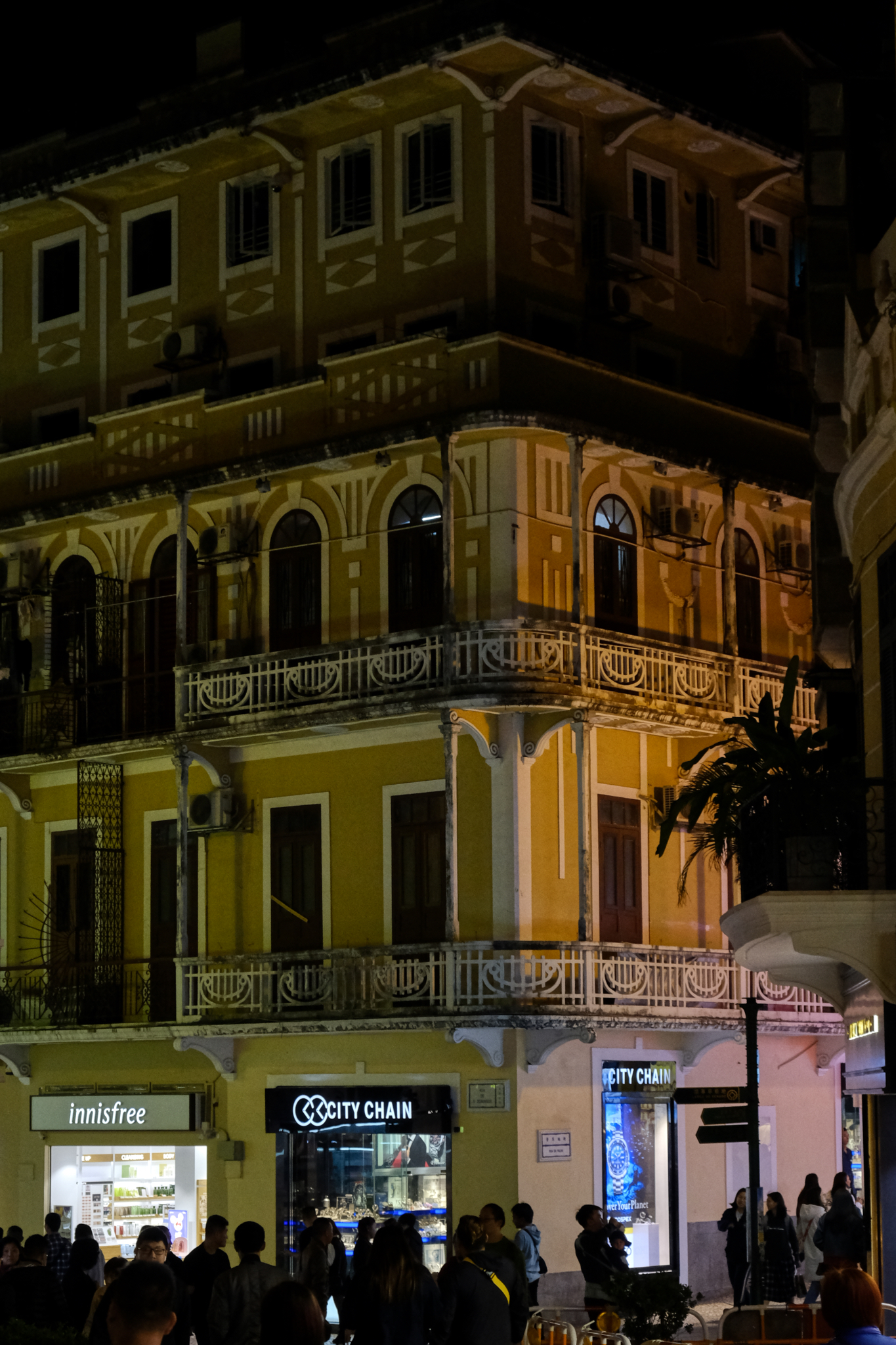 Lots of very interesting old buildings.
Lots of very interesting old buildings.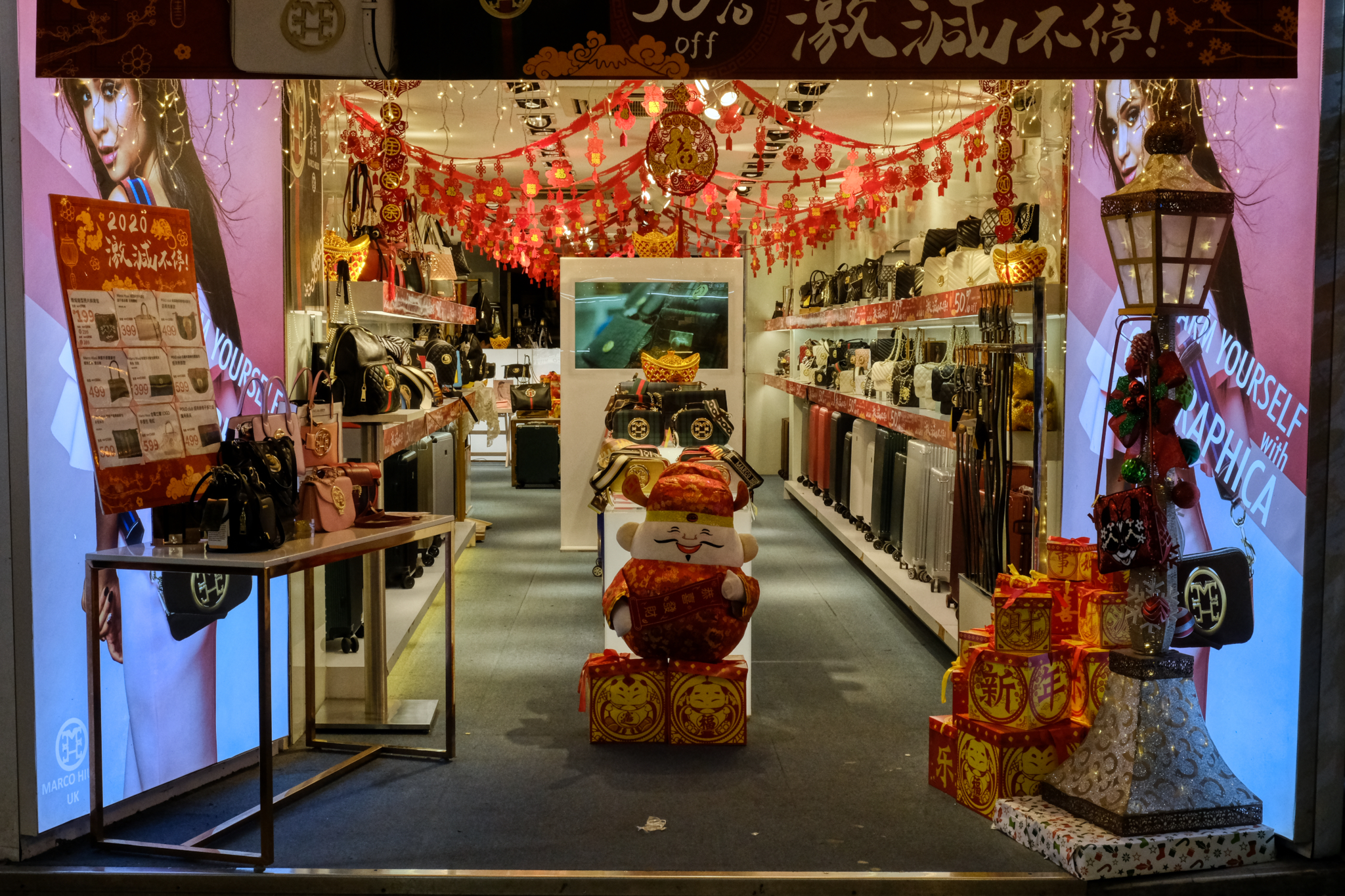 A shop of dreams! Something for the Little Woman?
A shop of dreams! Something for the Little Woman? Where the streets give way to the cathedral on the hill.
Where the streets give way to the cathedral on the hill. Just as beautiful at night . . . and almost as crowded.
Just as beautiful at night . . . and almost as crowded.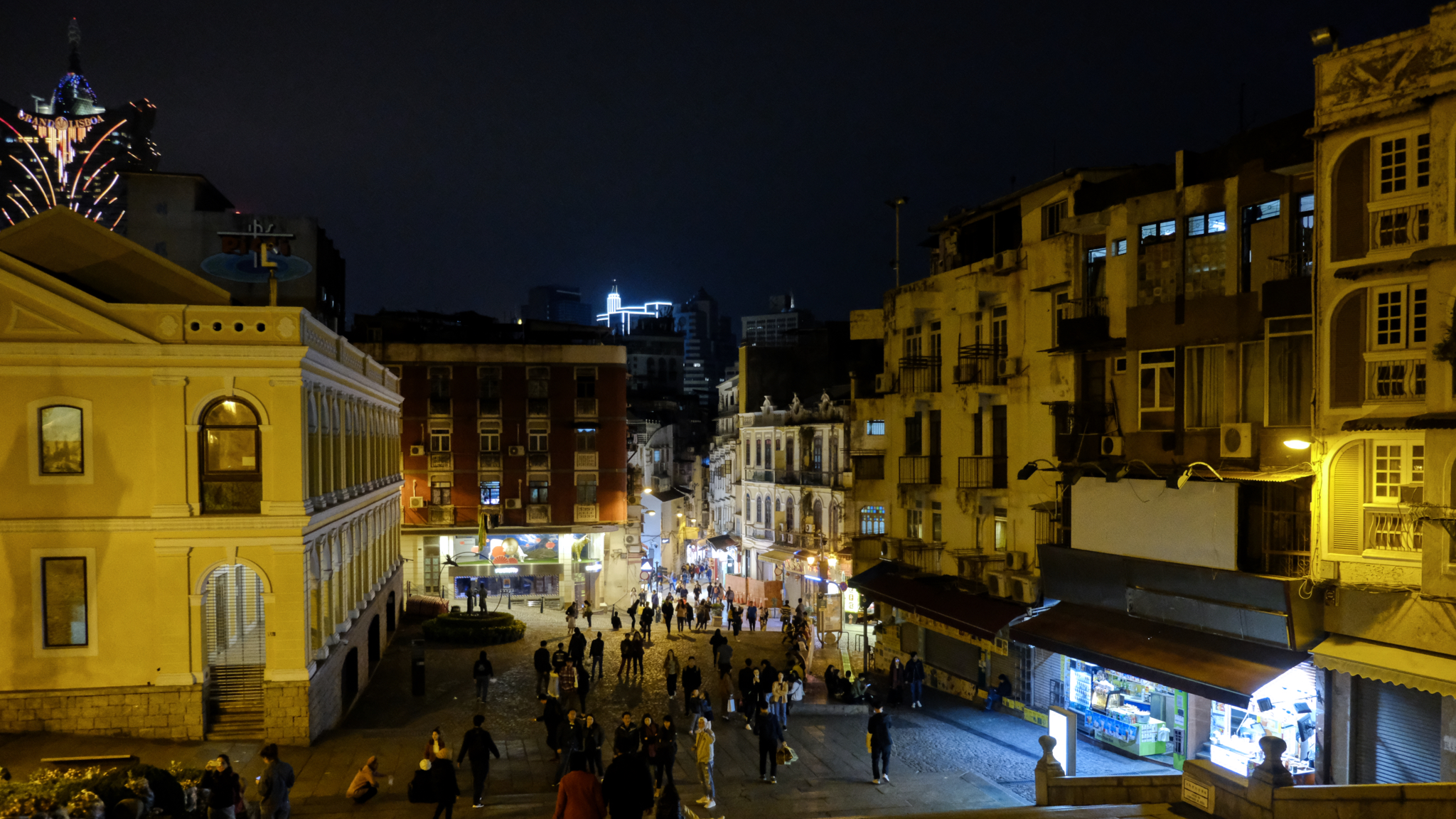 The view back down the walking streets from the steps of St. Paul's Cathedral.
The view back down the walking streets from the steps of St. Paul's Cathedral.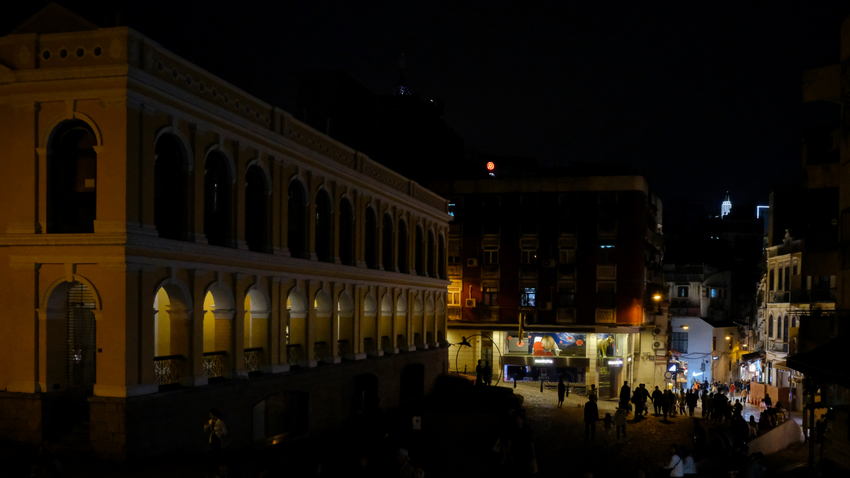 We stayed here for a while and soaked up the old world charm.
We stayed here for a while and soaked up the old world charm.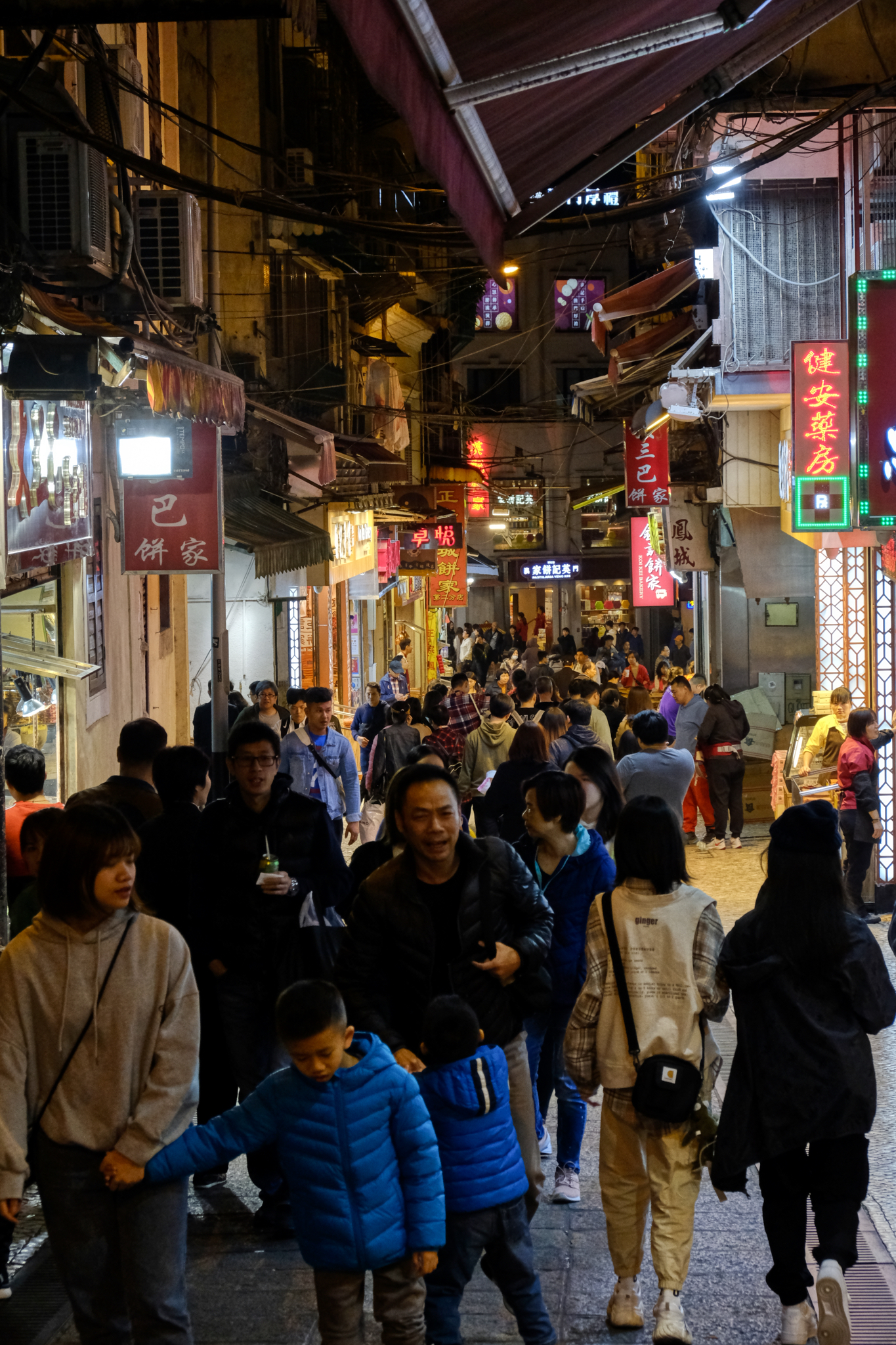 We walked back down the interesting and crowded narrow streets.
We walked back down the interesting and crowded narrow streets.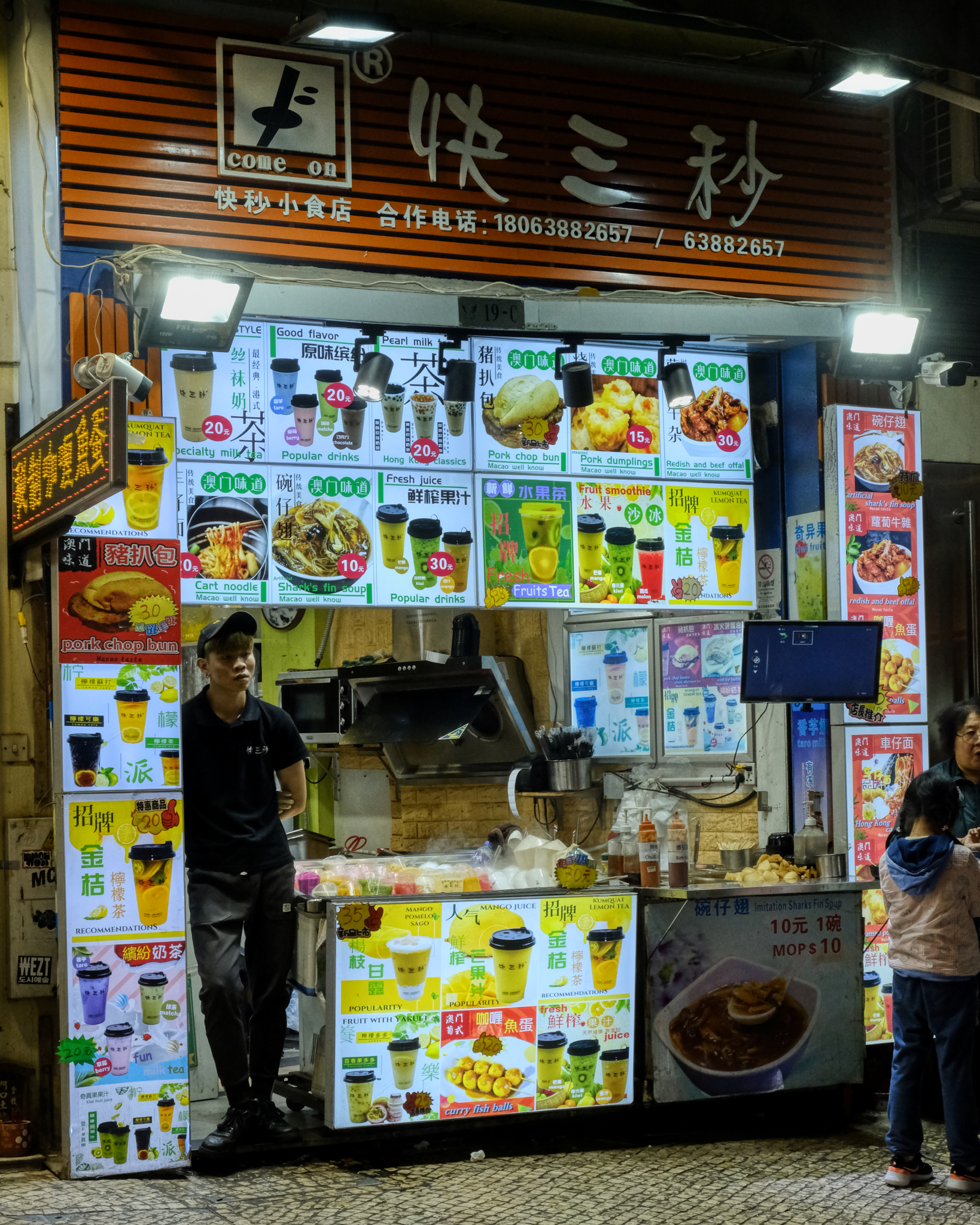 At the end of a long day . . . .
At the end of a long day . . . .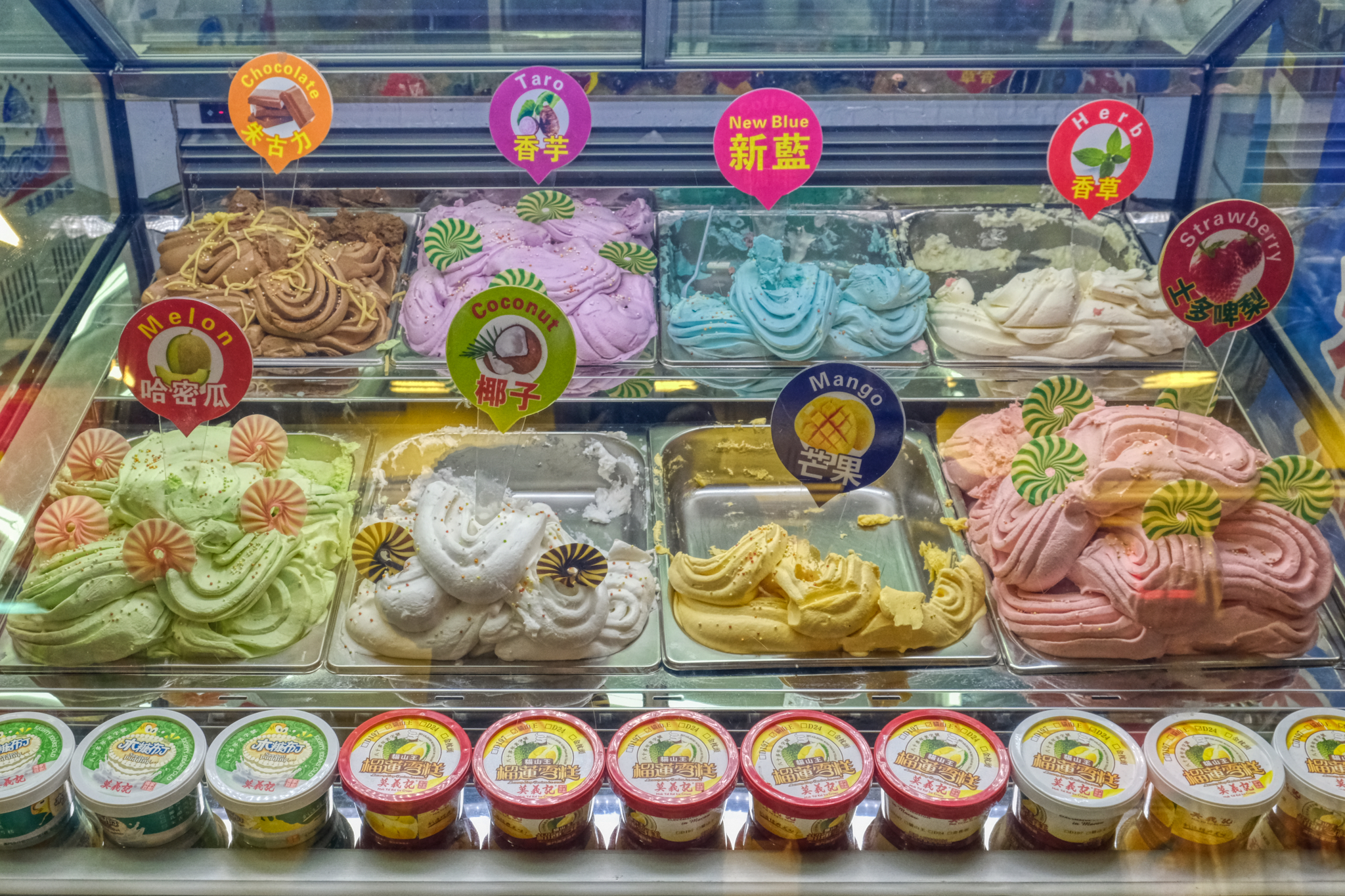 I didn't have any (too sweet), but my friend did (coconut, of course).
I didn't have any (too sweet), but my friend did (coconut, of course).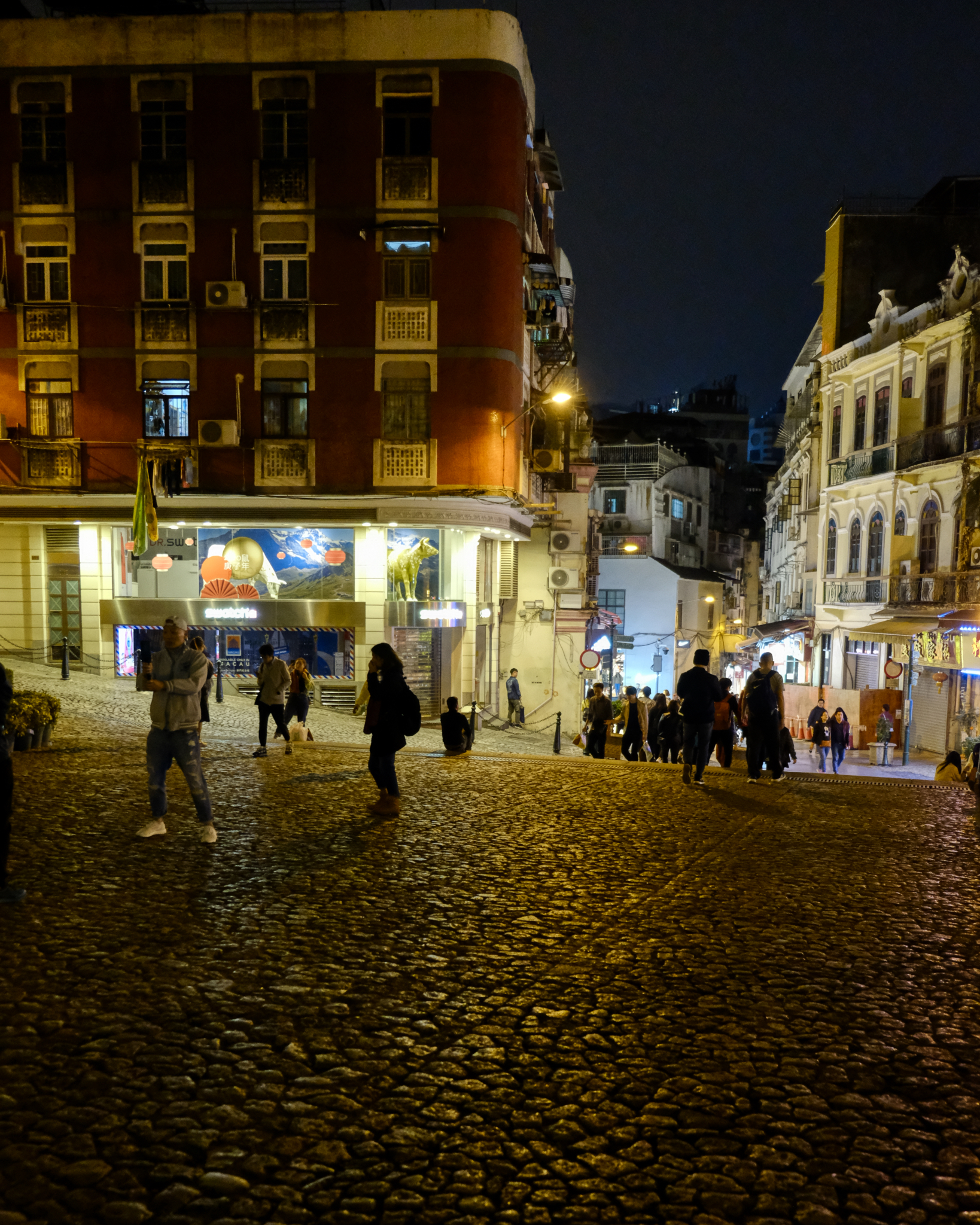 I love walking around in these cobbled streets at night . . . anywhere in the world.
I love walking around in these cobbled streets at night . . . anywhere in the world.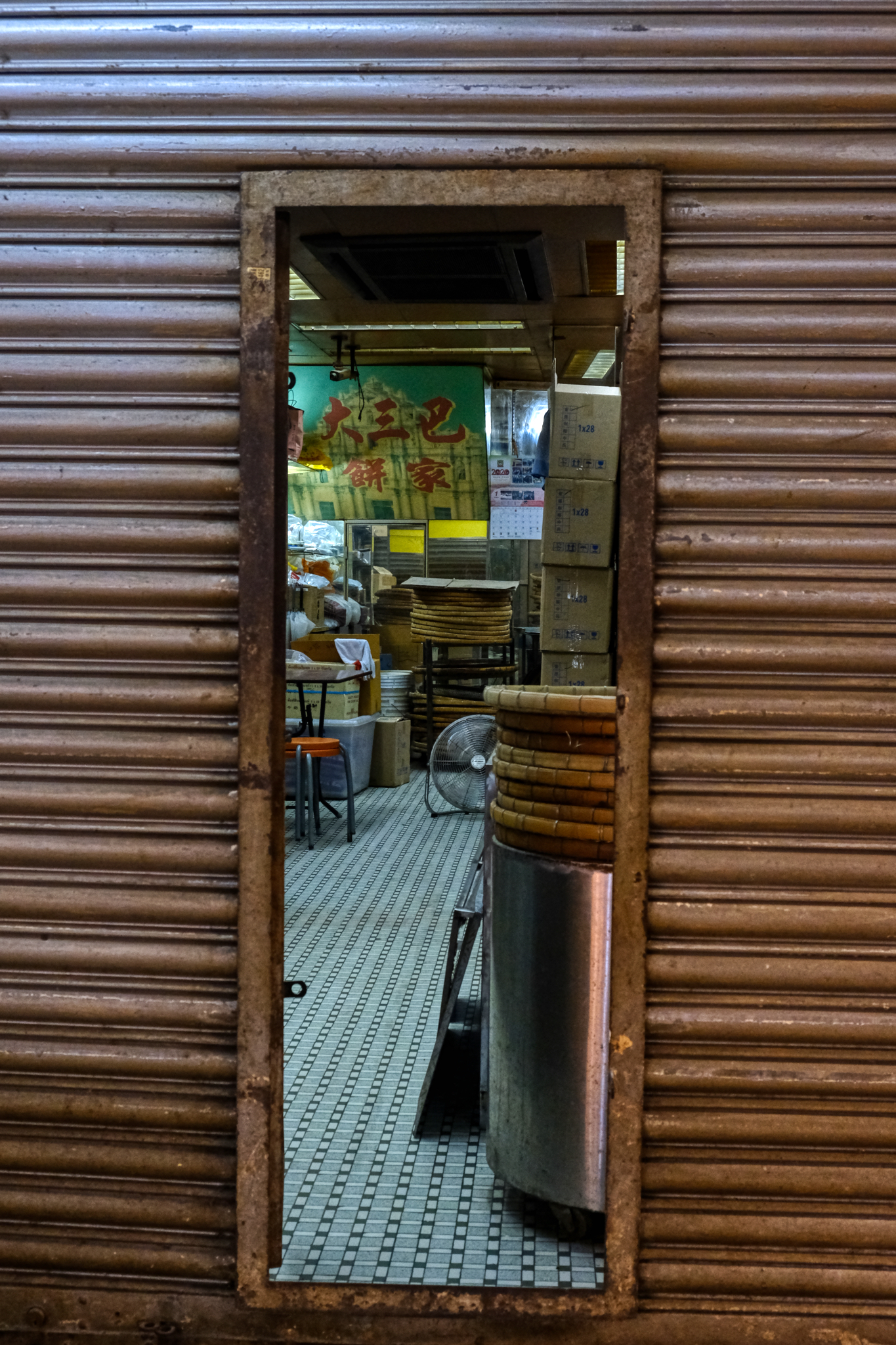 I did not post all of my 'art' photos here. There were too many!
I did not post all of my 'art' photos here. There were too many!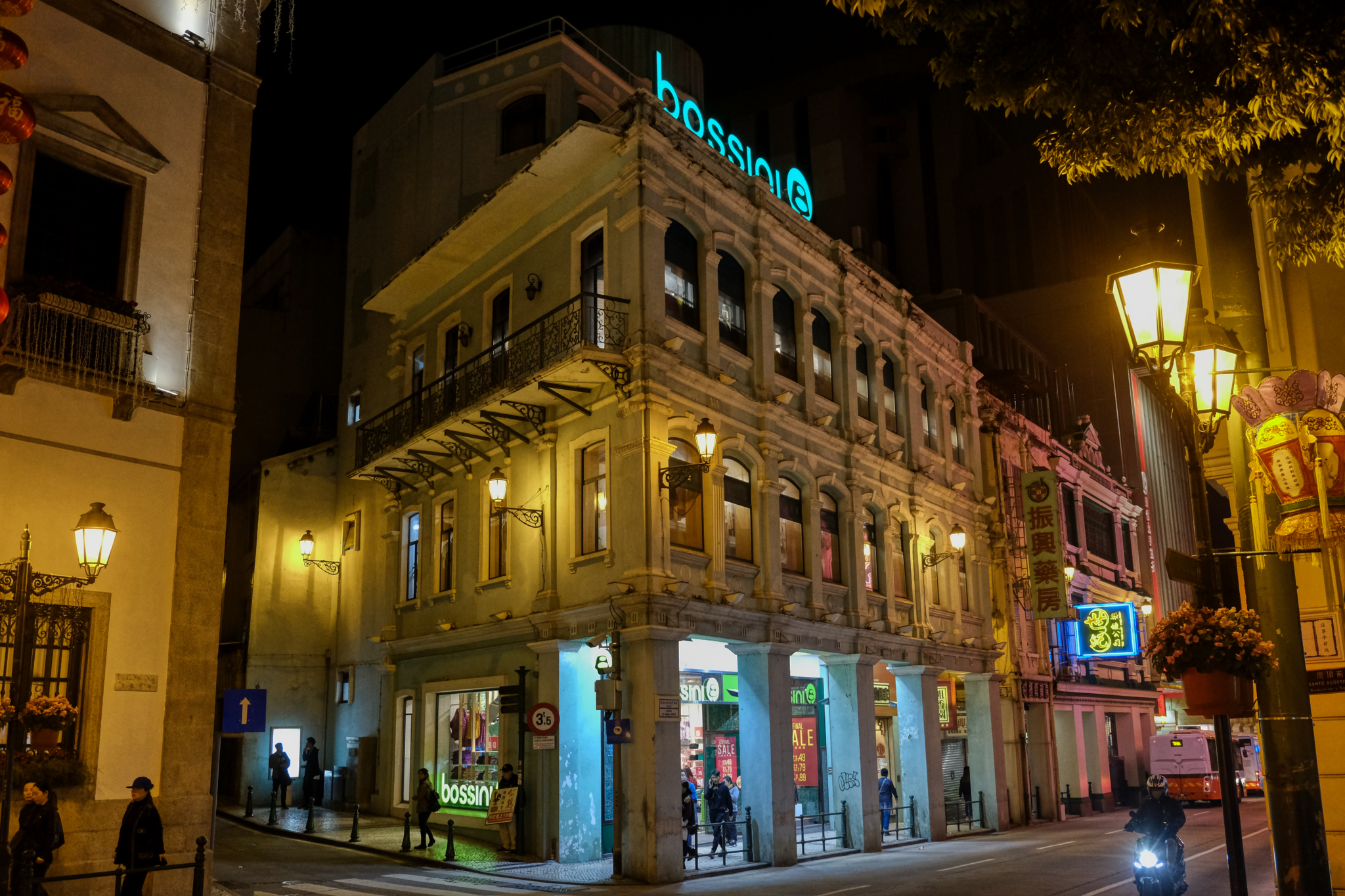 We left the historic section and walked out onto the city streets of Maçau where the local citizens were going about their business, walking home from work, or off to visit friends.
We left the historic section and walked out onto the city streets of Maçau where the local citizens were going about their business, walking home from work, or off to visit friends. I love night street photography . . . and was in absolute heaven here.
I love night street photography . . . and was in absolute heaven here.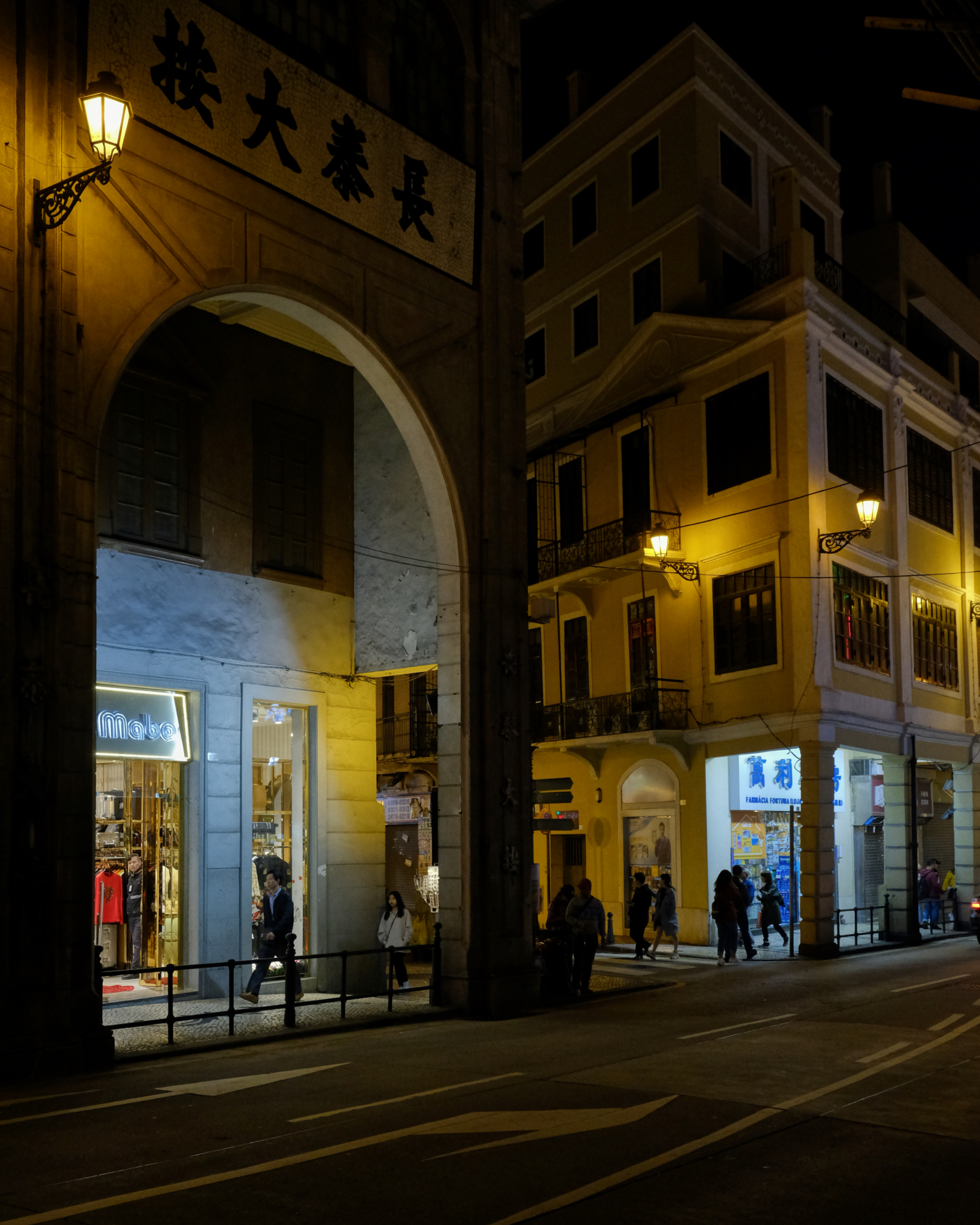 Superb light, shadow, form . . .
Superb light, shadow, form . . .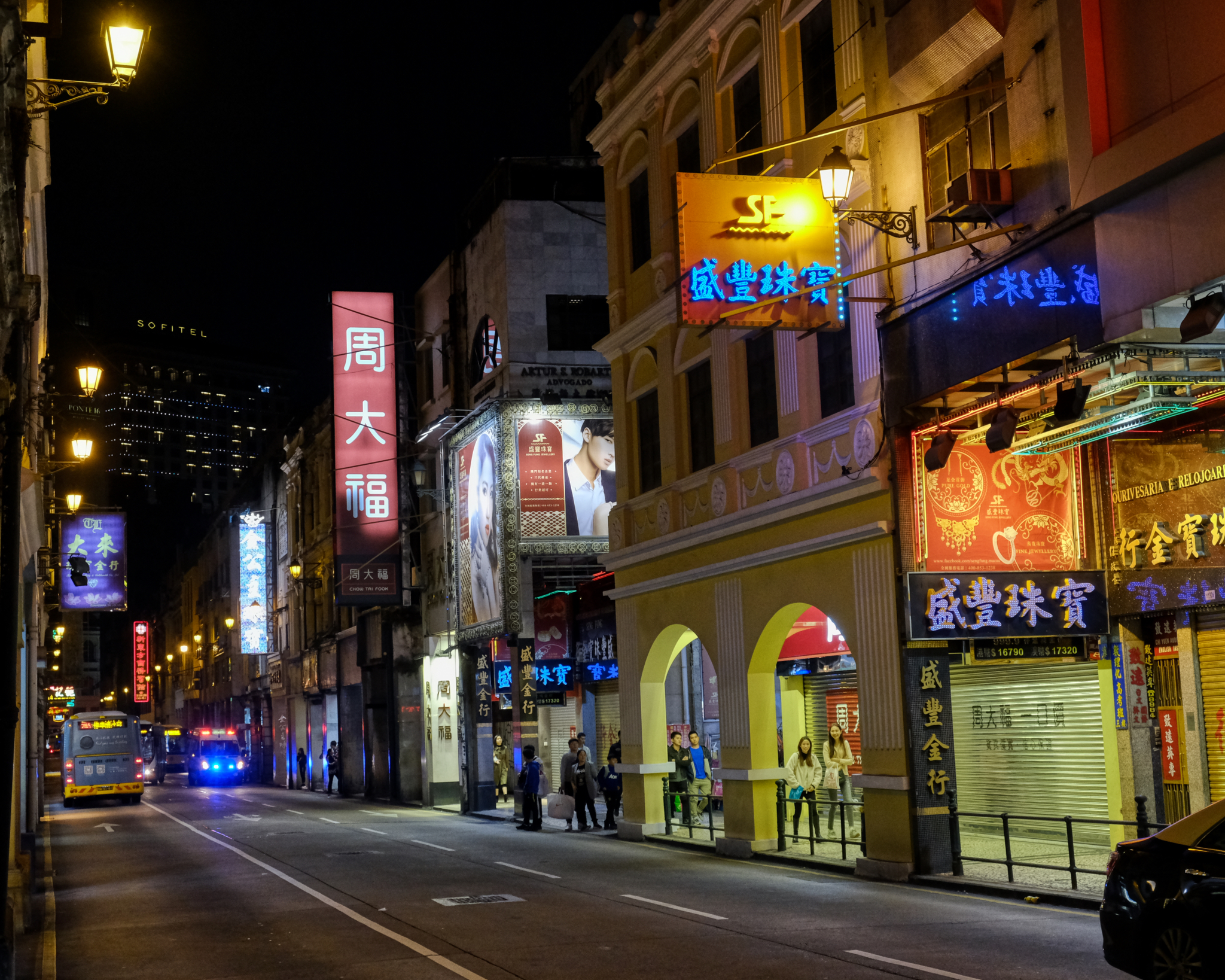 We were all hungry and looking for some place to eat.
We were all hungry and looking for some place to eat.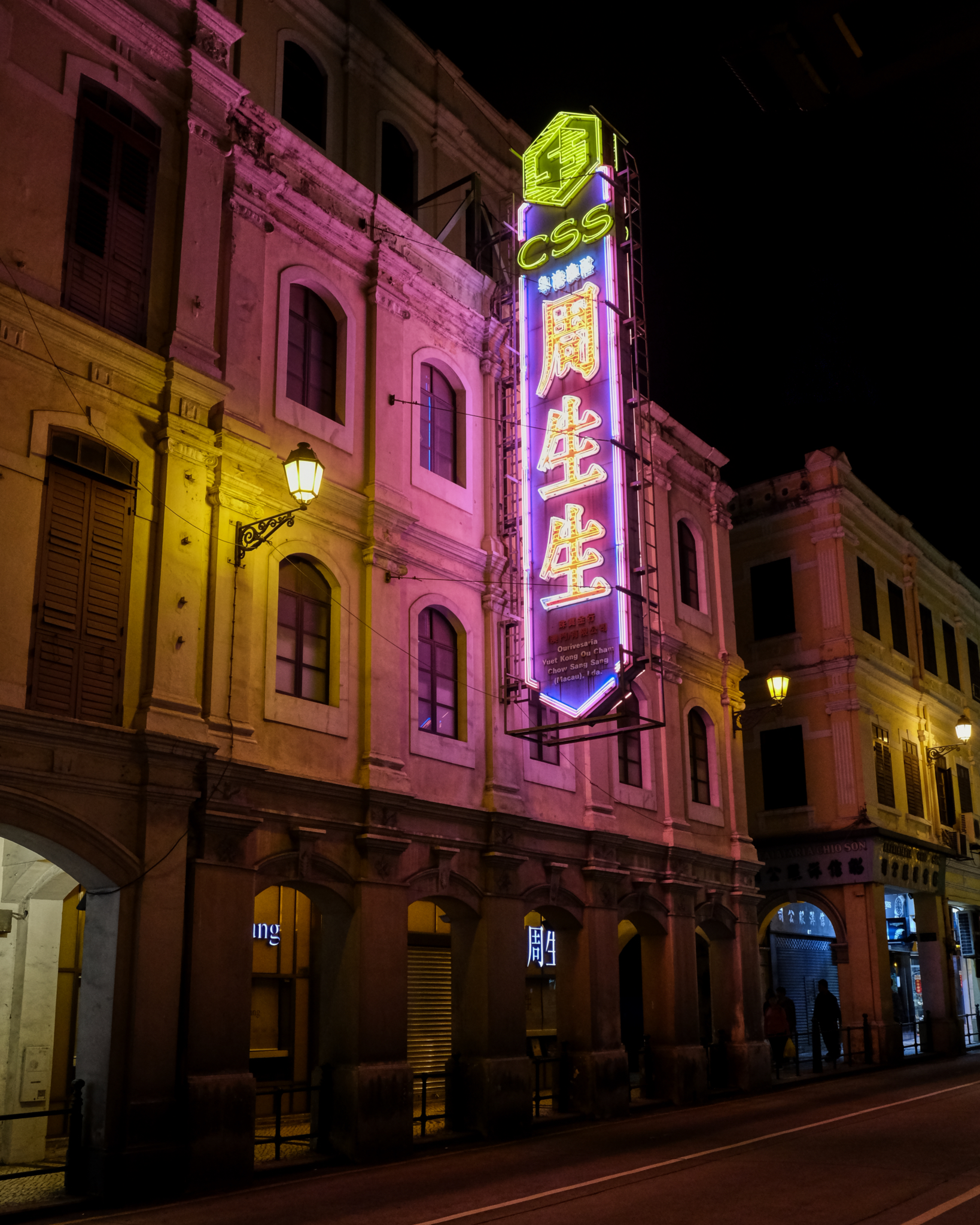 Beautiful neon light.
Beautiful neon light. This old Portuguese colonial building looked brand new (or recently renovated). We were heading back in the direction of our hotel, and again past the many glittery casino hotels.
This old Portuguese colonial building looked brand new (or recently renovated). We were heading back in the direction of our hotel, and again past the many glittery casino hotels.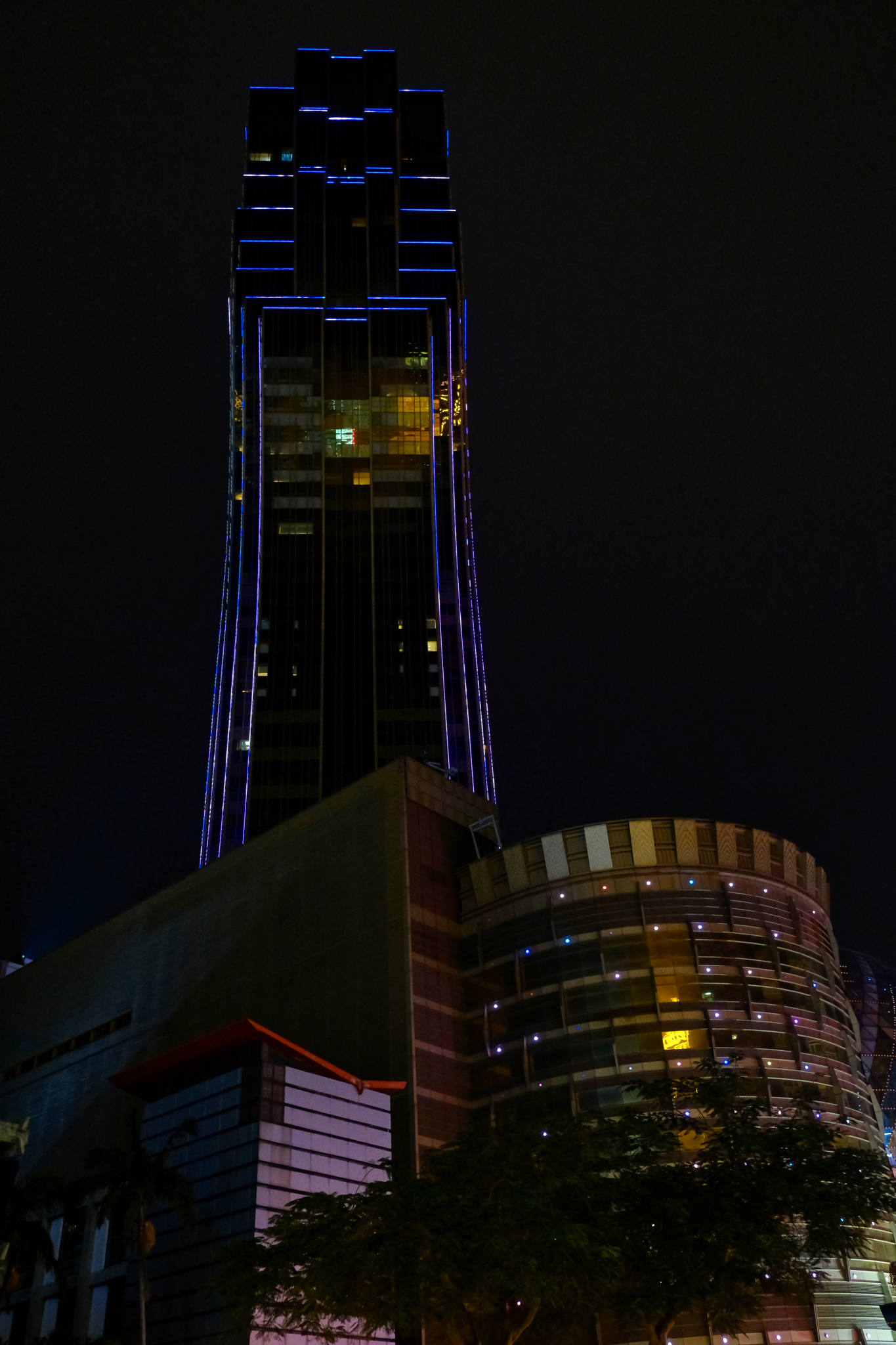 These huge casino towers were amazingly glitzy!
These huge casino towers were amazingly glitzy! Among the casinos . . . but we really didn't want to go in . . .
Among the casinos . . . but we really didn't want to go in . . . 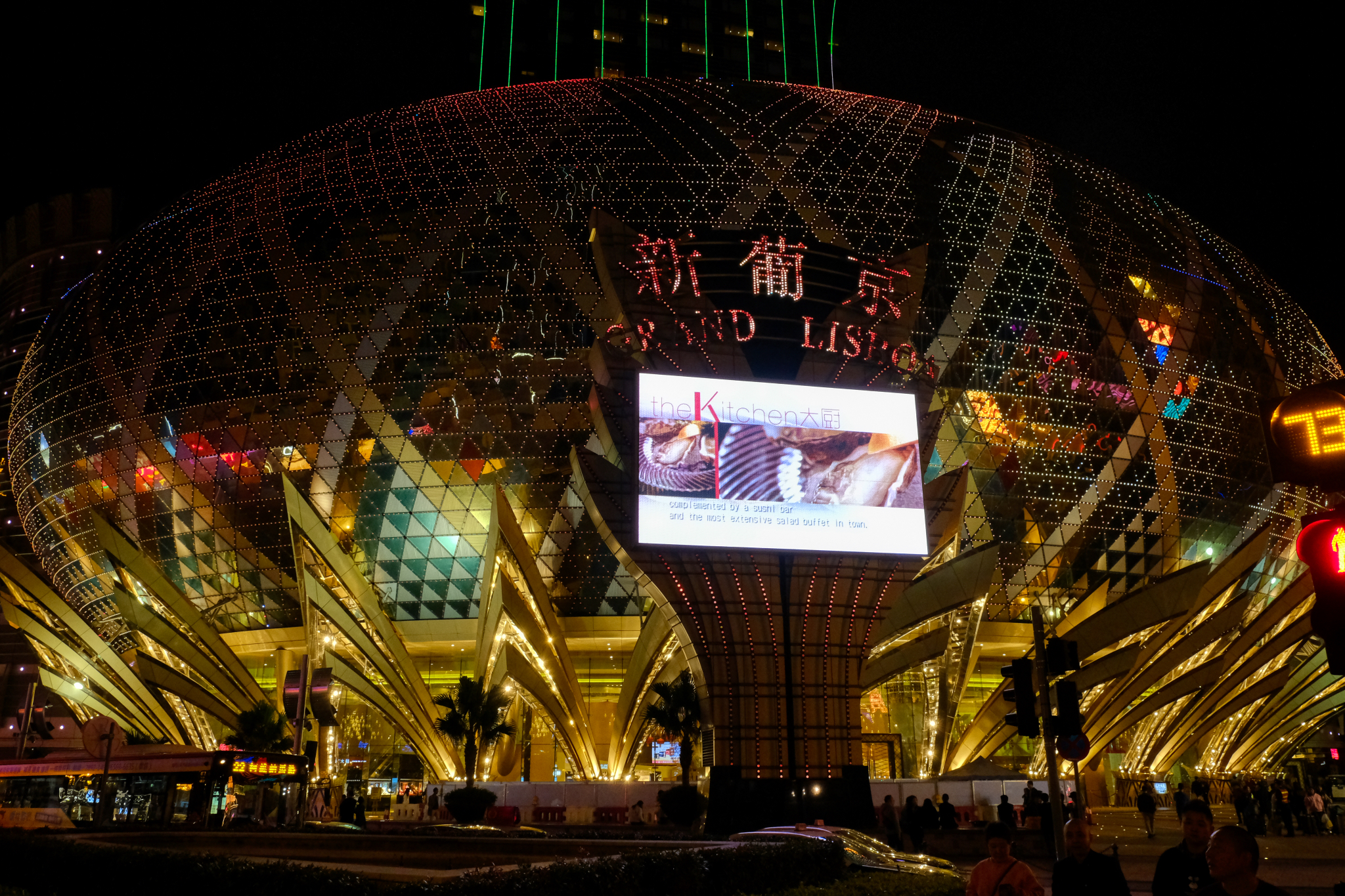 Max Glitz!
Max Glitz! More Max Glitz. We decided that because it was so late that we would just dodge into one of these grand hotels and find the all night café.
More Max Glitz. We decided that because it was so late that we would just dodge into one of these grand hotels and find the all night café.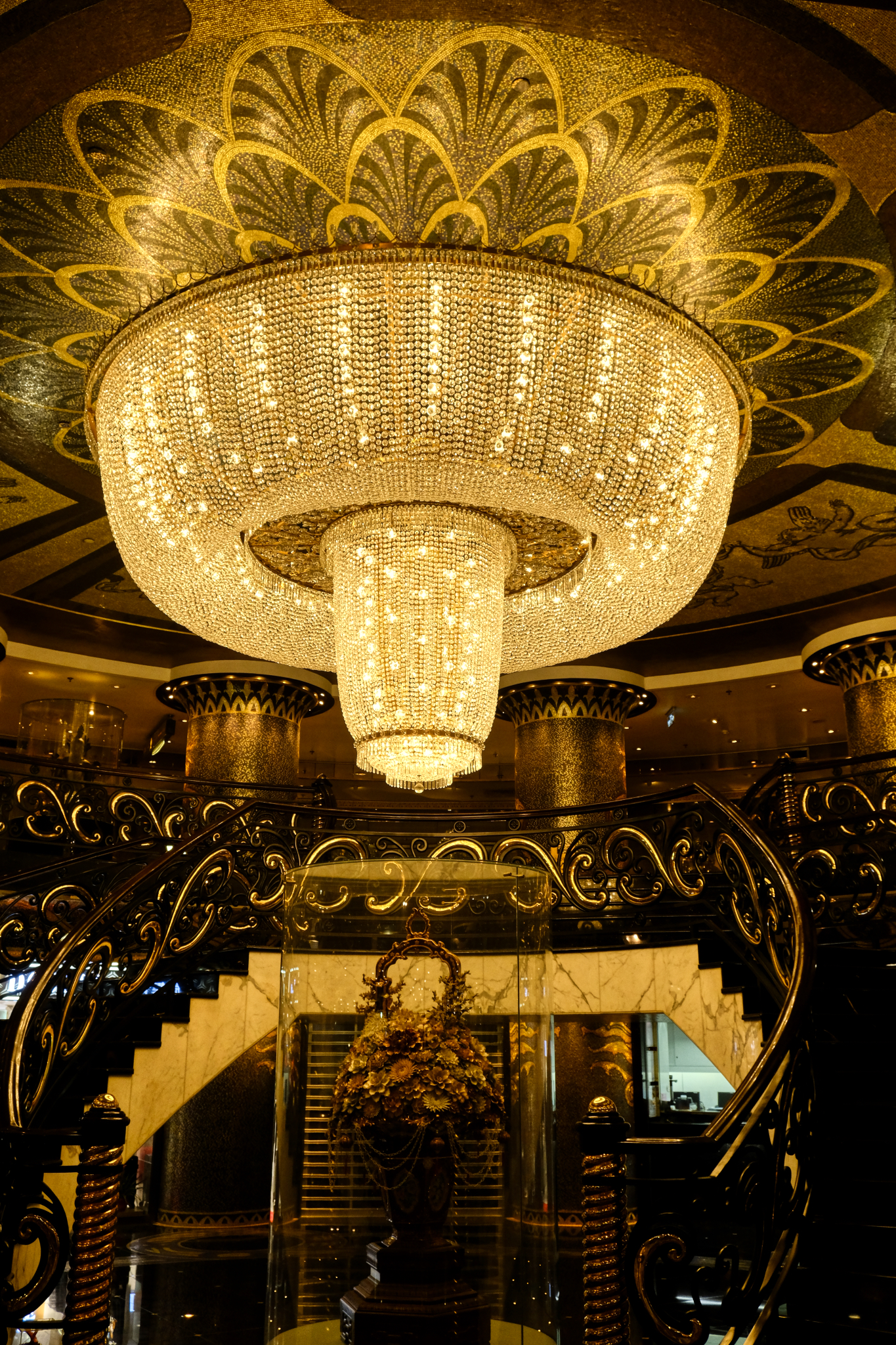 Yep. This is the interior of a casino/hotel in Maçau, China. We went up these magnificent stairs . . .
Yep. This is the interior of a casino/hotel in Maçau, China. We went up these magnificent stairs . . .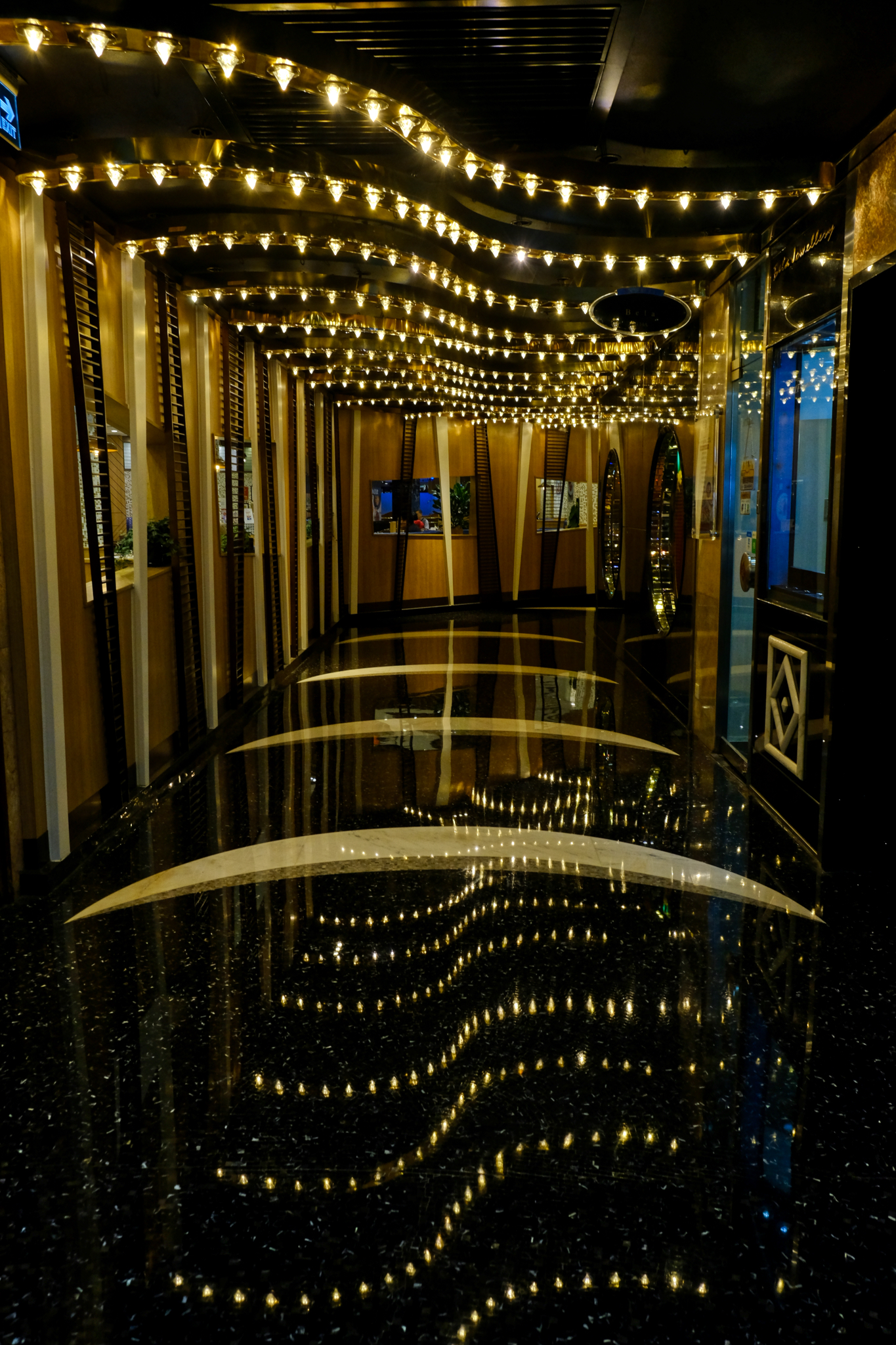 . . . and down this polished hall to the café. I had the French Dip.
. . . and down this polished hall to the café. I had the French Dip. Back out on the streets. Walking back to our hotel . . . .
Back out on the streets. Walking back to our hotel . . . .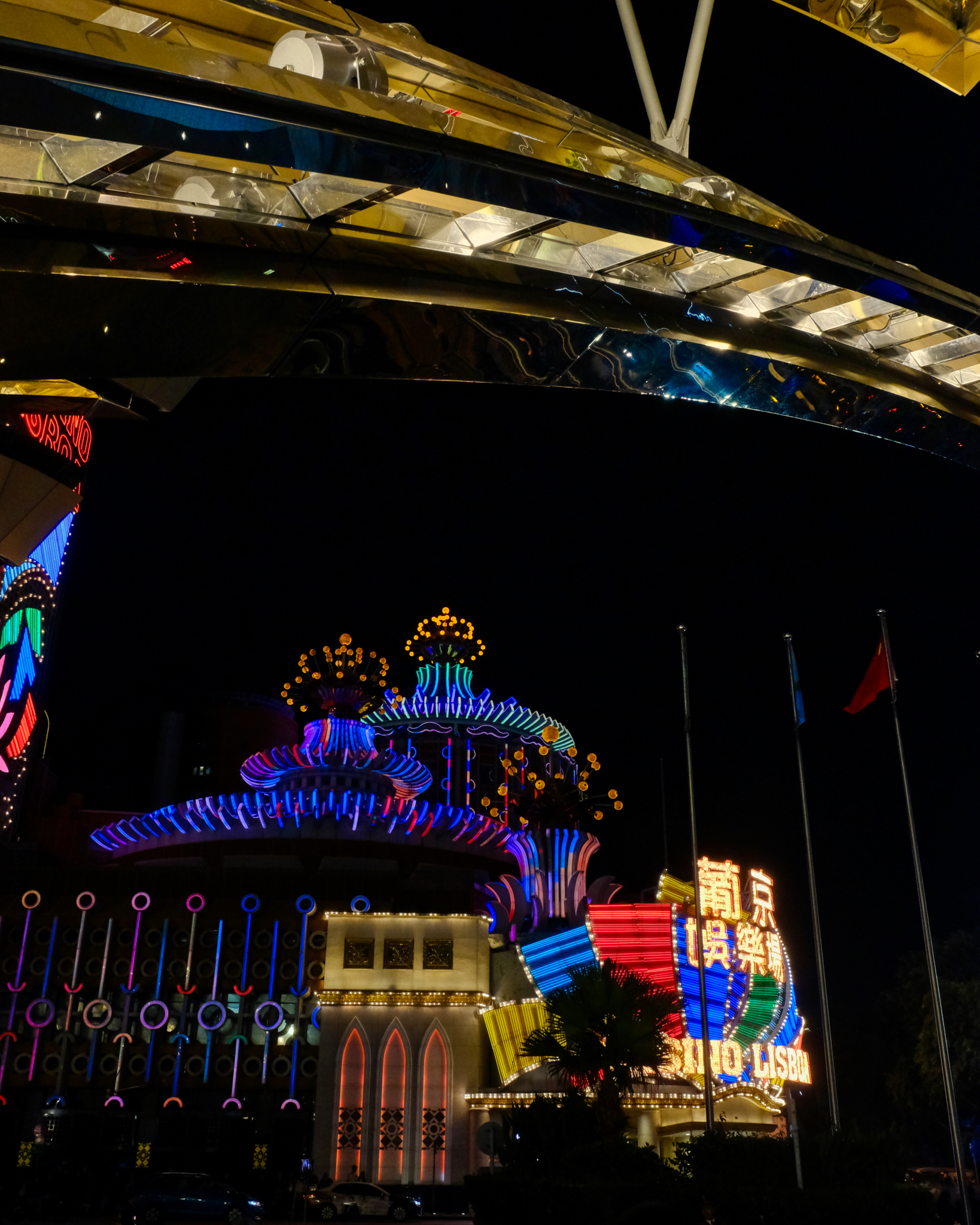 Otherworldly Glitz.
Otherworldly Glitz.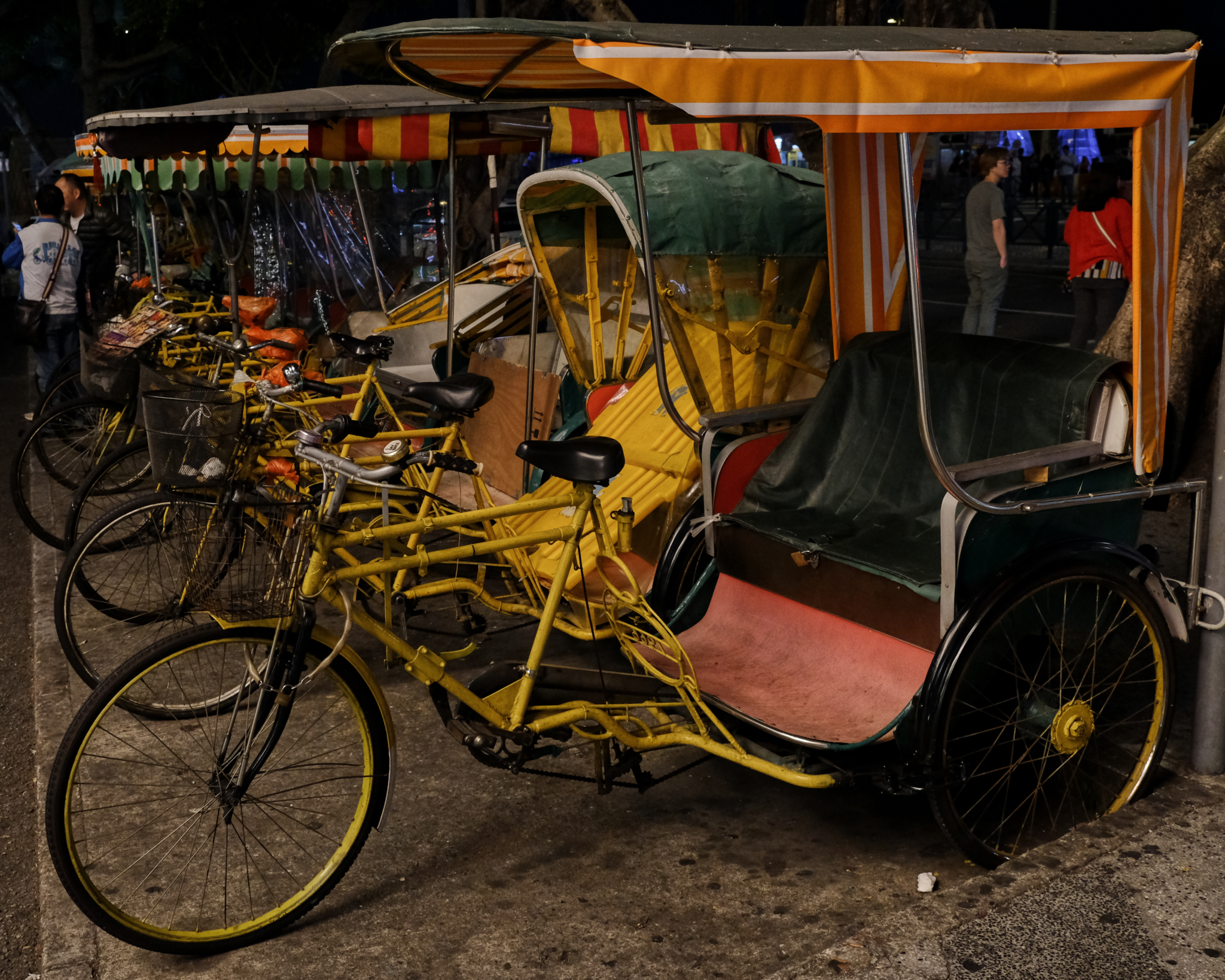 We were tempted . . .
We were tempted . . . 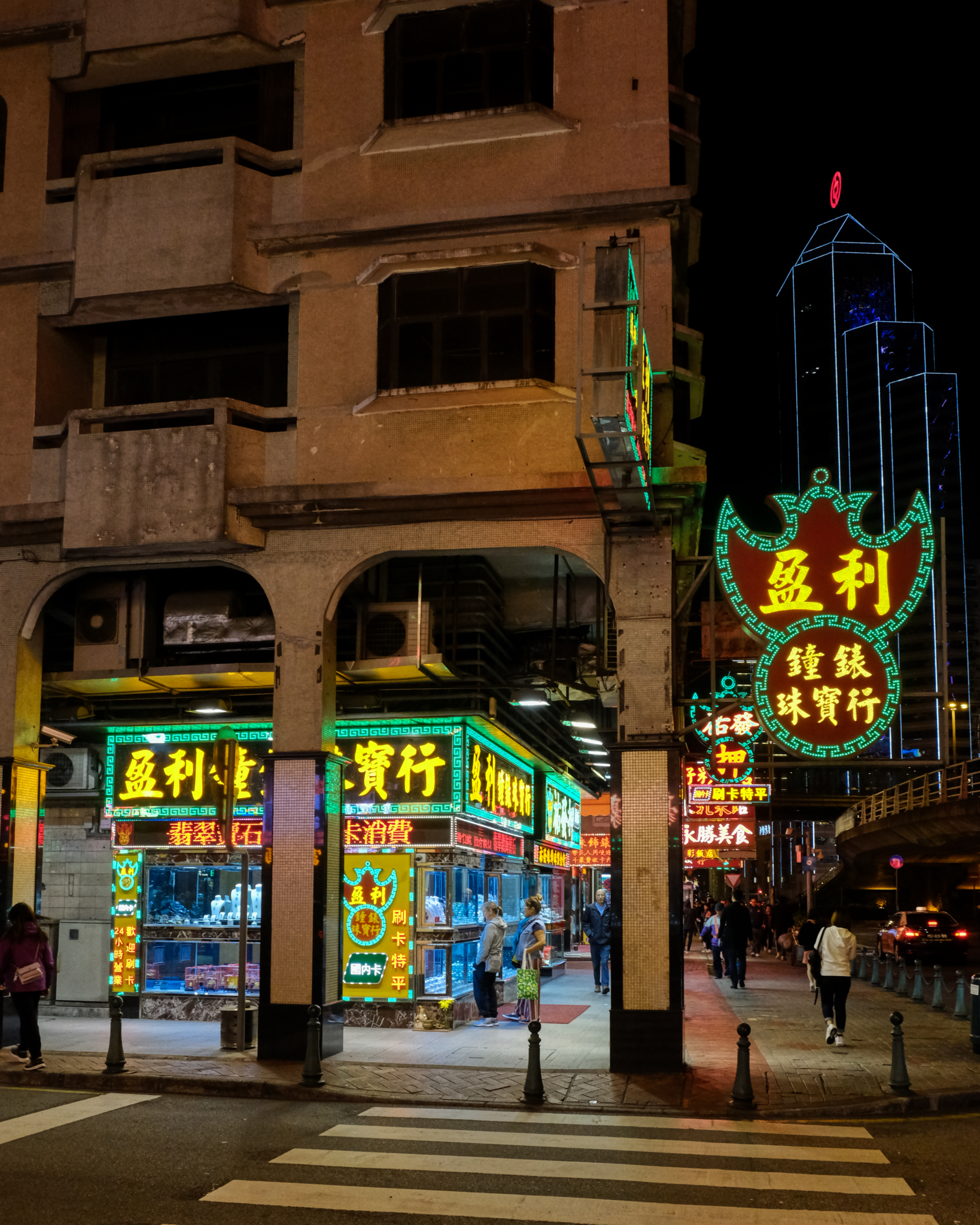 Our hotel was in an older area not far from the casino district.
Our hotel was in an older area not far from the casino district.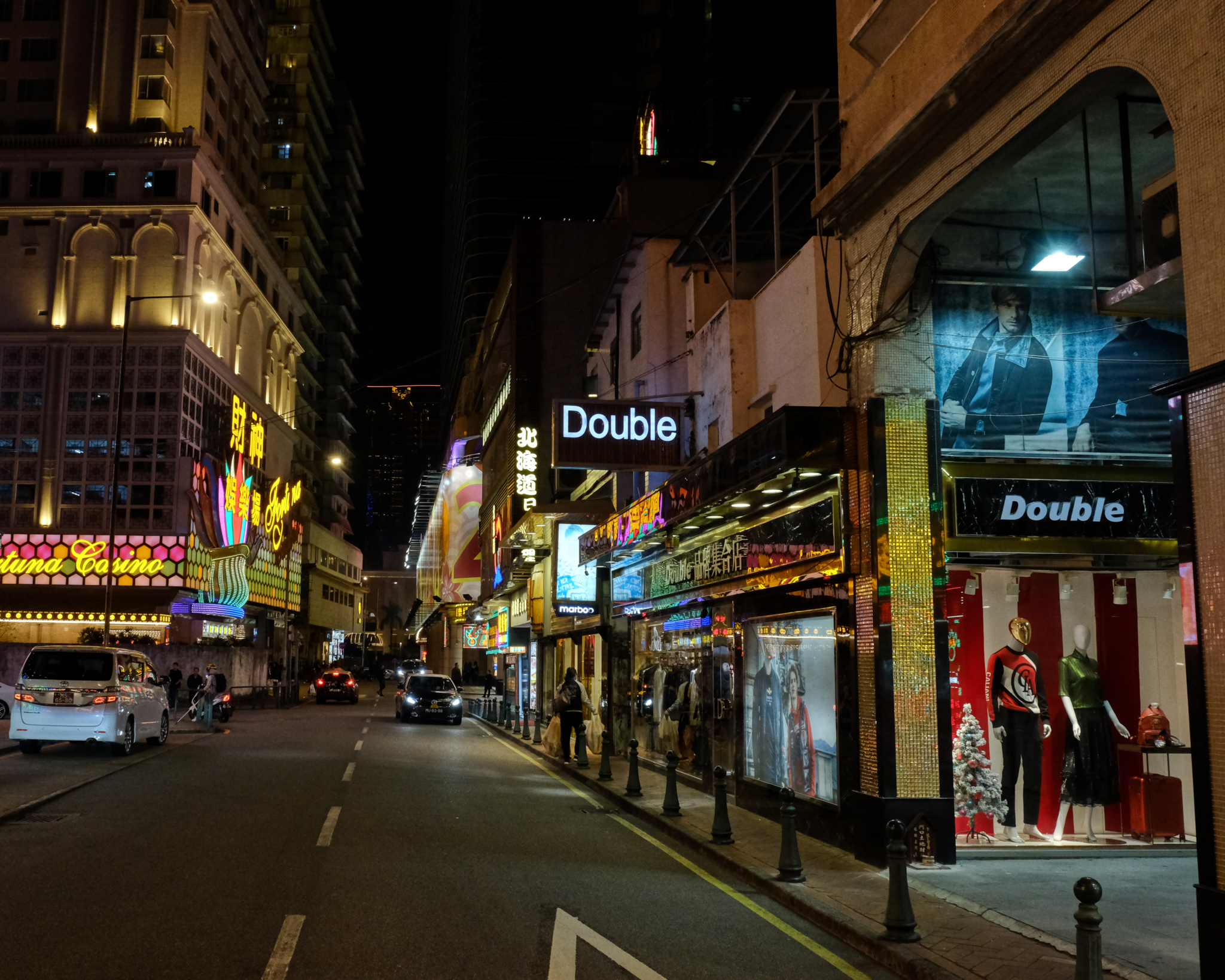 The shops around the casinos see to cater to the 'big spenders' and 'big winners' . . . .
The shops around the casinos see to cater to the 'big spenders' and 'big winners' . . . .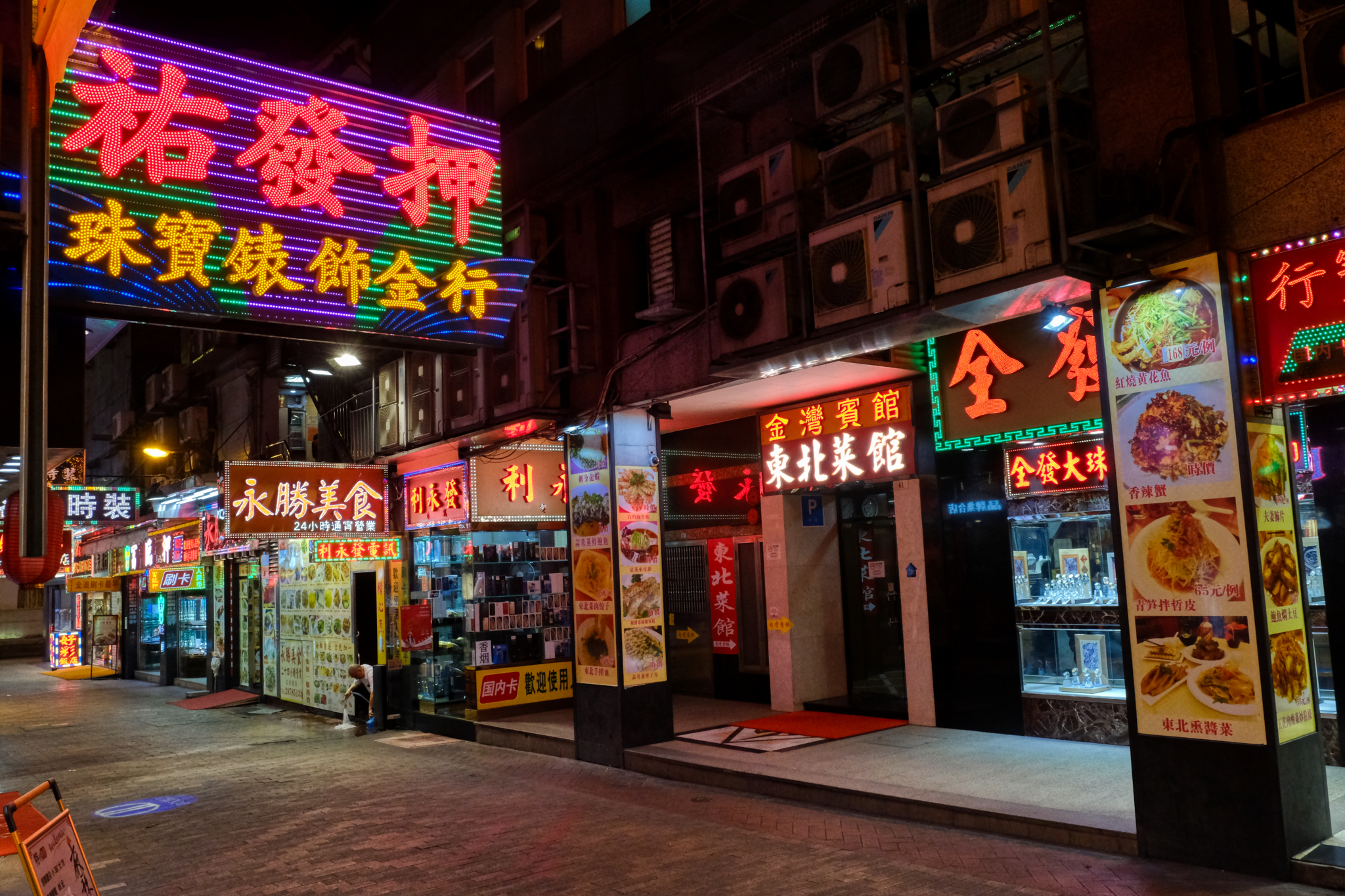 Our hotel was just around the corner. We had a wonderful four days in Maçau . . . just before the virus pretty much closed off any travel to China.
Our hotel was just around the corner. We had a wonderful four days in Maçau . . . just before the virus pretty much closed off any travel to China. Buddha,
Buddha,  China,
China,  Doors, Old,
Doors, Old,  Maçau
Maçau 